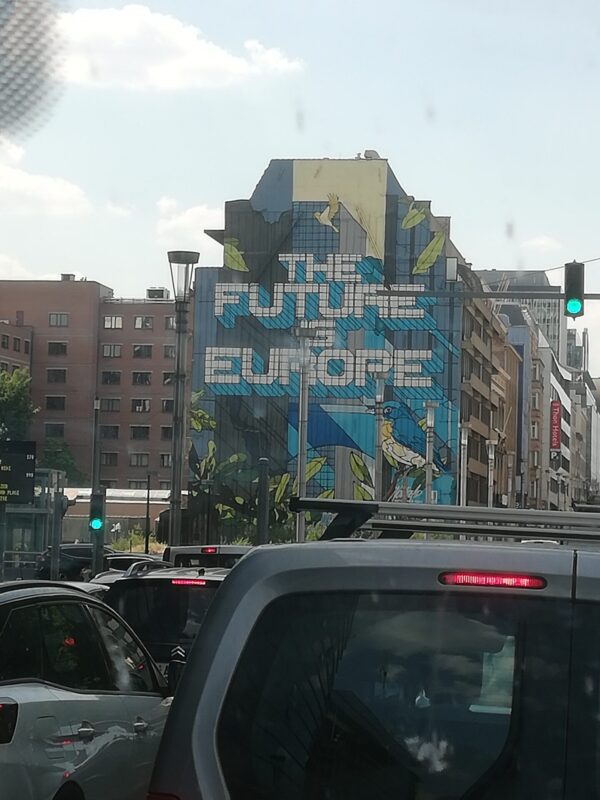Day 62 (1st May) Amman to Aqaba
A lazy day wandering along the seafront at Aqaba waiting for the ferry which leaves at 10 pm. We had a good meal at a Lebanese restaurant located next to McDonalds and appeared to be competing with it, but with Lebanese food. I also bought a new charger having left mine in Amer’s house and Jennifer bought a powerbank.
We were told that the ferry gate would close at 7 pm so we got to the terminal in good time at 6.30 and, after the bureaucratic stuff for leaving Jordan, sat down to wait. And we waited and waited and waited, with the ordeal only made bearable by Alex, a young man from Uzbekistan, who came to talk to us. We had a very pleasant and informative discussion. Eventually we were asked to queue up to board the ferry at about midnight and, having finally got on board, we waited and waited and waited. The ship finally left for the one-hour journey (with two return tickets costing an astronomical £246) and got into Nuweiba at 3 am.
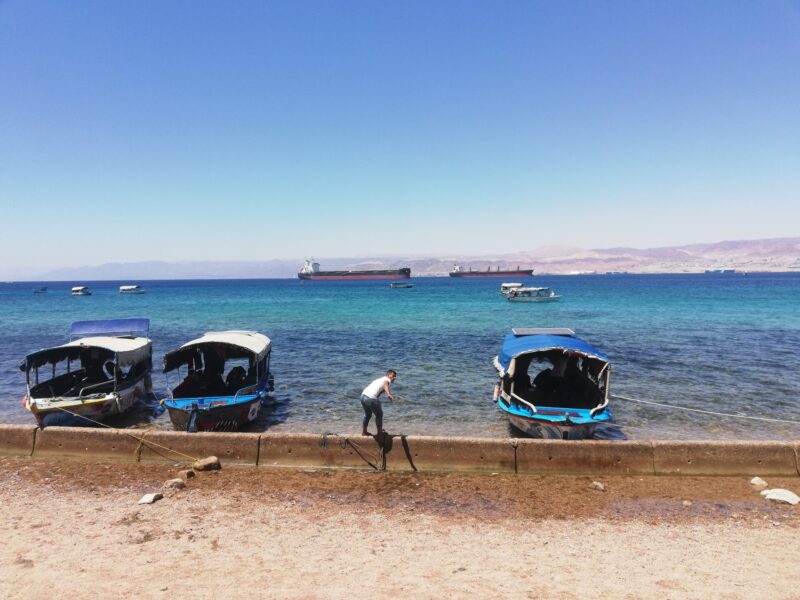
The Red Sea at Aqaba


This is how we will be travelling if the van doesn’t get fixed
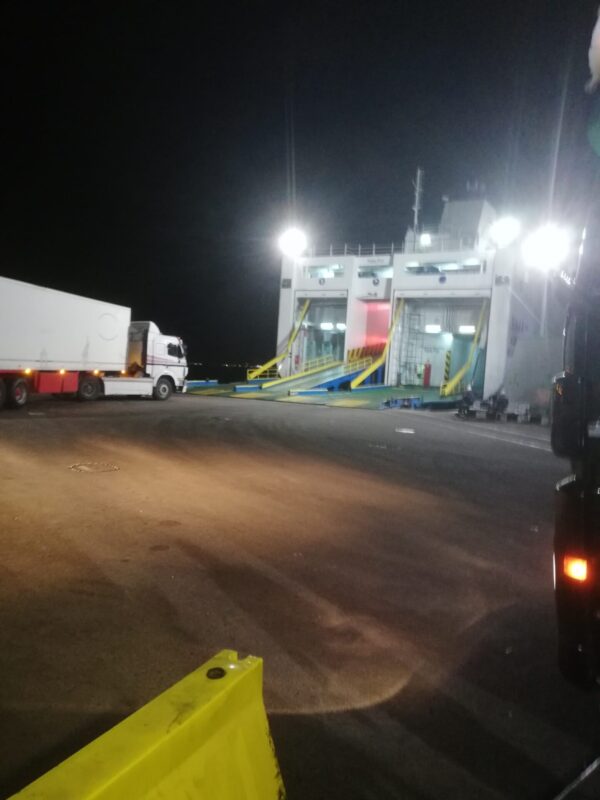
Loading the ferry
Day 63 (May 2nd) Nuweiba to Giza
On leaving the Nuweiba ferry terminal we (us, Alex and two Hungarian girls) were immediately surrounded by about a dozen taxi drivers all simultaneously telling us that there were no buses and their taxi was cheapest. Alex, an expert at bargaining, drove the price down from $120 to $100 for three of us after the Hungarians got their own taxi, and the driver drove the 335 miles to Cairo at breakneck speed. He chose the route through southern Sinai via St Catherine’s Monastery which we will see on the way back. There were lots of roadblocks and we had to drive in a convoy with other taxis and a police car due to suspected ISIS presence. The northern route is considered much more dangerous.
Eventually we reached Cairo and got the metro to Giza where a taxi driver took us to a nice hotel. We had a choice of a room with a view of the pyramids for $70 or one without for $45. We chose the latter
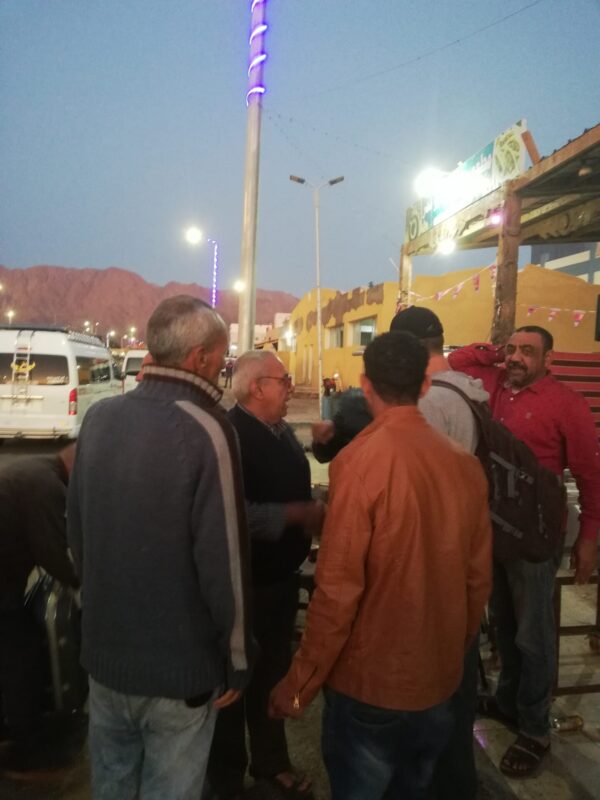
Taxi drivers accosting Alex
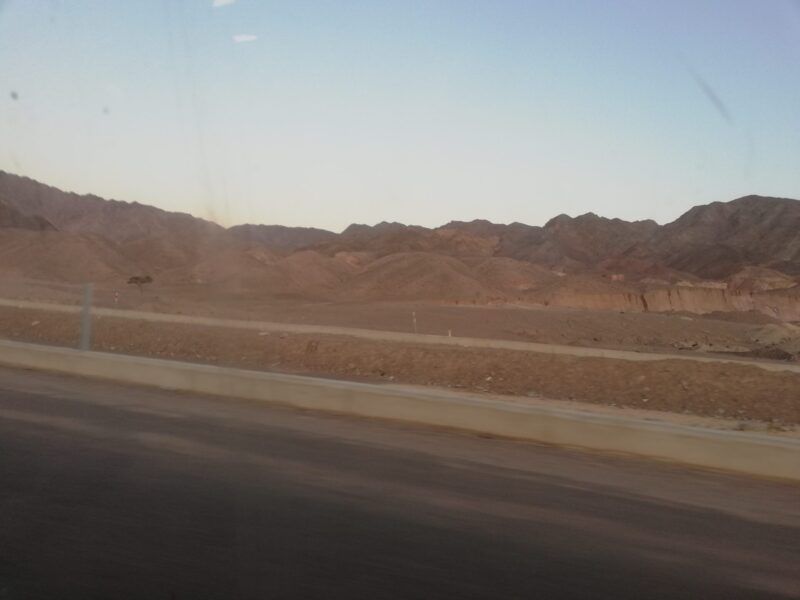
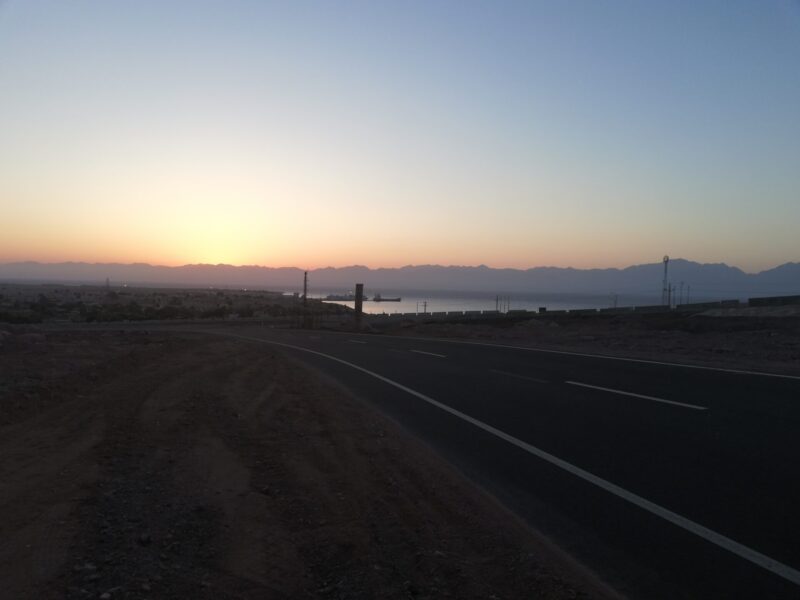
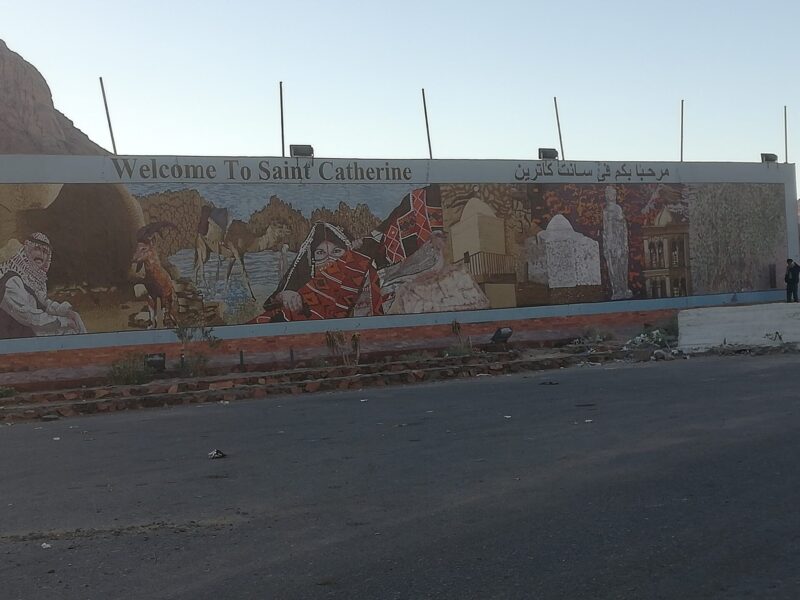
Entrance to St Catherine’s

Monument at St Catherine’s

St Catherine’s village
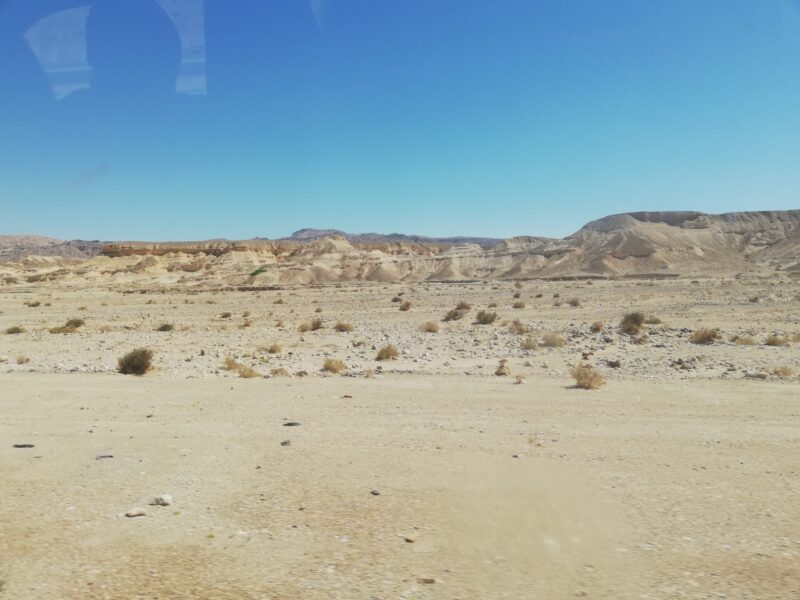
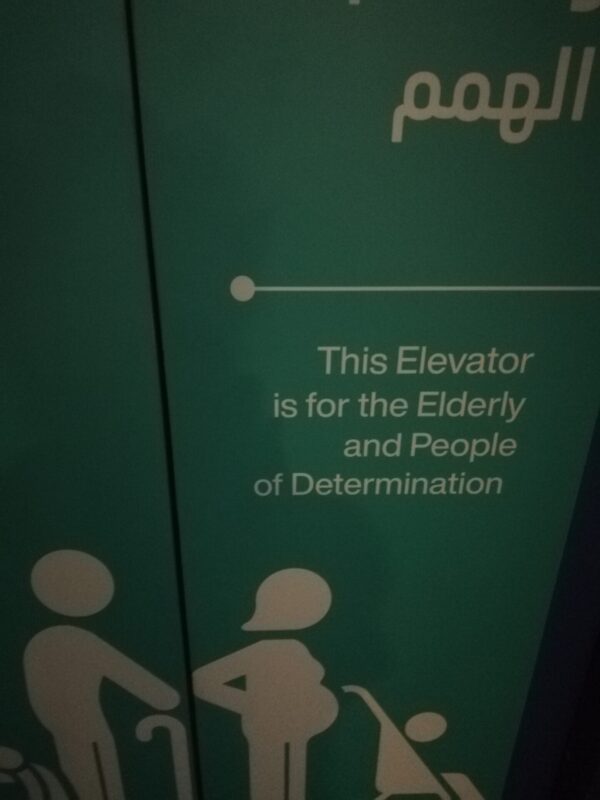
The lift at Cairo metro station. They knew we were coming.
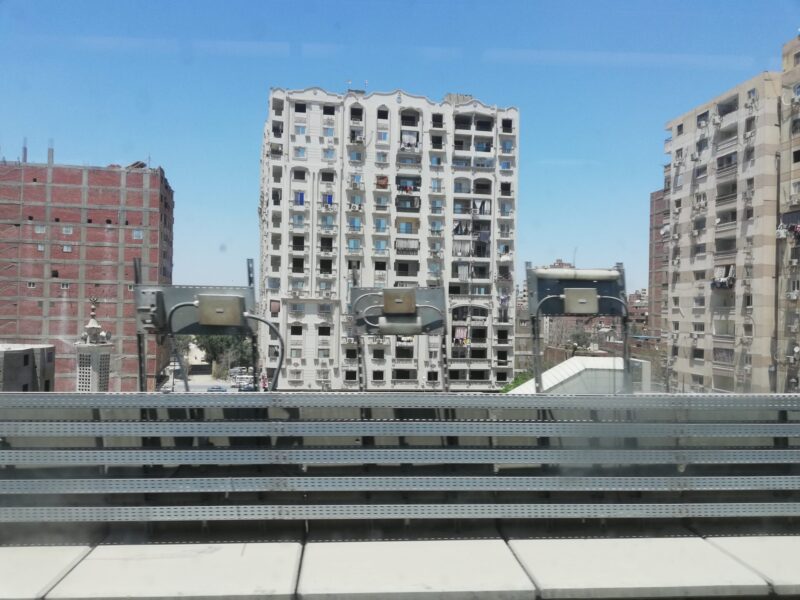
Giza city. Not a nice place
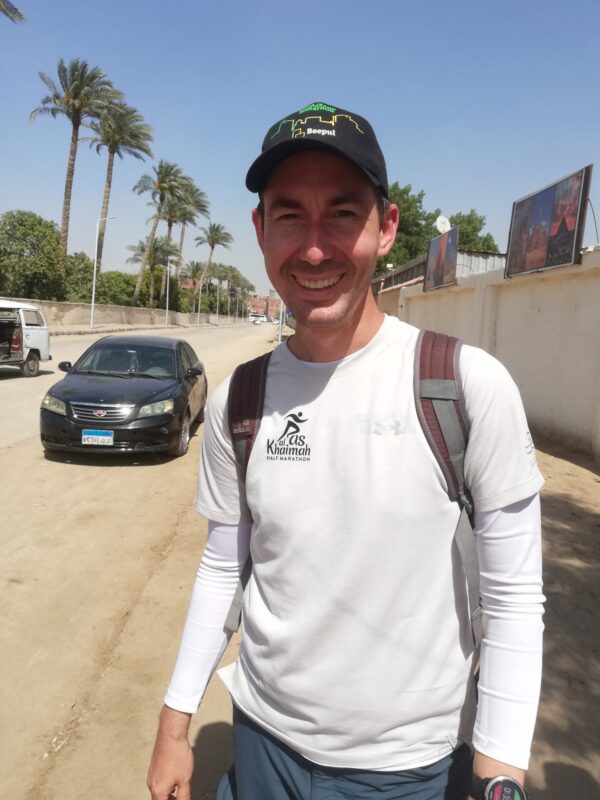
Alex
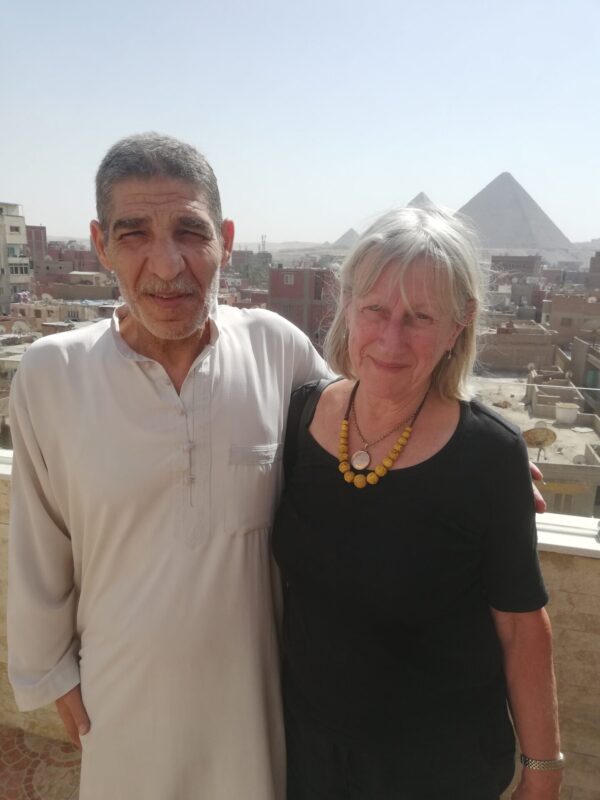
Moses (hotel manager)
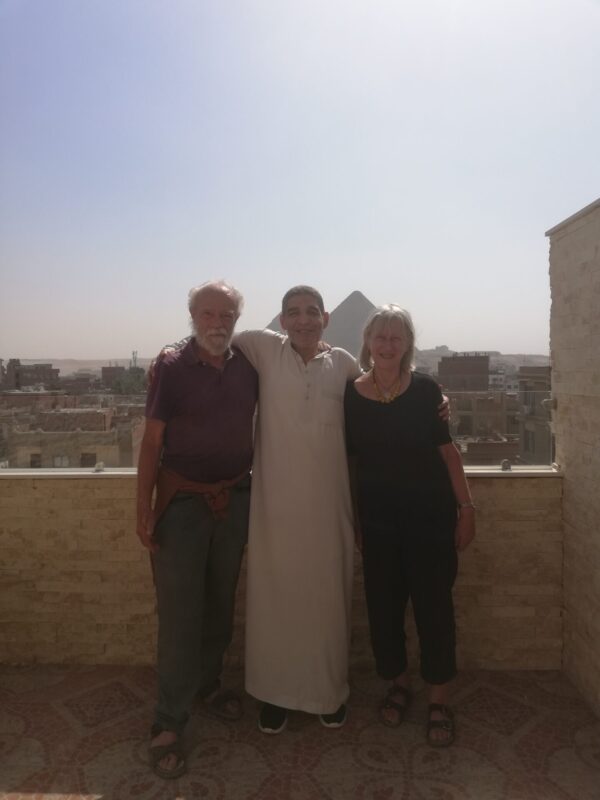
Day 64 (3rd May)
The $45 dollar room was very large and clean and the bed was comfortable. The manager, Moses, was very pleasant and friendly.
That was the upside. Giza is one big tourist money-sponge. At least we had a good hotel unlike poor sods who pay almost as much for a fleapit closer to the pyramids. The taxi driverwho took us from the metro station delivered us to his friend who runs a cheapskate tour agency who gave us the choice of a $25, $45 or $75 tour. We chose the $75 option which sounded good. It was crap: an excuse to supply money to other people. I don’t know just what the $75 was spent on and I can’t imagine what you got for $45 let alone $25.
A man with a ricketty old pony trap took us along the main road to the entrance gate and handed us over to another man with a slightly less ricketty pony trap who drove up a very bad road while rich persons who, somehow or other, had managed to get onto the site while everyone else had to walk, drove their cars up a good smooth road. By the time we got to the top we had been practically jolted out of our skins. We were ordered out and accosted by a large man who wanted to take trick pictures of us holding a pyramid on our finger tips or kissing the sphinx. These are the things the selfie-stick halfwits do, so everyone else is supposed to. We refused. It is insulting to Egypt and to the people who built the pyramids. Many years, many tens of thousands of workers (contrary to popular belief they weren’t slaves) and enormous shed-loads of science and ingenuity were required to build the pyramid and the idea that Billy Bogbrain from Blogsbridge can lift it on his finger seems obscene to me. Or perhap I’m just being anal. Rant over. Then he wanted to take a picture of us standing next to a camel. Then he wanted a lot of money so I told him to go away (I think that’s what it means) and there was a scene. The pony trap man responded by driving us round the pyramids as fast as he could and then took us back to the gate after we had enjoyed a few quiet moments to ourselves looking at the sphinx. He demanded a tip for doing his job so, for a laugh, I asked him how much. $50, $40, $30 he suggested. I gave him 3. When we met with the first pony trap he ranted about getting only $3 for all his hard work and didn’t seem to think that the bloke who had trousered $75 for sweet FA should give him some. The second driver had the decency to take us back to the hotel so I gave him $5.
We had an evening meal of different types of kebab and went to bed.
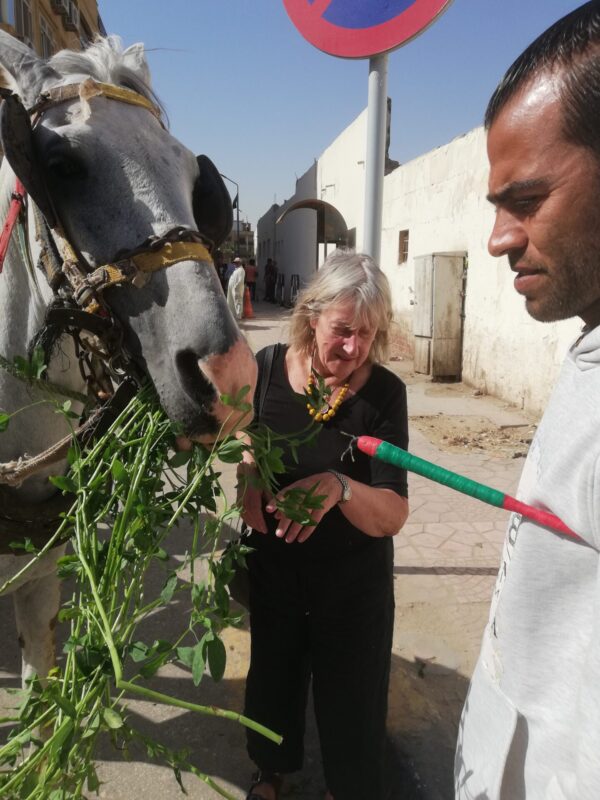
Jennifer feeding donkey with the best person we met during the day.
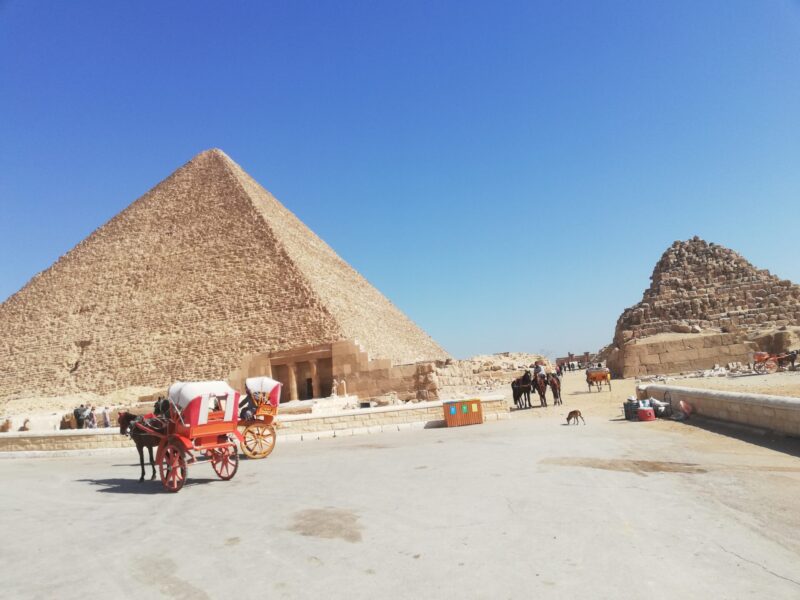
The Cheops (Kufu) pyramid.
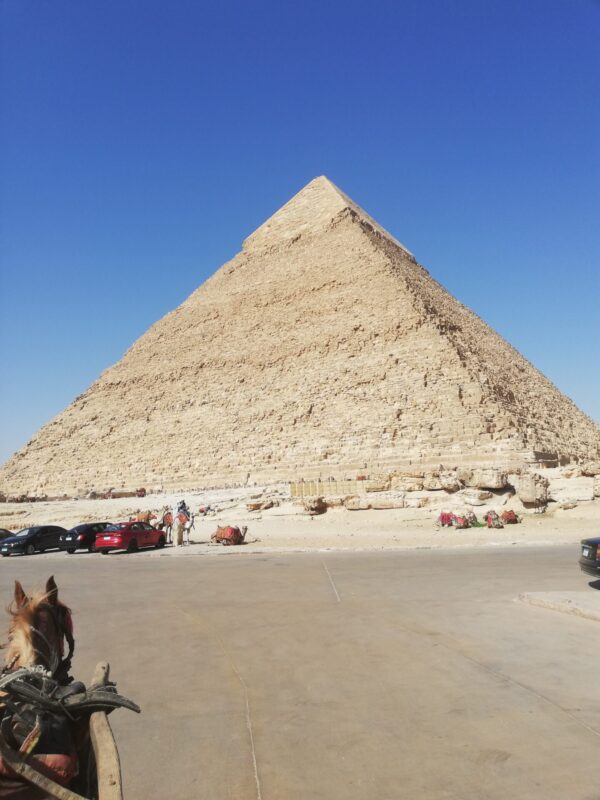
Pyramid of Khafre
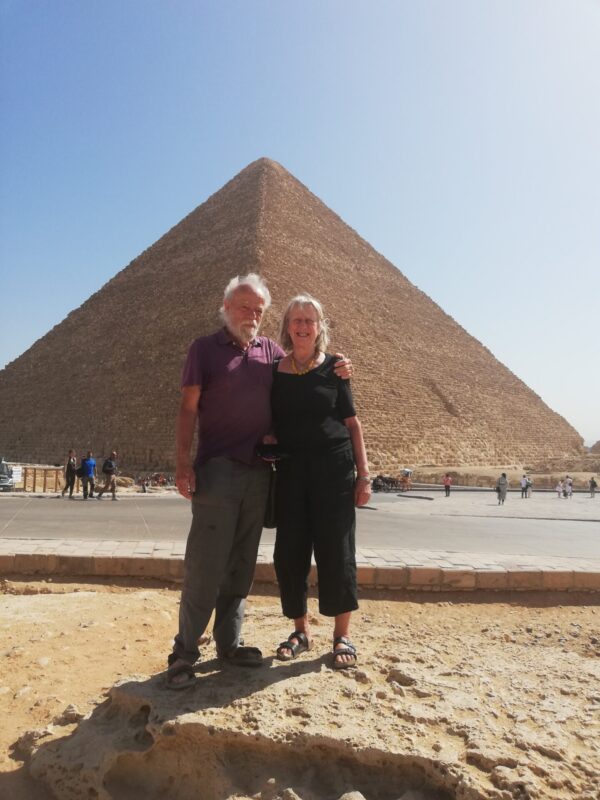
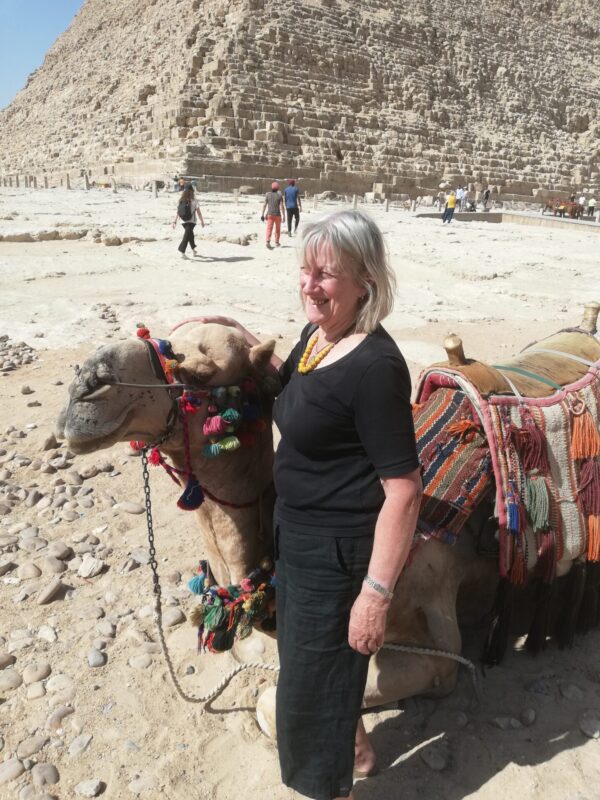
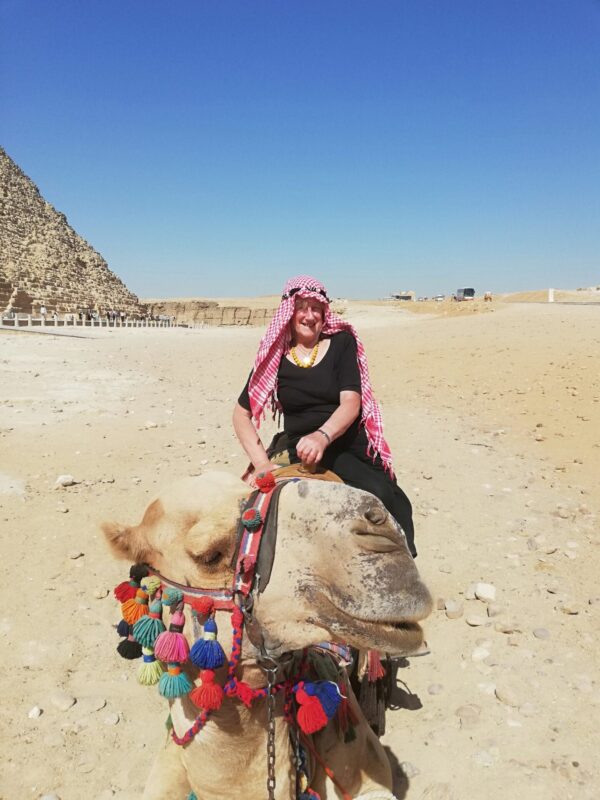
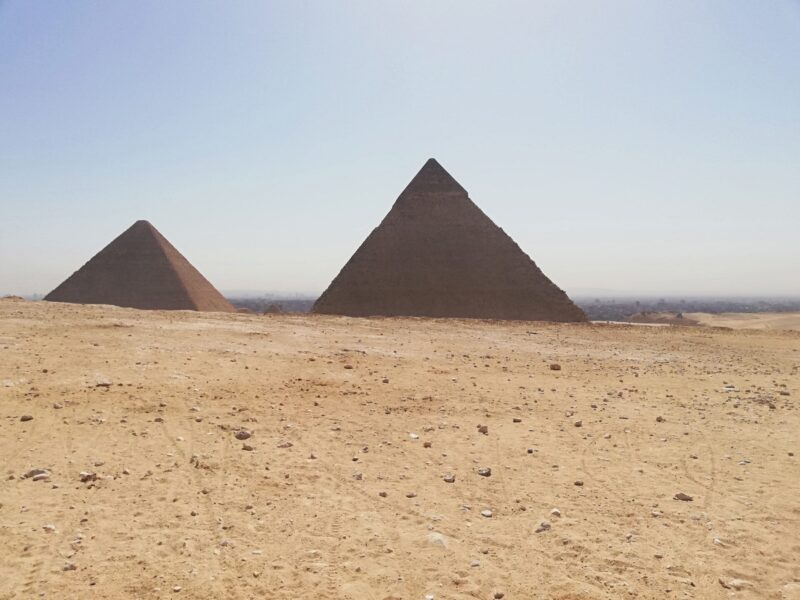
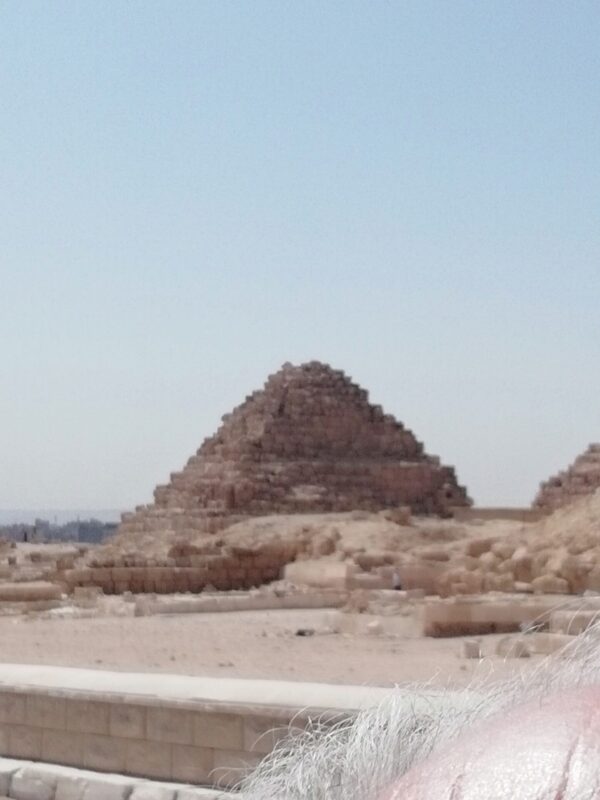
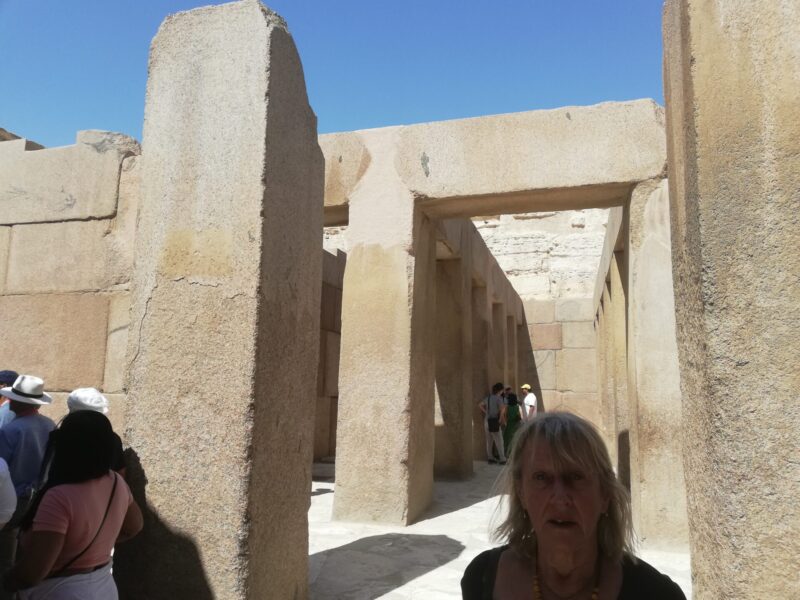
The complex of tombs leading to the sphinx
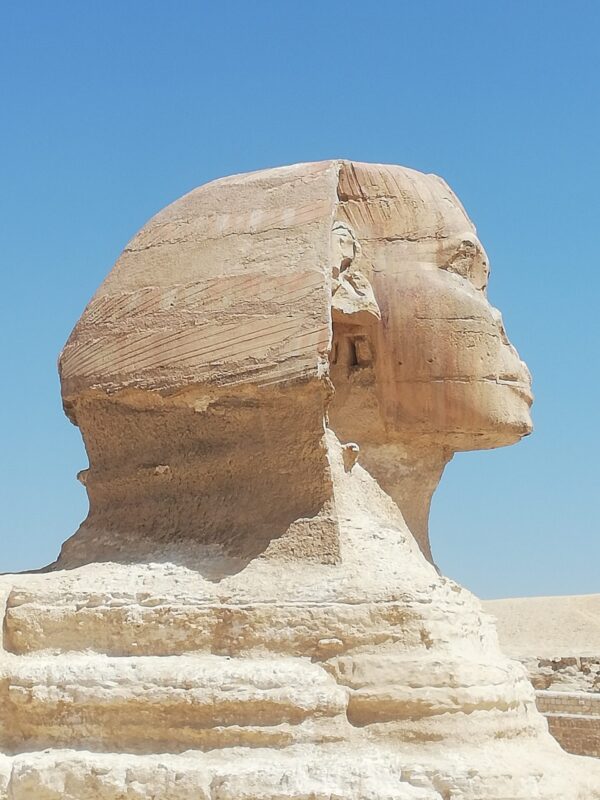
Minnie the Sphinx
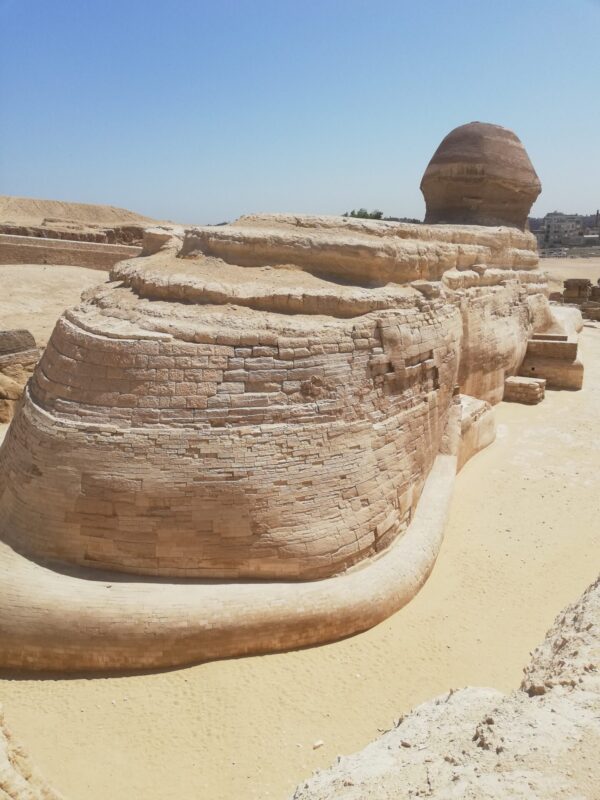
The sphinx’s bum
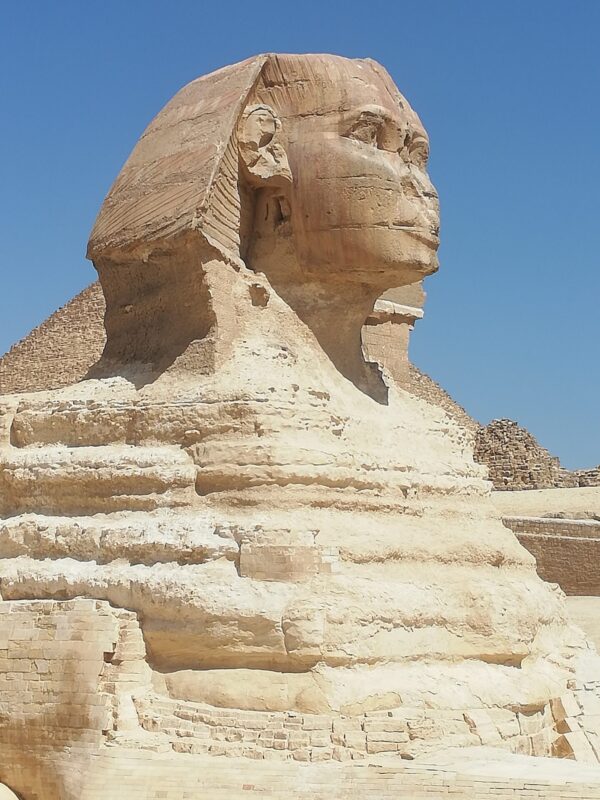
The highlight of the day
Day 65 (4th May) Saqqara, Memphis and Cairo
Moses suggested that his nephew, Hani, should take us on a trip to Saqqara, Memphis, and the Egyptian Museum in Cairo. Moses came with us; this was his first visit to these cities for 12 years. Memphis was one of the two capitals of Egypt during the Old Kingdom and Saqqara was its graveyard. We went to see the pyramid which is the oldest of Egypt’s pyramids and it is surrounded by a huge number of tombs which are still being explored. From the top of a hill we could see the Red and White pyramids far away in the desert. This is much more interesting than the Giza pyramids and much quieter because only intrepid travellers go there. Not a selfie-stick in sight.
We then went to Memphis and saw the massive statue of Rameses II lying on his back. By this time the temperature was almost 40 degrees and we were already knackered. Hani then drove us to the Egyptian Museum and, because there is no parking, he and Moses left us for two hours while we wandered round the museum. Unless you’re an Egyptologist, two hours is enough because eventually you get mummied-out. The centrepiece is the face mask of Tutankhamun but many other face masks and sarcophogae are just as beautiful. There is a limit to how much beauty the human brain can absorb at one time and this is one of them.
Then we went for a cruise on the Nile on a fallucca to the point where the Nile meets the White Sea (the Med) and stopped at a riverside cafe where a freshly-caught fish had been beautifully cooked. A lovely experience.
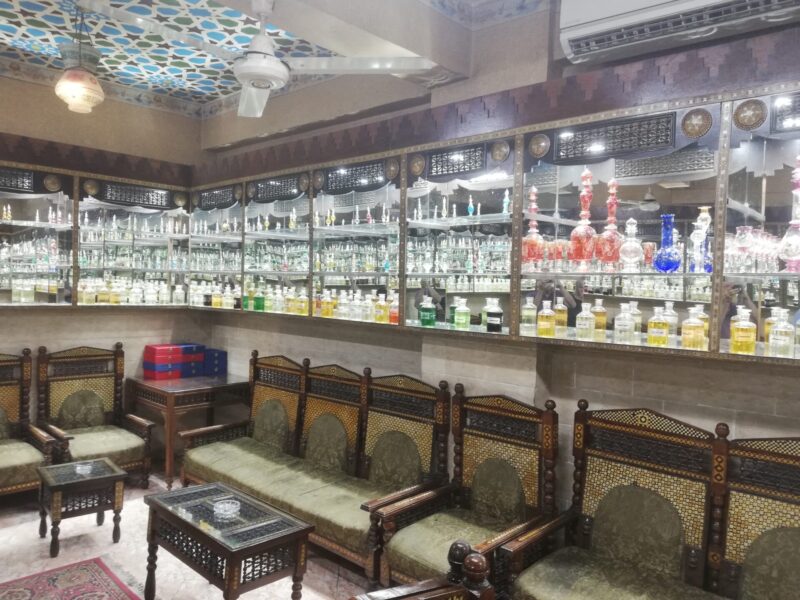
Previous night’s visit to a scent store

Pyramid light show
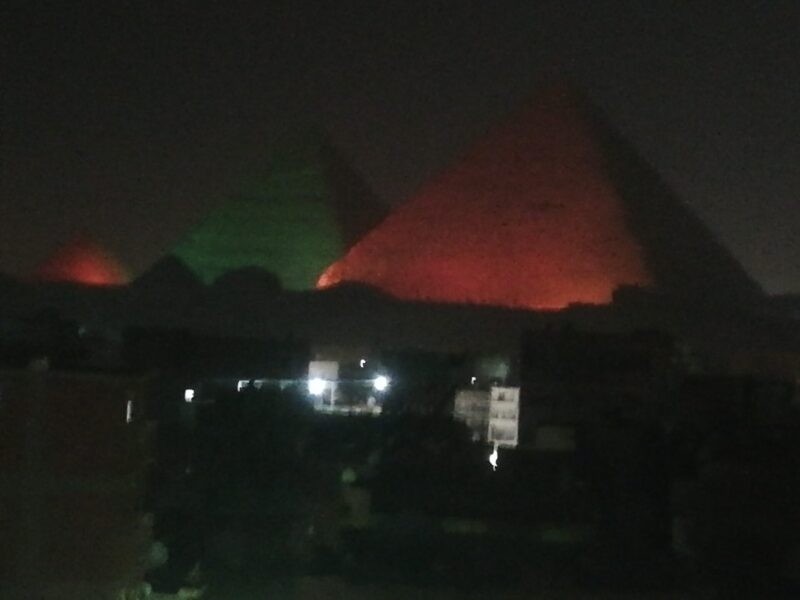
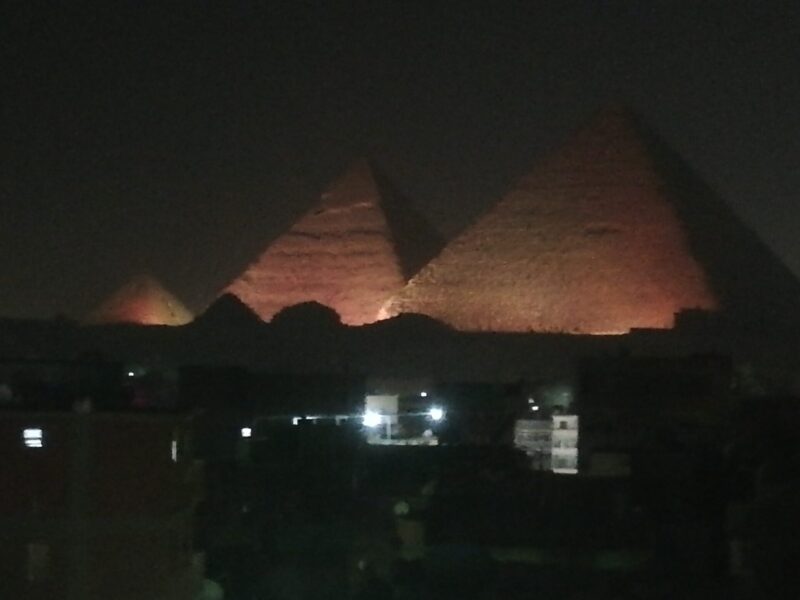

Dog wanting a lift
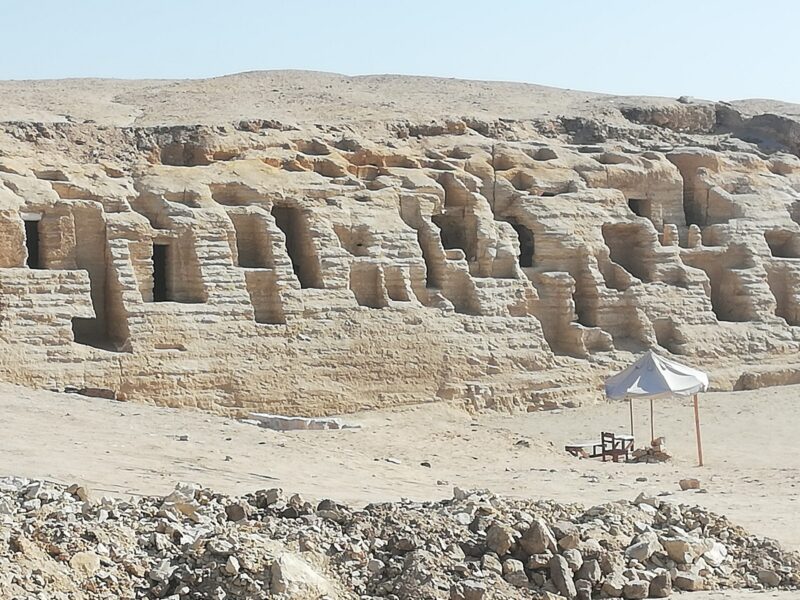
Saqqara tombs

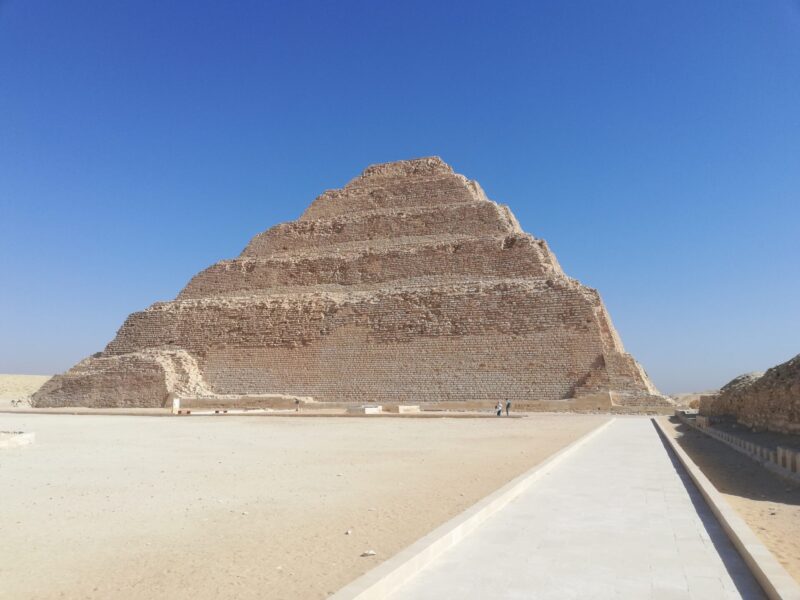
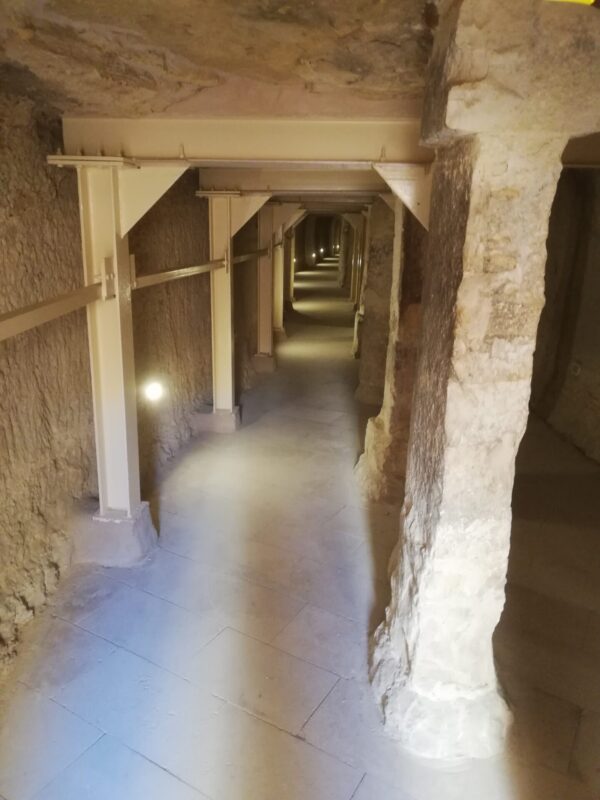
Tomb in the Saqqara pyramid

Red and white pyramids on the skyline
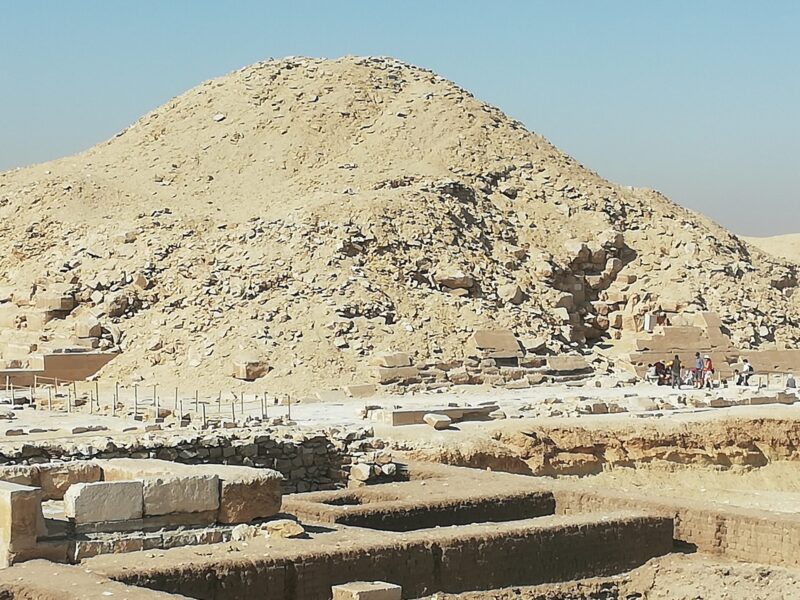
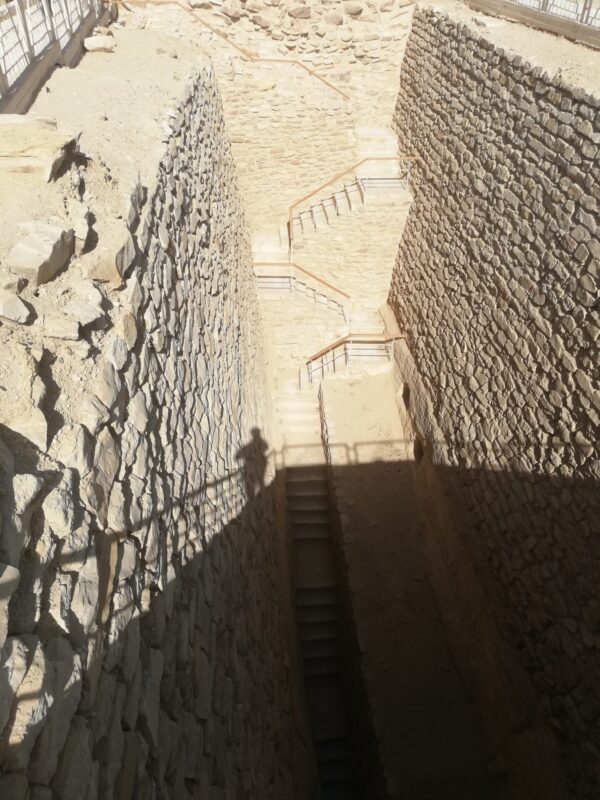
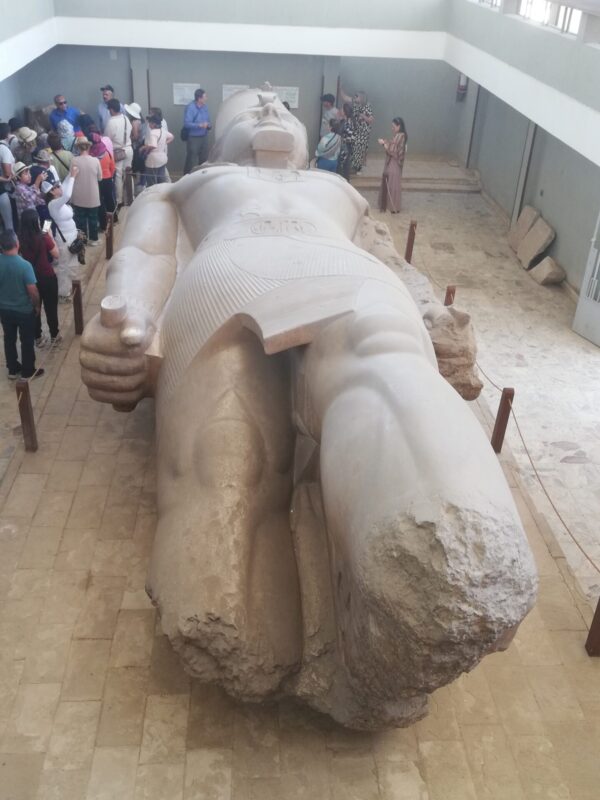
Rameses II at Memphis
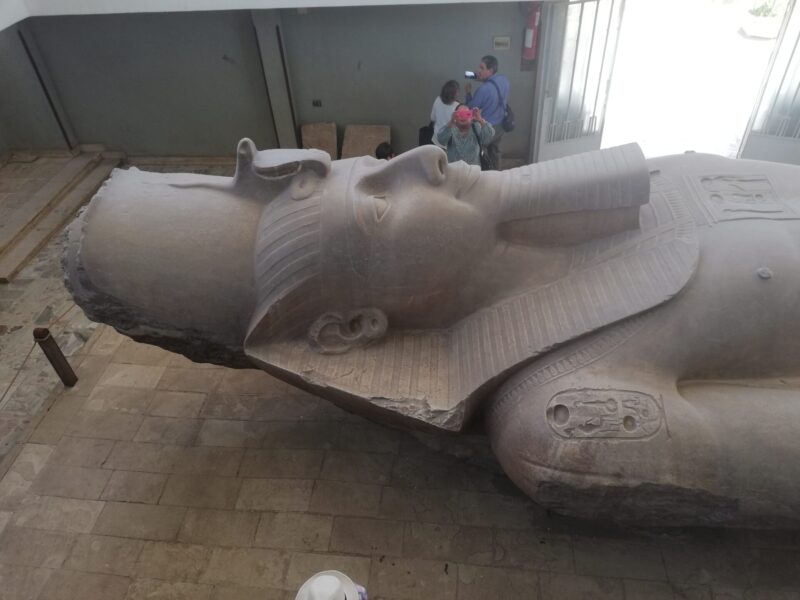

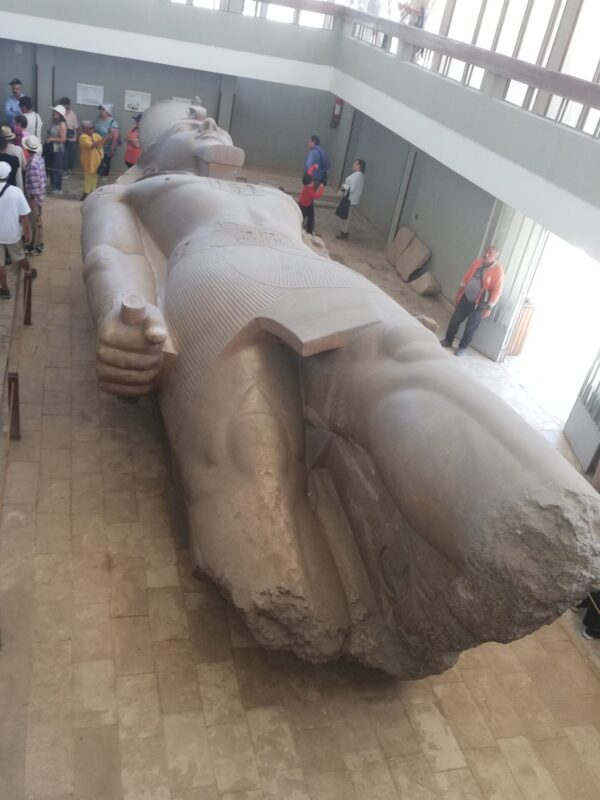
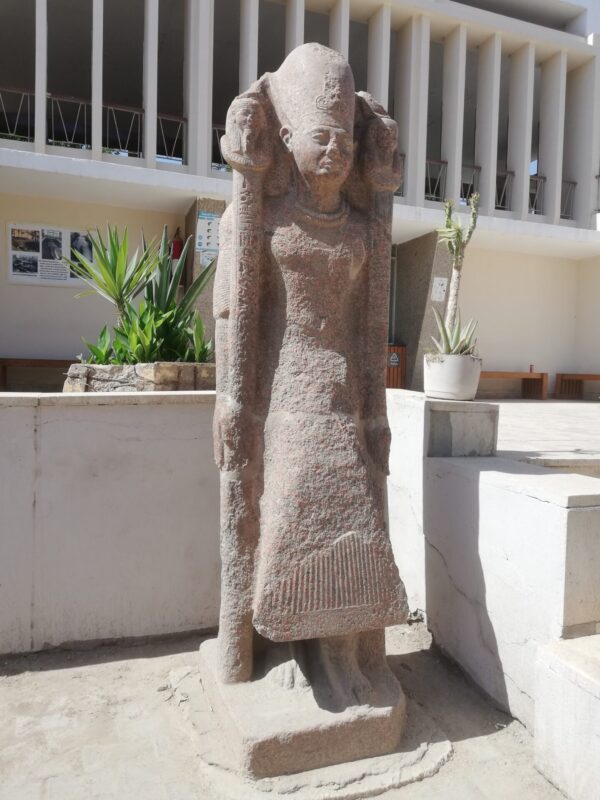
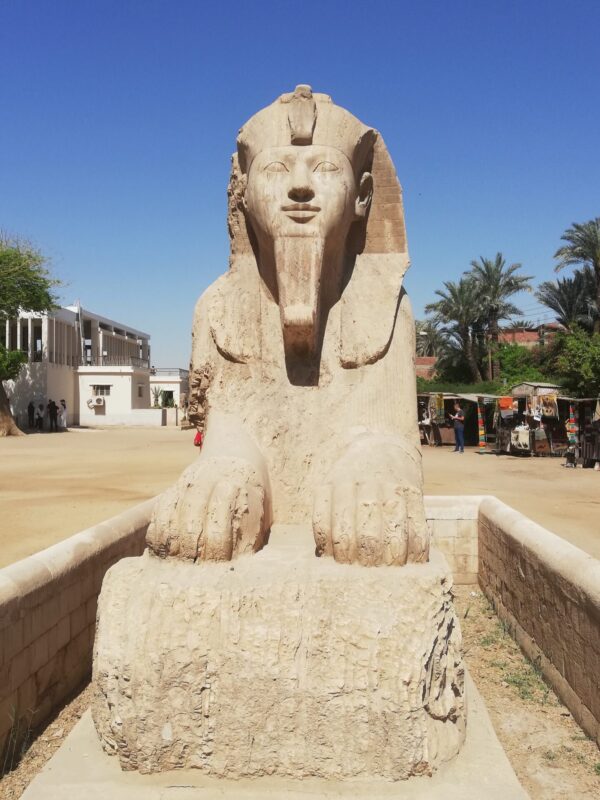
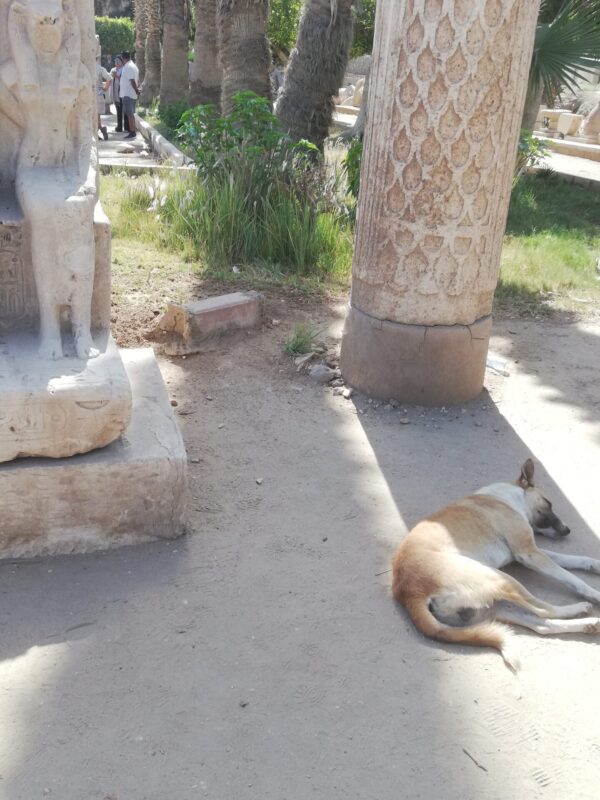
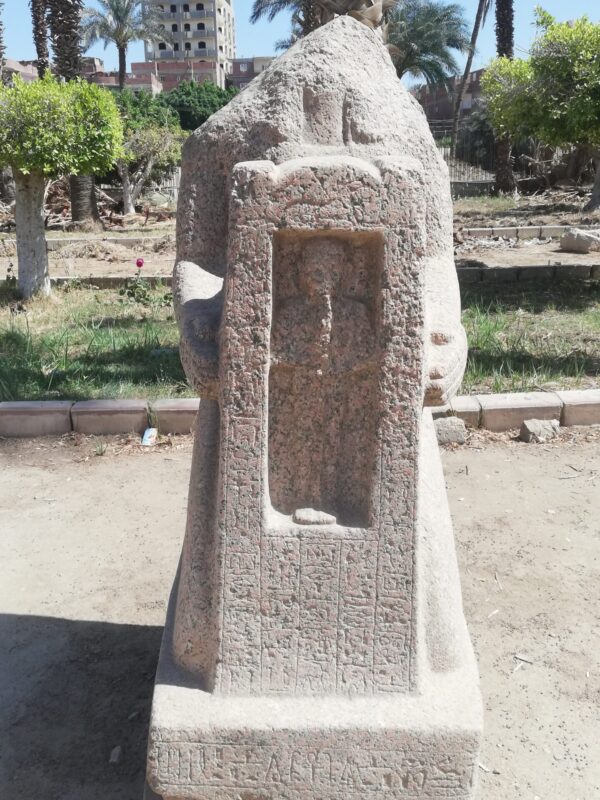
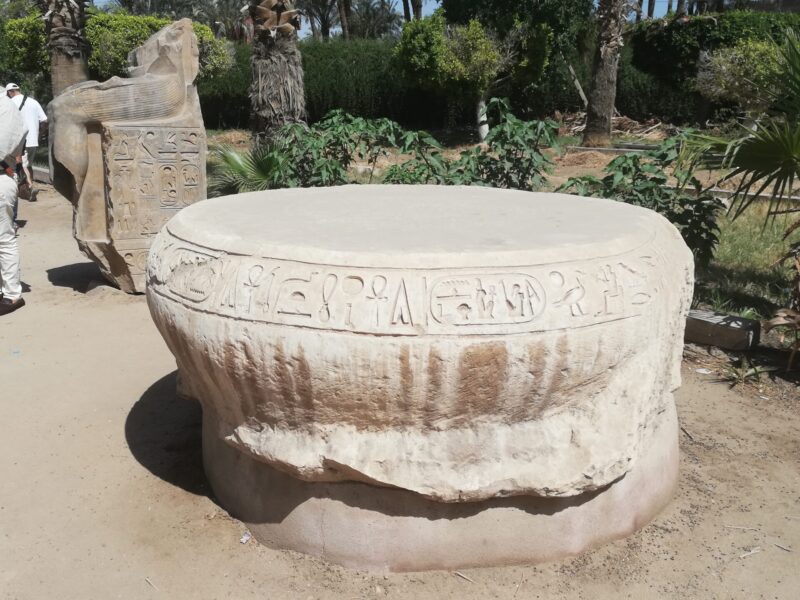
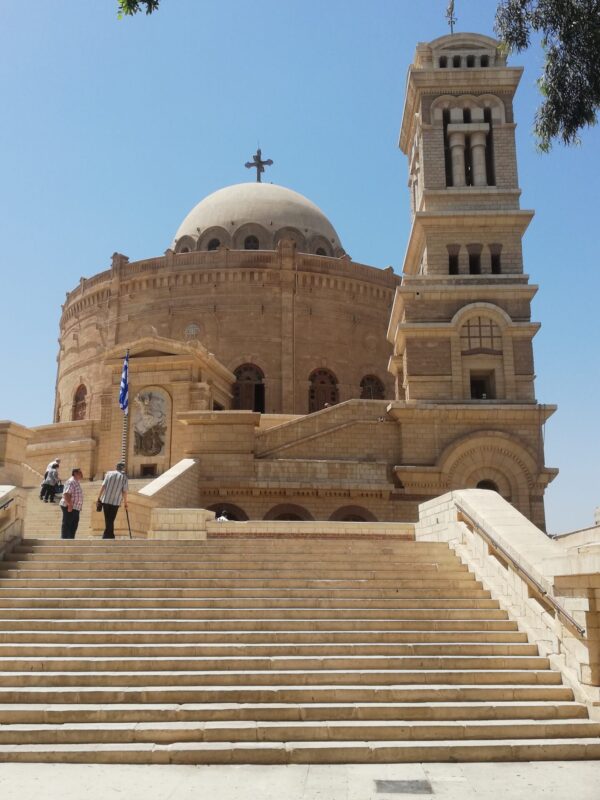
The Hanging Church, built in the 3rd century AD on top of the ruins of the Babylon Fortress.
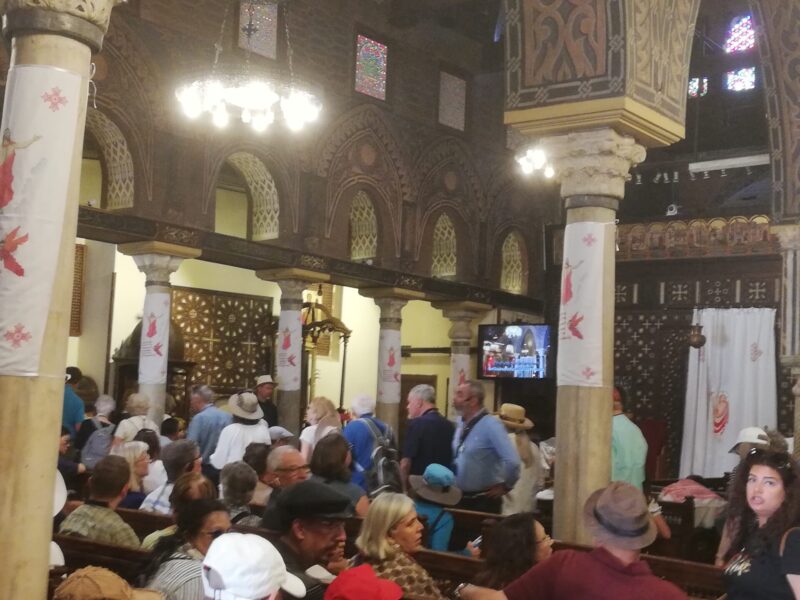
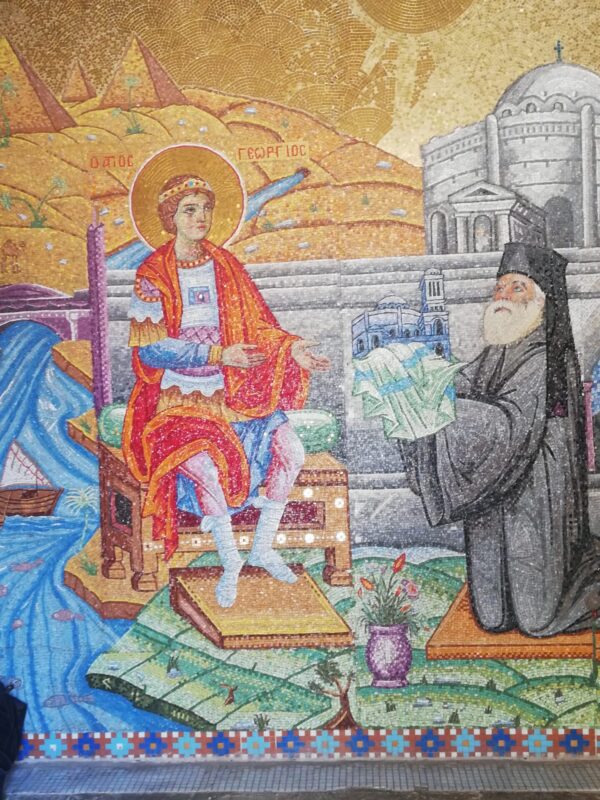

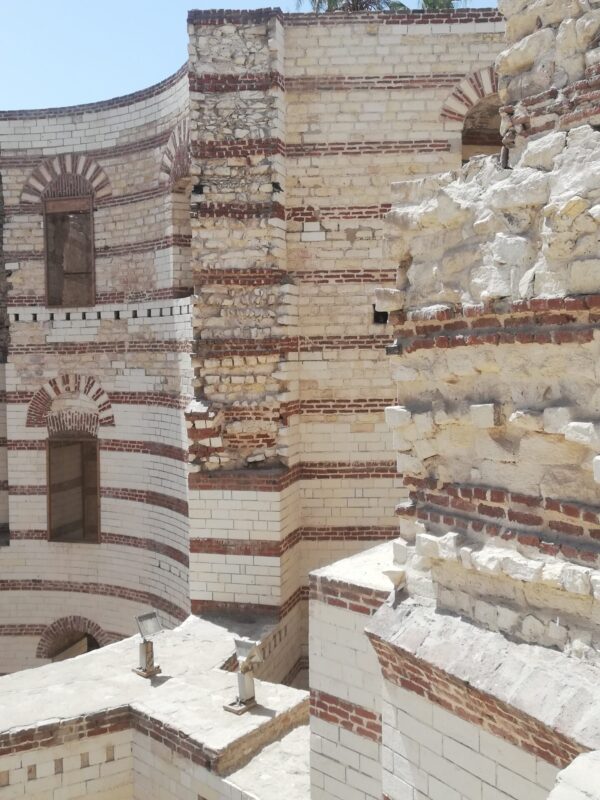
Roman fortress in Cairo
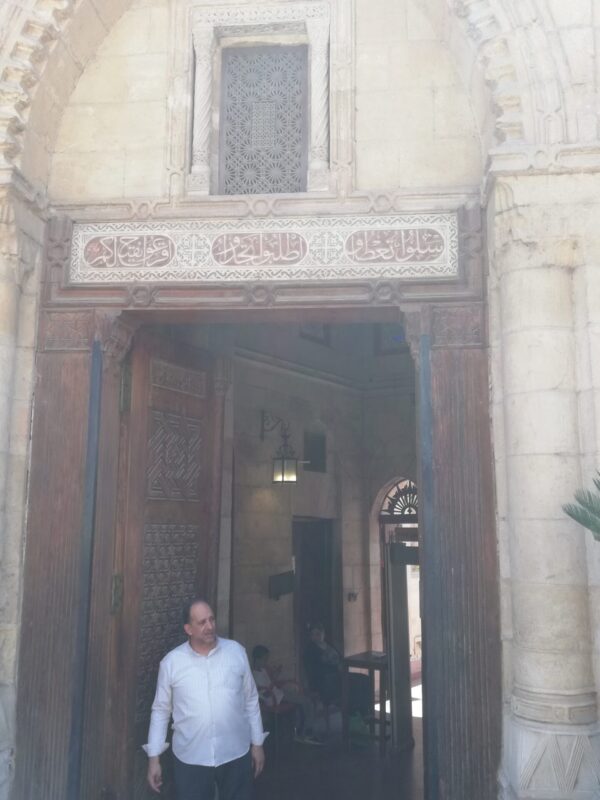
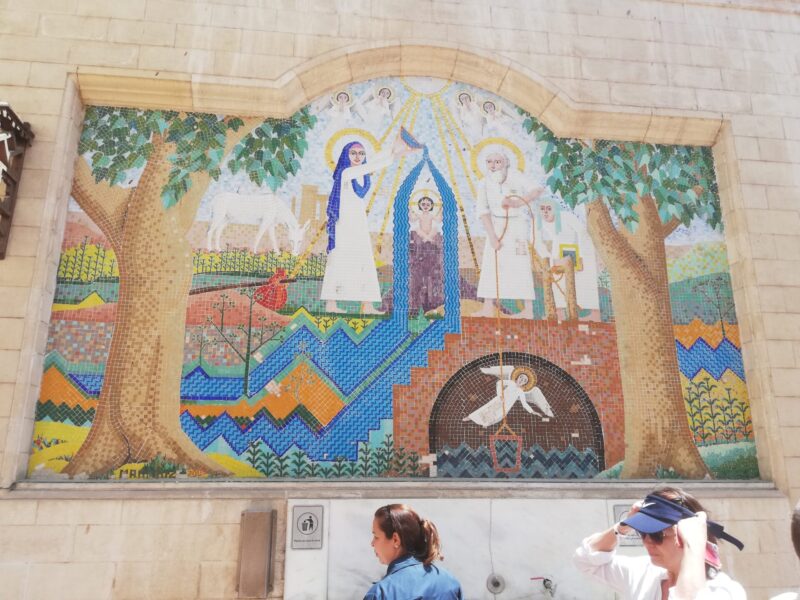
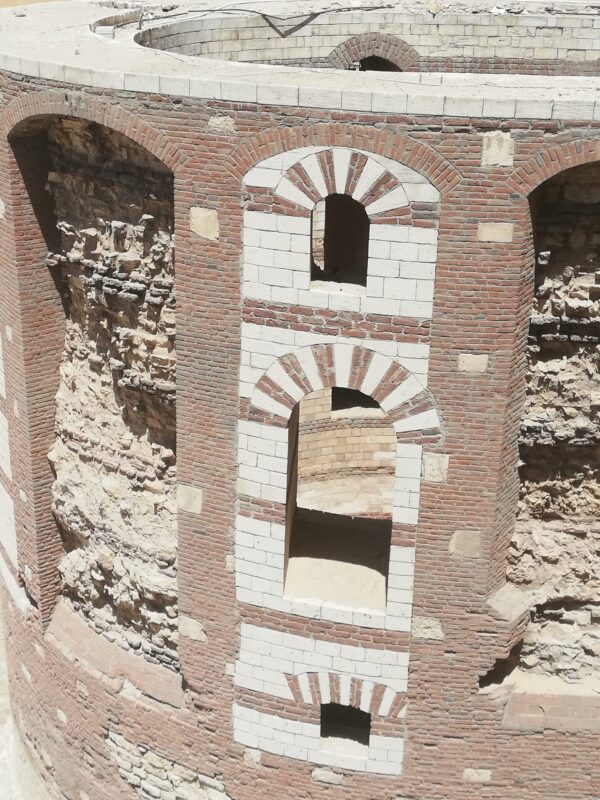
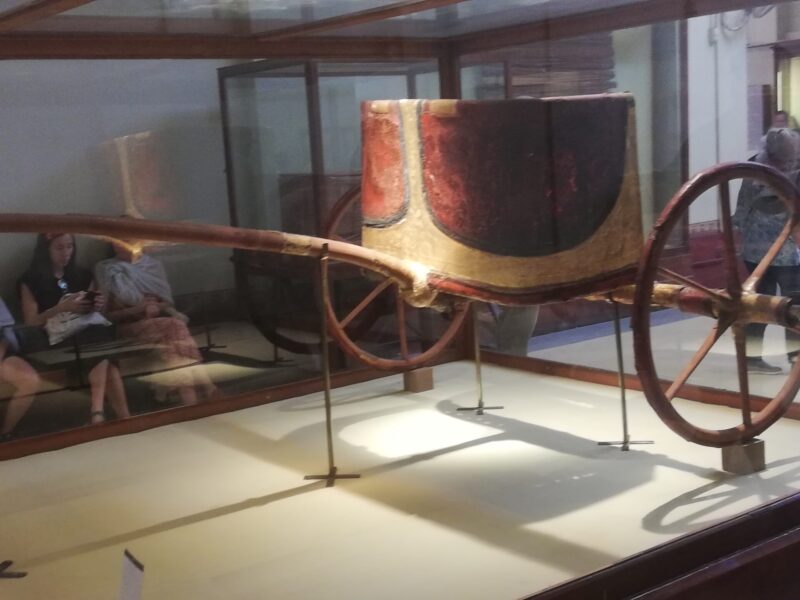
Egyptian Museum
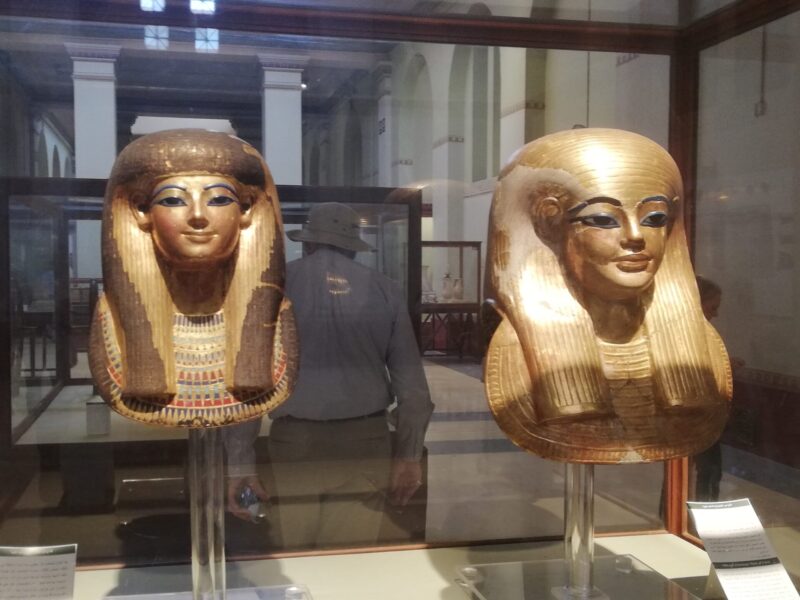
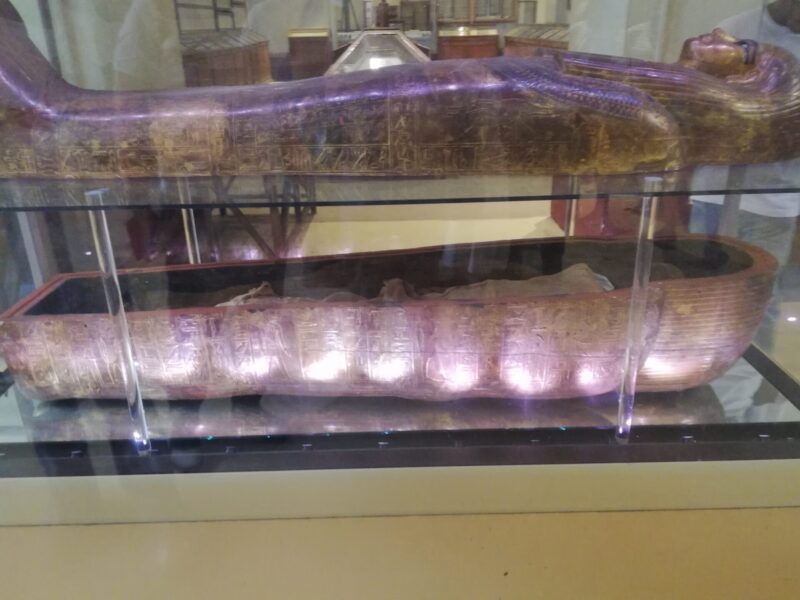
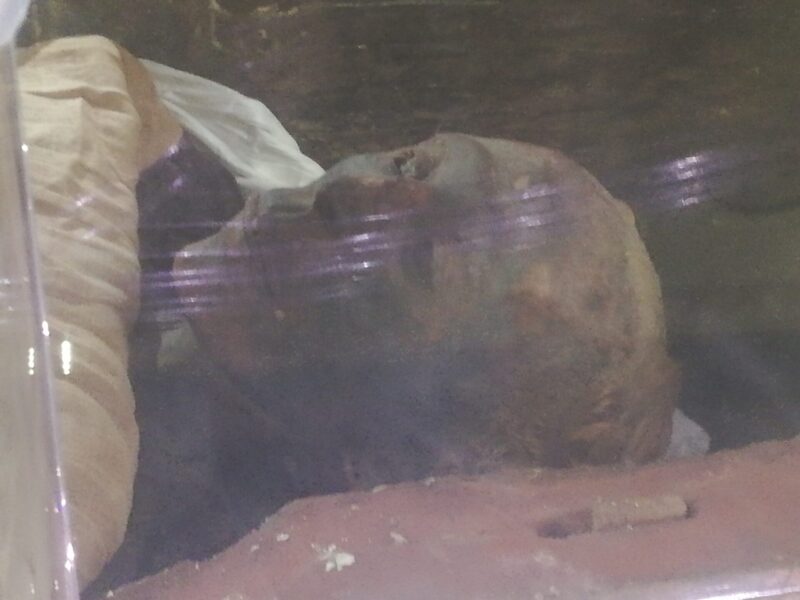
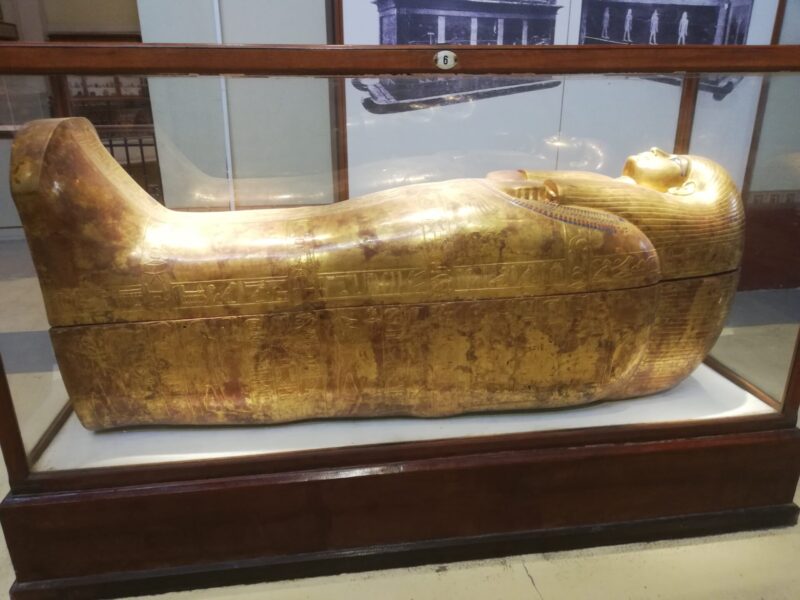
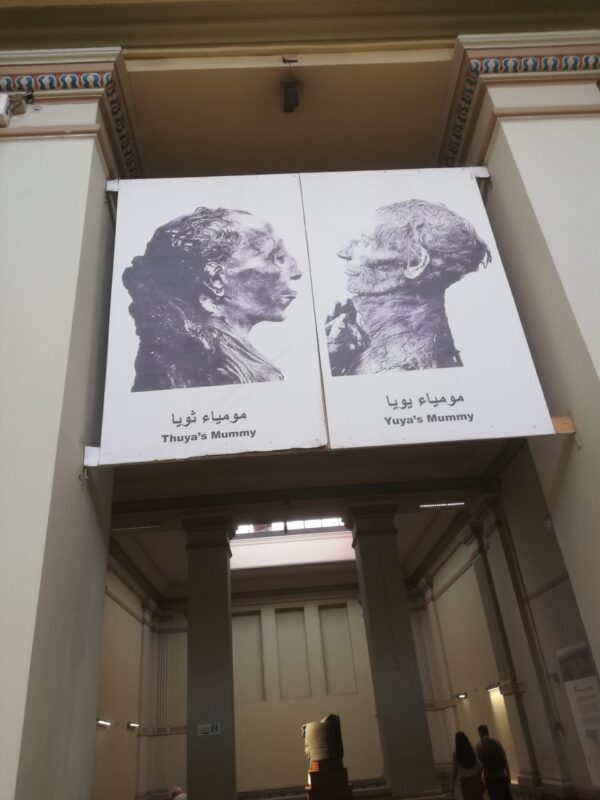

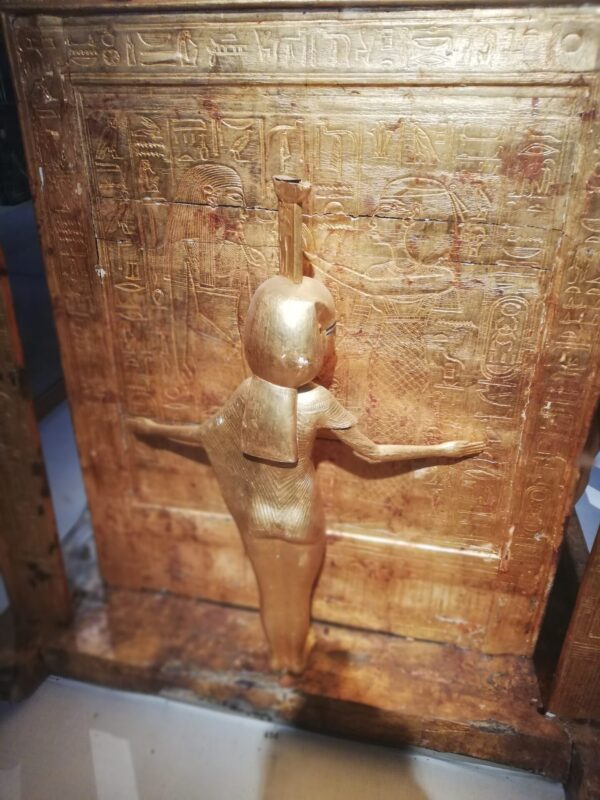
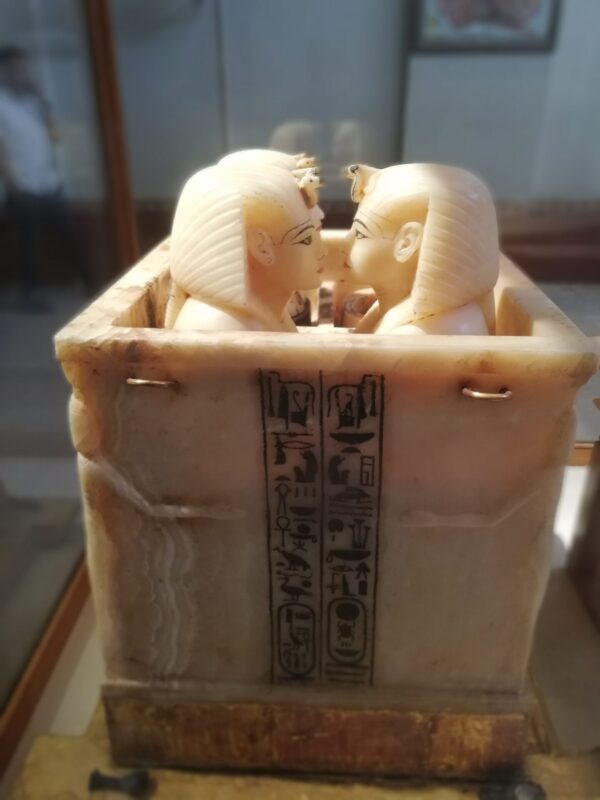
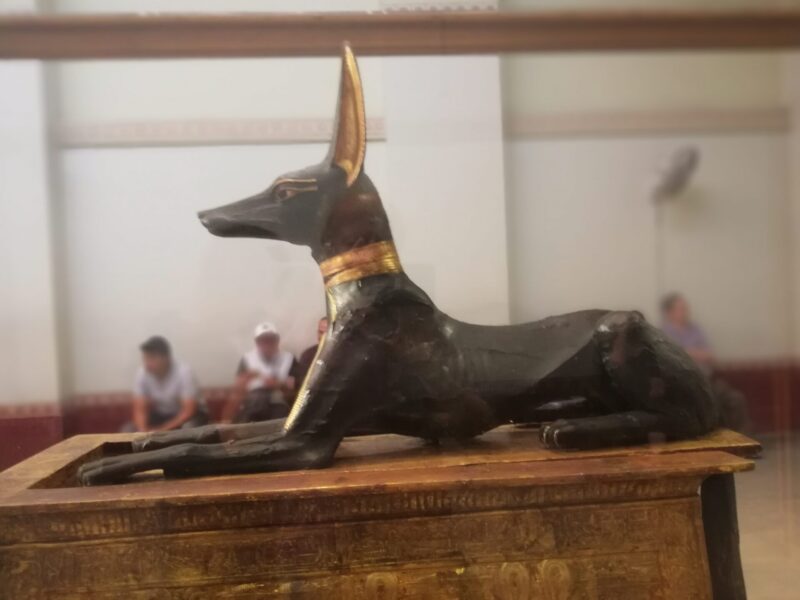

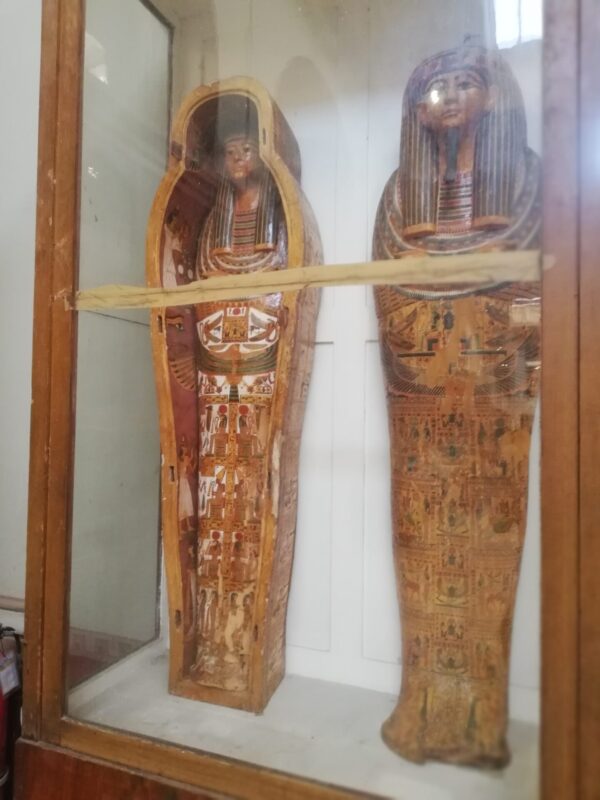
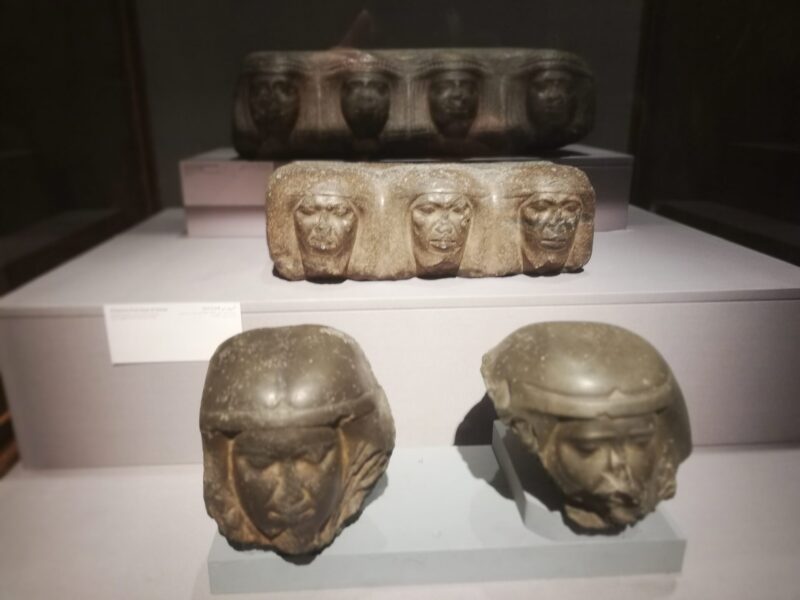
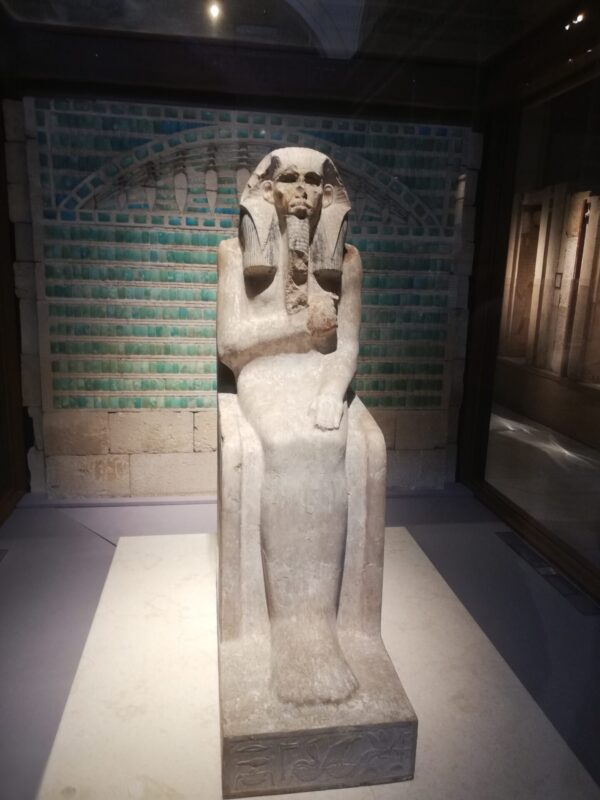
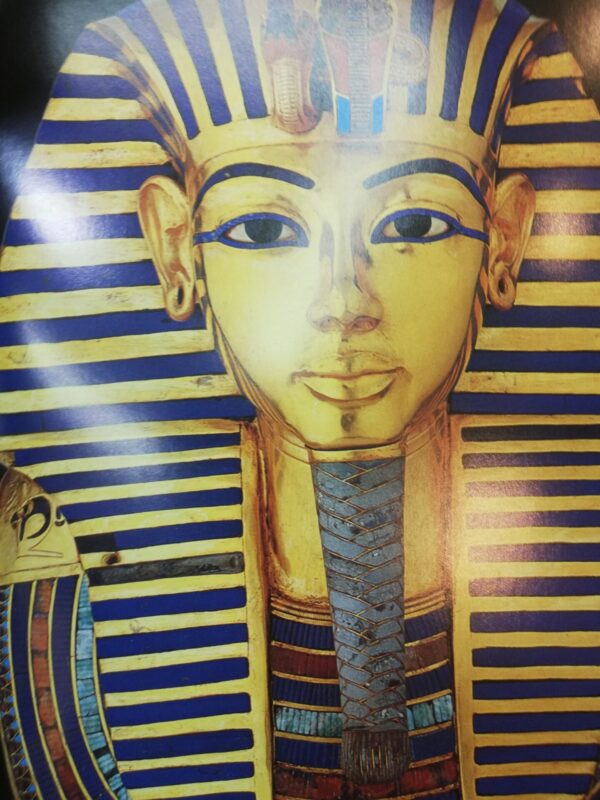
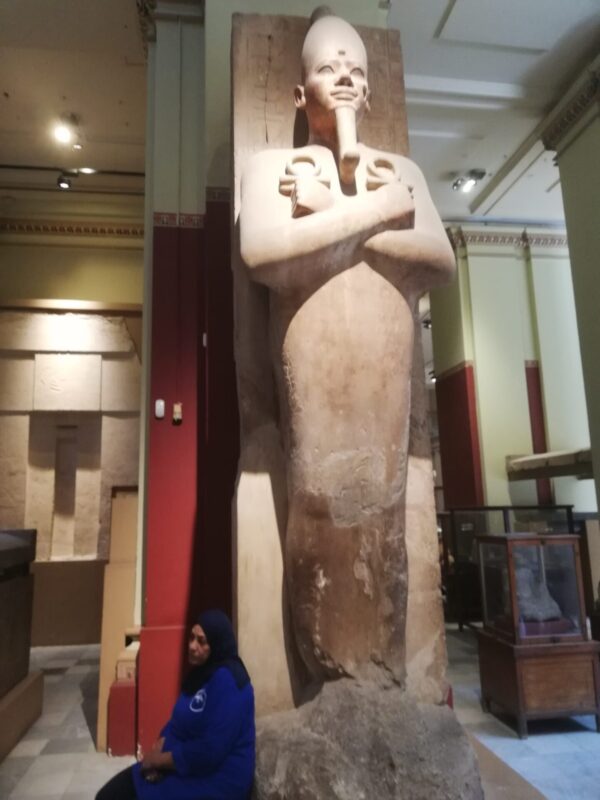

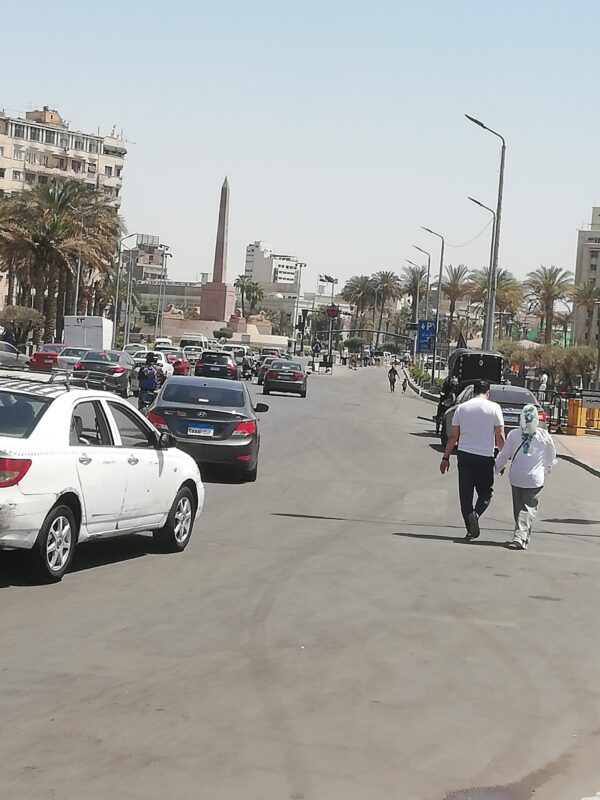
Tahrir Square

Nile cruise
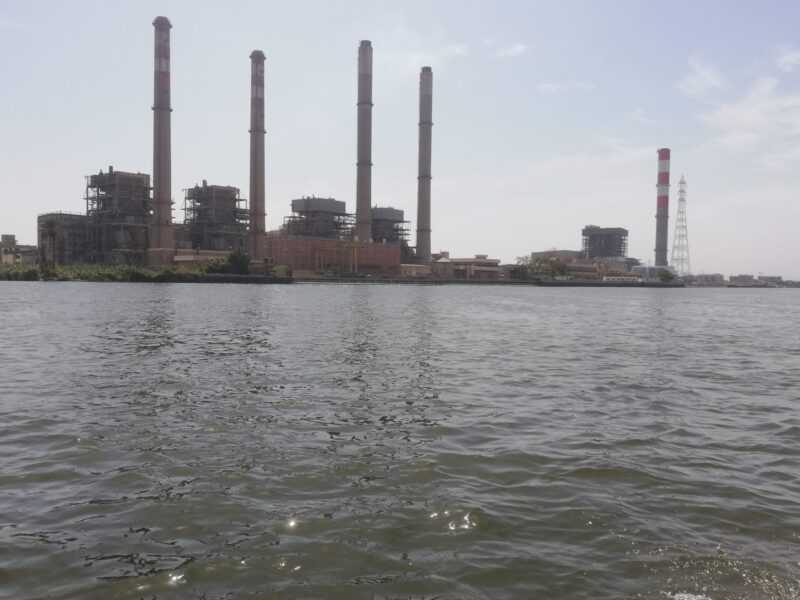
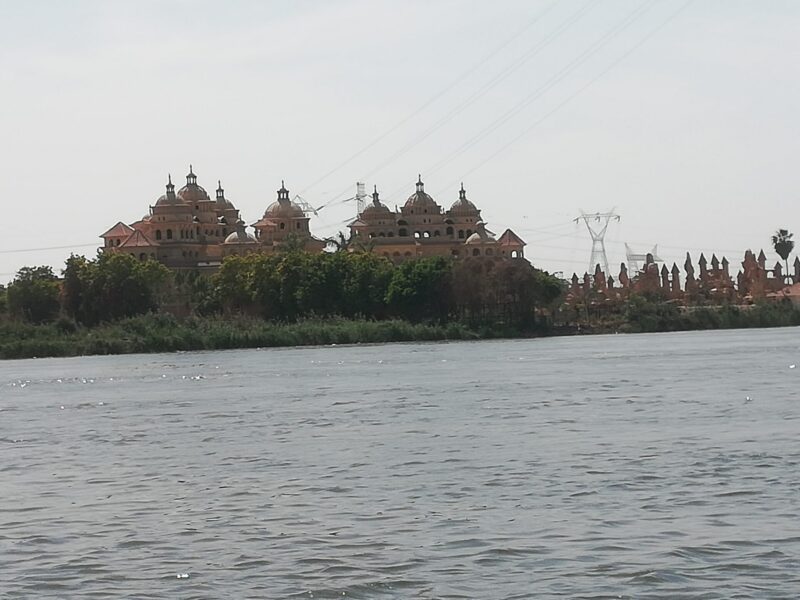
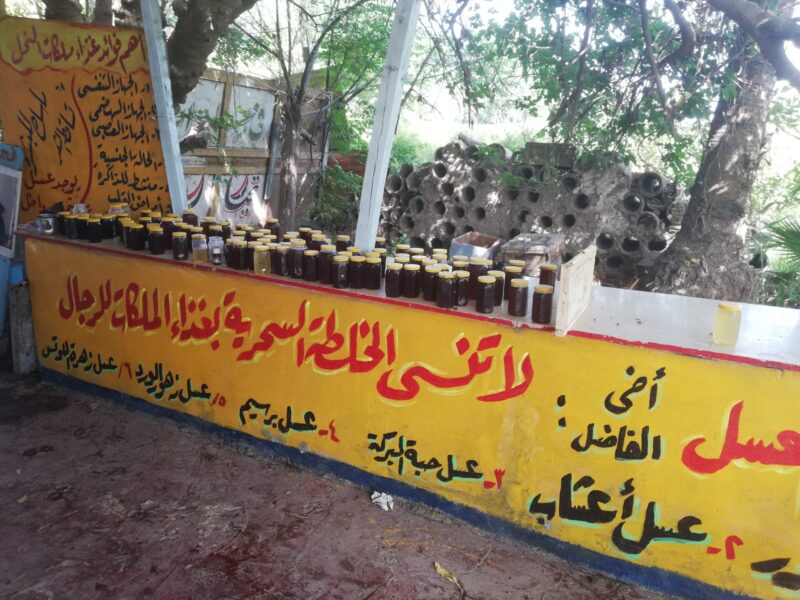

Day 66 (5th May) Giza to Luxor
We got a taxi to the Rameses station and booked tickets for Luxor. We could have got the 8 pm sleeper train but I wanted to see the Nile Valley in the belief that we would pass through tiny villages where nothing has changed since the days of the Pharaohs. There again we might pass through very large cities with rows of horrible tower blocks looking so dilapidated that it looked impossible for anyone to want to live in them. Rows of washing on the balconies indicated that millions of poor sods were doing just that.
In the end it was a mixture with miles of small fields with grain and beans under cultivation, and big grimy cities. The journey was punctuated by jobsworths coming every hour demanding to see our tickets and an endless stream of hawkers flogging water, tea, food, belts, teashirts, hairslides, bags and a whole host of other things. We met a very nice Dutch lady who worked in a hotel and she recommended the Zeegensomething Nile Star where the hoipoloi can slum it in a boxroom for $80. One of the train officials suggested we would be more comfortable in 1st class so we lugged our luggage down 9 carriages to near the engine which was nice until a gang of yobs got on and started annoying us. Then they had a fight between themselves and other passengers came and, some how or other, got them out of the carriage, A man who said he was doctor who had trained in Manchester came and apologised to us.
The train arrived in Luxor on time at midnight an we were accosted by a man with a horse until a taxi driver came and rescued us. Hussain likes English people because his wife, Zafuna, is from Manchester. Jennifer asked for the Nile Point and there is a backpackers hostel called the Nile Point 15 miles away on the West Bank but Hussain couldn’t find it. So he took us to the Cleopatra Hotel which is brilliant. £11 a night, clean large room, hot water in the shower, beautiful (and large) breakfast, great evening meal (extra) and lovely people. A miserable old git like me doesn’t normally give 5’s on Tripadvisor but this place deserves it. We were knackered so we went straight to bed.
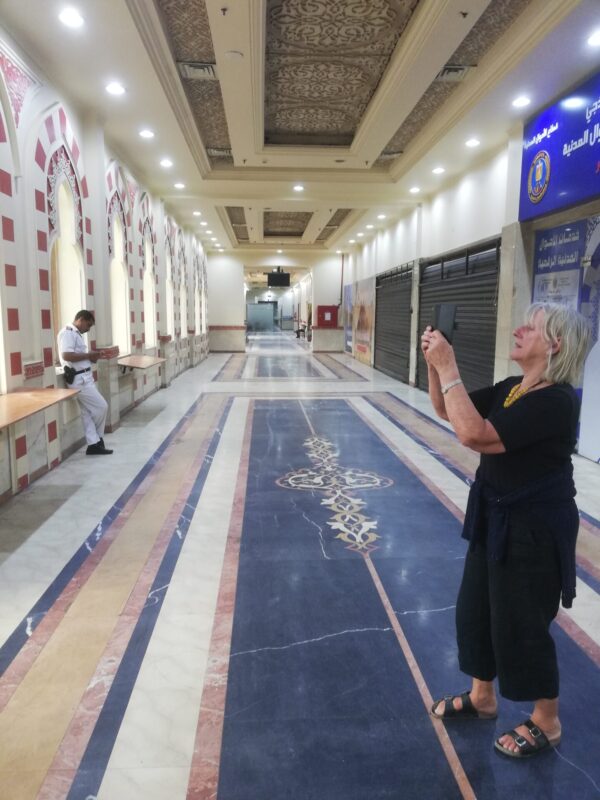
Rameses station, Cairo
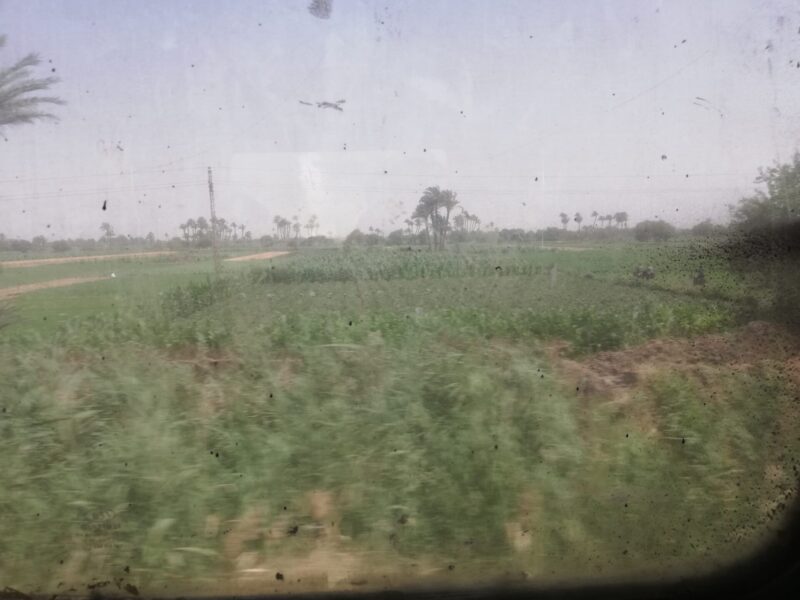
Nile Valley through a very grimy train window
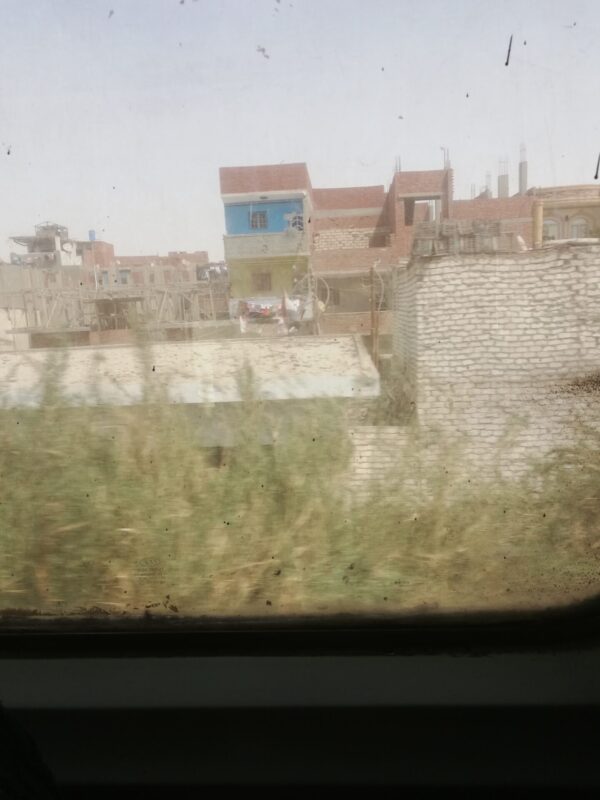
Typical Nile Valley town
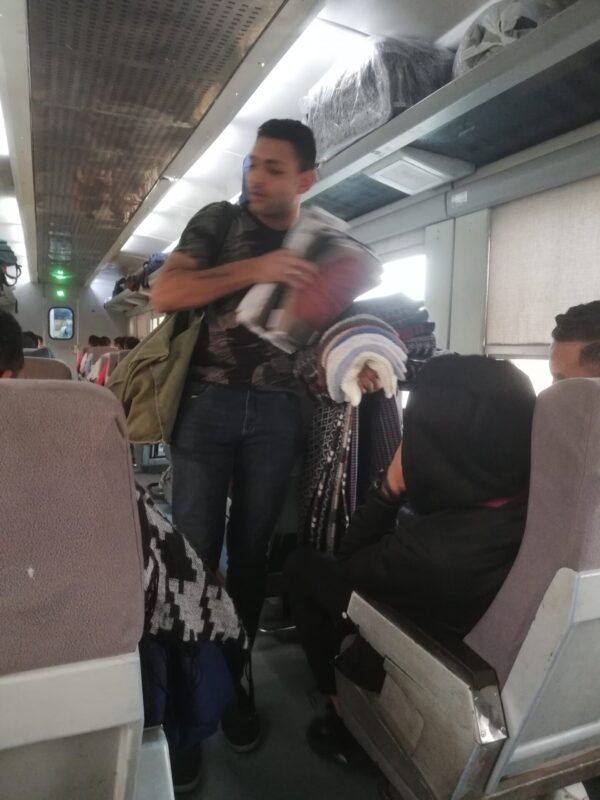
Bloke flogging stuff on the train
Day 67 (6th May) Luxor
Today was supposed to be a quiet day after yesterday’s exertions. But we decided to see one thing (two is a struggle in the heat) and opted for the Luxor Museum. But it was closed. So we thought we might see the Karnak Temple, A taxi driver took us for $5 and offered to wait for us for 2 hours until we had finished. The following pics say it all!
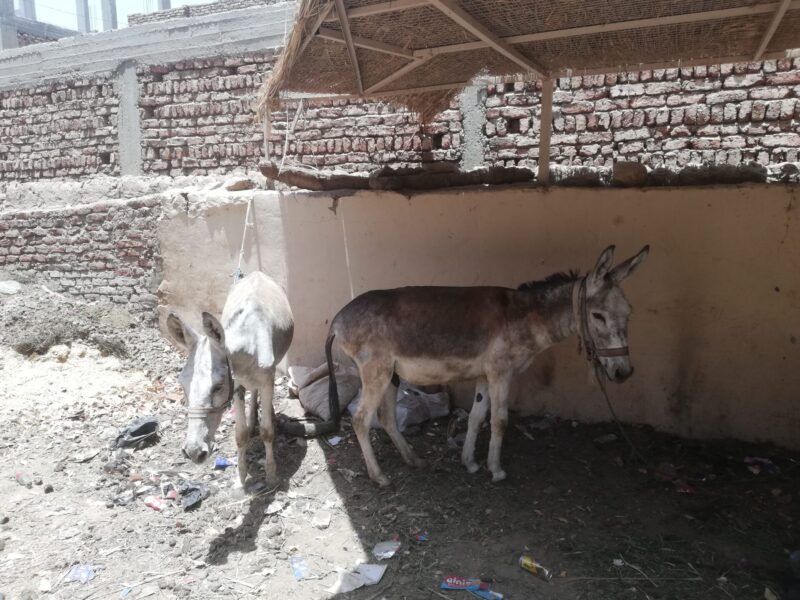
Donkeys near our hotel
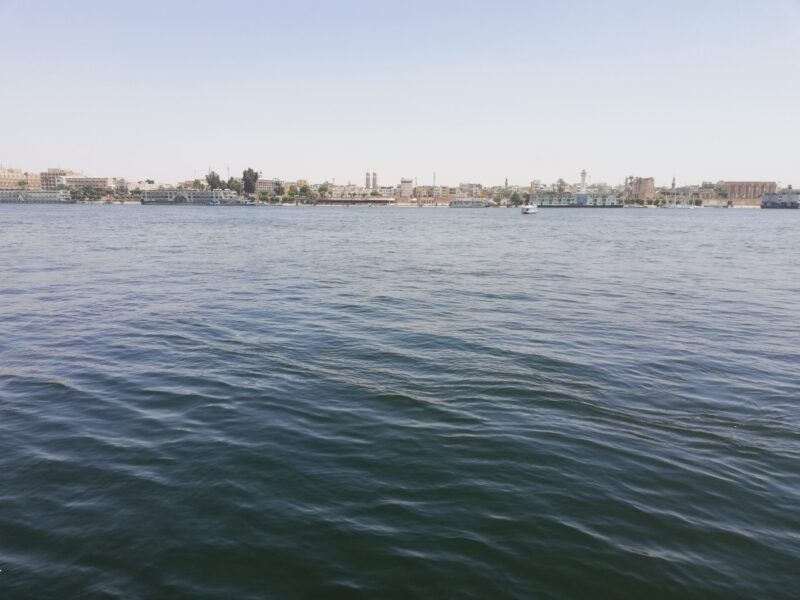
Crossing the Nile
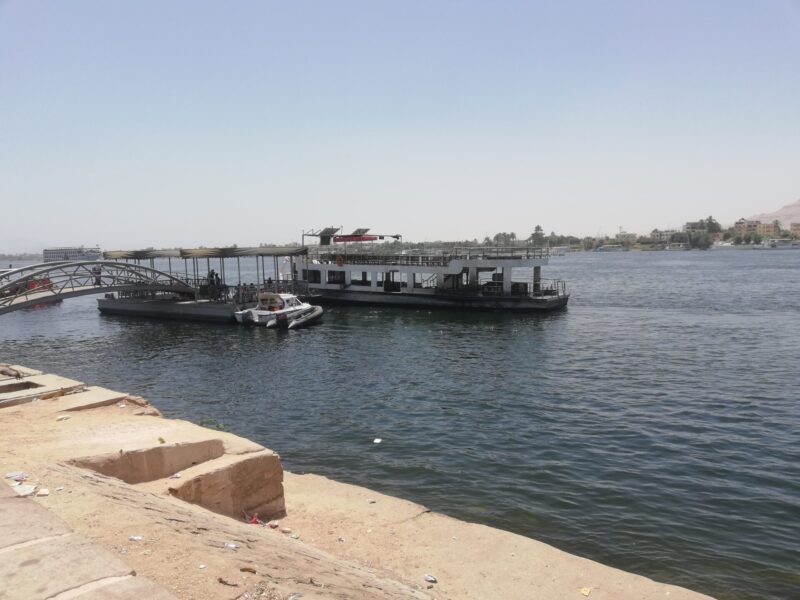
Nile ferry
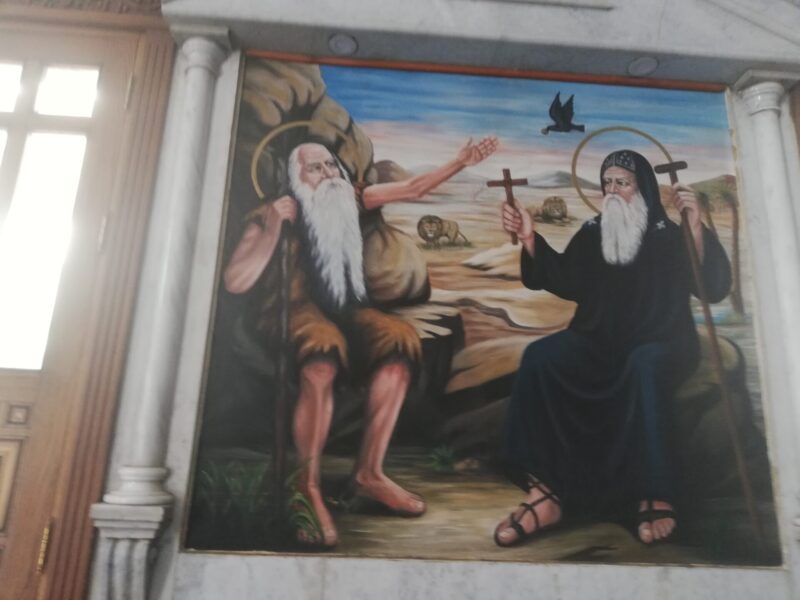
Picture in a church near the Karnak Temple

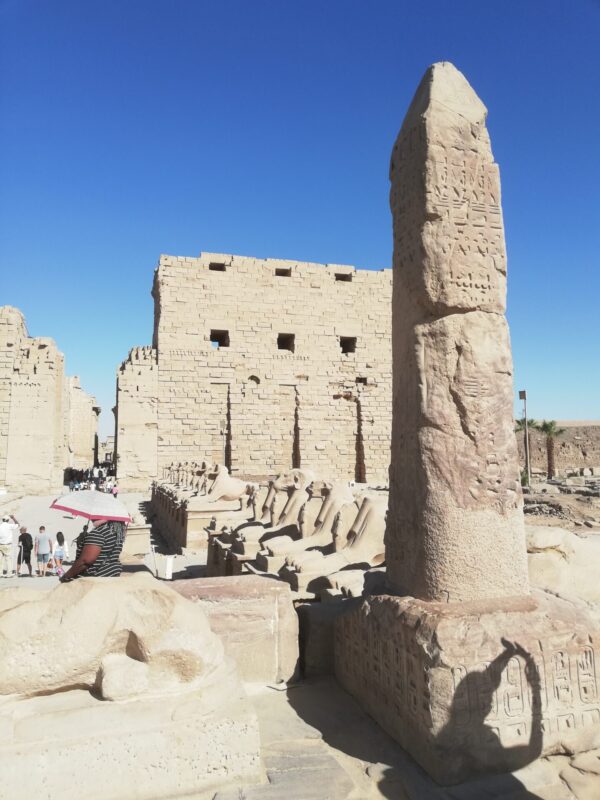
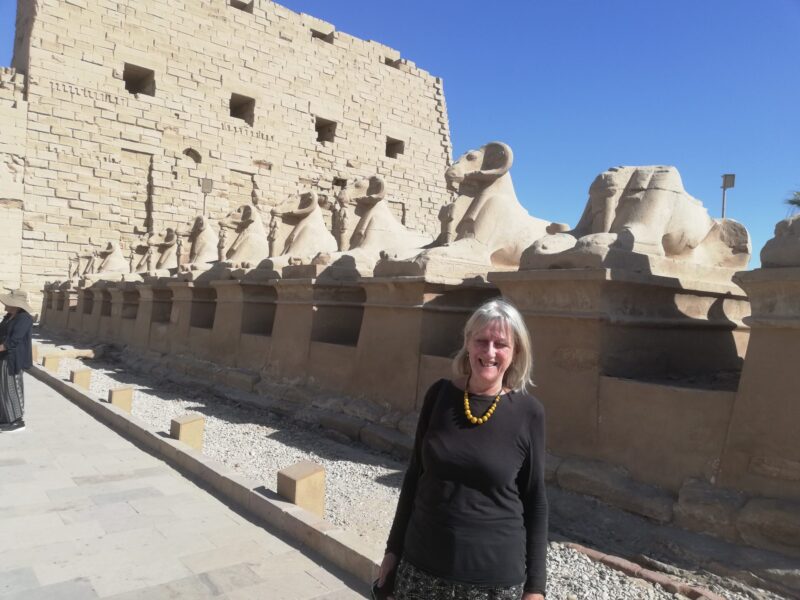
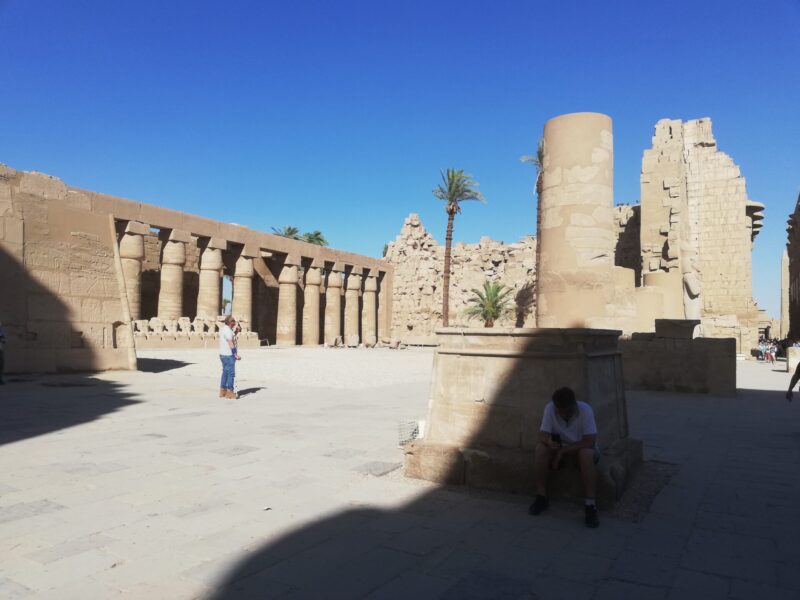
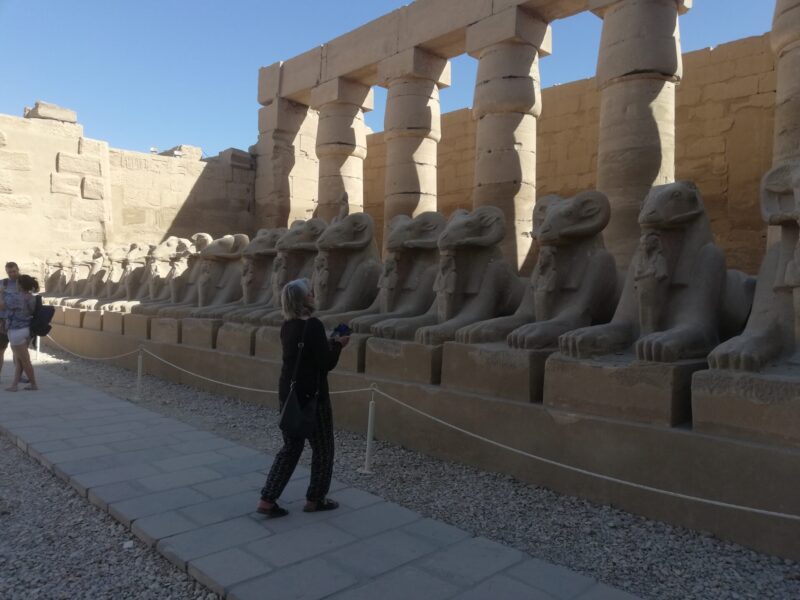
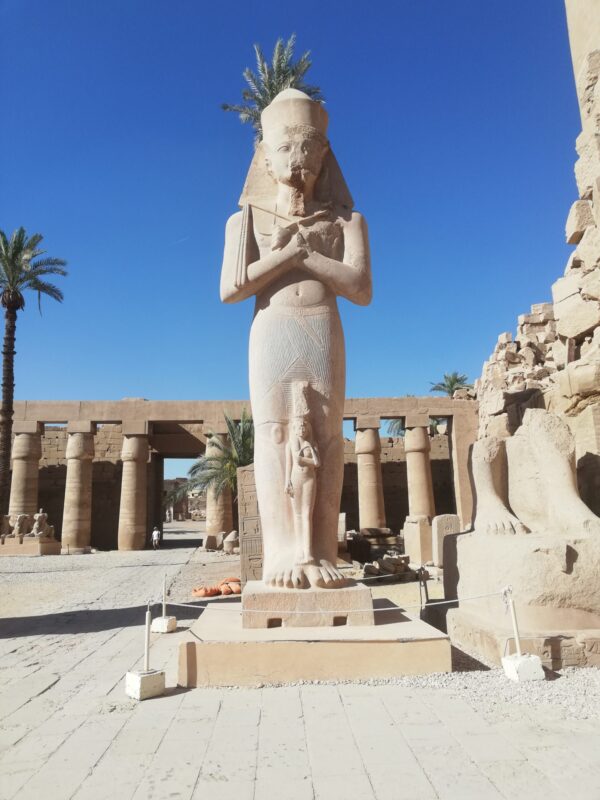
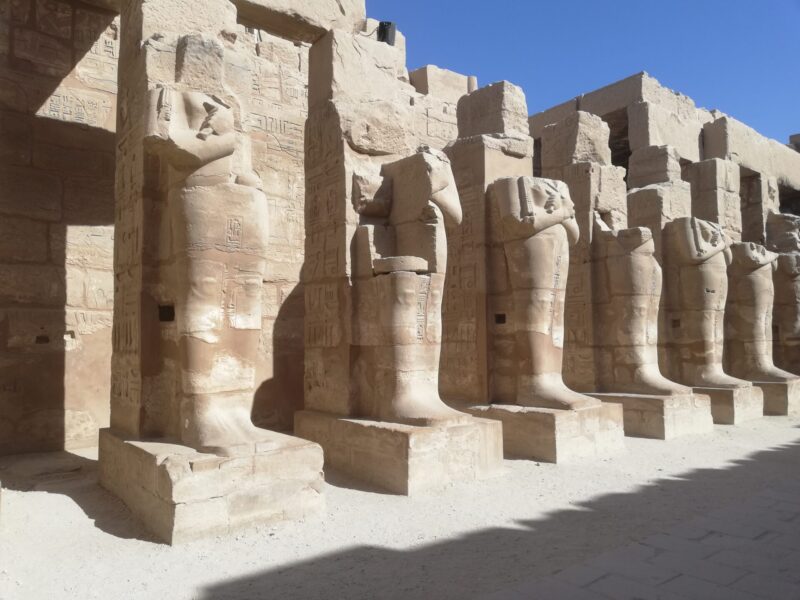

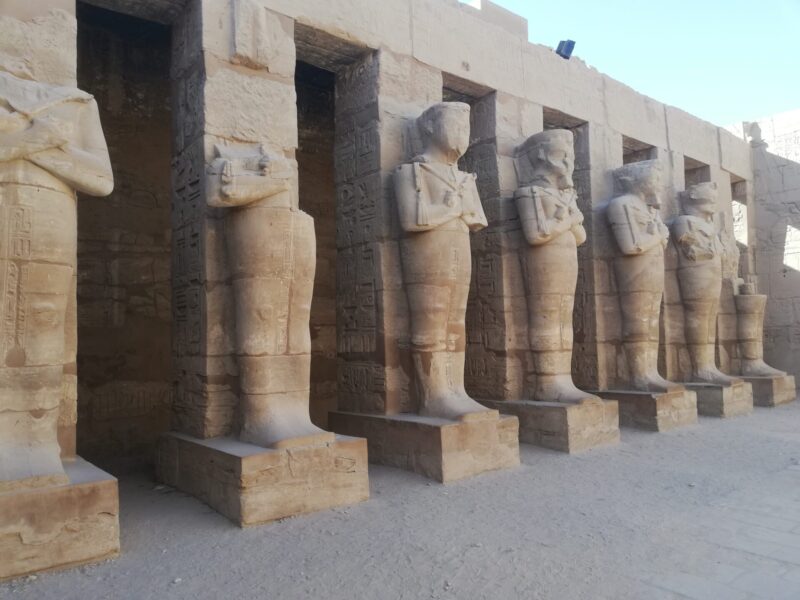
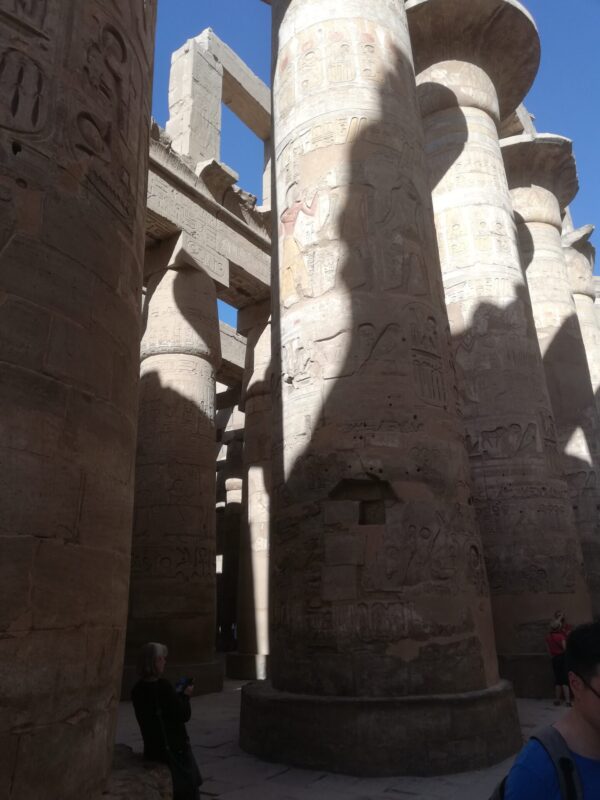
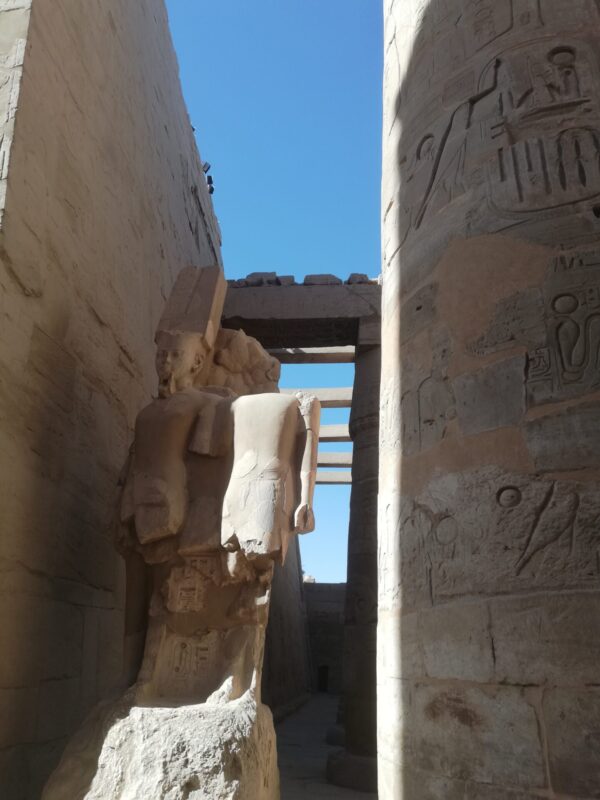
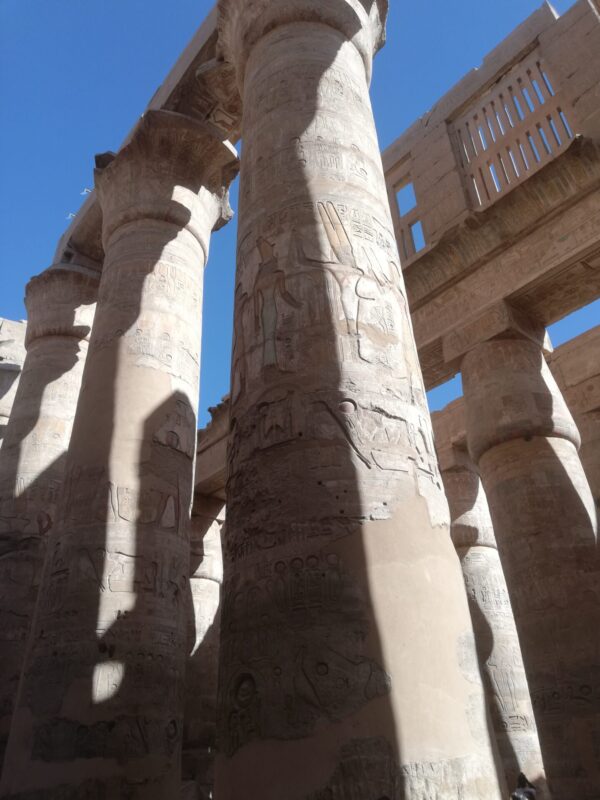
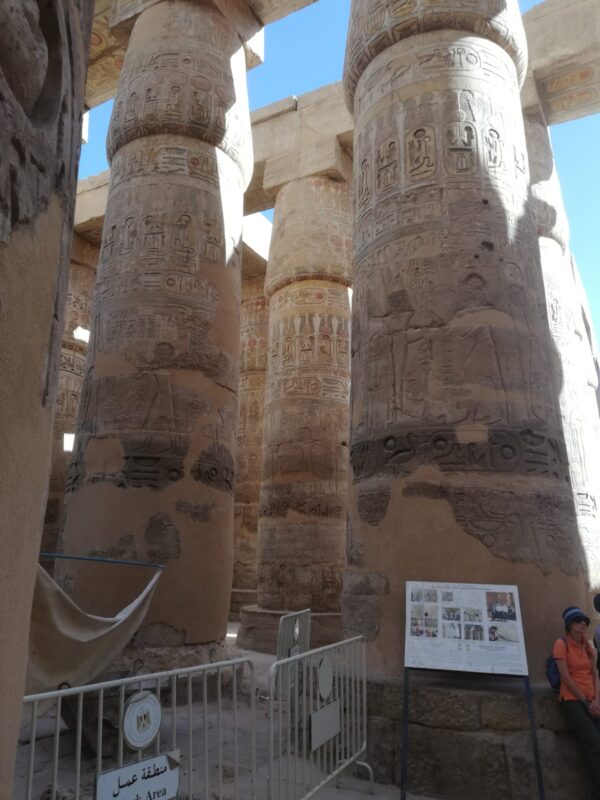
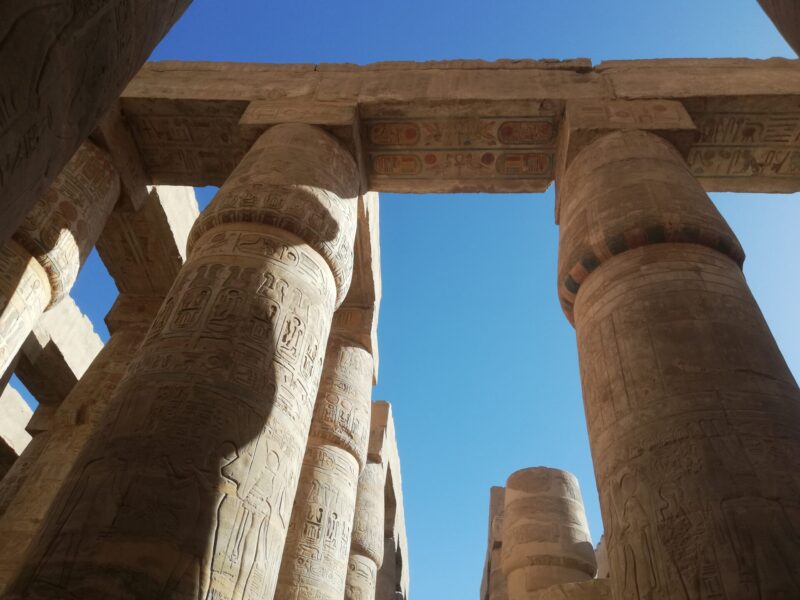
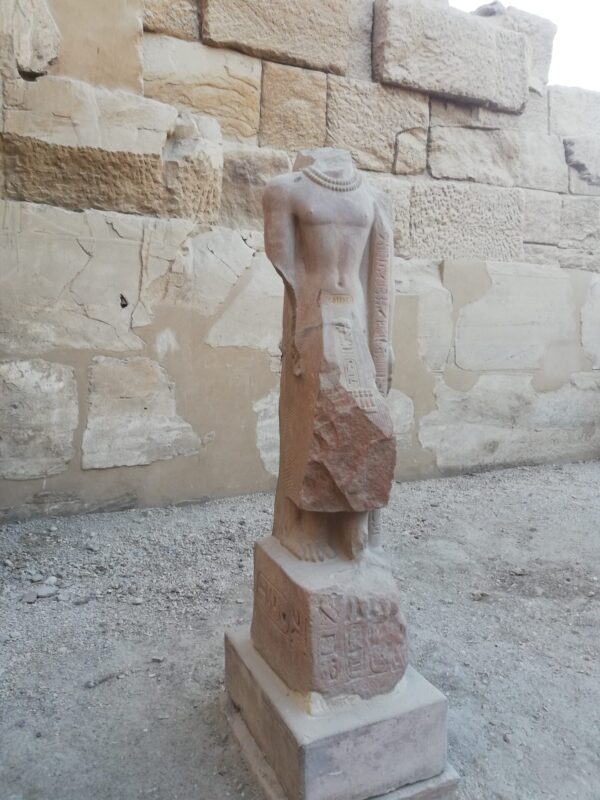

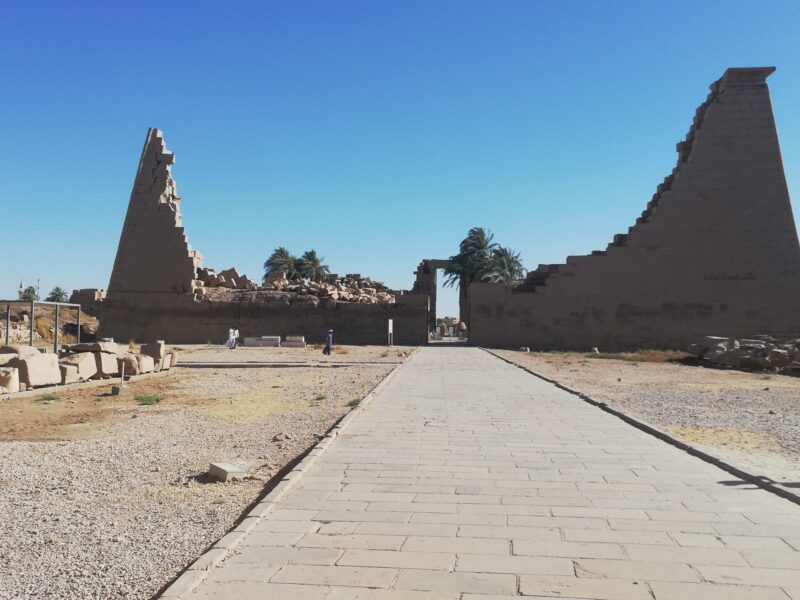
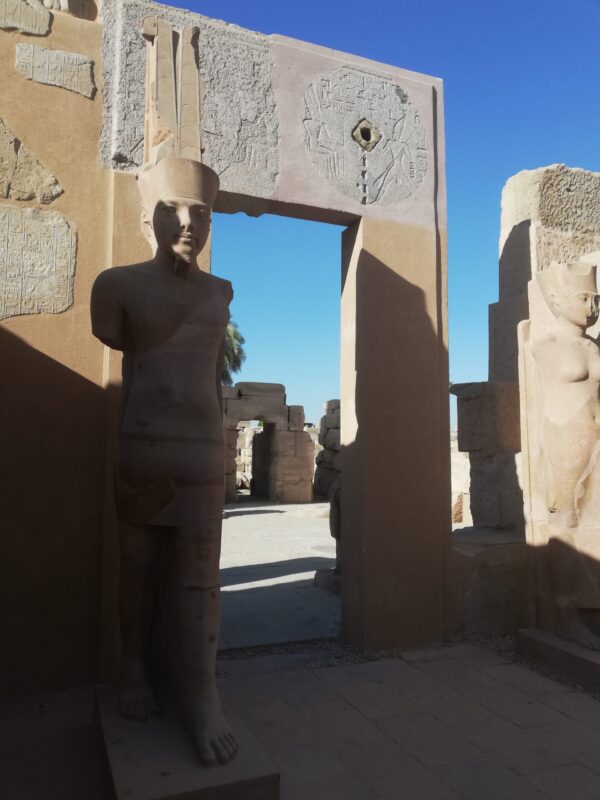
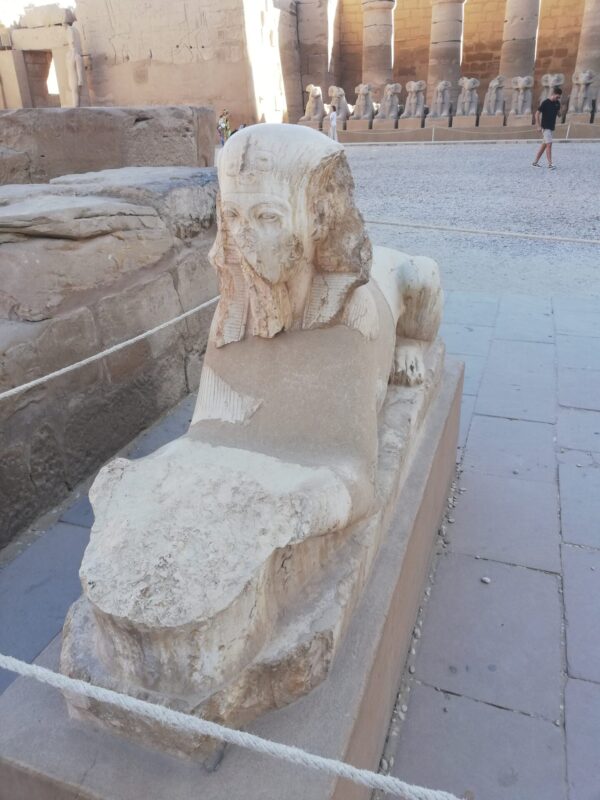
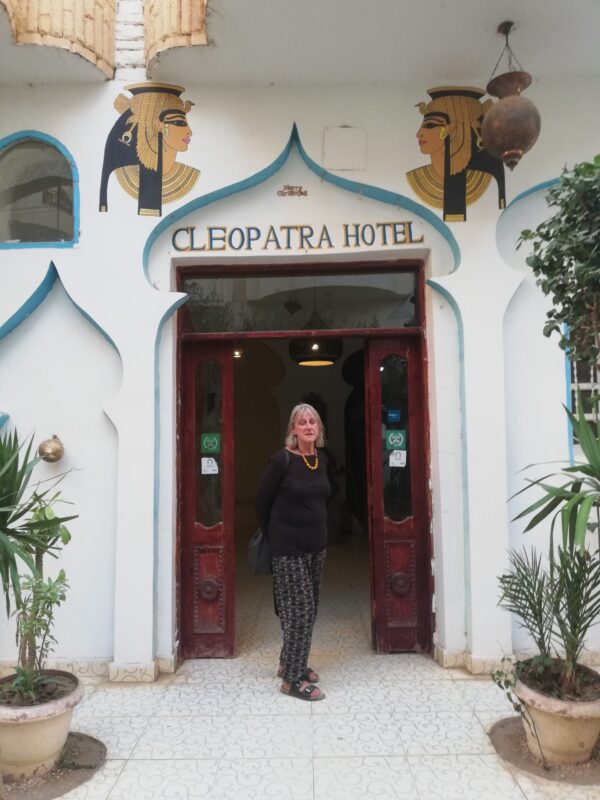
Day 68 (7th May) Luxor: Luxor Museum and Luxor Tmple.
The internet said that the Luxor Museum was closed but we decided to go anyway and, if it was closed, walk to the Luxor Temple. The Museum was, of course, open and had many stunning exhibits, although it was overshadowed by the Egyptian Museum in Cairo.
It was only a short walk to the Luxor Temple, but they make life difficult by putting the entrance as far from the main road as possible. Again, the pics speak for themselves.
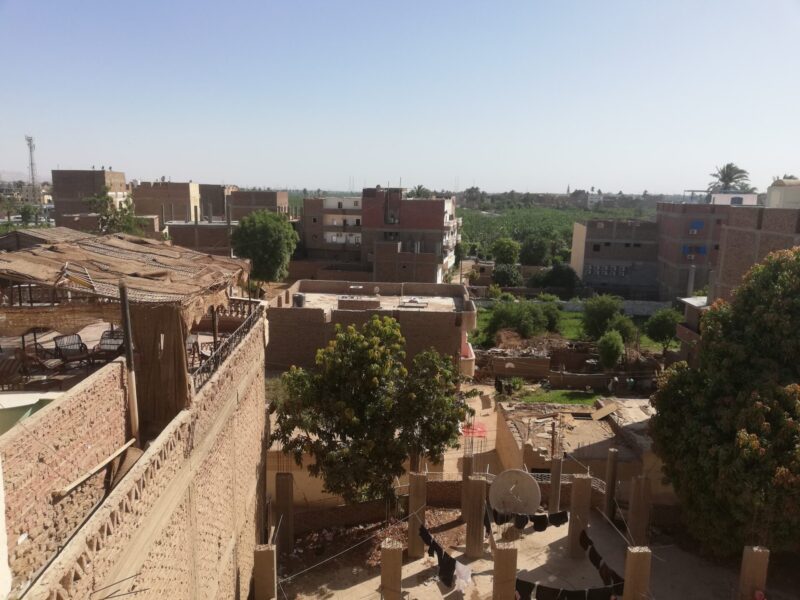

View from hotel terrace

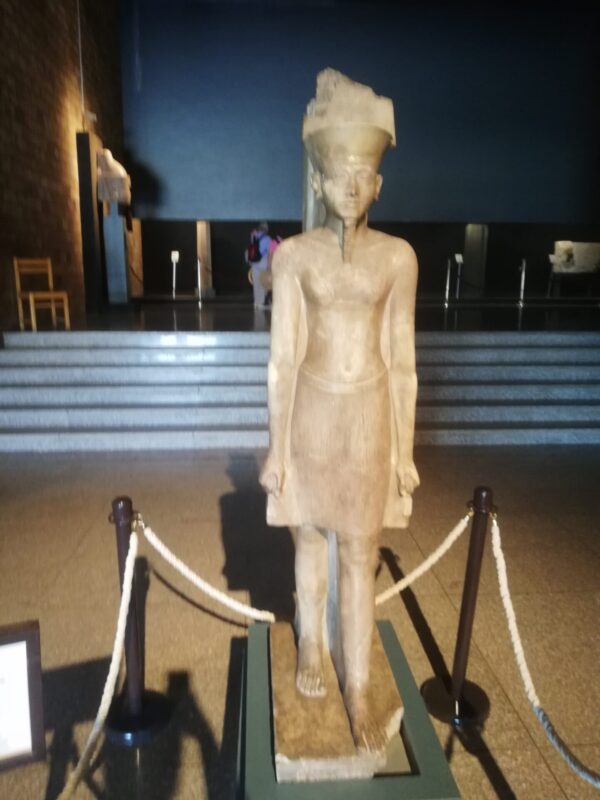
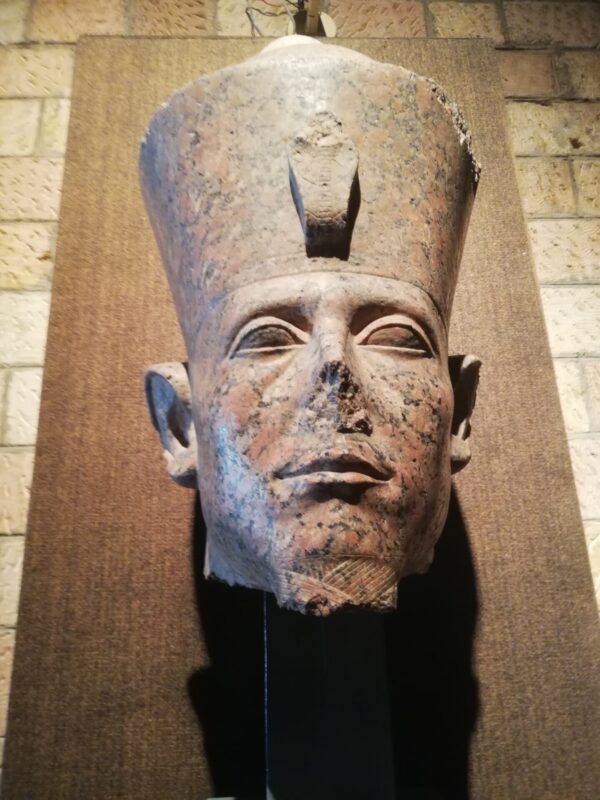
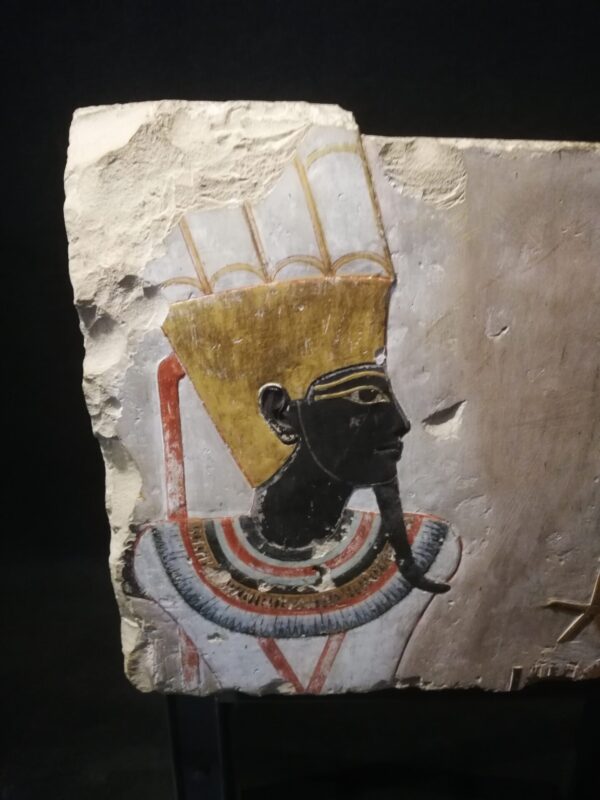
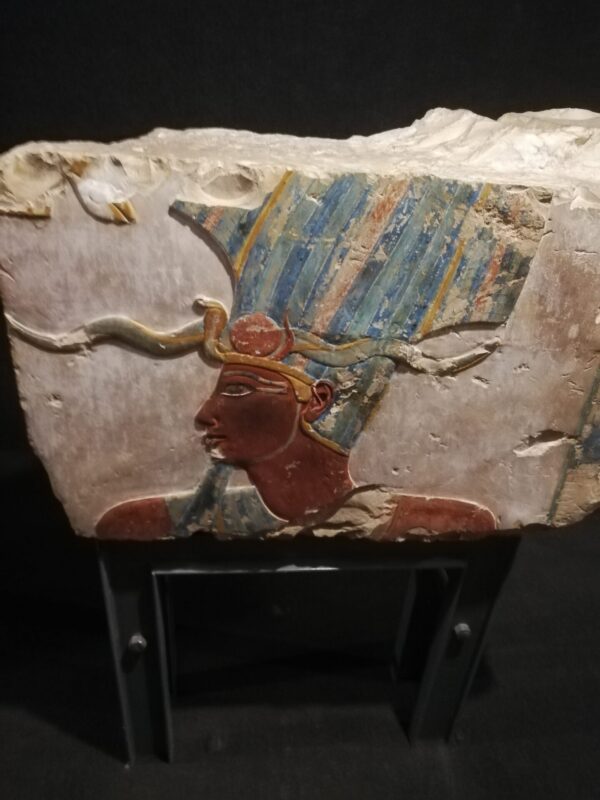
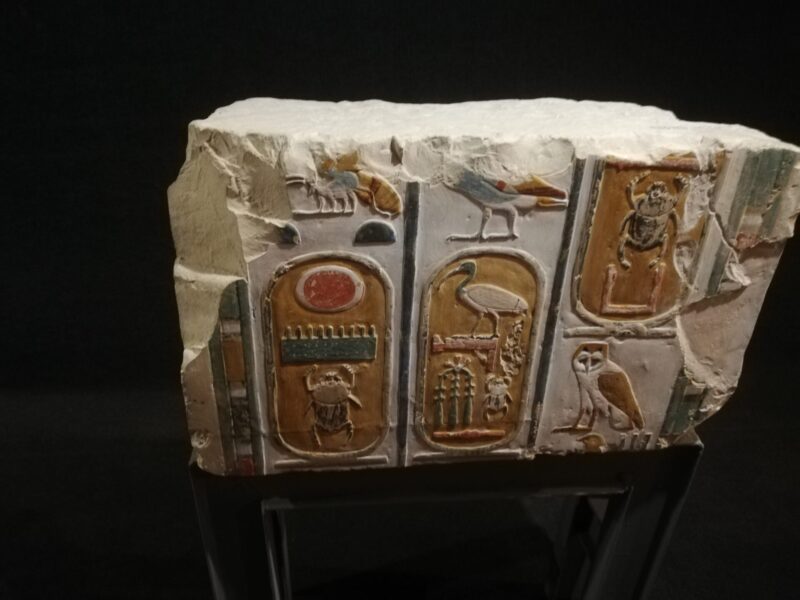
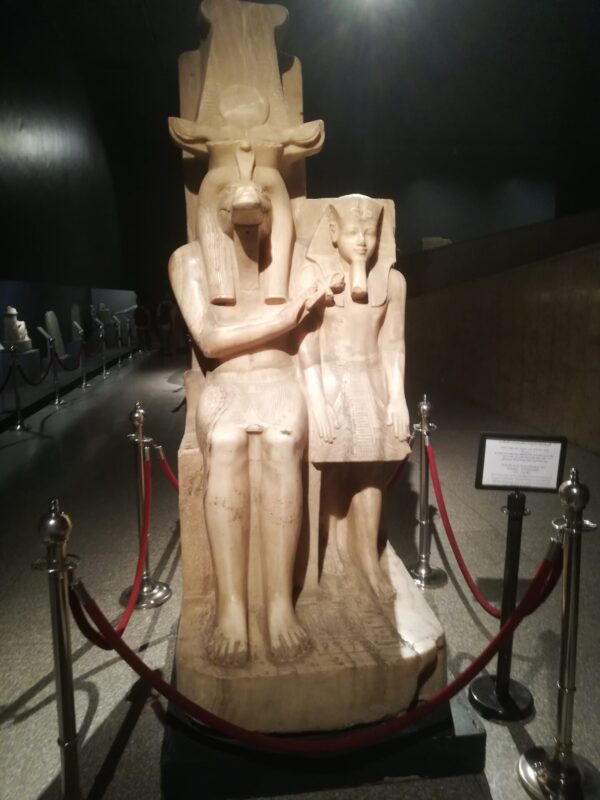
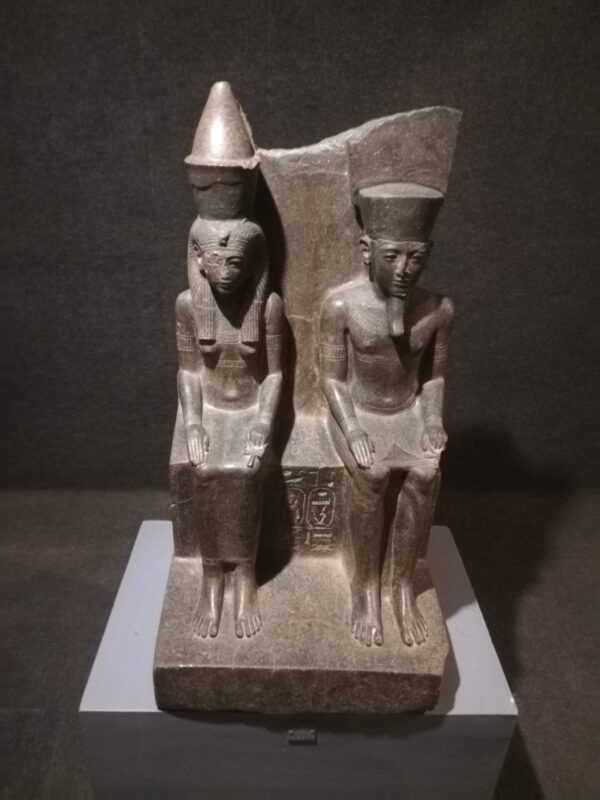
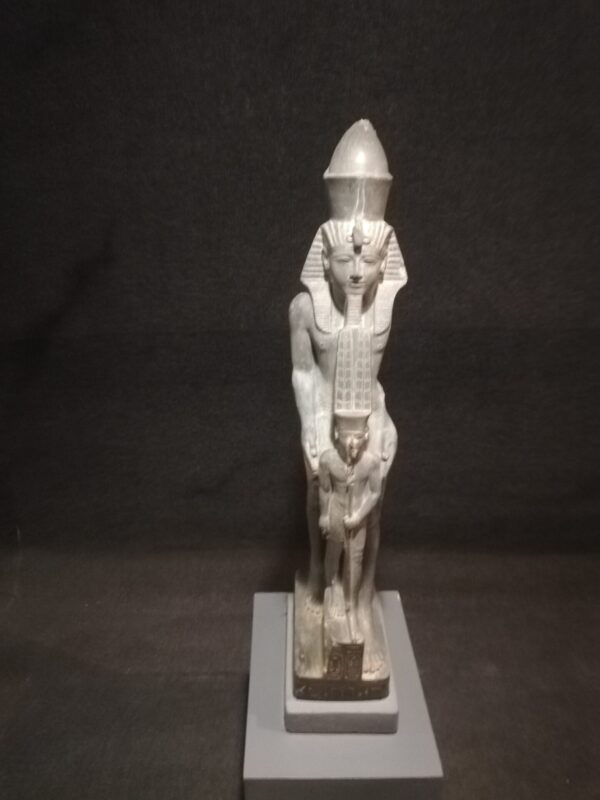
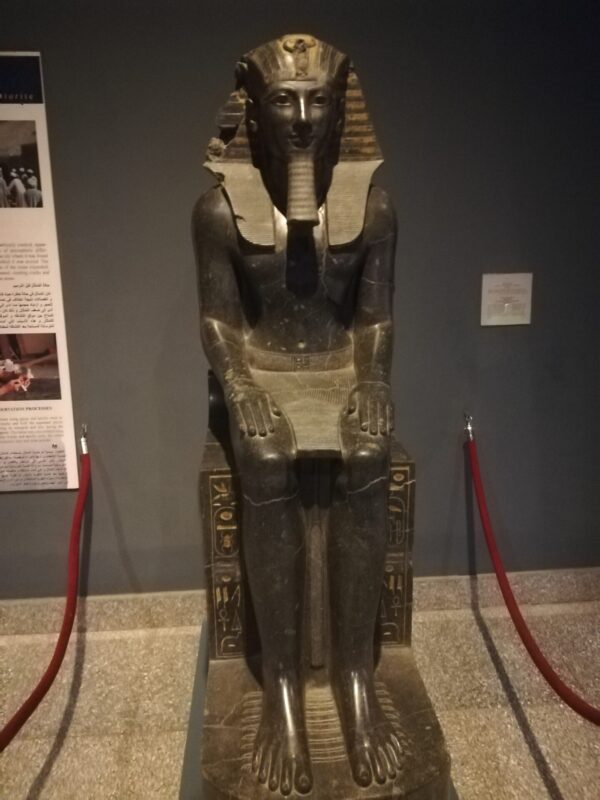
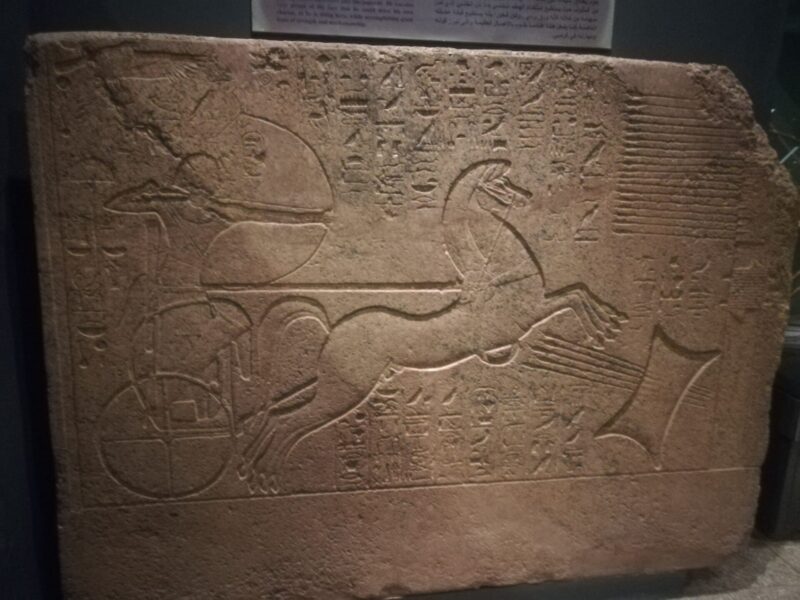


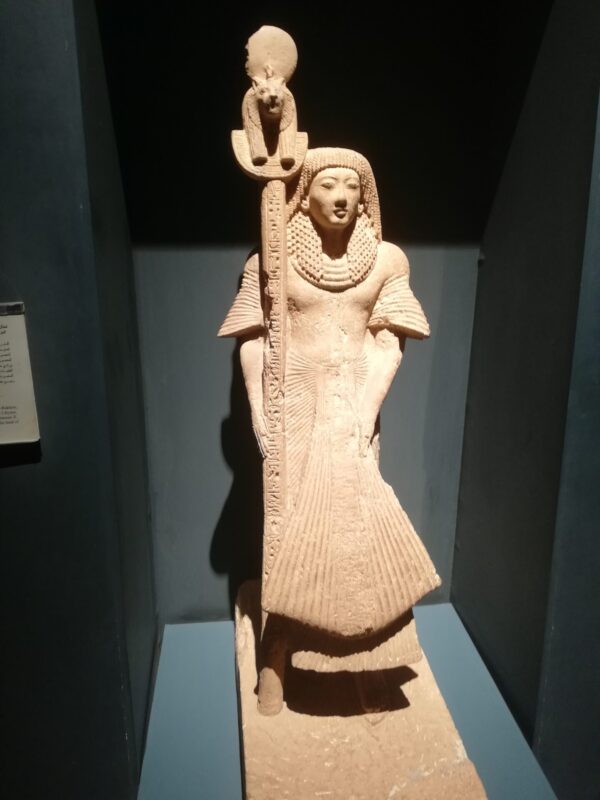
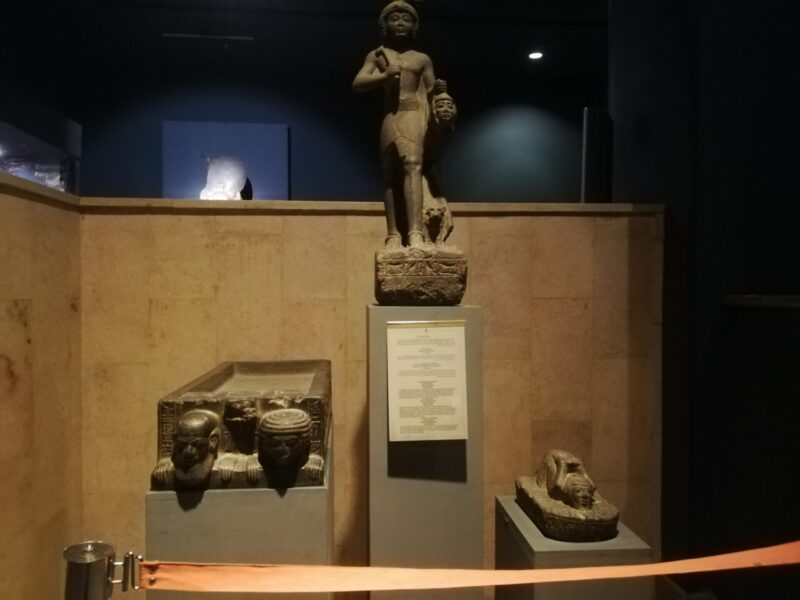
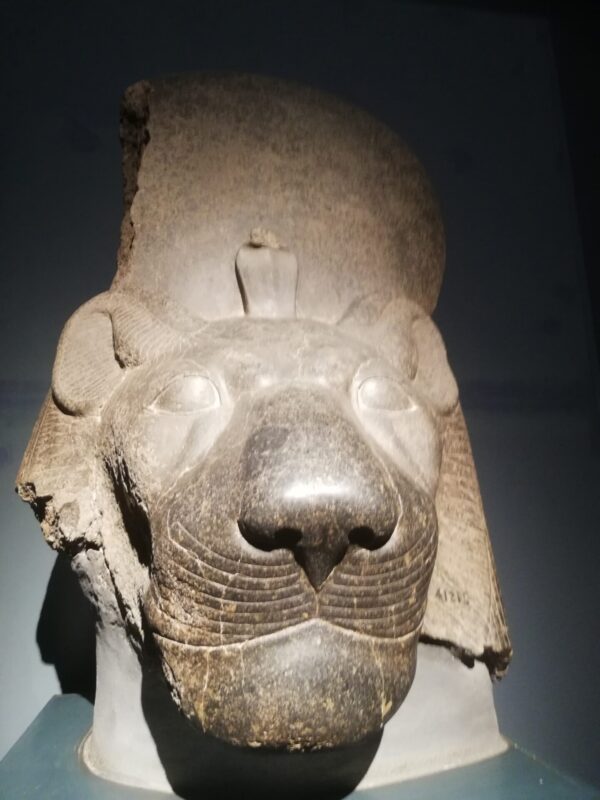
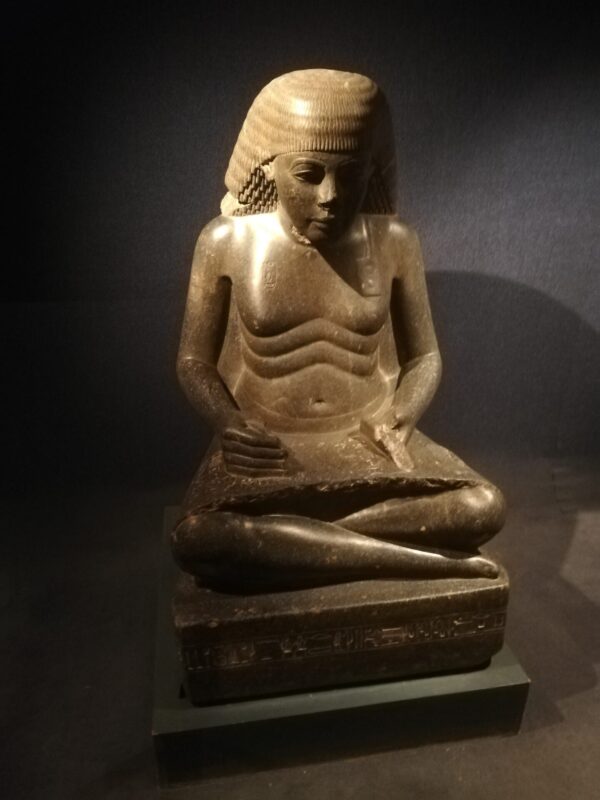
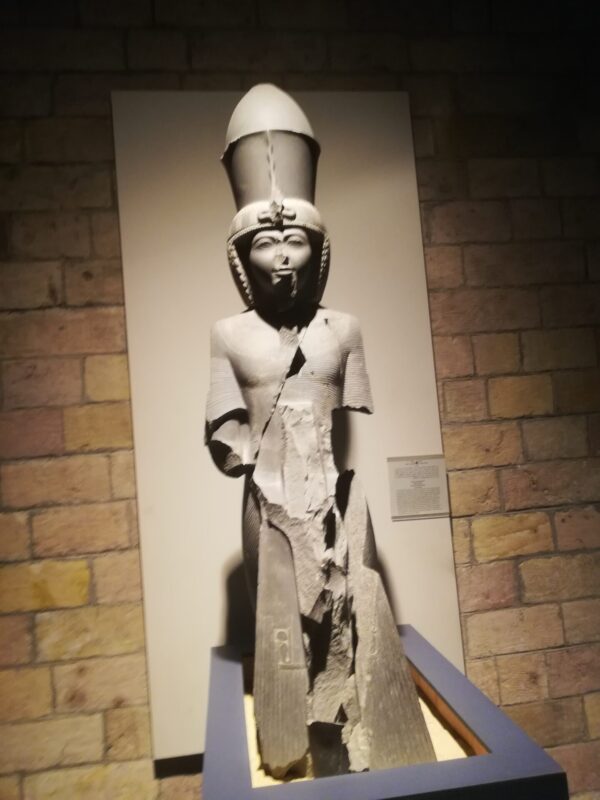

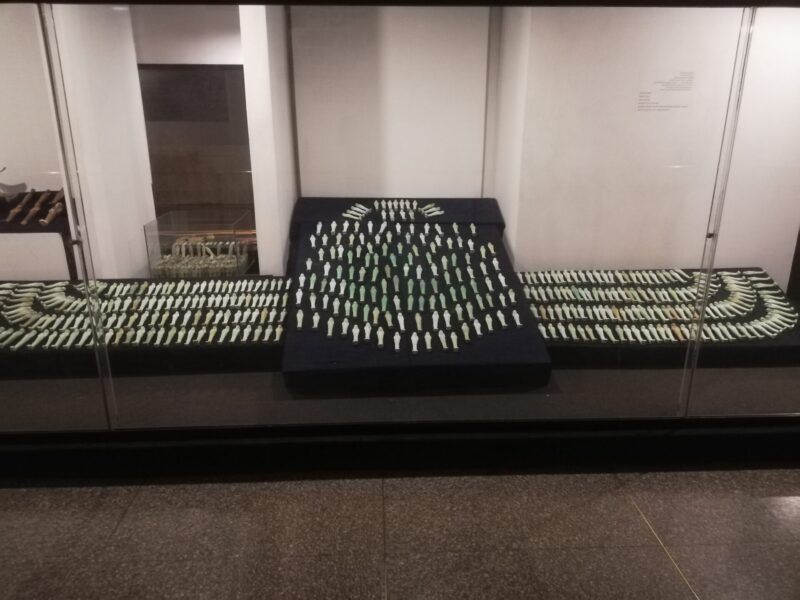
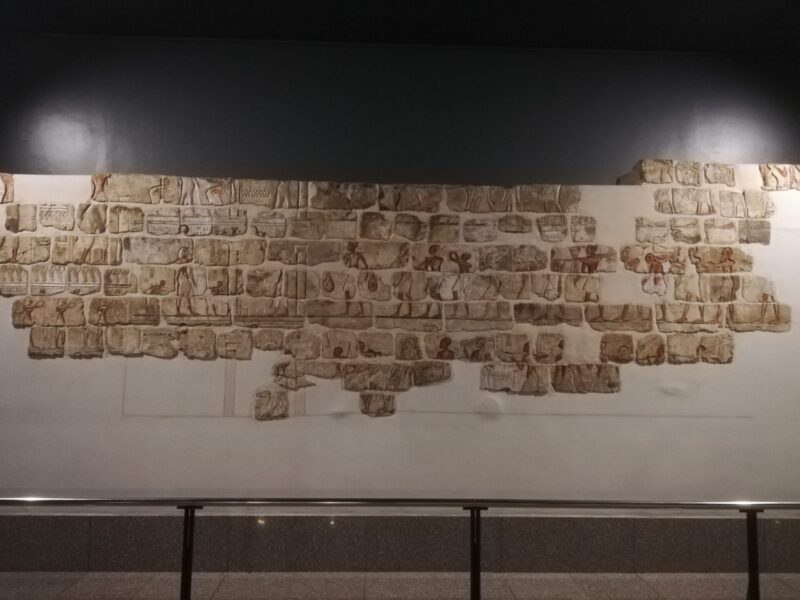
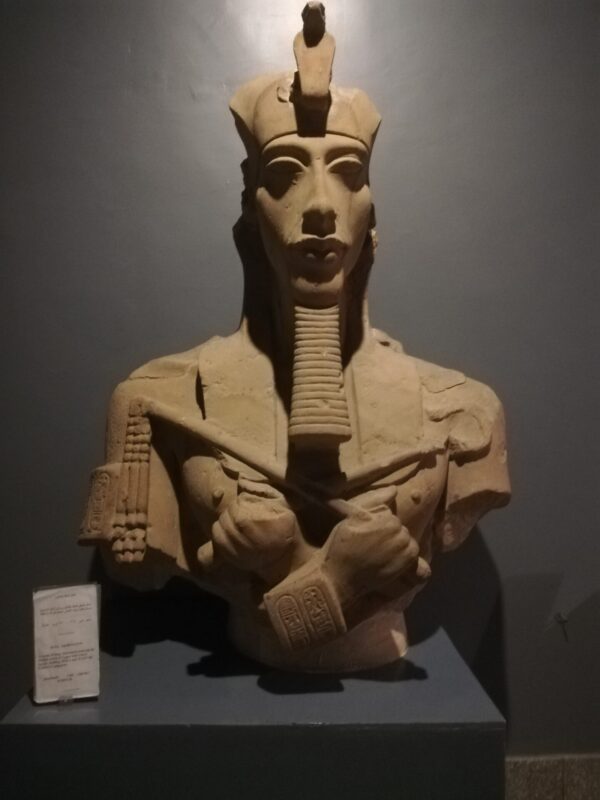

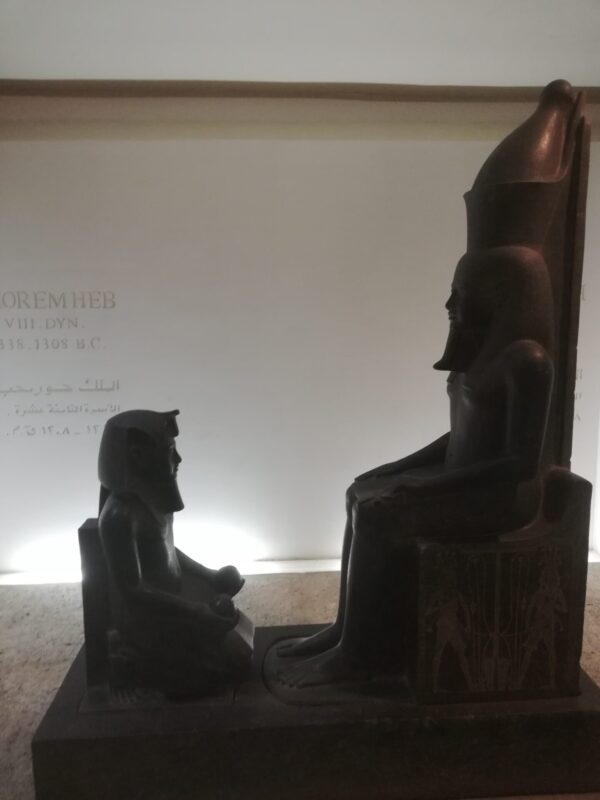
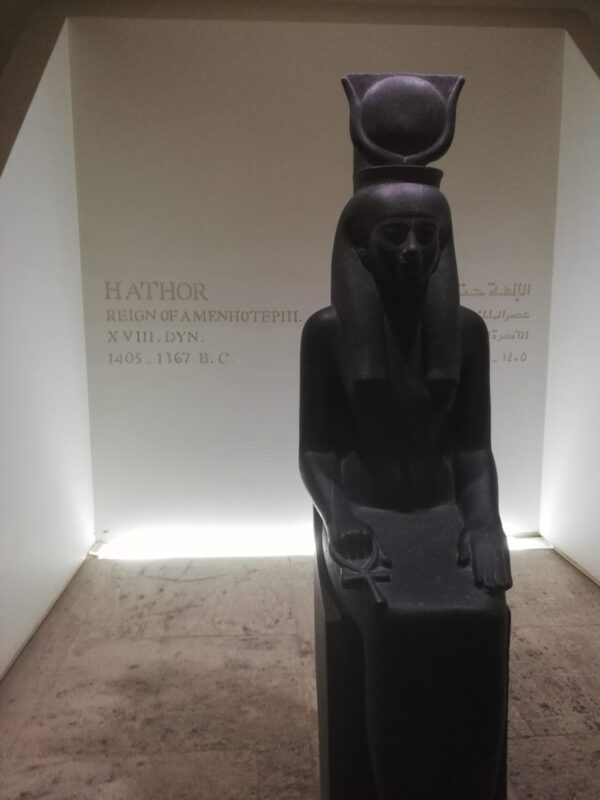
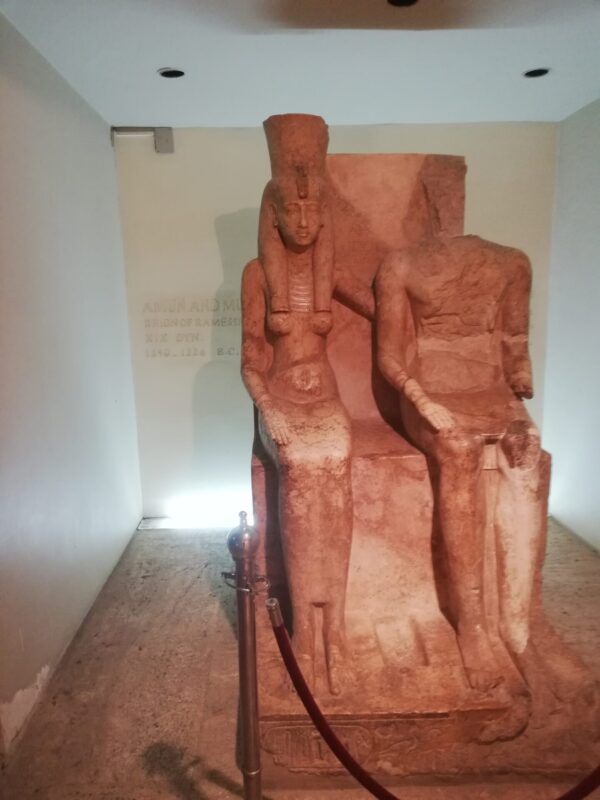
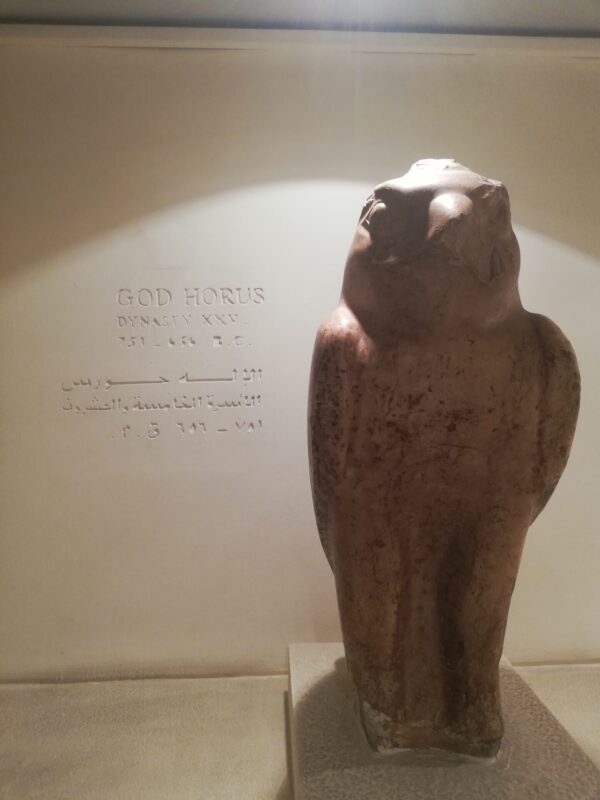
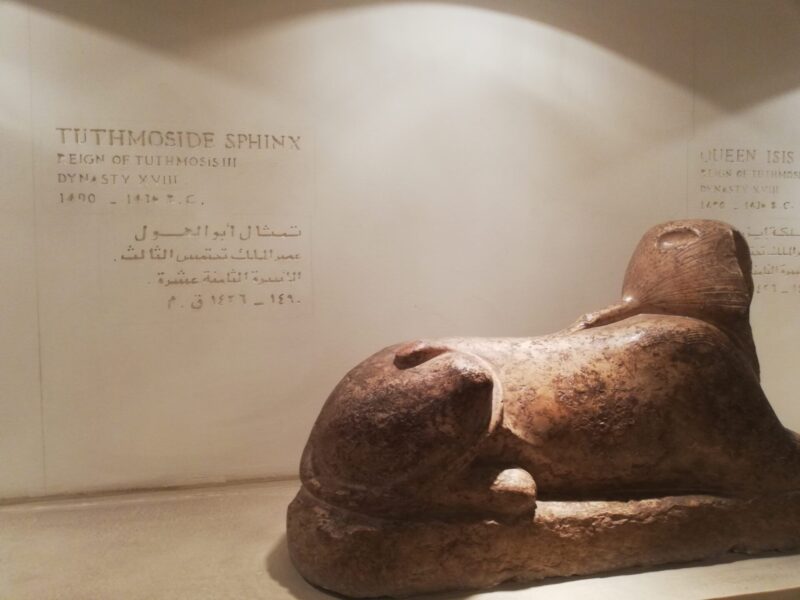
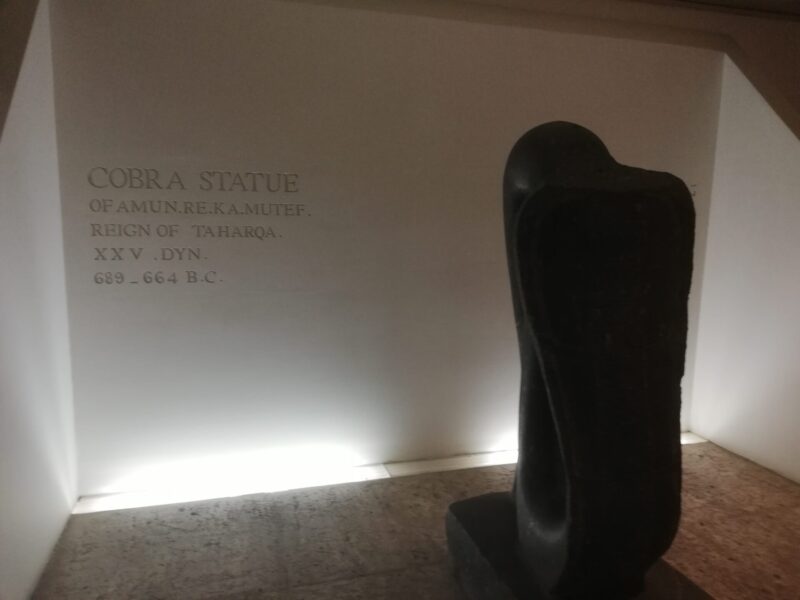
The following pics are of Luxor Temple
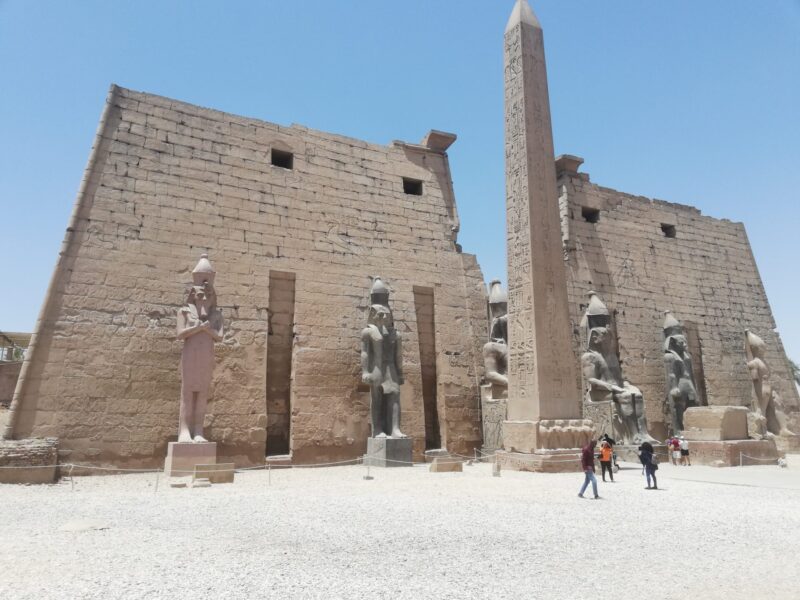
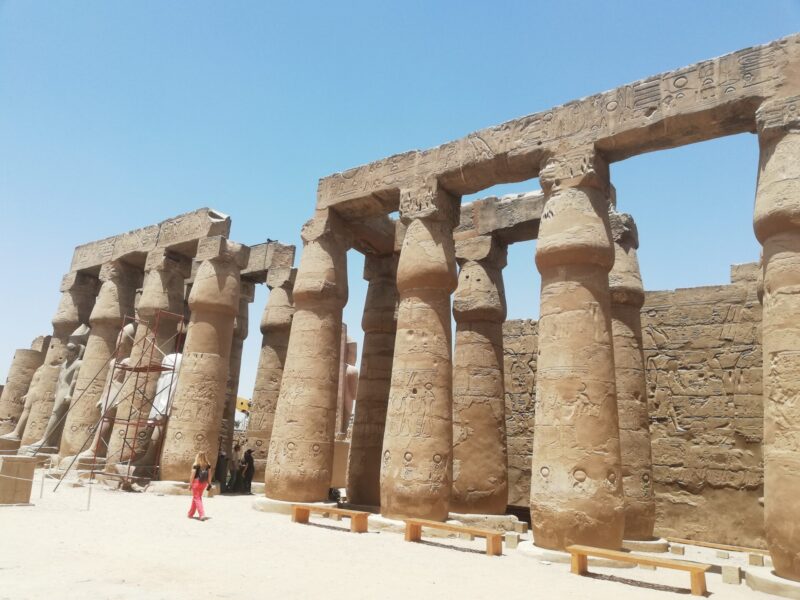
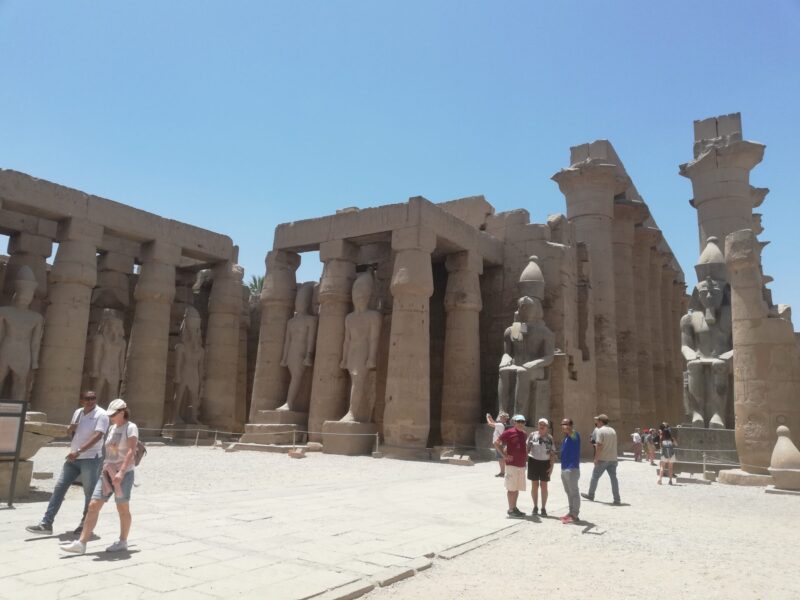
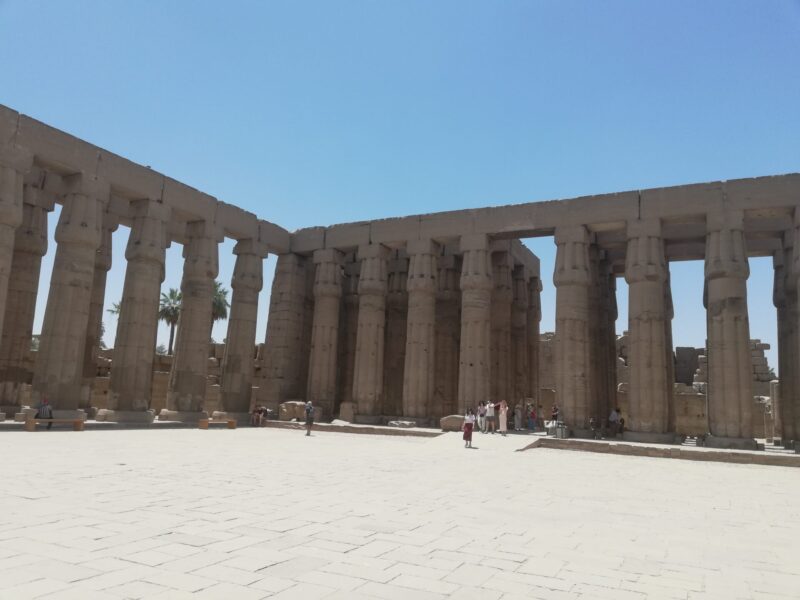
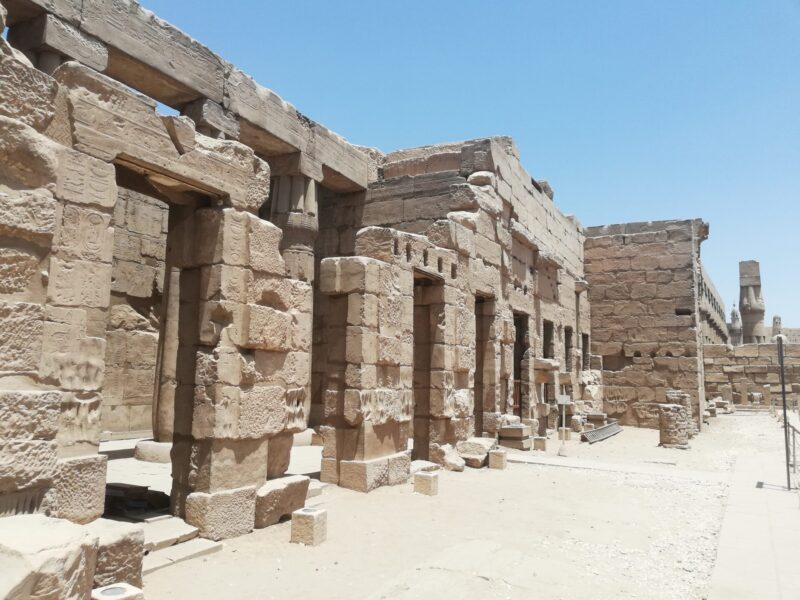
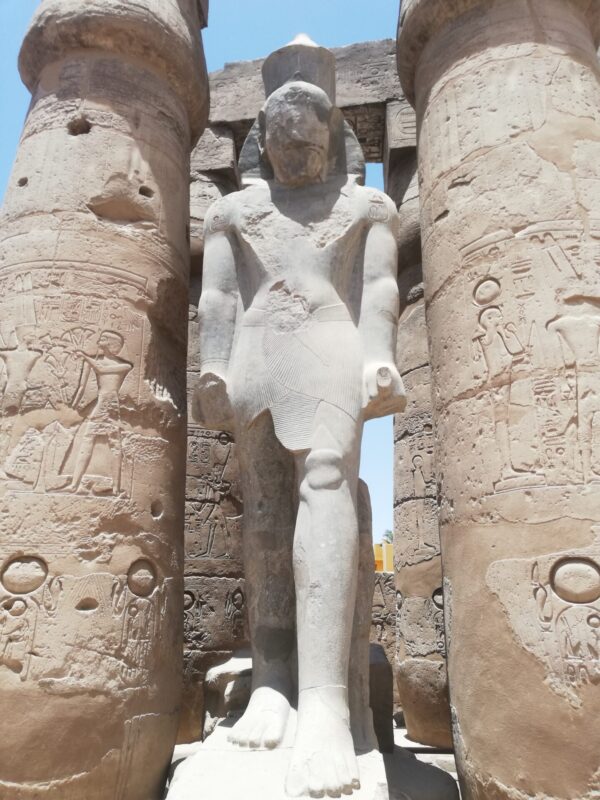
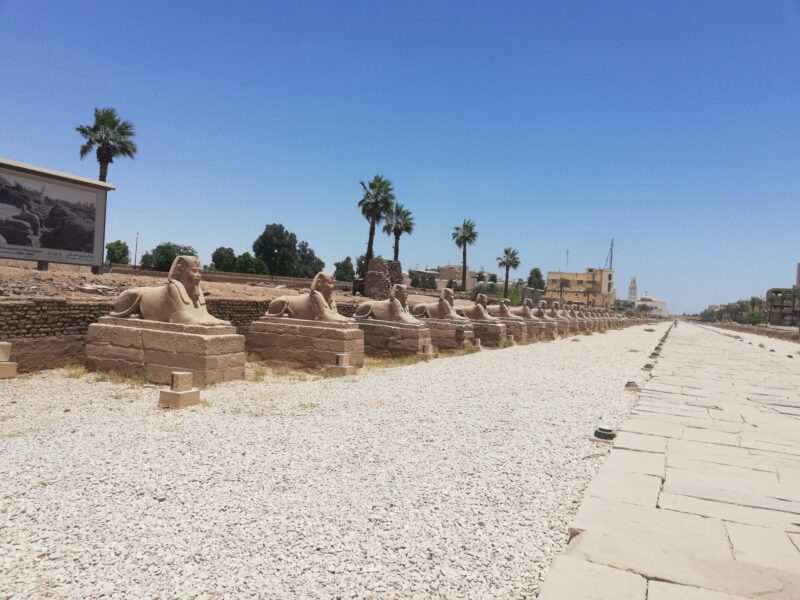
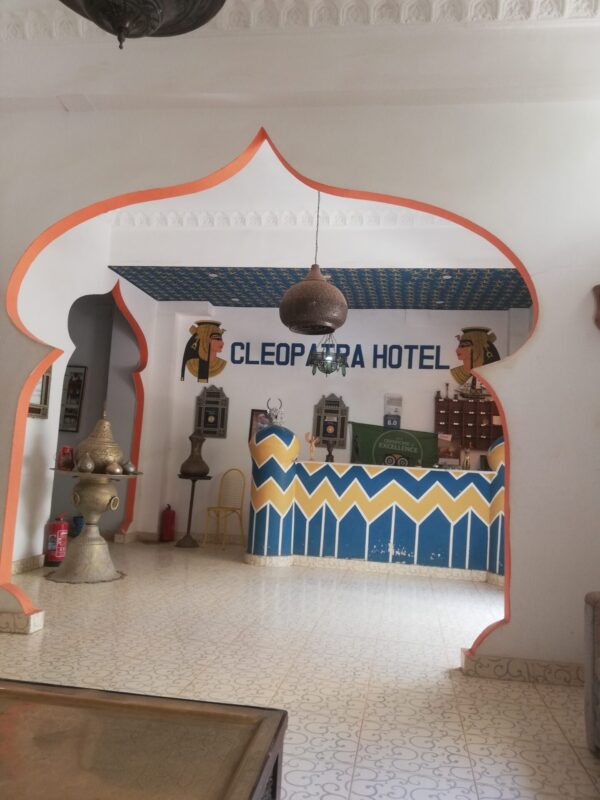
Day 69 (8th May) Luxor: Valley of the Kings, Hatshepsut and Medinet Habu.
The taxi driver (Hussain) who took us to the hotel arrived at 10 am as planned and drove us to the Valley of the Kings where, having paid to pass into the Valley, we discovered that we had to pay a lot more to get into many of the tombs. We did manage to see the tombs of Thutmose 1 and Rameses IV and saw many beautiful wall paintings.
Thutmose I was the first king to be buried in the Valley of the Kings in 1493 BC after reigning for 12 years. He expanded Egypt’s borders into the Levant and Nubia and had 5 children including a daughter, Hatshepsut. He came to the throne after his predecessor, Amenhotep I, died without an heir.
Rameses IV was born in 1176 BC and became king in 1155 before dying in 1149. He doesn’t appear to have achieved much but has a nice tomb that you can see without paying extra.
I suspect that, unless you’re an Egyptologist, when you have seen one tomb you have seen them all. All the beautiful stuff that was left there to accompany the Pharaoh to the next world has been removed and sent to the Egyptian or Luxor Museums, apart from that which Howard Carter stole and is now in the British Museum
The Hatshepsut temple was pure crap. We wanted to walk round but the guard at the Thutmose I tomb told us it was shut. “Rubbish” said Hussain as he drove us round and, true enough, hordes of tourists were thronging round the ticket office. We spent good, hard-earned, money buying tickets, joined the throng making its way through an arcade with hordes of men stuffing tat in our faces and demanding that we buy it until we came to a place where, for more money, we could buy tickets for an electric vehicle which would transport us for 200 yards to the tomb. We walked!. Then we climbed a huge flight of steps, to the top and then down another huge flight to the tomb which we couldn’t see because it had been roped off!!!!!!!!!!!!!!!! An old git offered to take pictures for us and for some badly-taken pictures he demanded a “tip”. I don’t know if he understood the meaning of “f**k off” but I bet he has heard it many times. A complete waste of time and money. I took great pleasure in shouting “waste of money” as all the vehicle-loads of selfie-stick halfwits passed us on the way up to the temple.
Medinet Habu, on the other hand, was brilliant. We were spellbound by the wall paintings and how fresh they looked after thousands of years. We were able to go into some of the roped-off rooms because a friendly guard let us in when the armed police weren’t watching. I think its because we were genuinely interested in the temple rather than wanting only to take pictures of ourselves. He is probably as sick of the posers as we are. We thoroughly enjoyed it.
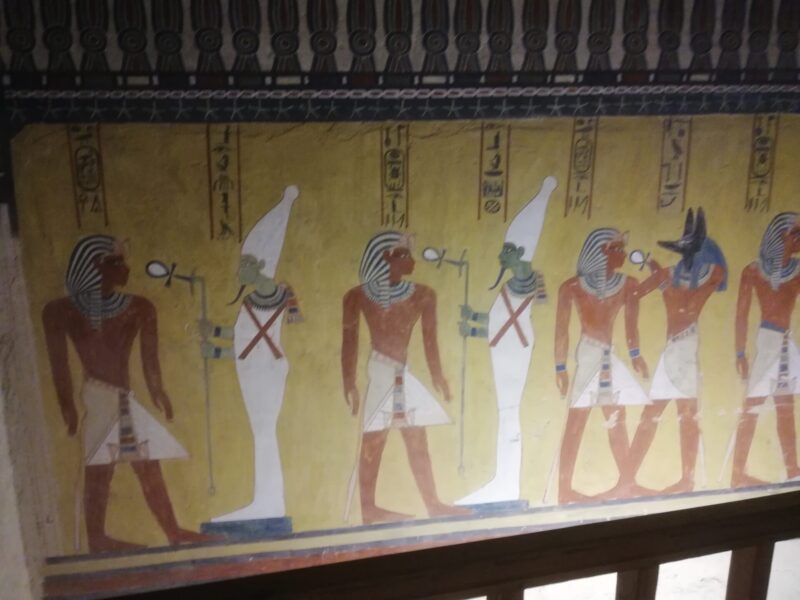
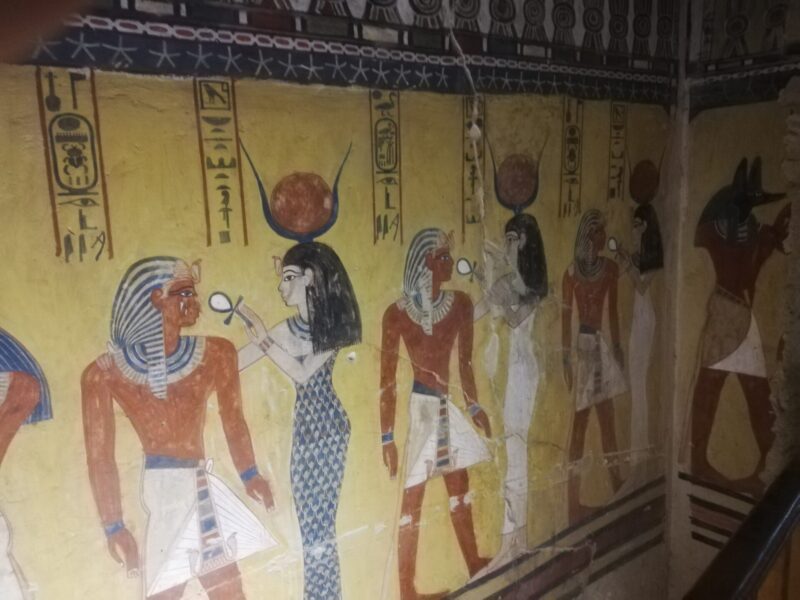
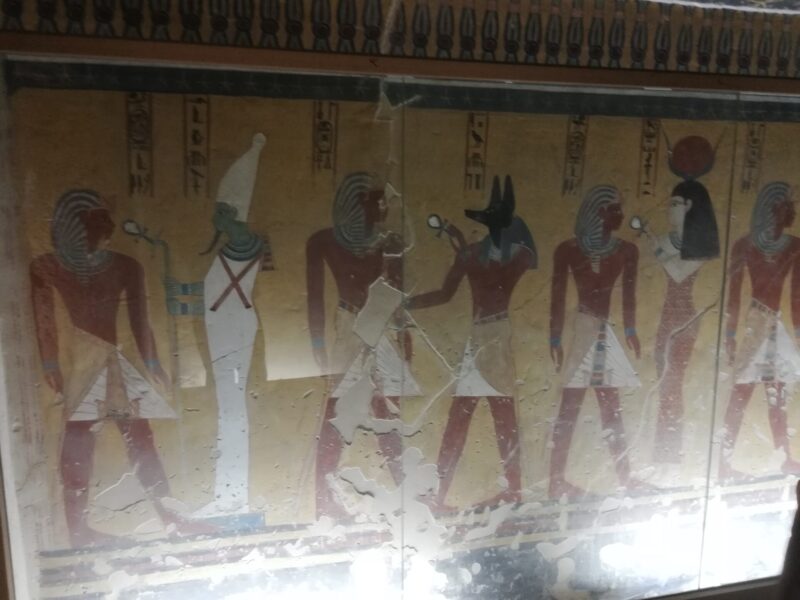
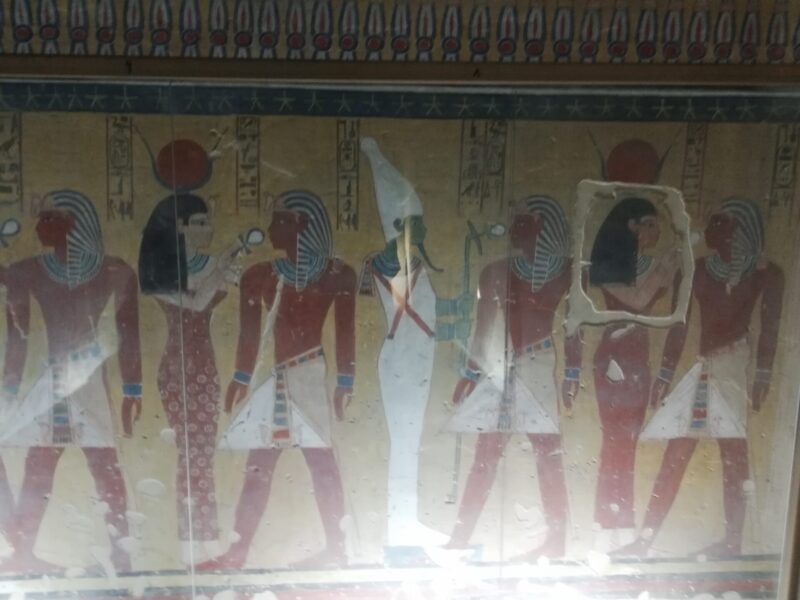
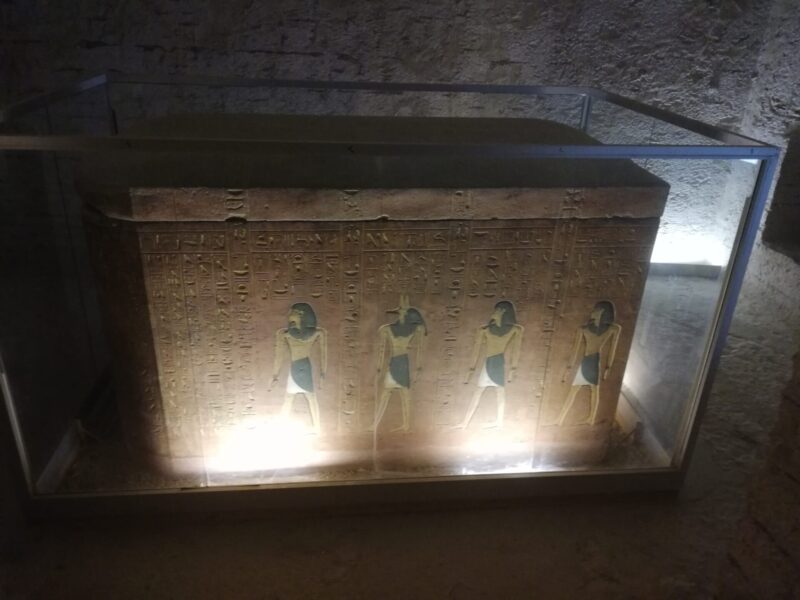
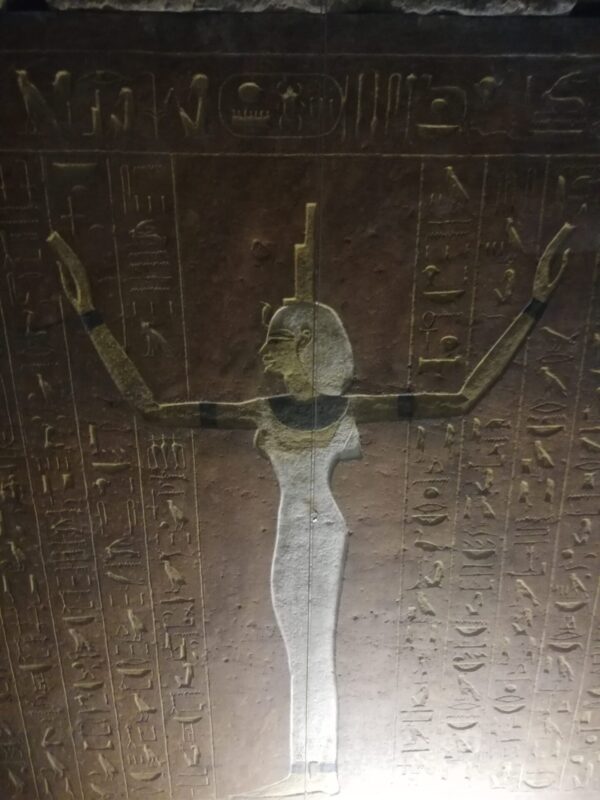
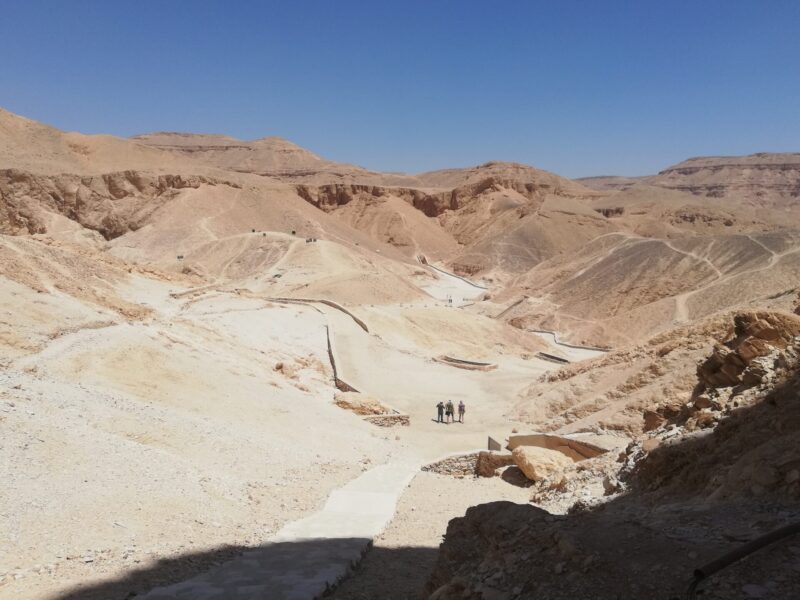
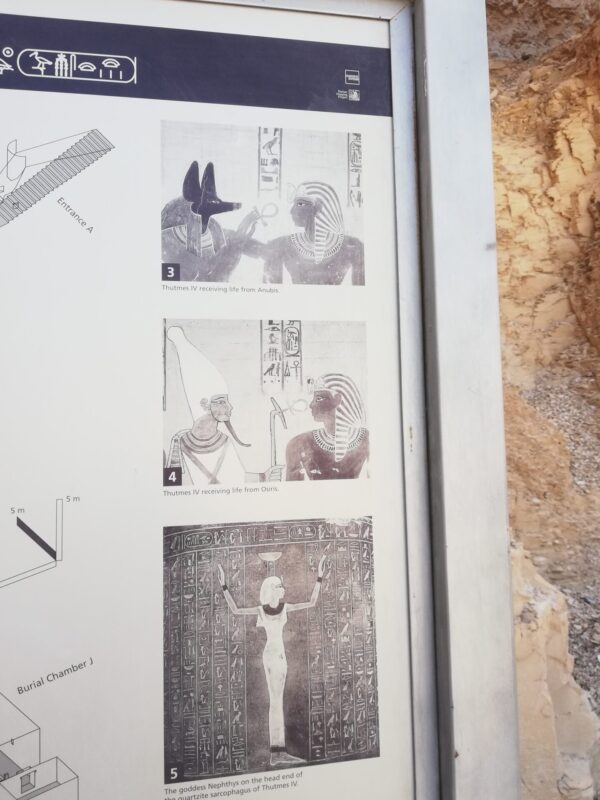
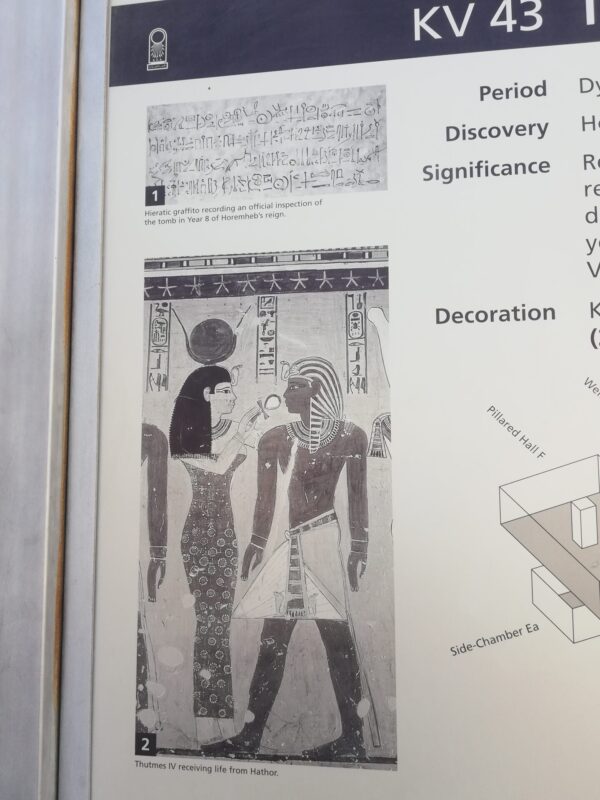
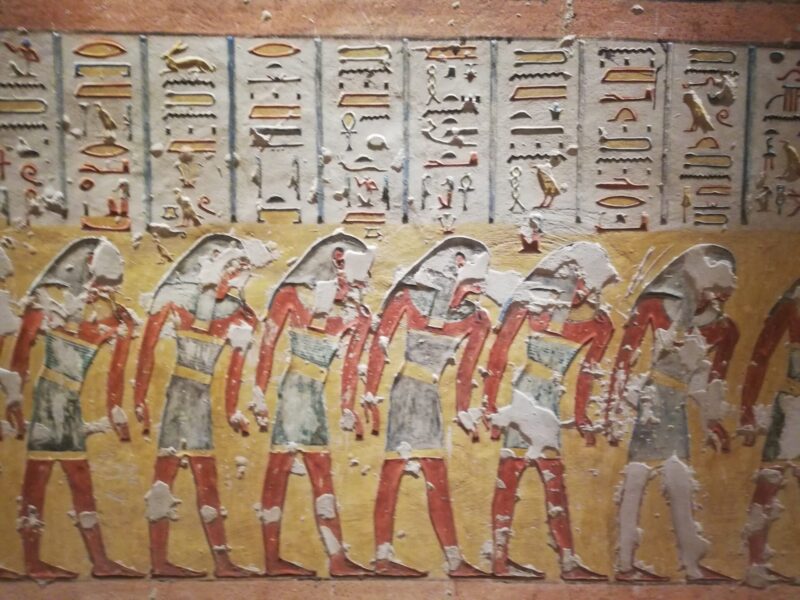
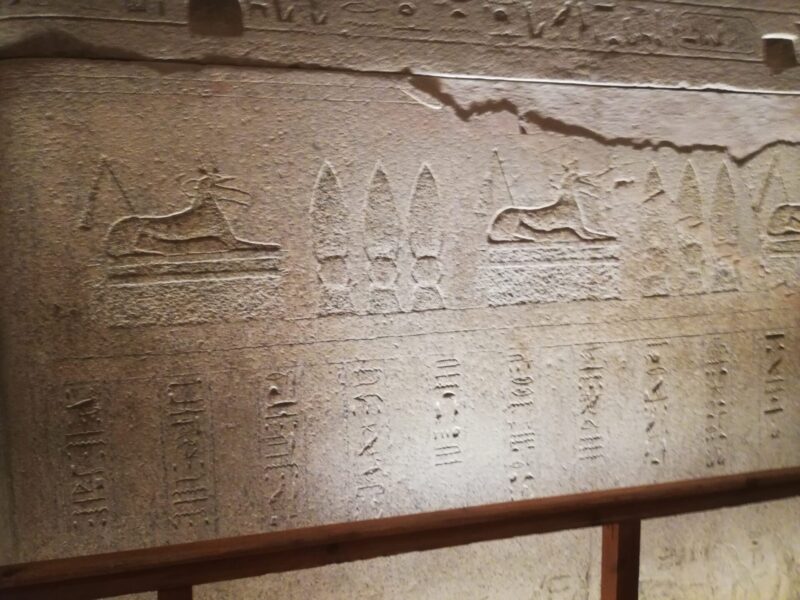
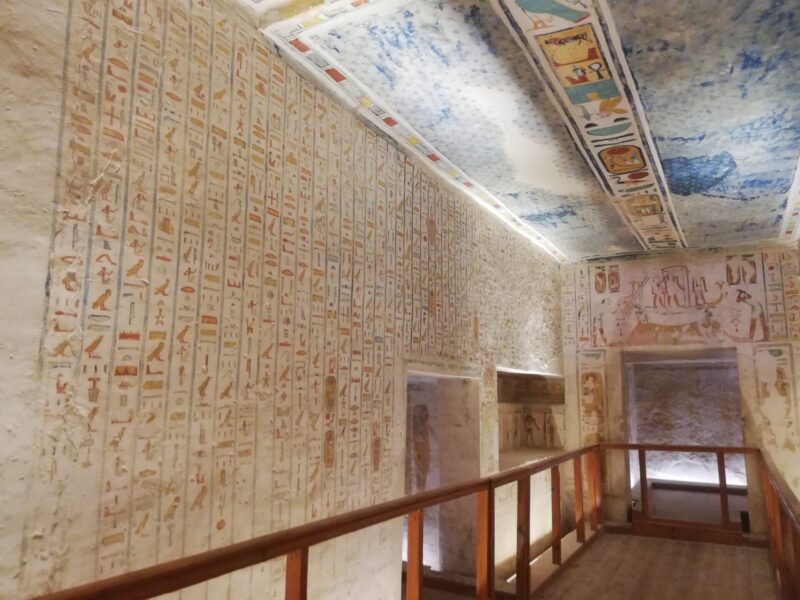
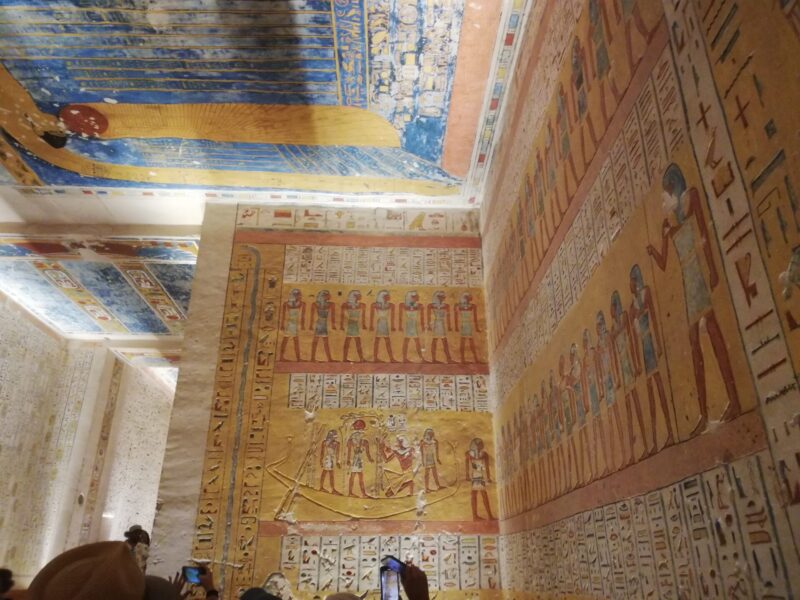
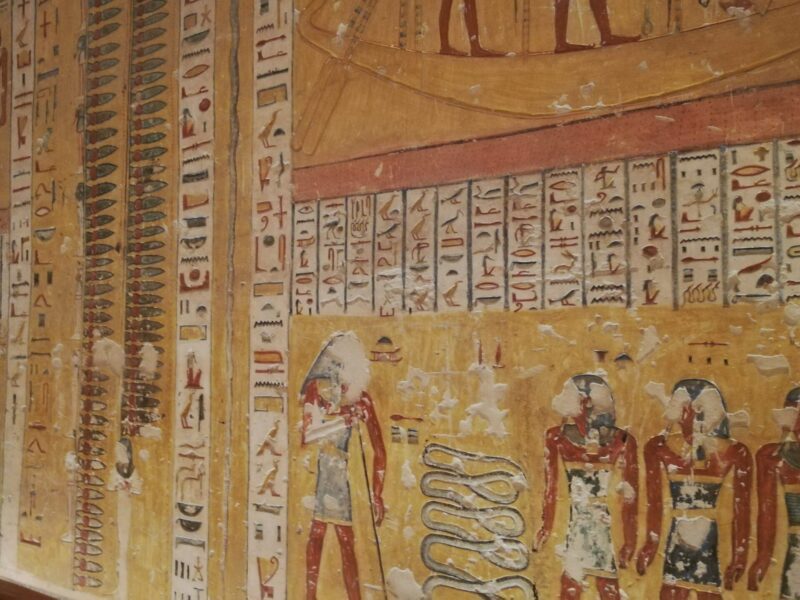
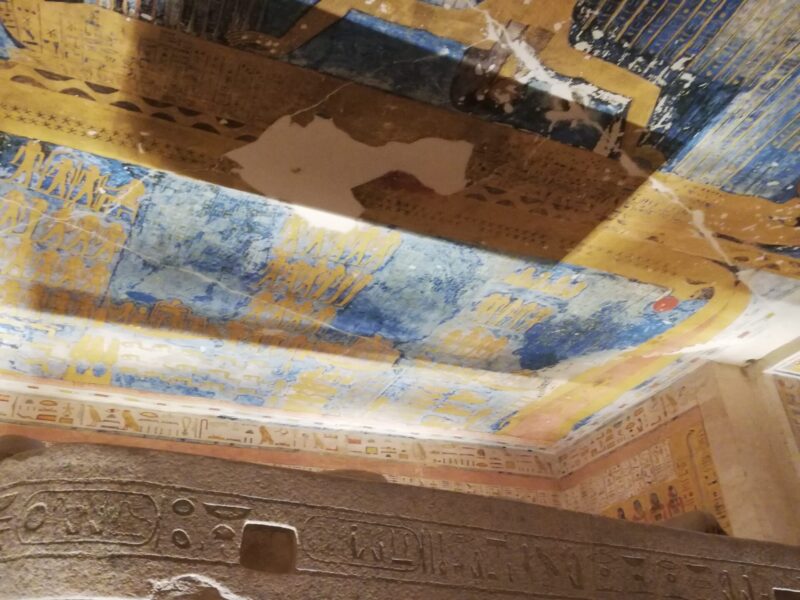


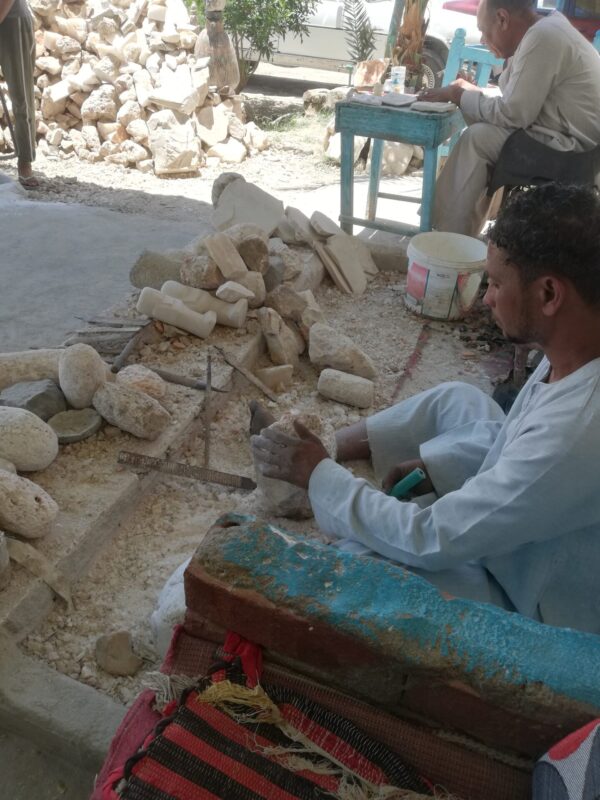
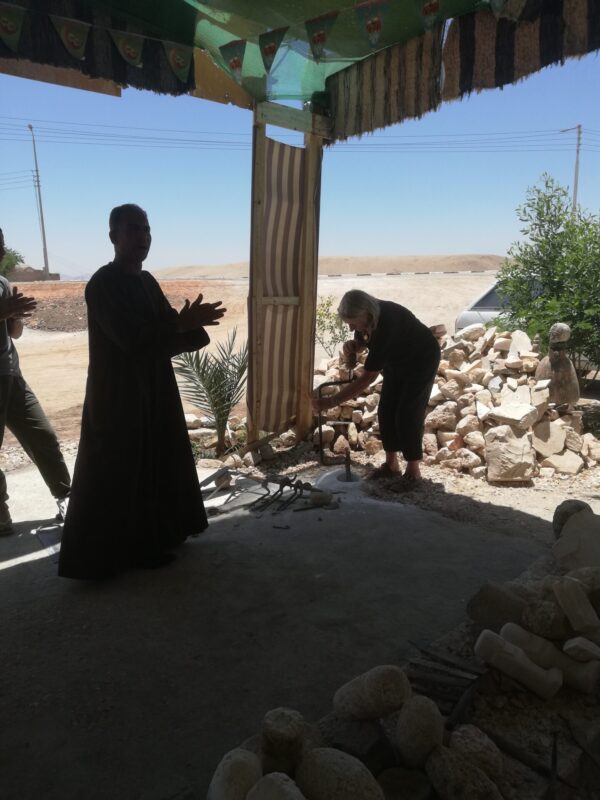

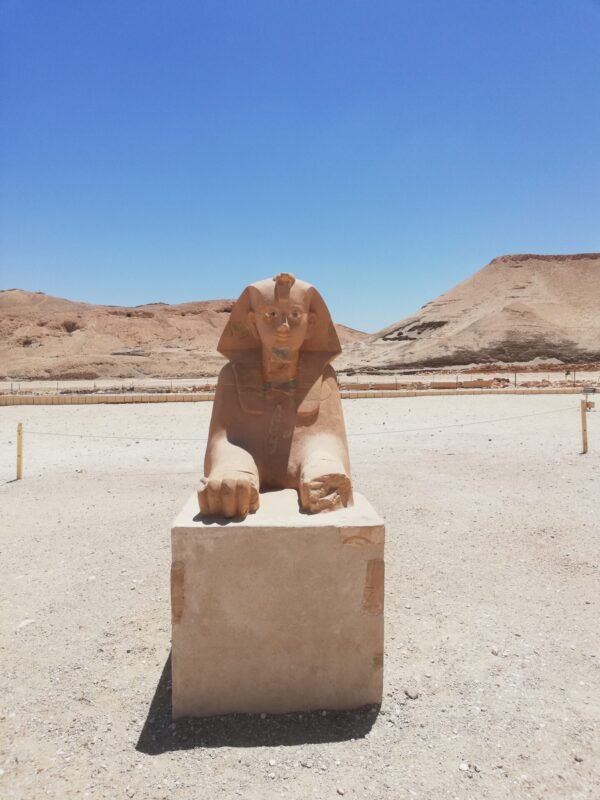

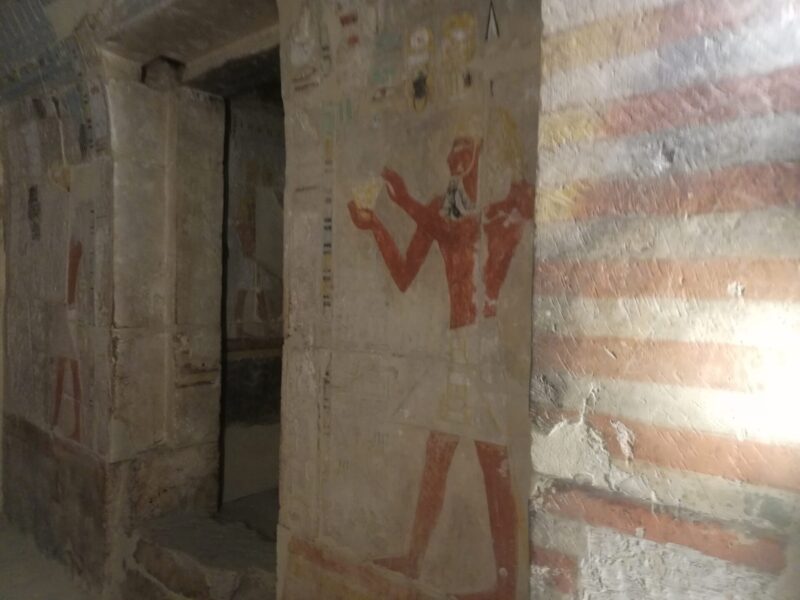
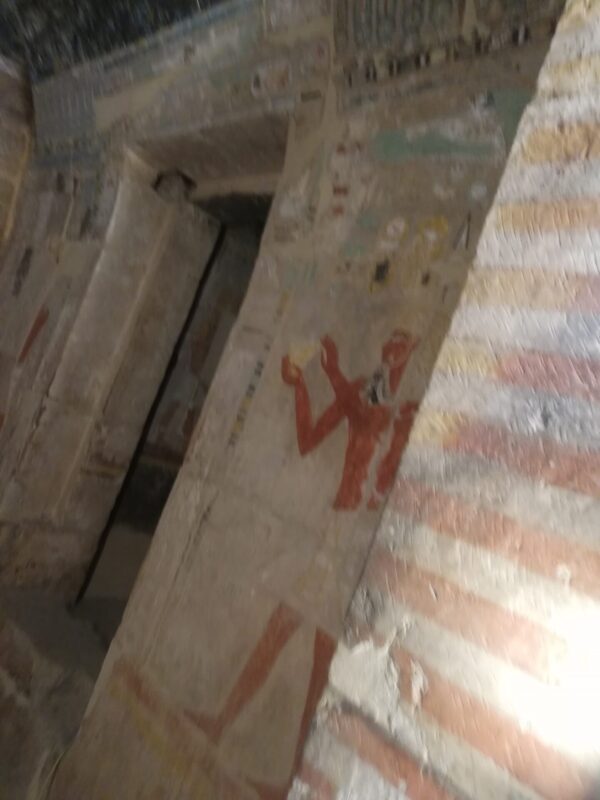
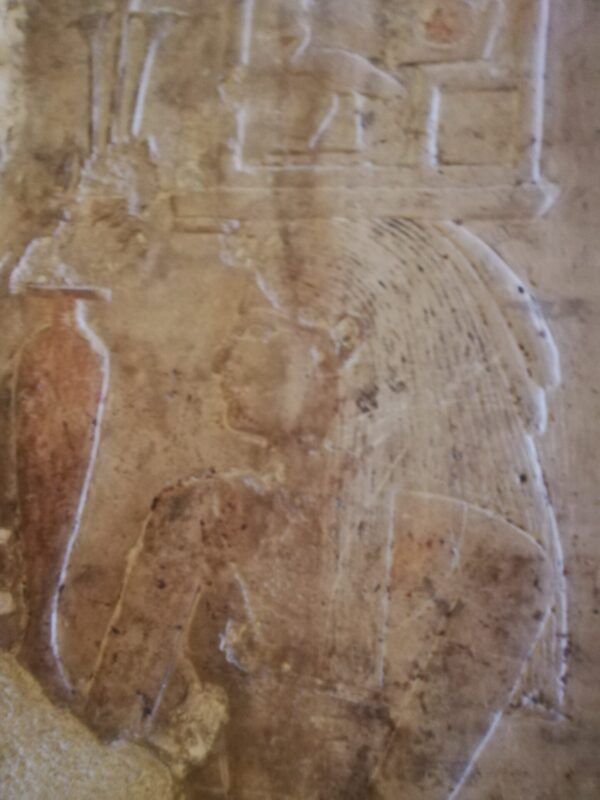
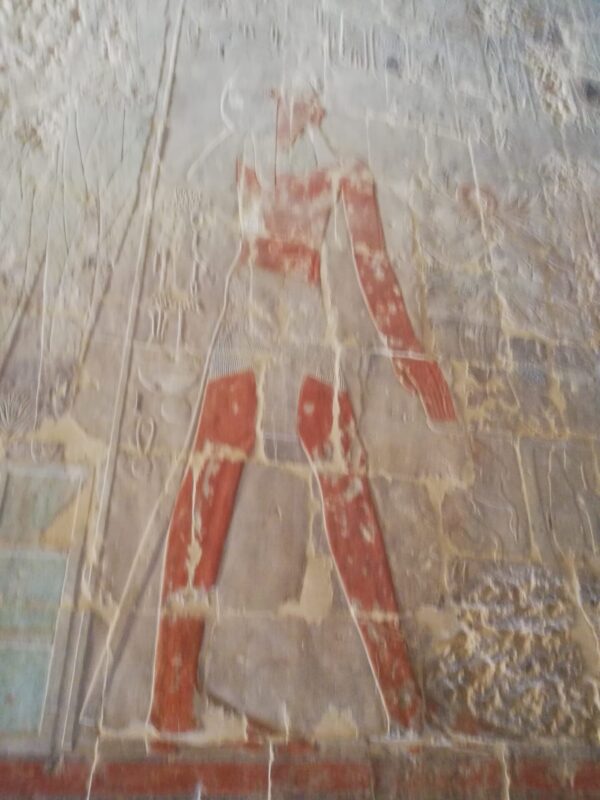
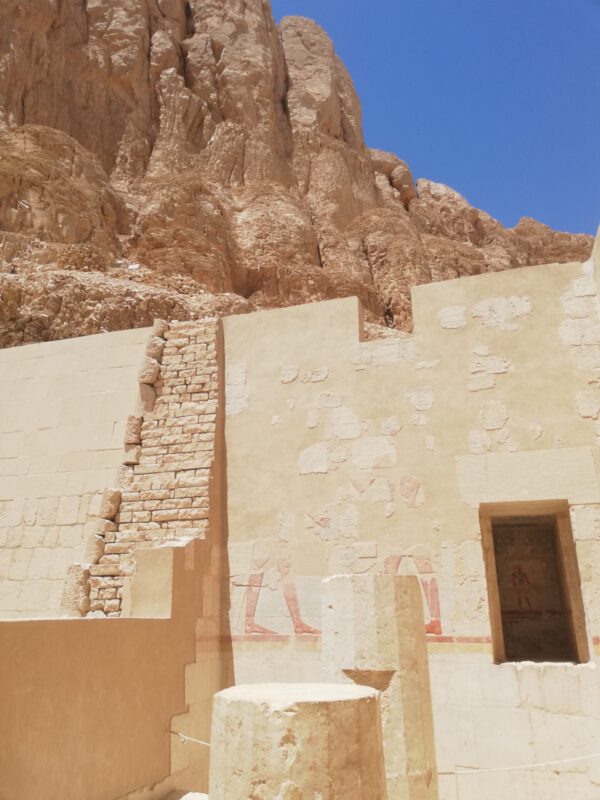

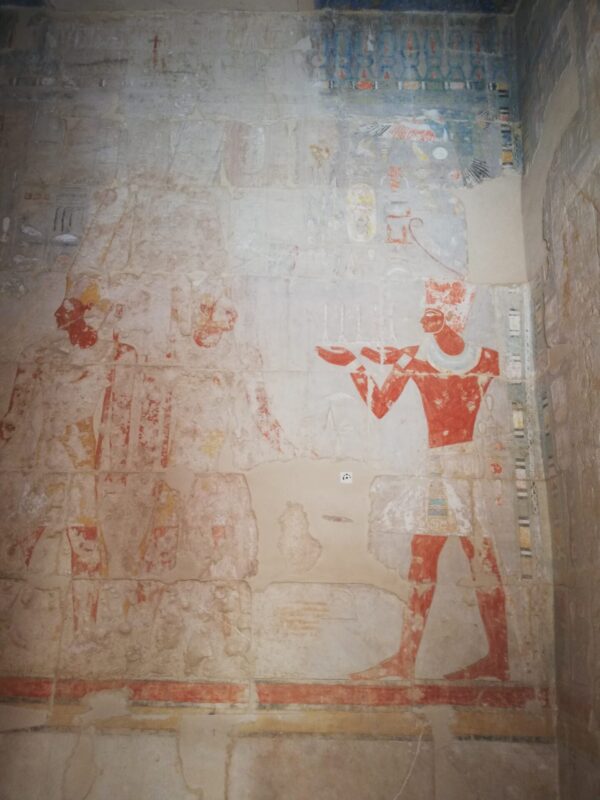
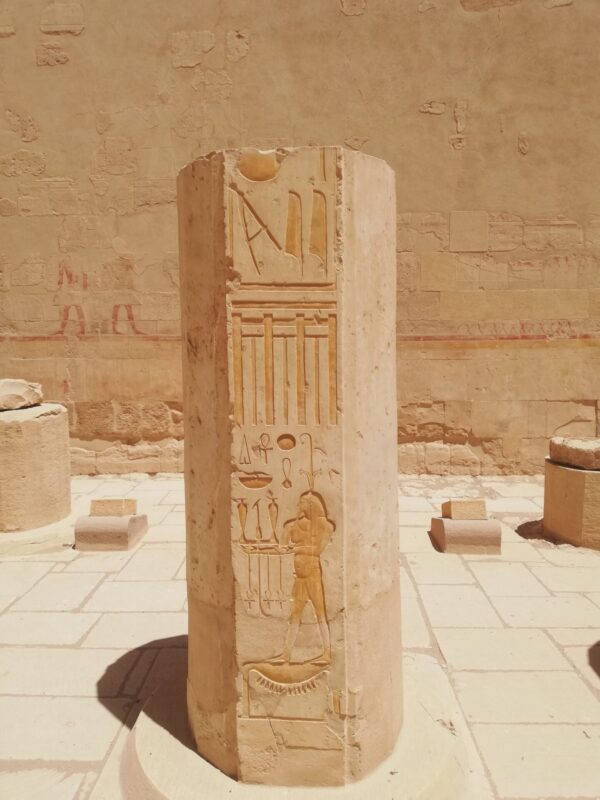
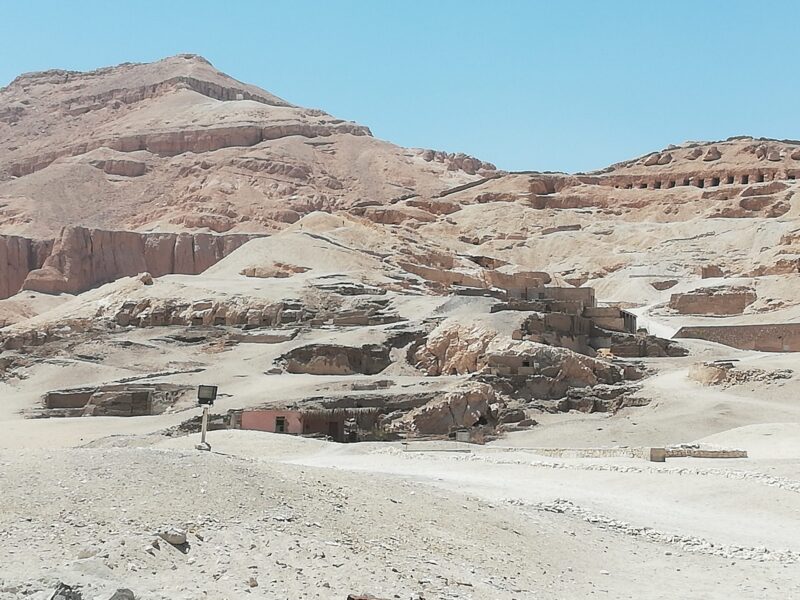

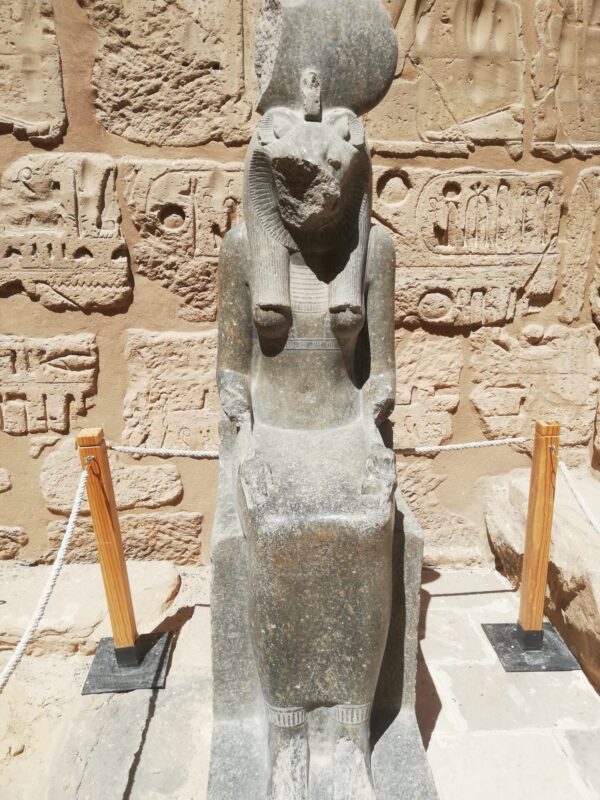
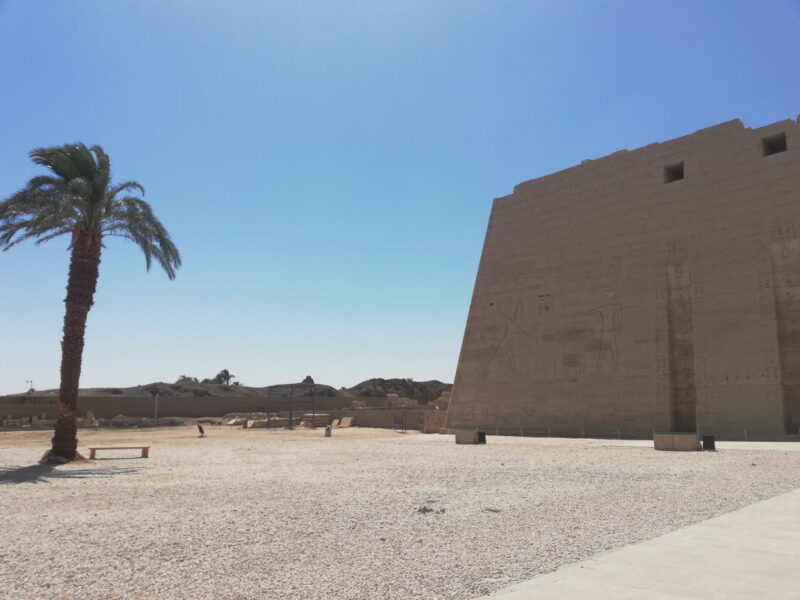
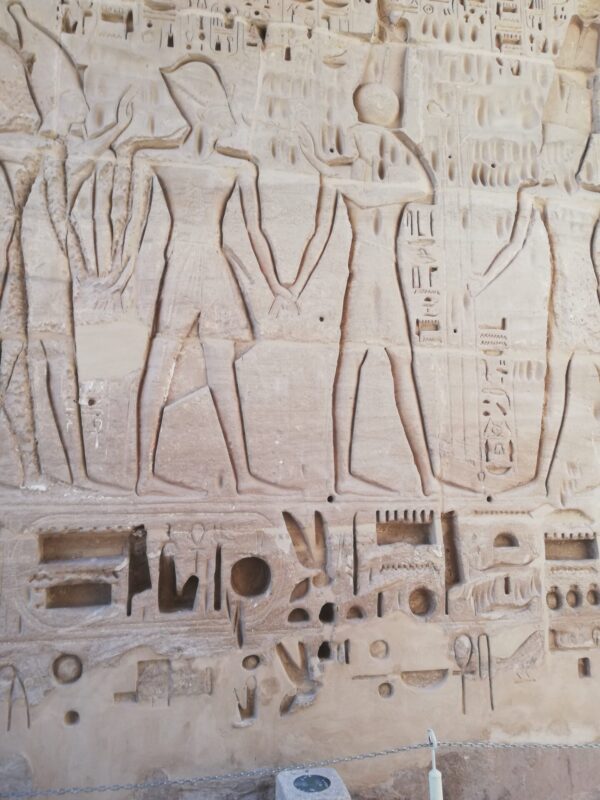
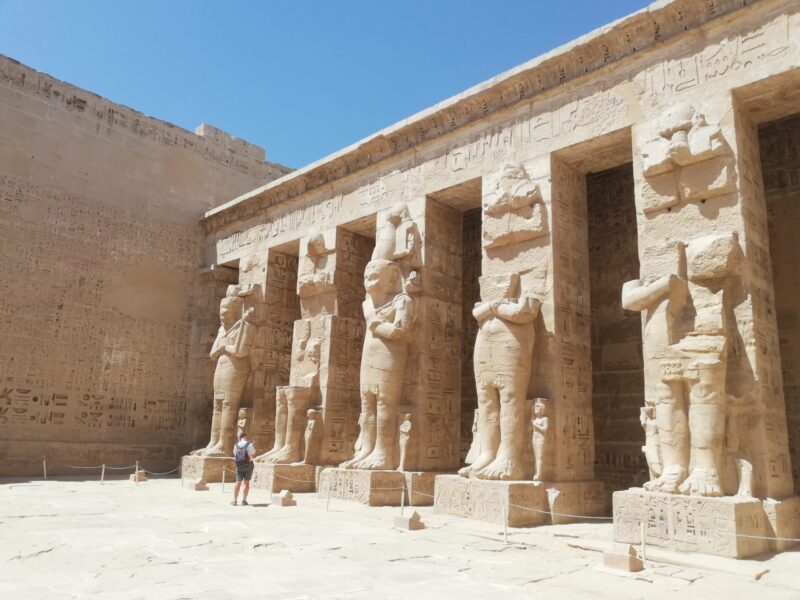
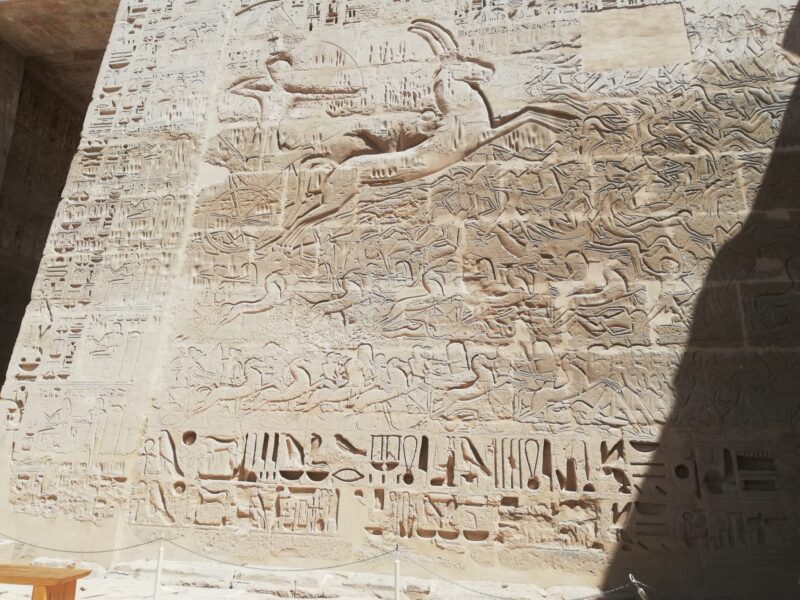
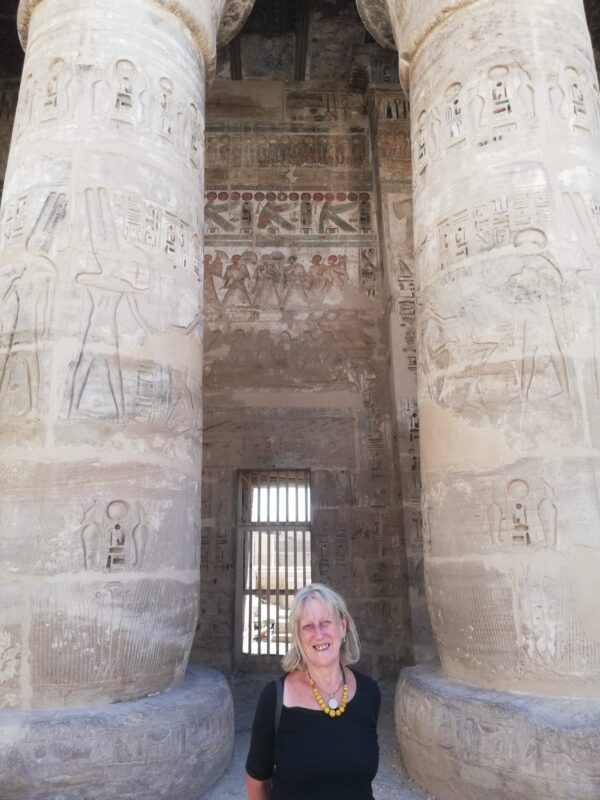
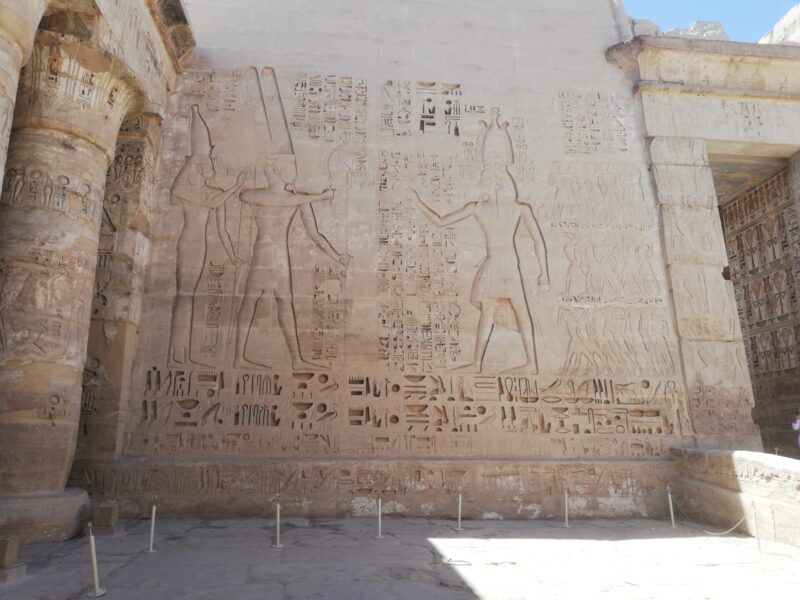
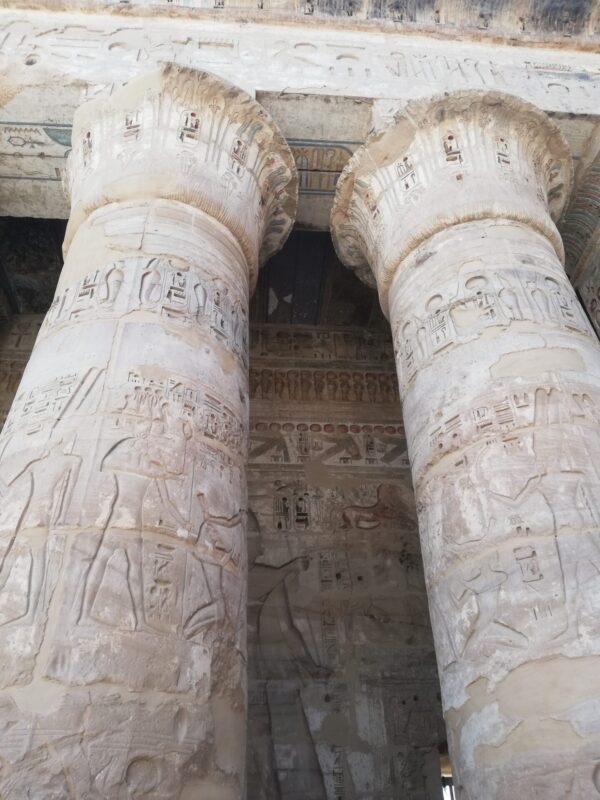
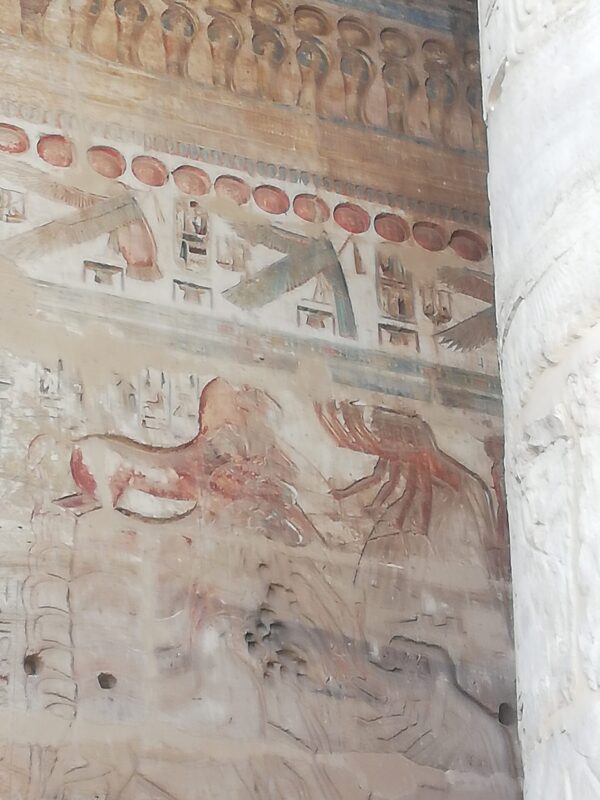
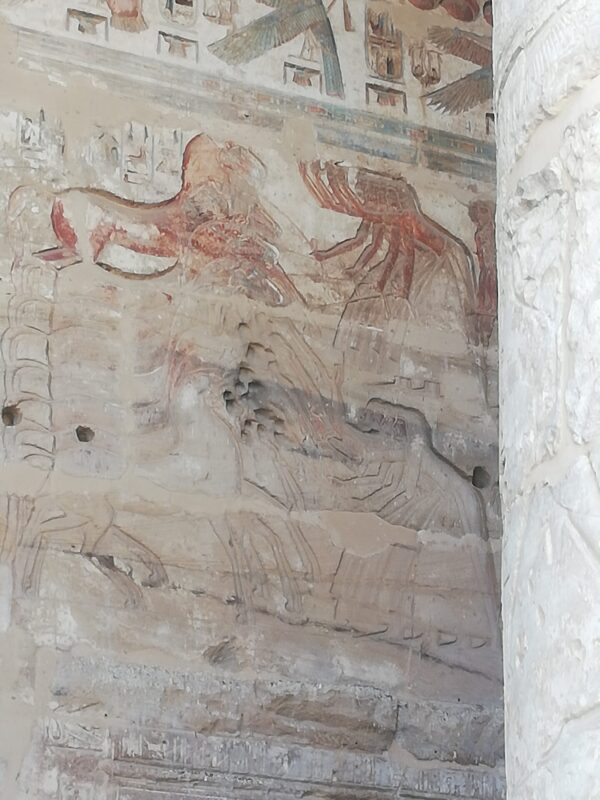
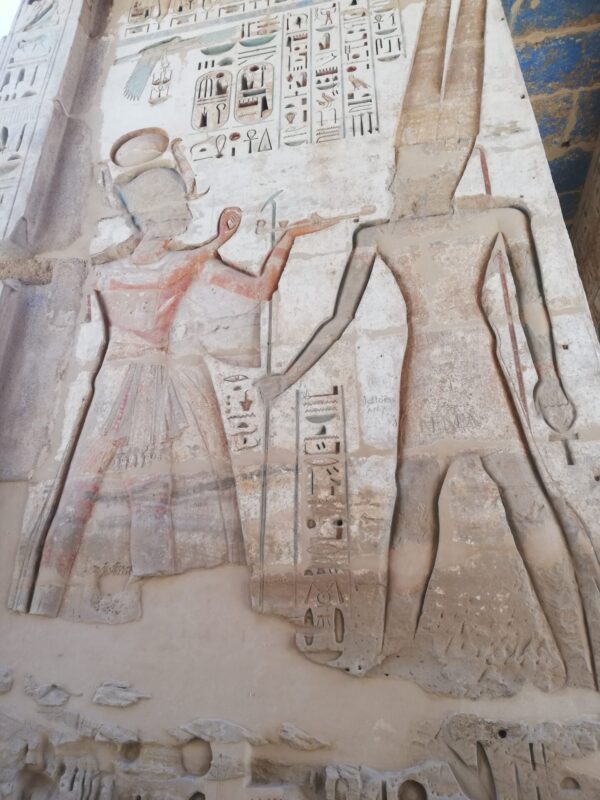
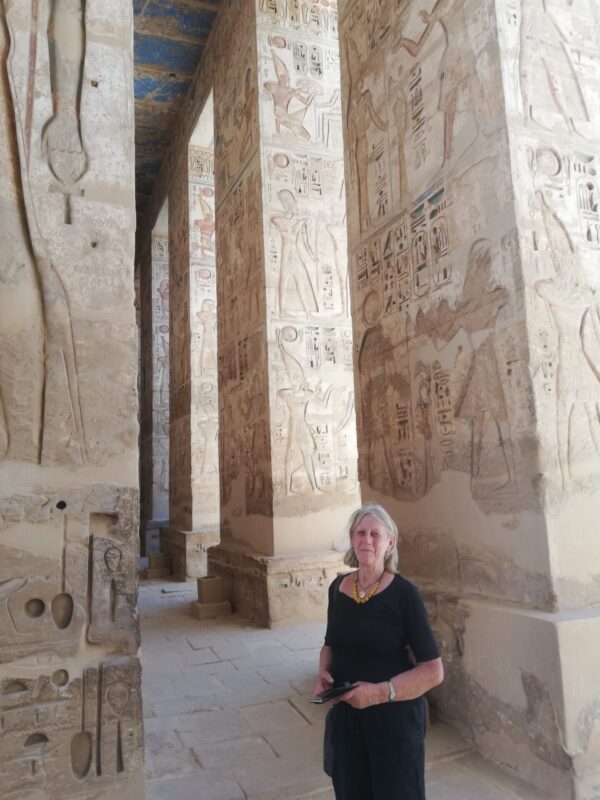

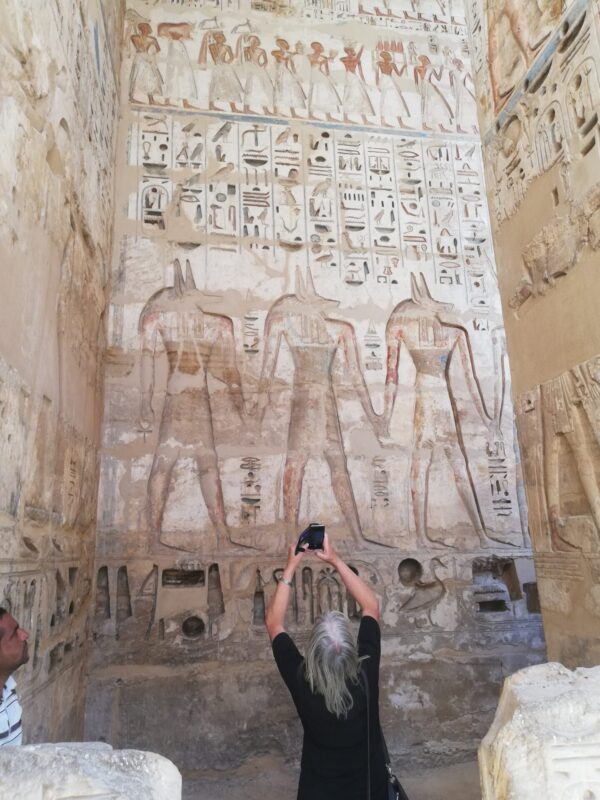
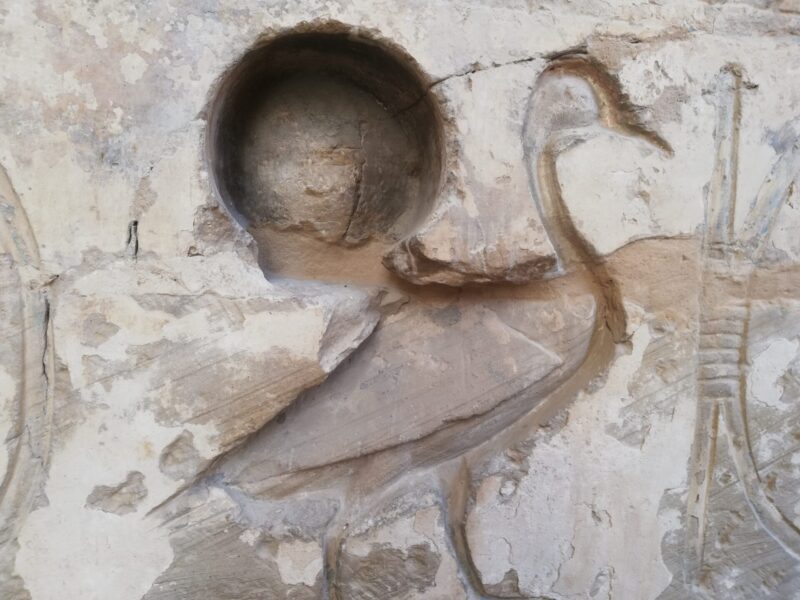
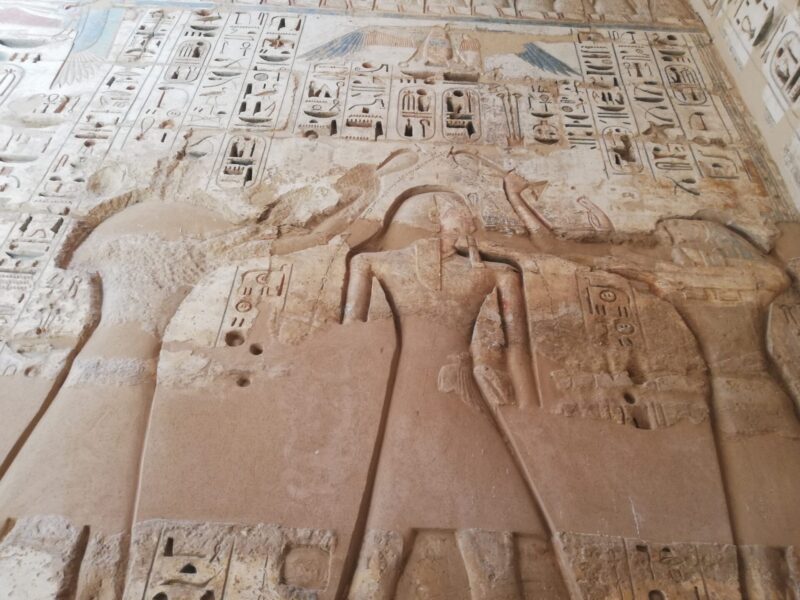
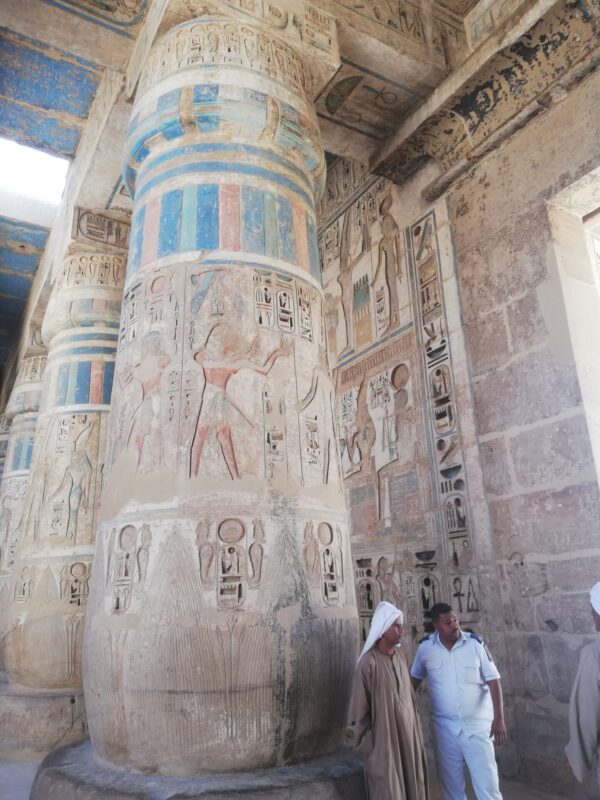
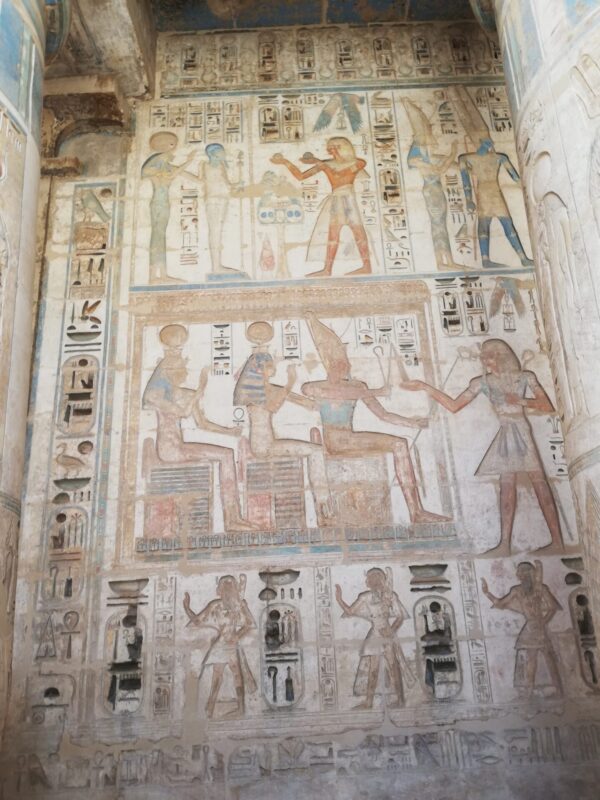
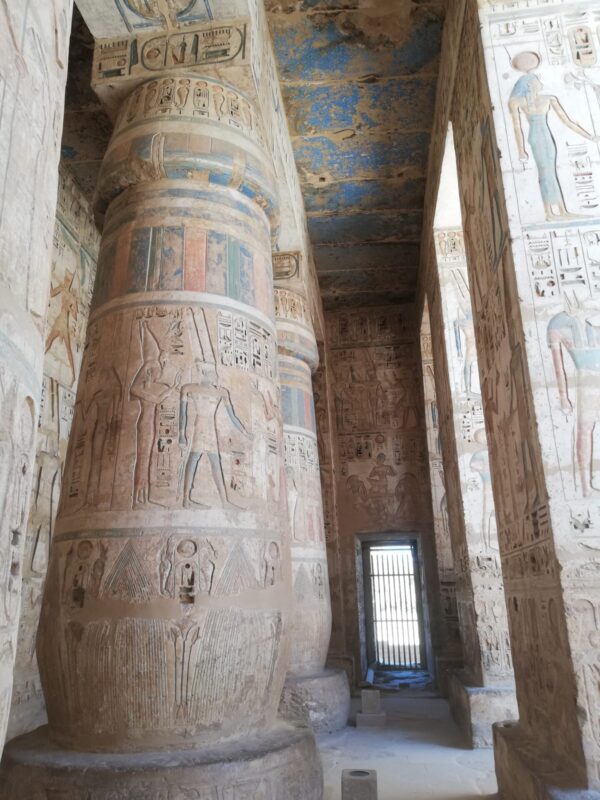
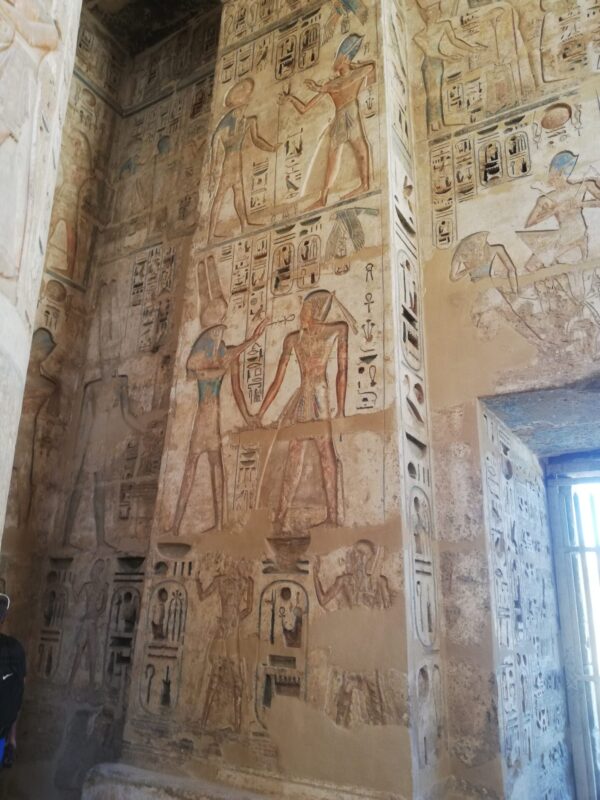

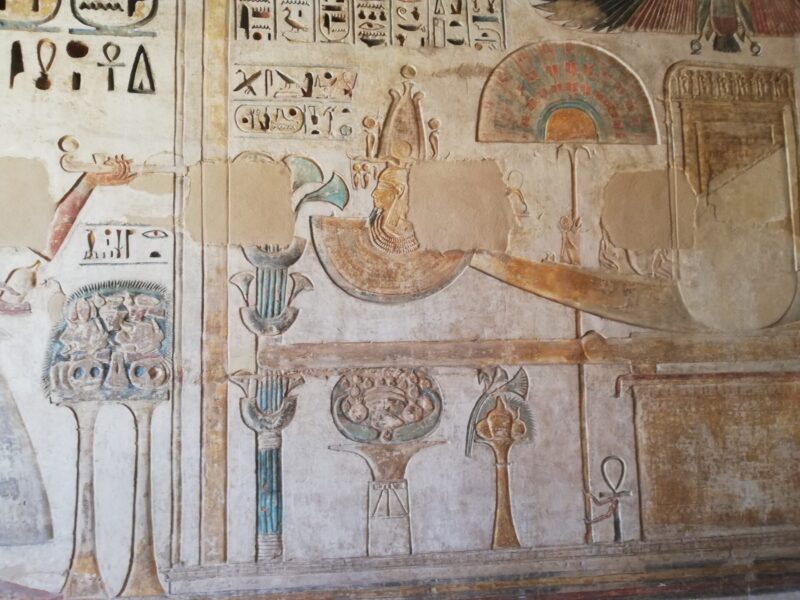
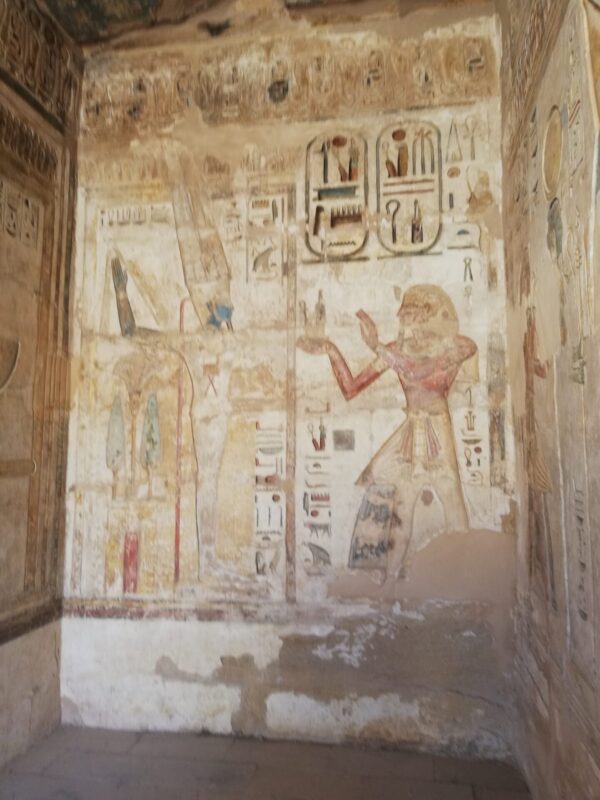
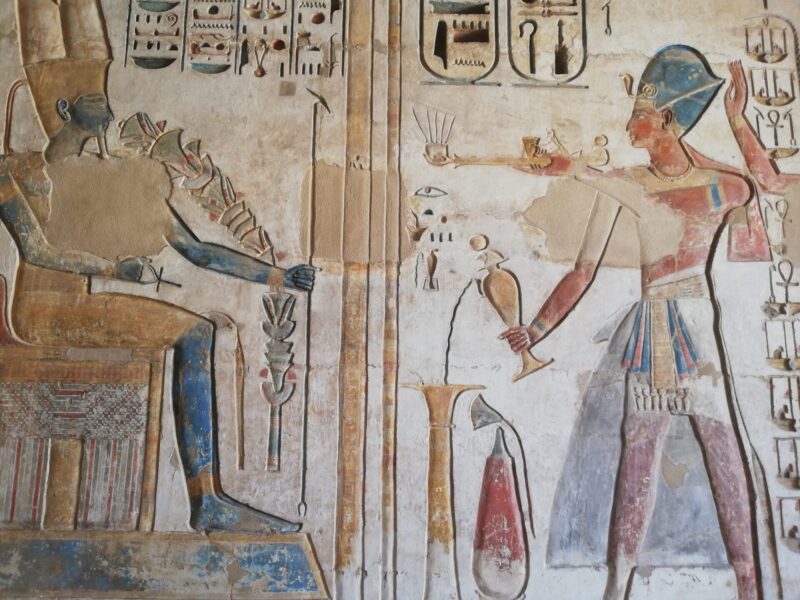
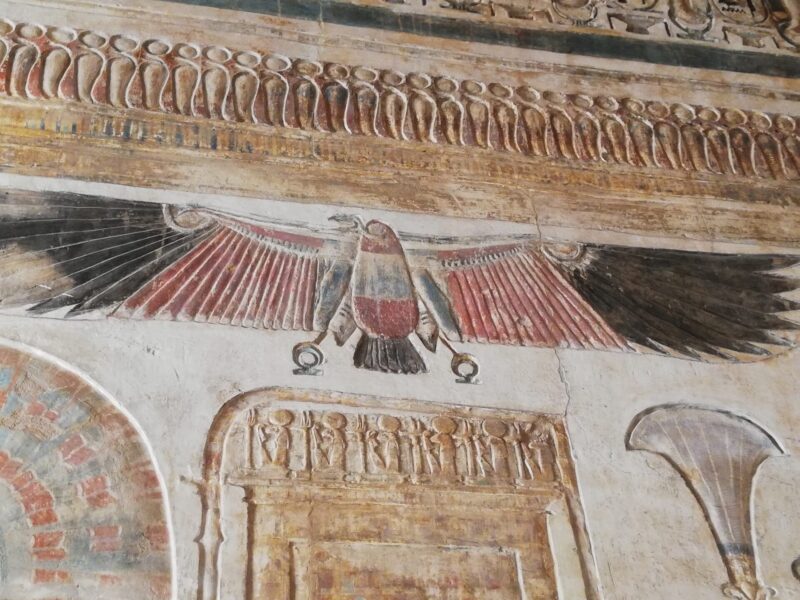

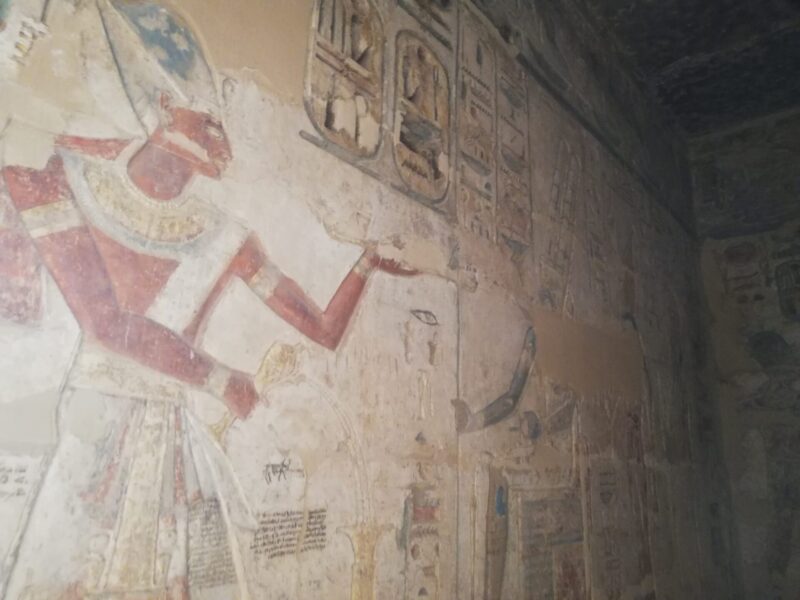
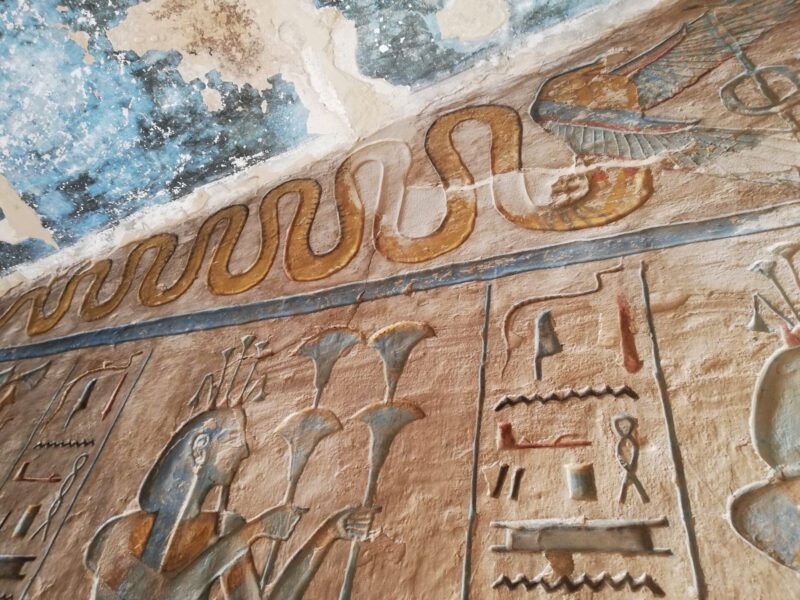
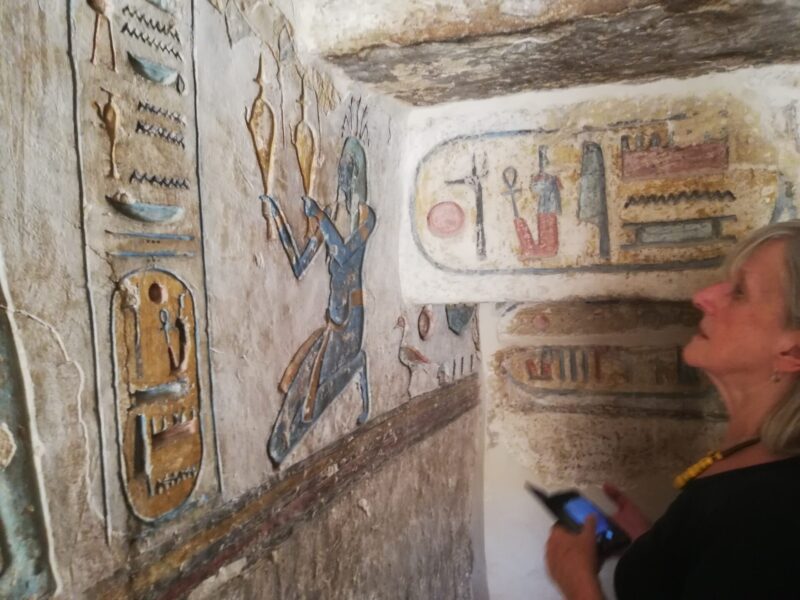
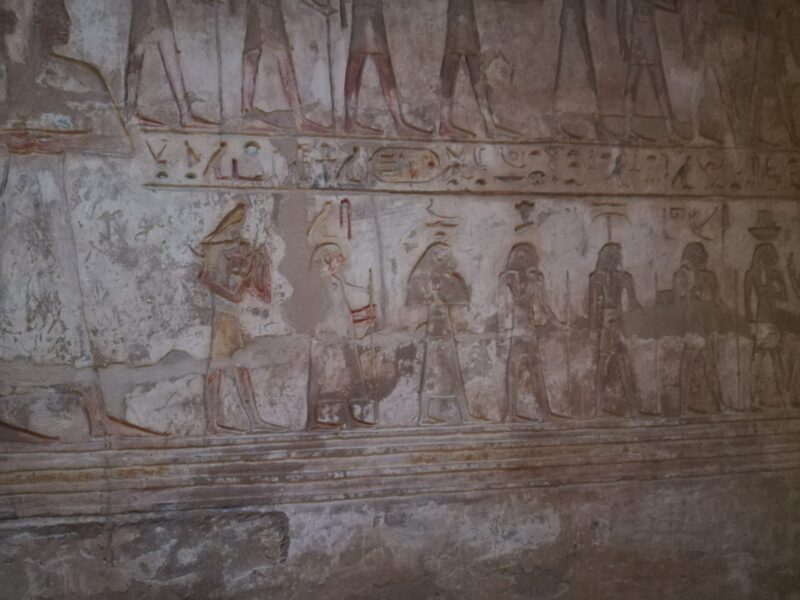
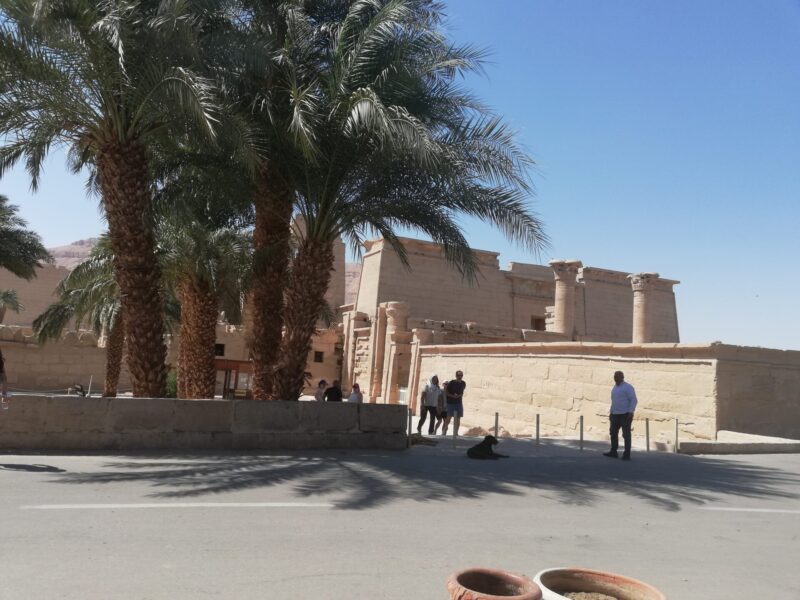
Day 70 (9th May) Luxor to Aswan
We were tempted to take a Nile cruise from Luxor to Aswan and visited several travel agencies who got it into their heads that we wanted to travel on a felucca (motorised sailing ship) rather than a big ship. We thought we had done well to get the price down to £200 until we were told, just as we were about to get the money out, that this was per day and the journey would take three days. So we decided to go by train. A trip across the Nile on the ferry and a taxi ride to the station took us to the booking office where we were told that the next train was at 7 pm (entailing a 6-hour wait) and would cost £30. A man loitering nearby said “get a taxi for £44 and you will be in Aswan before the train sets off”. So that’s what we did with a very jovial driver practising his 6 words of English on us for perhaps 300 miles.
He dropped us next to an ATM so we could pay him, and I noticed that the “Nile View” hotel was next door. So we stayed there for £28 of which £25 was for the magnificent view of the Nile, a stones throw away, and £3 for the hotel. There was no knob on the bathroom door and Jennifer succeeded in getting herself locked in, Two blokes came and worked on the door for 40 minutes before they finally managed to open it and let her out. She was very cross, especially as the manager, who looks as if his wife kicks him in the nads and horse-whips him out to work every morning, could not bring himself to say sorry. Its a good job Volkswagen don’t own this hotel; they would have advised me to go back to Birmingham and get a drill.
The hotel doesn’t serve meals which is just as well. The prongs would probably fall off the forks. Some cerebrally-challenged men pointed up a dank dingy side street where there were alleged to be some restaurants – dens of iniquity more like – so we crossed the street to a KFC where we took half an hour to point to a “shrimp twister” and a “surf and turf” on the wall to some inbred retard and tried to get him to understand that we wanted one of each. Half an hour later we got them and they were quite good.
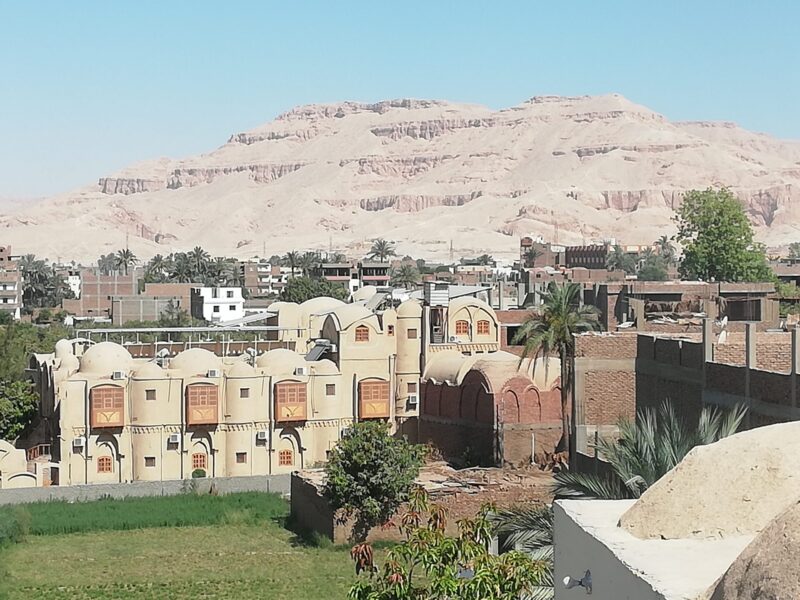
View towards the Valley of the Kings from our hotel
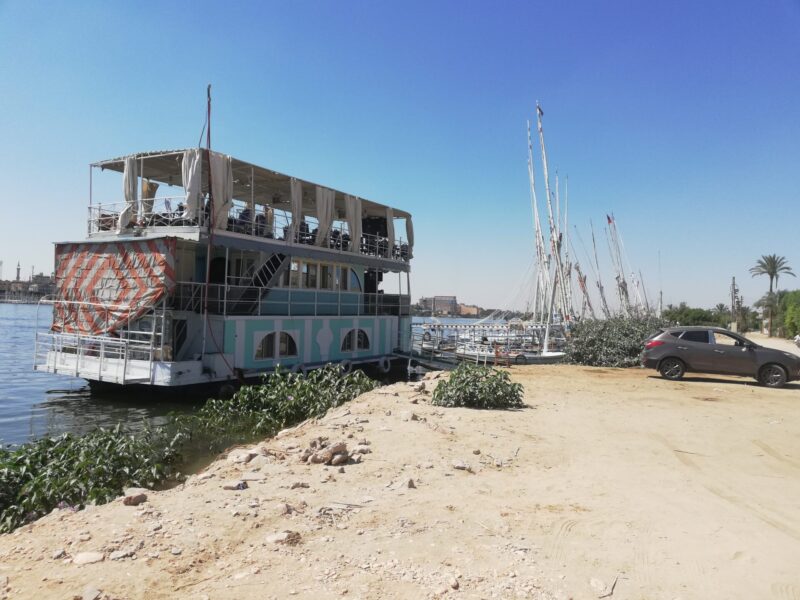
River boat and feluccas
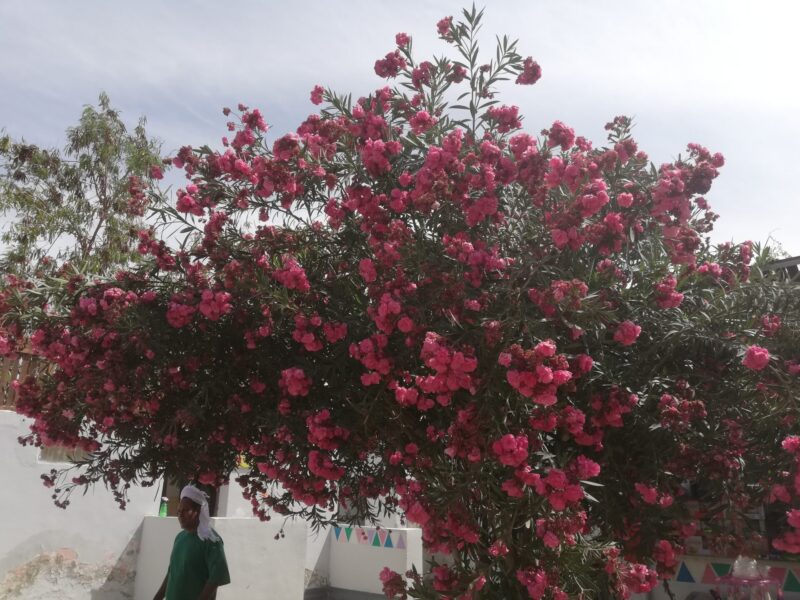
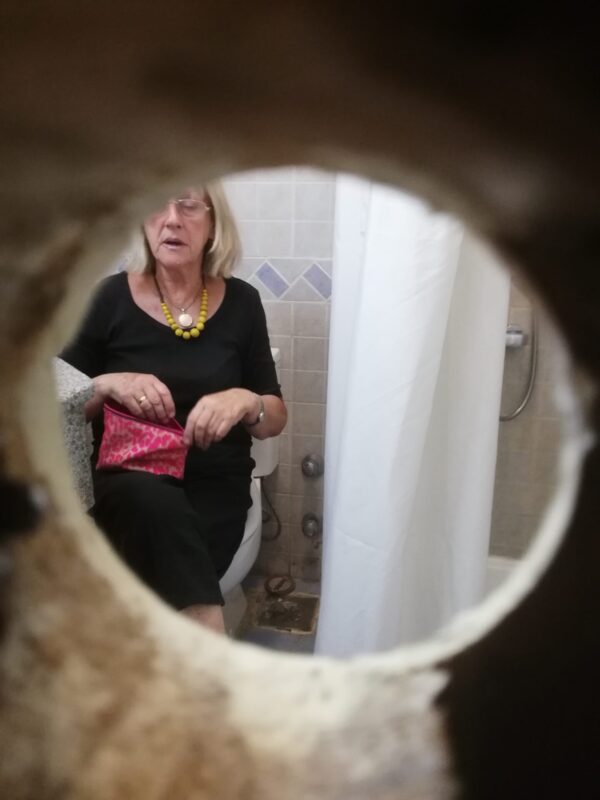
Jennifer stuck in the bog
Day 71 (10th May) Aswan to Abu Simbel.
Abu Simbel (40 kms north of Sudan) is as far south as we are going. We had a brilliant time arguing with about 10 taxi drivers who started by quoting 6000 Egyptian Pounds for the journey to Abu Simbel, then 3,000 then 2000, 1900, 1800 and 1700 while we insisted on 1500 (£30) before a new elderly bloke turned up and quoted 1600. So we thought OK and got into his car while the 6000 bloke was shouting 1500 1500 1500 and trying to pull us out. We are getting quite good at this haggling lark. Our driver deserved a tip so we gave him 200 before he could ask for 300.
The driver evidently does this run often enough because he knew an excellent hotel to take us to: the Tuya only 300 metres from the temple. A little pricey at £64 a night but very traditional. Just the sort of place we like. I walked down in the roasting heat to the temple and was amazed at how Lake Nasser (which starts at the Aswan Dam 175 miles downstream) burgeoned out into a huge sea.
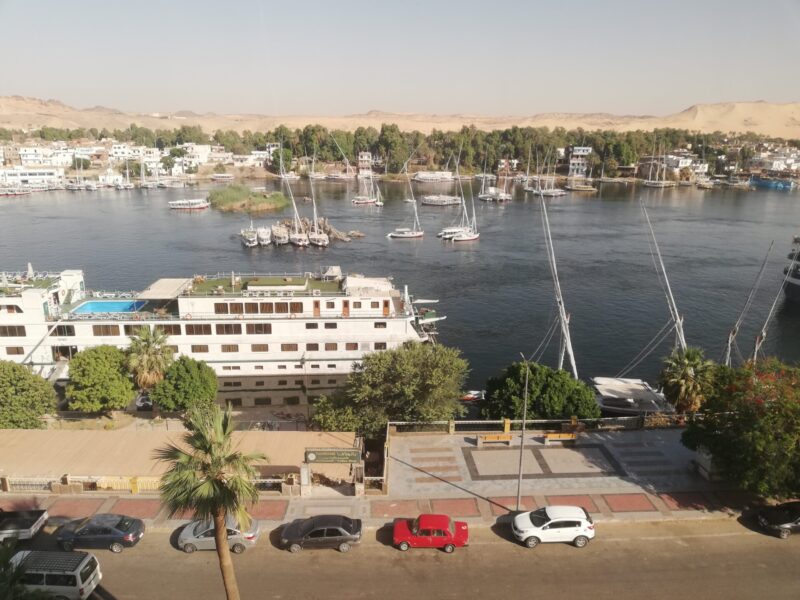
The Nile from our hotel in Aswan
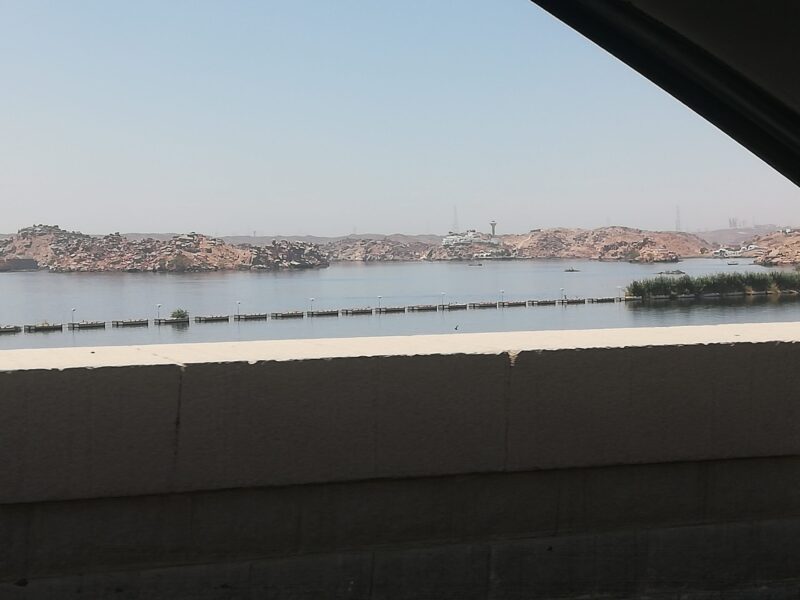
Crossing the Aswan Dam. Lake Nasser in the background
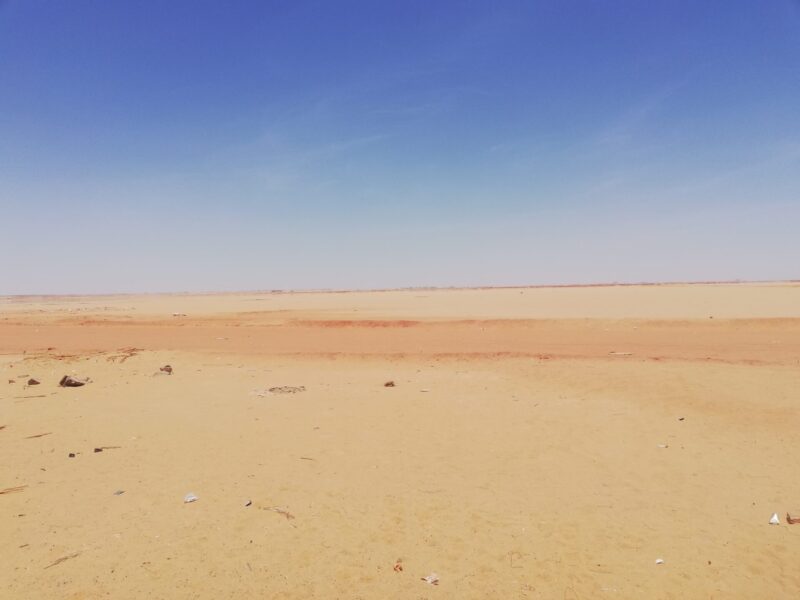
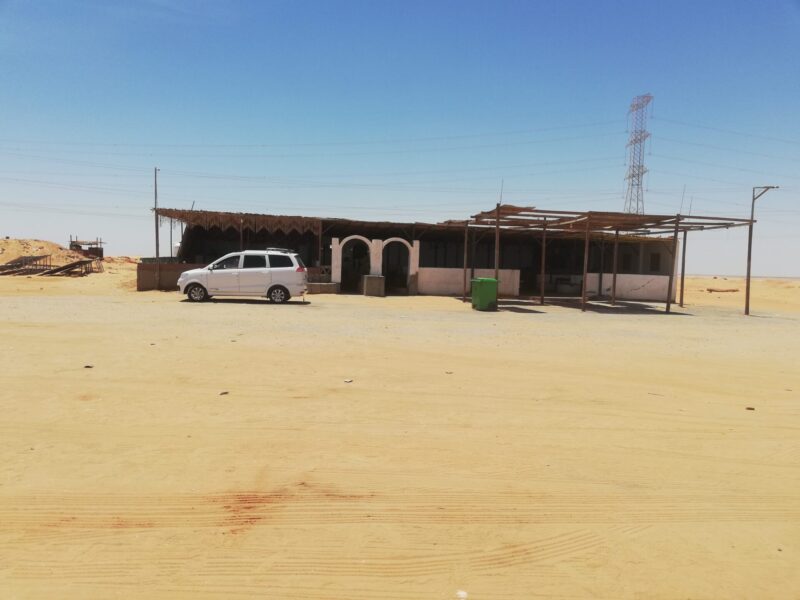
Our taxi at an oasis cafe
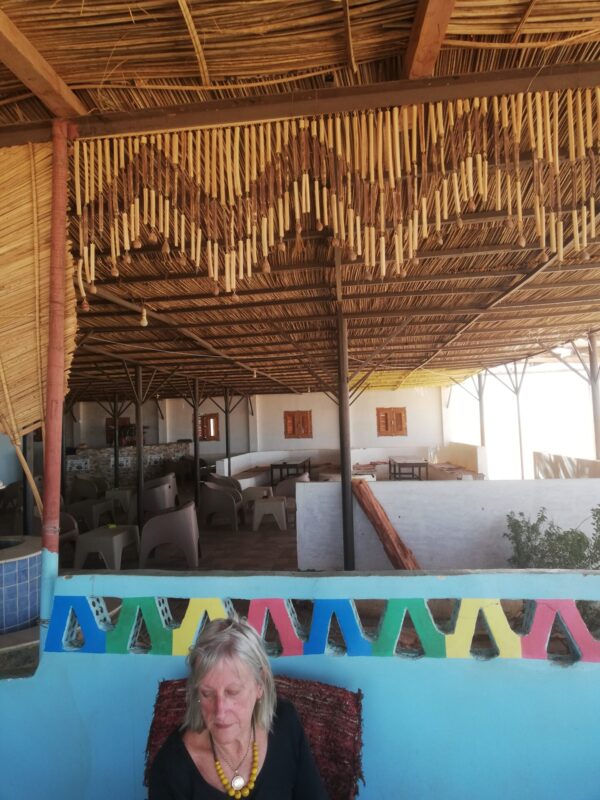

Cafe pussy
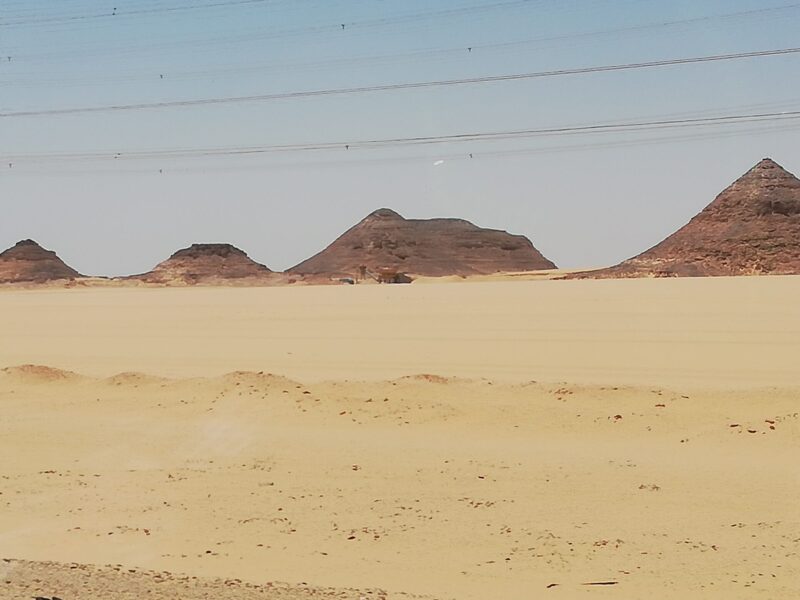
Strange rock formations in the desert
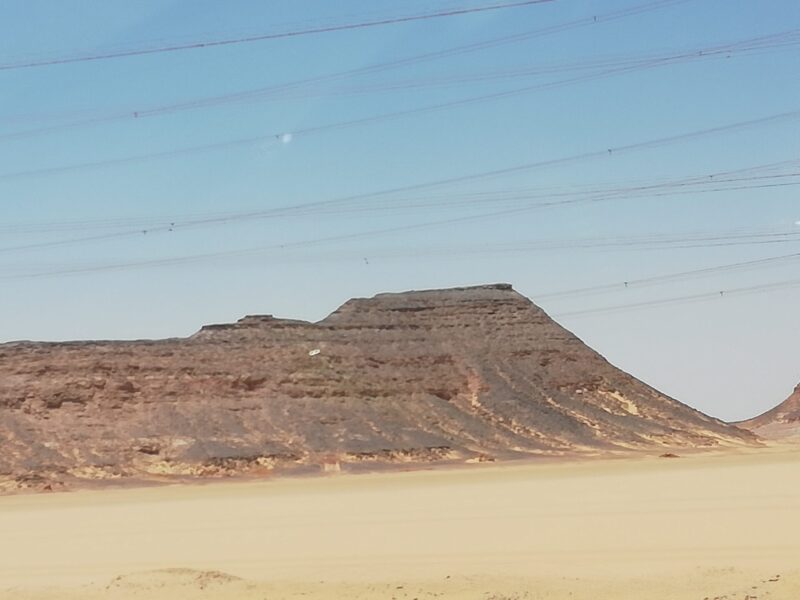
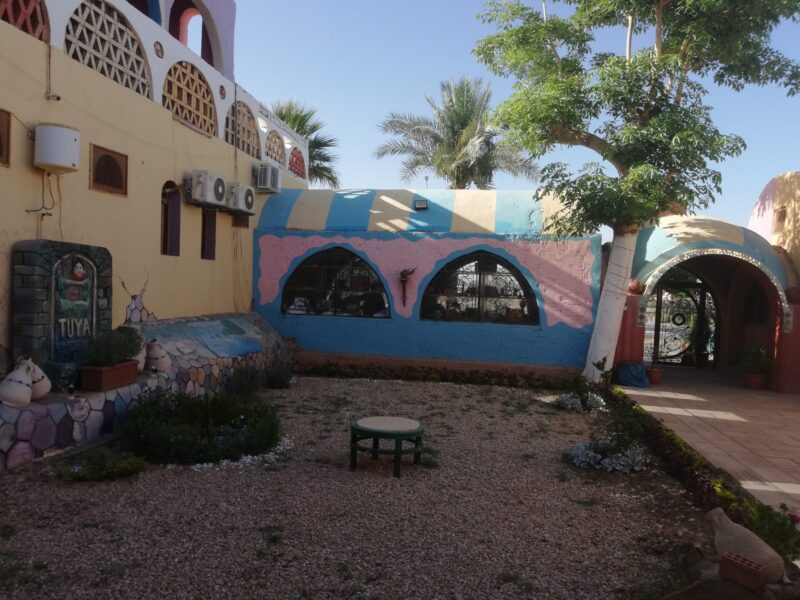
Our Abu Simbel hotel
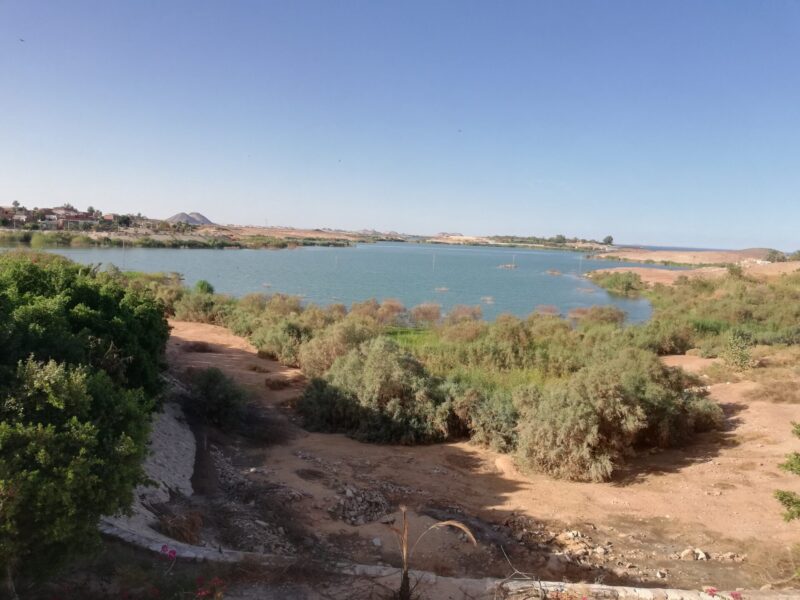

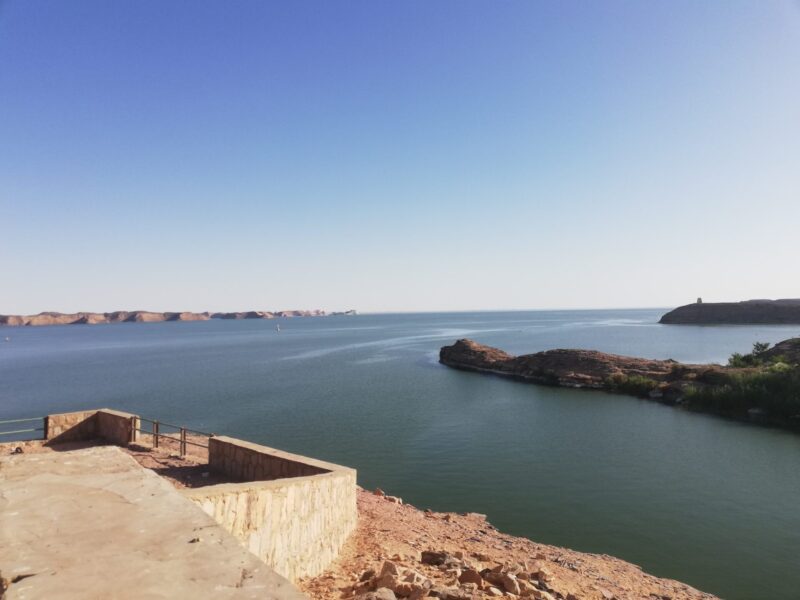
Lake Nasser
Day 72 (11th May) Abu Simbel
The original idea, hatched in freezing Tolsta Chaolais, was to drive to Abu Simbel by midday and get into a hotel by 1 pm. The police are said to be a bit suspicious about campervans at the side of the road (there are a lot of police checkpoints here) so we reckoned we would have some luxury in hotels for a change. Given the problem with the van we are having to do that anyway.
The idea then was to walk at a brisk pace to the temples, take our pics, zoom back to the hotel, have a bite to eat and then drive to Kharga in the Western Desert, the first of 5 oases on the “40-day road” which camel caravans used to ply from Darfur in Sudan to Asyut on the Nile.
Silly me. I should have known that nobody “zooms” anywhere in 40+ degrees heat. We walked leisurely to the two temples which were built in 1264 to 1244 BC by Rameses II on the western bank of the Nile. They were built on the route to Nubia which was a source of gold for Egypt and they were designed to impress on the Nubians how fortunate they were to be part of the Egyptian Empire. The statues at the entrance to the Great Temple are of Rameses with his wife Nefertari at his feet. The temple is dedicated to the Gods Amun, Ra and Ptah. Twice a year, the sun shines through a hole to illuminate Ra and Amun while Ptah (the God of the Dead) is left in shadow.
In 1960 it was decided to cut the temple into 264 huge blocks of up to 30 tons each and relocate it 65 metres higher up to avoid it being submerged by the waters of Lake Nasser as they rose following the completion of the dam. The two temples are an amazing sight and well worth the effort to see them despite the overpowering heat.
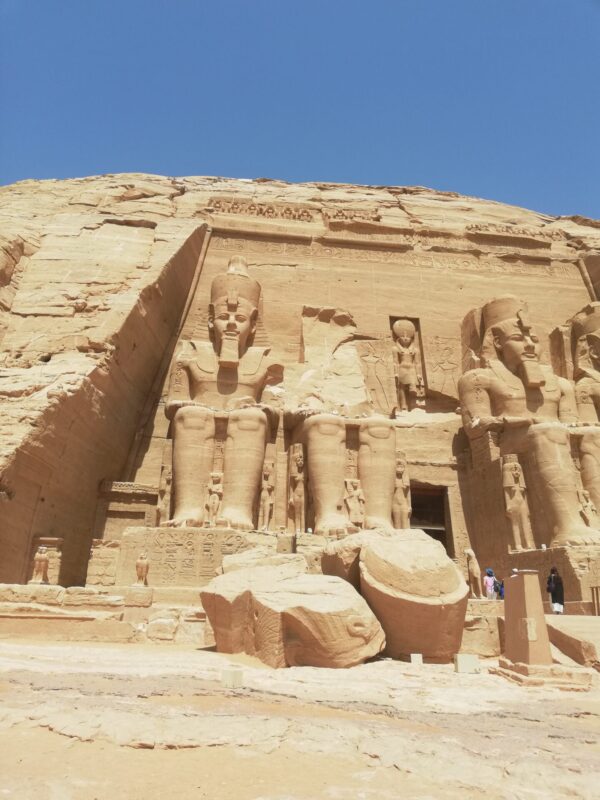
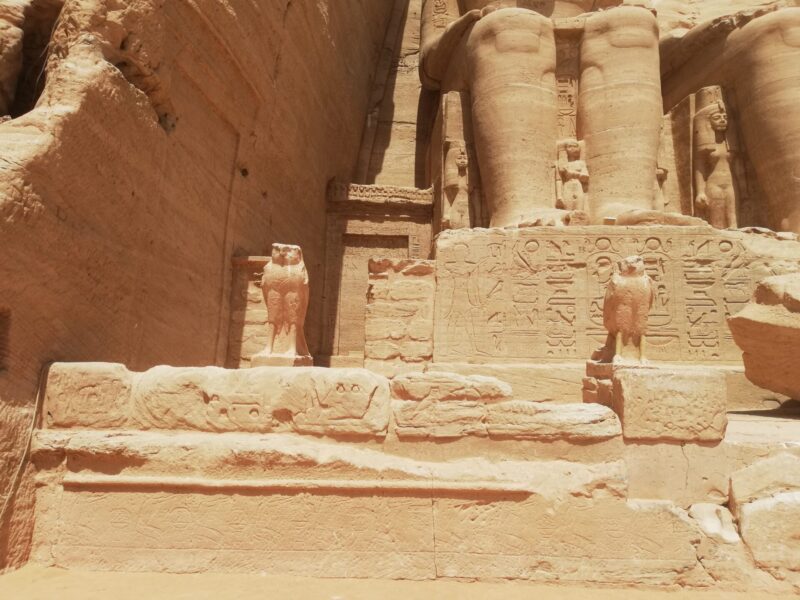
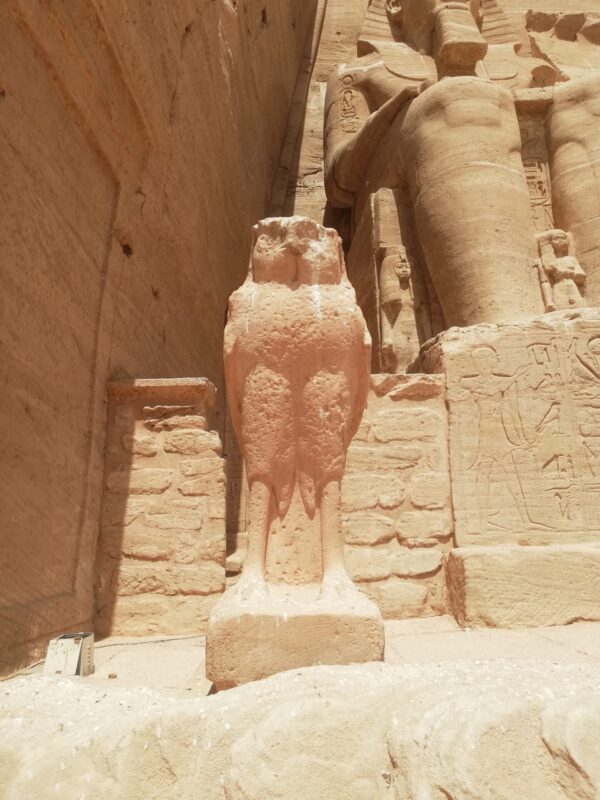
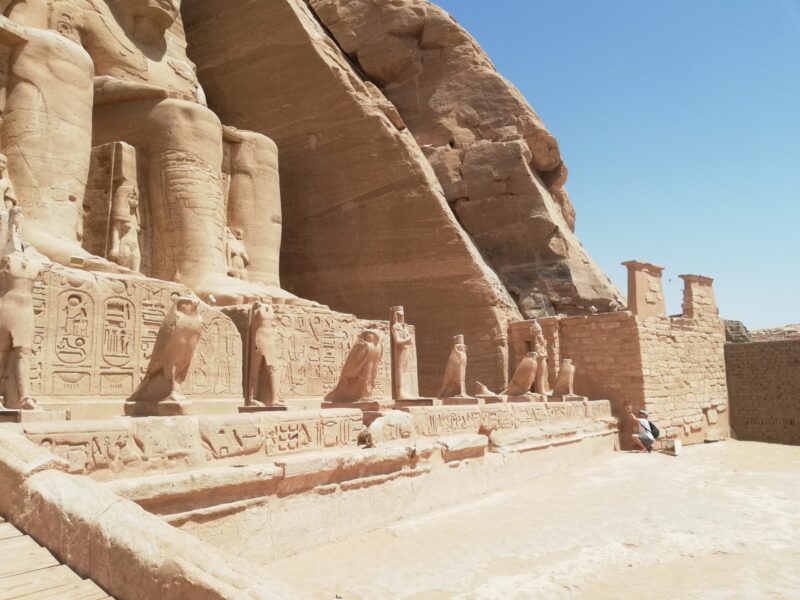

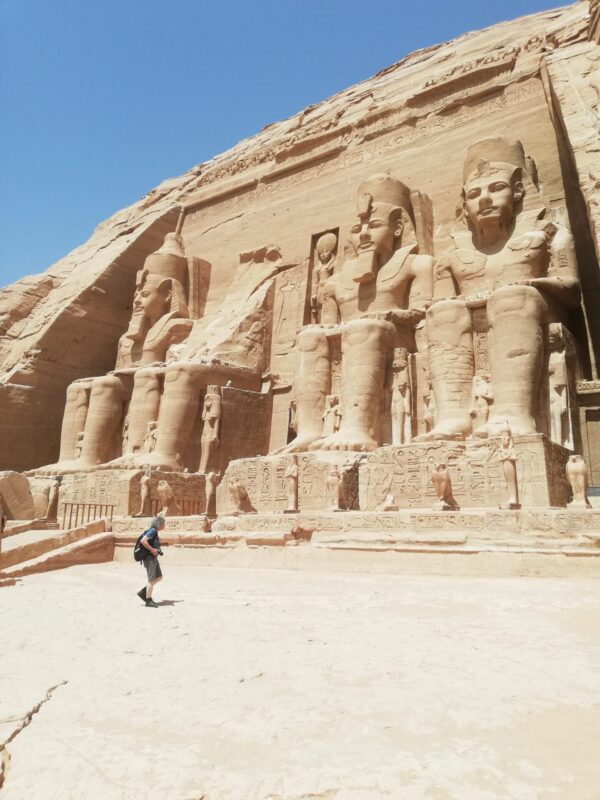

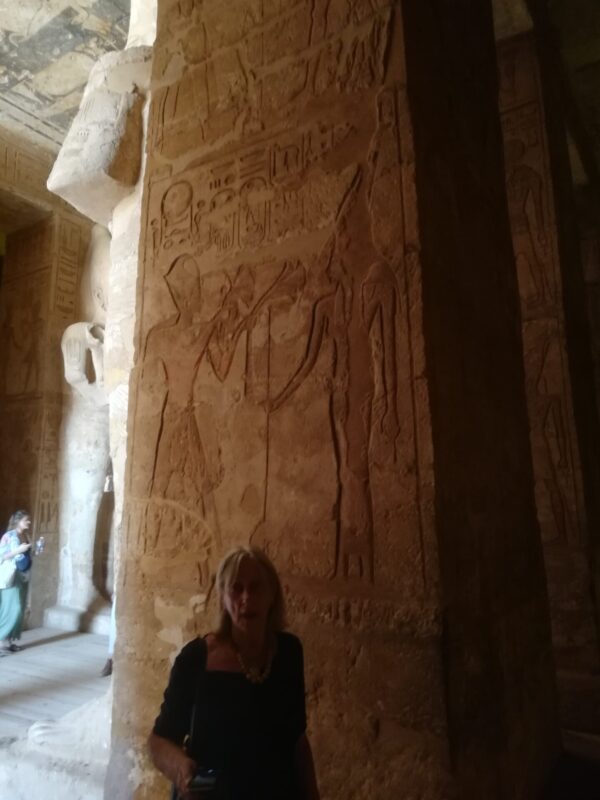
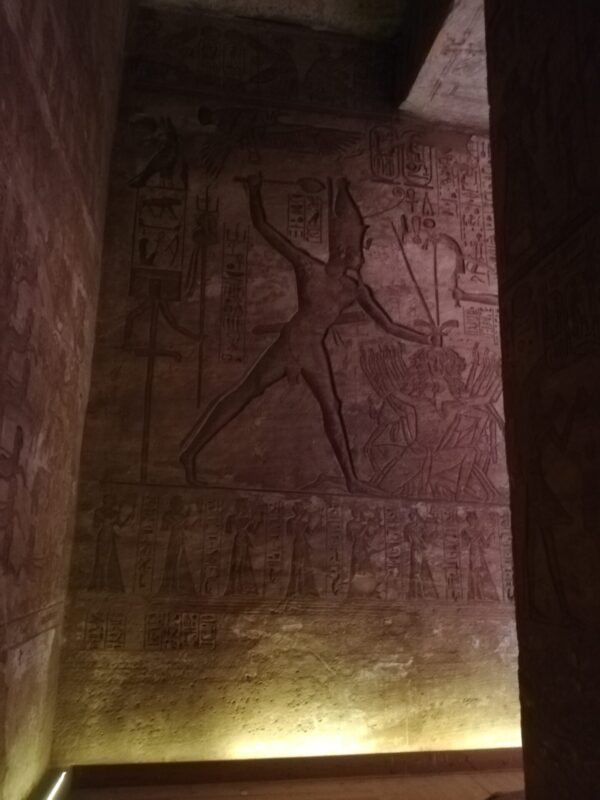
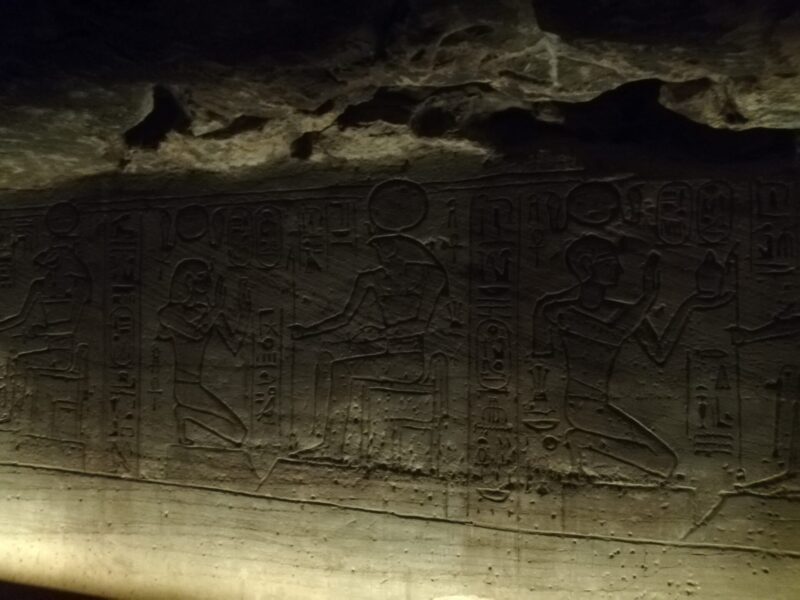
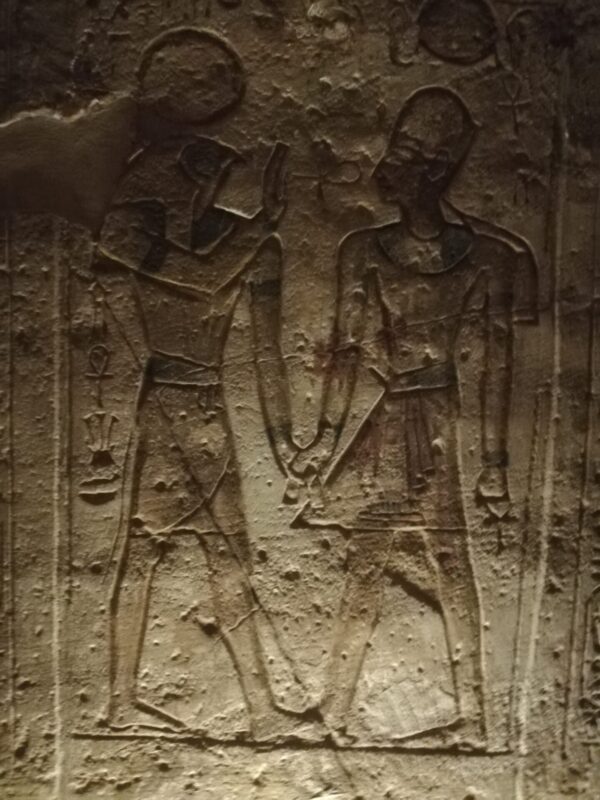
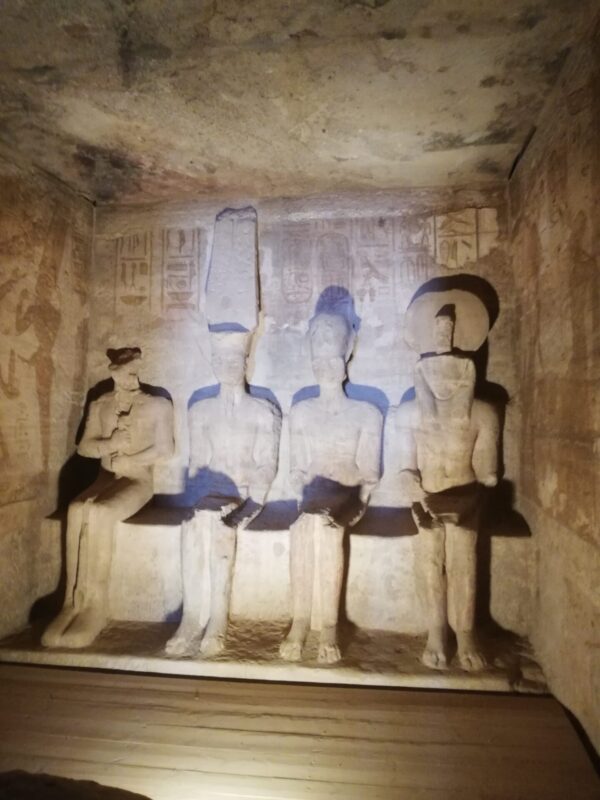

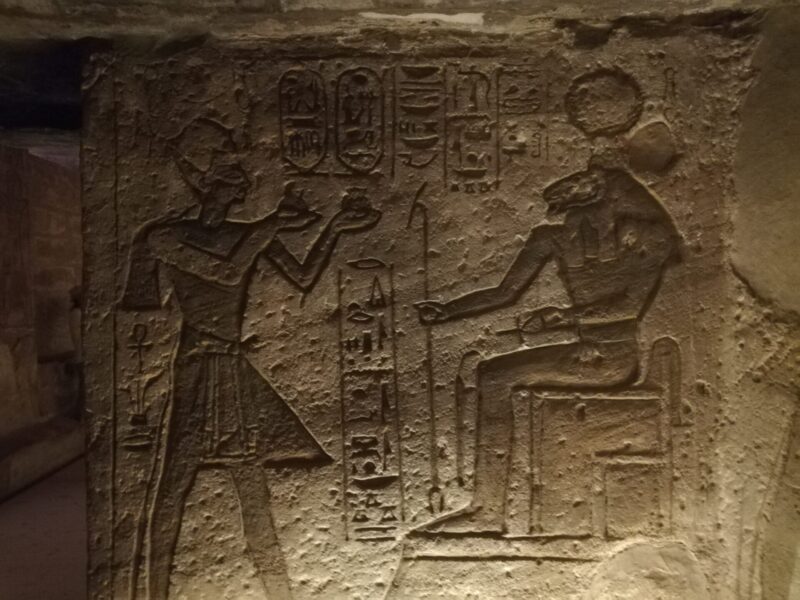
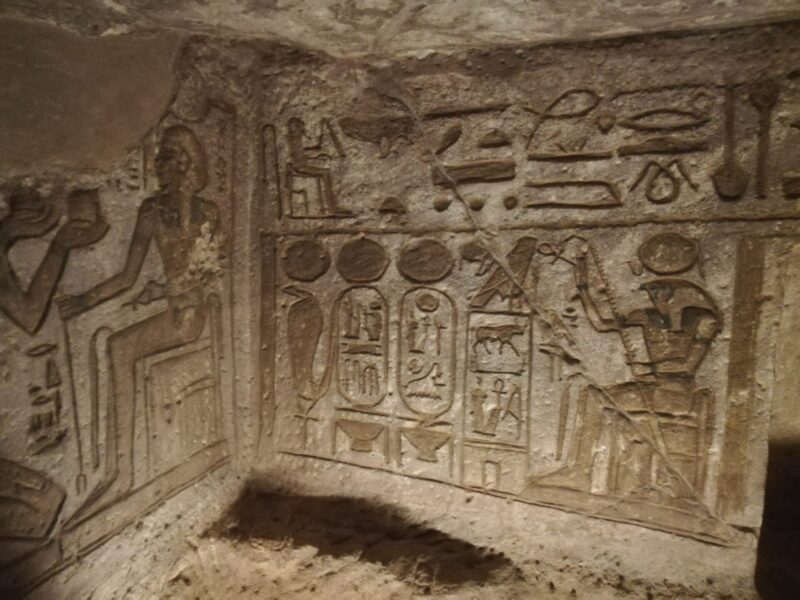

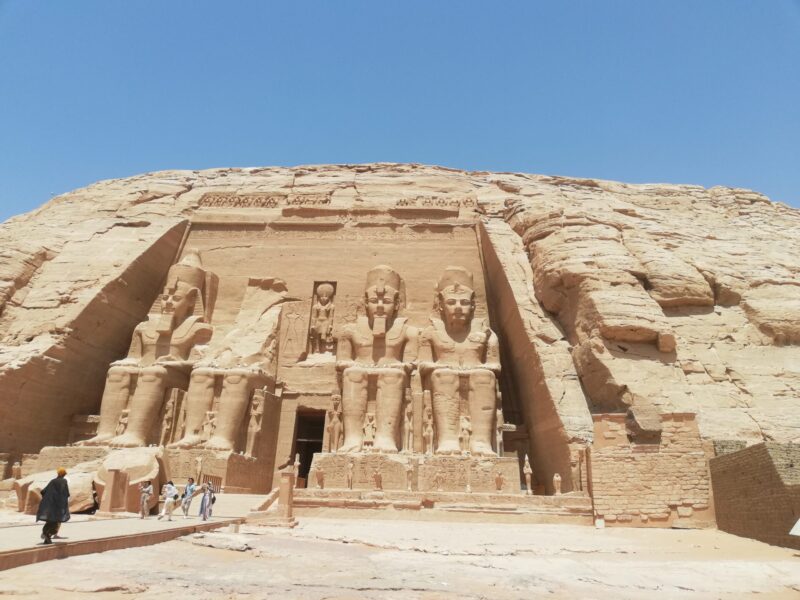
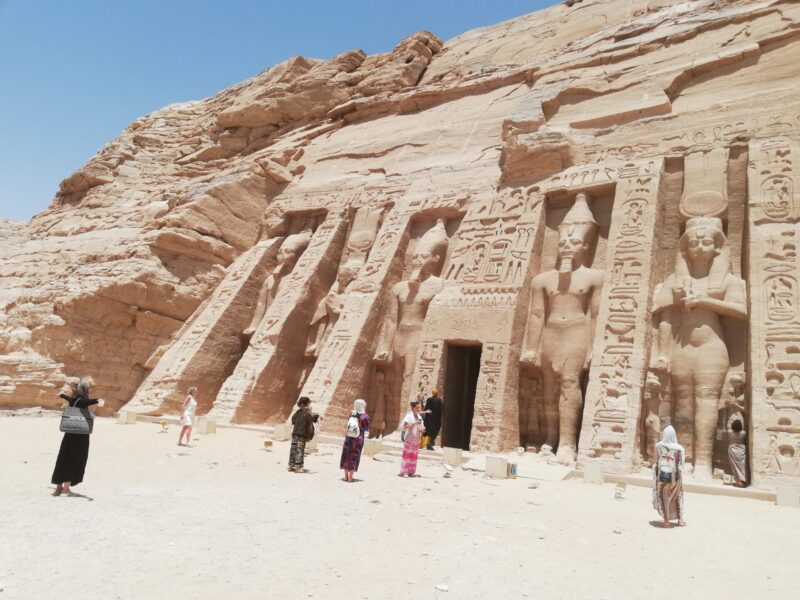
Temple of Nefertari, the queen of Rameses II
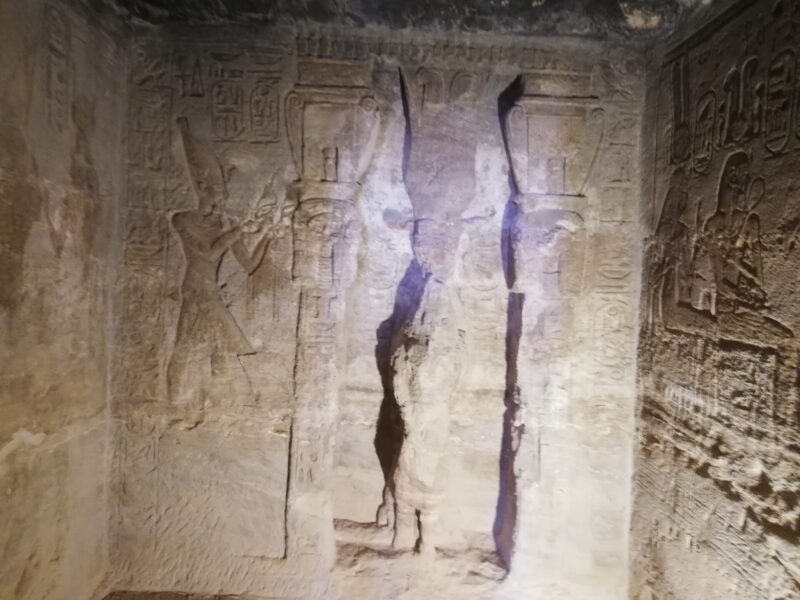
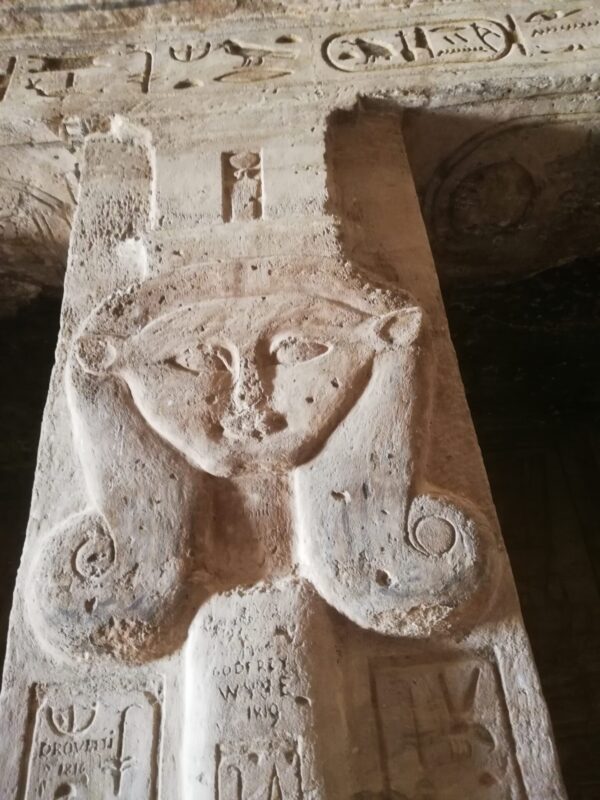

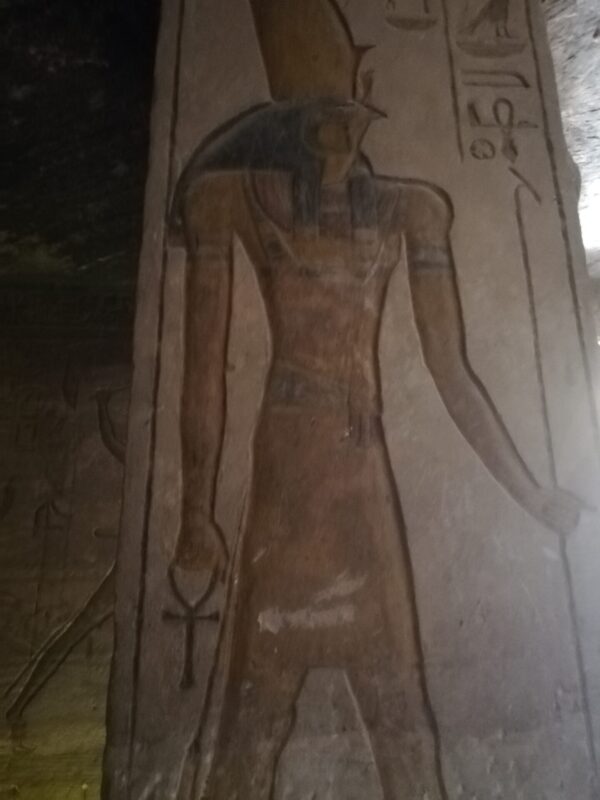

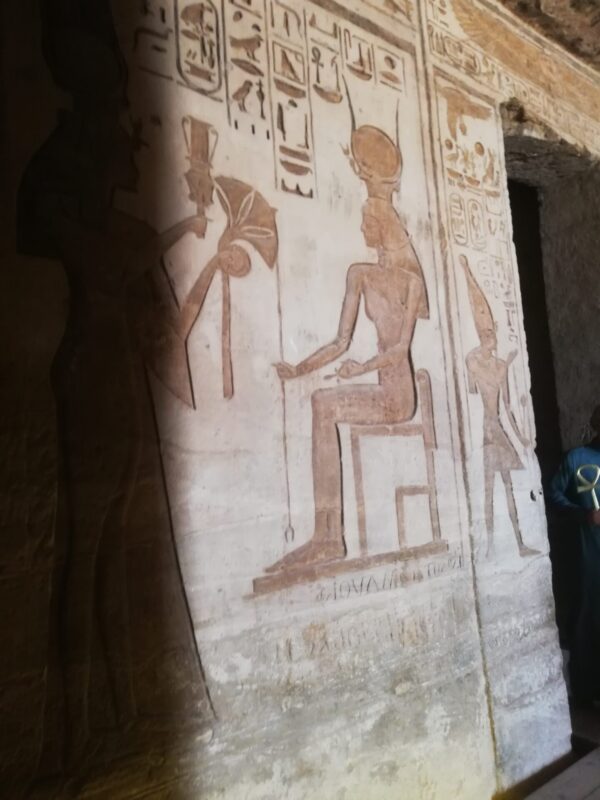
Day 73 (12th May) Abu Simbel to Luxor.
The taxi driver who took us from Aswan to Abu Simbel called for us right on time, and we decided to return to Luxor, a distance of 315 miles. The driver followed the Western Desert Road which avoids Aswan and he drove up the west bank of the Nile, dropping us at the hotel. He knew that we wanted to see the desert oases so he took us to a travel agency which wanted $2,500 for the 5-day trip. We said it was too much so he reduced it to $2,000 and we said we would speak to him at 7 pm the following day.

Landscape on the Western Desert Road
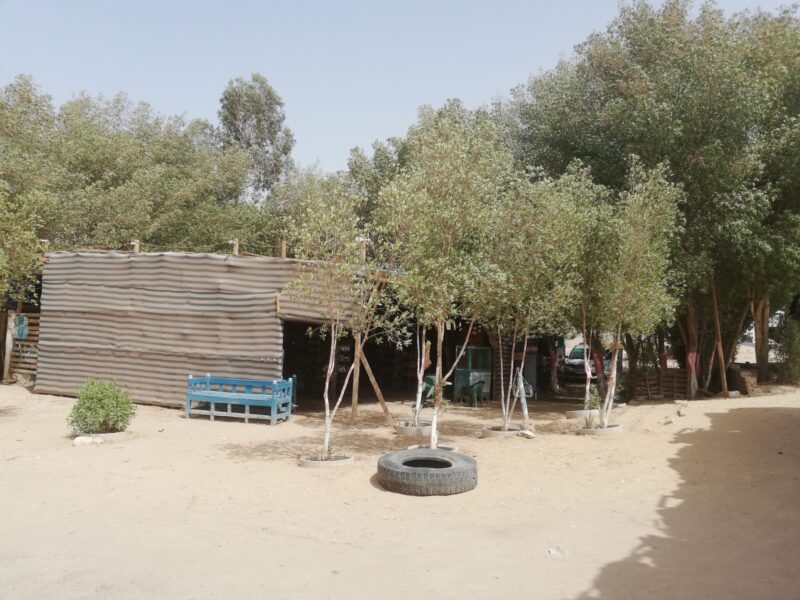
Desert oasis cafe
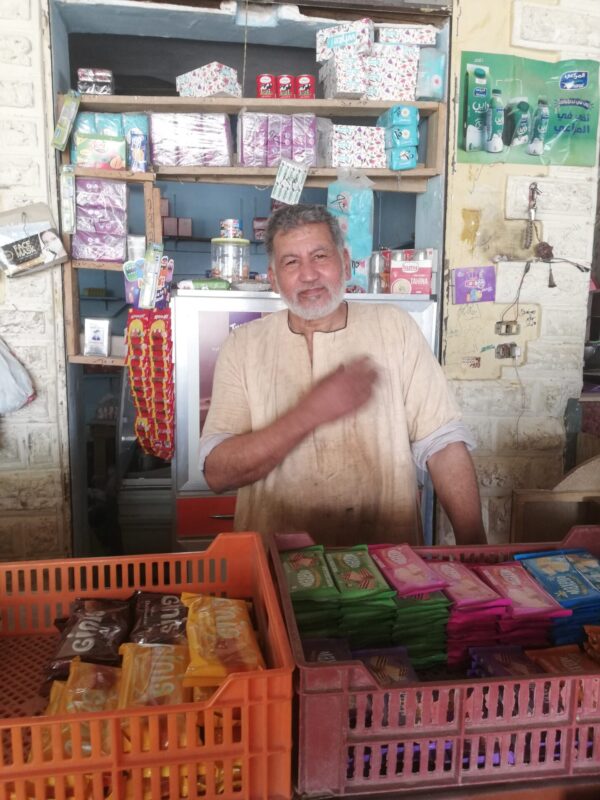
Owner of desert oasis cafe
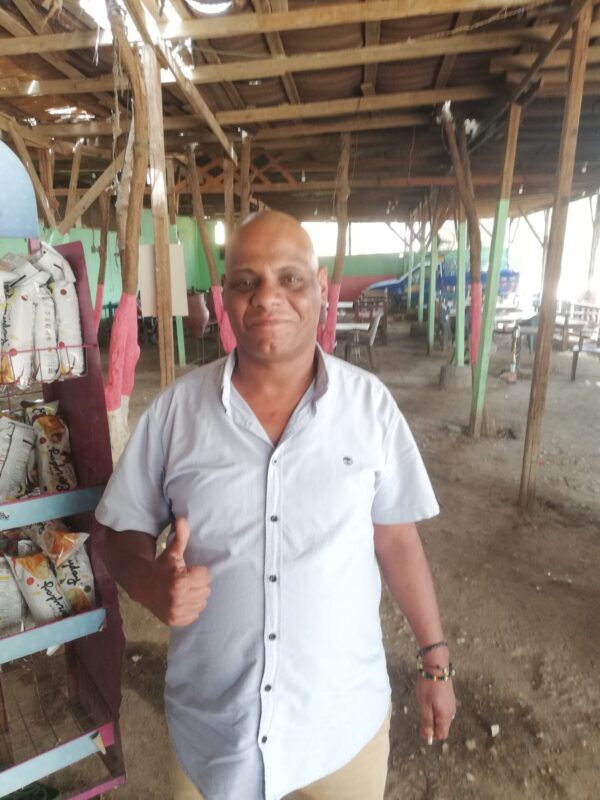
Our driver, Mohammed Khamoun
Day 74 (13th May) Luxor.
I thought that this would be a boring useless day, sitting in the hotel waiting to speak to someone I didn’t want to speak to. Jennifer suggested doing something that strikes terror in the heart of every masculine hunk of a man: SHOPPING. She wanted a nice strong canvas bag as we are accumulating plastic bags with things in them and the hotel manager suggested we go to the Bazaar about half a mile away. And as soon as we got there we found a BAG SHOP and bought a very nice one for £7. The shop also sold t-shirts so we got presents for grandchildren.
We then thought a good way of killing time was to go back to a sweet little pure juice shop and have a glass of orange. Sitting there enjoying life, we happened to notice a rack of abayas (an ankle length dress of different colours although usually black) and Jennifer thought it would make a nice present for someone. I happened to mention that we wanted to buy a prayer mat for a friend and we were directed to Luxor Carpet Cave where we bought one and Jennifer then bought a pile of cushion covers. The owner wanted to know where we were going tomorrow so we told him that we were hoping to see the desert oases and, of course, he has a friend who can take us for $1,500. The downside being that the trip starts at 4 am to avoid the hottest part of the day. In all a very productive day.

Banana grove

Bananas
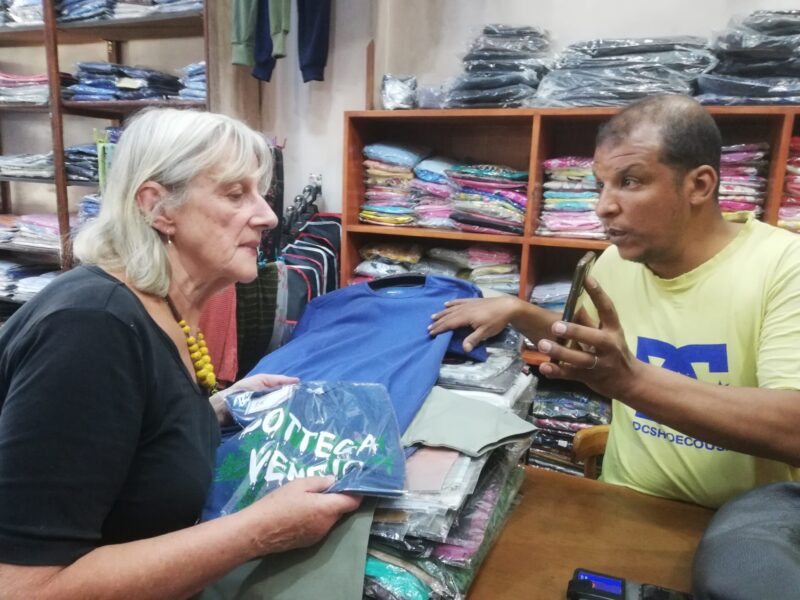
Some hard bargaining by an expert
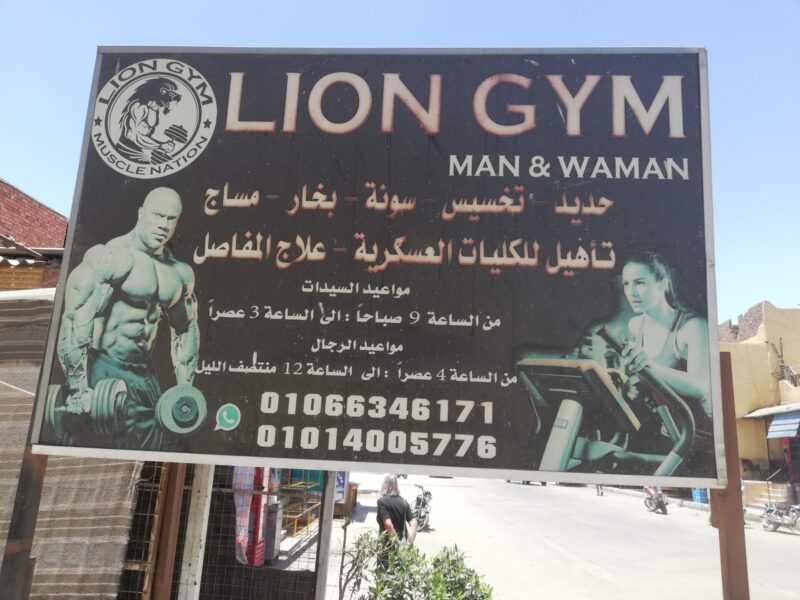
I’m going to join
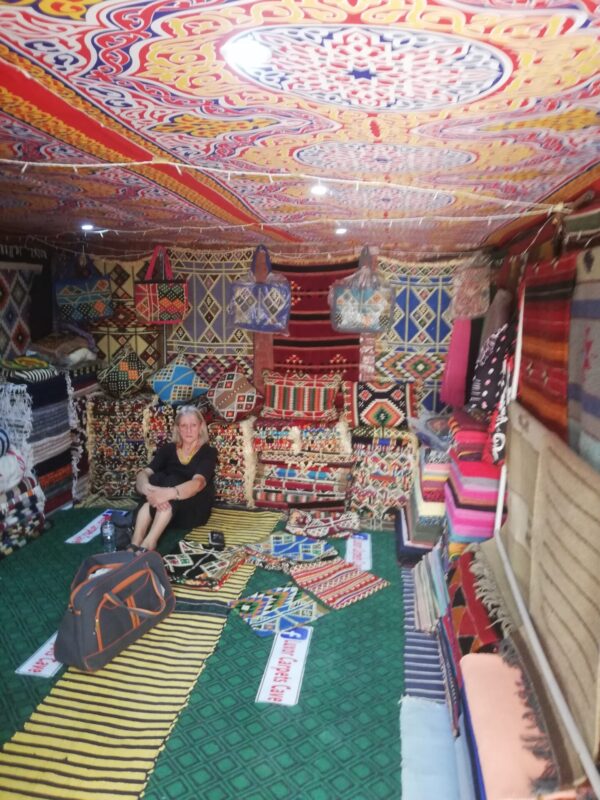
Luxor Carpet Cave with one satisfied customer filling a new bag
Day 75 (14th May) Luxor to Kharga
We set off from the Cleopatra hotel at 4 am with our guide Mahmud while it was still fairly cold and there were only a few vehicles on the road. We soon came to the first police checkpoint, the first of many, but made a good speed along a road which was not as terrible as feared, but had half an inch of tarmac which had warped in places making driving difficult. The distance from Luxor o Kharga is 211 miles and we drove for perhaps 50 miles before stopping for breakfast in the desert. Mahmud unrolled a large carpet and got out a 5 kg camping gaz (twice as big as our van’s) for making coffee as well as a huge basket of tomatoes, cucumbers, cheese and home-made bread. His wife had made the most delicious cake. We watched the sun rise behind us and it bathed the desert in light, highlighting all the different colours; gold, silver, white, grey, black.
We then continued to a place incongruously called Port Said where there was a police control post. They took our passports and we waited and waited and waited to get them back. Eventually we set off to see the Temple of Dush where Mahmud had lived for 3 months while serving in the French Foreign Legion. He is an interesting man, having been born in a small village in the Valley of the Kings; his grandfather was Ali Abdul Rassul who worked with Howard Carter who allegedly discovered Tutankhanun’s tomb (and pinched some of its contents). The locals believe that Ali Abdul’s cousin, Hussain Abdul Rassul discovered the tomb. He was a water boy who brought jugs of water for the workmen and who made holes so that they stayed upright. One of the holes is said to have broken through to the steps leading down to the tomb.
While waiting o get our passports back, we drove to see the Temple of Dush. It was built during the rule of Domitian and Trajan (1st century) and decorated during the rule of Hadrian, though apparently the site was occupied from the Ptolemaic period. The temple was built as a dedication to goddess Isis and god Serapis. Though there are actually few decorations, the temple is believed to have been covered with gold. However, all three Roman Emperors are depicted in scenes carved on the temple walls. A monumental stone gateway fronts the temple and contains a dedicatory inscription by Trajan dated to 116 AD. Literally millions of fragments of pottery litter the surrounding area. While drinking a cup of tea with the caretaker, I noticed a police car lurking about outside and, in fact, we had a police escort all the way to Abu Mingar near Farafra.
After getting our passports back we went to see the Temple of el-Zayyan, 47 miles north of Dush. It was dedicated to the Theban triad of Amun, Mut, and Khonsu. The temple was built in Greek times, and at the time of Roman Emperor Antoninus Pius in 140 AD, it was expanded and decorated.
The el-Ghweita Temple is located a short distance south of Kharga and it was built to protect camel caravans on the Darb el-Arbain (40-days road). Dedicated to the Triad of gods (Amun, Mut and Khonsu), the temple dates back to the 27th Dynasty (525-404 BC), and was completed by the Ptolemeis (Ptolemy III, IV and X). It is one of the few temples in the area that was completely Ptolemaic.
The el-Zoyyo hotel must be one of the most badly-run hotels in the world: we had to ask for towels, sheets, soap and bog-paper, although we never got the latter. It did, however, have some beds and the shower worked after a fashion. It didn’t cook meals according to the strange youth in charge so Mahmud had to drive round the town, which looked like a down-at-heel suburb of Cairo, to find a takeaway, and he came back with a surprisingly good meal.
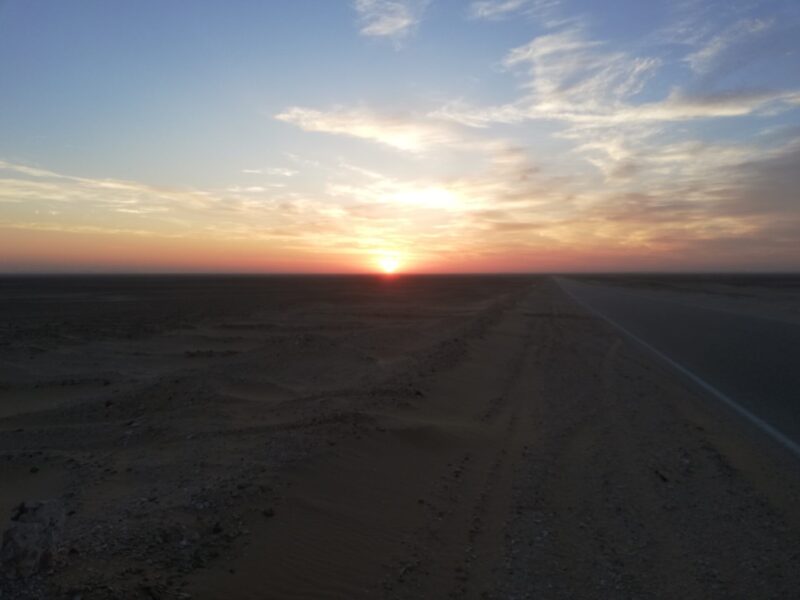
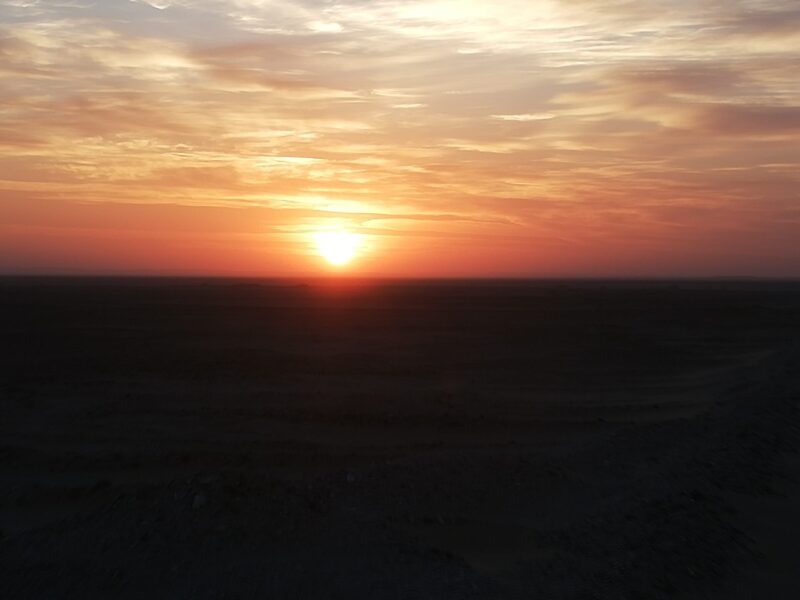
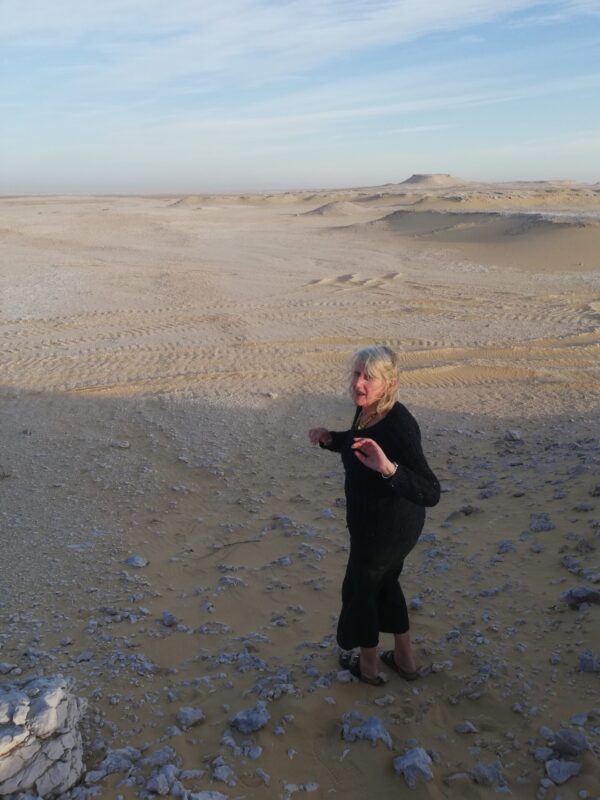
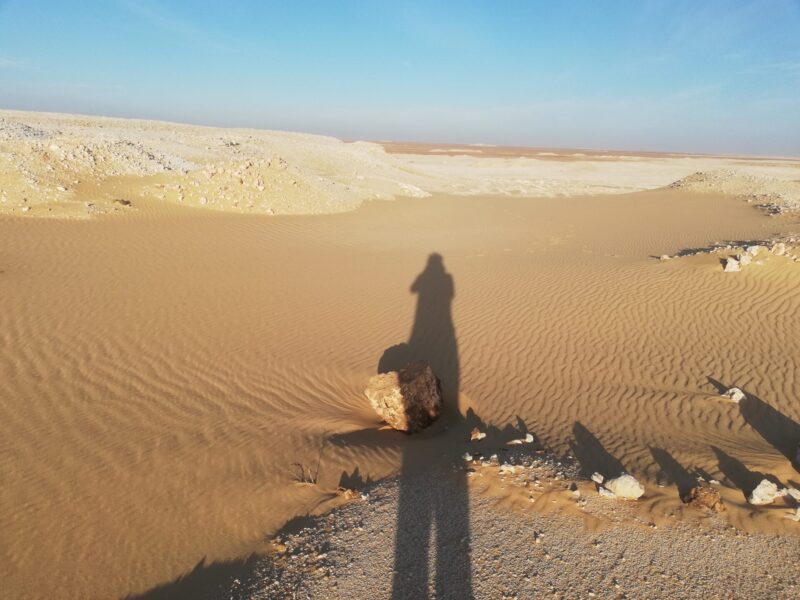
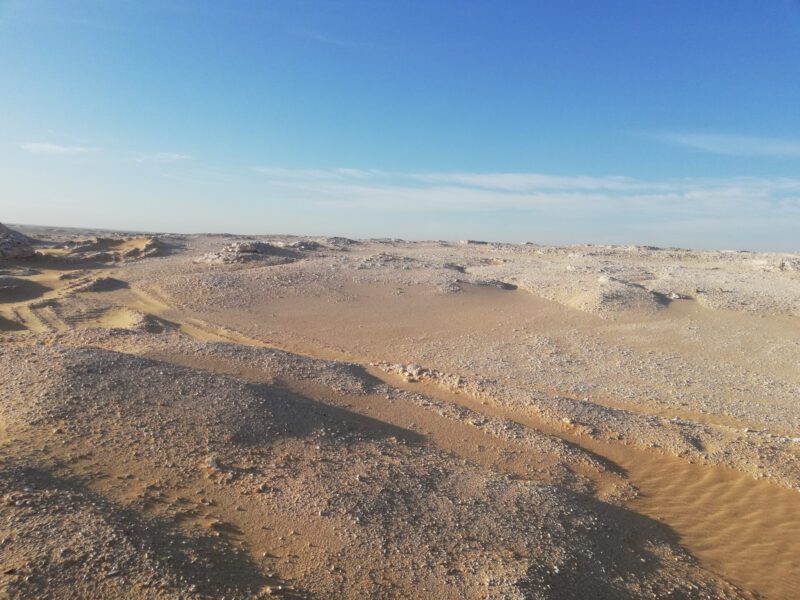


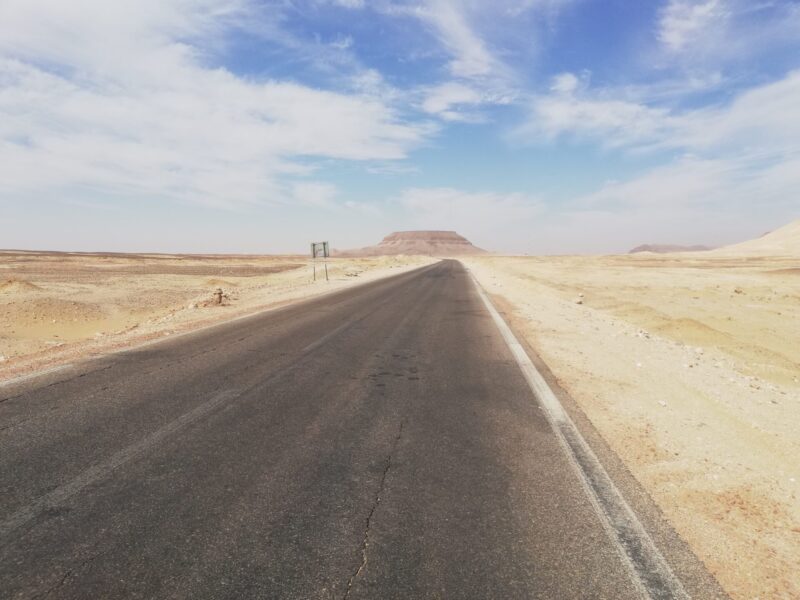
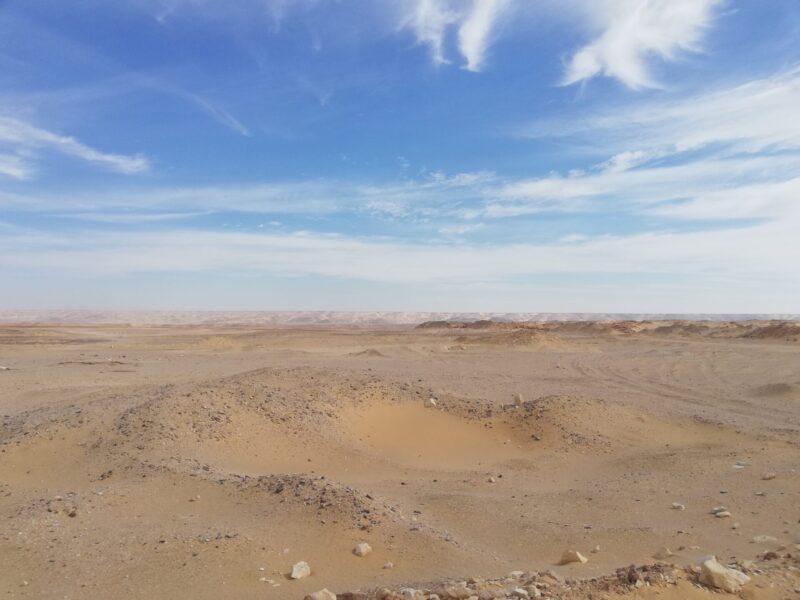
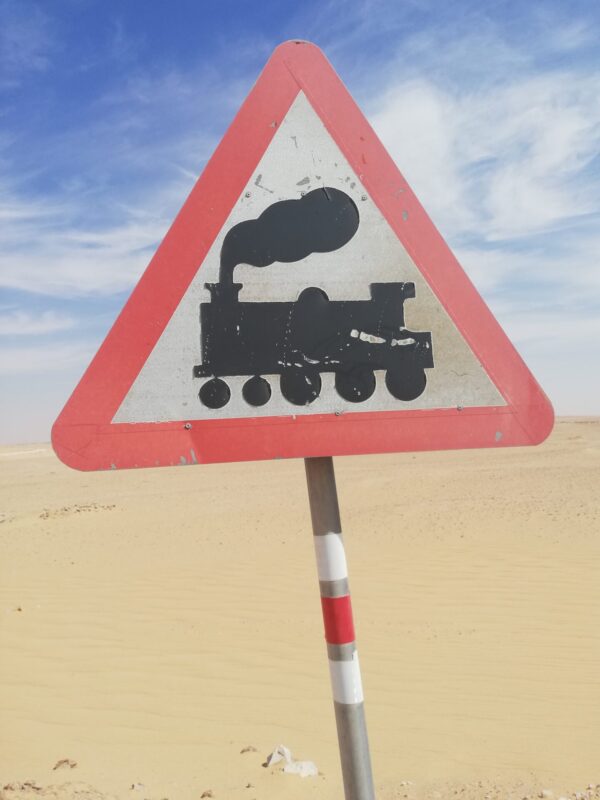
Day 76 (15th May) Kharga to Mut
In the morning we went to see the Al Bagawat tombs, which are a Christian necropolis and said to be one of the earliest and best-preserved in the world.. There are 264 tombs built between the 3rd and 7th centuries AD of which the most significant have been called the Chapel of Peace (5th or 6th Century) and the Chapel of the Exodus (early 4th century) showing the martyrdom of St Isiah. They had beautiful wall paintings depicting biblical scenes.
We then went to see the Temple of Hibis which is dedicated to the gods Amun and Osiris. There were beautiful wall paintings and carvings of the gods on the walls and pillars. The temple was created in 664 to 404 BC and the Achaemenid Pharaoh Darius I played a major role in the painting.
In the afternoon we drove eastwards for 119 miles, deep into the Western Desert to the al-Dakhla oasis. For much of the way we passed strange rock formations of black stone rising out of the desert similar to those near Abu Simbel. After driving through the rather dreary town of al-Dakhla we arrived at the ancient crossroads village of Mut which served travellers on the north-south Darb el-Arbain (“40 days Road”) from Sudan to Asyut on the Nile and an east-west route connecting the Nile with Libya. We enjoyed the fortress (el-Kasr) of narrow dusty streets and the remains of a a school and courthouse together with a prison and a crossbeam from which miscreants were hung. There is a museum of oasis life which was closed and a foundry where a young man made a needle in a primitive forge operated by bellows.
We then went to see the Deir el-Haggar temple which was built during the reign of Emperor Nero in 54-68 AD to serve an incoming population as the irrigation network was expanded. Vespasian (68-79 AD) was responsible for the wall paintings. Titus (79-81) added the porch while Domitian (81-96) decorated the doorways. The temple was used for several centuries before it was engulfed by a huge sand dune which can still be seen to the south.
We then went to see the The Necropolis of Al Muzawaqa – which means “wonderfully decorated tombs” in Arabic. It was discovered in 1908 during an excavation mission in the Western Desert, and consists of hundreds of tombs, most of which still need to be studied. The tombs of Petosiris and Petubastis are famous for their finely preserved wall-paintings. The area has been in existence from the first and second centuries AD during the Roman occupation but most of the tombs feature a traditional Egyptian design in their appearance. While the identities of the occupants of most of the tombs are still unknown because they haven’t been excavated yet, those of Petosiris and Petubastis are remarkable due to the bright and vivid murals used to decorate them.
Padiosir Petosiris’ tomb which is said to have been built early in the second century AD is double chambered. On the other hand, that of Ptubastis has only one chamber, but there are ledges meant for keeping mummies. A painting of Petubastis himself is featured in the tomb while the chapel ceiling has the Zodiac design characteristic of the first century AD. He can be seen in another location painted in a pink cloak designed after the pattern of the romans. Various symbolic representations are depicted to surround him and there’s also an image of Osiris weighing his heart and Isis pouring a libation for his spirit.
Having been followed around by the police, we were pleasantly surprised after a hotel suggested by Mahmud offered a rubbish room for an exorbitant price. Our police escort said he had a friend with a good hotel, so we followed him deep into a forest of palm trees and came to the fantastic Shanda Lodge where we were greeted by the owner speaking perfect English. Walid had worked for many years at hotels in England and had retired to his birthplace to build his own hotel. It was lovely: the room was large and comfortable and the food was exceptionally good. Shanda rivals the Cleopatra as the best hotel we have stayed in.
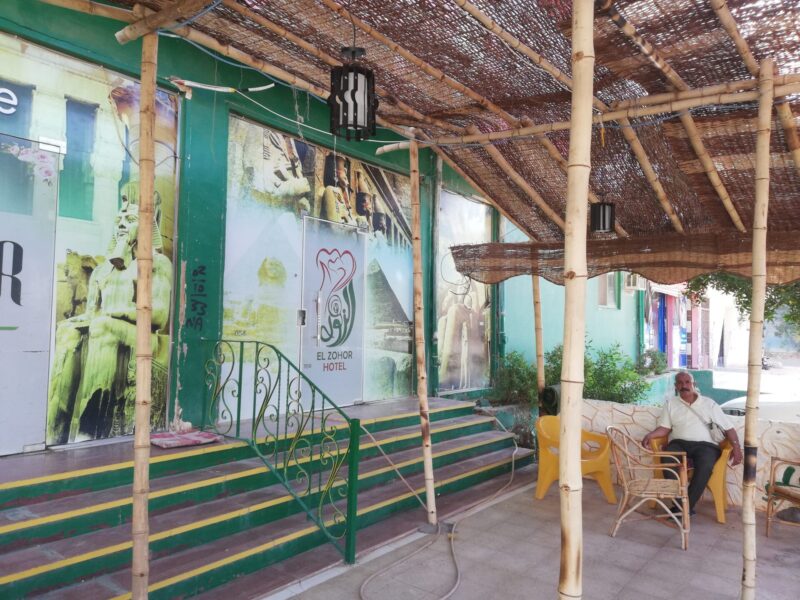
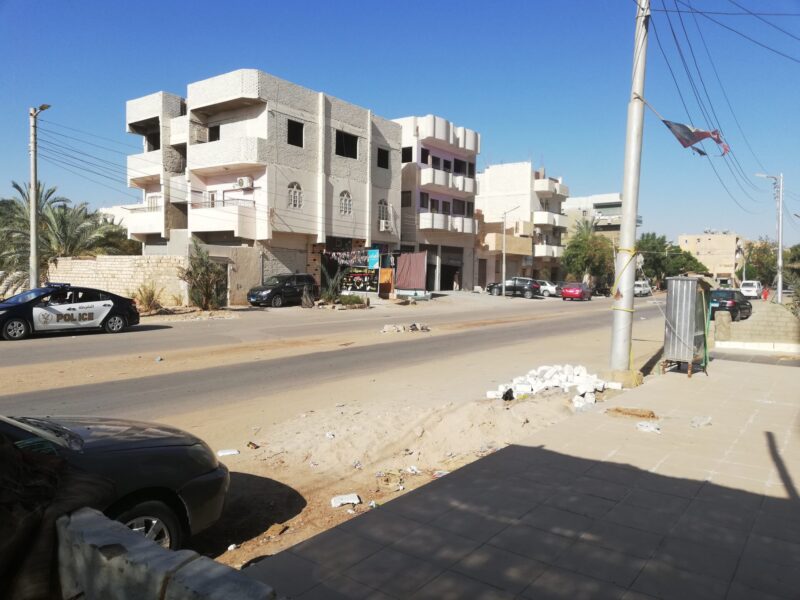
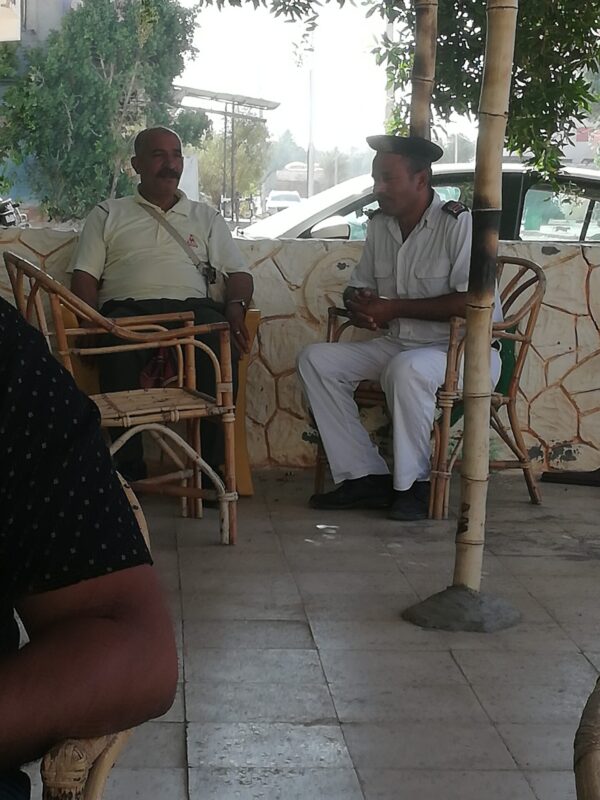
The policeman who followed us around all day and then found us a nice hotel at Mut
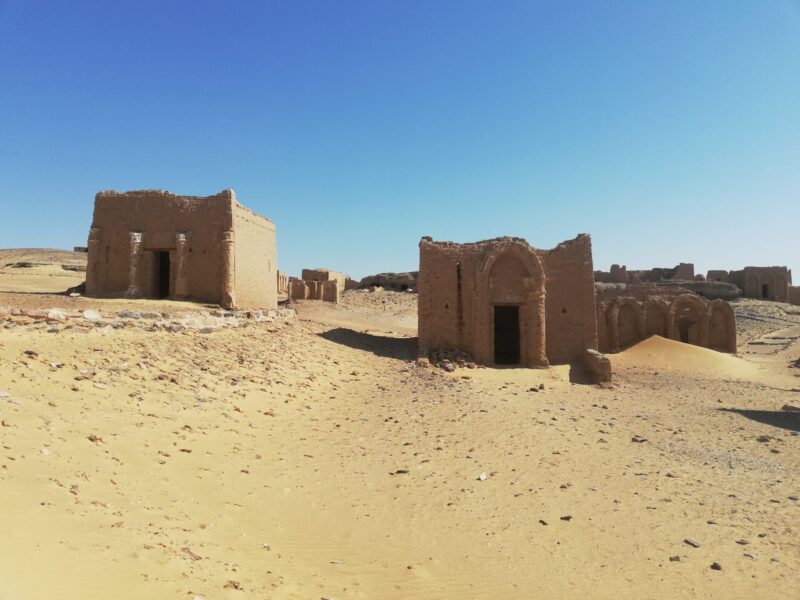
El Bagawat necropolis
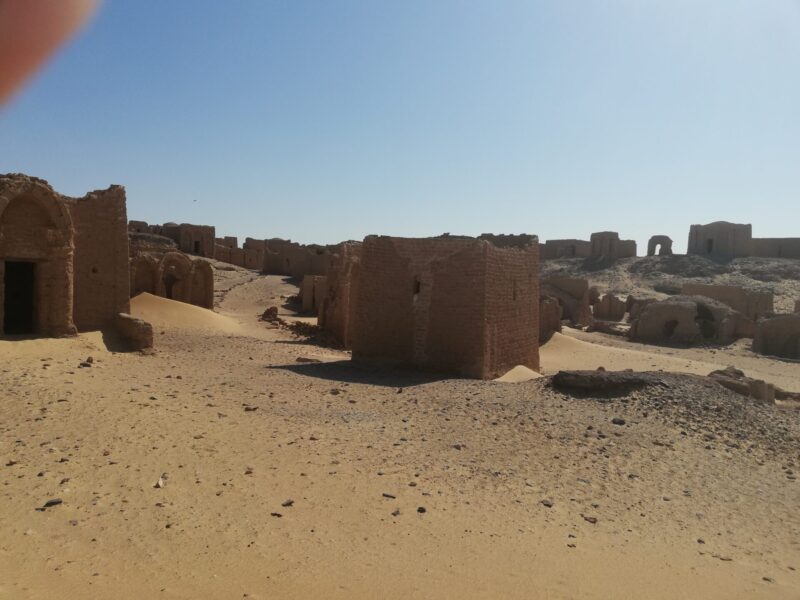

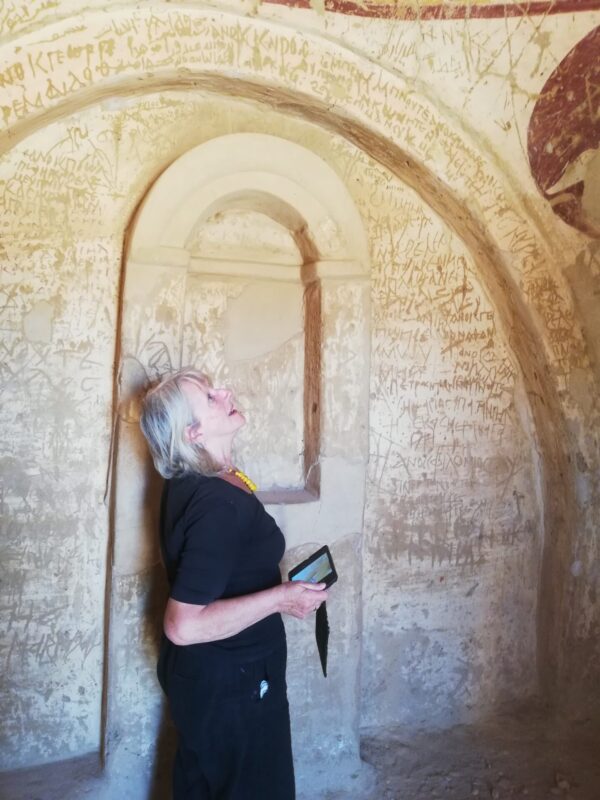
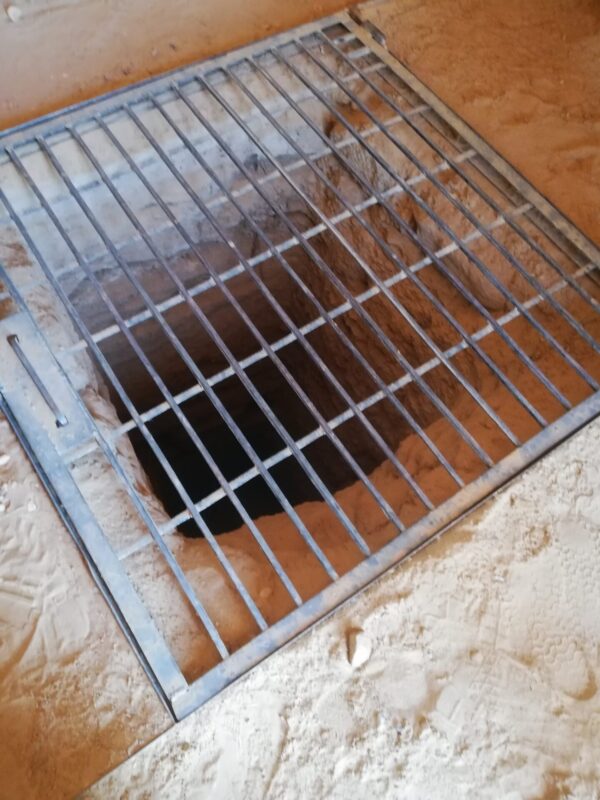
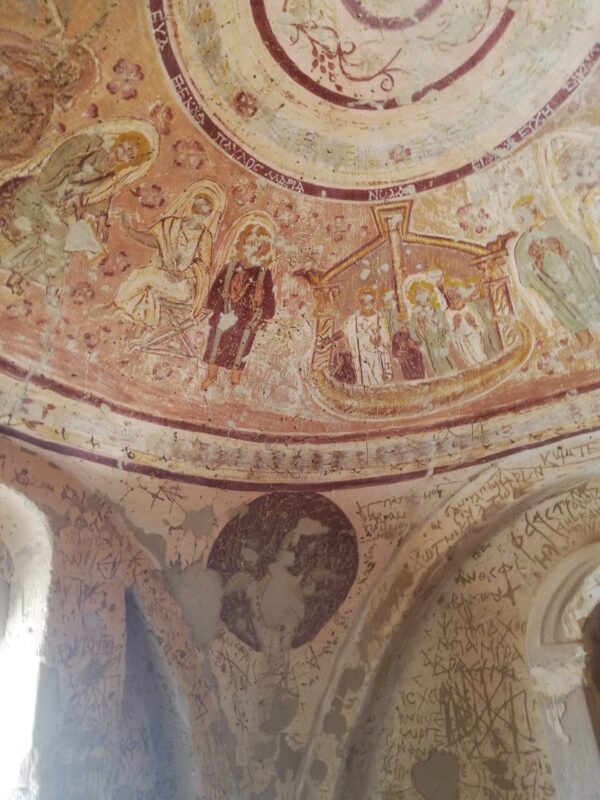


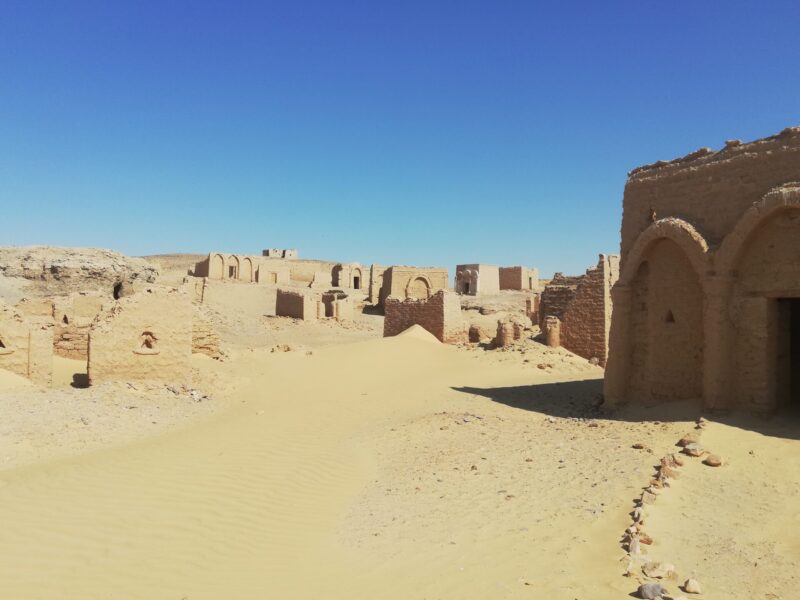
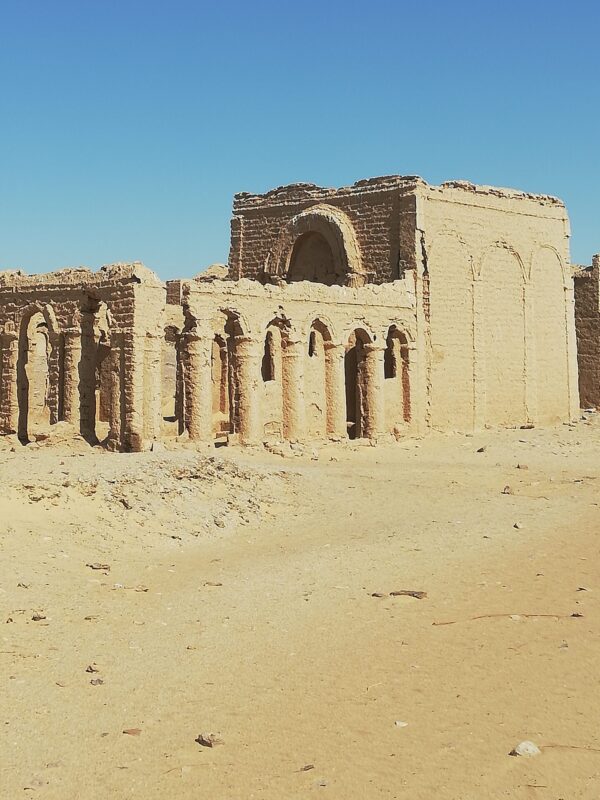

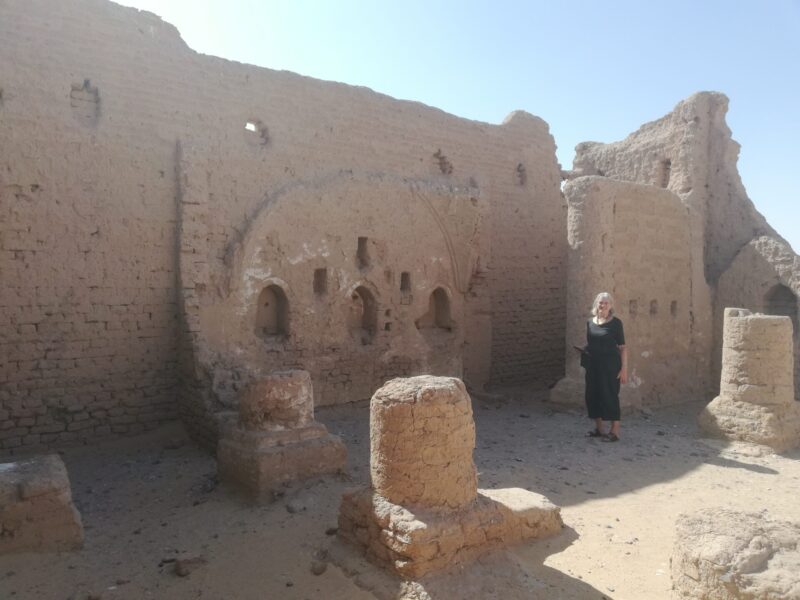
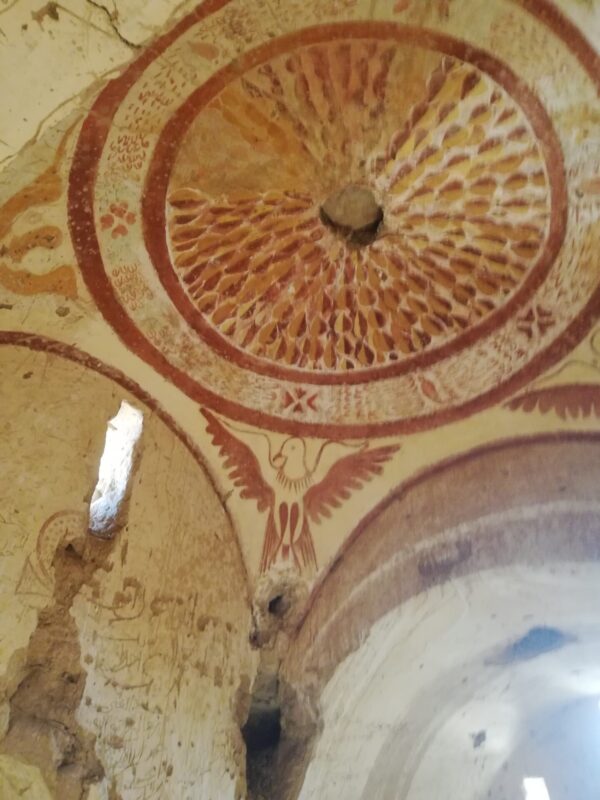
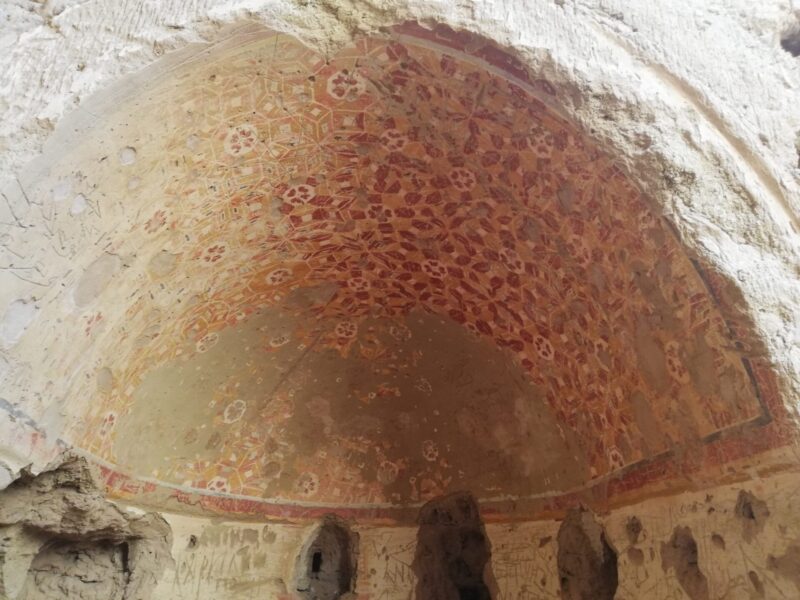
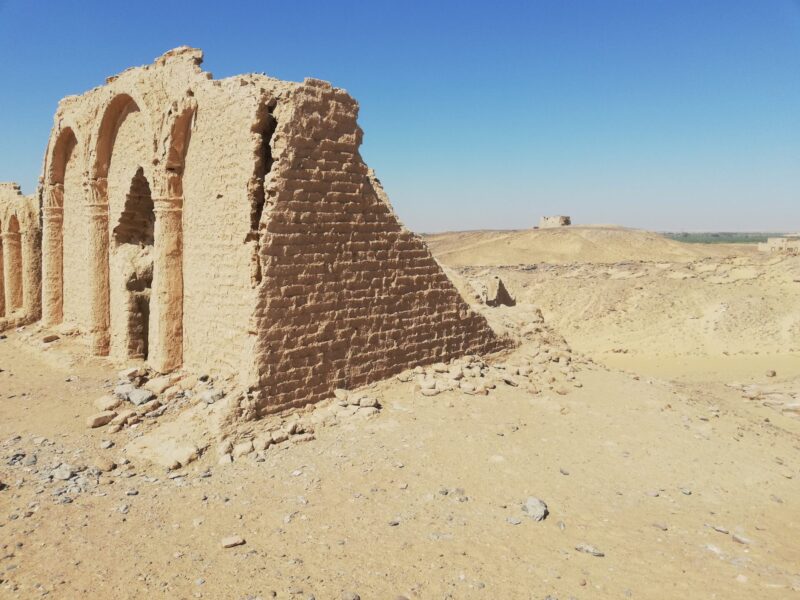



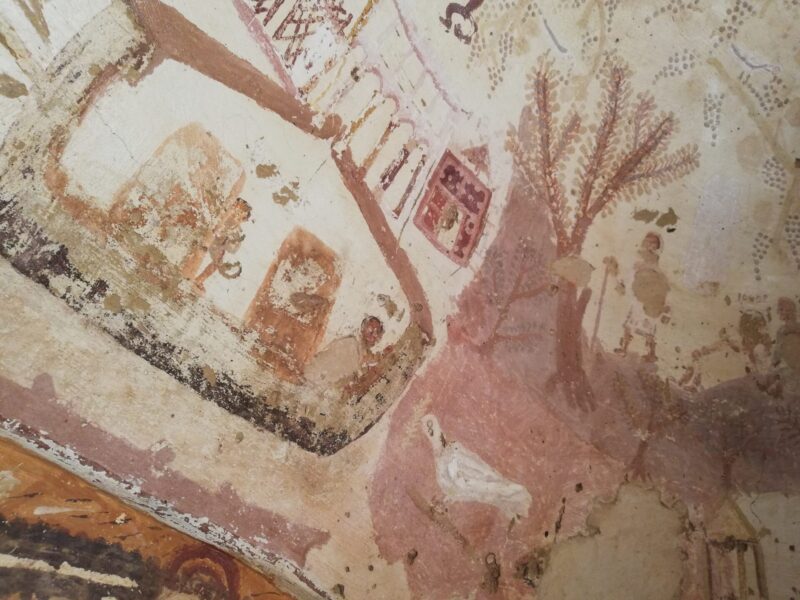
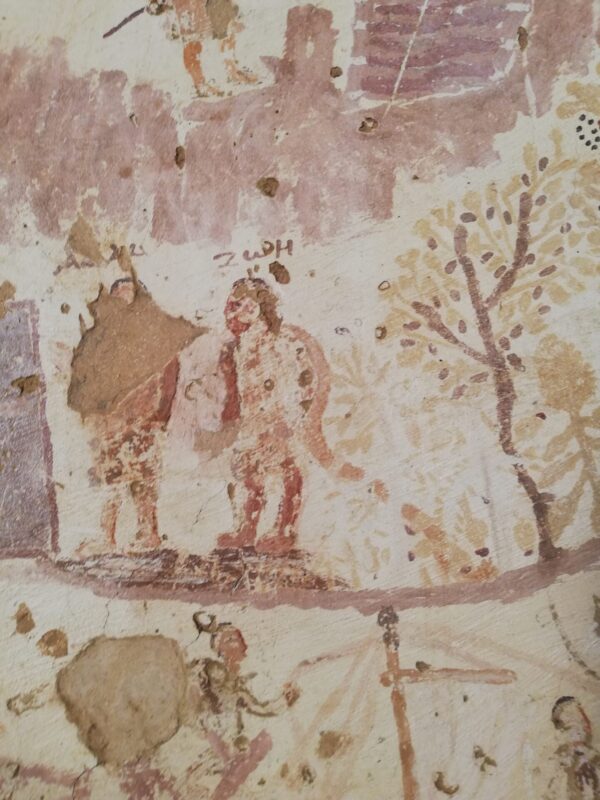
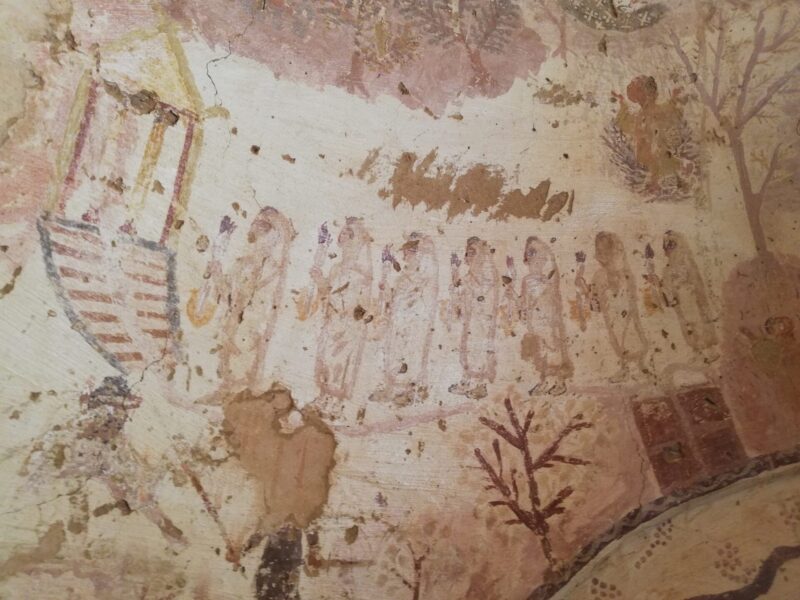

Hot spring at El Bugawat
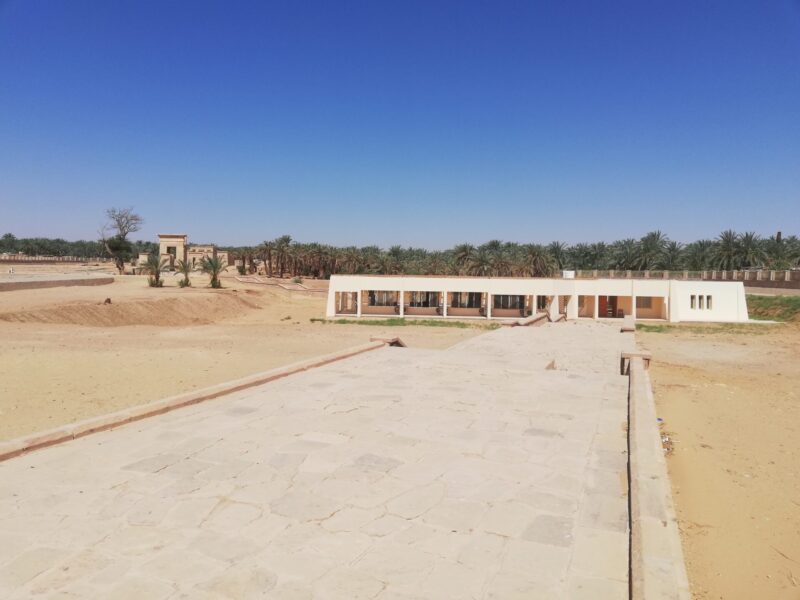
Temple of Hibis

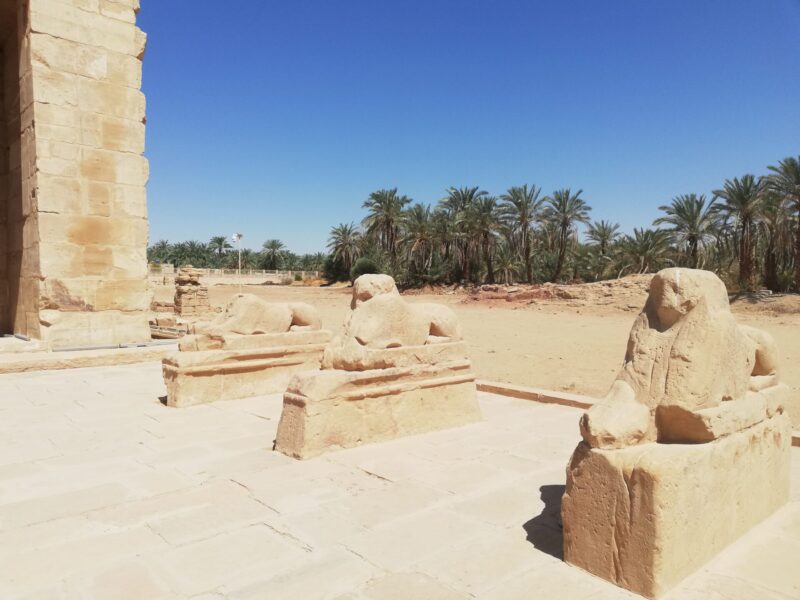
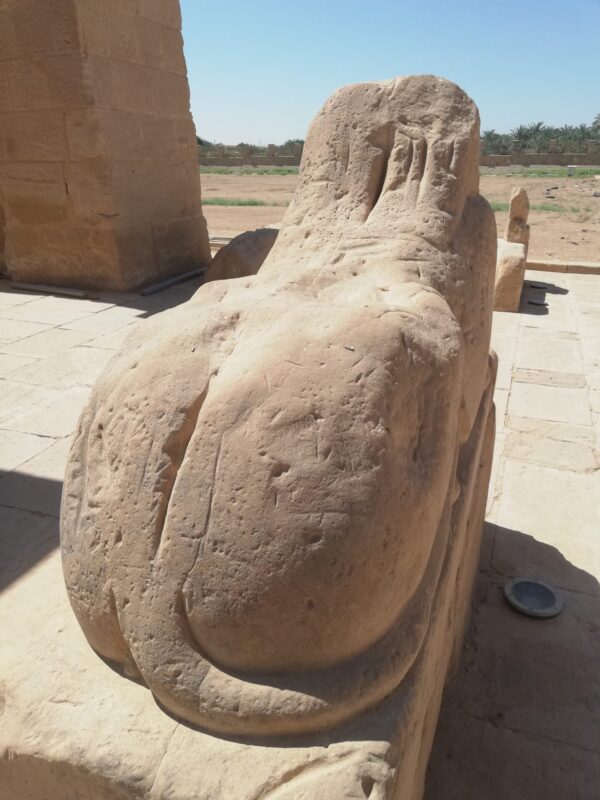

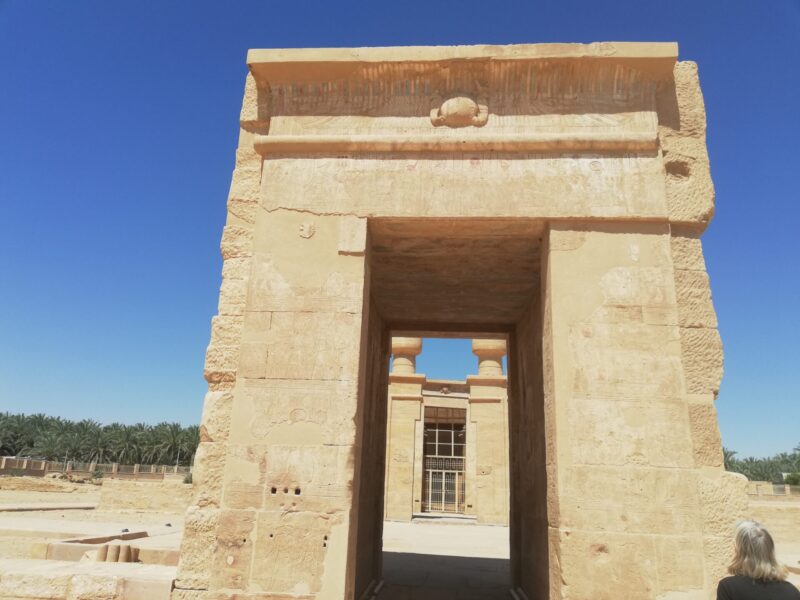
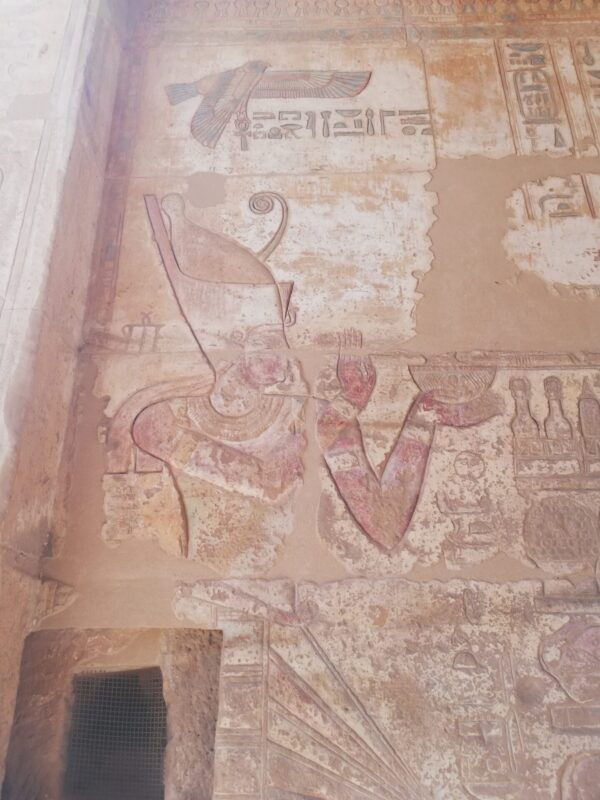

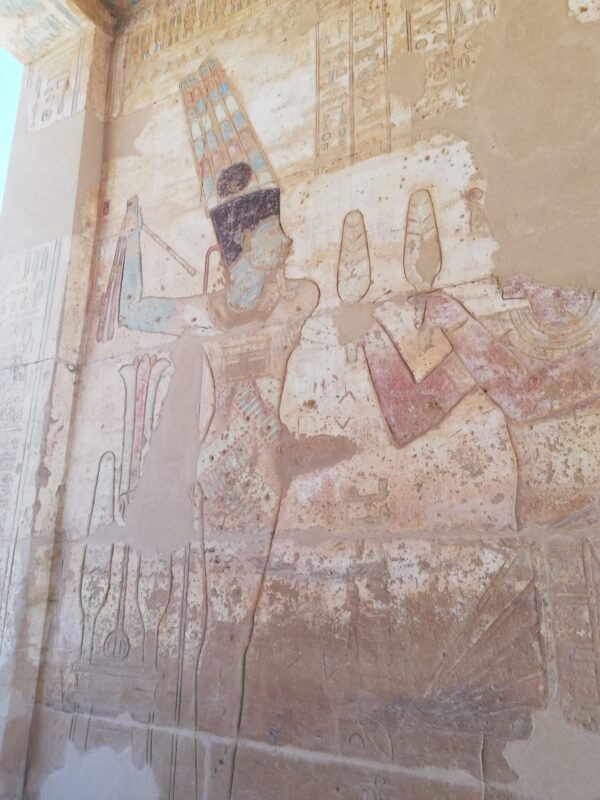
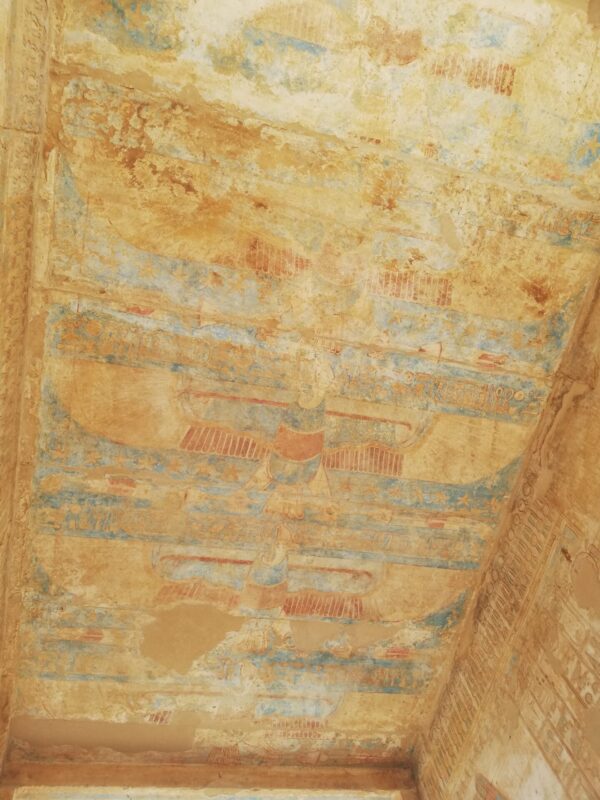
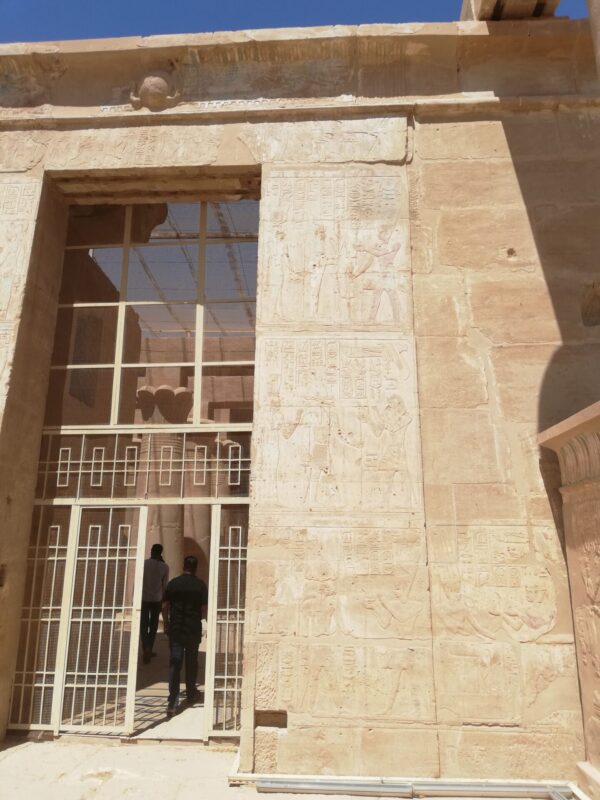
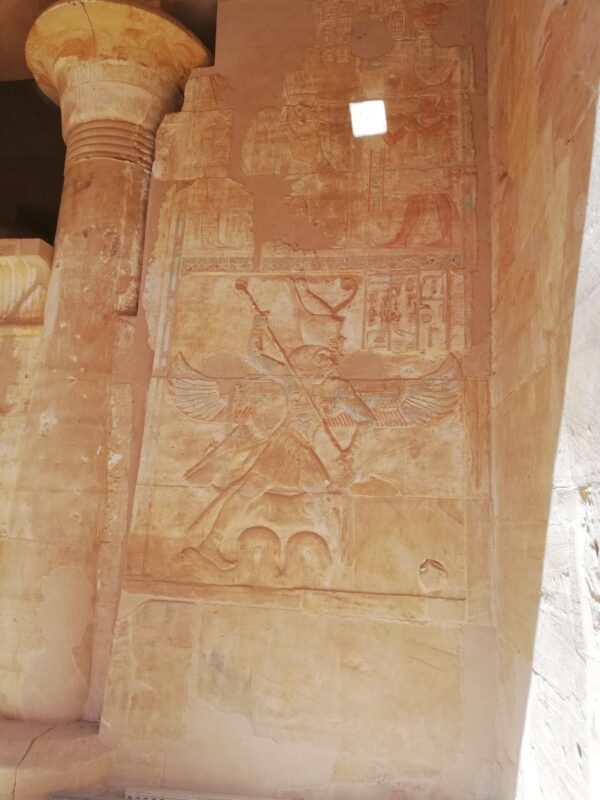
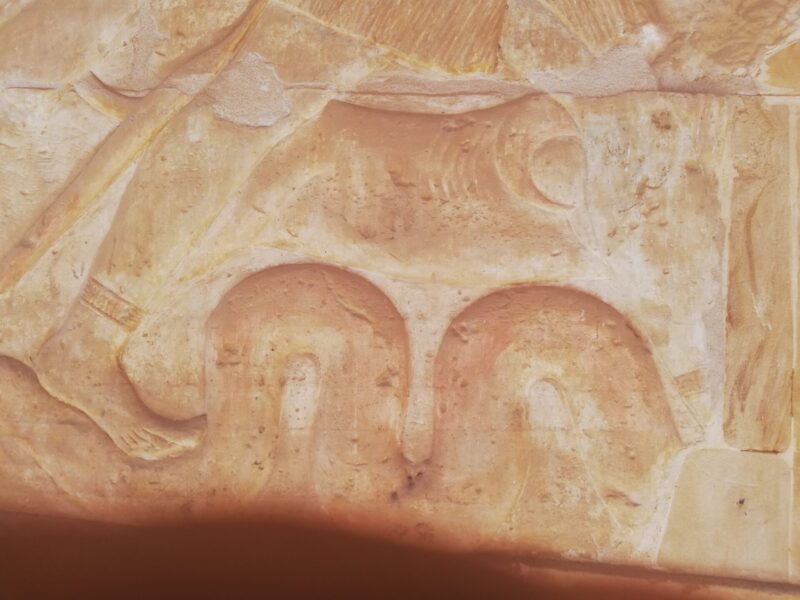

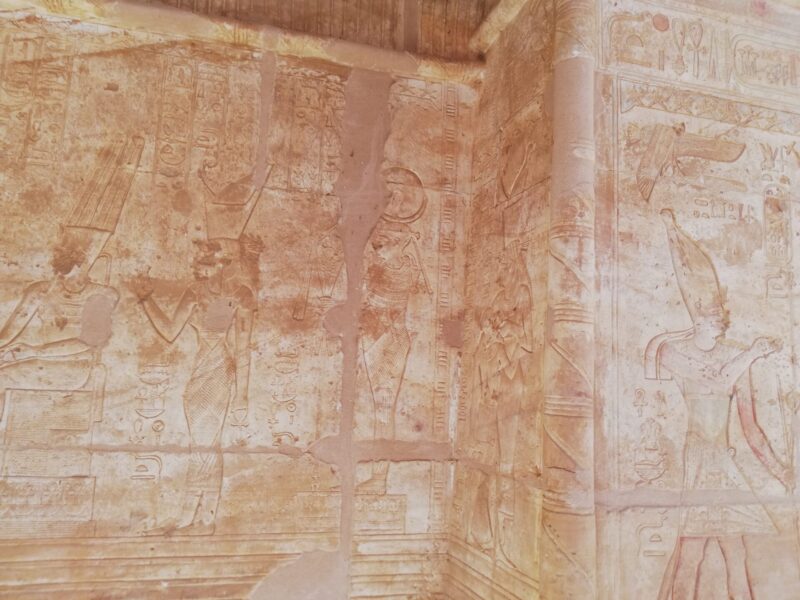
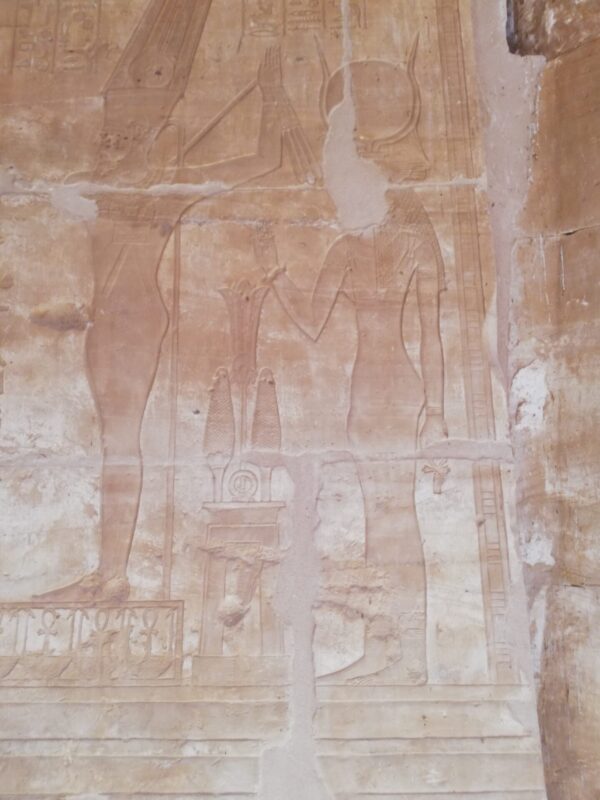

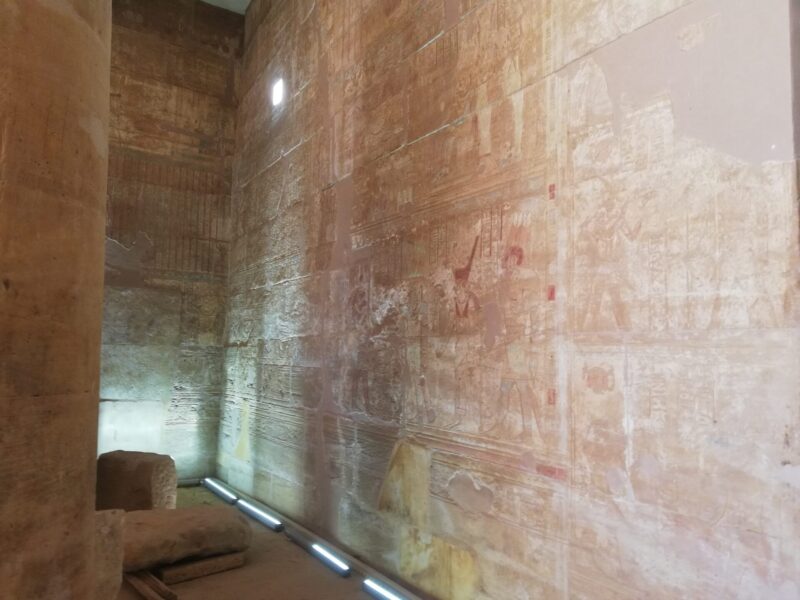
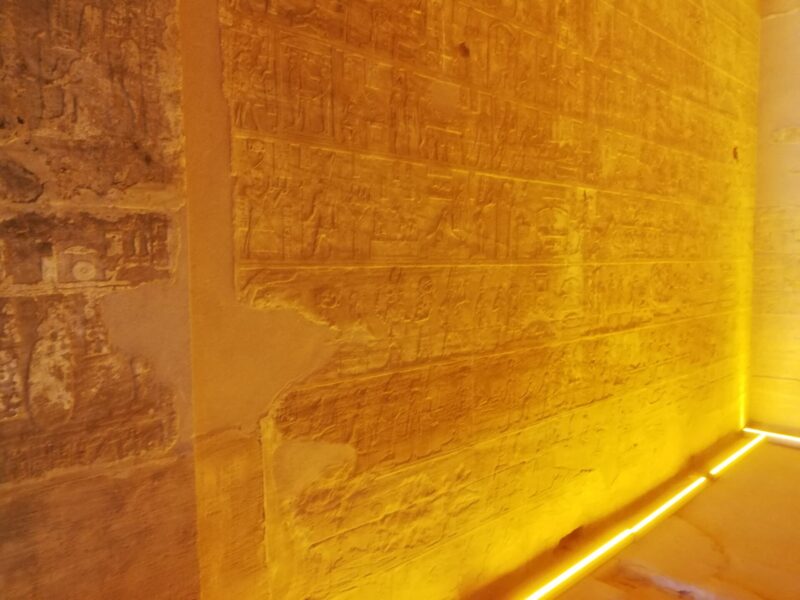
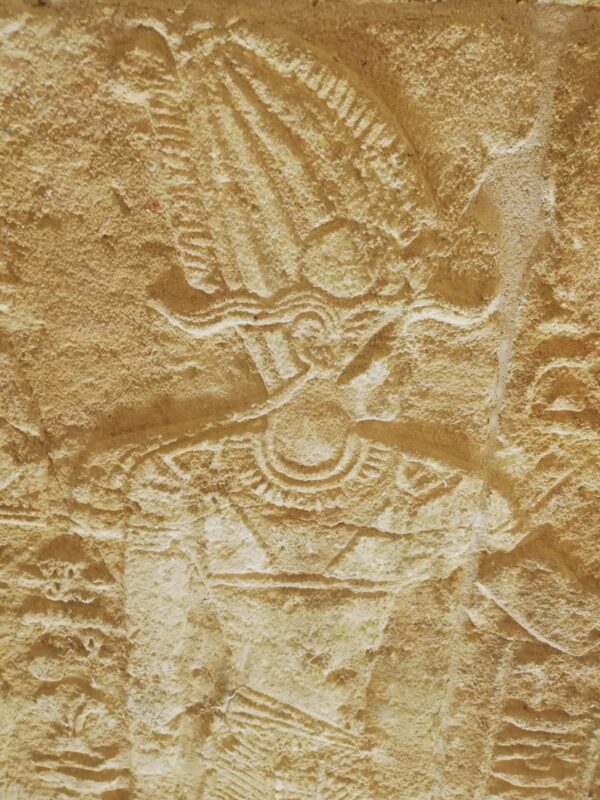
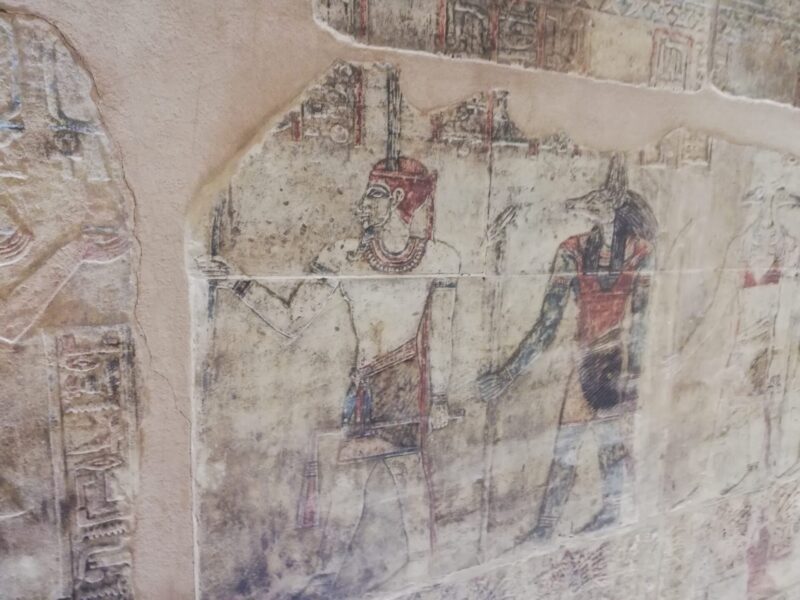

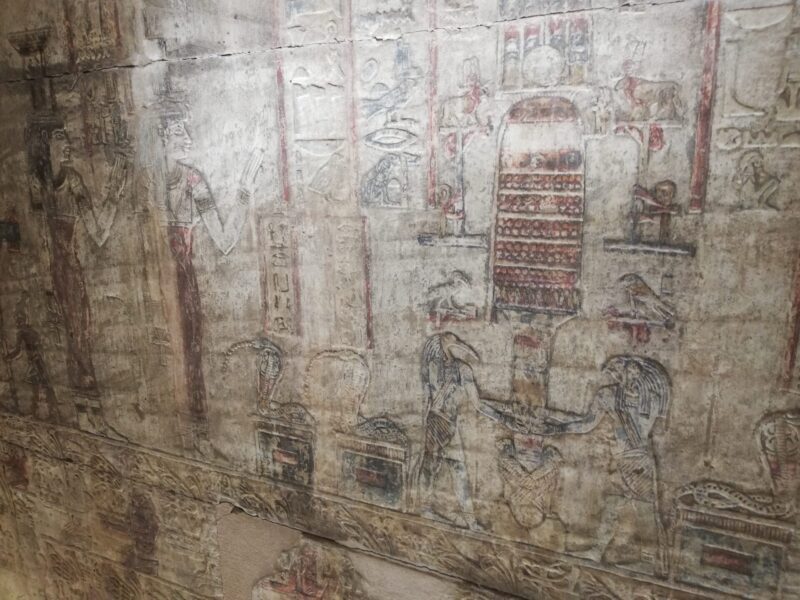
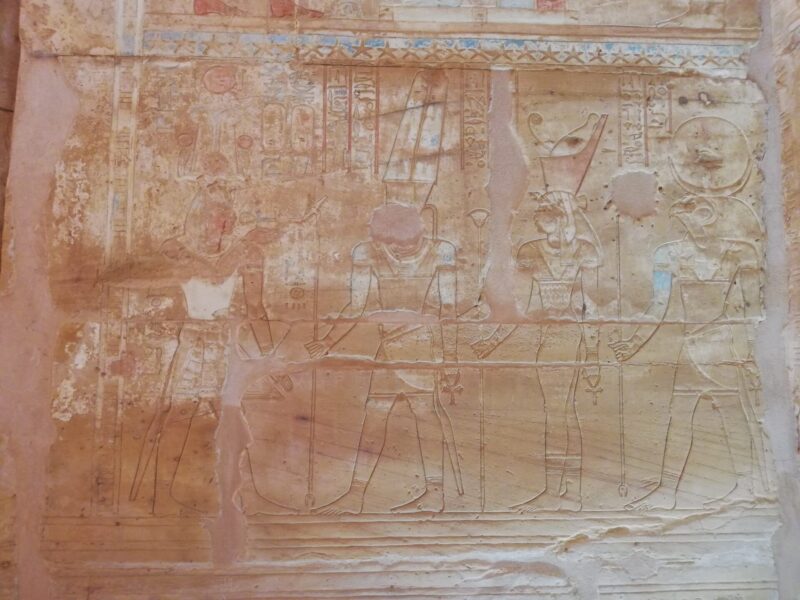


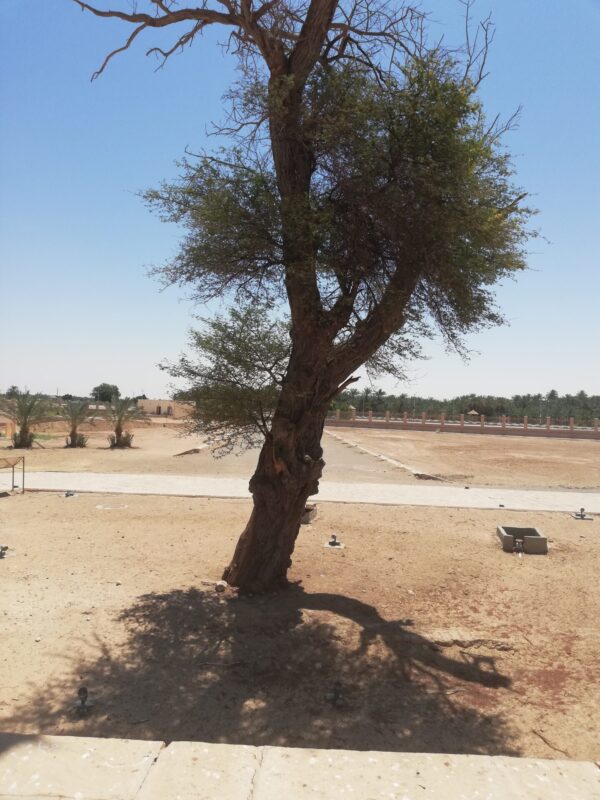

El Kasr Fortress, Mut
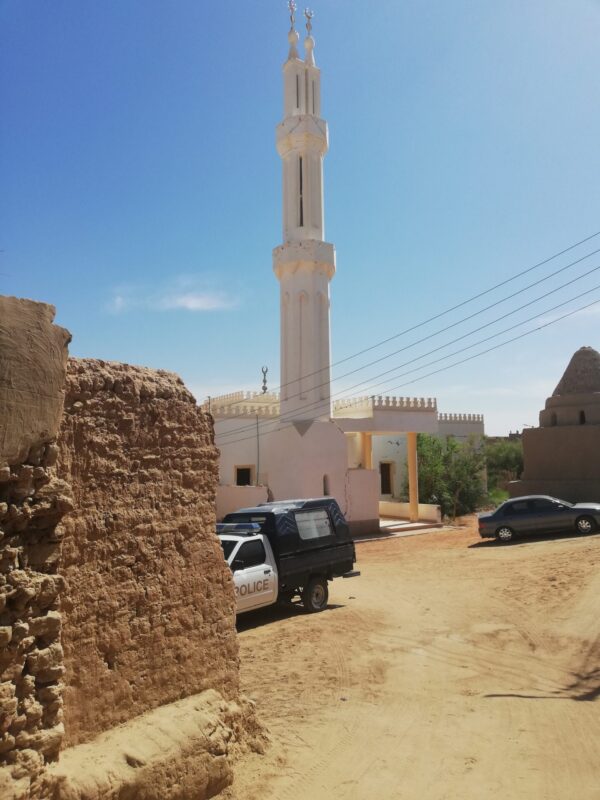
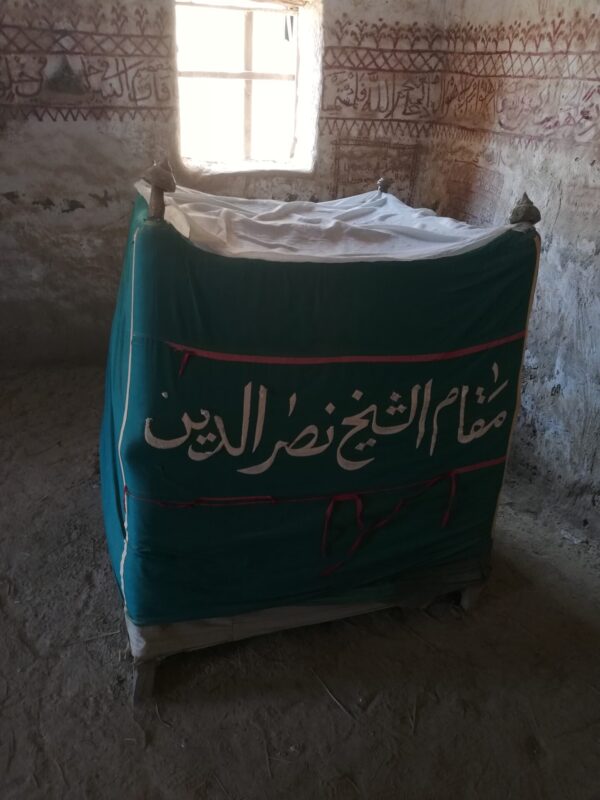
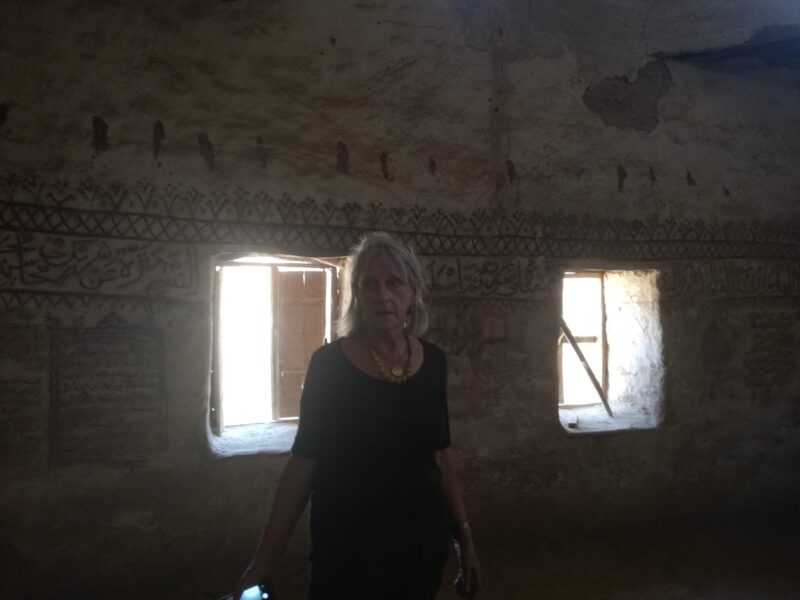
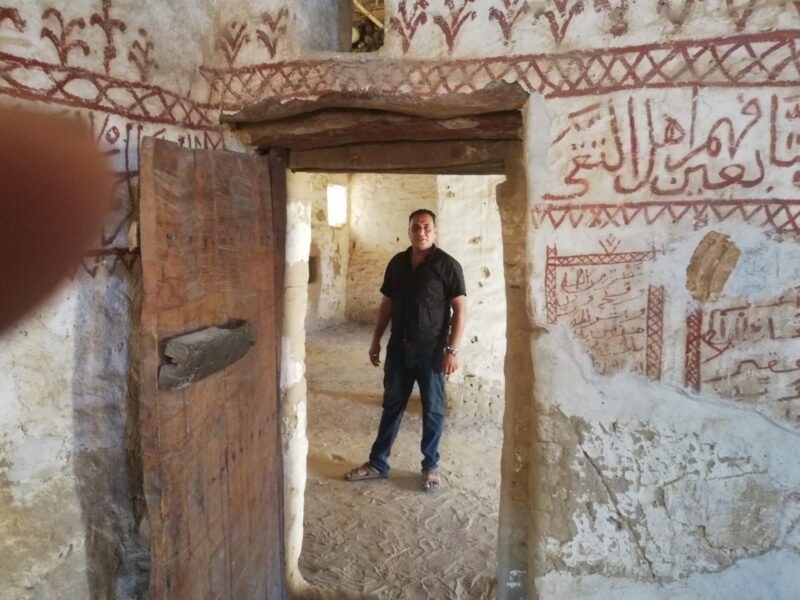
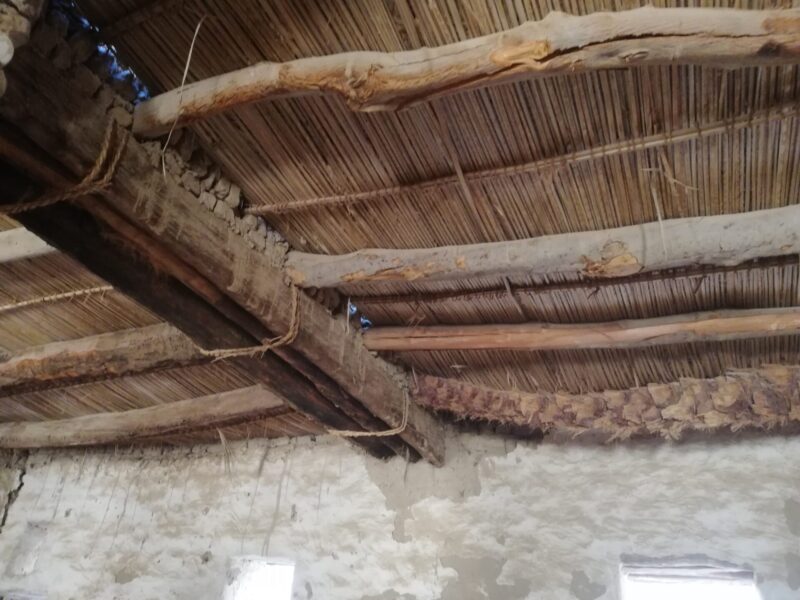
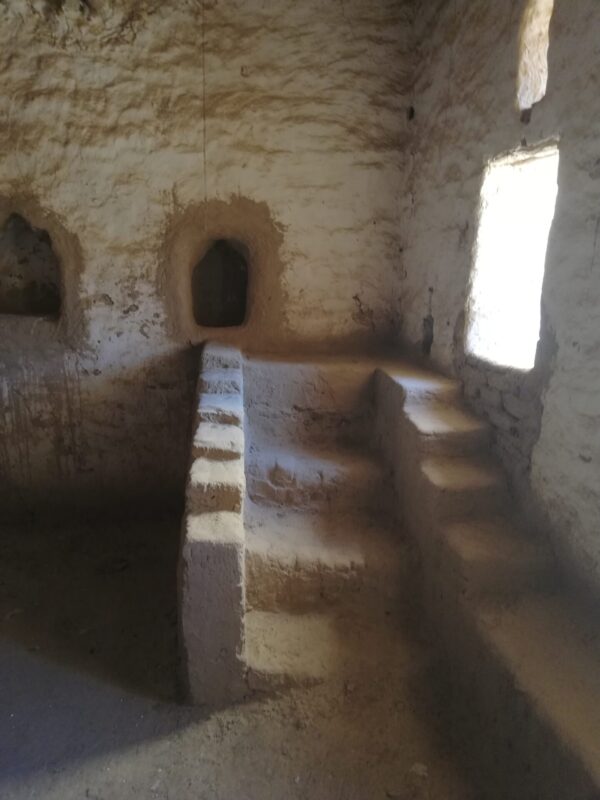
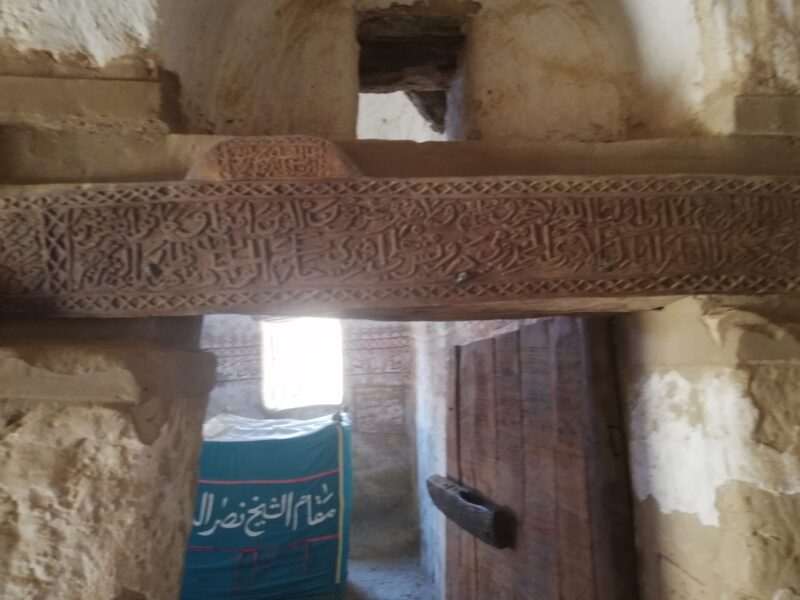
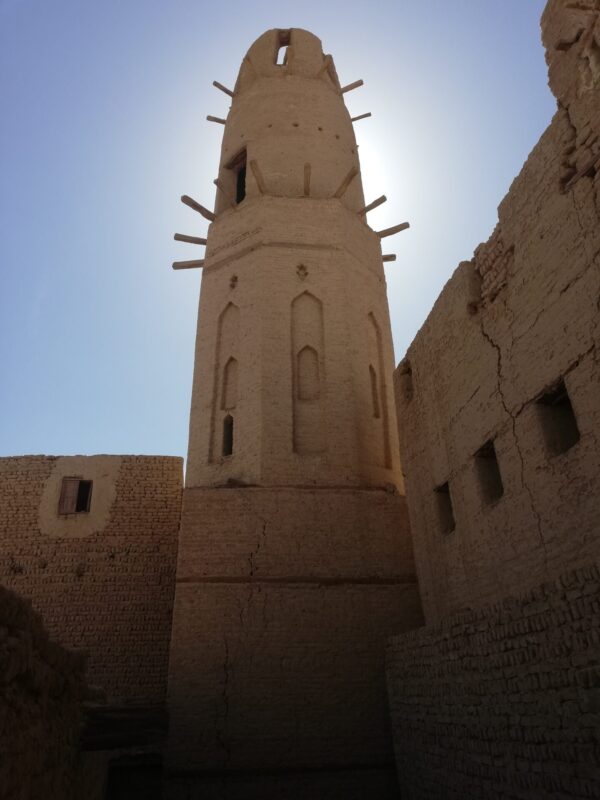

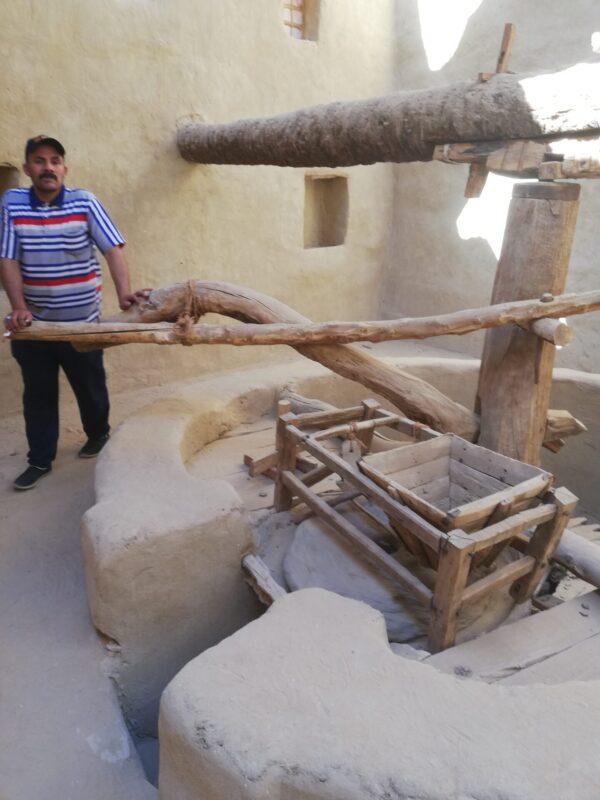
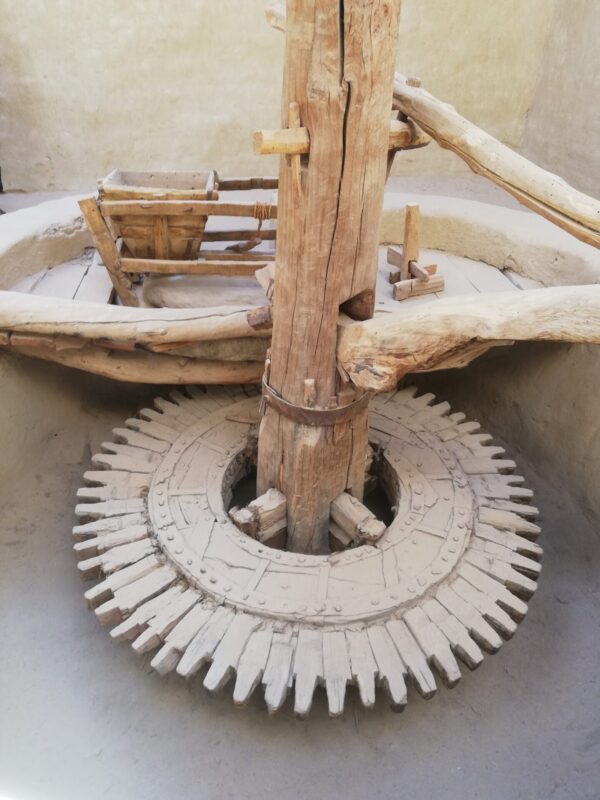
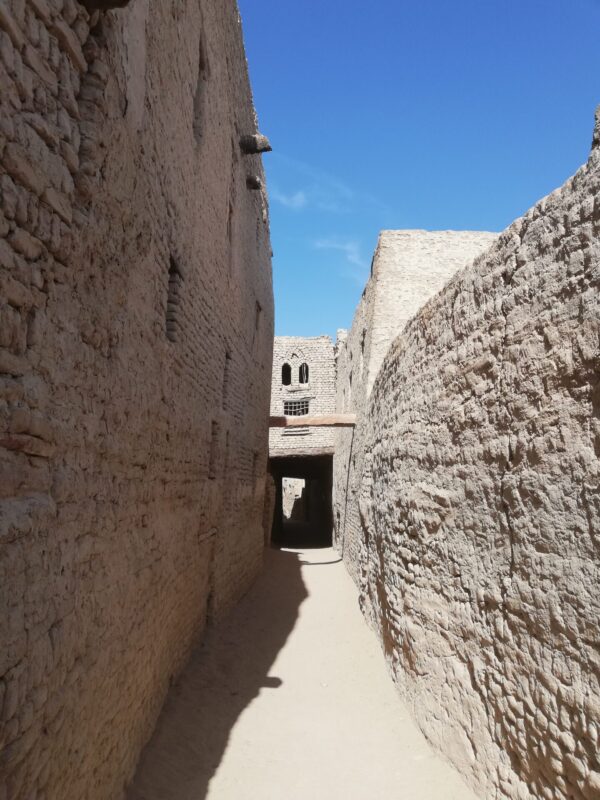
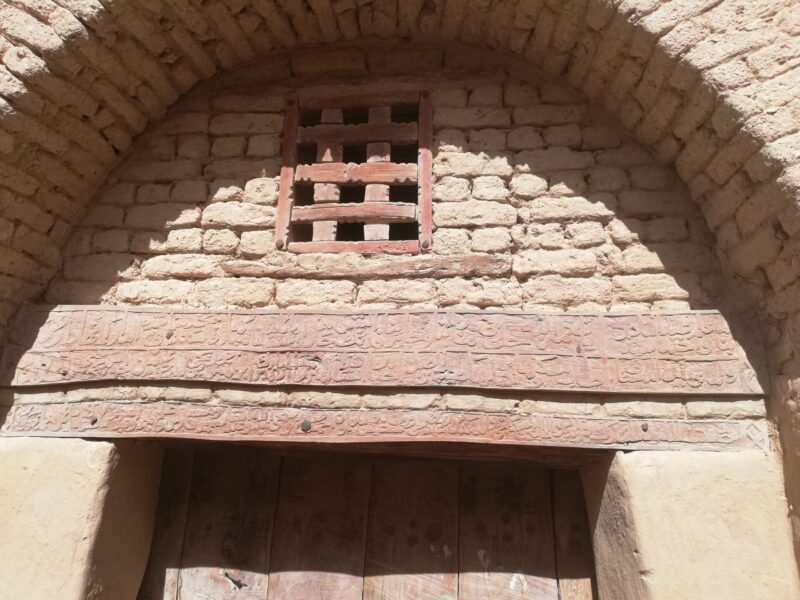
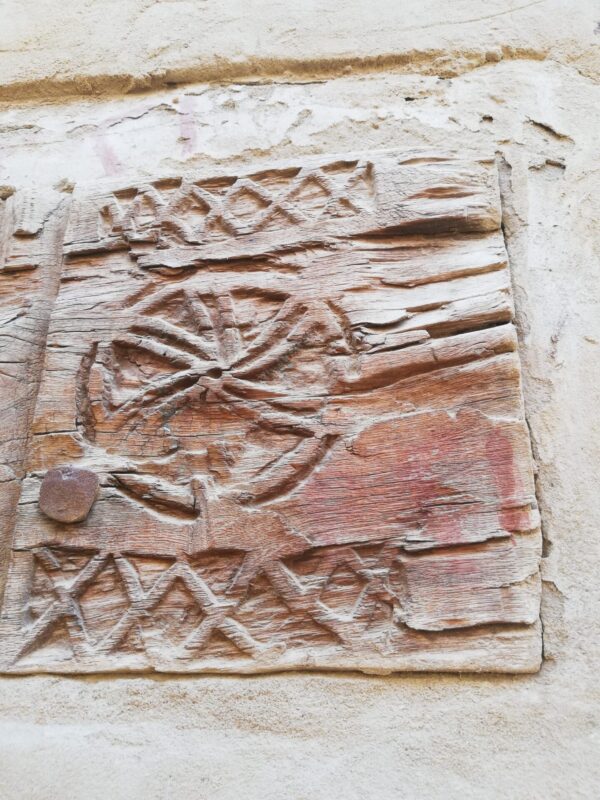

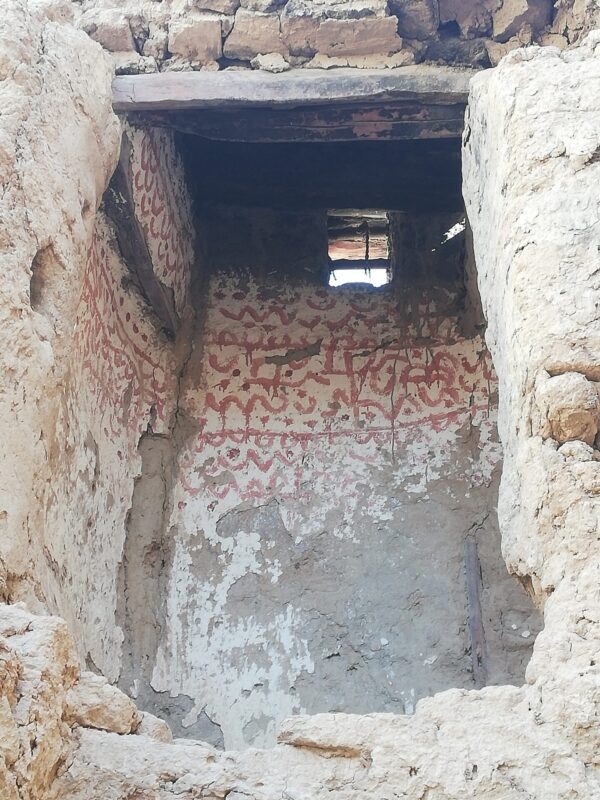
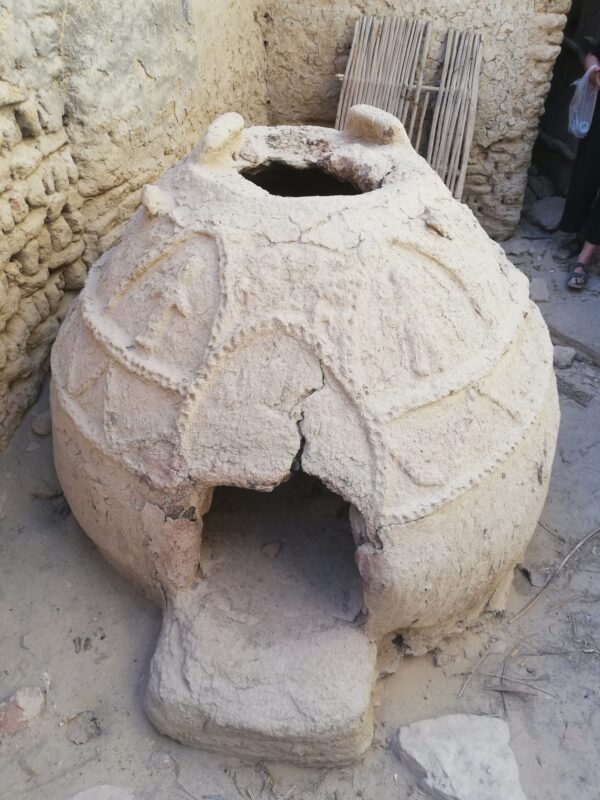
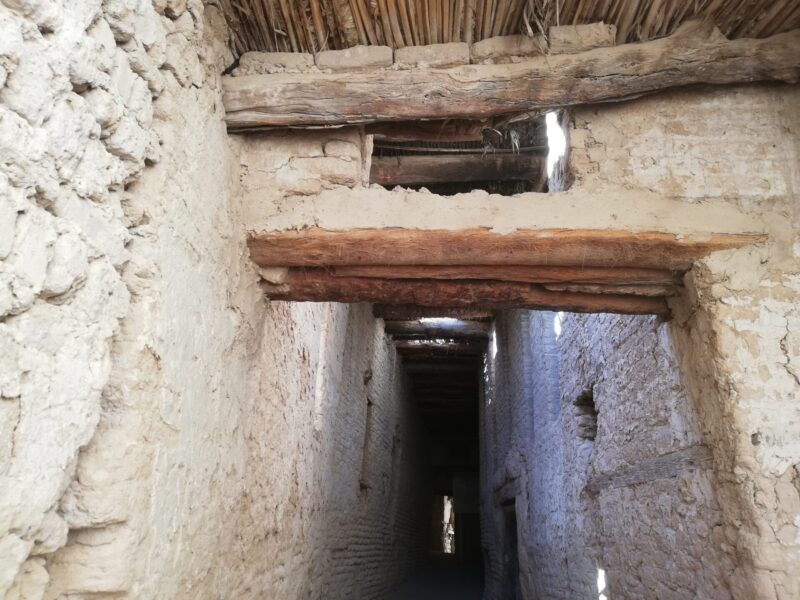
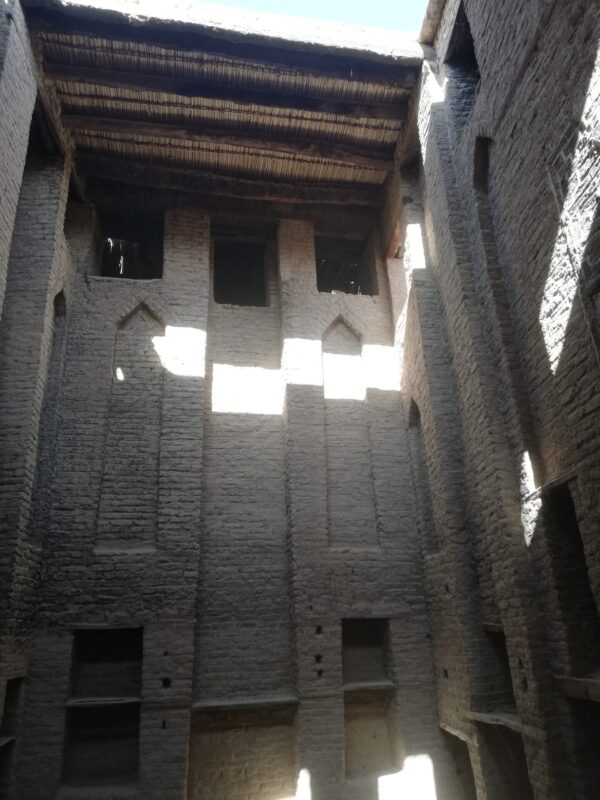
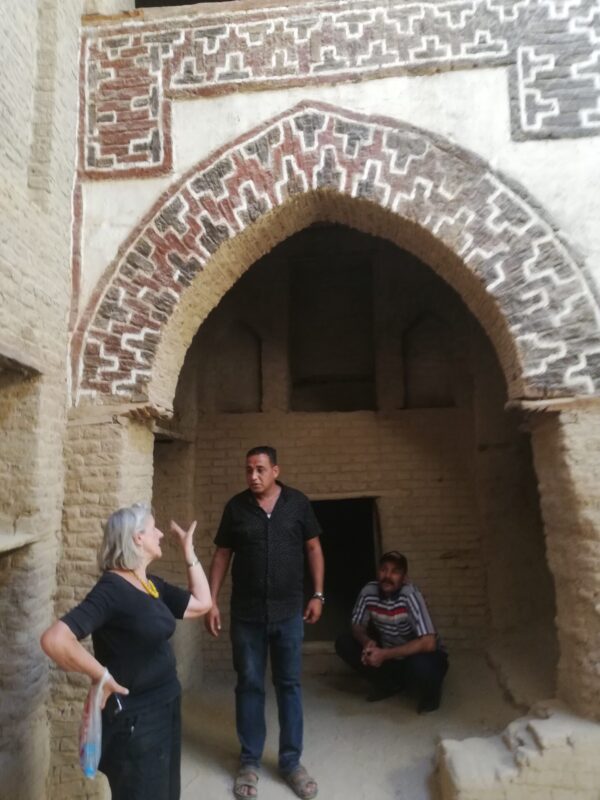
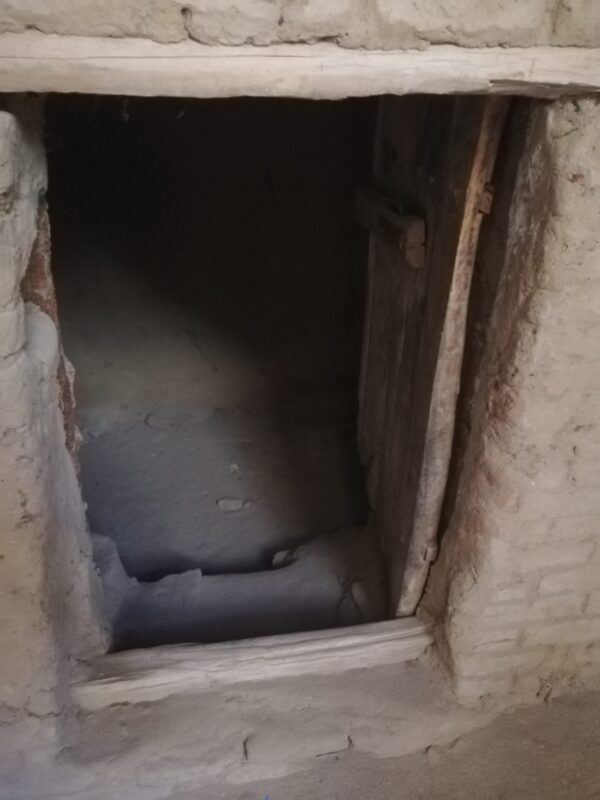
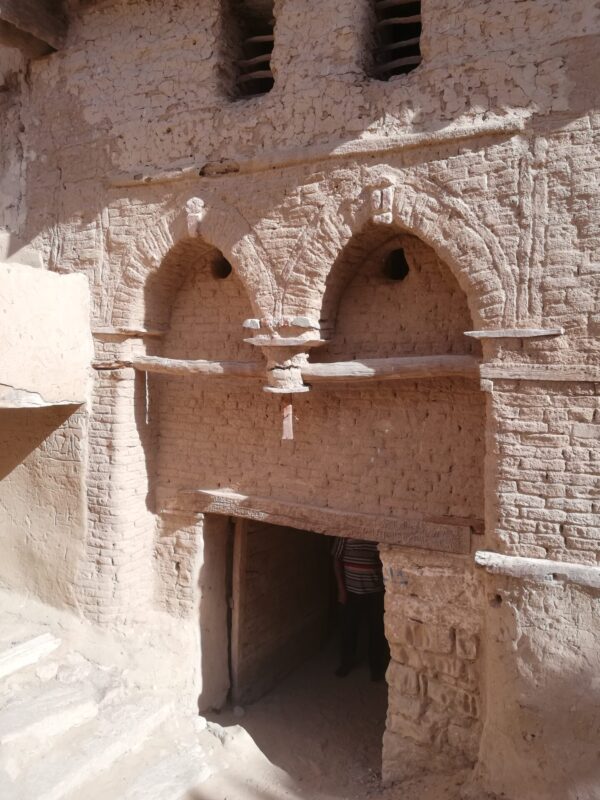
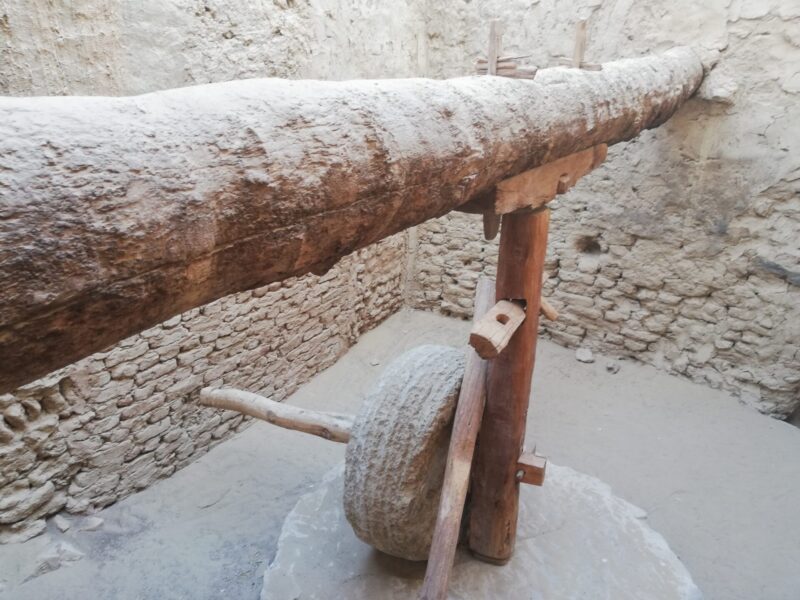

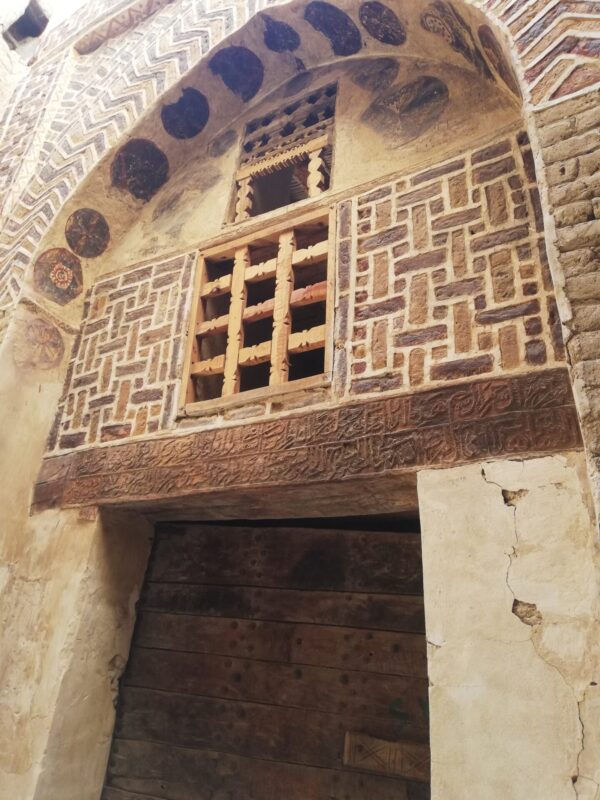
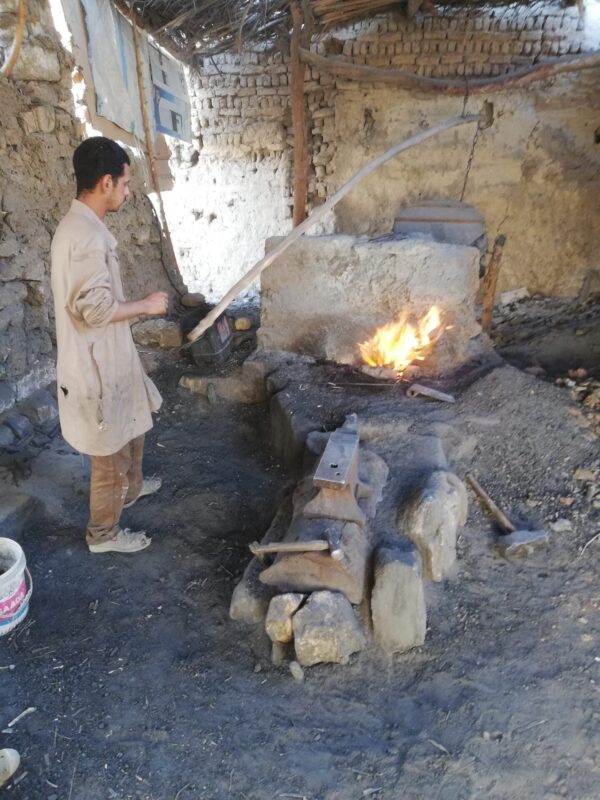
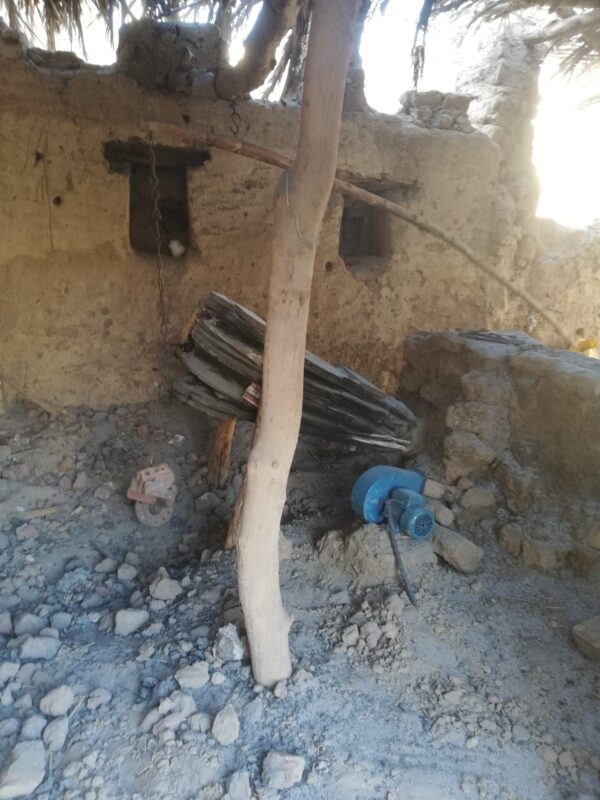
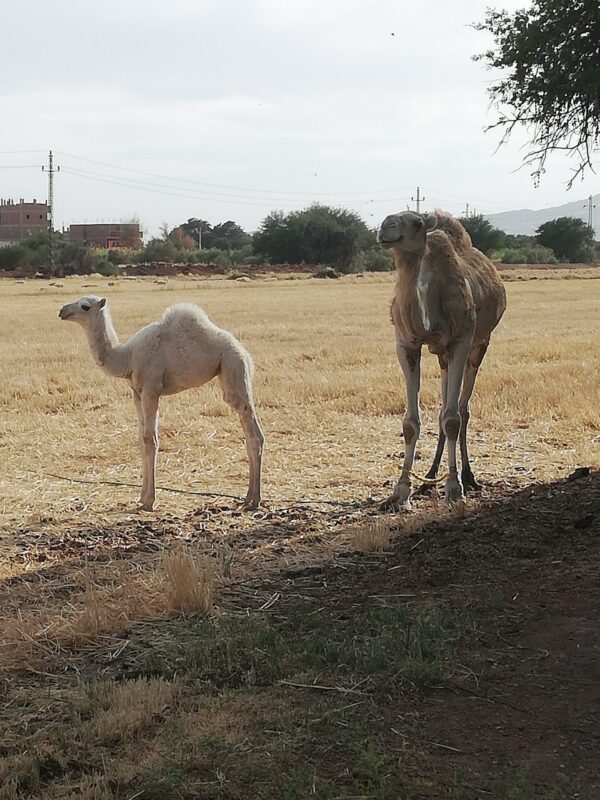
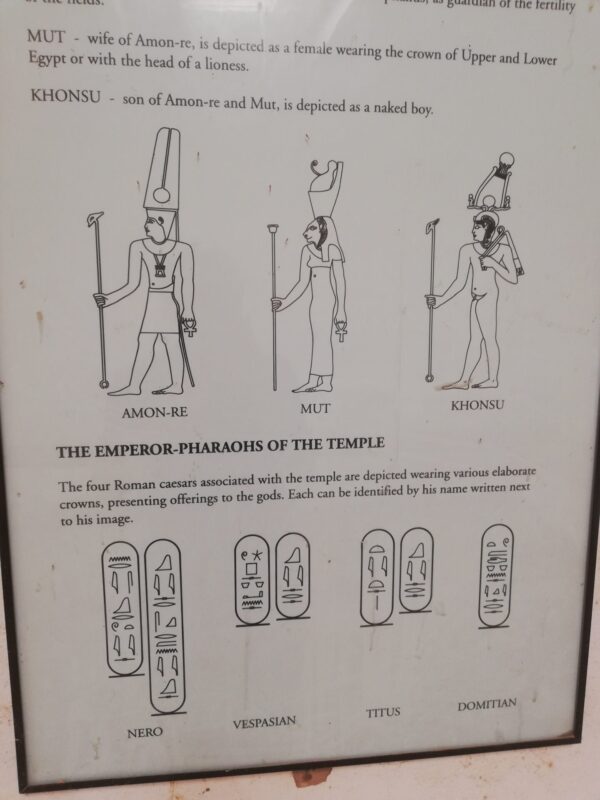
Deir el-Hagar
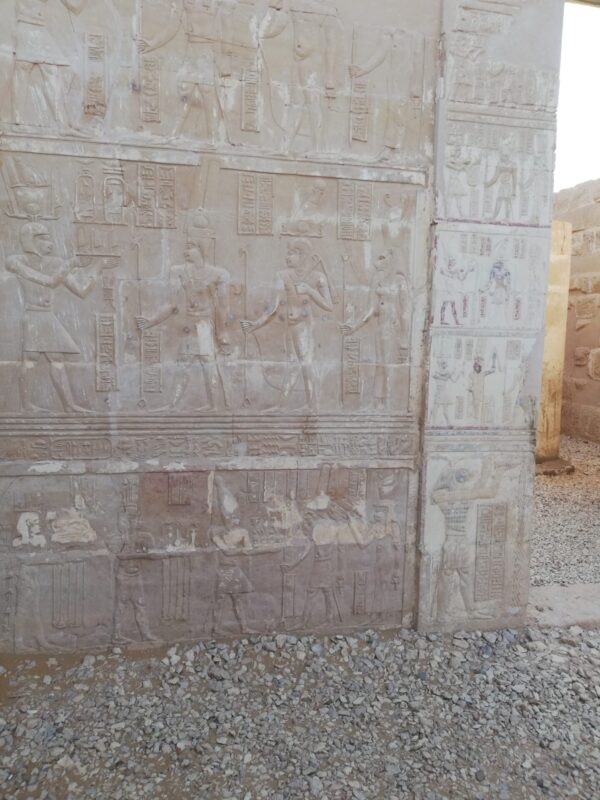
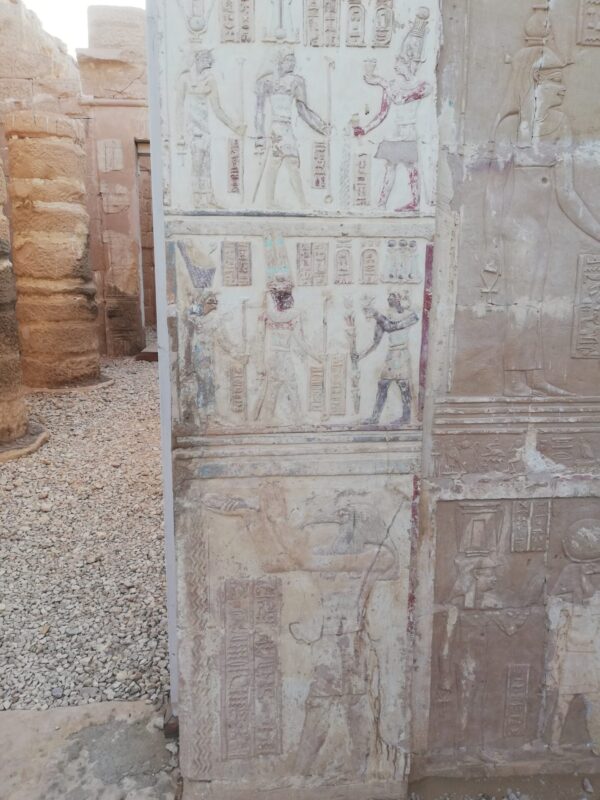
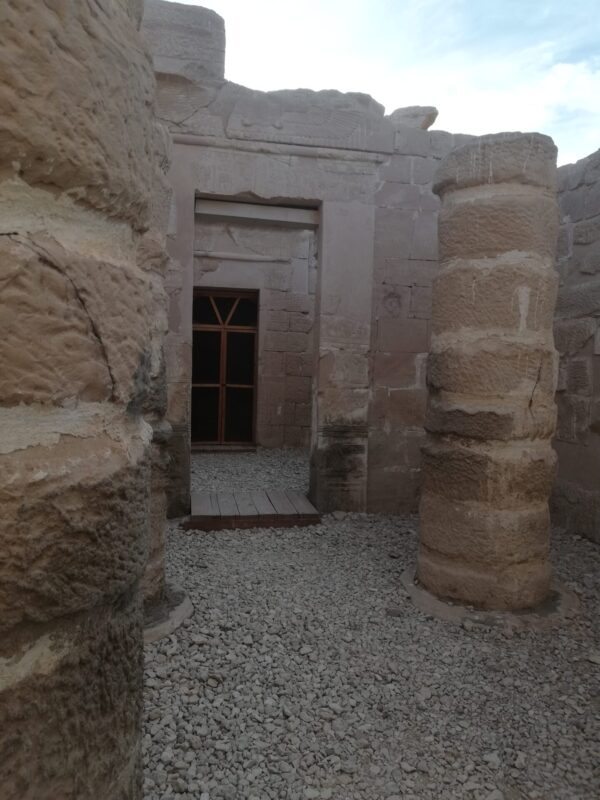
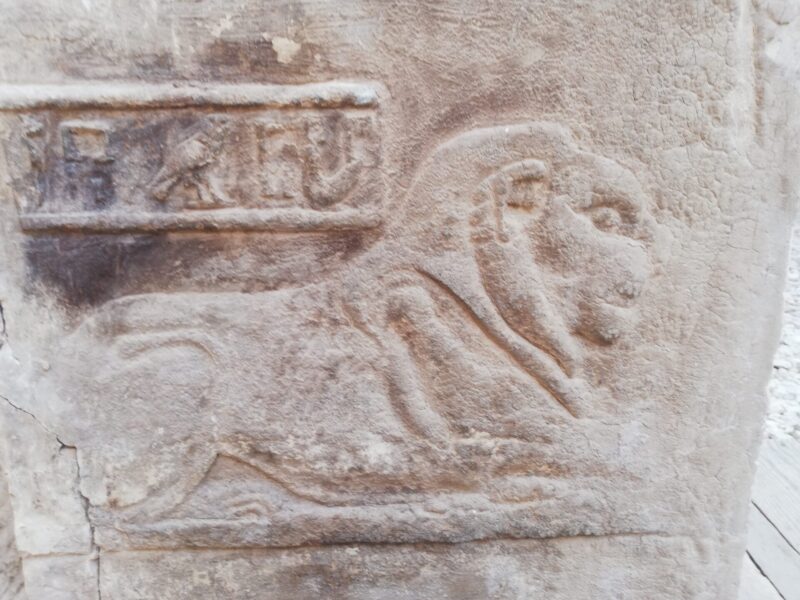
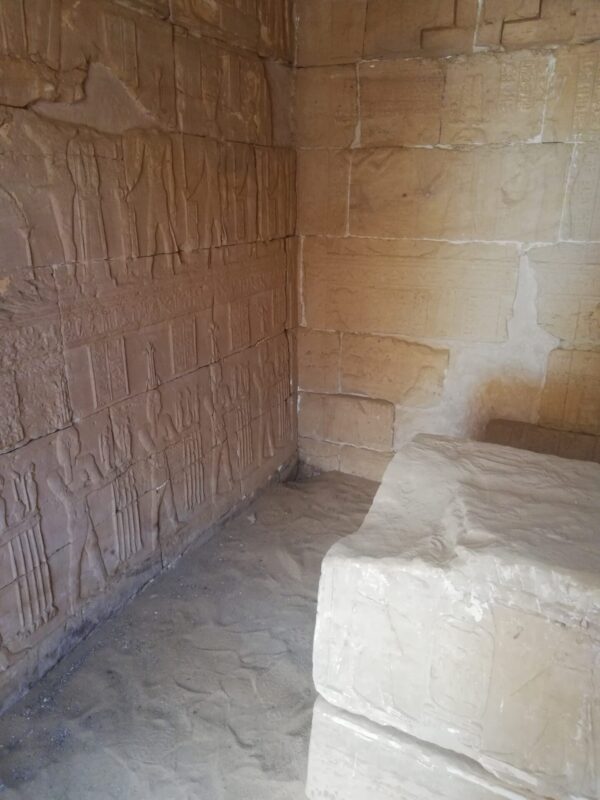
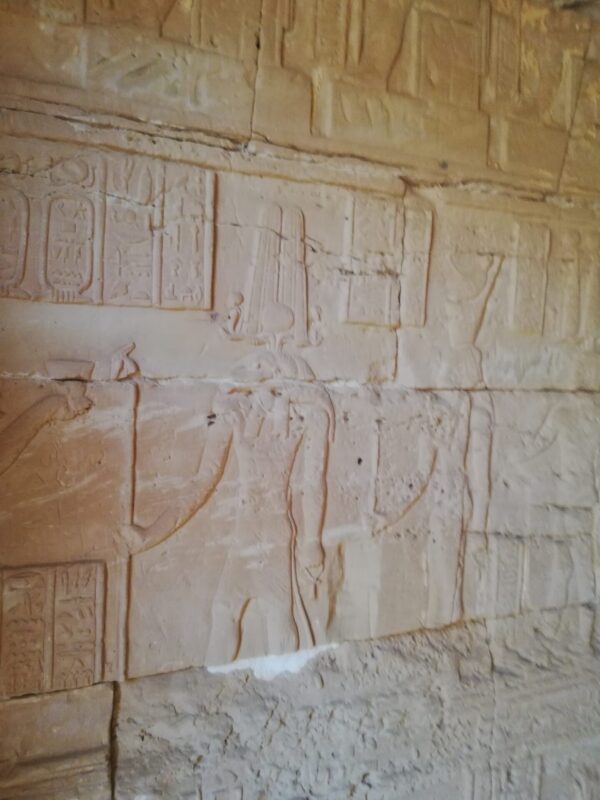
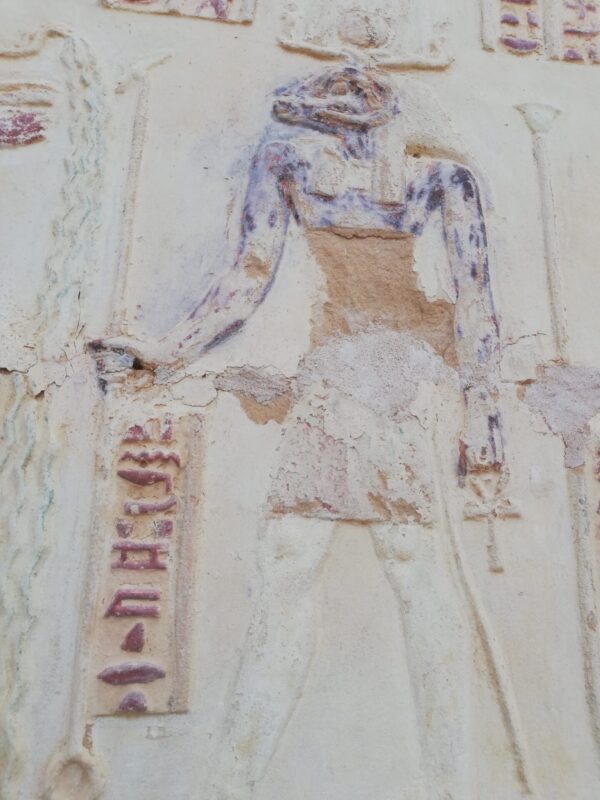
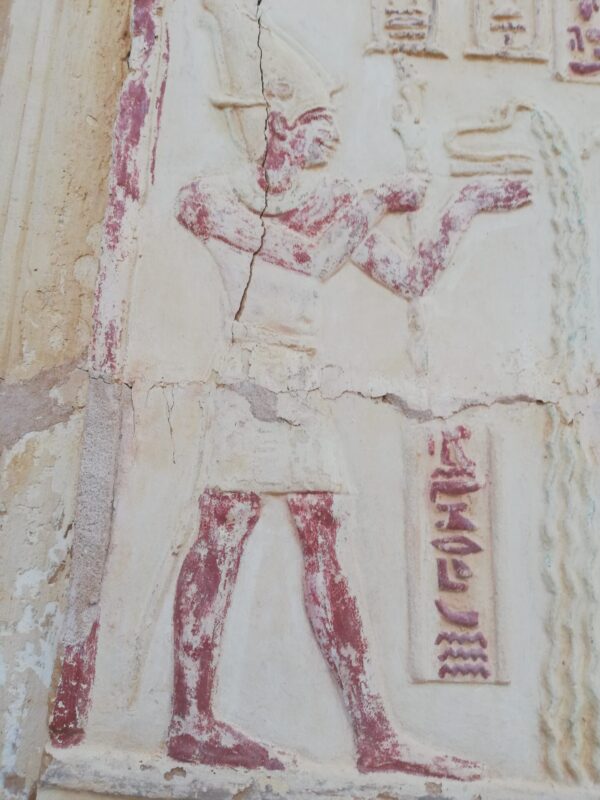
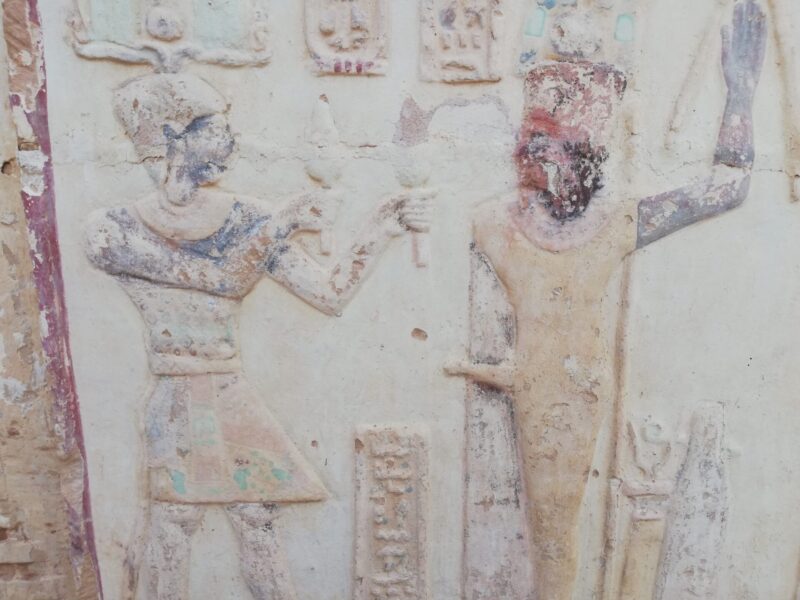
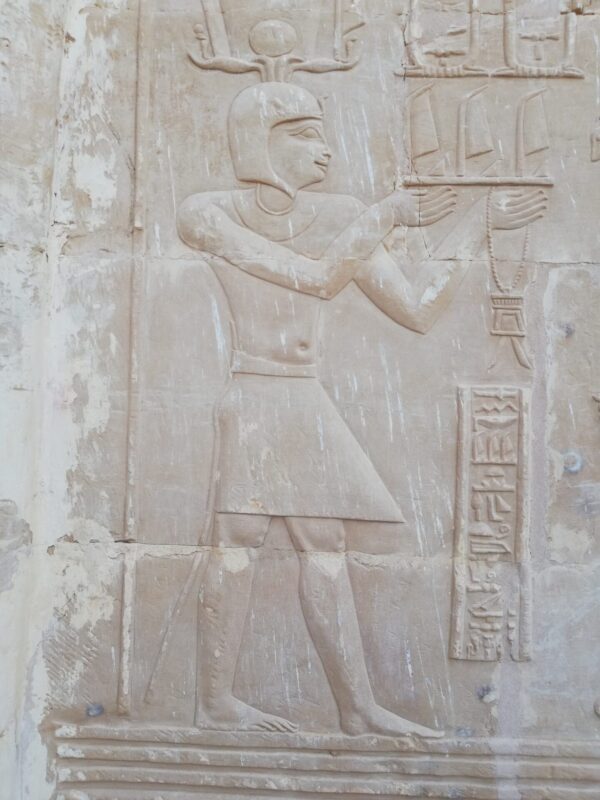
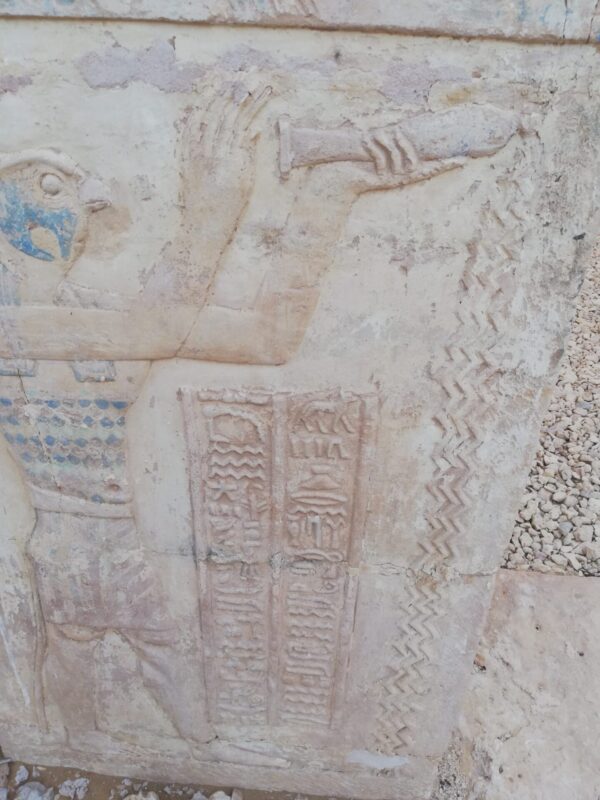
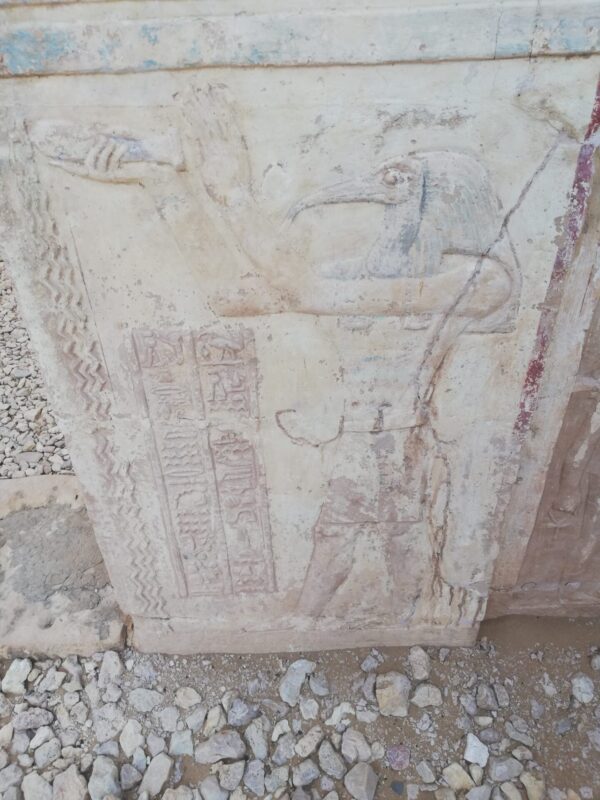

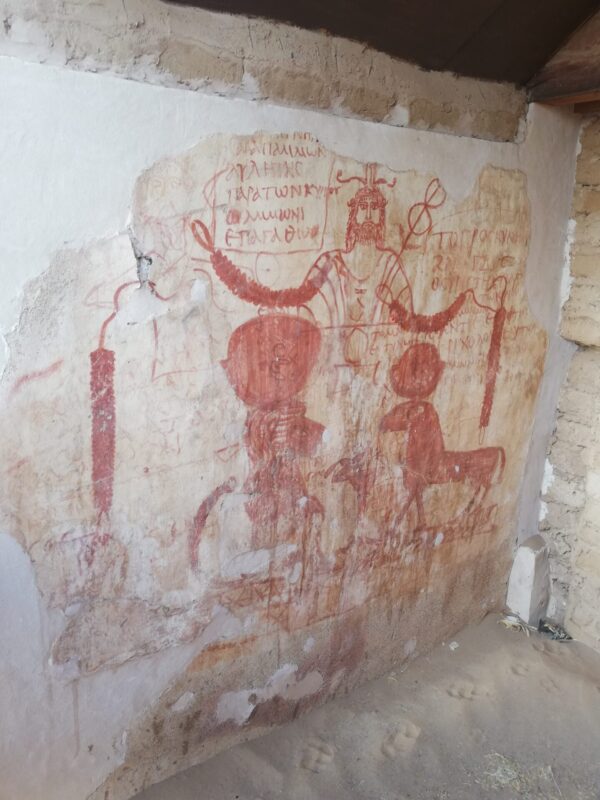

El Muzawaqqa tombs
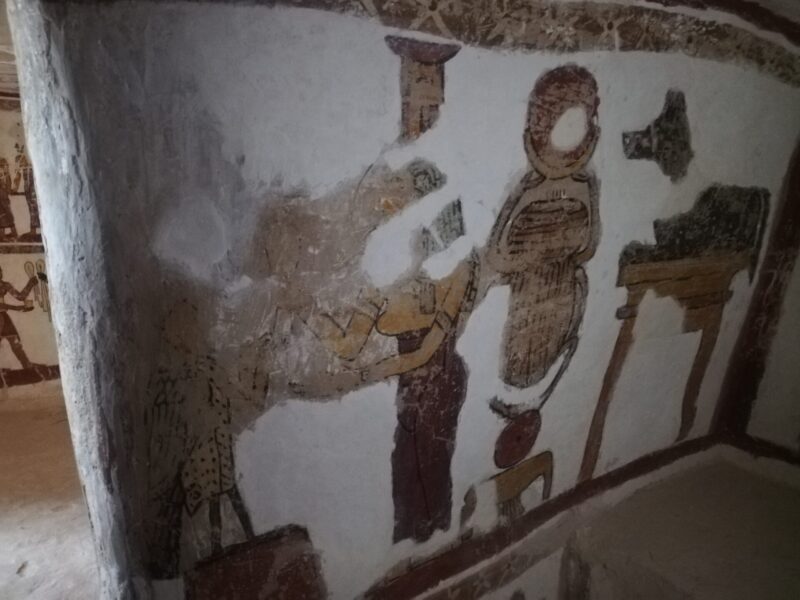
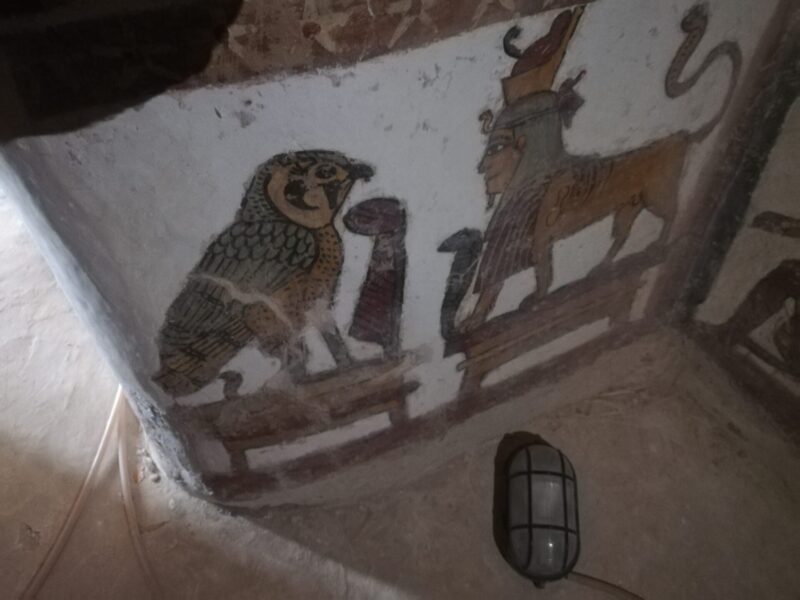

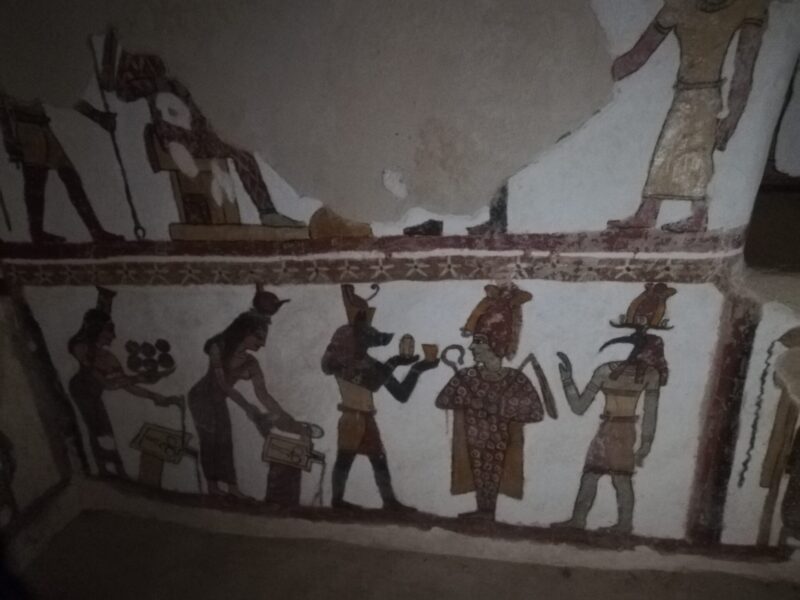
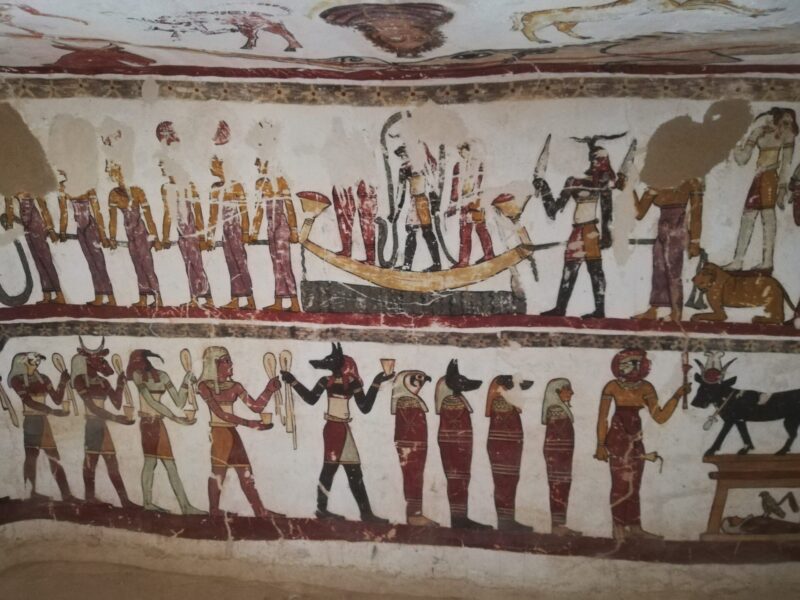
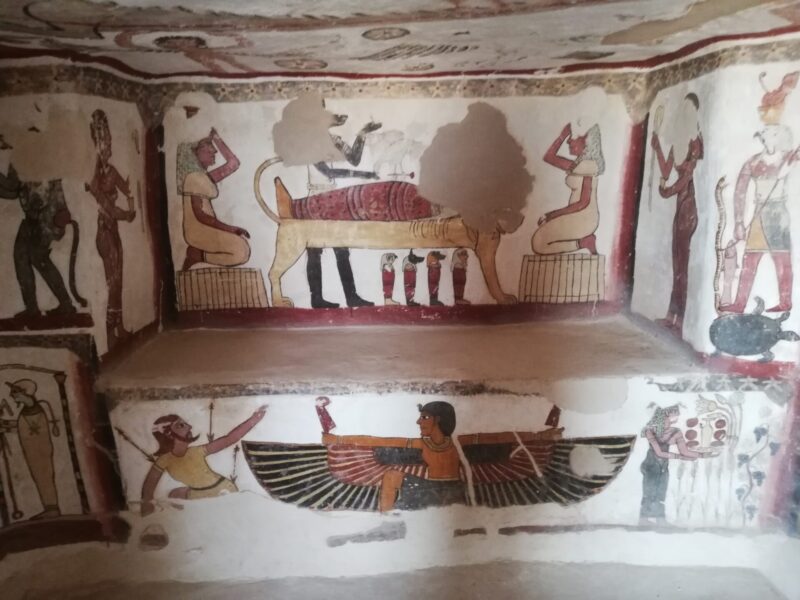

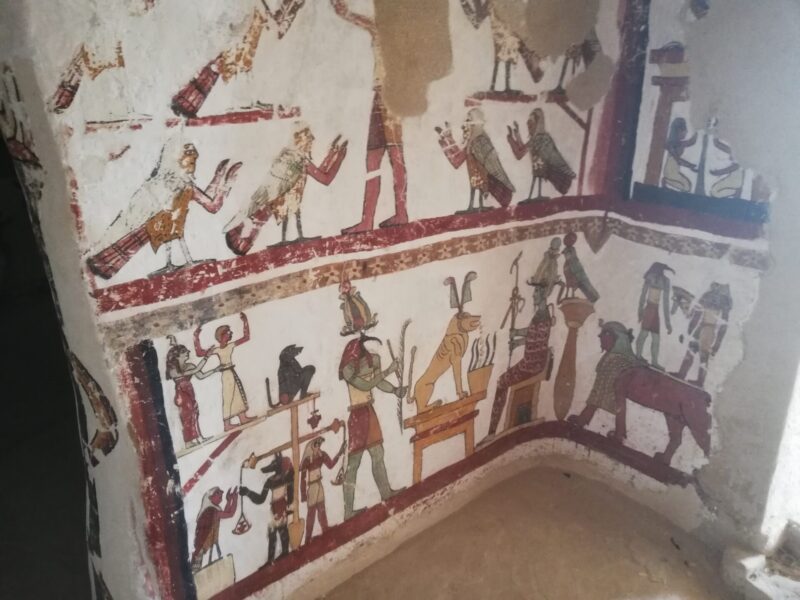
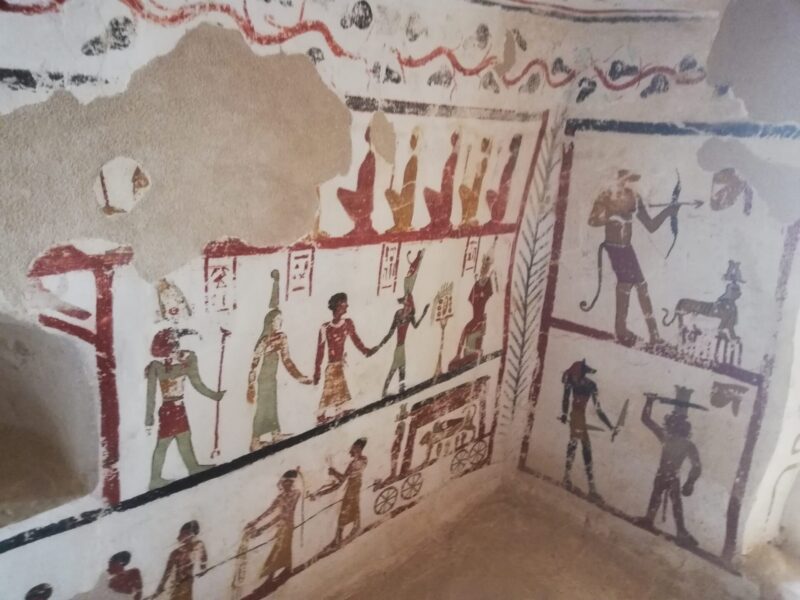
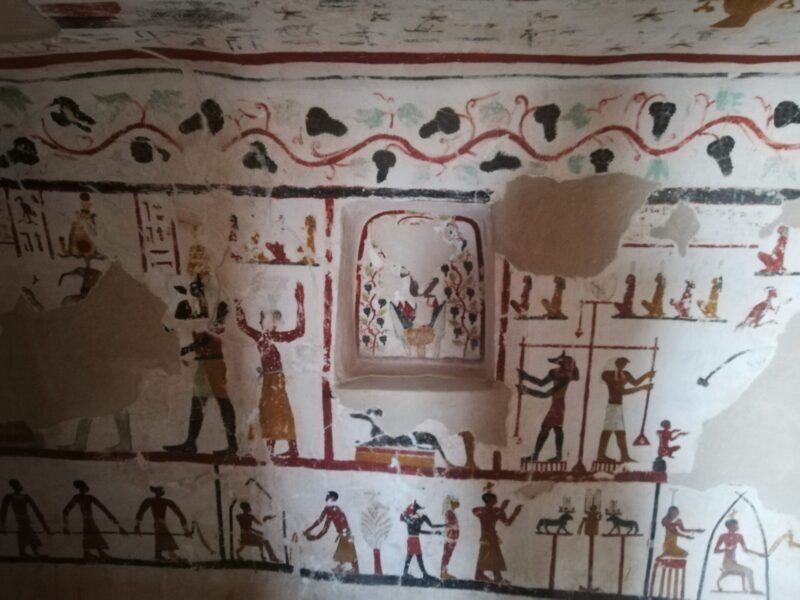
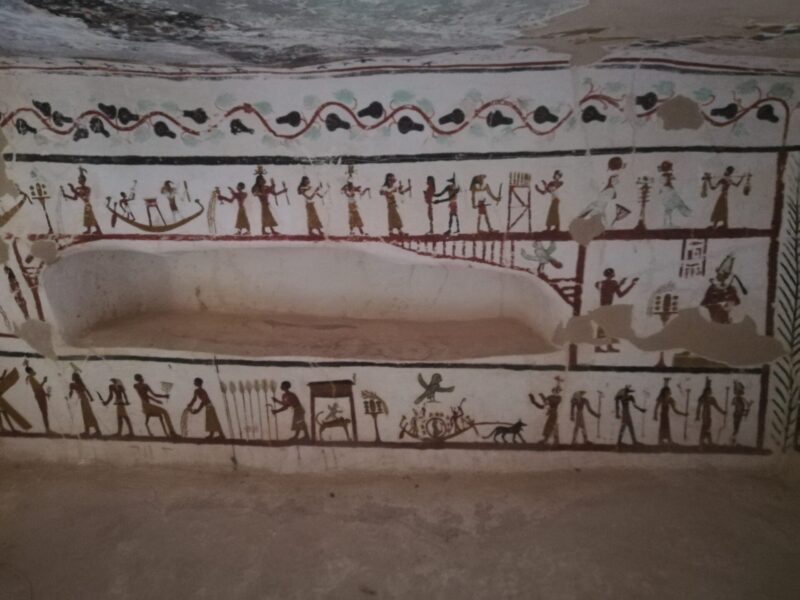
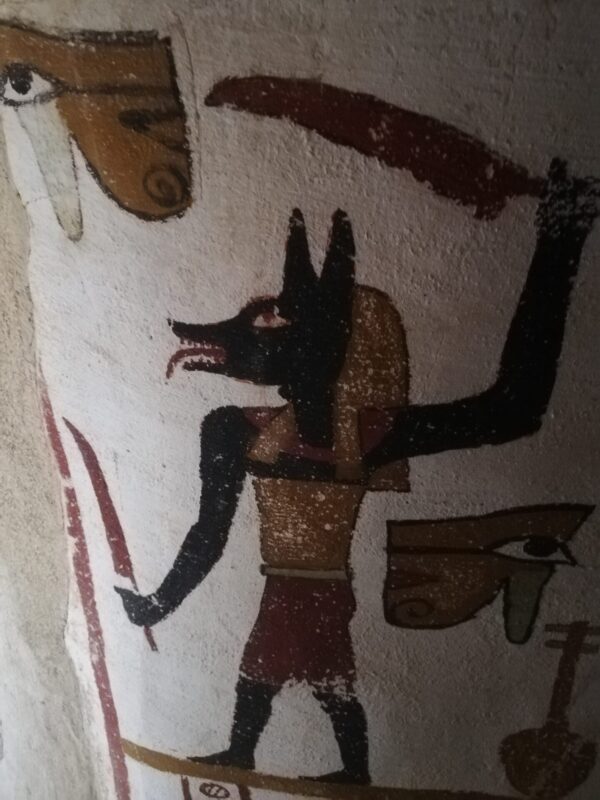
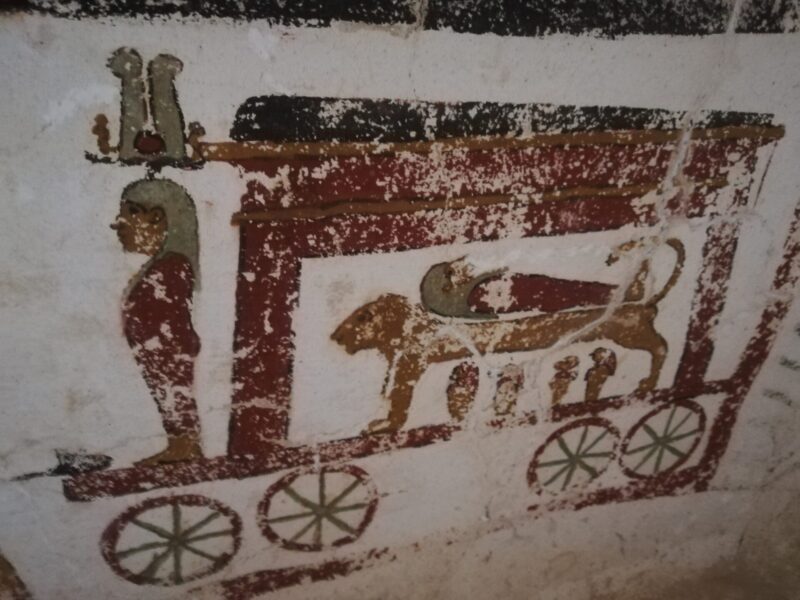
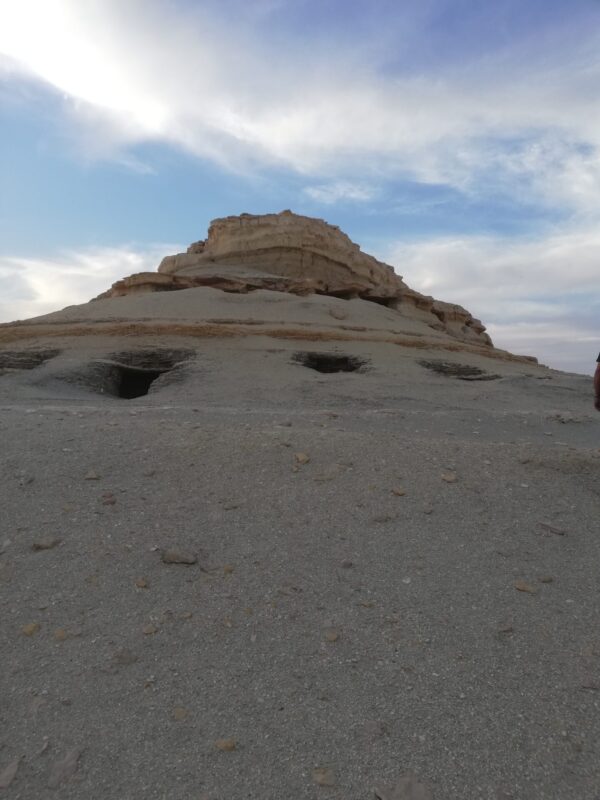
Tombs for poor people
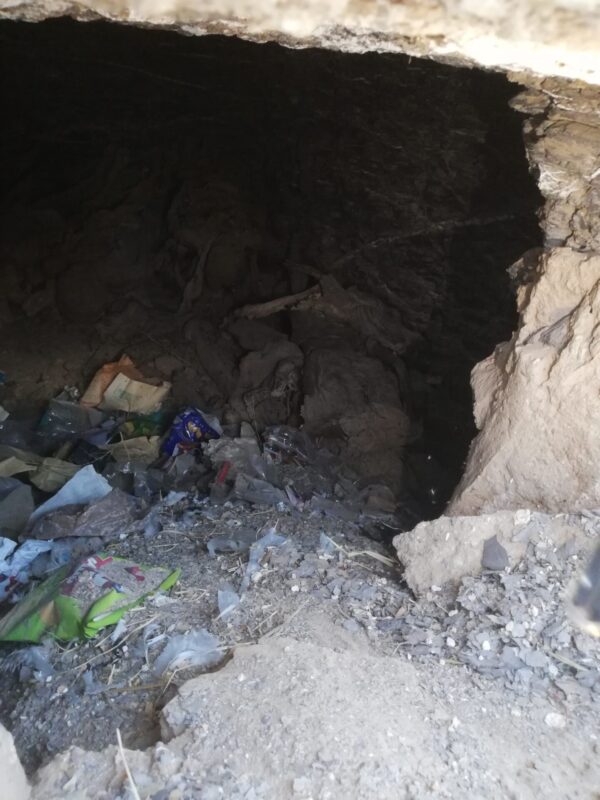
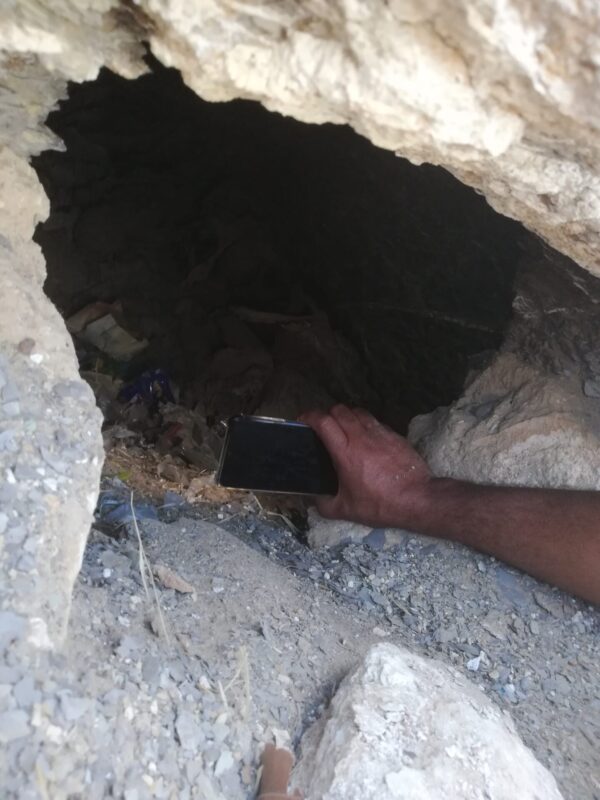
Five mummies in this tomb: 4 big and one little
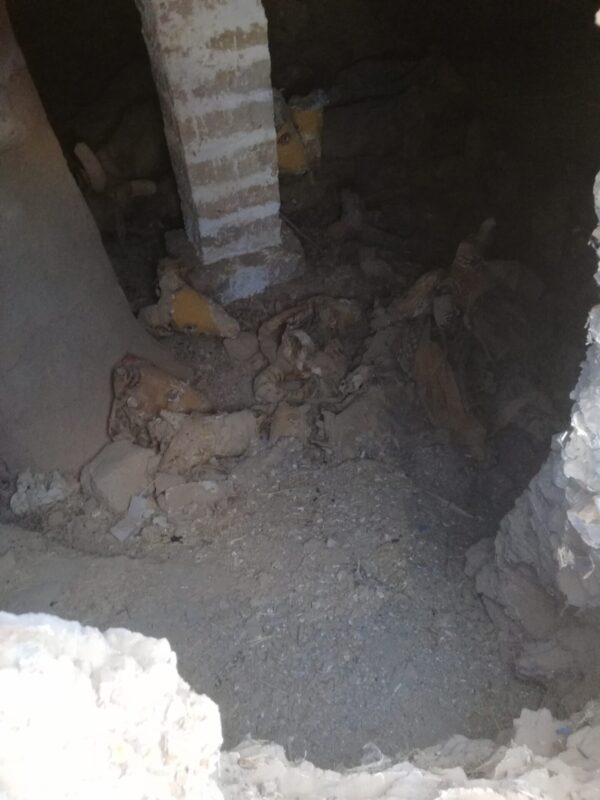
Another tomb with mummies
Day 77 (16th May) Mut to Farafra
This was an uneventful day; we were “dragged out of bed at the crack of dawn” as somebody put it, and kept putting it. Getting up at 7 am and leaving at 8, we got to Farafra about lunchtime. I think that Mahmud’s intention was for us to set off for the White Desert and camp out for the night like all the soppy tourists. But the best laid plans of mice and men etc etc, the hotel he wanted us to stay at (and use their safari tour) offered a crap room with no cooler (sort of essential when temperatures reach 47 degrees) no fridge (warm water anyone?) and no wifi. He then wanted $350 for the room and his tour so we walked out. I felt sorry for poor Mahmud who felt let down by someone he thought was a friend. However this friend made amends somewhat by taking us to the Rahala Lodge which was brilliant. A nice room, cooler, fridge, wifi, delicious food and, above all, lovely people especially Ahmed (the owner) and one of his brothers (Hamed) who took is on the 4WD tour of the White Desert the next day. The controversy over the $350 quotation was cleared up after I phoned Tahar of the Luxor Carpet Cave who confirmed that the White Desert excursion was included in the fee we had paid for the tour. In the evening, we had a lovely meal of kofte and chicken at the Rahala’s gazebo which is made entirely from palm trees.
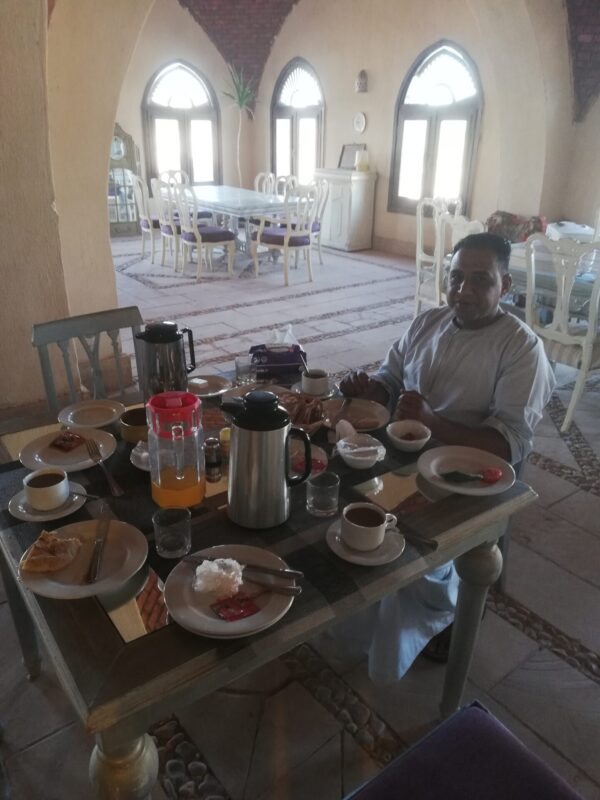
Our lovely friend Mahmud
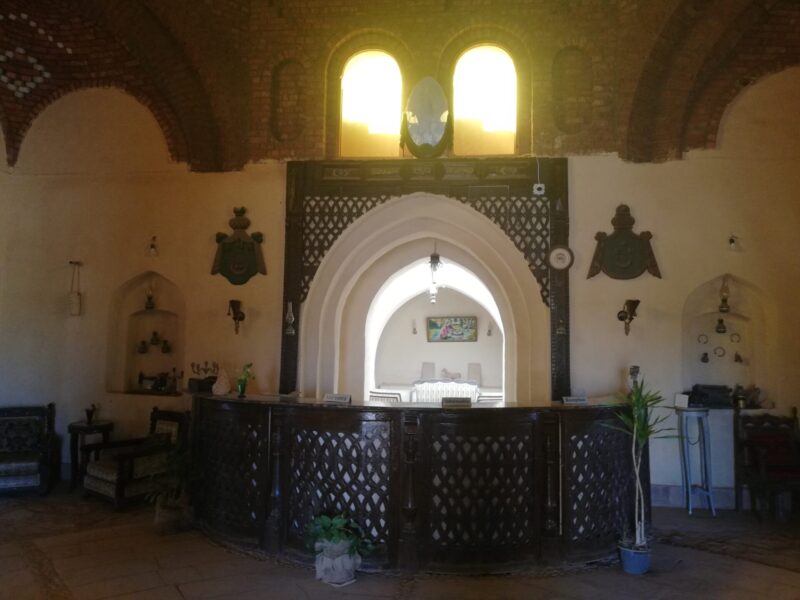
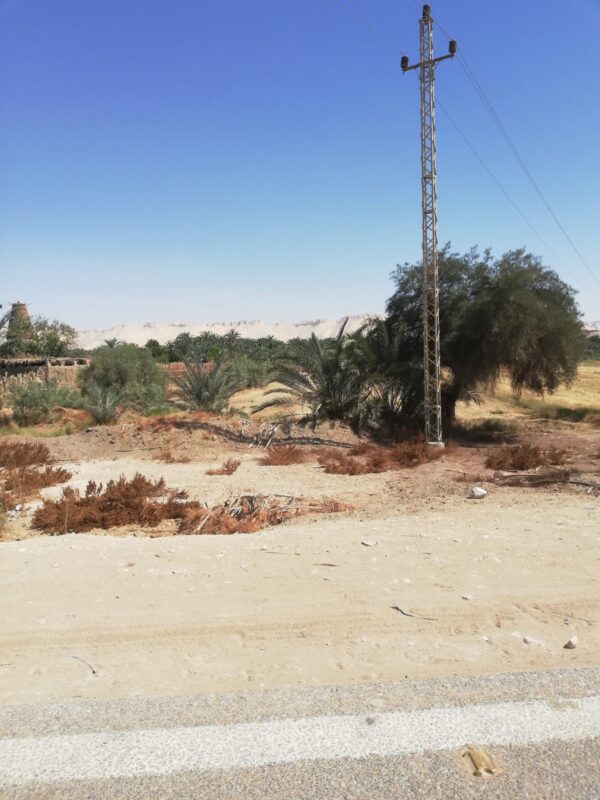

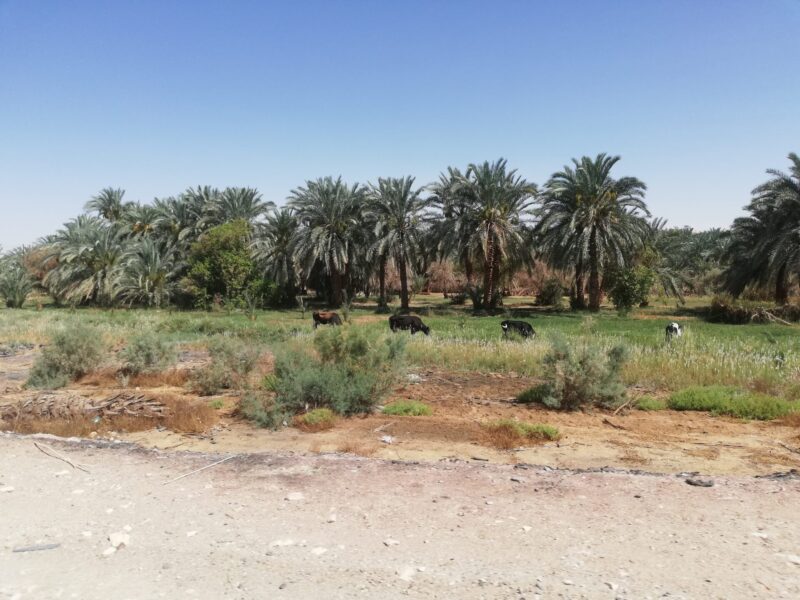
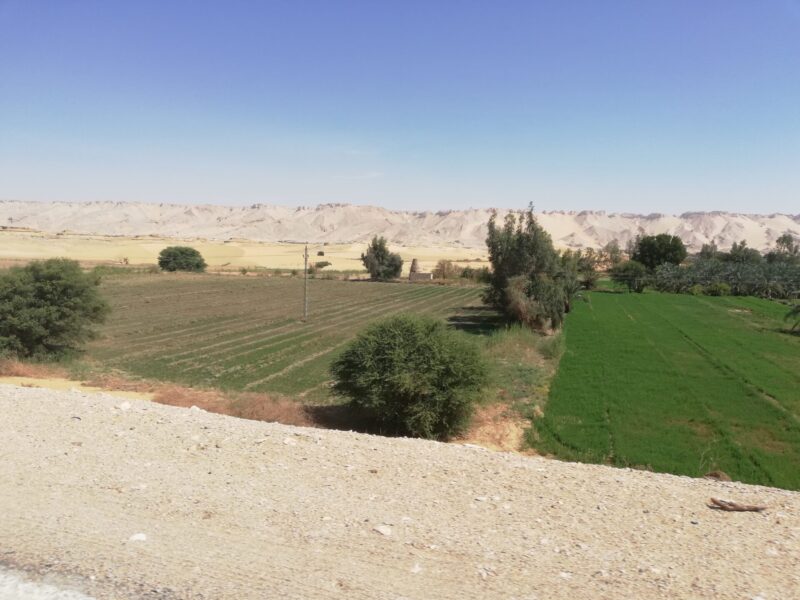
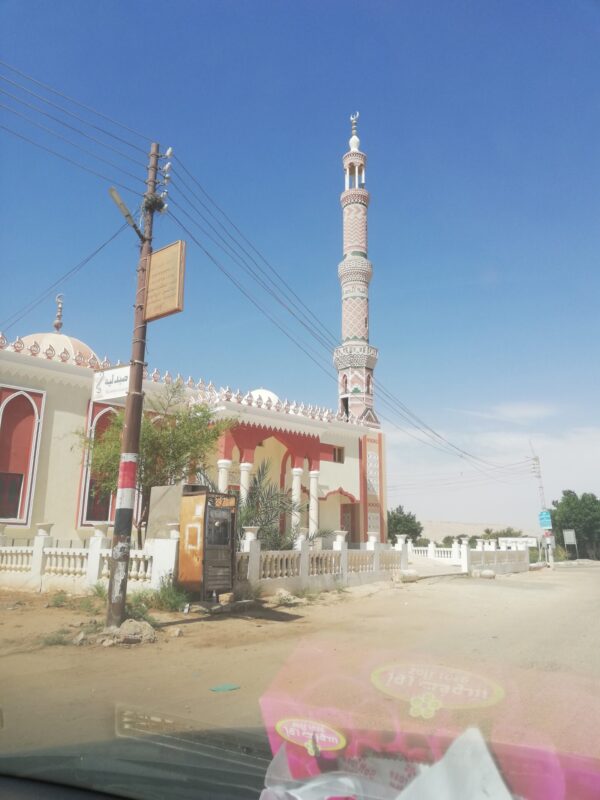
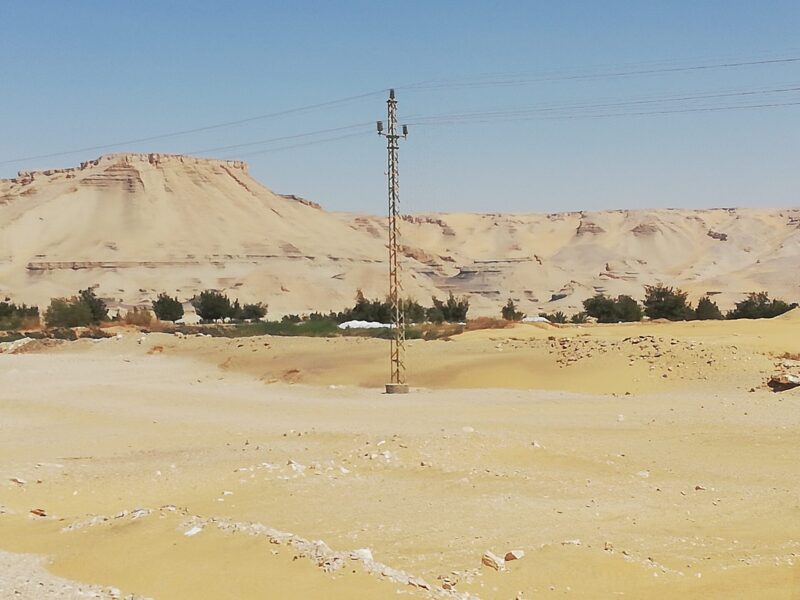

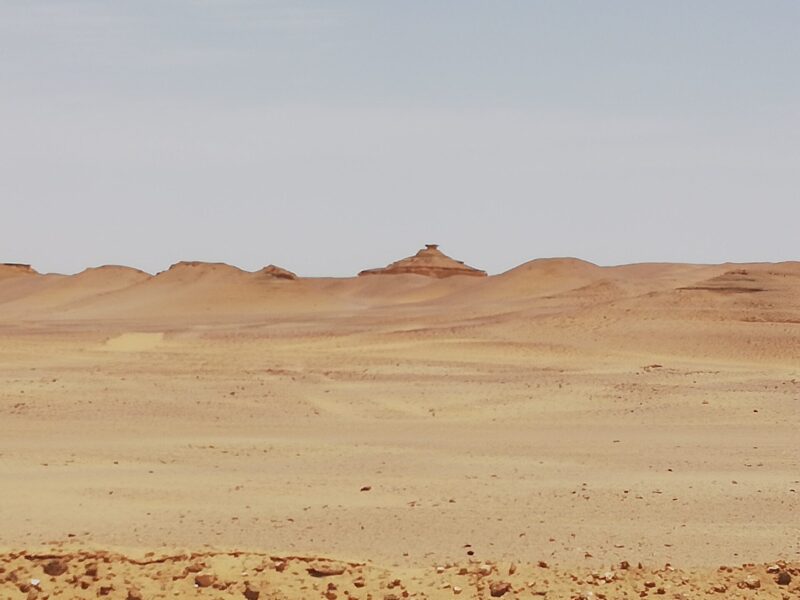

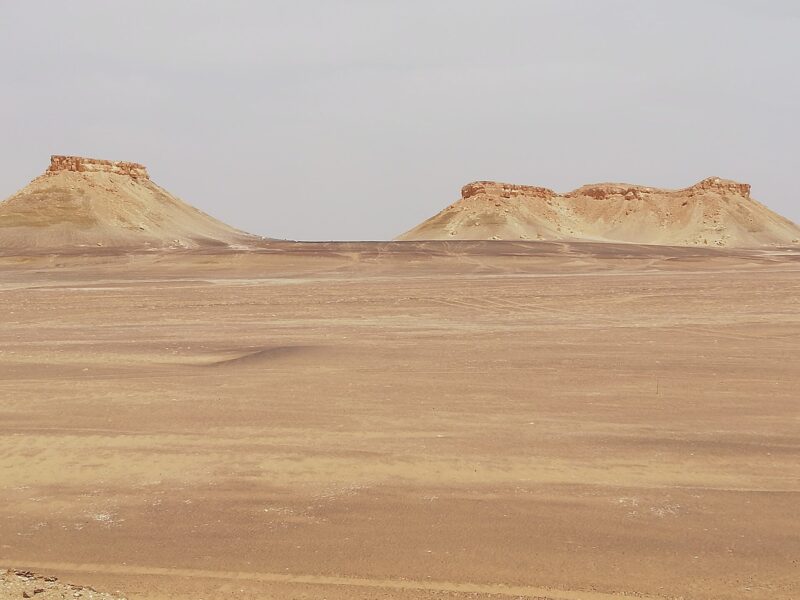
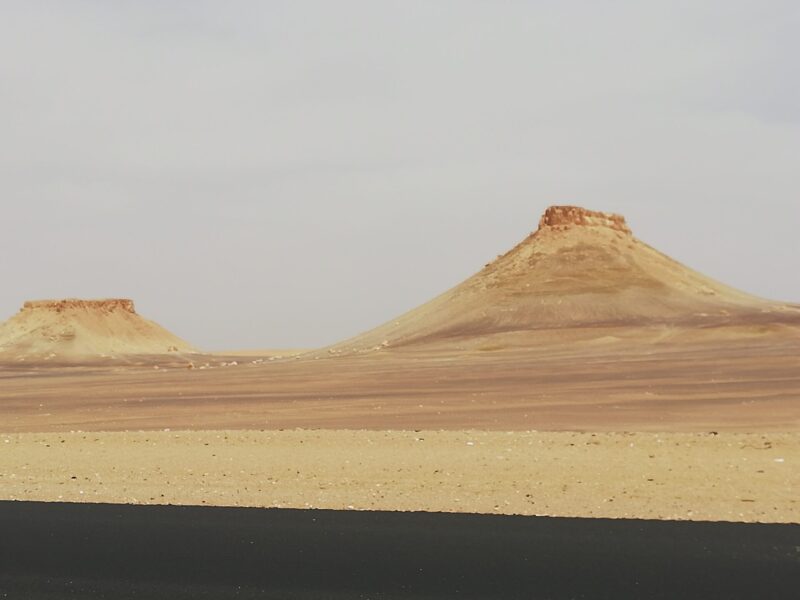
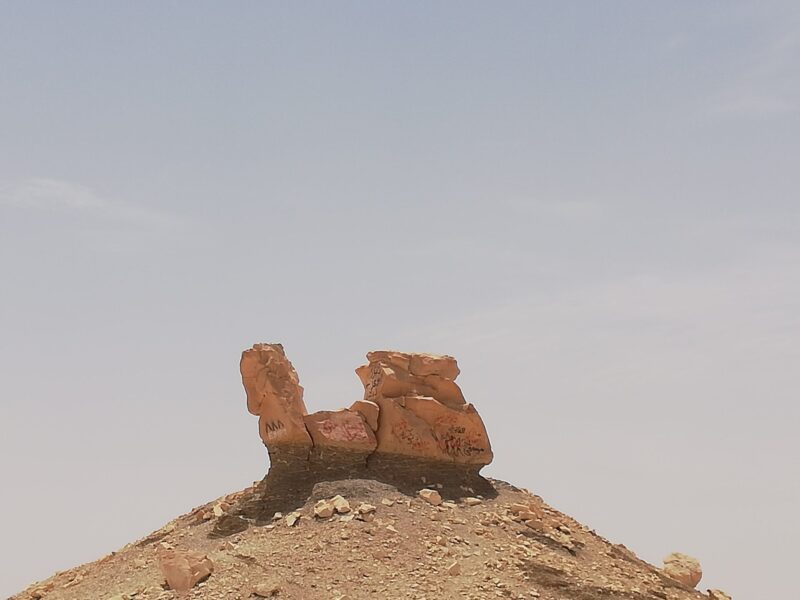
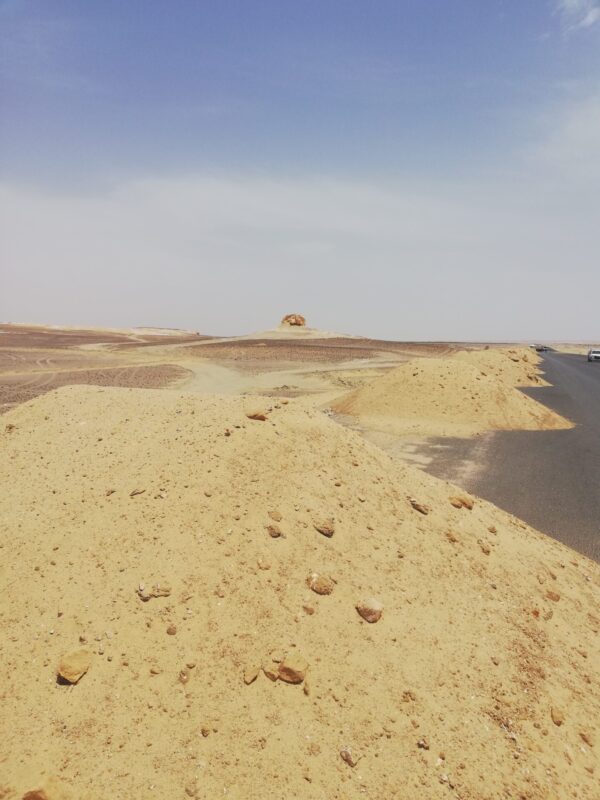
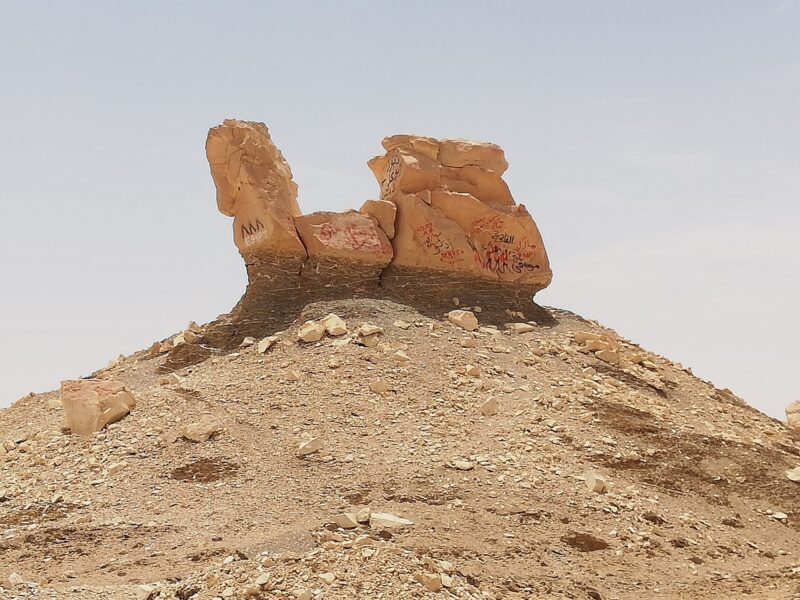
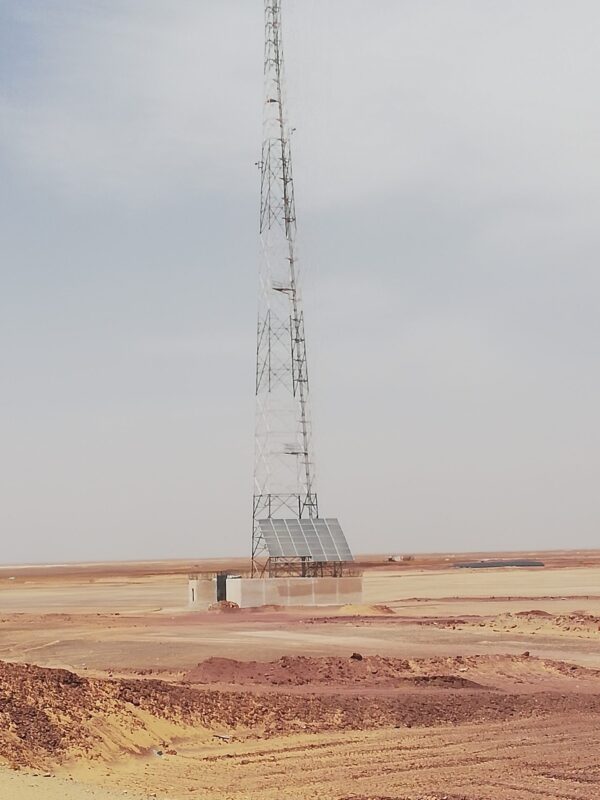
Day 78 (17th May) Farafra: the White Desert
Ahmed’s brother picked us up at 10 am in a huge Mitsubishi 4WD and we drove through the back lanes of Farafra to avoid the police who would have joined us and followed us all day like a bad smell. Before long, the landscape turned gradually white and we spent the rest of the day mesmerised by the fantastic blocks of snow-white limestone which wind erosion had carved into shapes of camels, rabbits and birds and the “mushroom and chicken” which the national park authority uses as the motif for their information boards. There are no roads; at times we followed the tyre tracks of previous vehicles and at other times Hamed (who knew the desert like the back of his hand) made a new route. At lunchtime we came to a tiny round oasis of palm trees of perhaps 40 metres in diameter with a small spring and a pool at which wild camels are said to come and drink. This was Ain Khadra which Mahmud told us meant “Green Eye”.
This was where we had lunch with Hamed working like a maniac to prepare two delicious salads. One was based on tuna and the other on cheese. We had a lovely time and the other vehicle there with tourists was unobtrusive so we felt completely alone. It was the first vehicle we had seen all day. On leaving we were taken to a hole cut into the earth which was a tomb dating back to Roman times. It was clear that a Roman road had passed this oasis on the way from the Nile to Libya. There are stories that an entire Roman legion disappeared in the desert, presumably dying from heat and thirst, and it was chilling to think that their last drink may have been at Ain Khadra. We climbed a huge pure white mound and its limestone surface was cold to the feet unlike the sand which was roasting hot. The tops of some round pillars were clearly visible suggesting that a building (possibly a Roman fort) lay buried under the mound awaiting excavation.
We then crossed the main road to the New White Desert and began to see dozens of 4WDs arriving with people intending to sleep in a tent in the desert. It must be stunning when there is a full moon with moonlight reflecting off the limestone, but a bit of a let down otherwise. We went back to Rahala to another delicious meal.

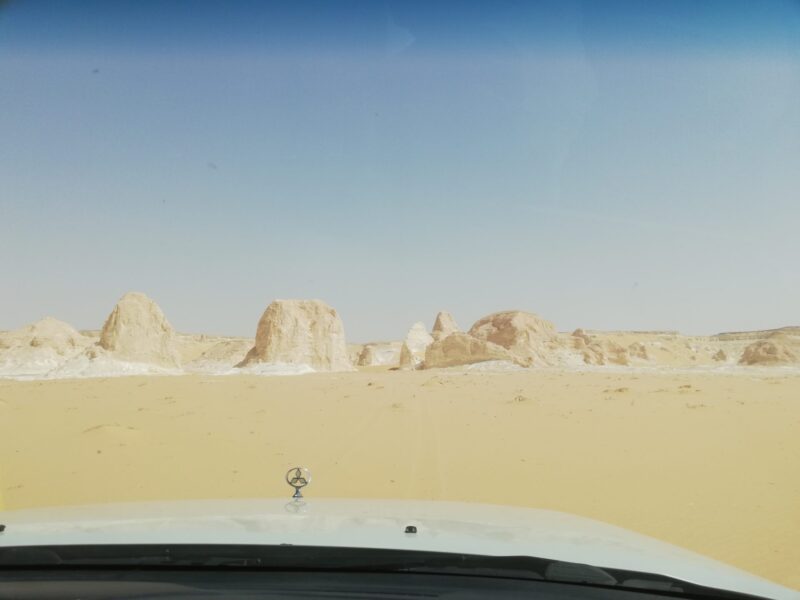
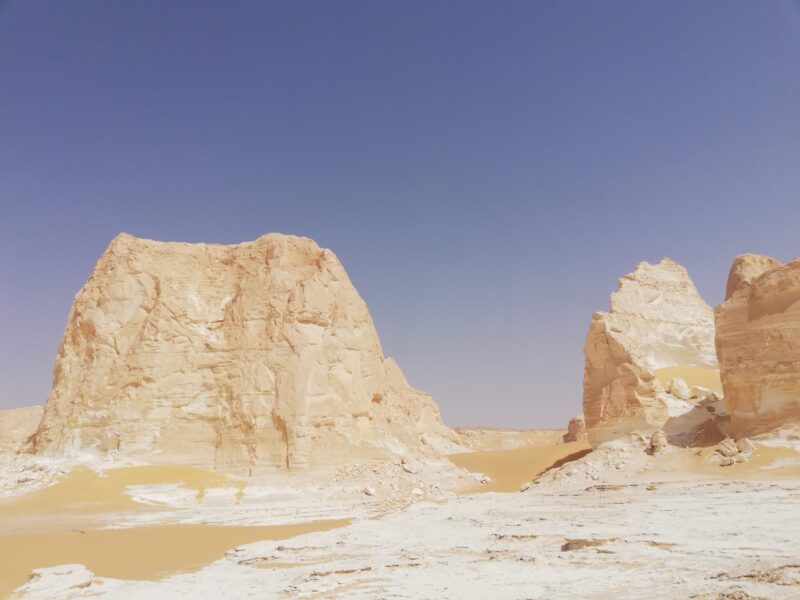
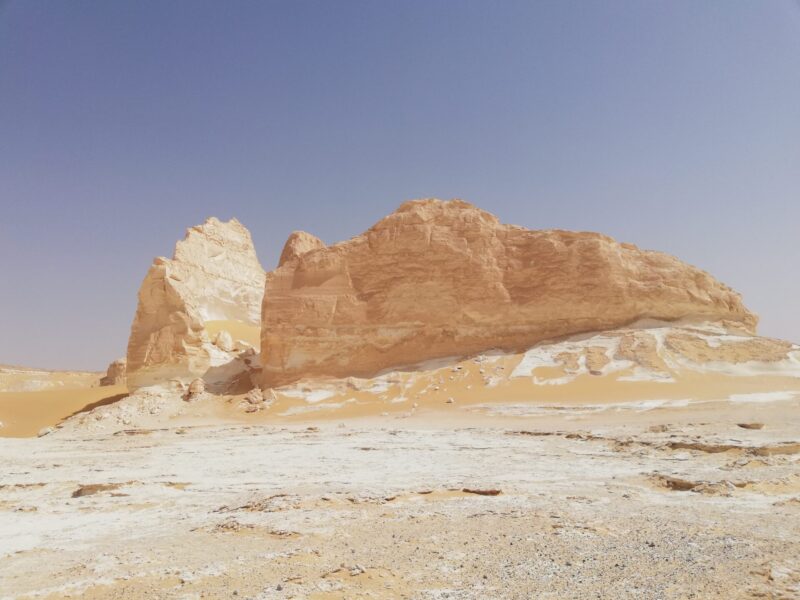
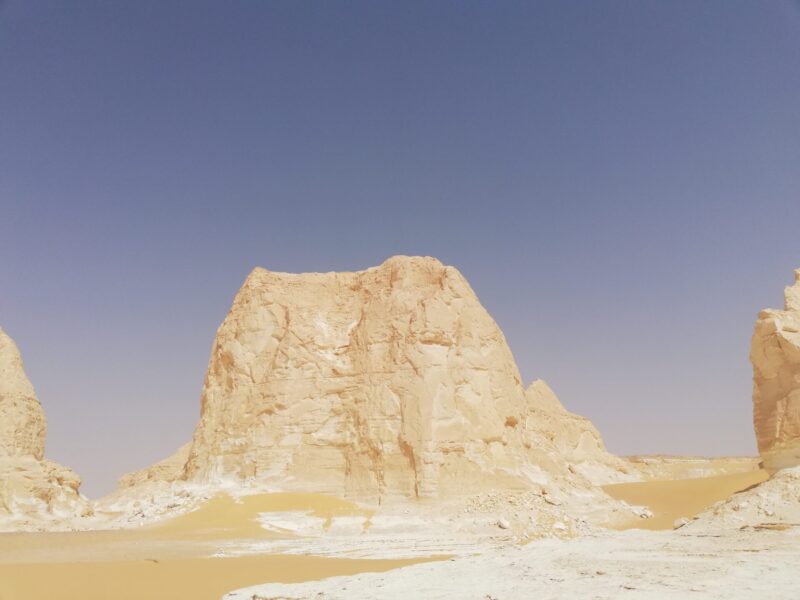
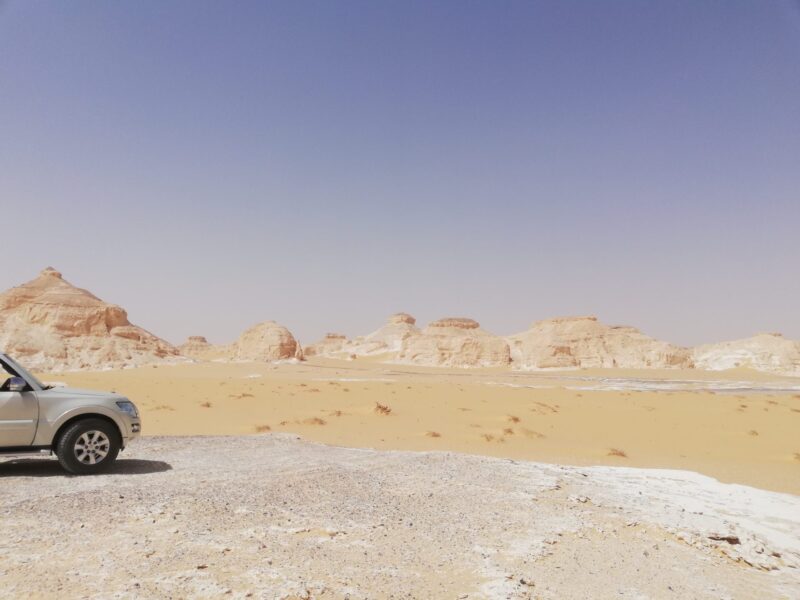
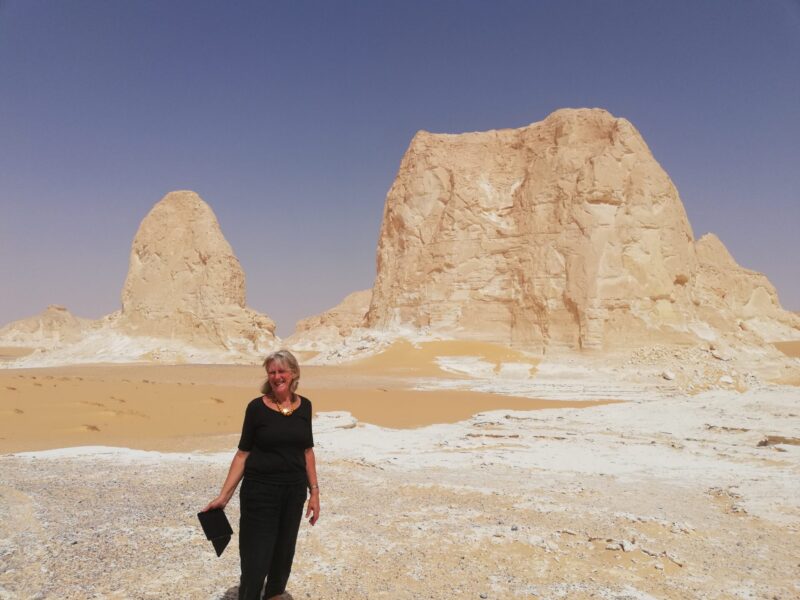

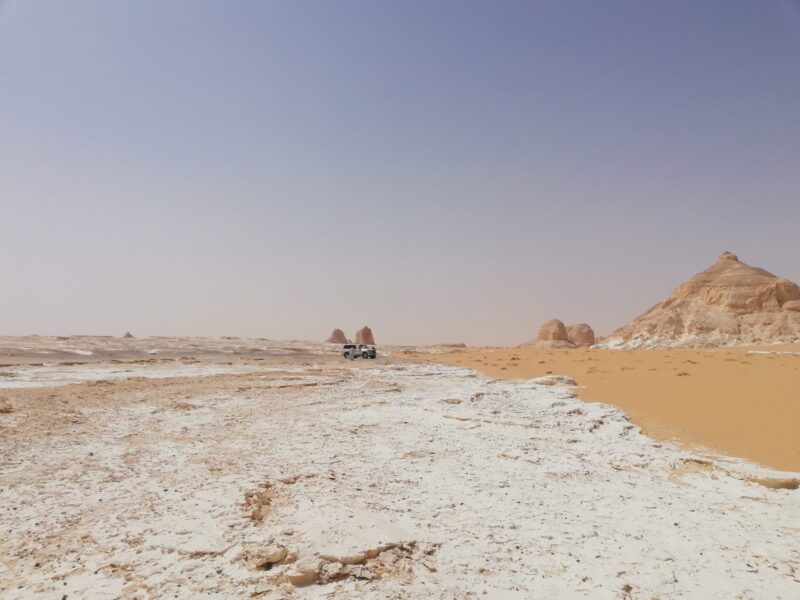
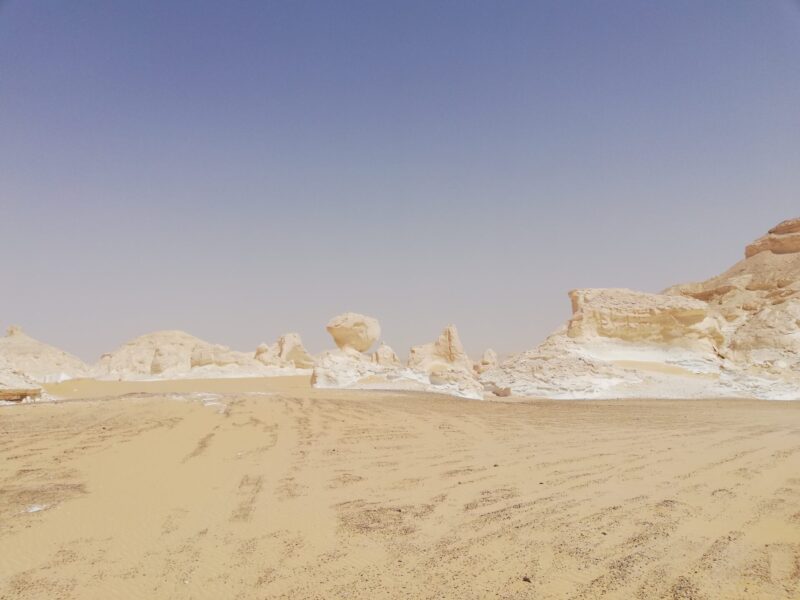
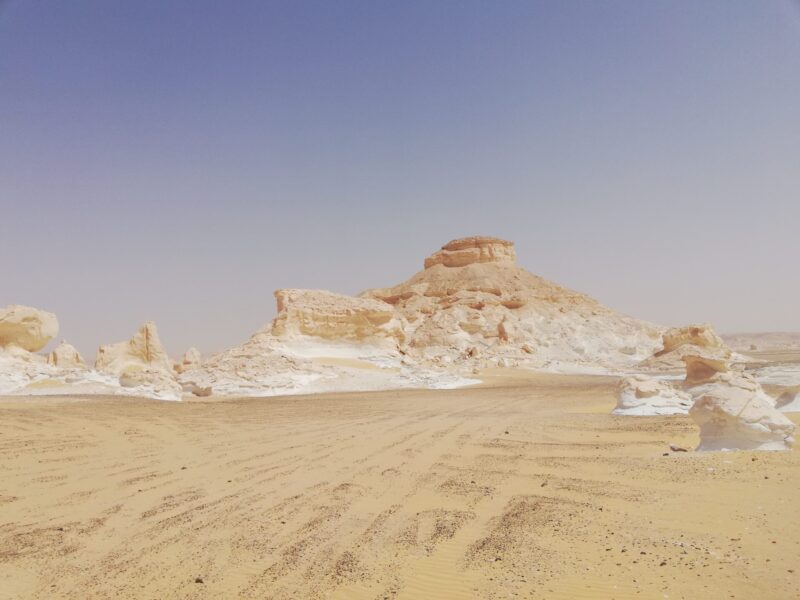
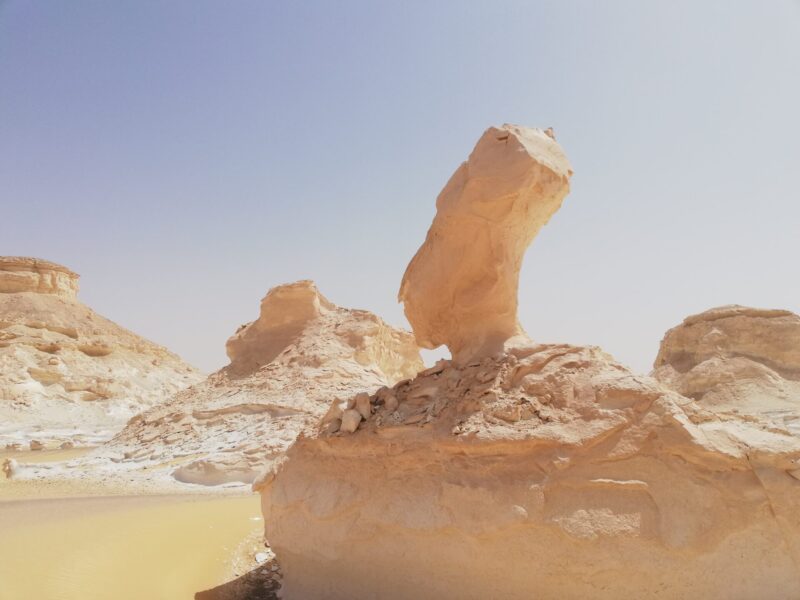
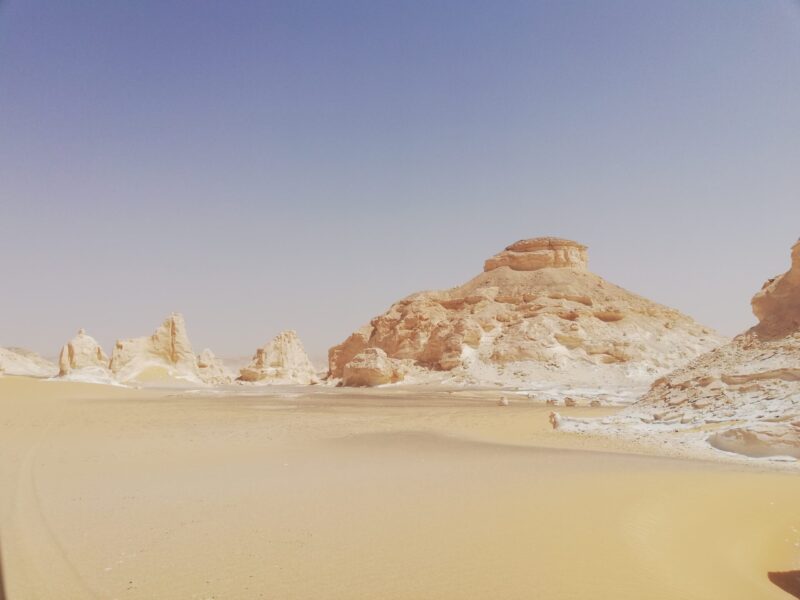
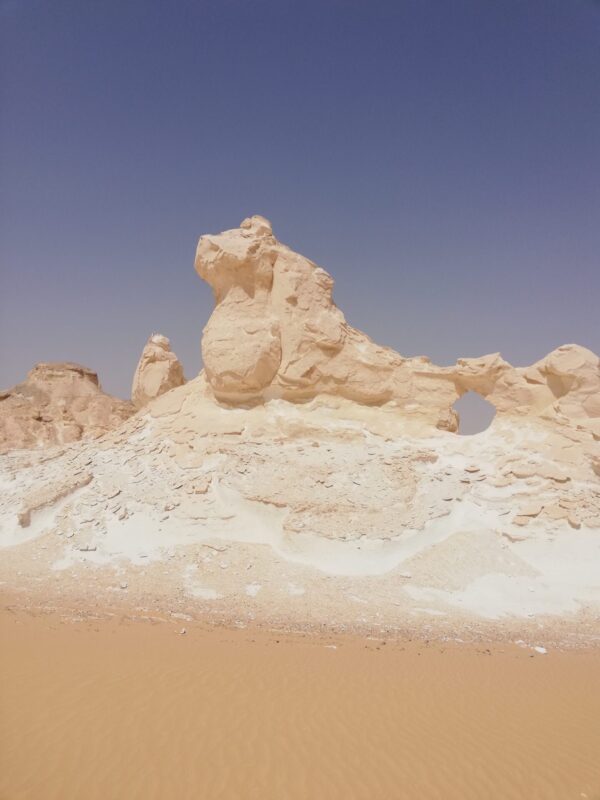

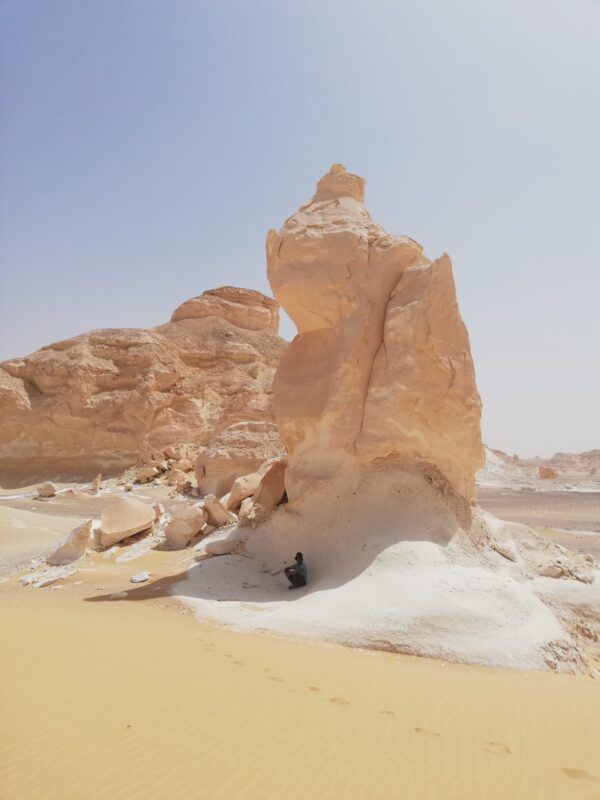
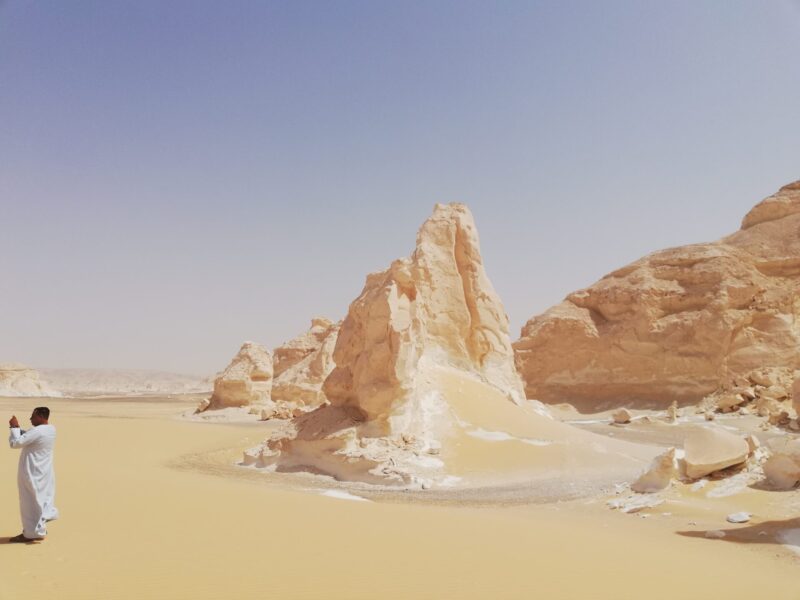
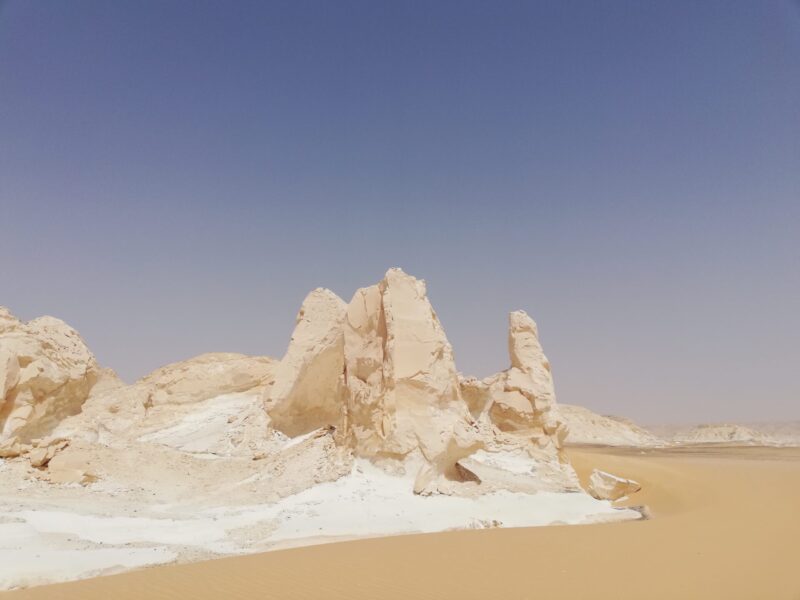
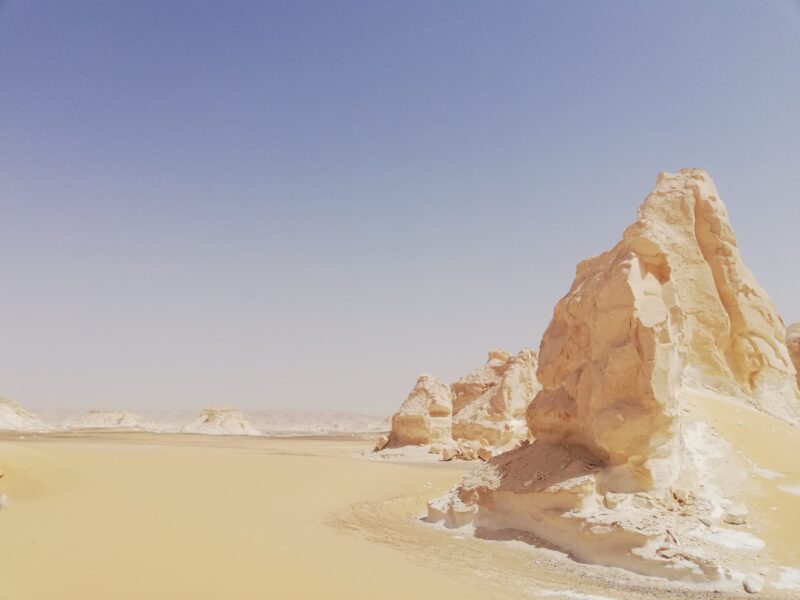
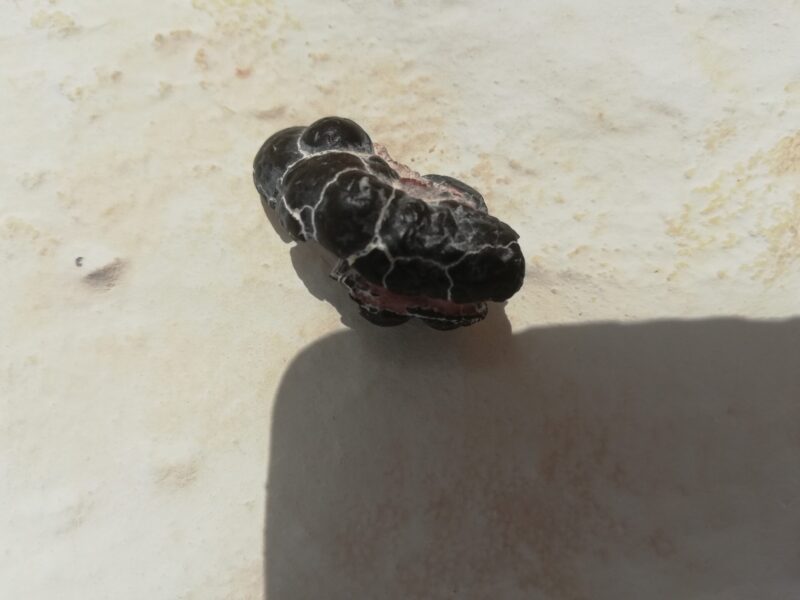
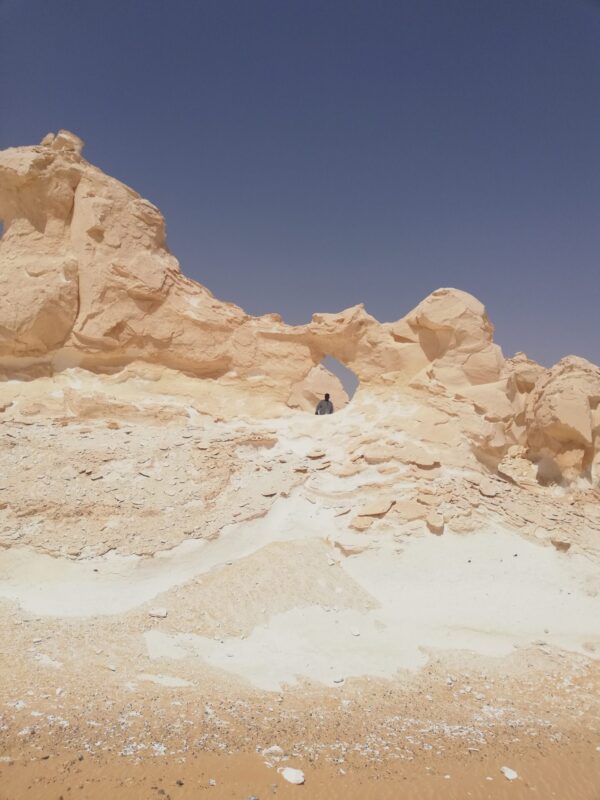
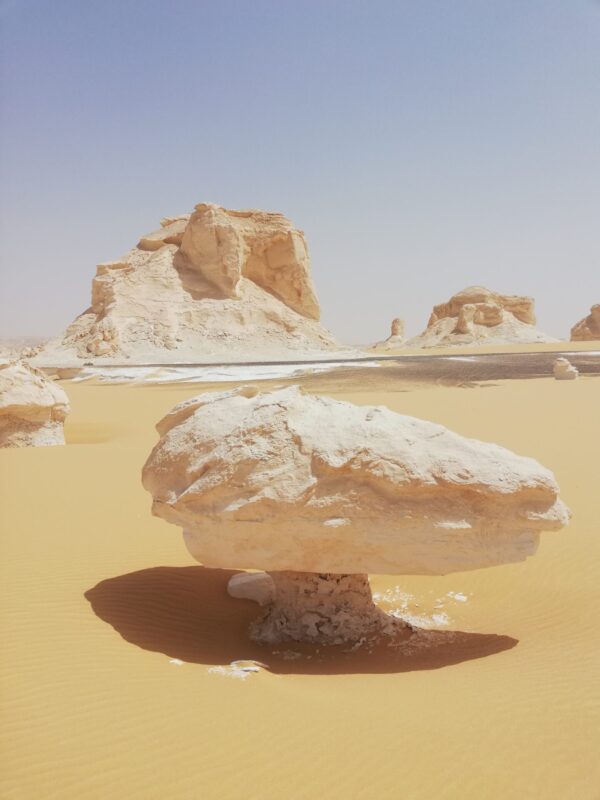
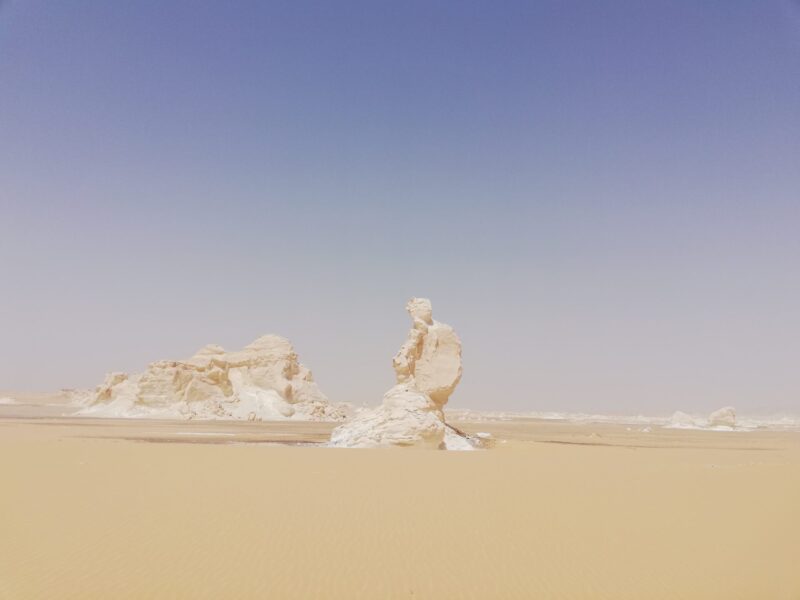
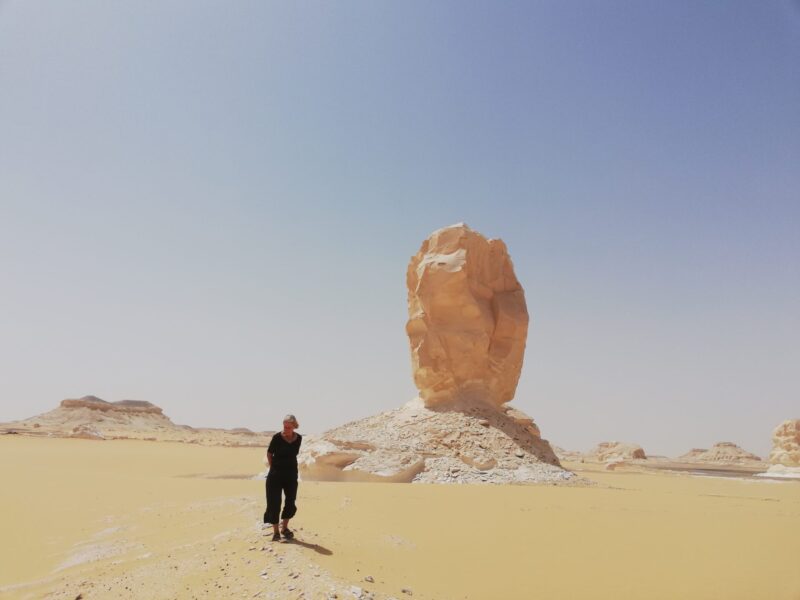
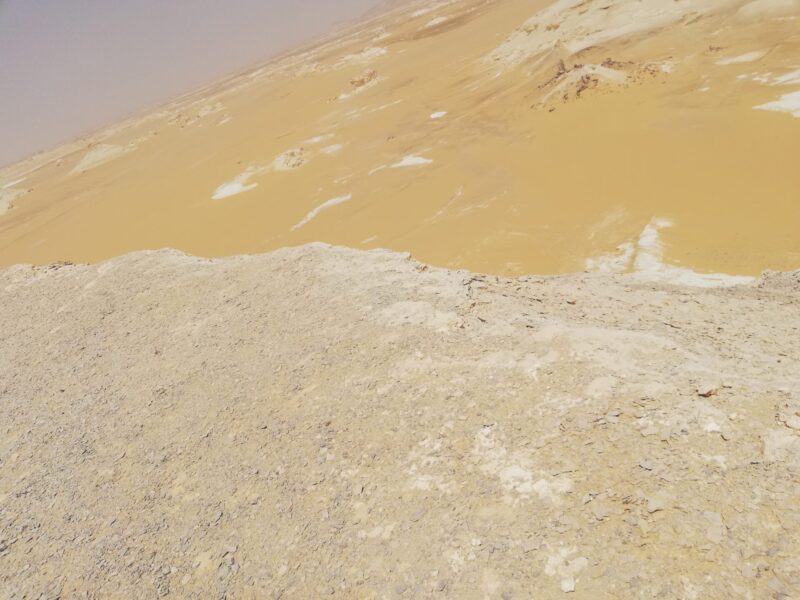
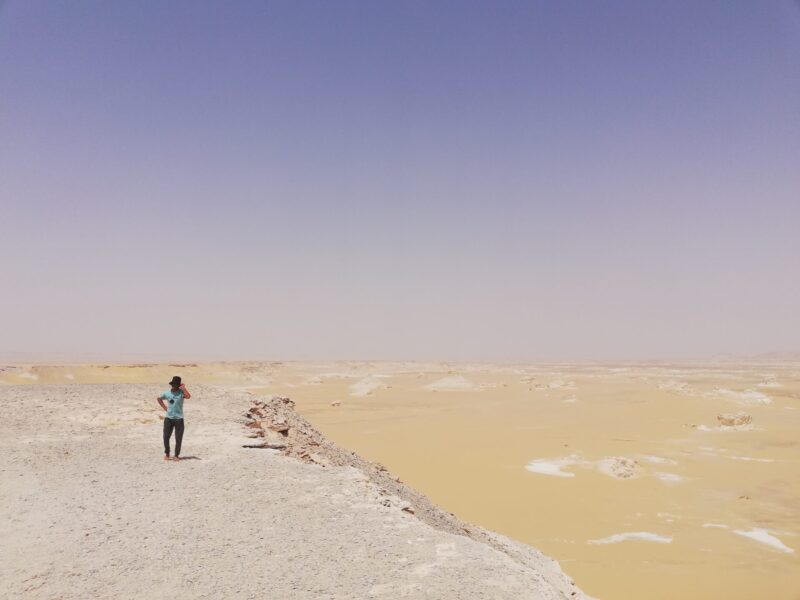
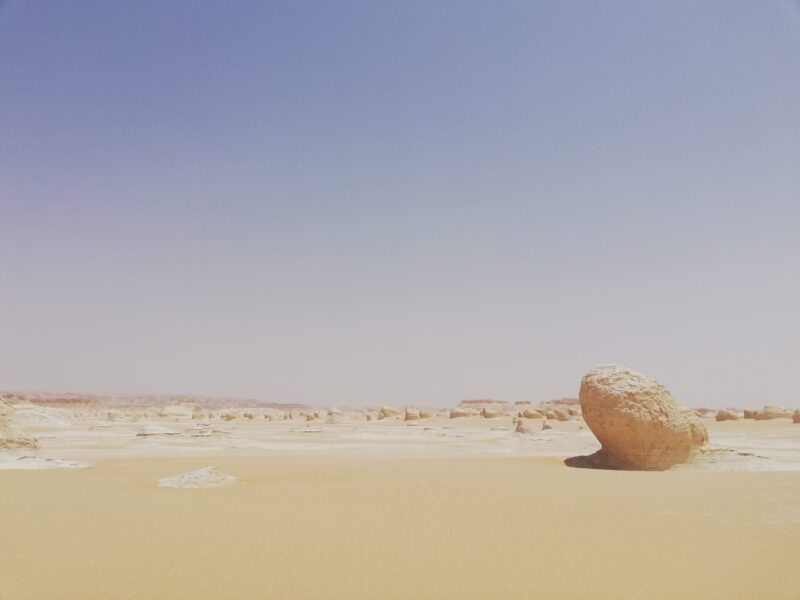
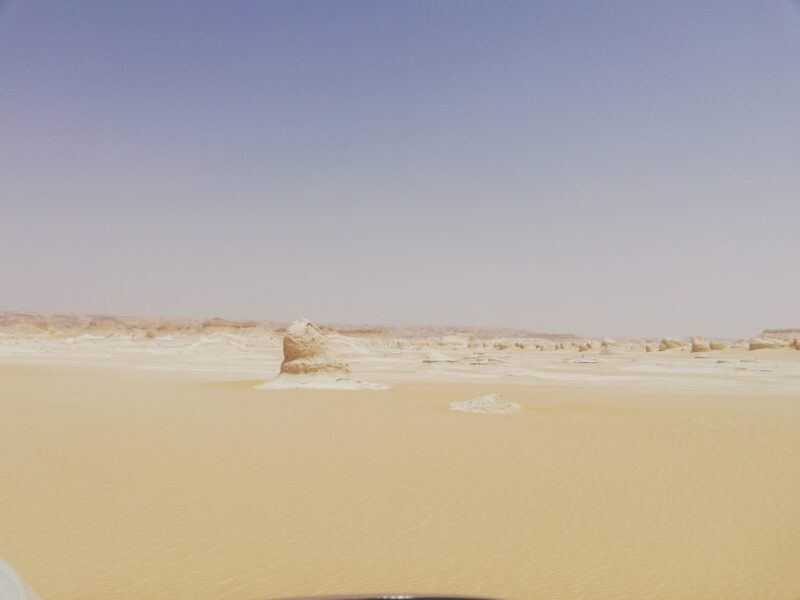

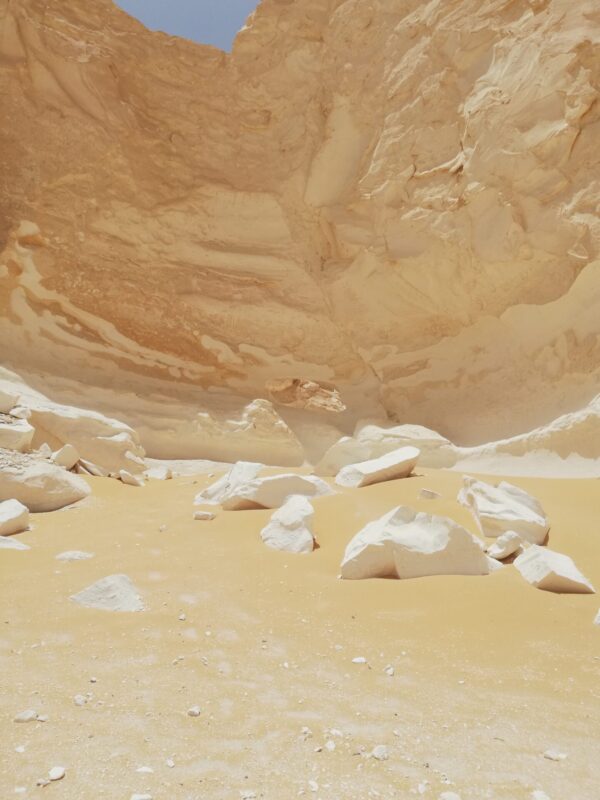
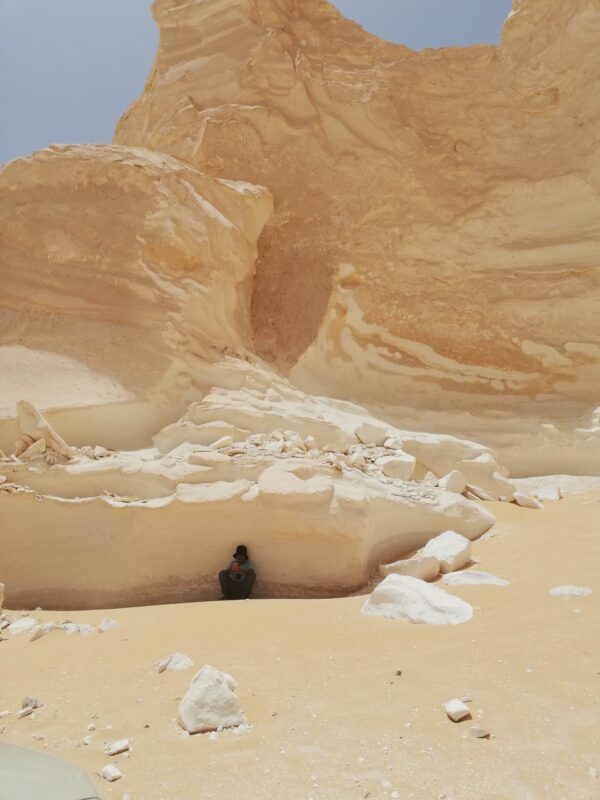
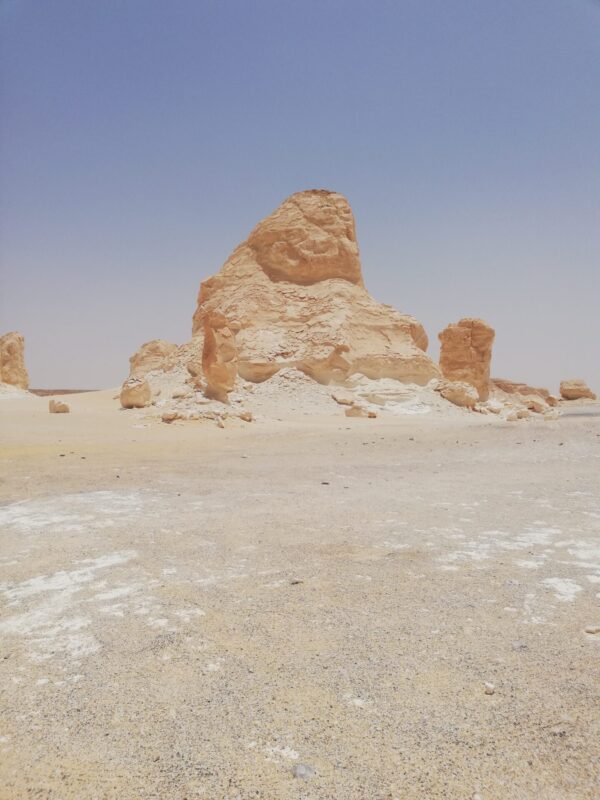

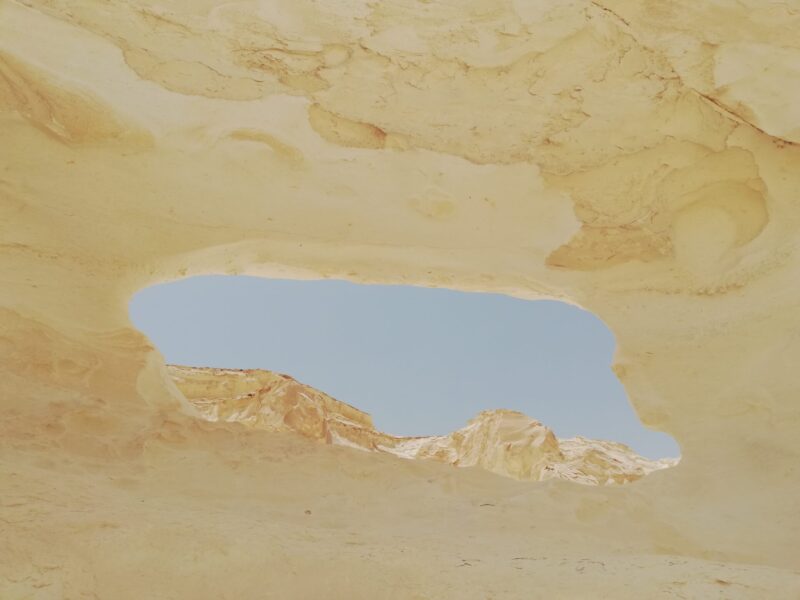
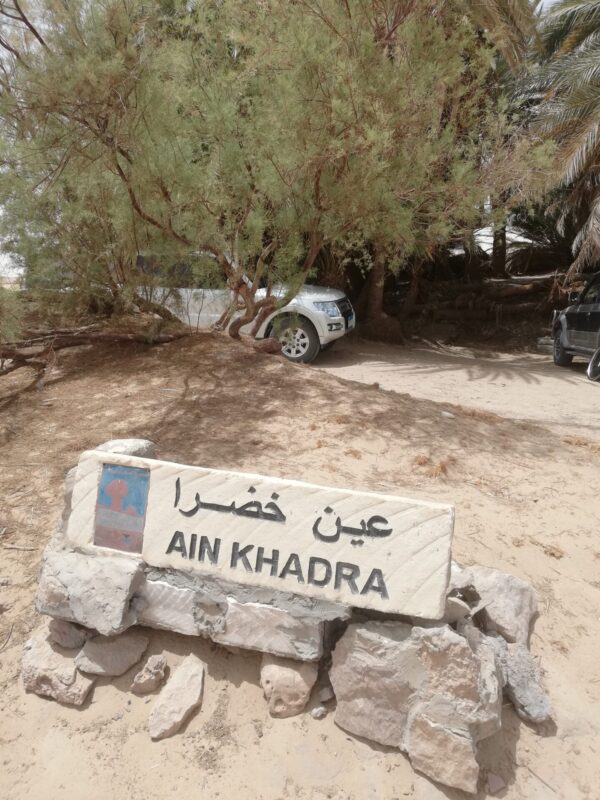

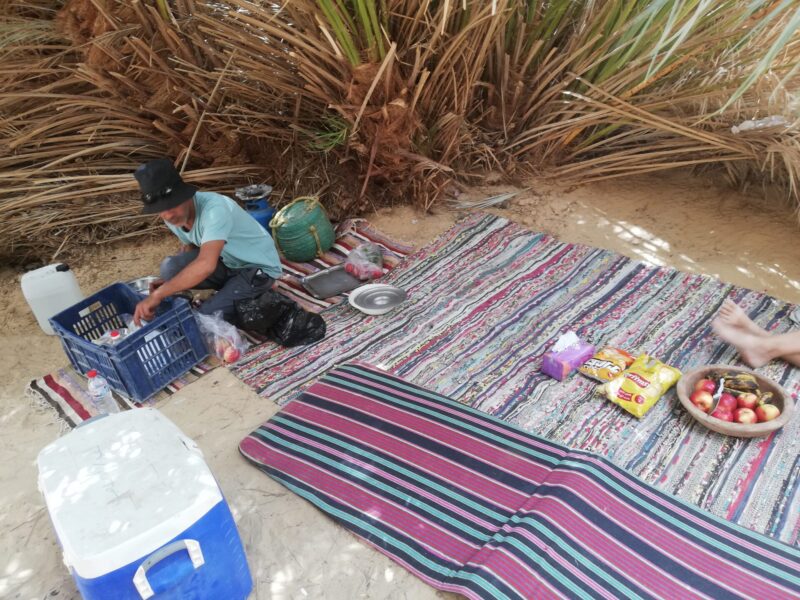
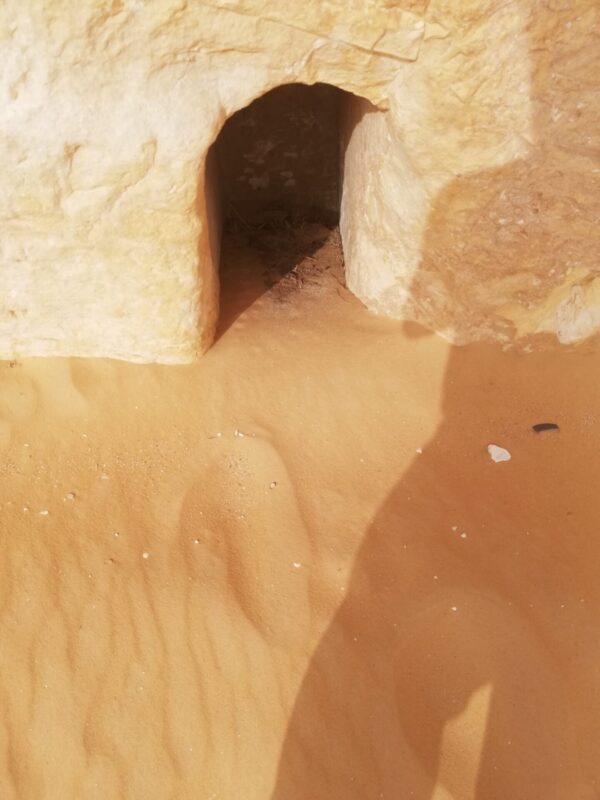
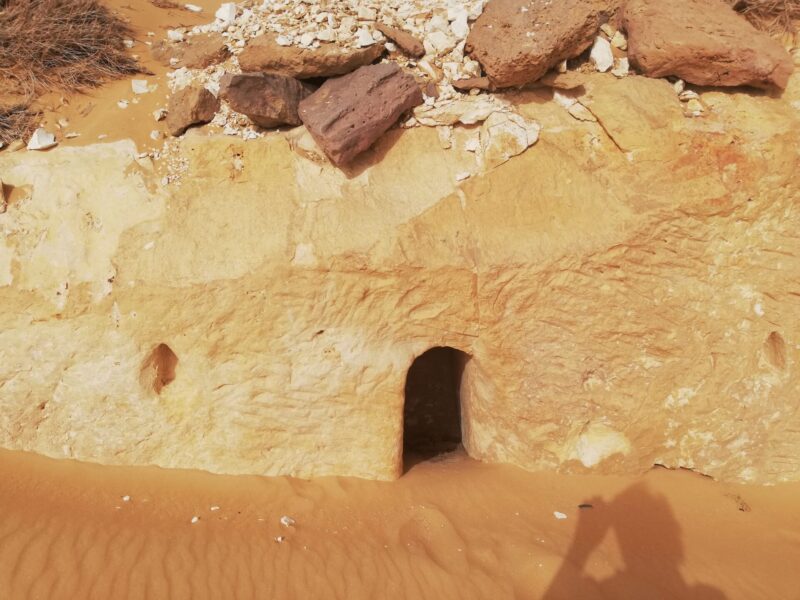
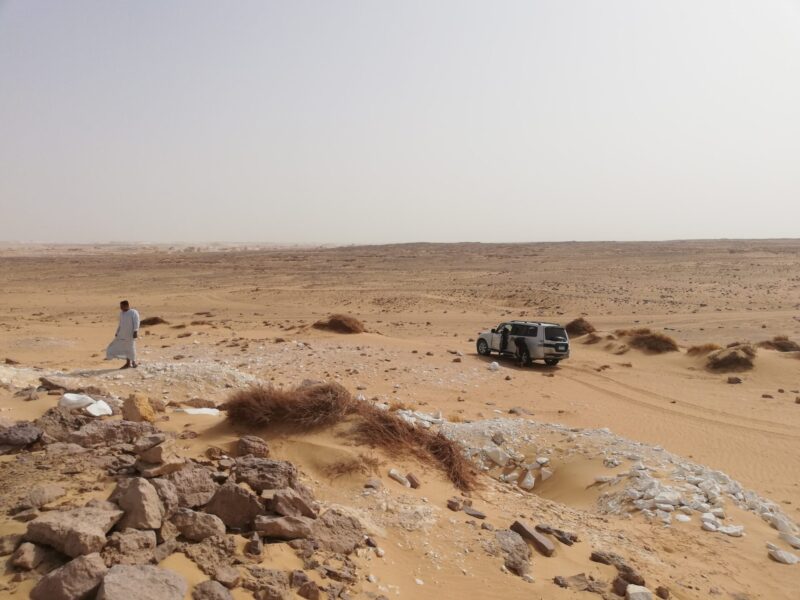
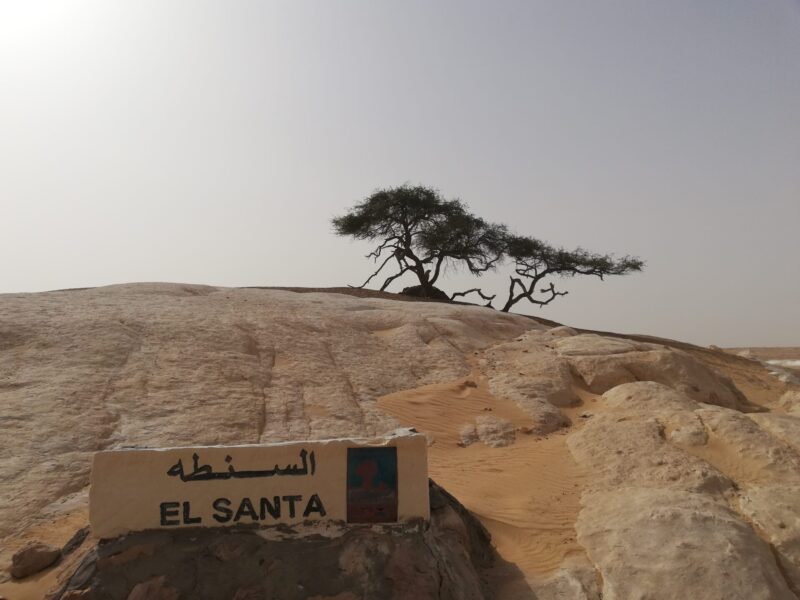

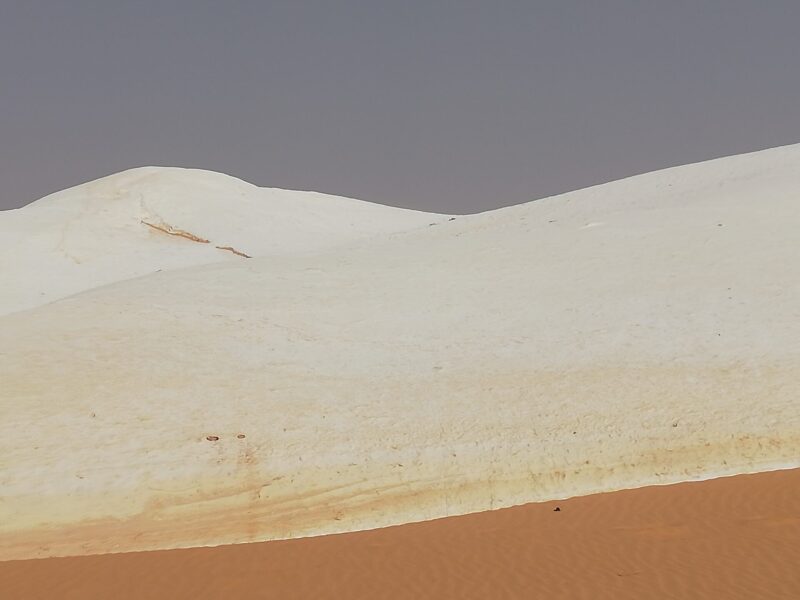
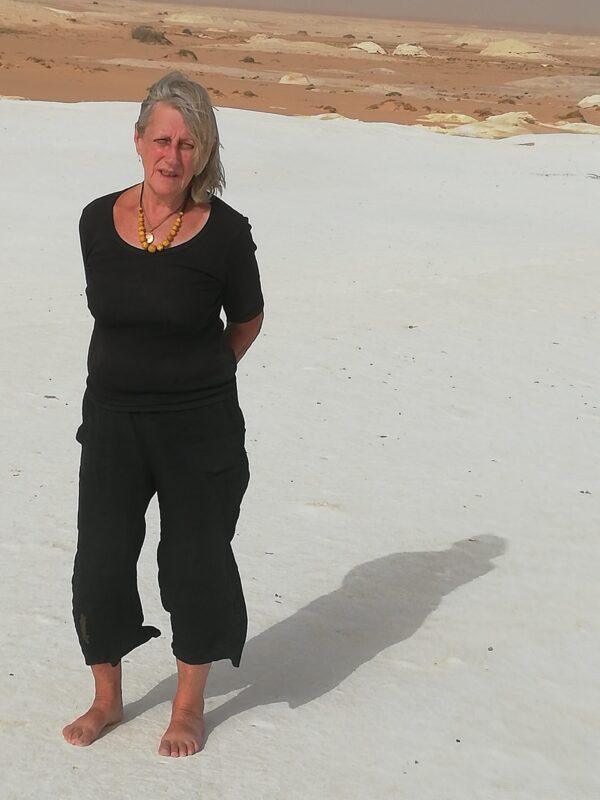
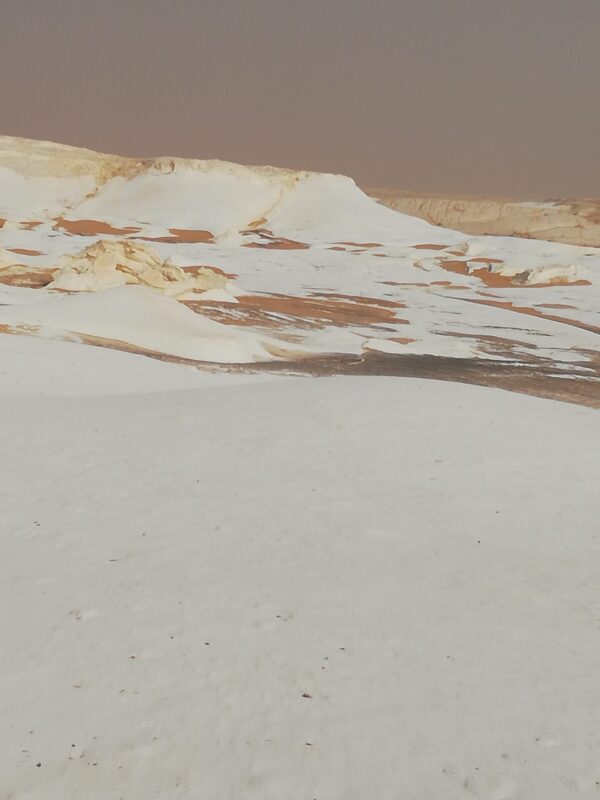
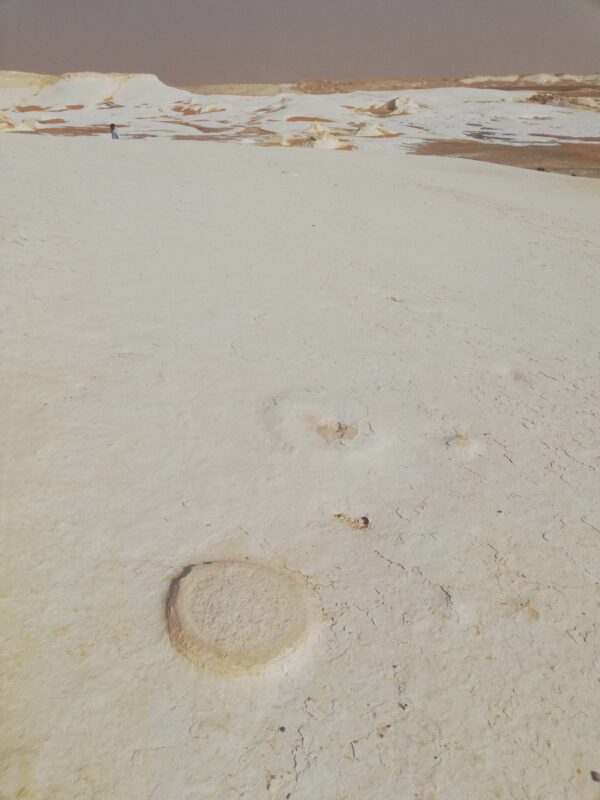
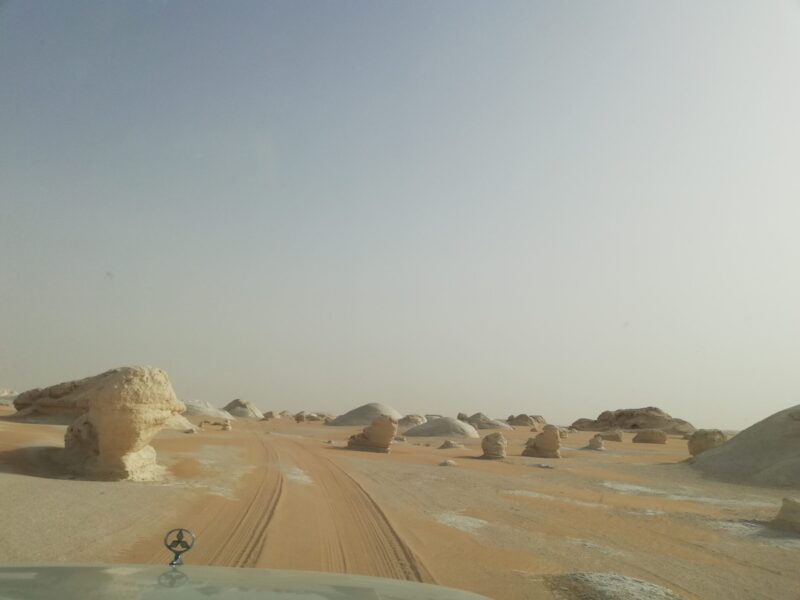
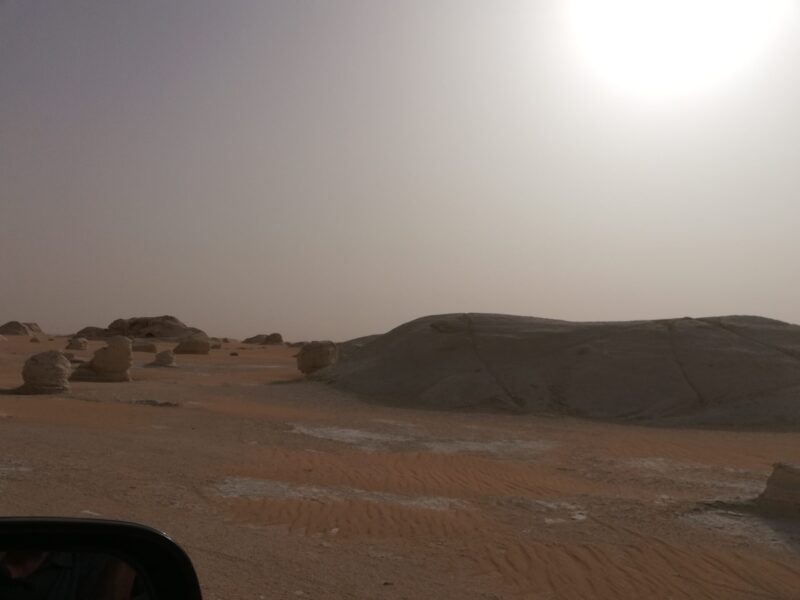
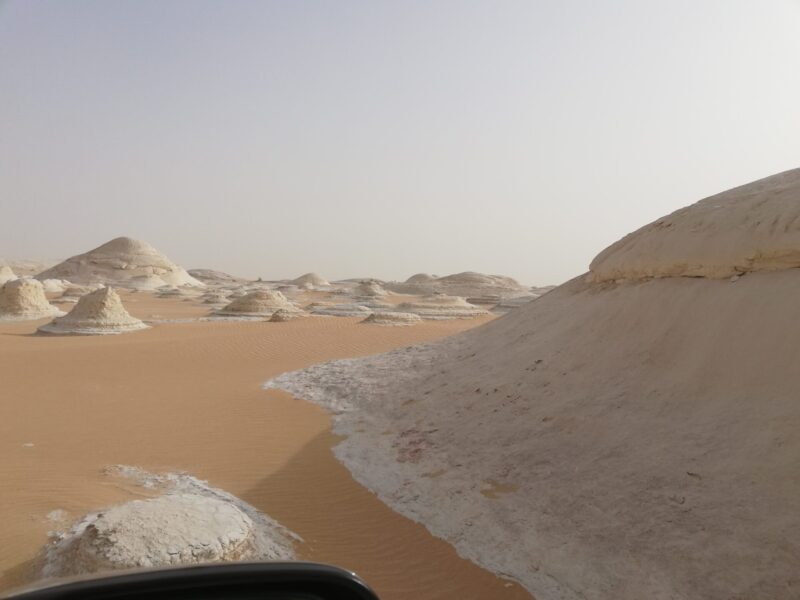
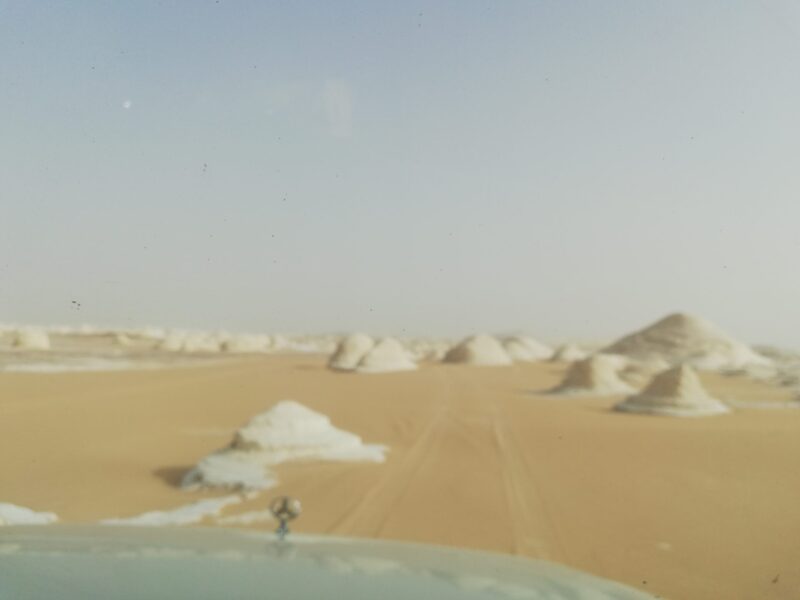
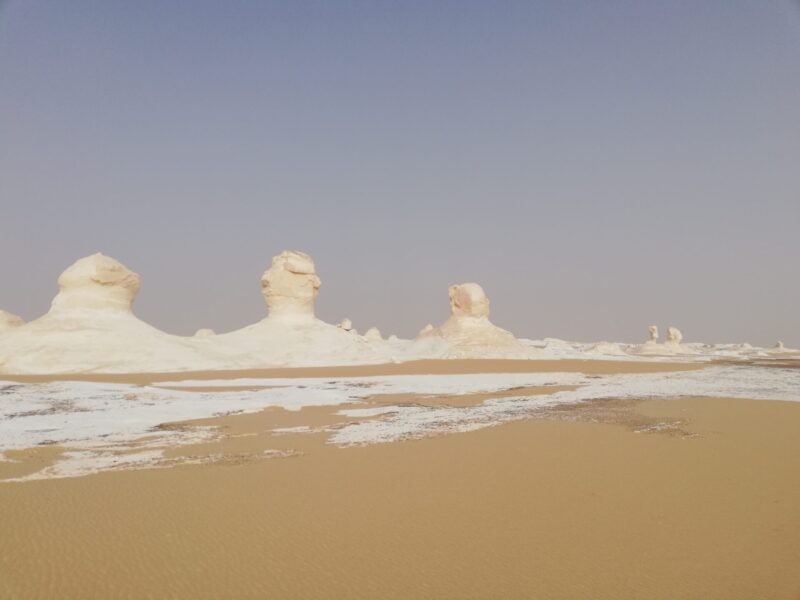
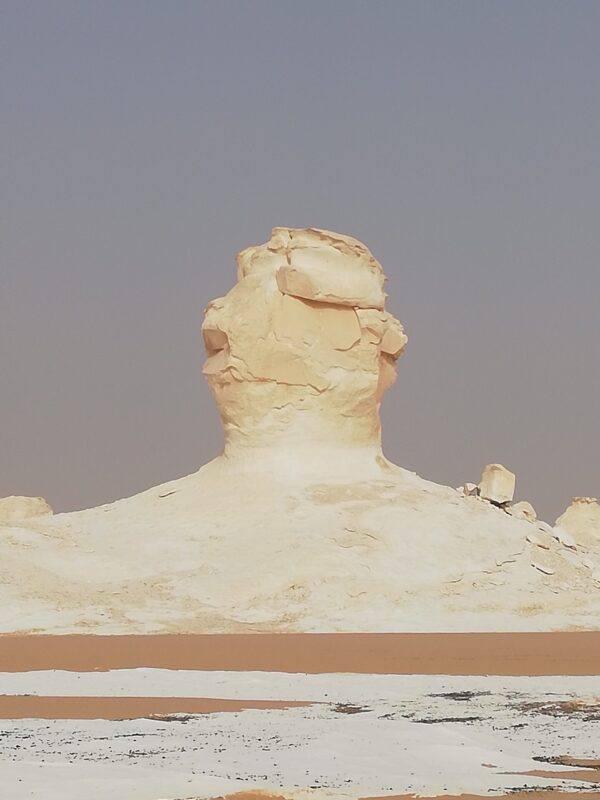
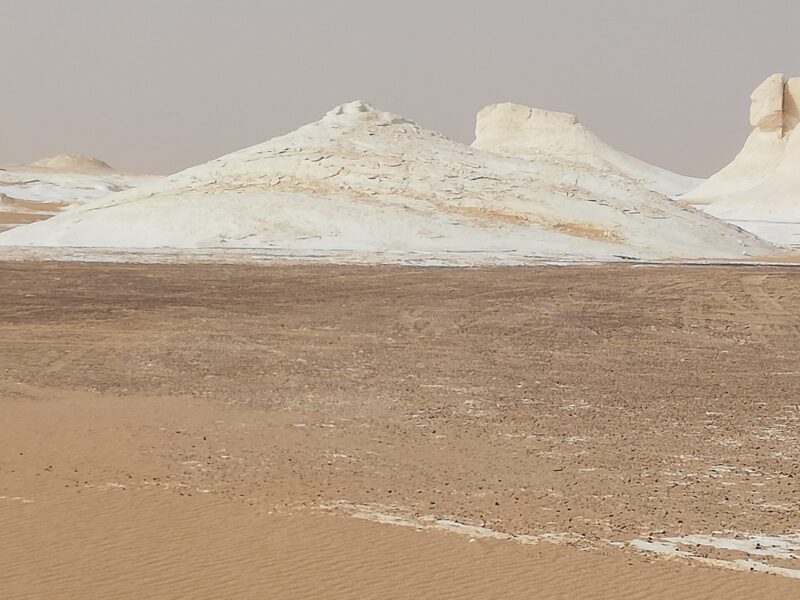
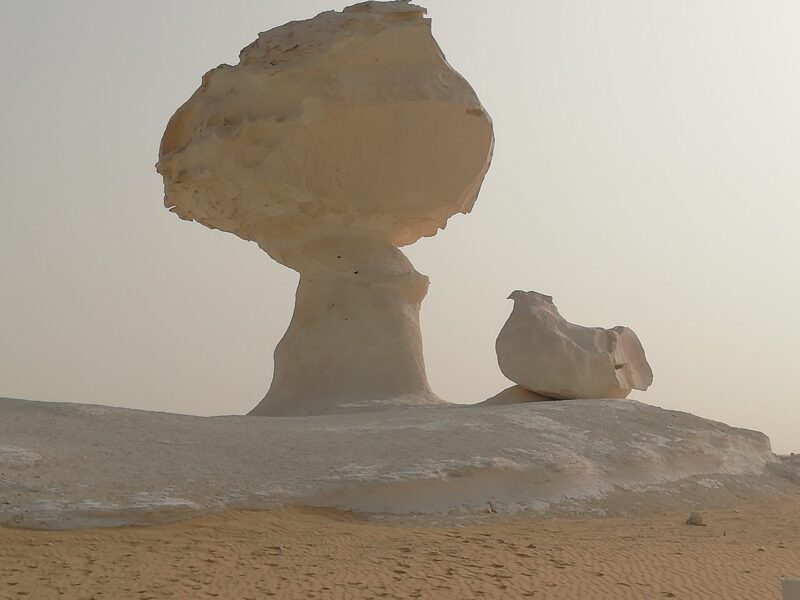
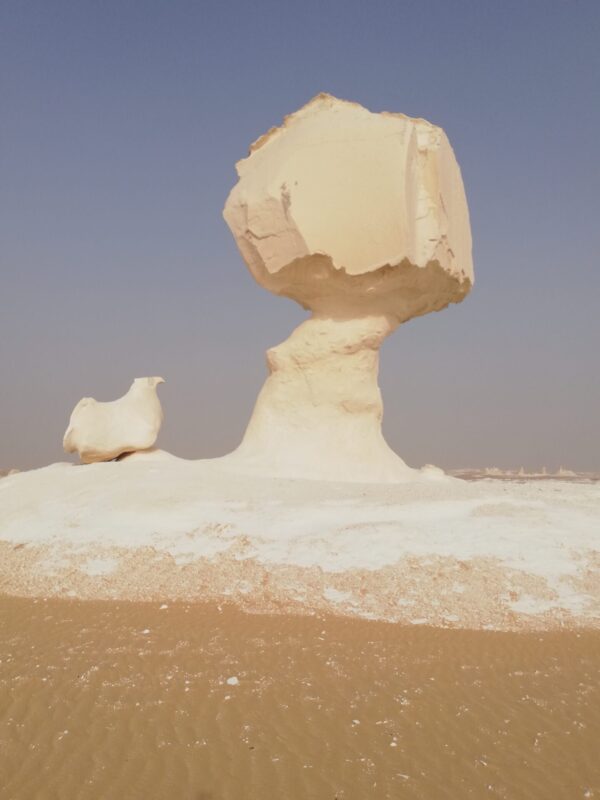

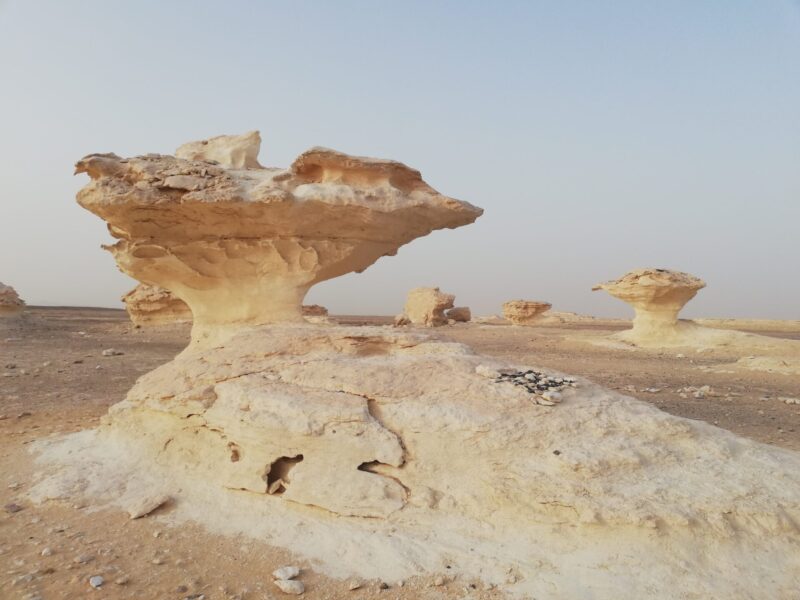
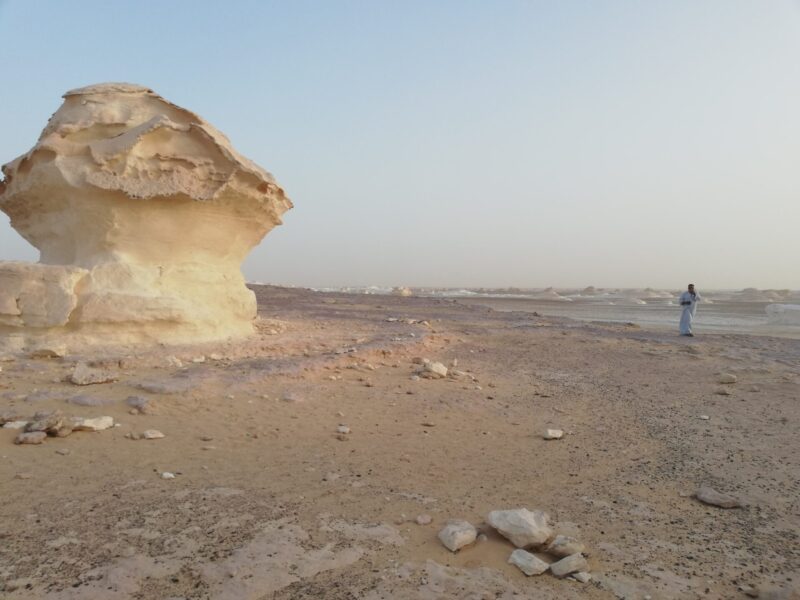
Day 79 (18th May) Farafra to Alexandria
The journey up the fast new road from Farafra to Bahariya (the 4th of the 5 desert oases) was notable for the “Crystal Mountain” (a mountain containing crystals) where we stopped and picked up some white crystals and tiny fossilised sea creatures from when the area was under the seas. They are made from a hard shiny black stone. We also drove through the “Black Desert” of black and yellow pyramids. Bahariya was not very inspiring and the rest of the trip to Cairo was flat and boring.
Our dear friend Mahmud was supposed to take us to Cairo and he could have dropped us anywhere on the outskirts of the city. However he alternated between telling us that “bad people” live in Cairo and asking directions periodically to October City where the bus station for buses to Alexandria is located. Eventually we found it and got onto a minibus which charged the two of us 95 Egyptian pounds (about £2) for the 200-km trip to Alexandria. The bus was full with people and their luggage and we sat unable to move for the journey.
On reaching the bus station a seemingly aggressive man who looked like a very angry version of Eric Morecambe offered to take us to a $30 a night hotel for $10 which sounded worth it. He drove for a long way northwards to the Corniche, which runs along the shore of the Ak Deniz (Mediterranean) and then a long way eastwards until we came to the “Kaoud Sporting Hotel”. First impressions were poor but it actually turned out to be a rather pleasant place with a very good shower and a delicious breakfast. We got there too late for the evening meal but a Mcdonalds down the Corniche served up an adequate burger and chips which filled our stomachs.
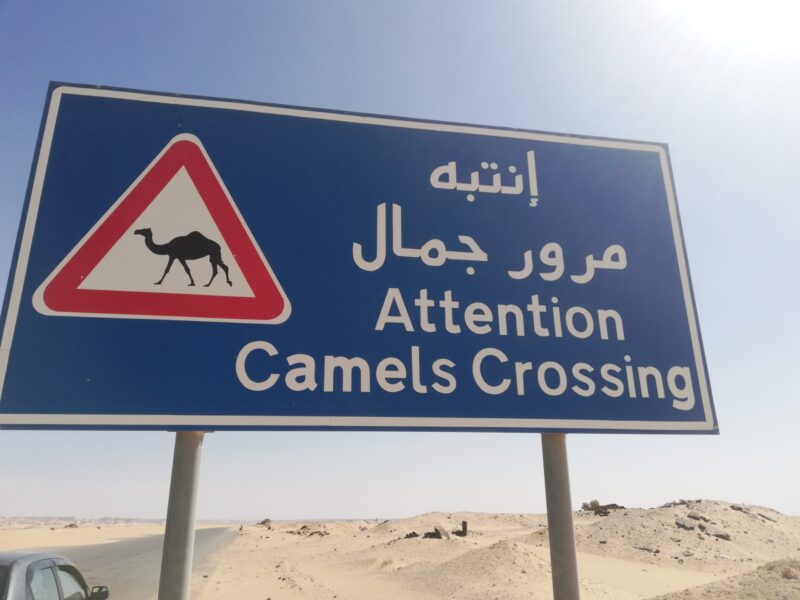
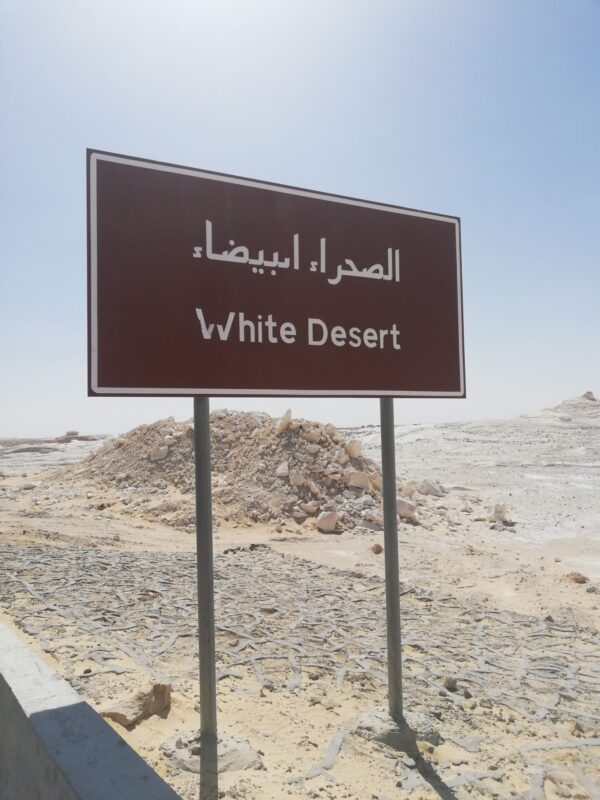
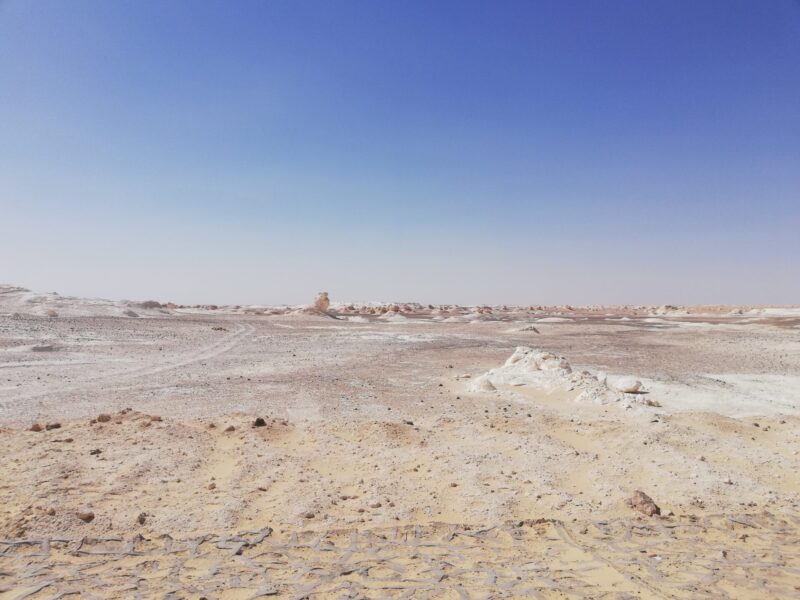
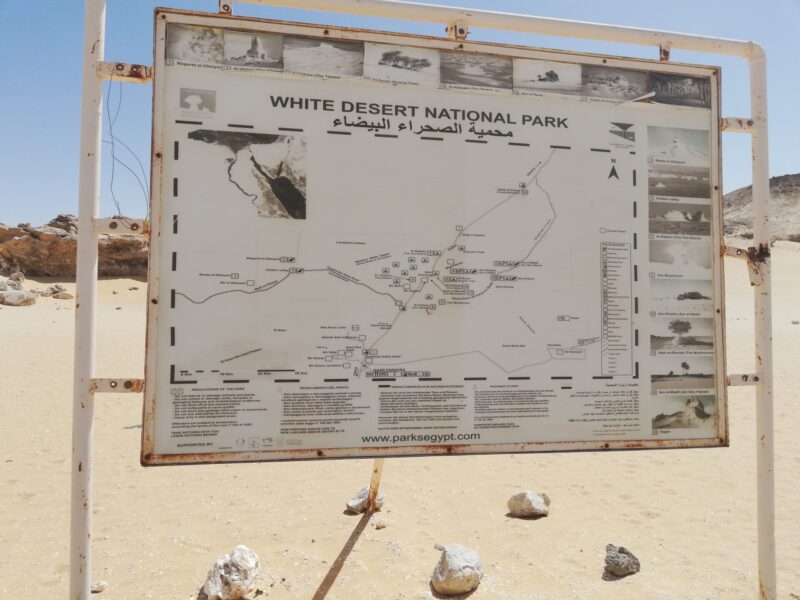
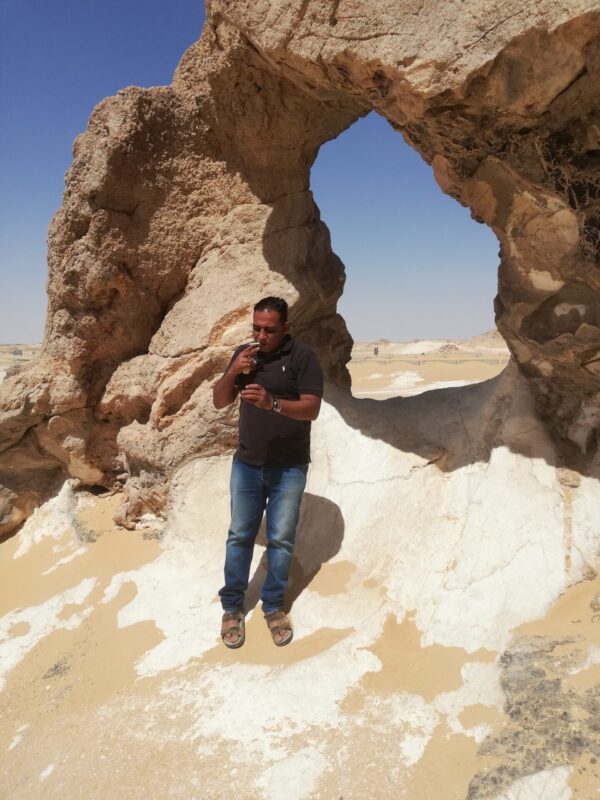
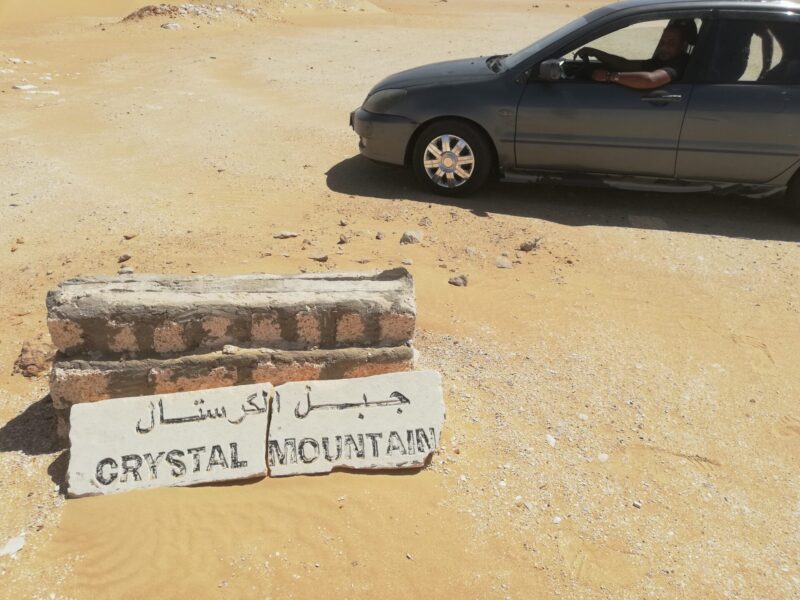
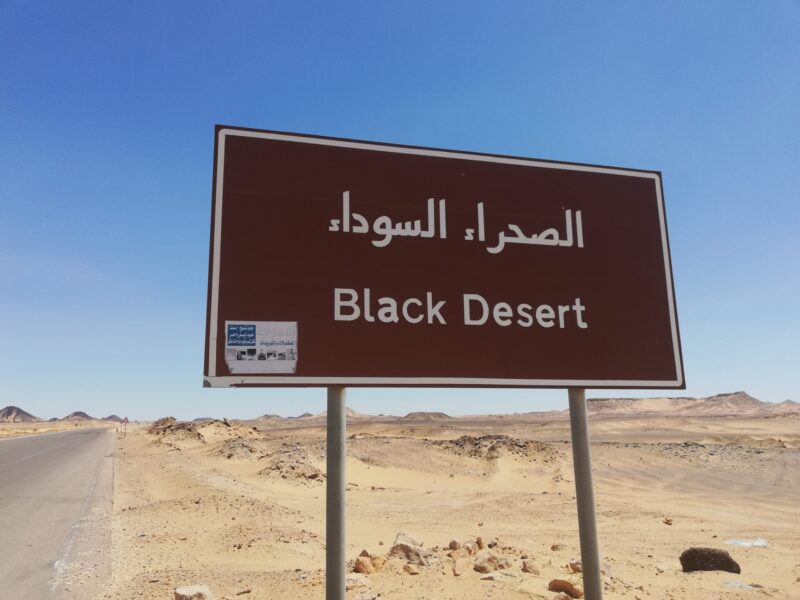
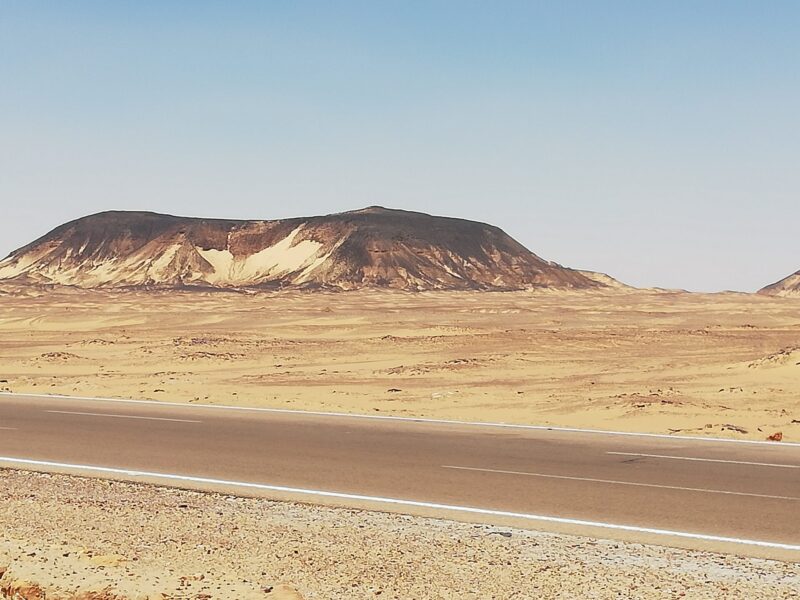
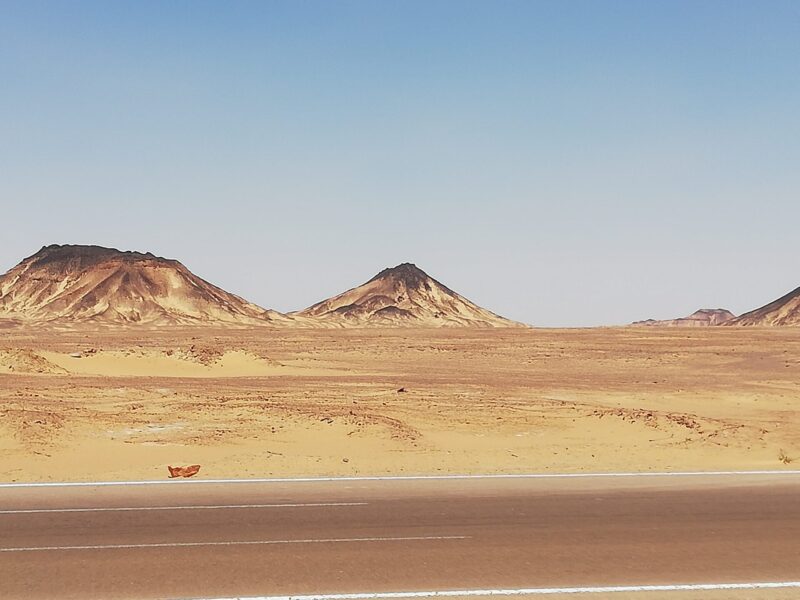
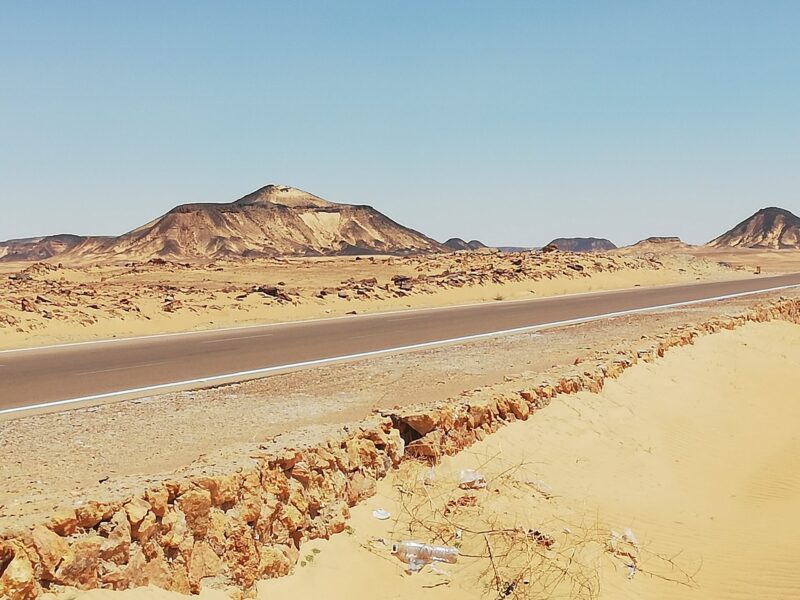
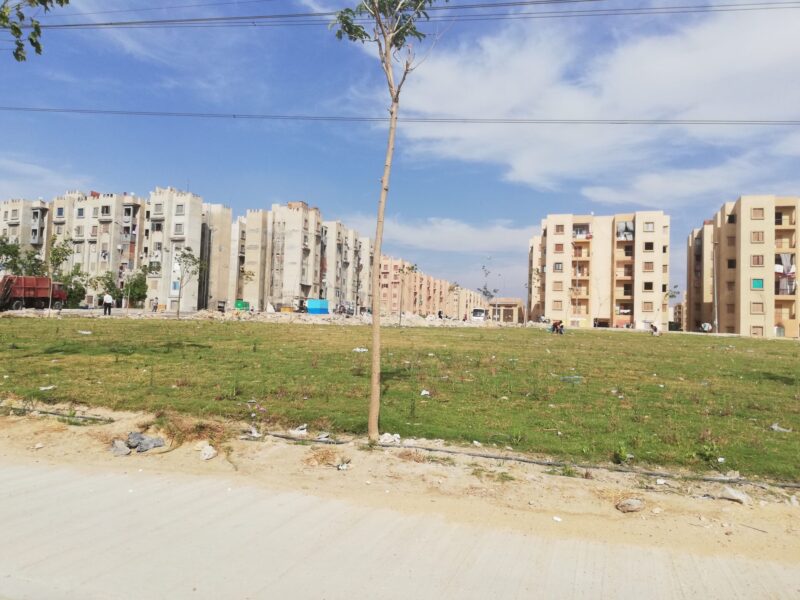
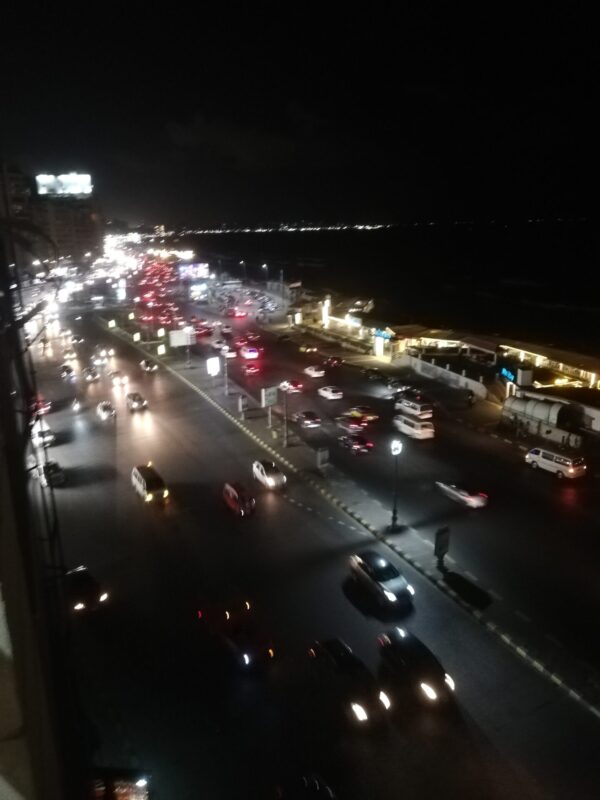
The Corniche in Alexandria from our hotel
Day 80 (19th May) Alexandria
Today saw yet another classic Wilson bungle. When planning the trip I thought it would be rather neat to see the site of the Pharos lighthouse, one of the original Seven Wonders of the World. It was built in the Ptolomaic Period in 280 BC and collapsed in an earthquake in 1323. It was rediscovered in the 1990’s when divers discovered large blocks of stone buried under the sea just off Pharos Island. I had it fixed in my mind that it was at the eastern end of the Corniche so, after walking for an hour in the mistaken belief that it can’t be that far away, we hailed one of the little Russian Lada taxis painted in a striking black and yellow livery, and travelled a good few miles to Mamura at the eastern end of the road. Many questions later, with nobody having a clue what we were talking about, a lovely lady came up and asked in perfect English with a West London accent if she could help us. She invited us to sit down at a cafe with her and her three dogs and explained that she was an Alexandrian who had been married in England for 30 years at Isleworth.
A quick perusal of her phone indicated that the site is at the Western end of the Corniche, and she suggested we got the bus there at a cost of hardly anything. So we have seen the whole of the Corniche with its lovely buildings of 4 to 6 storeys overlooking the sea. We visited the Citadel which had been built in the 15th century on the site of the lighthouse and saw the breakwater from which a salvage exercise raised large blocks of carved stone which had been part of the lighthouse. We had an acceptable, but very cheap, meal of fish and chips (me) and toasted cheese sandwich with chips (Jennifer) at the Alexandria Yacht Club restaurant,
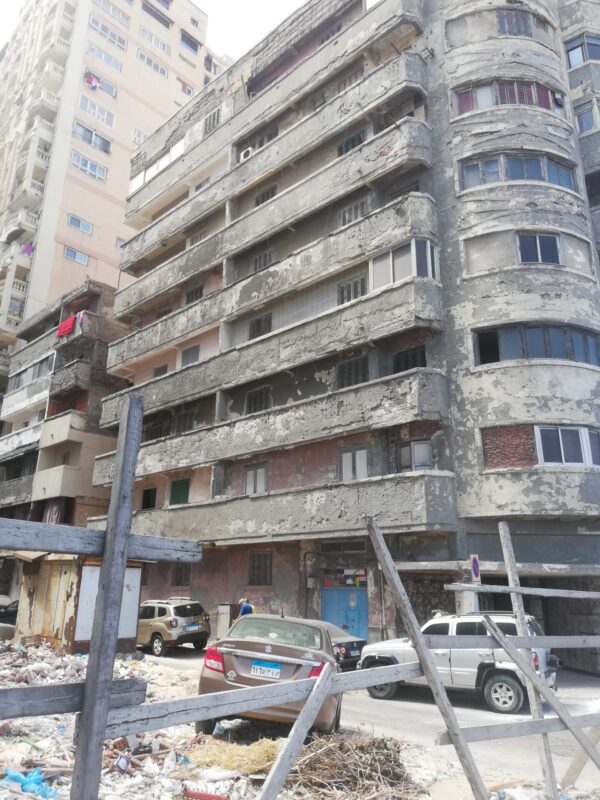
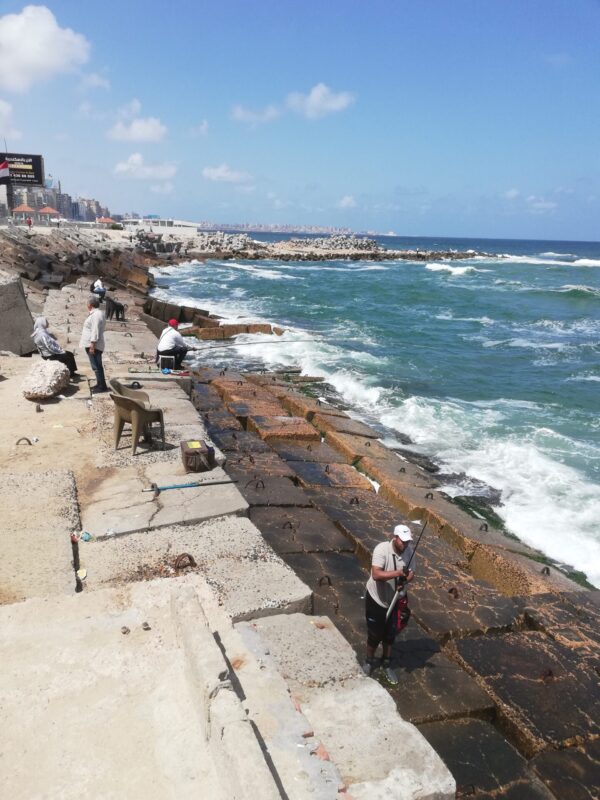
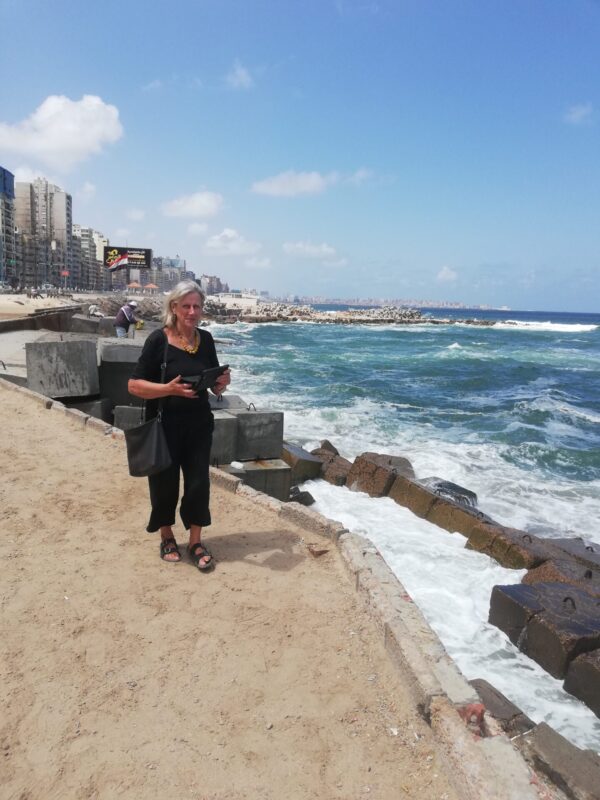
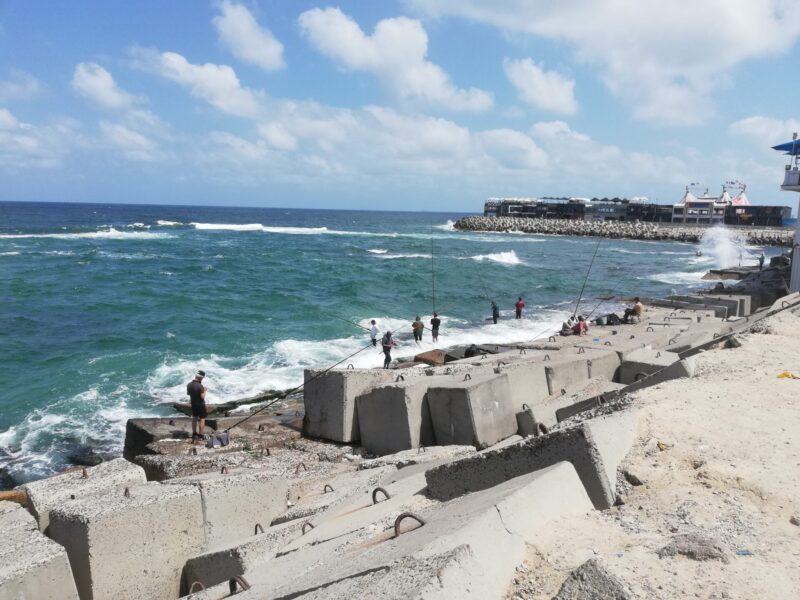
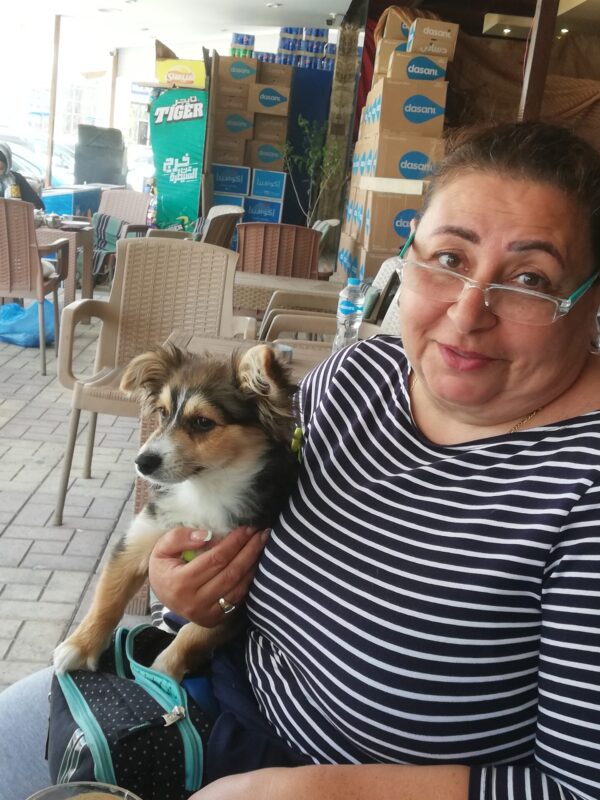
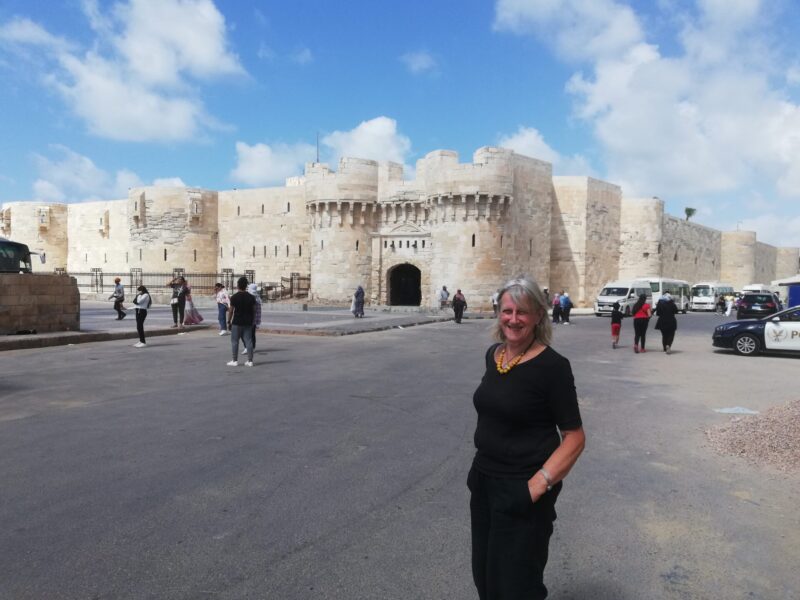
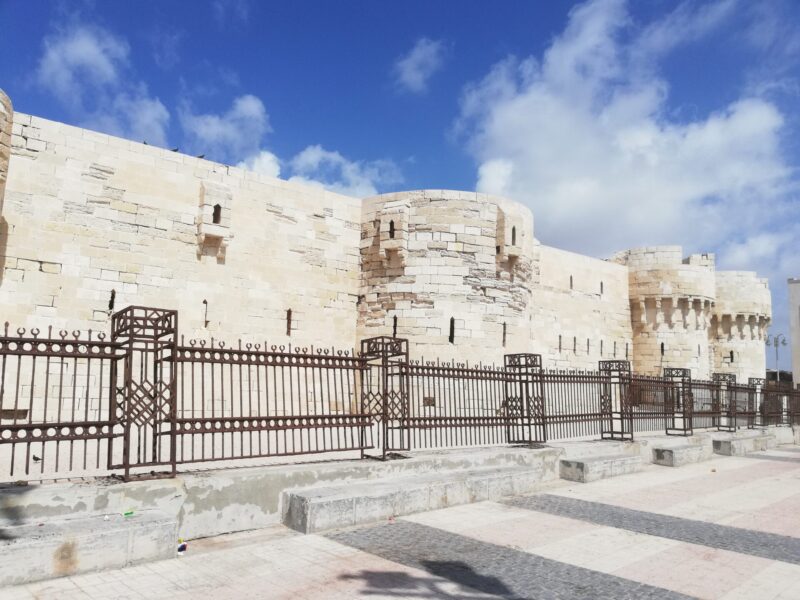


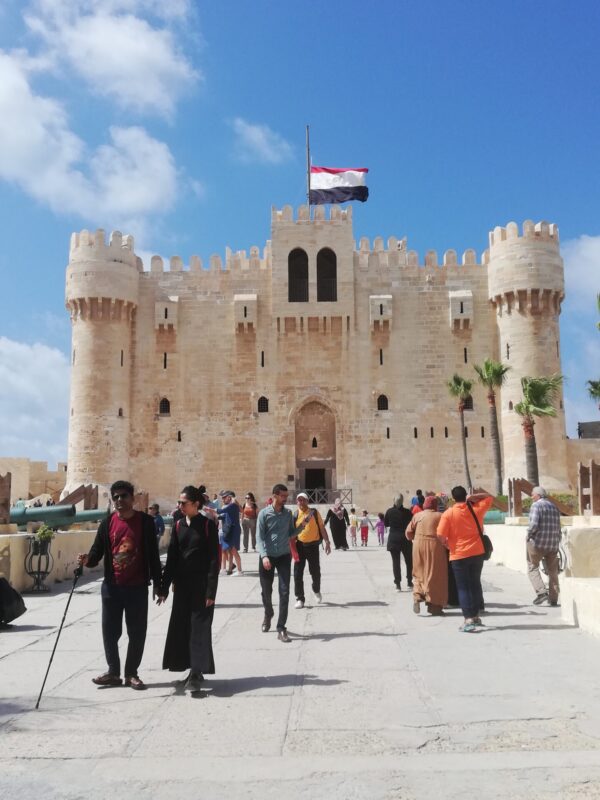

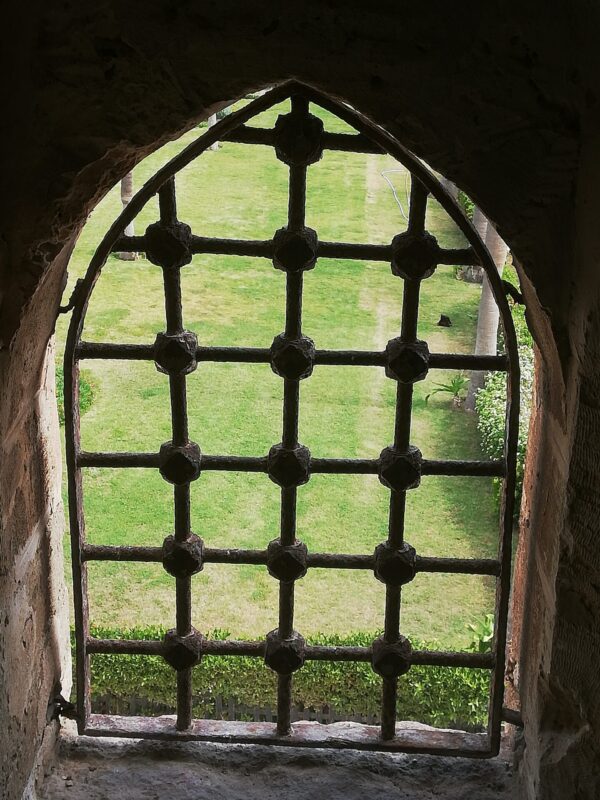
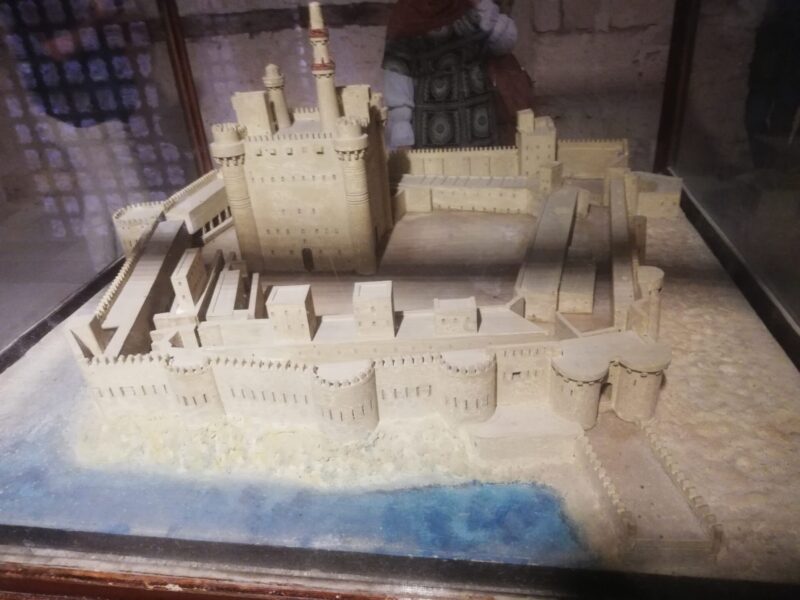
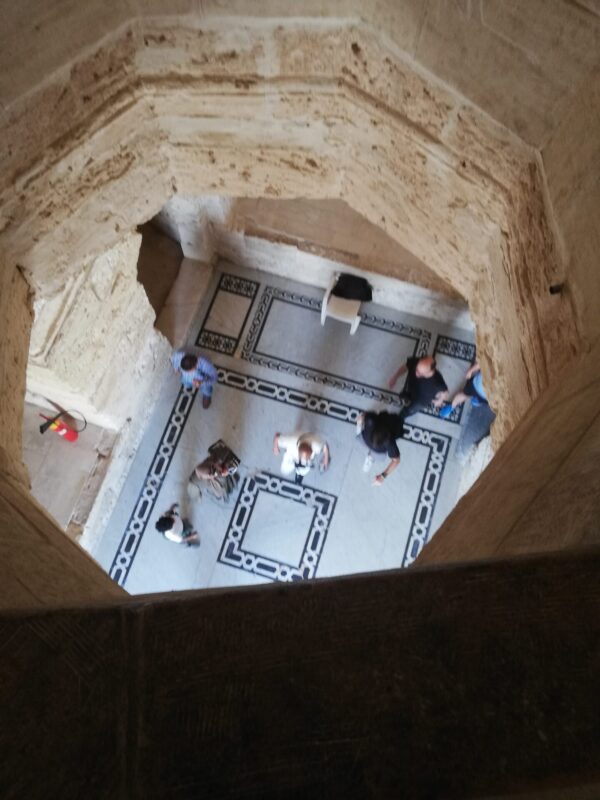
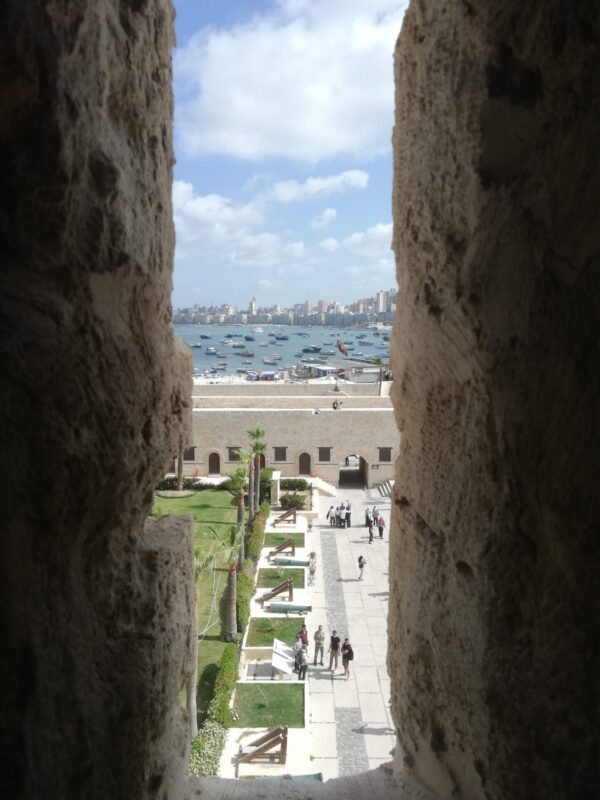
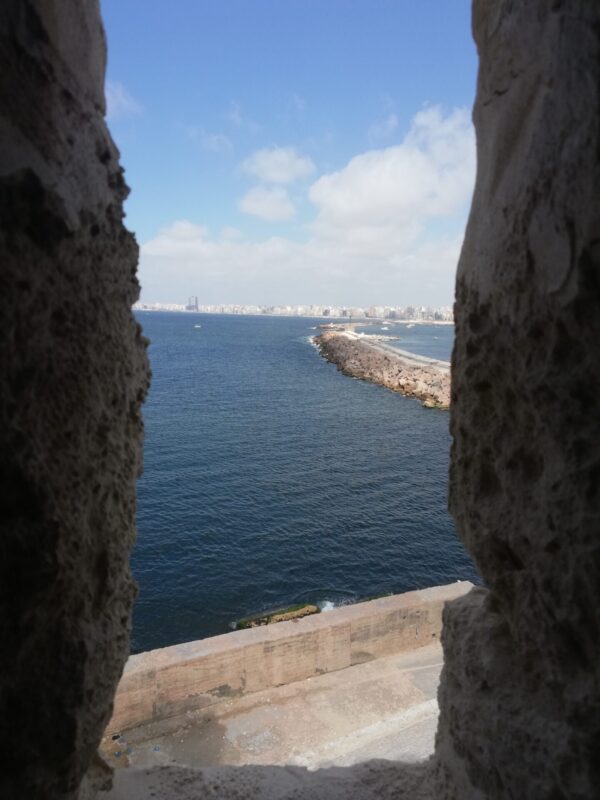
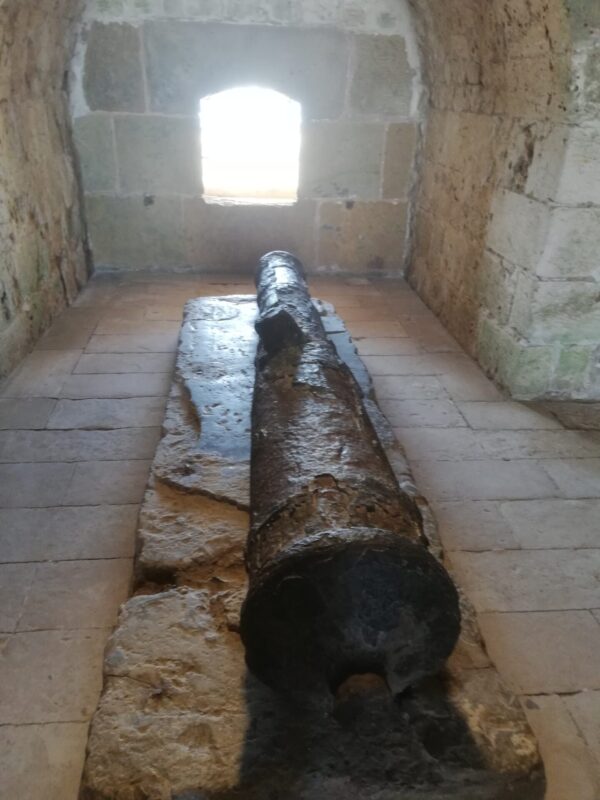
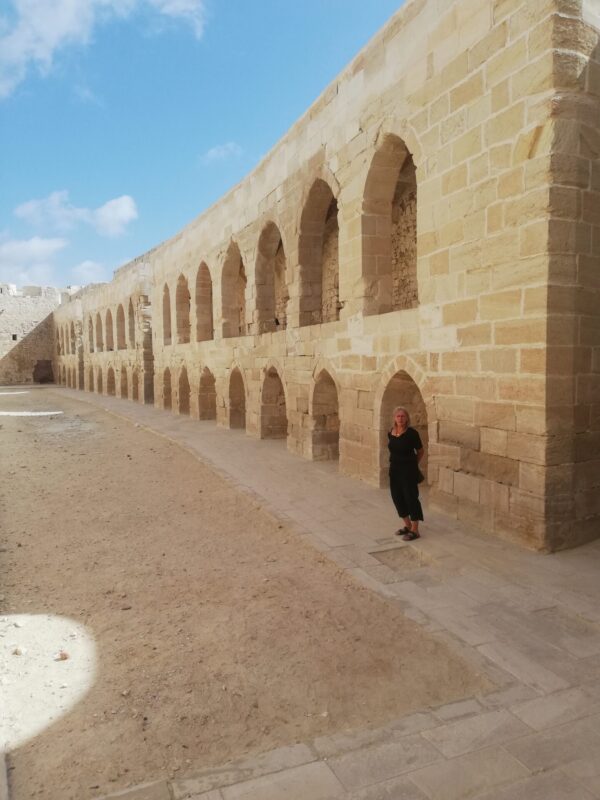
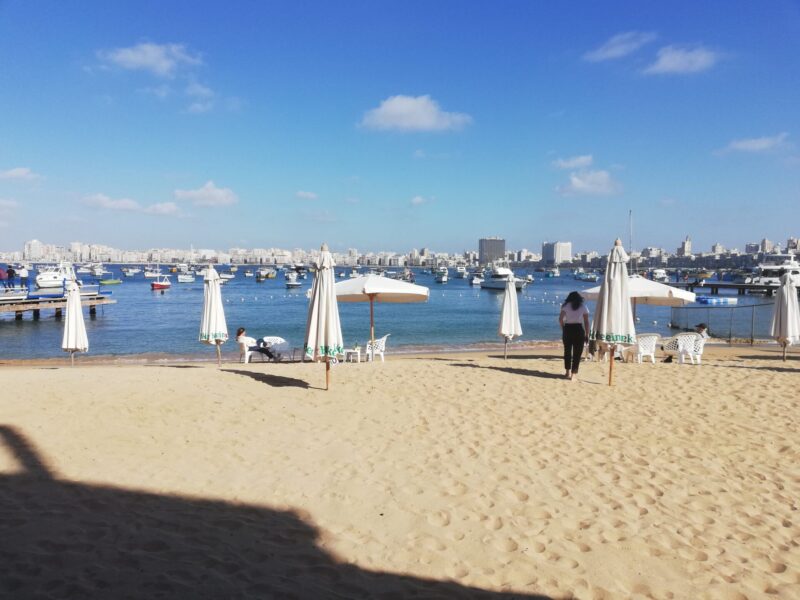
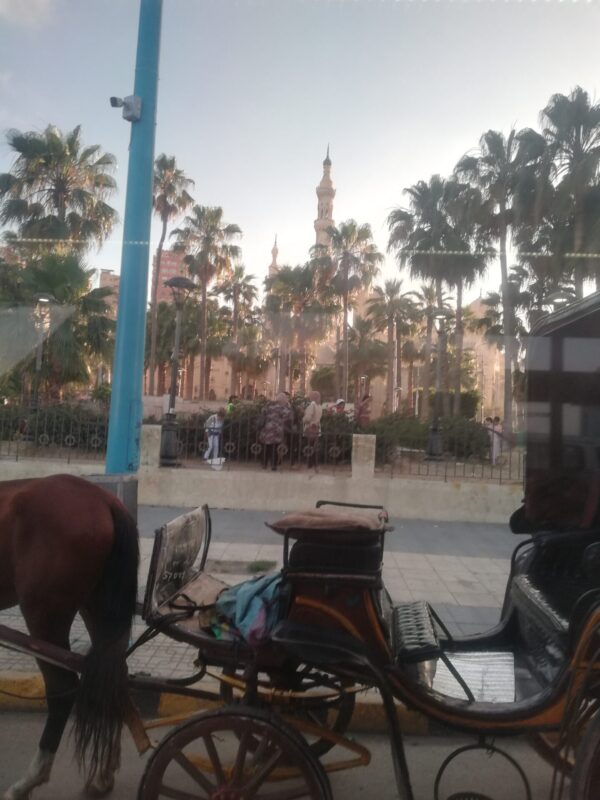
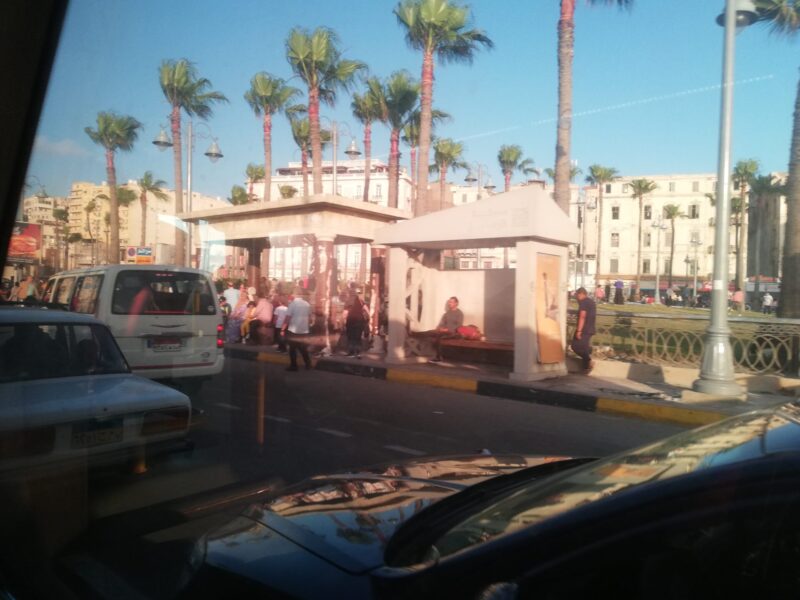
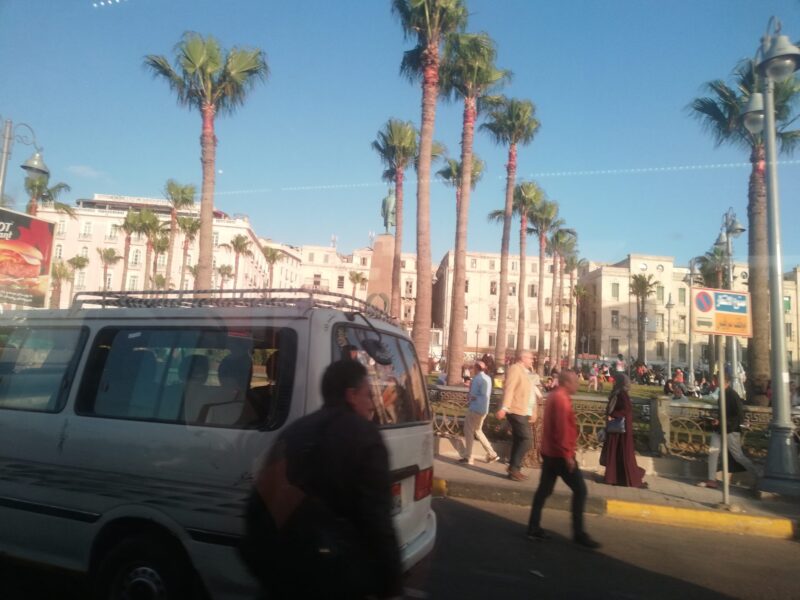
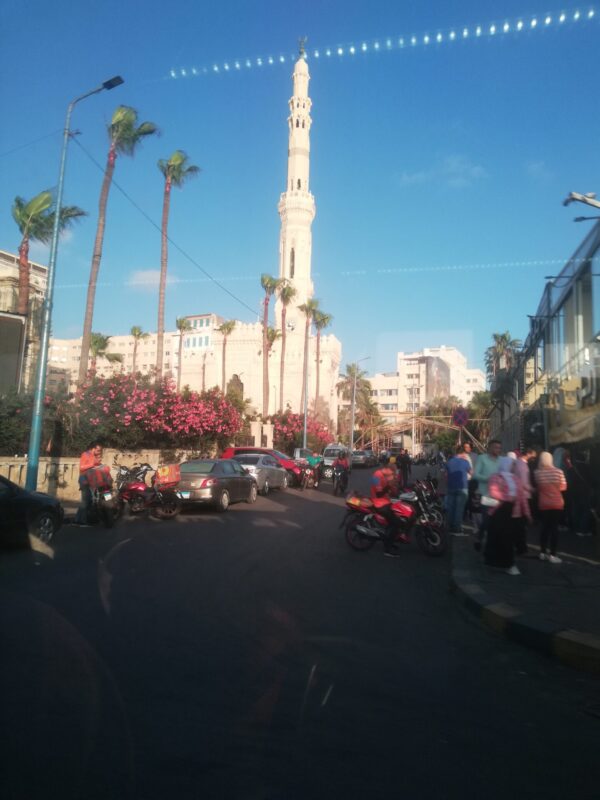

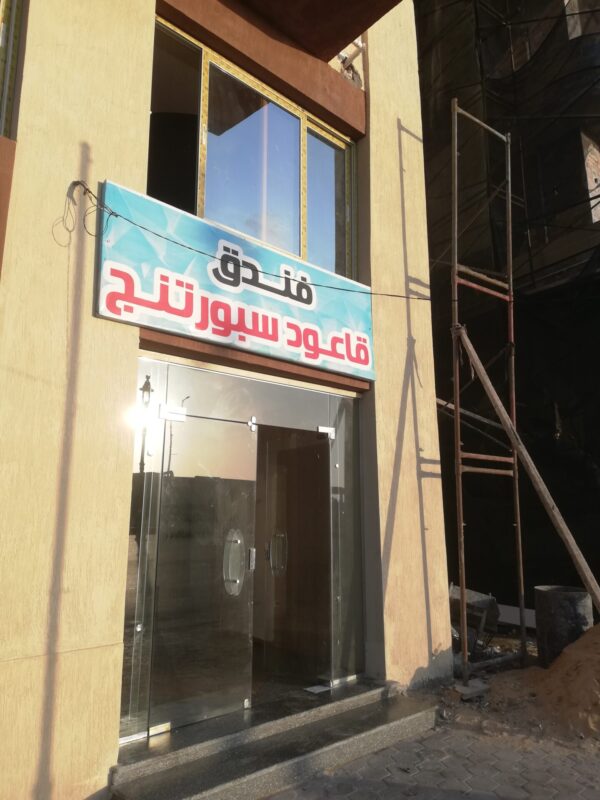
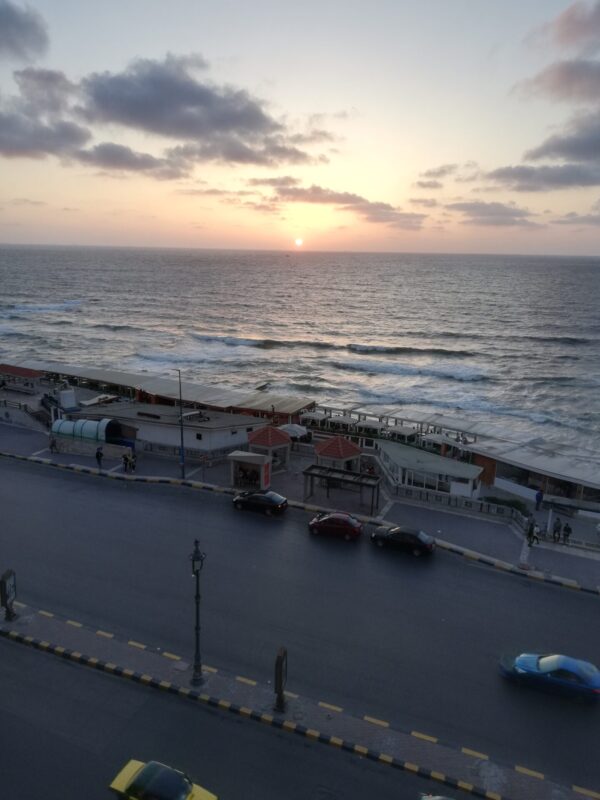
Day 81 (20th May) Alexandria to Saint Catherines
After getting a taxi to the railway station we got a train from Alexandria to the Rameses railway station in Cairo and another taxi from there to the Turgoman bus station to get a bus to Saint Catherines monastery in the Sinai Desert. We were shocked to learn that the next bus was 09.25 the next day and were advised by a seemingly friendly man at the Information office to get a taxi. He arranged a taxi and turned out to be not so friendly when he demanded a $15 tip. So the trip to St Catherines cost us $110, but at least we got there at 11 pm the same day and had to pay a staggering $100 for a rather 2-star room. We were too late for food and the nearest restaurant was a long way away but we were too tired to care. So we went to bed.
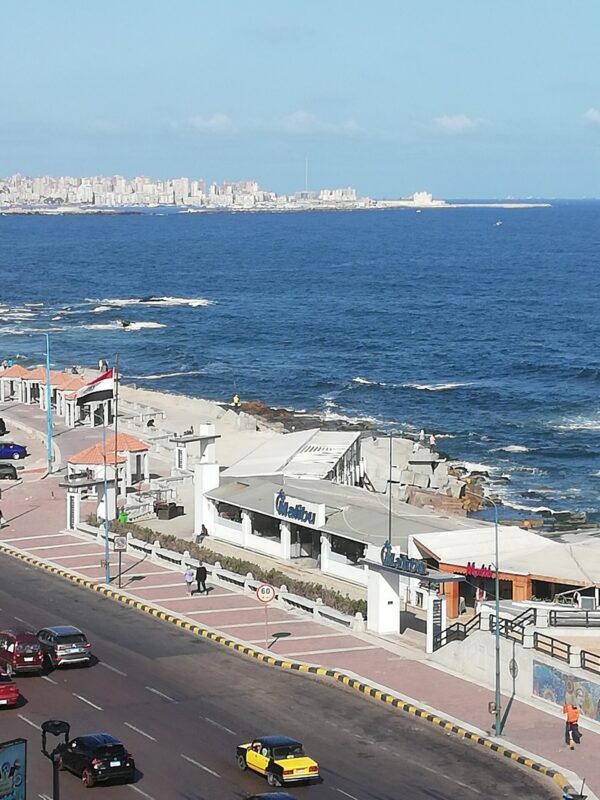
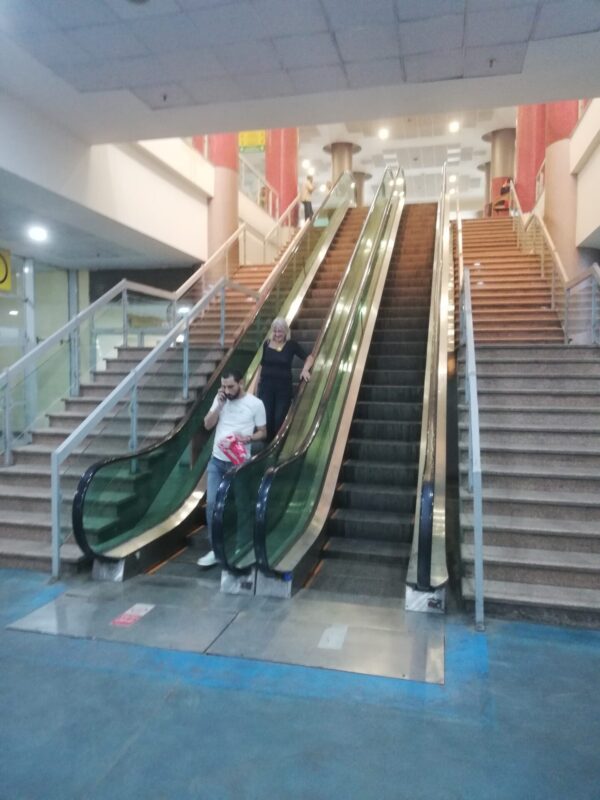

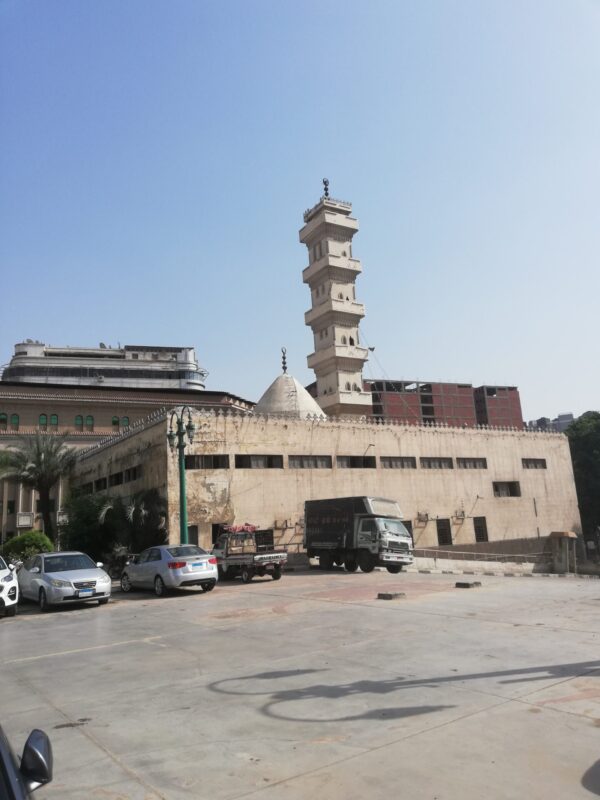
Day 82 (21st May) Saint Catherines
Saint Catherines turned out to be the biggest rip-off of our trip. The Morgenland hotel was not worth $40 a night compared with other hotels we have been to; it is inundated with about 10 coach loads of tourists and we were outraged at being charged $2 for a small bottle of water when every other hotel gives it for free. However the breakfast and evening meal were very good.
Morgenland is expensive because of its location. Which turned out to be non-existent. We got a taxi to the monastery and were told that it is closed on Sunday. Of course, silly me, how could I forget that monasteries and churches close on Sundays. Nobody goes in for this praying and hymn-singing and psalm-chanting nonsense any more. After working hard fleecing tourists for 6 days a week, the monks deserve a day off to rest, count their money and do whatever it is that monks do when they get together. I recalled that when we got to the Boyana church in Sofia after it had closed, a lovely man let us in and spent an hour explaining the frescoes. So could a lovely man let us into the monastery just to have a look. No. A succession of grinning idiots and monks with dirty habits told us with faces filled with glee that it was closed. Come back tomorrow.
So I thought a trek to the top of Jebel Musa (Mount Siniai) where Moses propounded the 10 commandments would be good. It started well. There was a big sign telling us what to do and not do. All very sensible: take plenty of water, stick to the path etc. Then a seedy little jobsworth in a Tourist Police uniform jumped in front of us and told us we couldn’t go without a guide to take us up a wide, well-trodden path which, from my research in the internet, would take us with absolutely no problem to the top. No said the jobsworth. No guide no pass. I went back to the Tourist Police HQ at the entrance to the monastery and remonstrated but to not avail. We must pay a guide a huge amount of money or not go. They said it was for our safety. We might fall over or get lost. Bollocks. It was yet another money-grubbing exercise that nobody thought fit to tell us before we spent a huge amount of money and time coming here. Perhaps they thought that we should know that Egypt is just one large money sponge and we should not expect to go anywhere without giving backhanders to anybody and everybody
So Saint Catherines was a wash-out, a total rip-off and I have prepared a very caustic report for Tripadvisor. I will advise that nobody should be stupid enough to waste their time and money by coming here. Although I don’t expect the coachloads of selfie-stick idiots will take any notice.

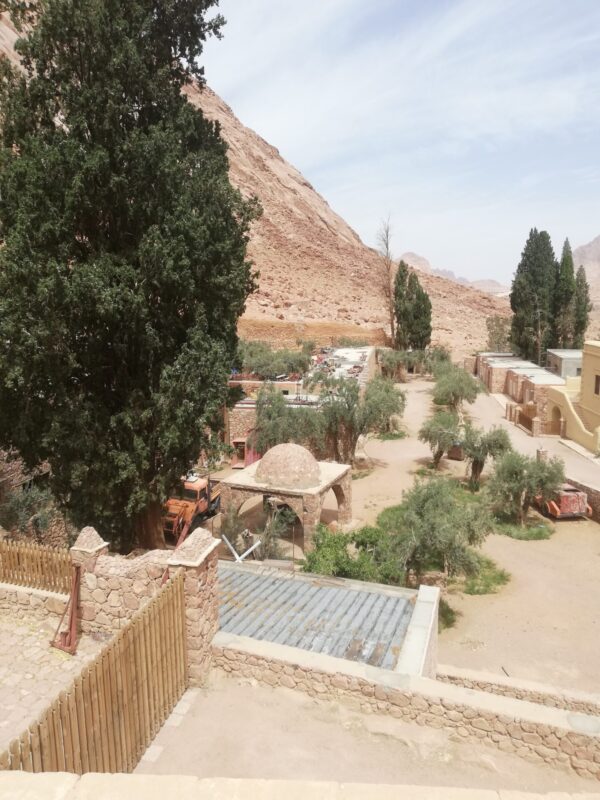
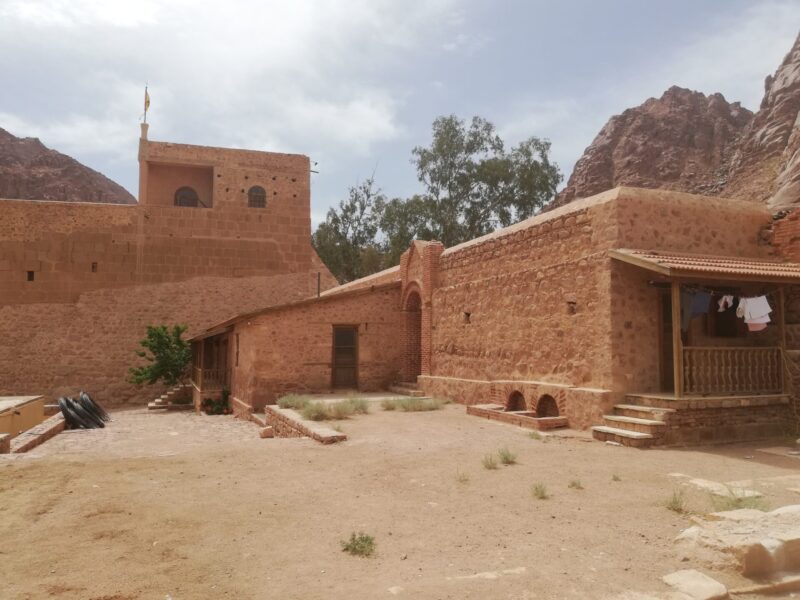
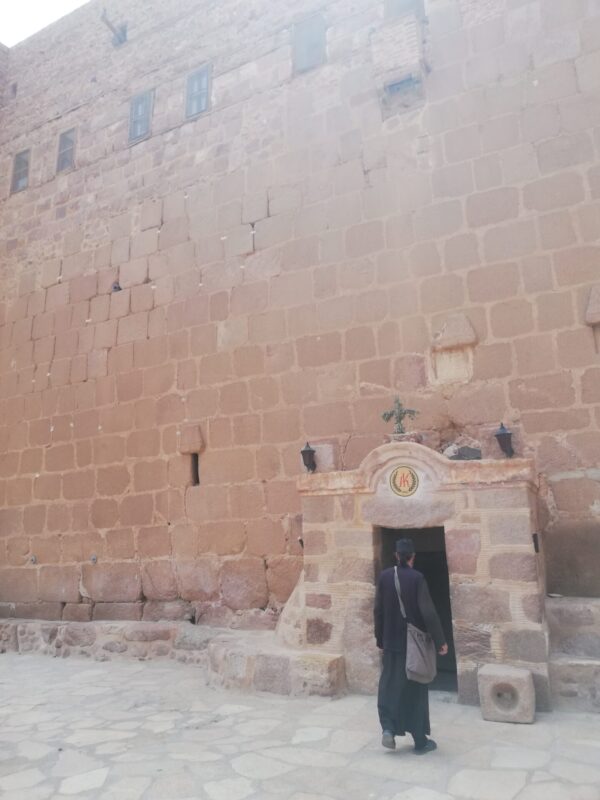
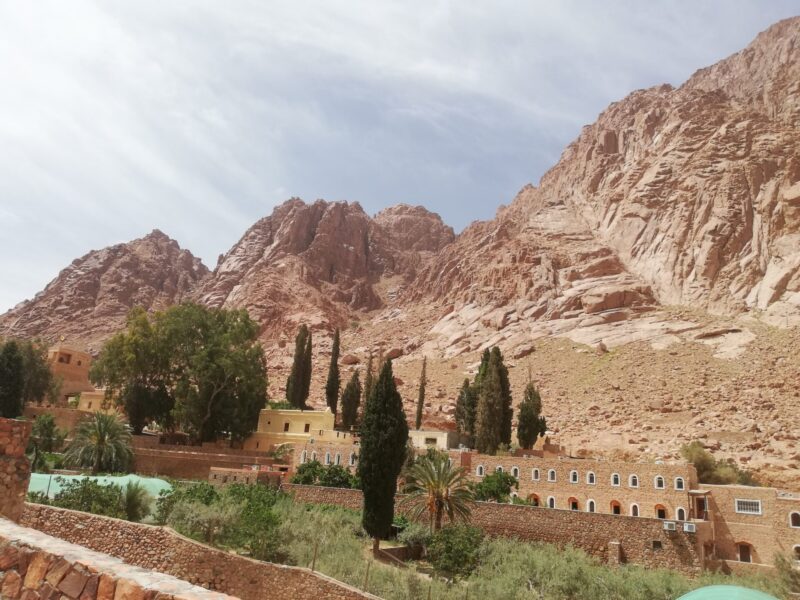
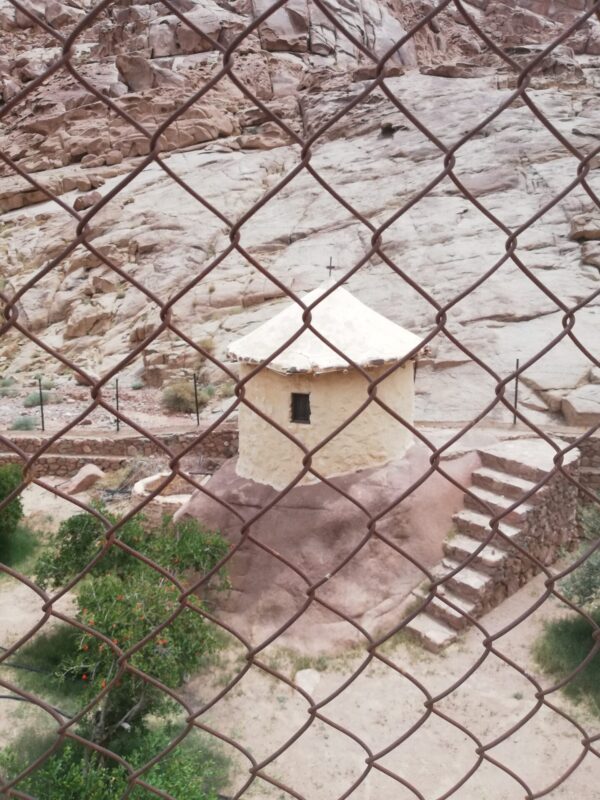
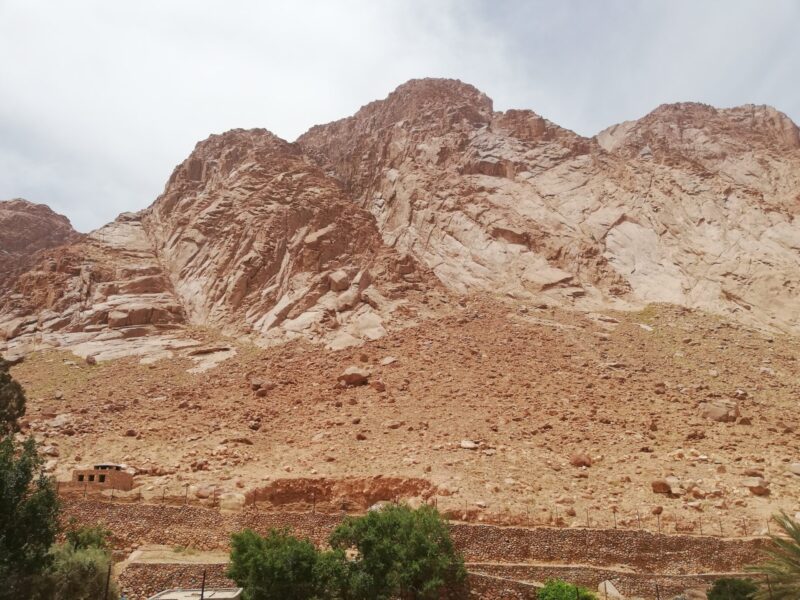
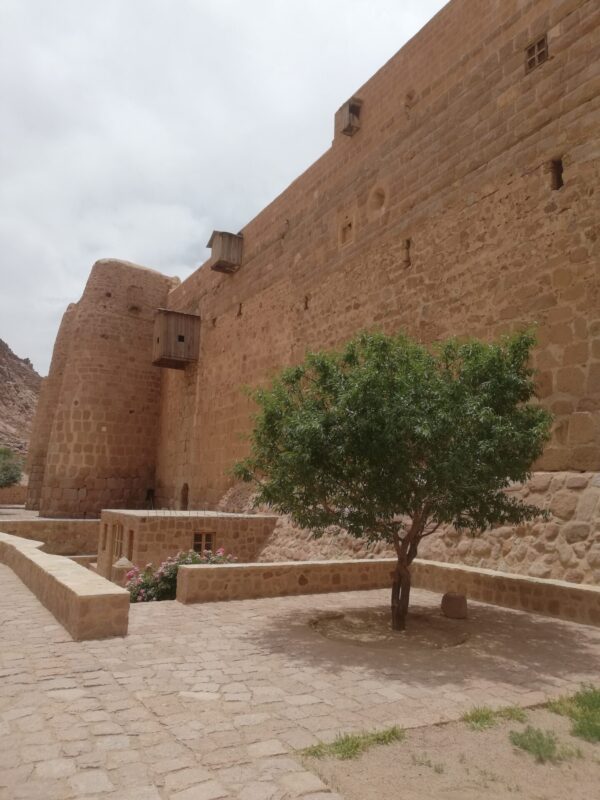
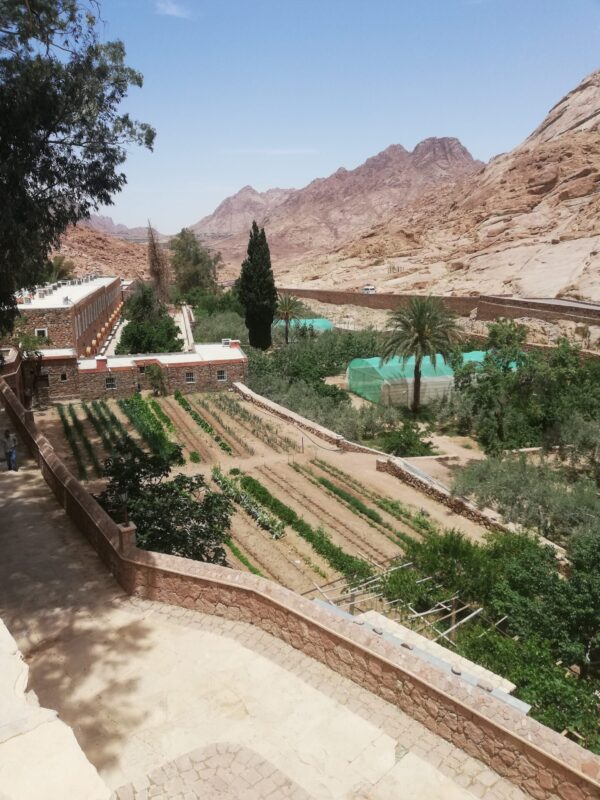
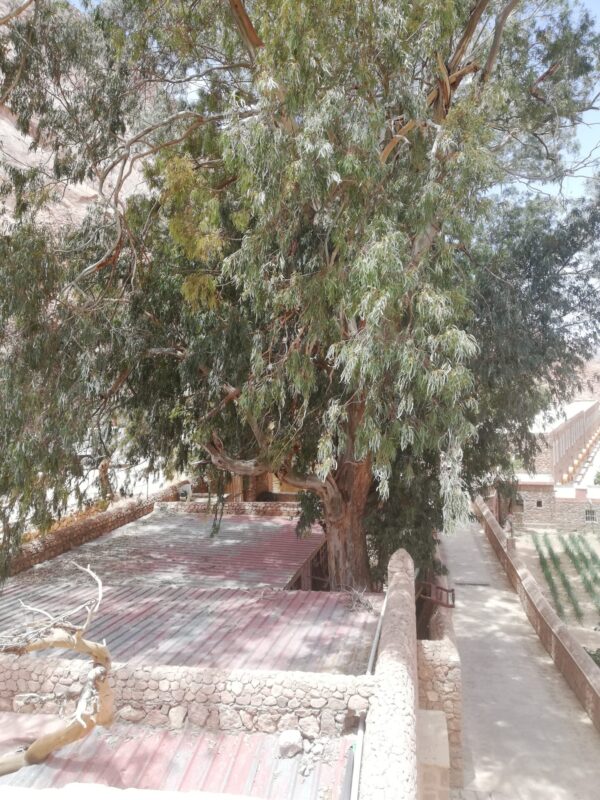

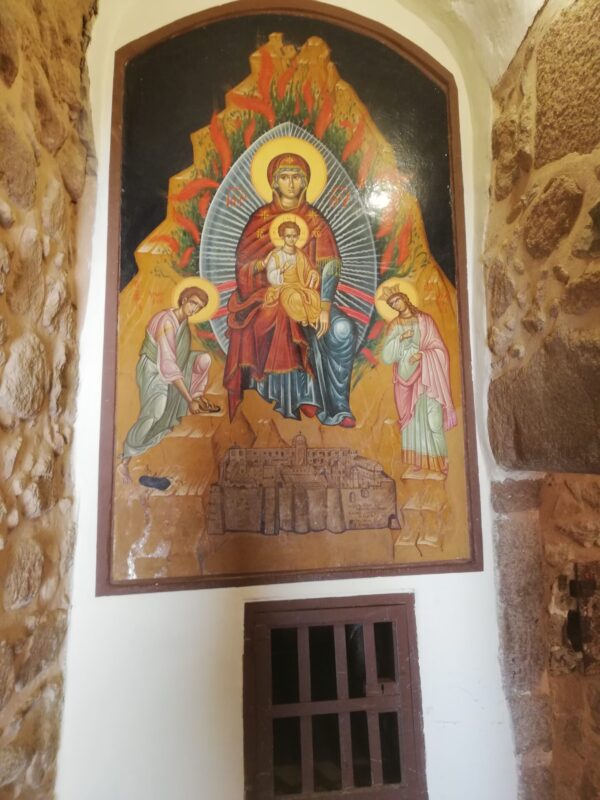
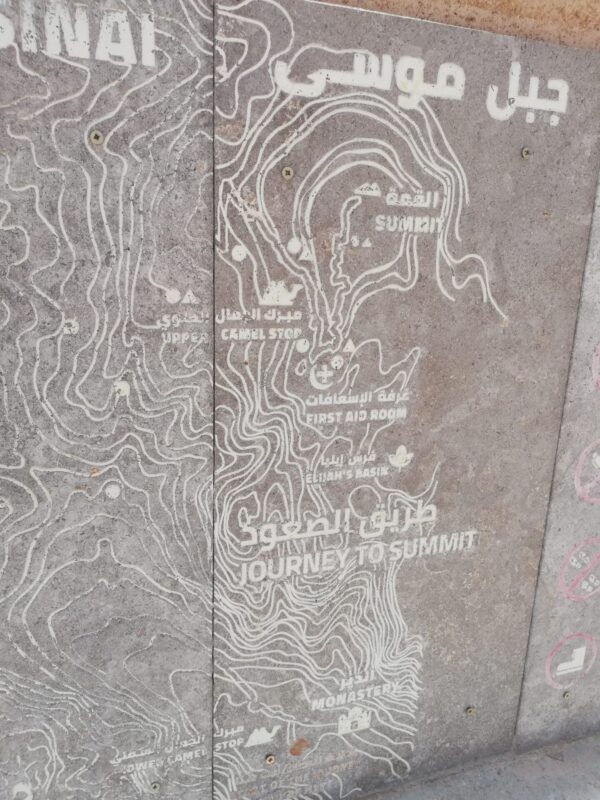

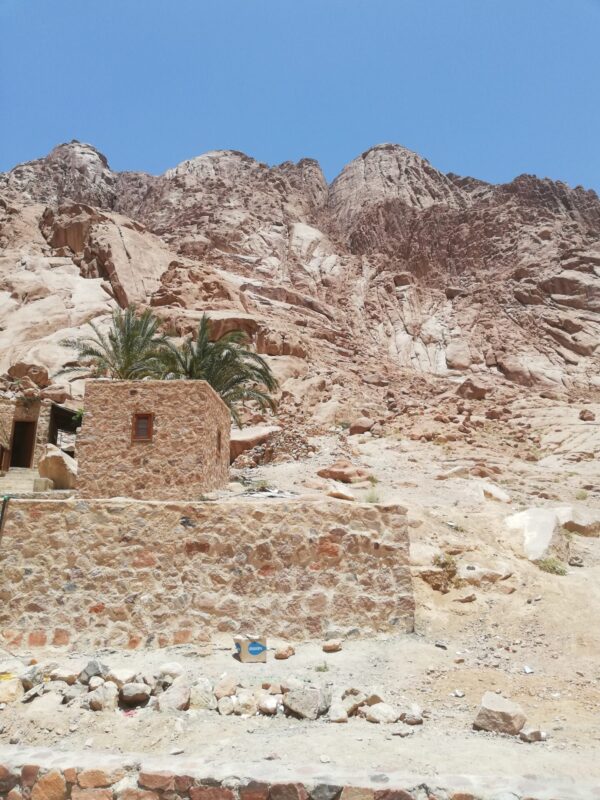
Day 83 (22nd May) St Catherines to Nuweiba
The day started well. The restaurant was awash at breakfast time with about 400 Brazilian evangelists including a man sitting opposite us with a “I love Jesus” baseball cap on his silly head. He had this smug, pious, self-congratulatory look on his face and he glared at everybody who was not wearing an equally silly cap as if we had just crawled out from under stones. Especially us. Then he spilt a cup of piping hot coffee on his crotch and boiled his genitals before jumping up and down, howling in agony and clutching his groin. His fellow evangelists ignored him as if he did it all the time; perhaps as a penance for his sins. Then – the biggest indignity of all – his “I love Jesus” cap fell off. I roared with laughter.
The taxi driver was 30 minutes late, apologised profusely, and we set off for Nuweiba. He spoke reasonably good English and suggested that we came back to St Catherines some time and stayed at a hotel at the monastery which might be expensive but would at least allow us to get past the police checkpoint on Mount Siniai before the policeman got up and save money without having a guide. This sounds good. After all, if I choose to get lost and fall off the summit and break my neck, that’s my fecking business.
When we got to Nuweiba, we were shocked to learn that there was no ferry because of strong winds in the Red Sea. A friendly man carried our bags to his friend’s hotel who told us that a room would be £5. I went to an ATM for some dosh and, when I got back, discovered that the hotel guy had been interrogating Jennifer about our relationship and had decided that his hotel was full up. So I wandered about this desolate one-horse town and discovered the Hedton Hotel (not Hilton, and about the exact opposite) where we got a room for £5 from George who told us he was a Christian. Apart from the room in Tibet with a big hole in the floor which previous guests had used as a toilet, this was arguably the worst room we have ever slept in. However it had beds and a shower with lukewarm water coming out of a hole in the wall rather than the shower head and a solitary bulb for lighting, Pound for pound it was much better value than the Morgenland and I shall give it a 5 on Tripadvisor.
In the evening we wandered round the town and found a cafe where a man was cooking kebabs on a charcoal fire. Plates of chicken and shish kebab, salad and humus and two drinks cost us £4 and was one of the best meals we have had on the trip. So we went to bed happy.
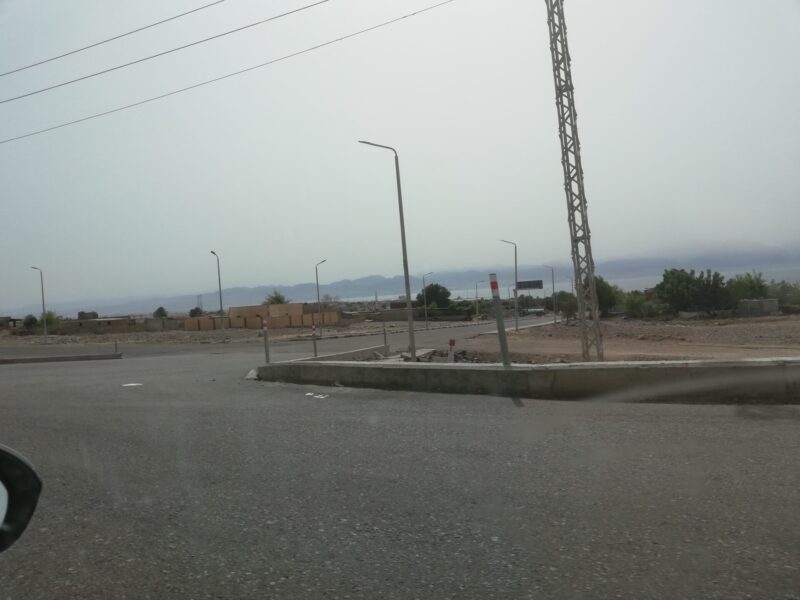
Something tells us the ferry isn’t running
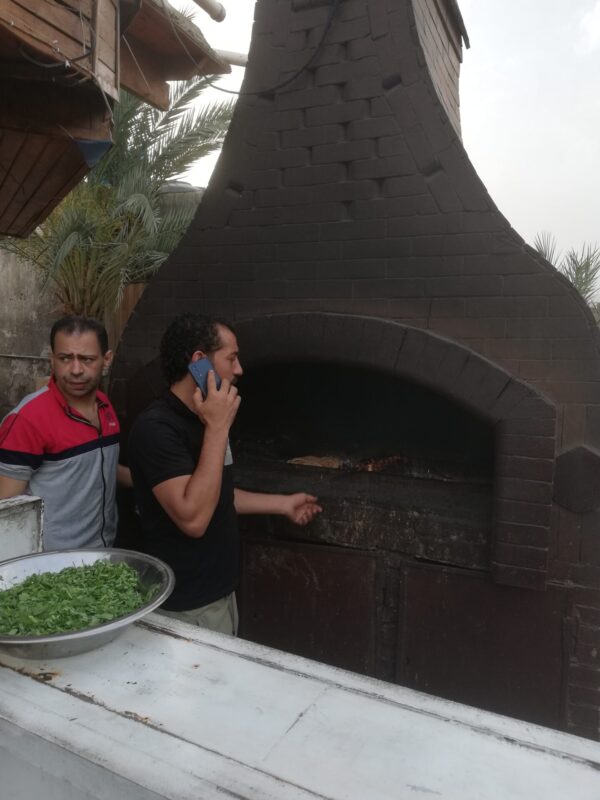
The world’s best kebab vendor
Day 84 (23rd May) Nuweiba to Aqaba
We got to the ferry terminal (a 5-minute walk from the hotel) by 08.00 and saw a long queue of foot passengers which we joined before a fixer took us to the front and demanded money. I gave him 50 Egyptian pounds (£1) and he was suitably offensive before he went off to look for another mug. Setting off one hour late at 2 pm the ferry got into Aqaba terminal at 16.30 and, after some arguing, we accepted that there was a fixed rate of $7.50 per person for the taxi into Aqaba. We went to the hotel we had stayed in before (whose name we still don’t know because its name is in Arabic) and then went for a meal at the Lebanese restaurant we had been to before. In the evening, Jennifer booked seats on the Jett coach to Amman.
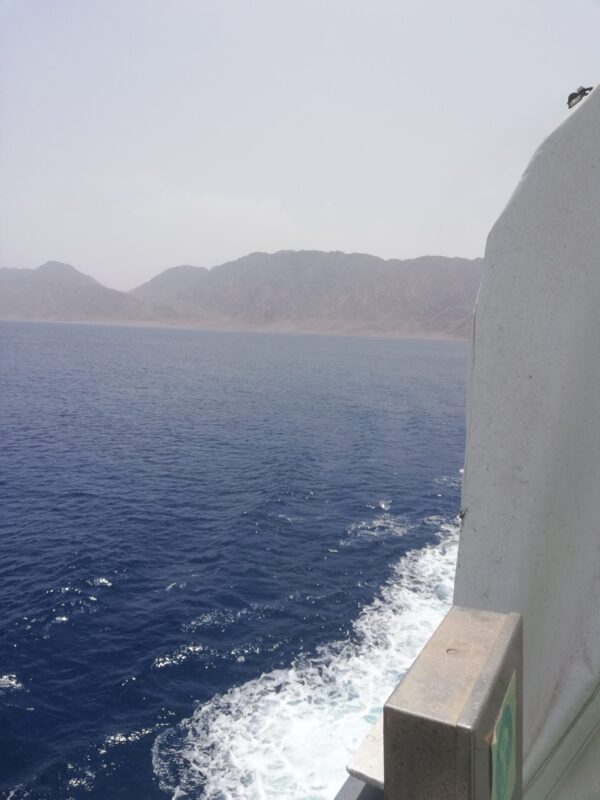
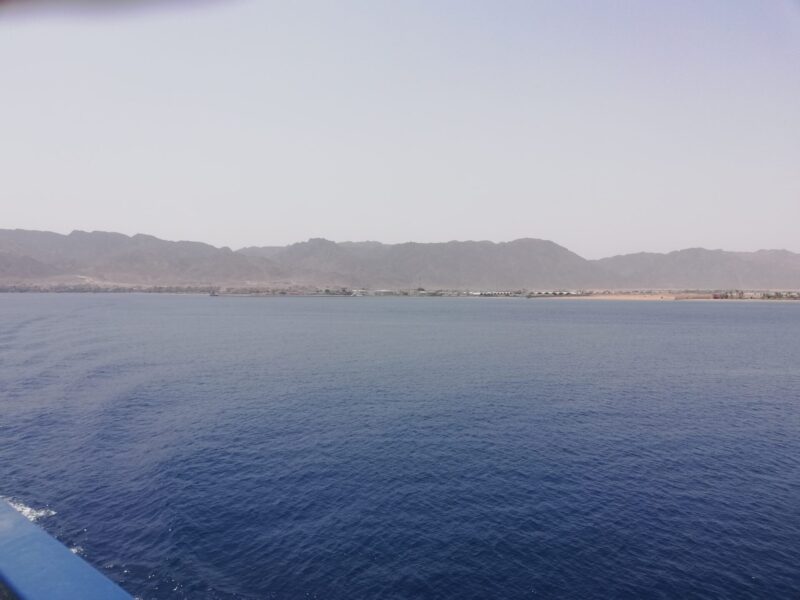
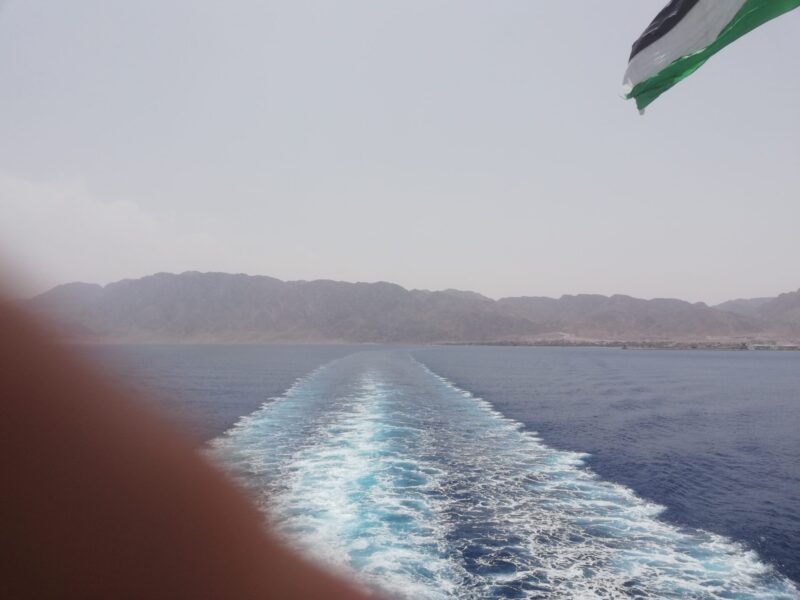
Day 85 (24th May) Aqaba to Amman
An uneventful day with the coach leaving Aqaba at midday and reaching Amman at 17.00. A very nice taxi driver took us to Amer’s house for $10 and we finally saw our (fixed) van. We were warmly greeted by Wa’el and Mai (Amer’s wife) and I went with Wa’el for a typically Jordanian takeaway of Shawarma and chips. Amer was away on business in Aqaba.
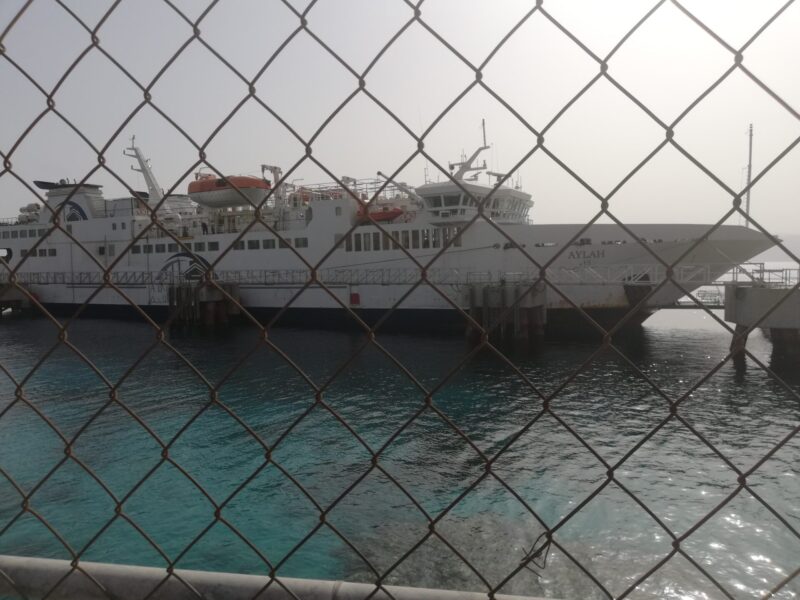
Day 86 (25th May) Amman to al-Khalidya
The intention was to give the van a good test by driving a circular trip through Madaba, Mount Nebo (where Moses saw the promised land), al-Maghtas (otherwise known as the “Baptism Site of Bethany Beyond the Jordan”) where Jesus was supposed to have been baptised by John the Baptist, and then down the Dead Sea coast past the Salt Pillar of Lot’s Wife, who was turned to salt because she turned and looked at the burning cities of Sodom and Gomorrah, and then up to al-Karak and back to Amman. Mai (Amer’s wife) who had been very upset the previous evening that he had taken three aunties and a cousin to Aqaba rather than her, suggested that we go and see her parents and sisters at al-Khalidya, about 30 kms from the Syrian border,
It was a very pleasant day; they have a very large house, a small factory making t-shirts and huge garden full of trees – figs, olives, oranges and many others. They are watered once a week on Tuesdays when a water tanker arrives to fill their water tank. The food, prepared by Mai’s sisters and mother, was delicious mansaf and maqluba as well as dolma, pickled aubergine, thick creamy yoghurt, olives and a dish of spicy mashed tomato an onion. Jennifer was invited to pick out t-shirts and trousers, made in the factory, for all our grandchildren and we were, once again, astonished at the generosity shown to us. We spent the night there, which was marred by an invasion of mosquitoes which fought us until 4 am when we called a truce and went to sleep, but covered in lumps in the morning. Perhaps the ear-splitting azan, sung for the dawn prayers at the adjacent mosque, induced the mosquitoes to have pity on us and let us sleep
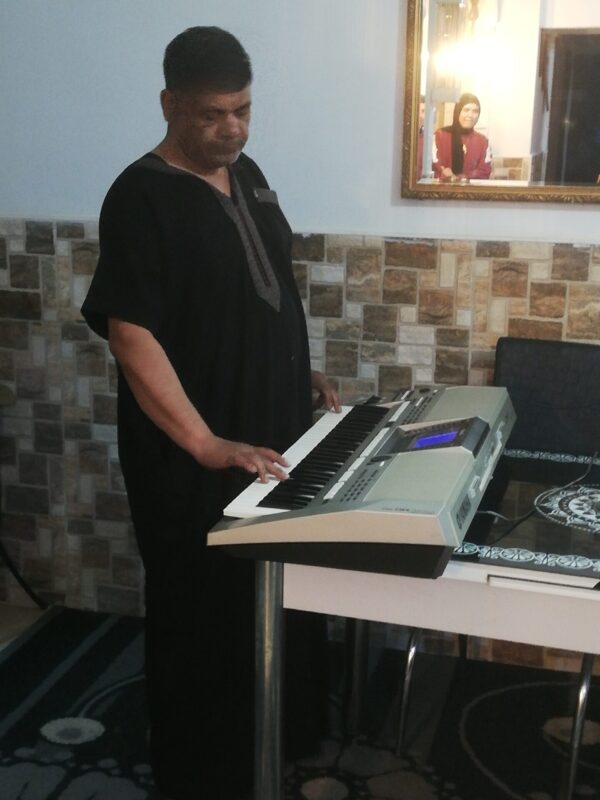
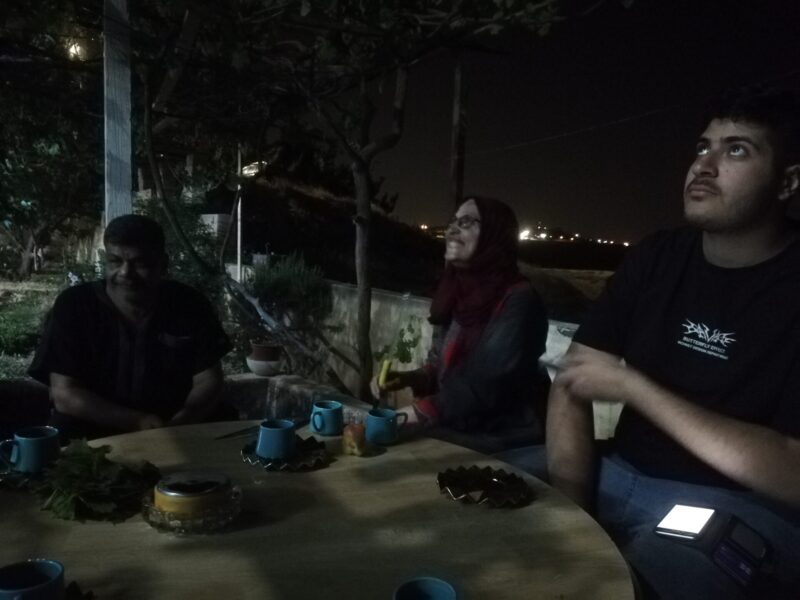
Amer’s uncle Saleh, his wife Arawa and Wa’el
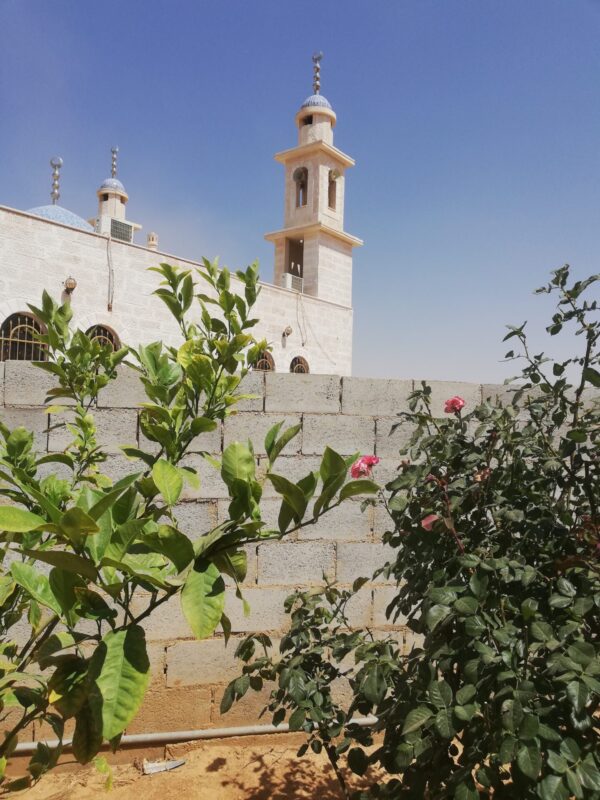
Mosque at al-Khalidya

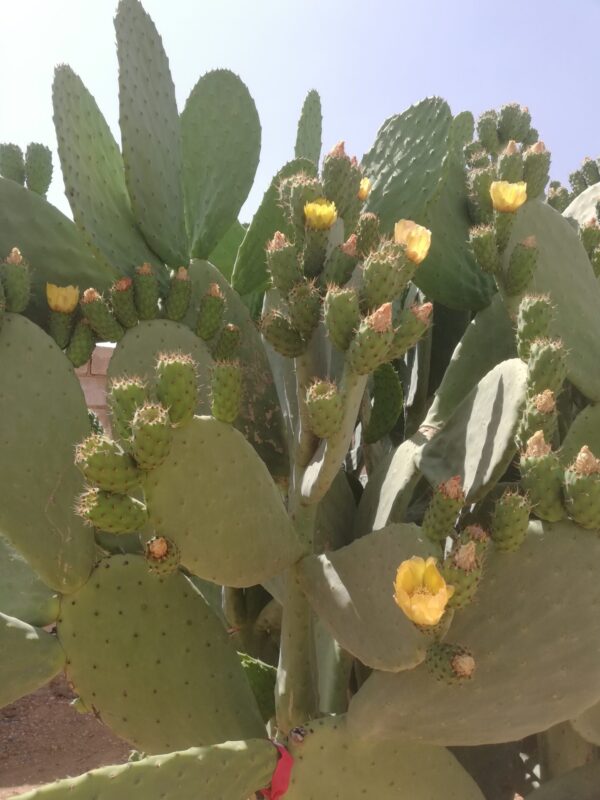
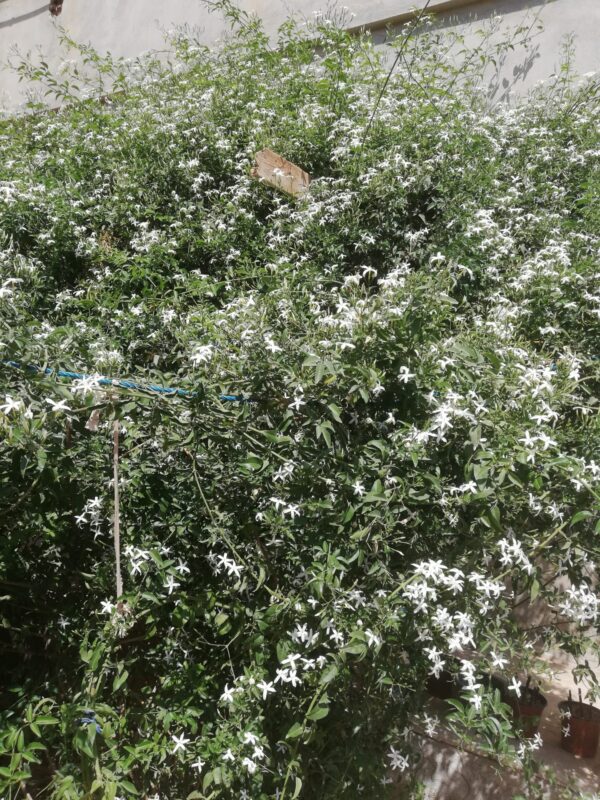
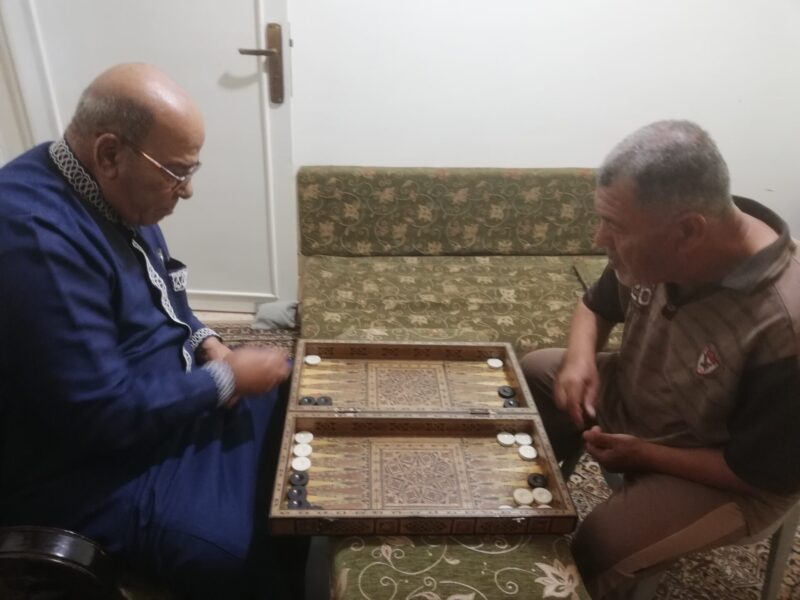
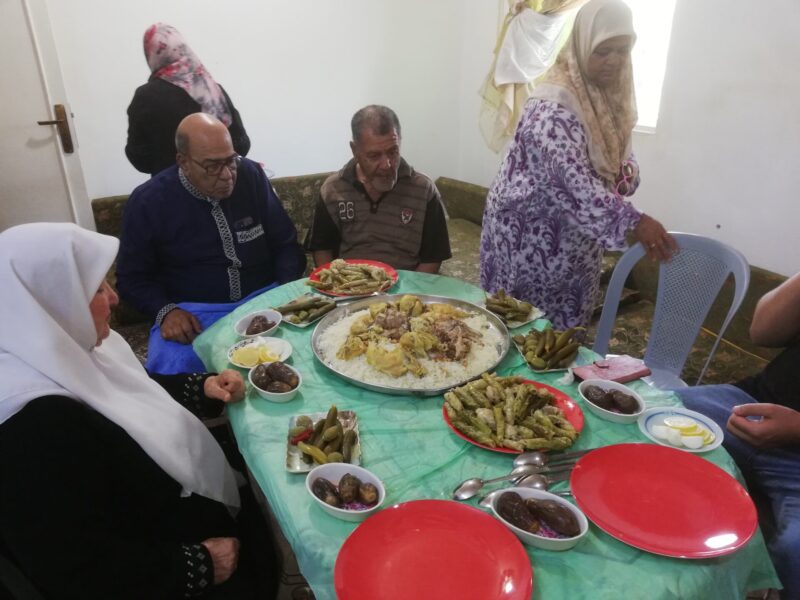
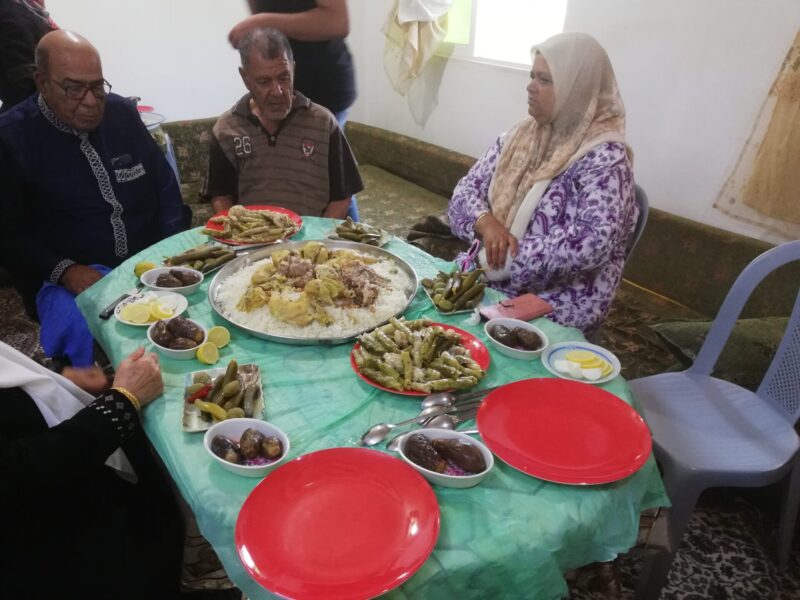
Day 87 (26th May) al-Khalidya to Amman
After a huge breakfast and even huger dinner, and after meeting more neighbours and an uncle who had lost both his legs, we finally returned to Amman. In the evening we drove to the Dead Sea and visited a hot spring in which Jennifer submerged herself and I had a paddle. We went with Wa’el and his friend Zaid.
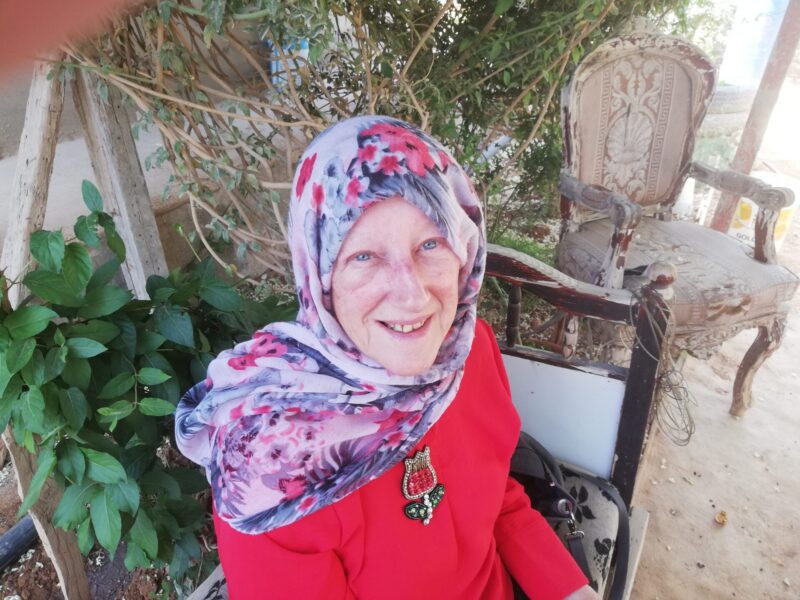
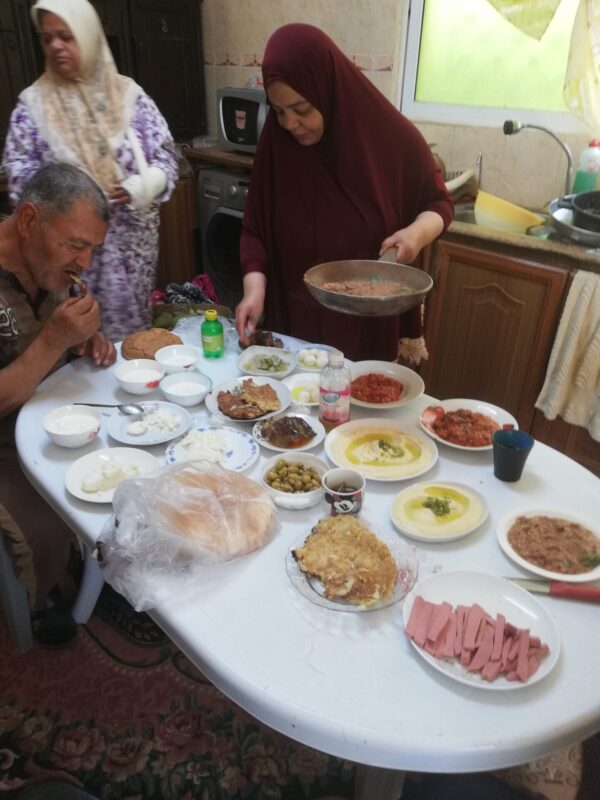
A typical Jordanian breakfast
Day 88 (27th May) Amman: Baptismal Site
A very useful day in which we got butane for the Camping Gaz cannisters at a price of £8 as opposed to the £84 we would have paid in Britain. The aim was to go to the Dead Sea and, after eating a big breakfast we waited for Uncle Salah and Auntie Arawa and their two girls. We drove to al-Maghtas to see the site of the baptism of Jesus, which I had learned about at school, and I was surprised to see how narrow and insignificant the River Jordan was in reality. The route of the river has changed over the past 2,000 years and is now some distance from the site of the baptism, which was identified by the discovery of the ruins of five churches.
There is a place either side of the current course of the River Jordan where pilgrims can immerse themselves in the water for some reason or other: Jennifer had a paddle but I didn’t bother because the river looked pretty polluted. It forms the border between Jordan and Palestine (Israel) and the Israelis have constructed a concrete monstrosity on their side of the river.
We then visited Mount Nebo where Moses is said to have looked westwards to the promised land, but the site was closed. So we went to the other side and had a picnic with 6 adults and 5 children. We would have been able to see into Palestine but for a mist which was gradually enveloping everything.
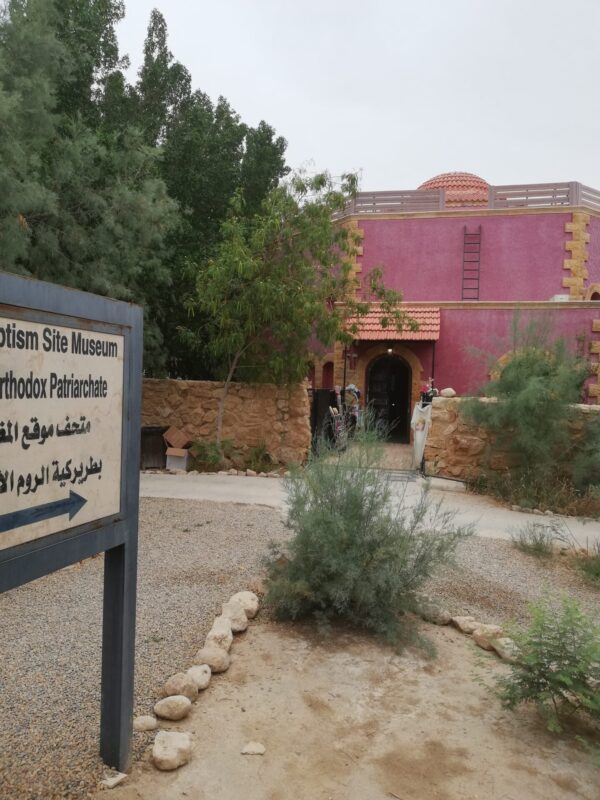

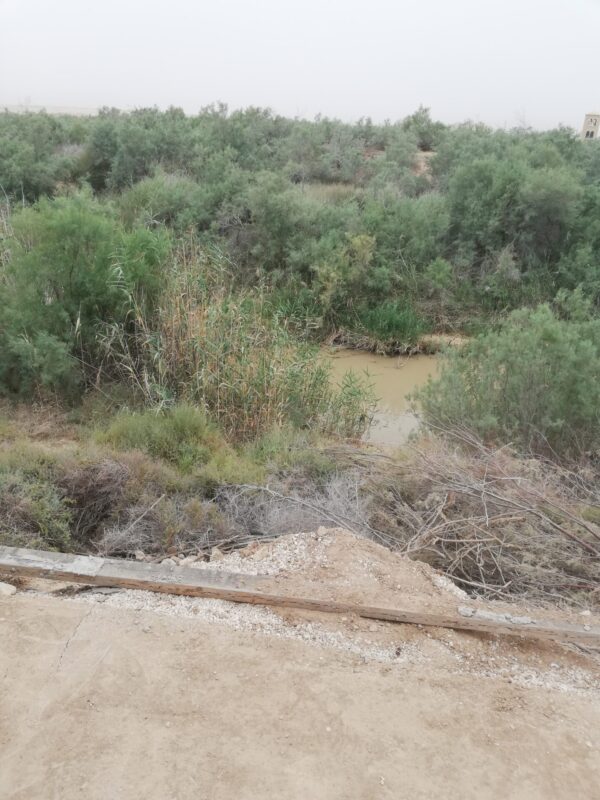


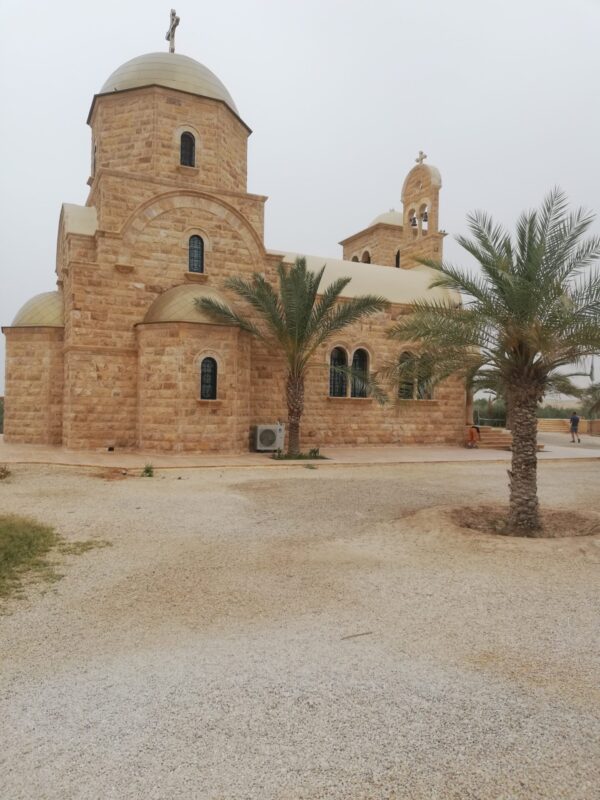
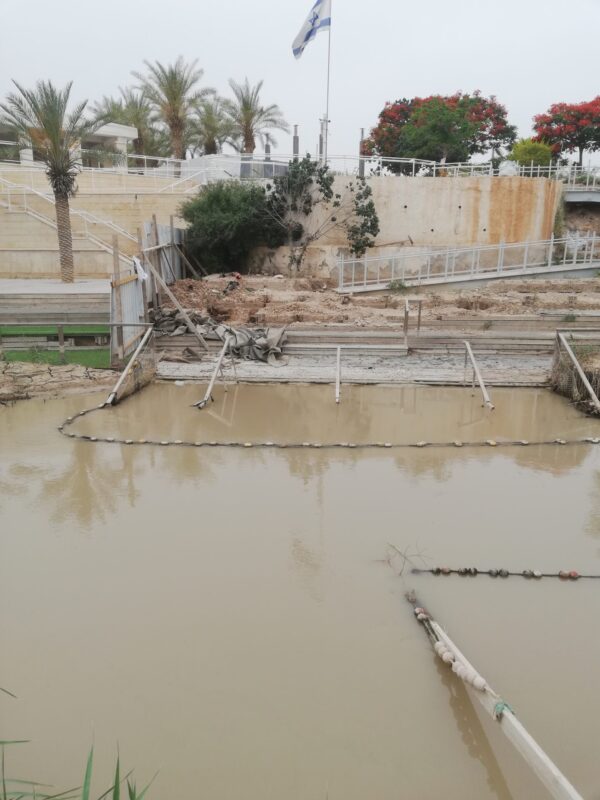
River Jordan. Palestinian side
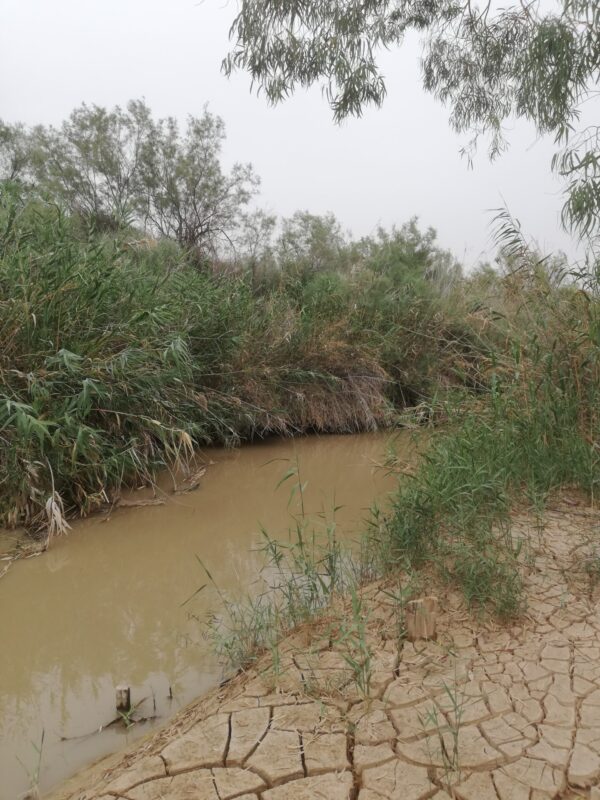
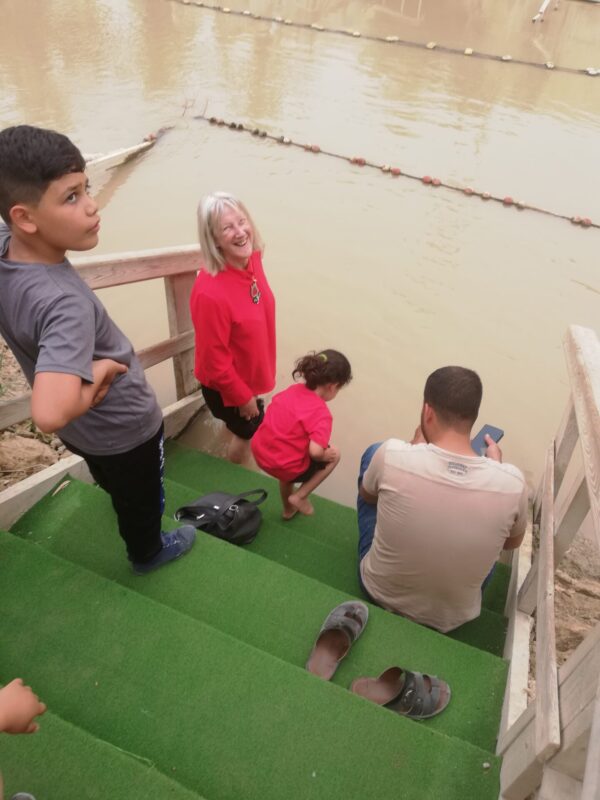
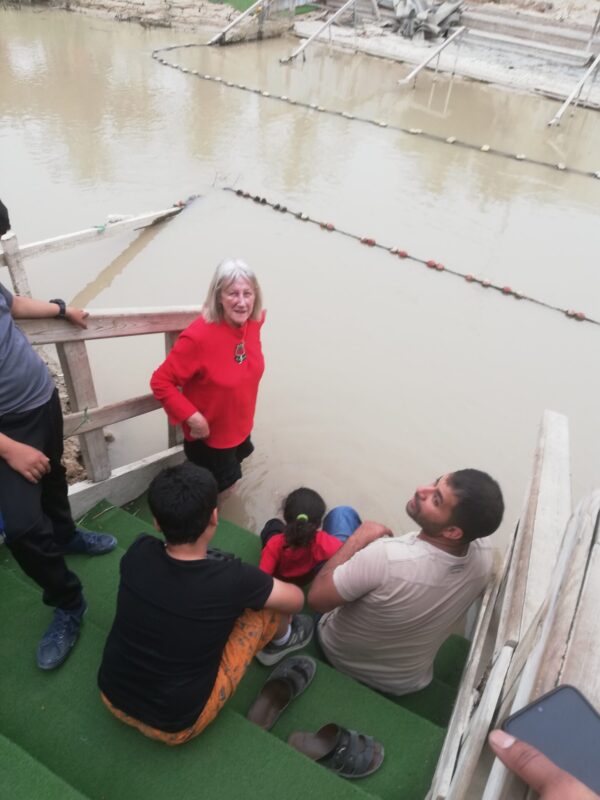
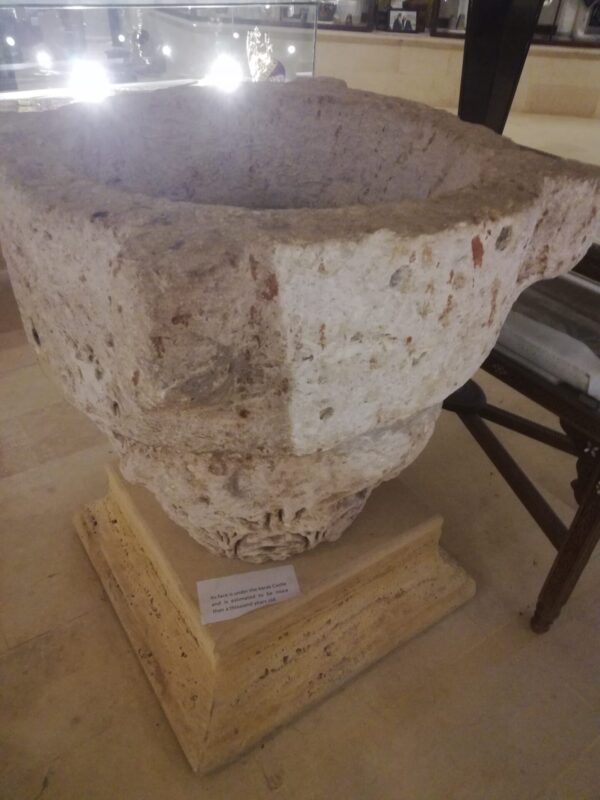
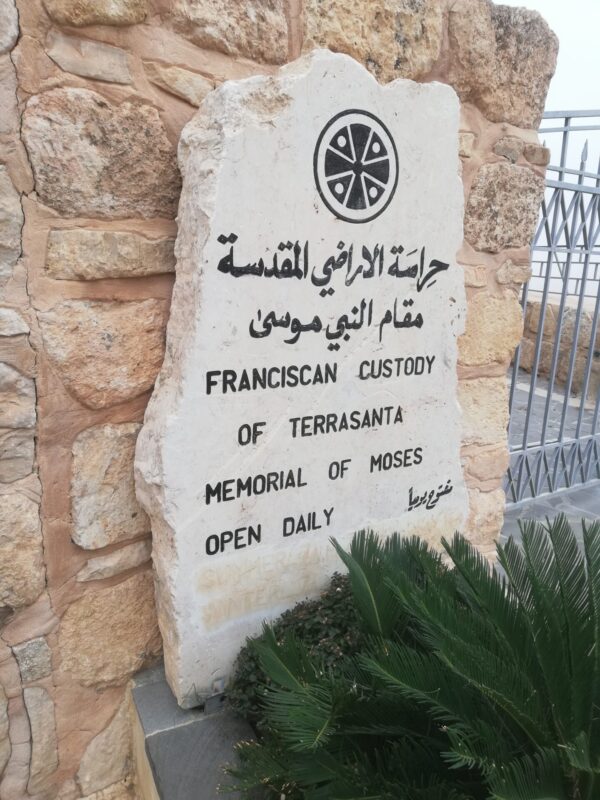
Mount Nebo where Moses saw the Promised Land
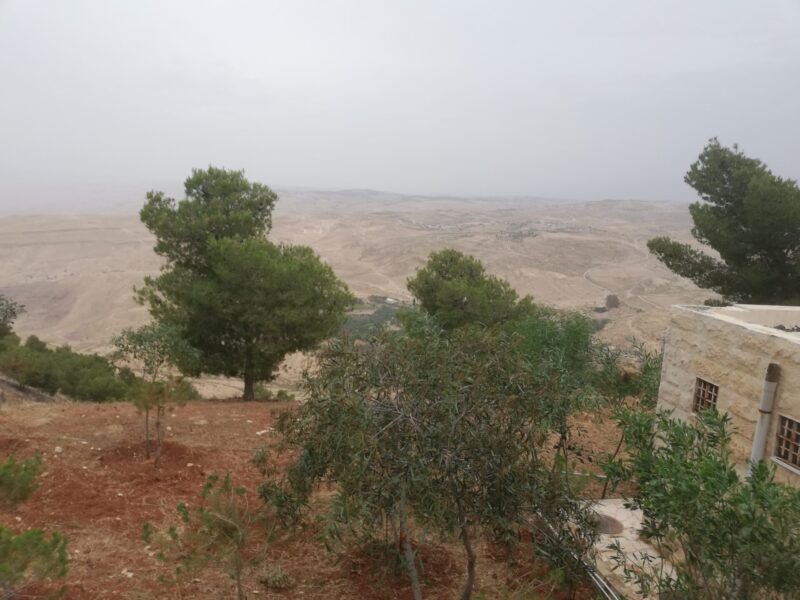
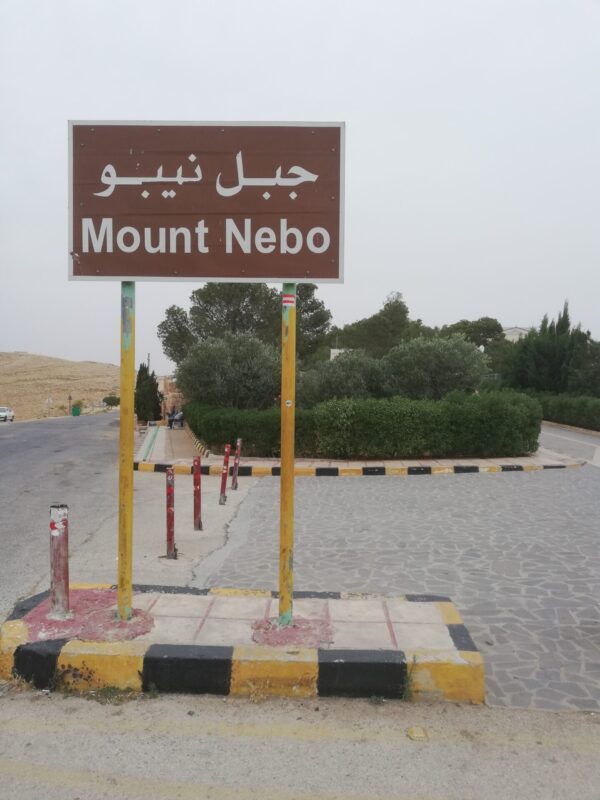

Day 89 (28th May) Amman to Iraqi border
We made a very sad farewell to Amer’s family (Mai, Abdullah, little Mira and Wa’el) before following our dear friend Amer to the place that fixes cracks in windscreens. A flying stone had made a chip 2 months ago and a hairline crack had appeared which a roadside garage in Iraq had stopped by putting a black tape over it. Then we filled the van with water at a roadside tap and the operator thought he was helping us by cleaning the van. Spraying cold water on a boiling hot windscreen had the inevitable effect and the crack lengthened by another 6 inches. Amer’s friend sealed the crack and we continued towards the 10-arch bridge built by the Ottomans in 1908 for the Hejaz Railway where we stopped at the date shop for Jennifer to buy more specially-blended coffee and dates, and Amer filled the basket with a wide assortment of sweets. The most striking feature of the shop was a display of thousands of tins of biscuits arranged in the form of a man sitting on a chair.
Amer then lead us to the road for al-Azraq where the Route 40 motorway leads to the Iraqi border. It was getting dark by the time we reached the border so we decided to bed down for the night at a parking place 7 miles from the Jordanian side of the border. By this time there were yellow/orange flashes in the sky and we went to sleep almost immediately, only to be woken in the early morning by a sky boiling with fire as an electric storm had accumulated from different directions directly over us. We knew that because a particularly bright flash was immediately followed by an ear-splitting clap of thunder. Then a huge wind arose from practically nowhere and the van was rocking on its wheels while the rain, which had been falling steadily for several hours because a torrential downpour. The lighting suddenly decreased in intensity, the rain reverted to a drizzle and we went back to sleep.
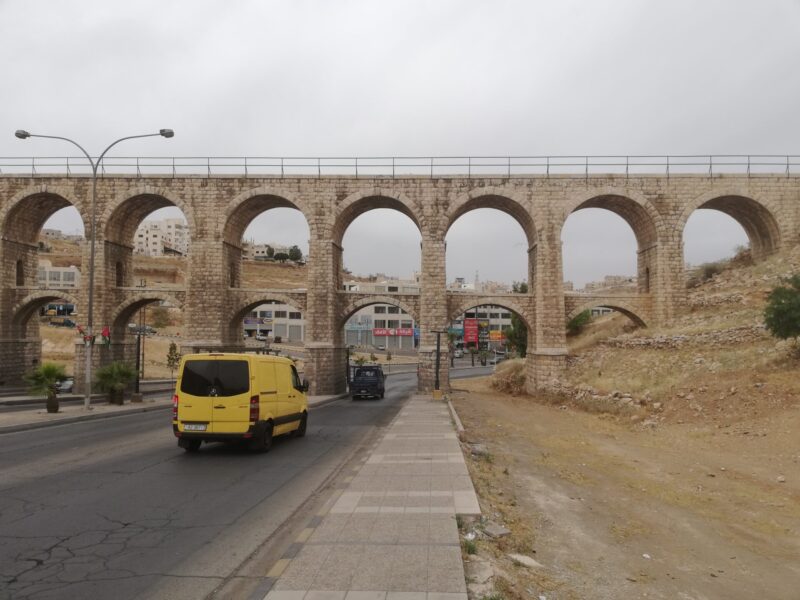

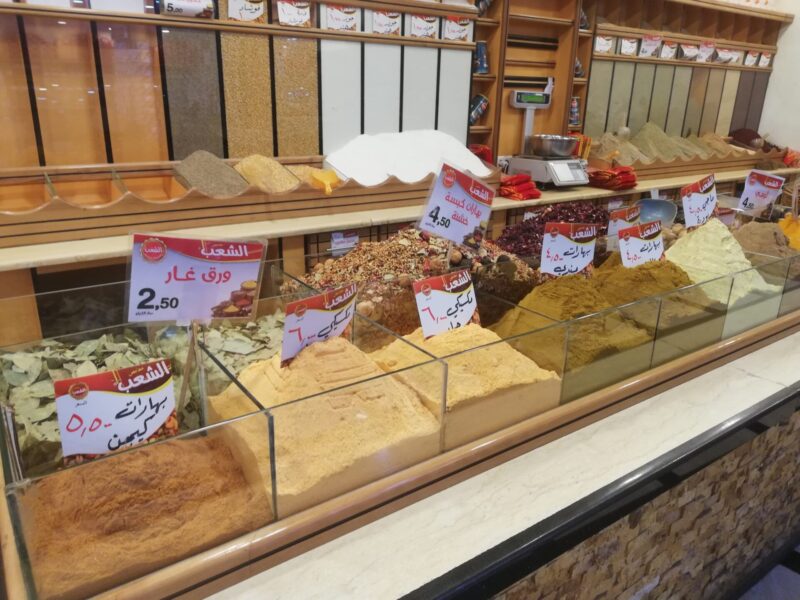

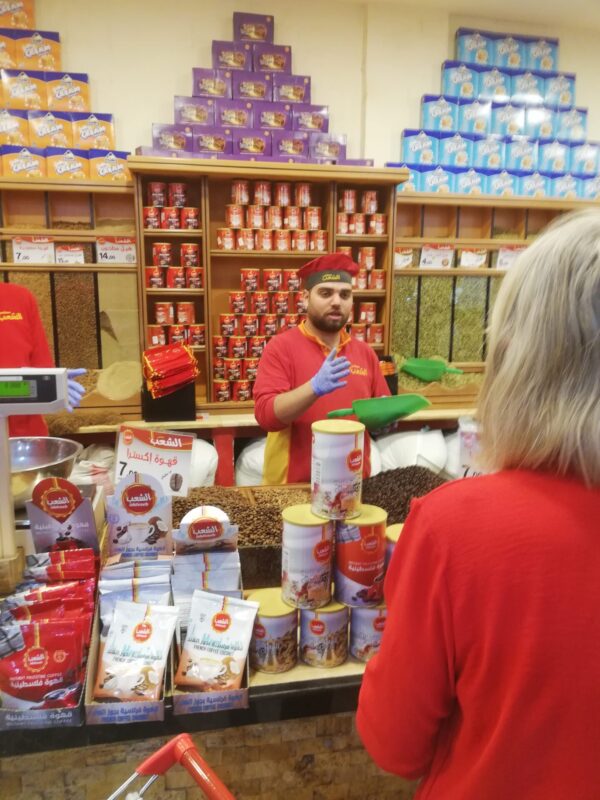
Day 90 (29th May) Iraqi border to Ramadi
As expected, getting across the border was a misery which took us 7 hours. The Jordan side wanted 25 dinars customs tax then 45 dinars departure tax and I used all our remaining dinars and changed the 50 euro and £10 notes in my wallet. I visited the little money exchange place three times, much to the amusement of the money exchange man. The final time I was short of money and he gave me 5 dinars (about £7.50) to pay the departure tax.
We finally got out of Jordan and had to pay $100 for taking the vehicle into Iraq, plus $15 because the exchange rate had changed, plus $30 insurance. A lot of forms had to be filled in, signed by various people and stamped by others. Someone who had helped me and I assumed was a border official, but turned out to be a fixer, then demanded a payment and I got angry and told him to sod off. We were ordered to wait for an escort and, after waiting half an hour, got fed up and drove off. We might have expected the army to be waiting for us and, after about 7 miles, our way was blocked by a police car and tank stretched across the road, we then had to follow a succession of police cars and army vehicles all the way to Ramadi (about 200 miles) where about 12 police and army men had an animated discussion about what to do with us. Eventually a soldier took us to a police barracks run by the IGFC, whoever they are, and we slept in the van after eating the bread a policeman brought us.
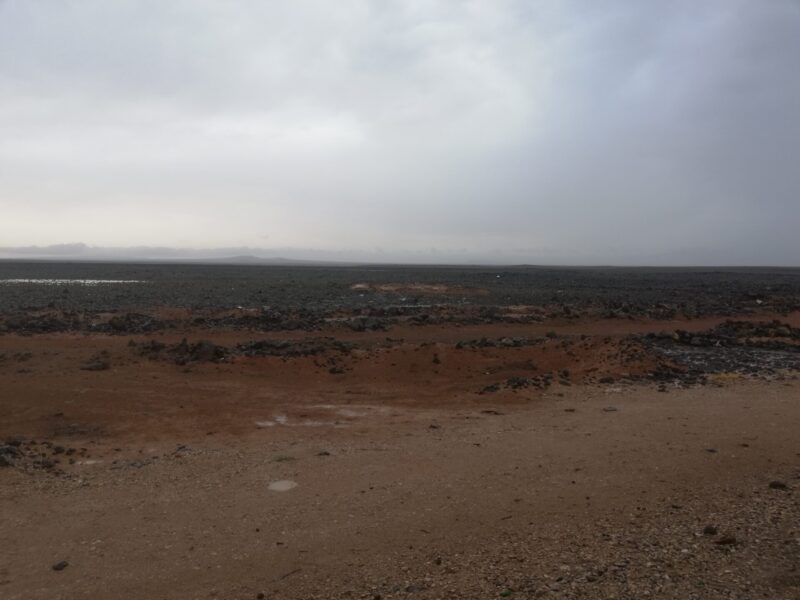
Rainstorm in the desert
Day 91 (30th May) Ramadi to Duhok
A very boring day. The police escorted us to a location north-west of Baghdad where a young man photoed all the pieces of bumph we had accumulated coming through the border with Jordan and told us we could go. I felt elated to be able to drive at 70 mph rather than 30 with a tank in front of me, but the reality is that we have travelled through some potentially dangerous places. After ISIS were defeated in SE Syria, it is thought that many of them crossed the border into SW Iraq and are hiding out in caves in the desert waiting for another chance. Or perhaps it was a propaganda stunt to show how caring the Iraqi Government is about the welfare of foreigners.
Anyway we continued until I saw the Jambor restaurant where we stopped on our way into Iraq. We had a delicious meal for $4 each and bedded down for the night in the lorry park where a very friendly Turkish driver taking a huge consignment of French potatoes to Iraq made us a coffee on the little stove in the side of his truck
Impressive building 75 miles south of Baiji
Day 92 (31st May) Duhok to Amedi
We didn’t want to go and see Randi at Alqosh stinking like a pair of Liverpool tram driver’s gloves because we hadn’t had a shower for a week and had no clean clothes. So we wanted an above-average hotel to shower and do some clothes washing and Jennifer suggested the Rubar near the Shanidar caves. We had stayed there before and know that it has all mod cons plus a glorious view. The drive was rather long but the scenery of northern Kurdistan is stunning; peaks with vertical sides and mountainsides of olive green studded with dark green trees. When we got to the hotel we had a shock. The rude and totally unprofessional manager glared at us and told us that the room we had paid $80 for on the previous occasion now costs $130. I asked if there was a cheaper room or whether he could bring the price down and he glared at us again and said NO. So we walked out and drove back to Amedi where we found the excellent Xawm Motel with a large comfortable bedroom, kitchen where we could make coffee and cook stuff, and a clean bathroom with an excellent shower. All for $20.

Day 93 (1st June) Amedi to Alqosh
The less spent talking about this day the better, because somebody (could have been me) found a short cut, and got hopelessly lost. Thank goodness for police checkpoints where we got sent in the right direction. Randy has a summer teaching job and didn’t get back until 9 pm so we went for a walk round Alqosh. Randi and his family were pleased to see us and we are very happy here for a day, girding up our loins before facing the horrors of the Ibrahim Khalil crossing into Turkey.
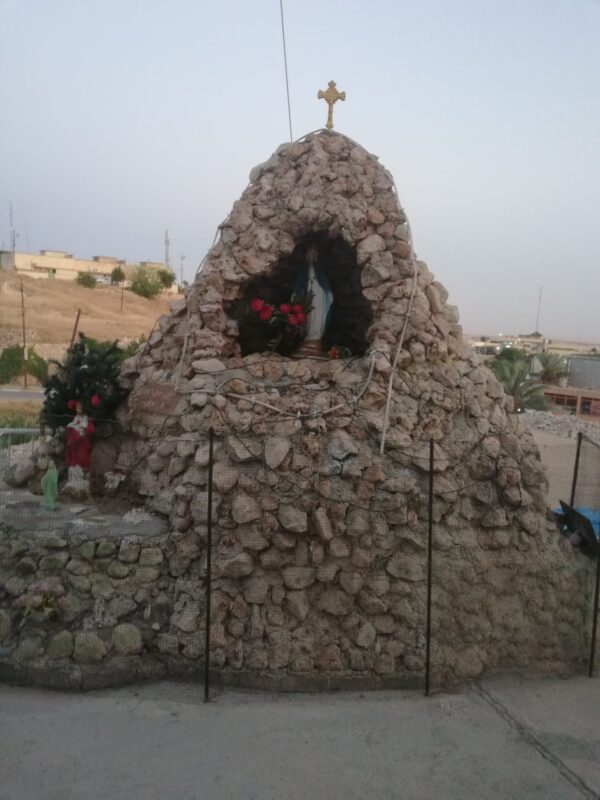
Day 94 (2nd June) Alqosh
Randi took us on a conducted tour of the Rabban Hormizd monastery which was much better than our previous visit when we went alone and didn’t really know what to look for. The holes in the walls of the building where the monks hid when the monastery was attacked during the Ottoman period (rather like priest holes in reformation England) were fascinating.
For lunch we had a beautiful fried fish freshly caught in the Duhok Reservoir. Randi’s mother is an exceptionally good cook and many of the vegetables and pickles are cooked from their own produce.
In the evening we went to see the open-air museum of old Alqosh up on the mountainside but it was closed.
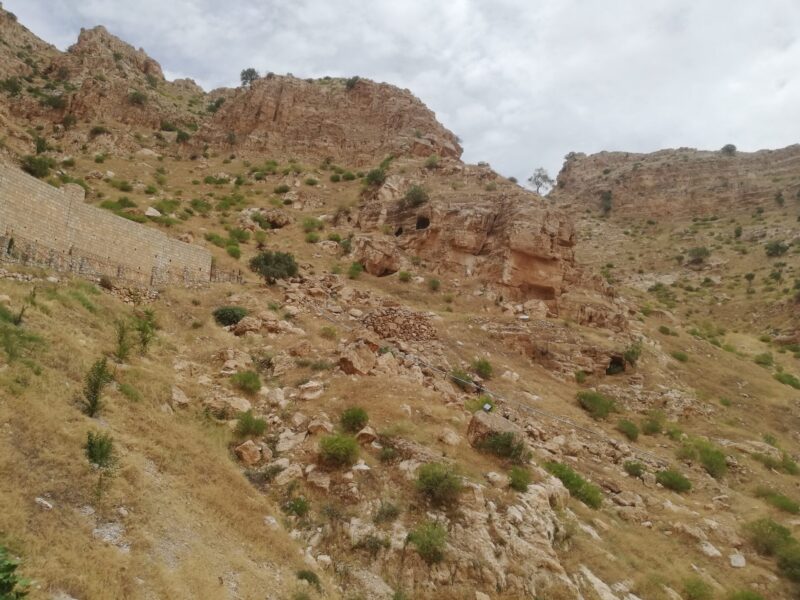
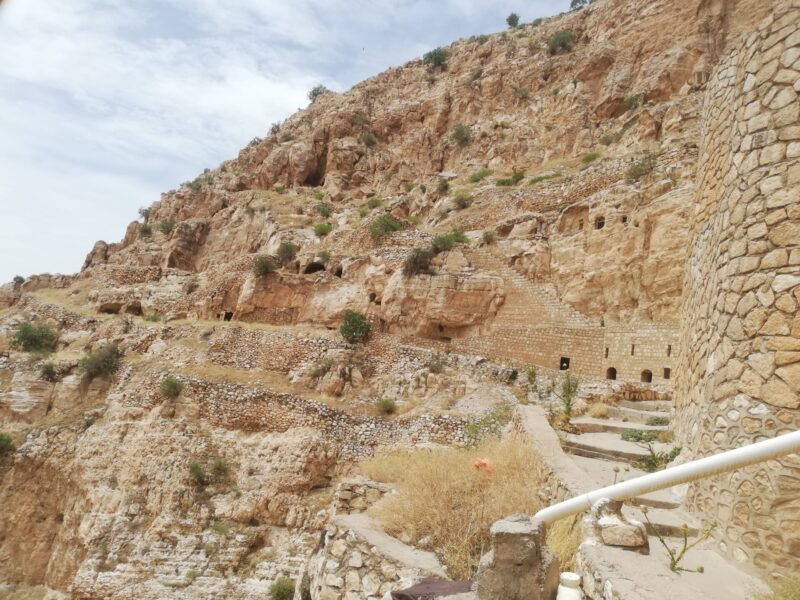
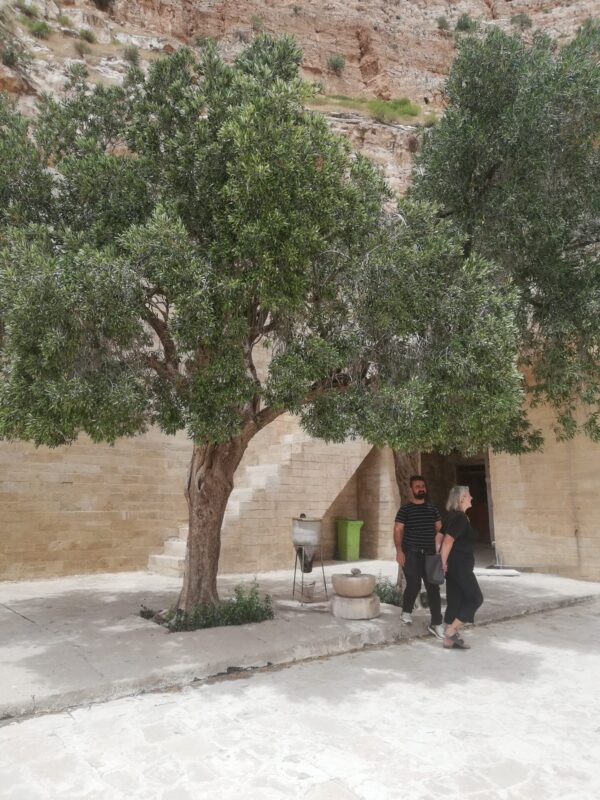
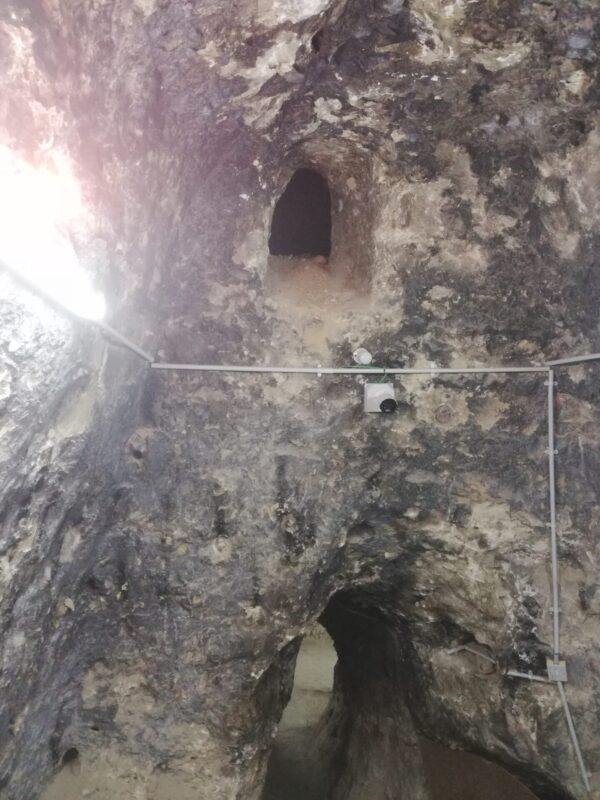
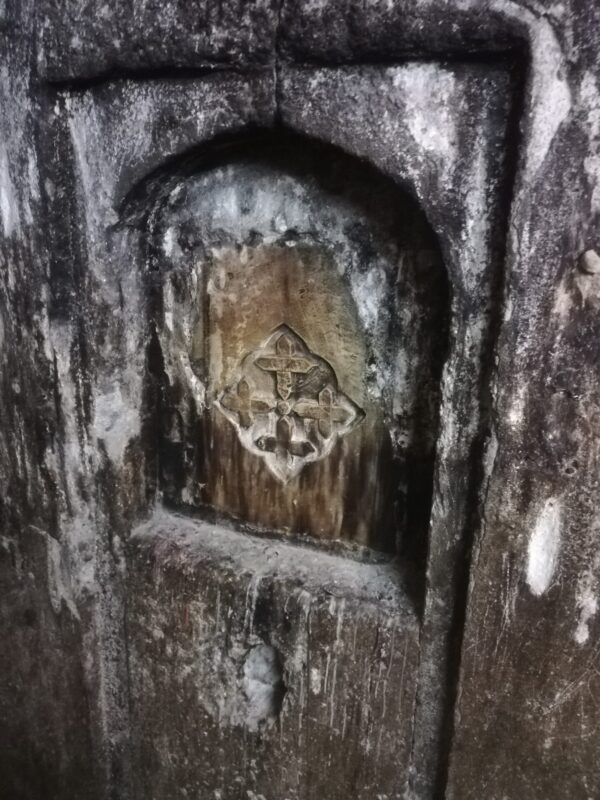
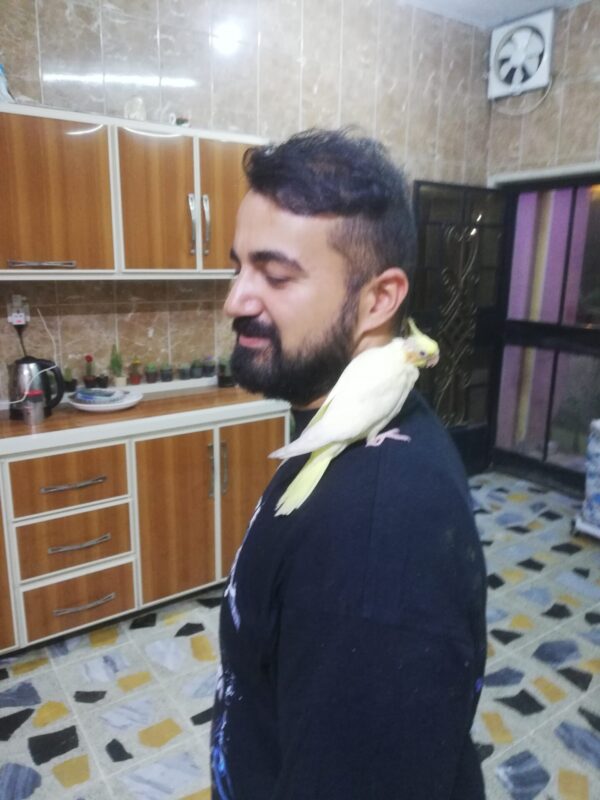
Day 95 (3rd June) Alqosh-Cizre
We went back to the museum in the morning and enjoyed the clever way in which the exhibits had been laid out to demonstrate the life of Alqosh folk in the past. Yet another delicious meal with Randi and his parents and we were on our way to the dreaded Ibrahim Khalil.
Things started badly when, possibly due to extensive new roadworks, we couldn’t find the road leading to the border with Turkey. We followed a road with heavy traffic until we came to a checkpoint and ascertained that we were on the way to Syria. We turned round, went too far, and had to go back until we got the right road. Then we waited, and waited, and waited in a long queue; a British bloke of Turkish heritage told us that the Turks only let vehicles through in batches of 5-6, and we can expect to wait for hours. Having got there at 3 pm is was dark by the time we went through the rather painless business of getting out of Iraq. We then joined a long queue on the bridge over the river which marks the boundary between the two countries, and waited and waited and waited. About 1.30 in the morning we got to near the front and I then realised why there was a long line of mini-buses. They contained people scurrying about with black plastic bags and when they started tapping on the windows of the van, I realised that they were Turkish cigarette smugglers wanting us to take them back into Turkey after they had bought more than their legal ration of cigarettes in Iraq. I had the presence of mind to lock the van doors before they started pulling at the door handles, trying to get into the van. They were extremely aggressive and the cars were caught like rates in a trap unable to get out. It was just amazing that in Turkey, where there are more policemen than people, there isn’t a policeman to be seen when you need him. Apart from Jennifer being frisked by a women who evidently enjoyed probing her fingers into private bits, we got through the Turkish passport control and customs with no problem, and the bloke who checked the green card failed to notice that it was out of date, thereby saving us $150 for insurance.
We slept in a truck park on the eastern edge of Cizre.

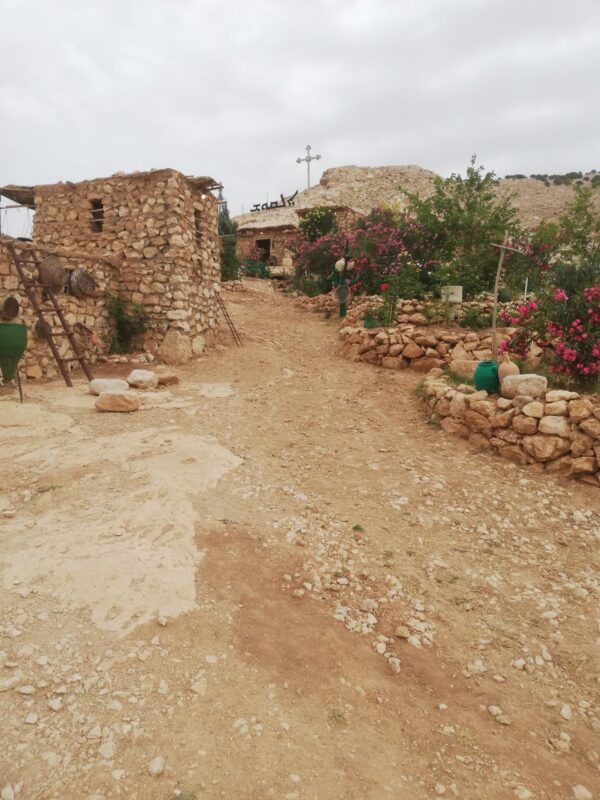
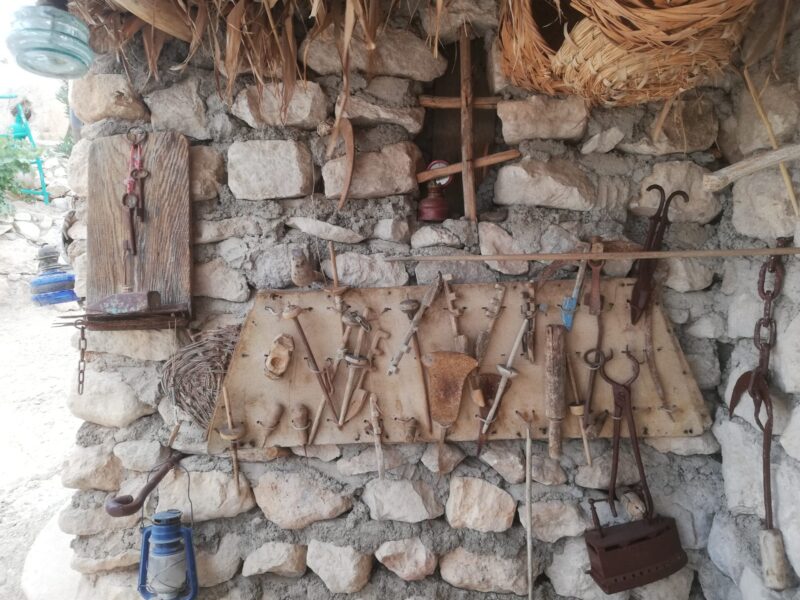

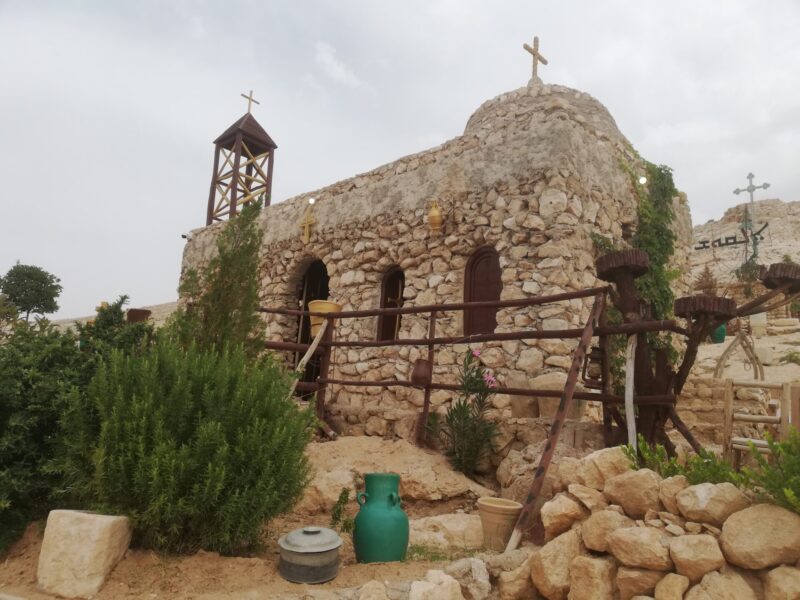
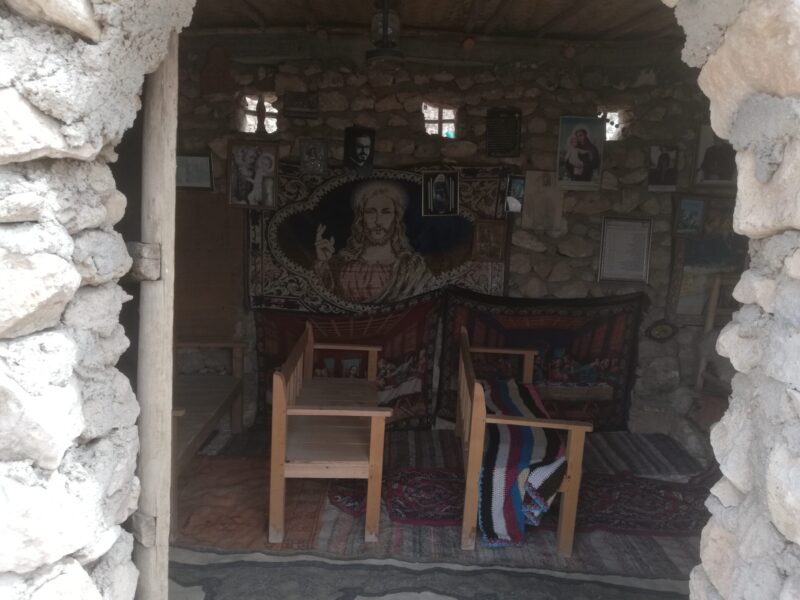
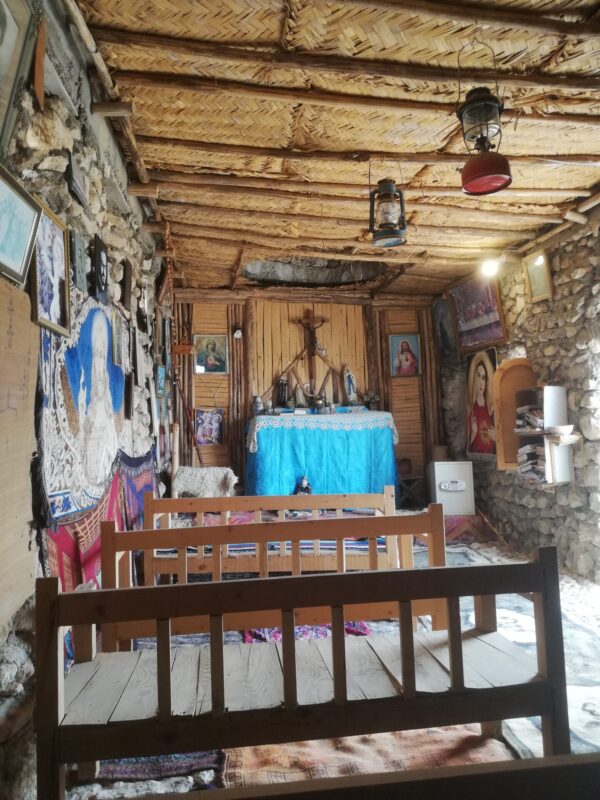

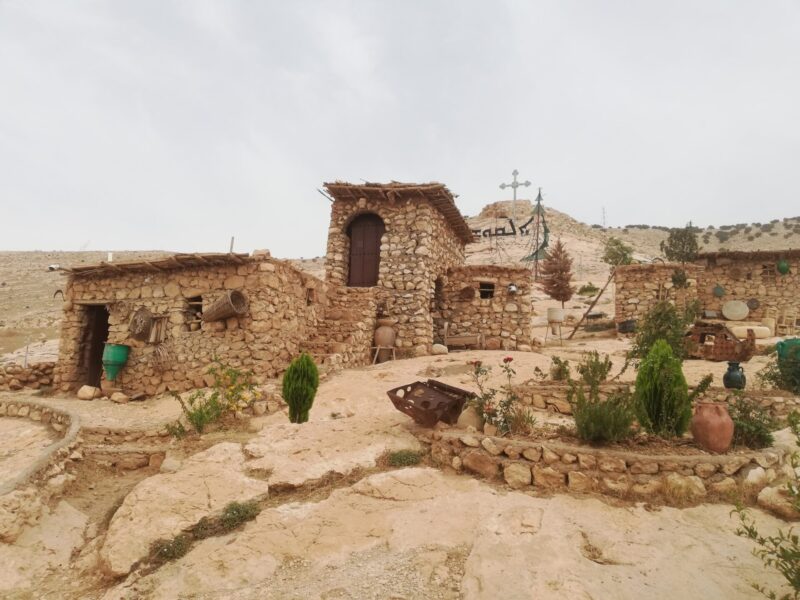
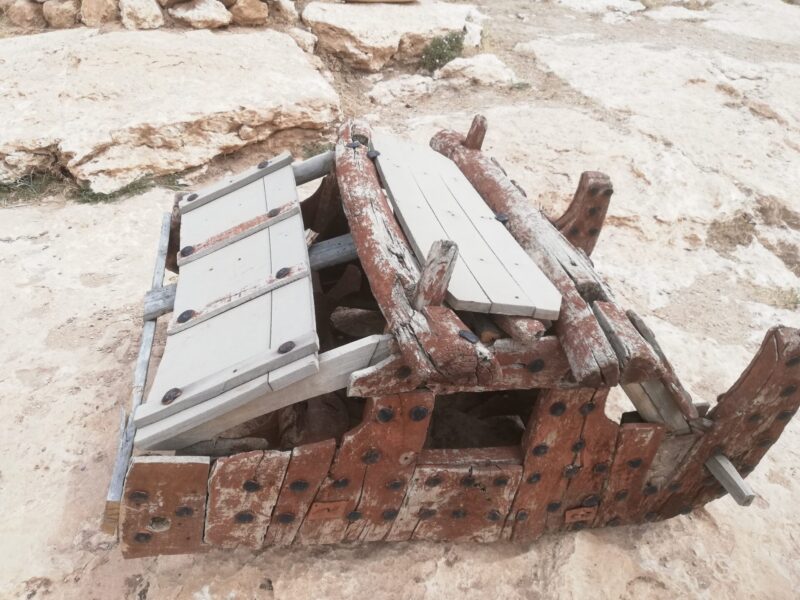
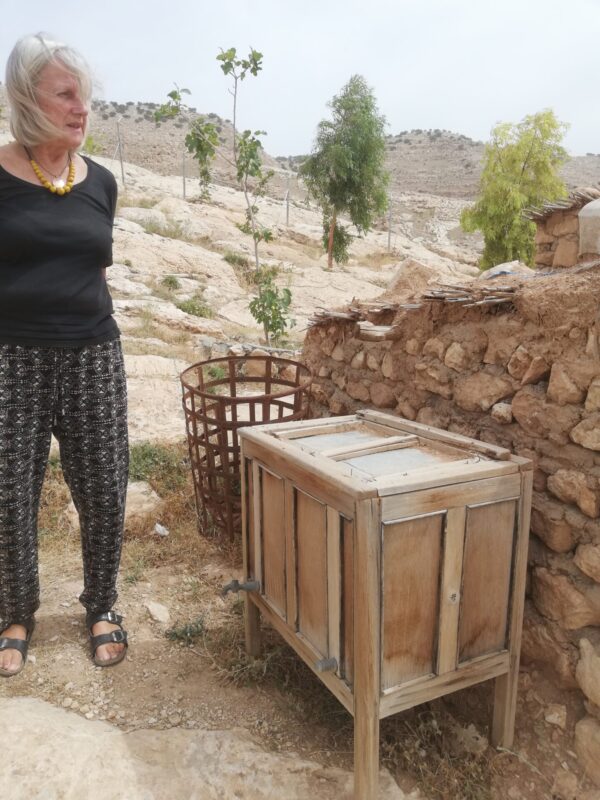

The queue where we waited for 4 hours before being accosted by smugglers
Day 96 (4th June) Cizre to Gaziantepe
After some hard driving in a westerly direction we reached Sanliurfa where we had failed to see two of its main attractions when we passed through in March. This time we went to see the site of Gobeklitepe which dates back to 9,600-9,500 BC and is the oldest known settlement in the world. It is often called the “zero point of history”. A shuttle bus takes you from the entry point to the site, which is covered by a massive, but architectorally impressive, steel structure. It was very hot when we went and extremely crowded; the site is being promoted by the Turkish Government as part of its narrative that Turkey is the cradle of civilisation.
We then drove back into Sanliurfa, following the signs to Bakliugol which is the local name for Abraham’s Pool. According to Jewish and Islamic legends, this pool is where Nimrod threw Abraham into the fire and God turned it to water. A statue has been found there dating back to 8,000 BC. The adjacent Makam-Ibrahim Mosque and cave are said to be the birthplace of Abraham. The pool is full of thousands of carp which are considered holy and cannot be caught and eaten.
We then drove to Gaziantepe and found the excellent Divan hotel where we ate a splendid meal.
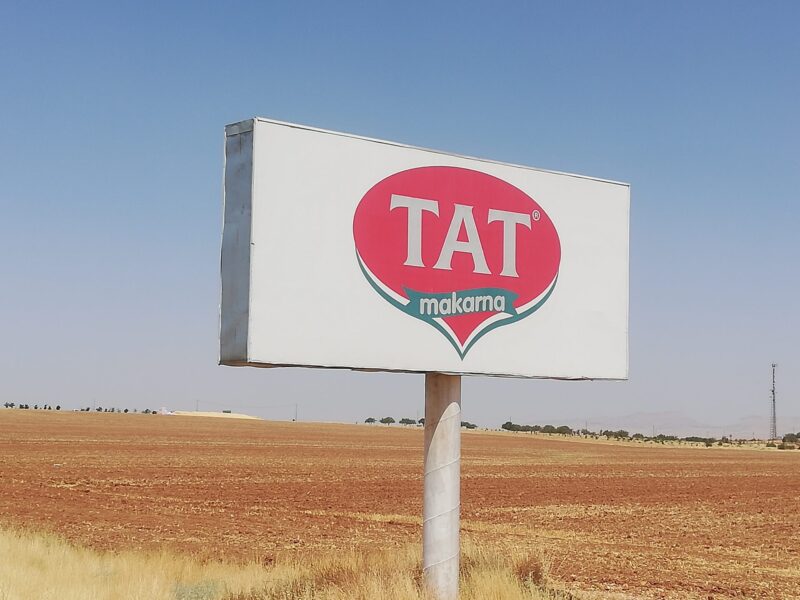
A shop for discerning tourists
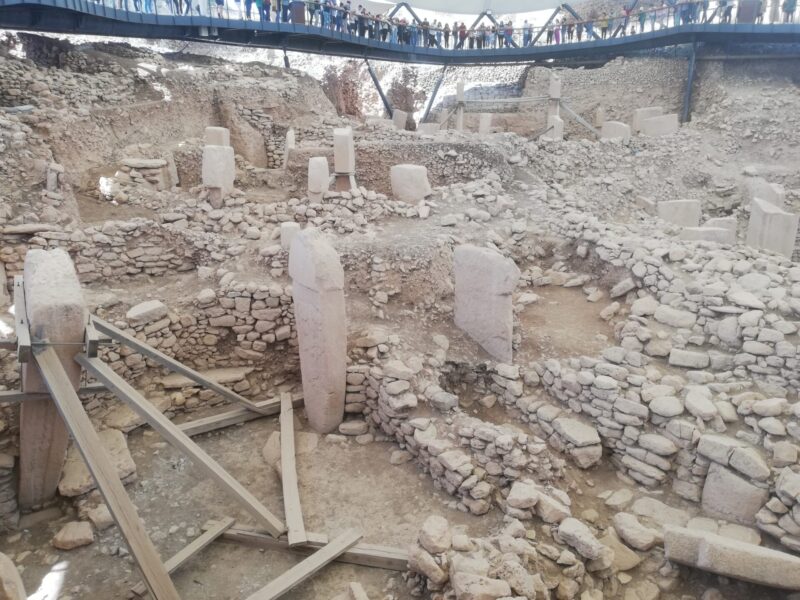
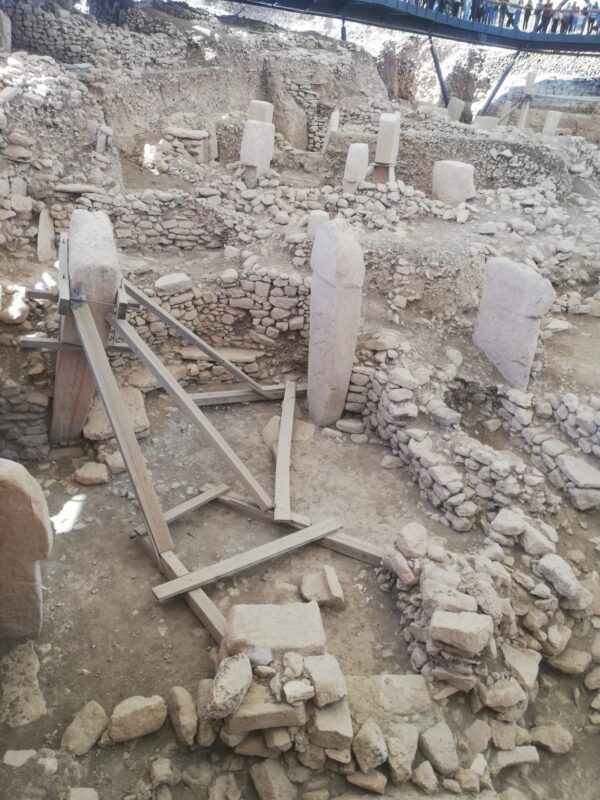
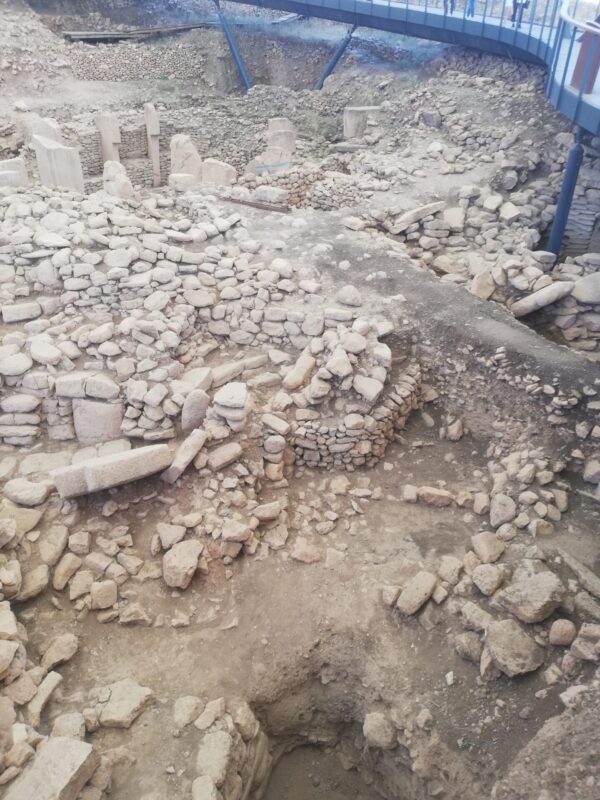
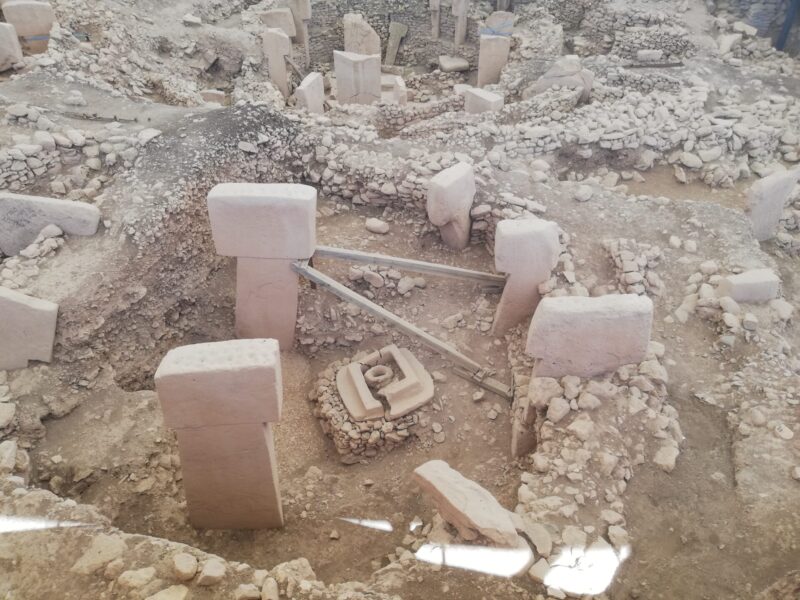
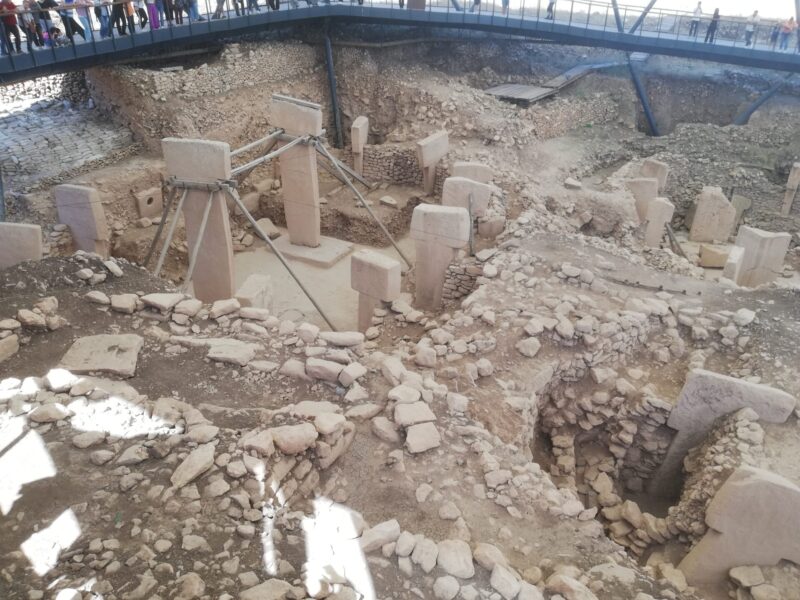
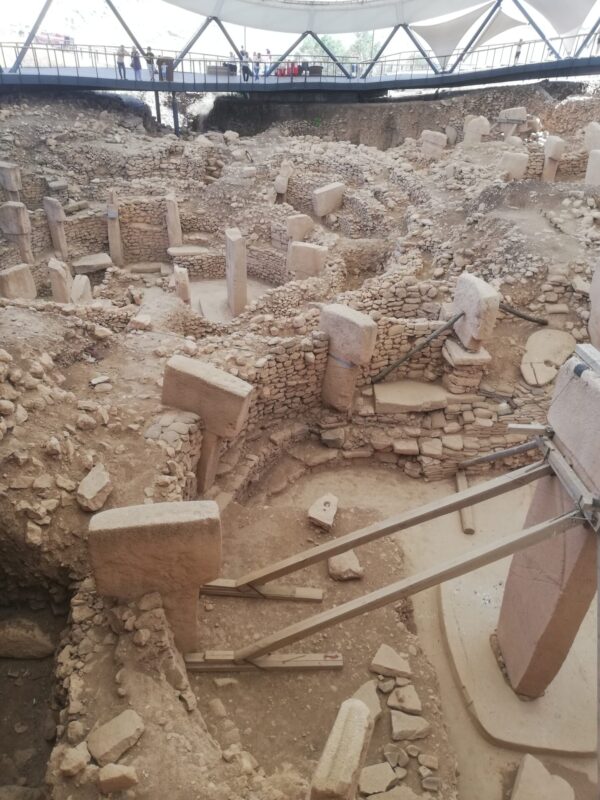
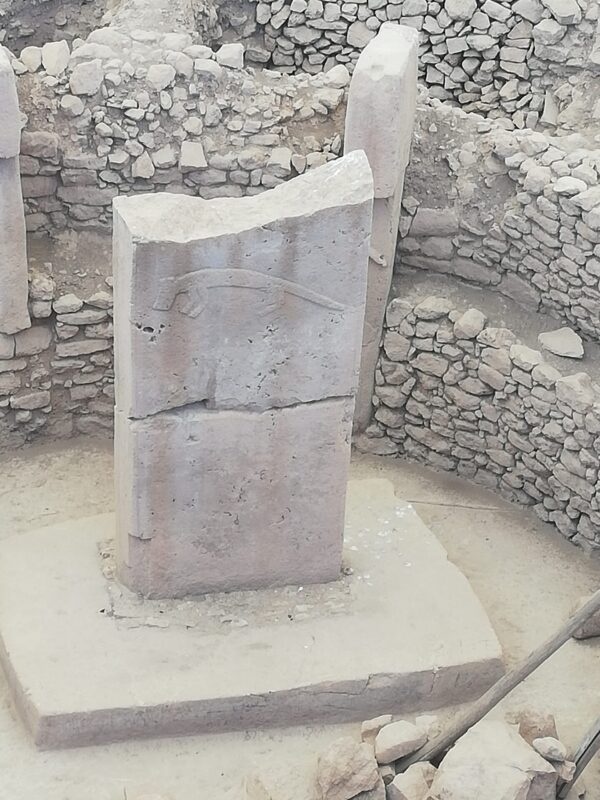
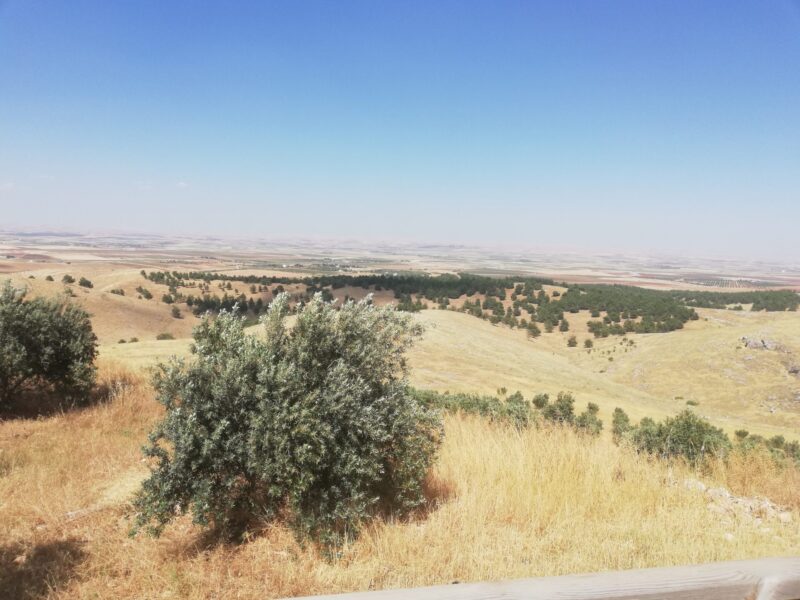
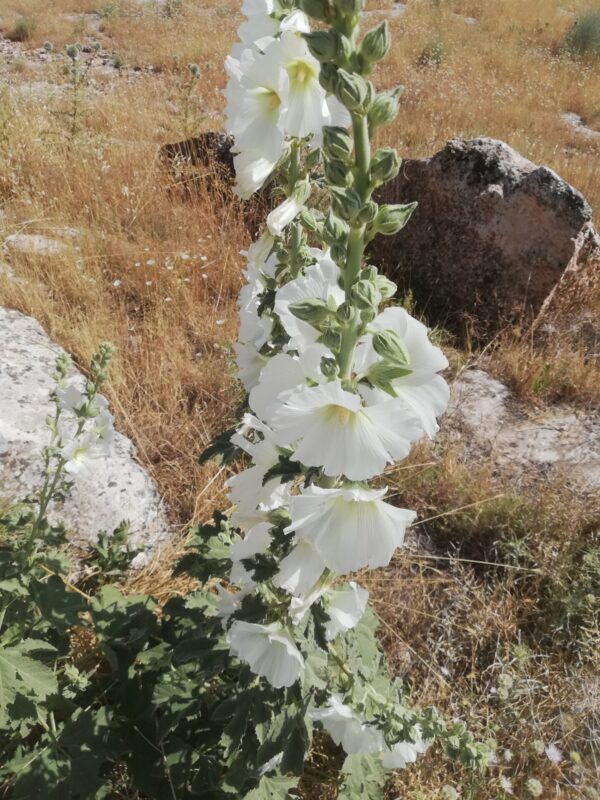
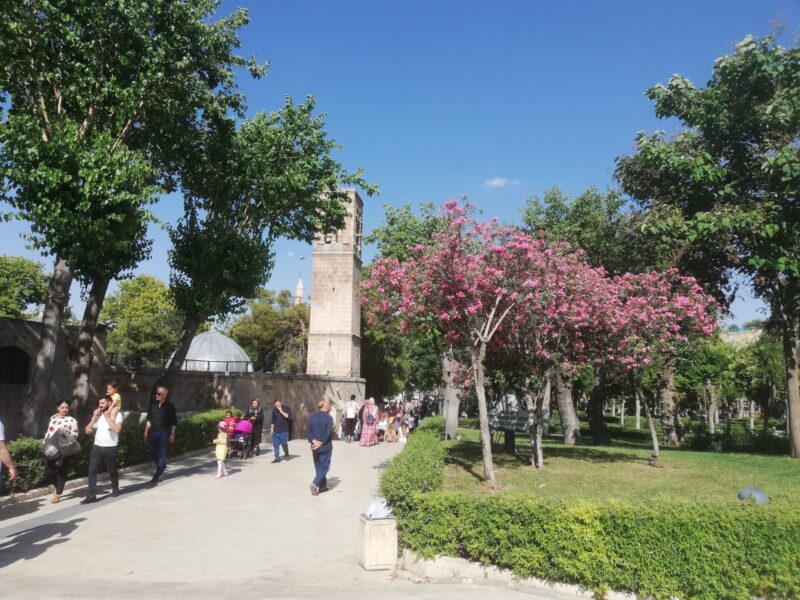
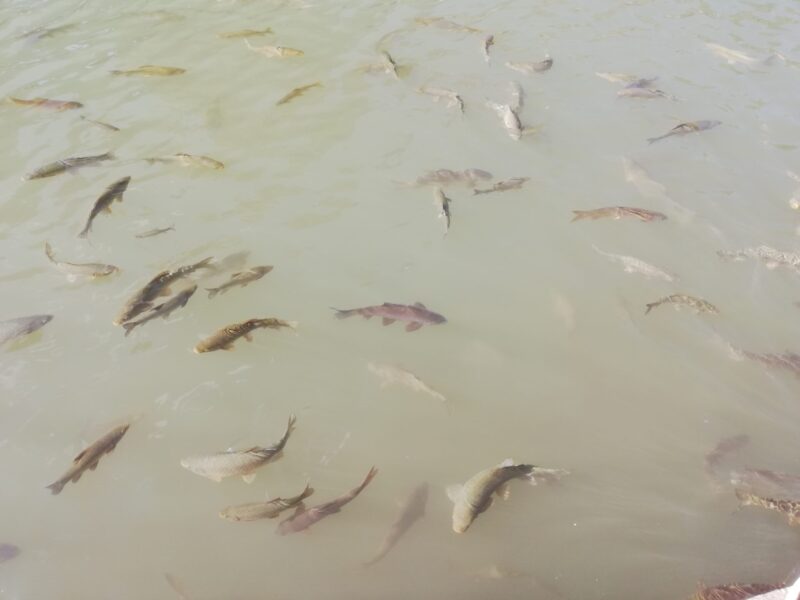
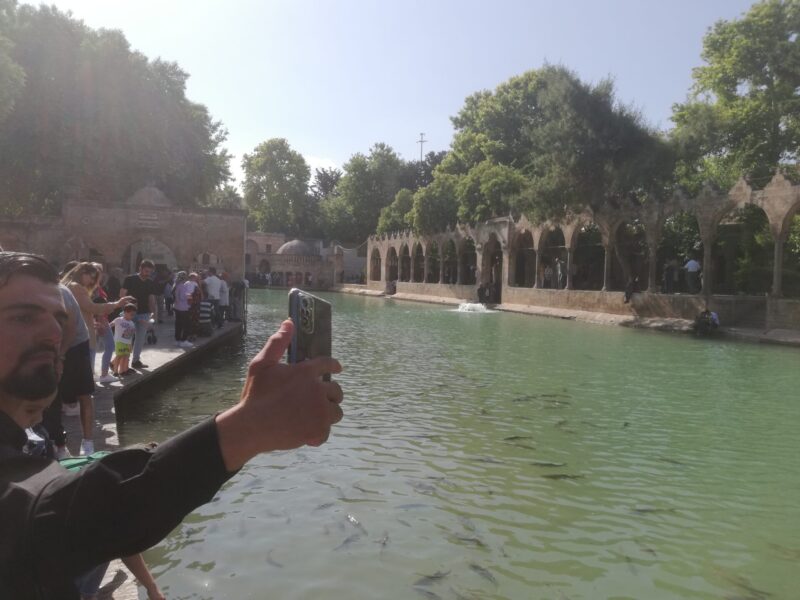
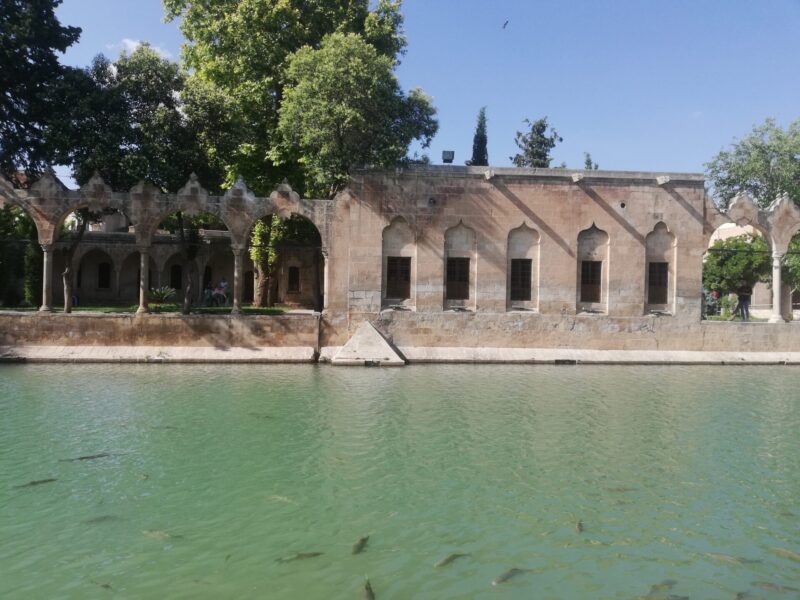
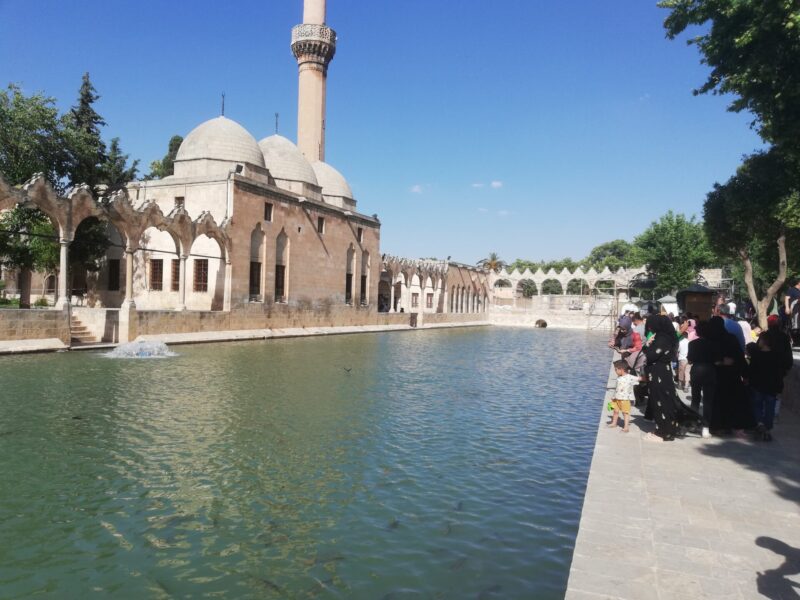
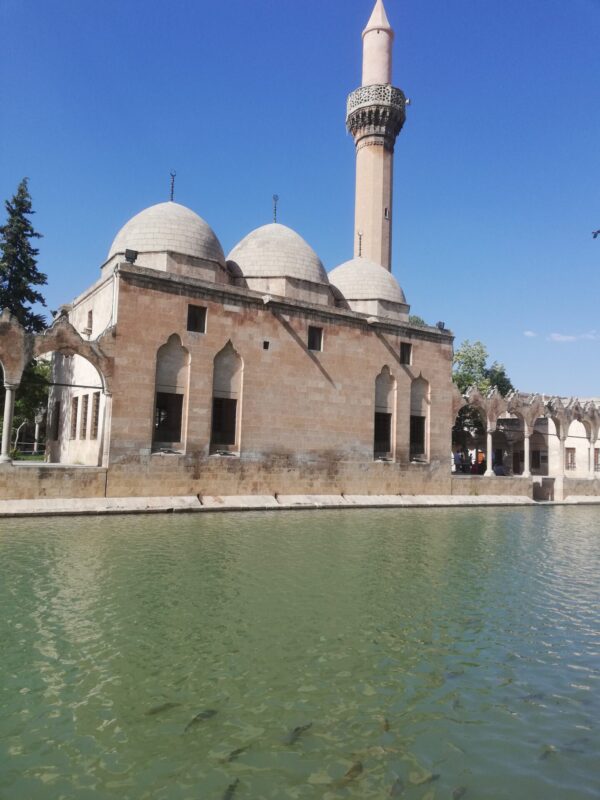
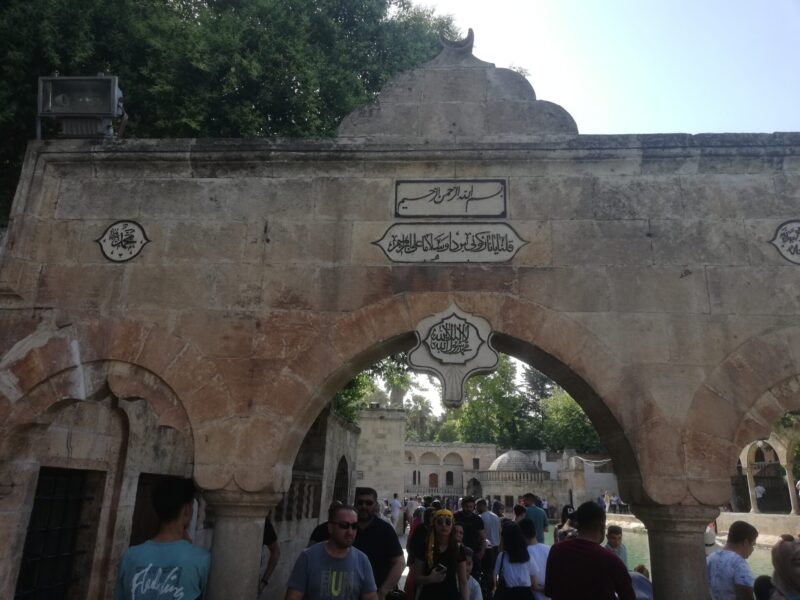
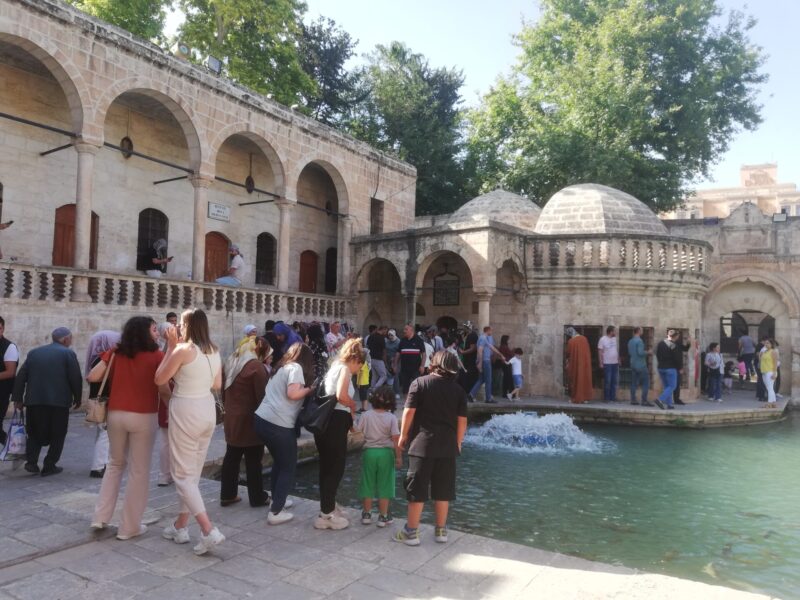
Day 97 (5th June) Gaziantepe to Eregli
Day 97 (5th June) Gaziantepe to Eregli
When we passed through Gaziantepe, the world’s largest mosaic museum was closed following the earthquake. So we went again and it was open, and what a mindblowing experience it was if you like mosaics. The museum is laid out like a house in Zeugma where the mosaics were discovered before the area was flooded by the construction of a dam. As well as the mosaics, there are stone pillars and low walls and, although there are footprints to show the sequence of mosaics, it is all rather confusing. It would probably have helped if we had paid for the audio thingy. A fantastic museum but, strangely, the shop is a bit naff with no books in English, or any other language (even Turkish) explaining the museum. They have tried to be a bit too clever; to get to the most famous exhibit, the Gypsy Girl, you have to wander round a pitch-black passage to get to the end where the small mosaic is illuminated. However this is an incredible museum with stunningly beautiful mosaics.
We then drove towards Alikoi to see out dear friend Mehmet and spent the night in a lorry park on the edge of the ugly industrial town of Eregli.
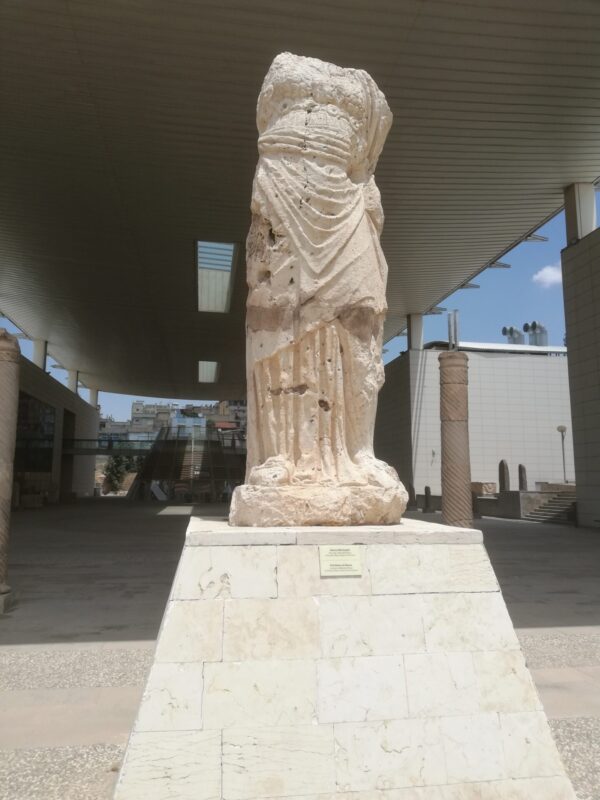
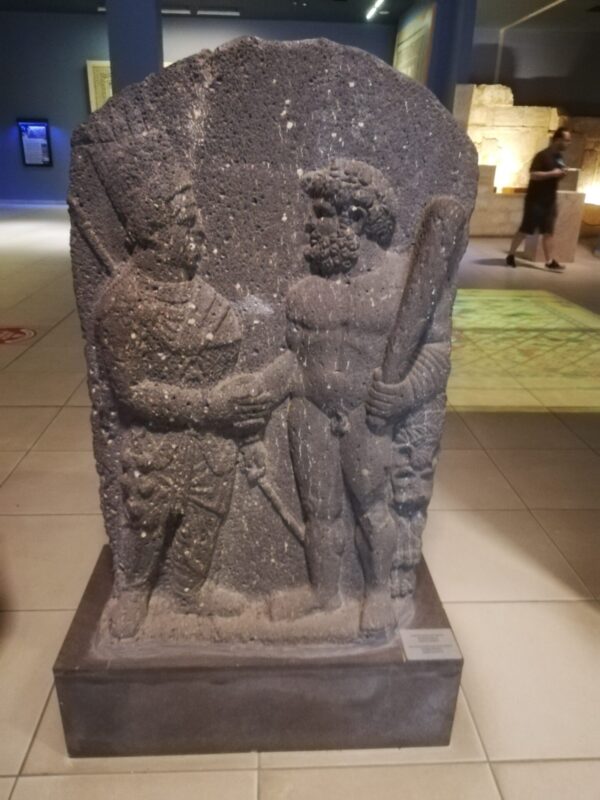
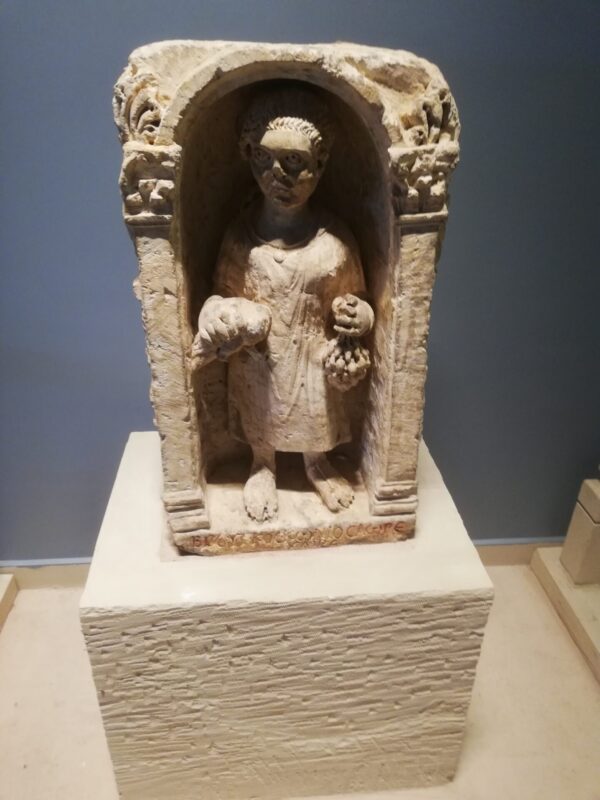
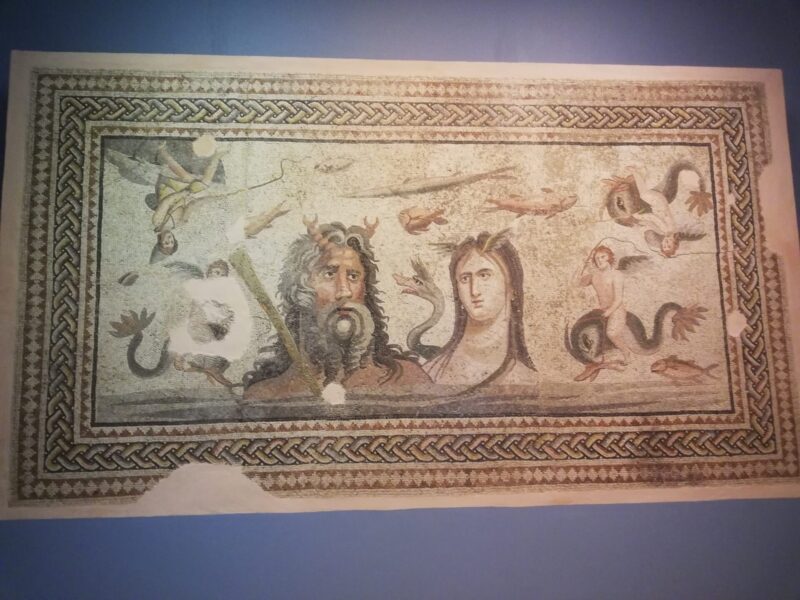
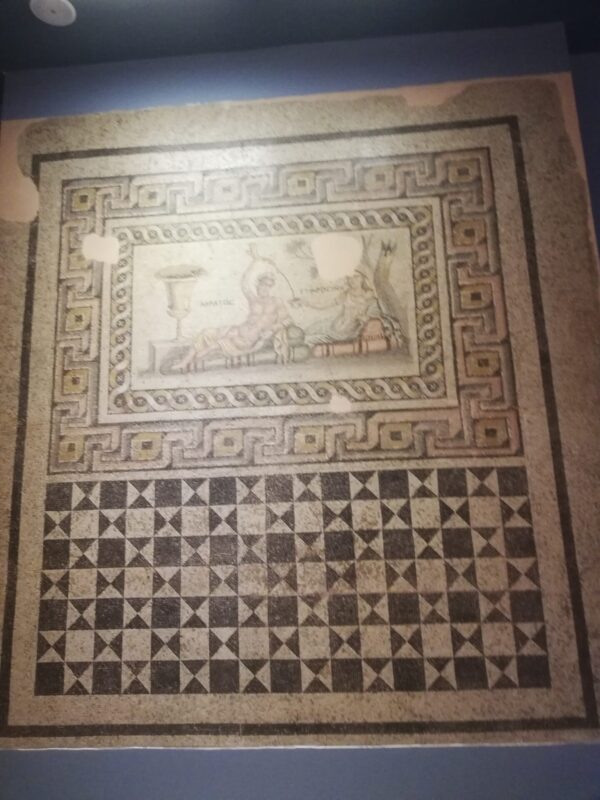
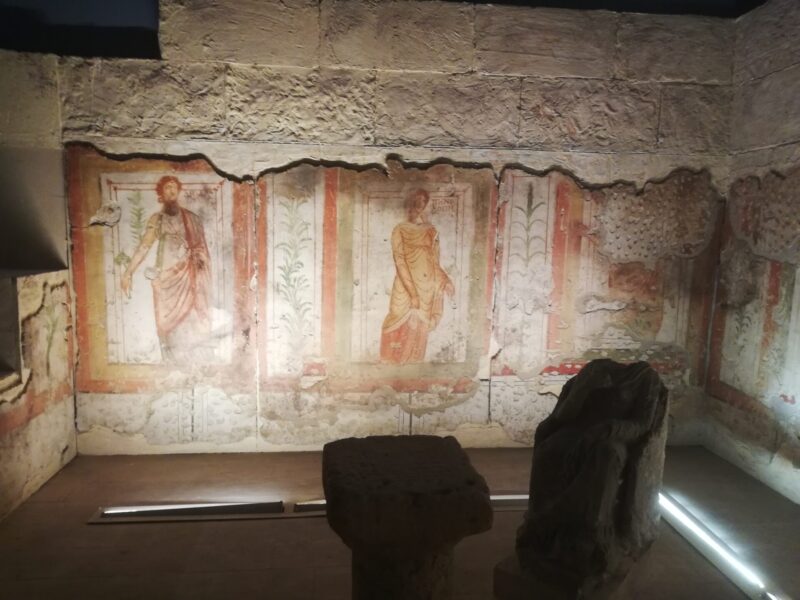
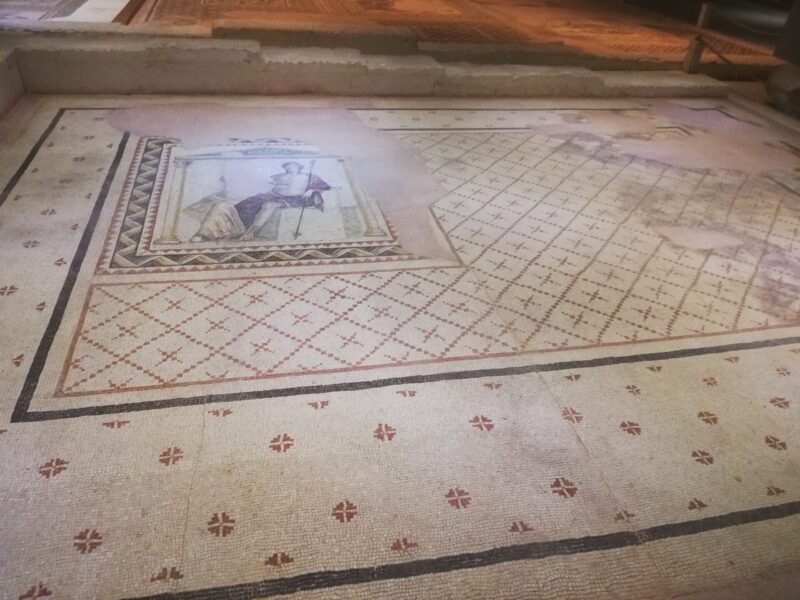
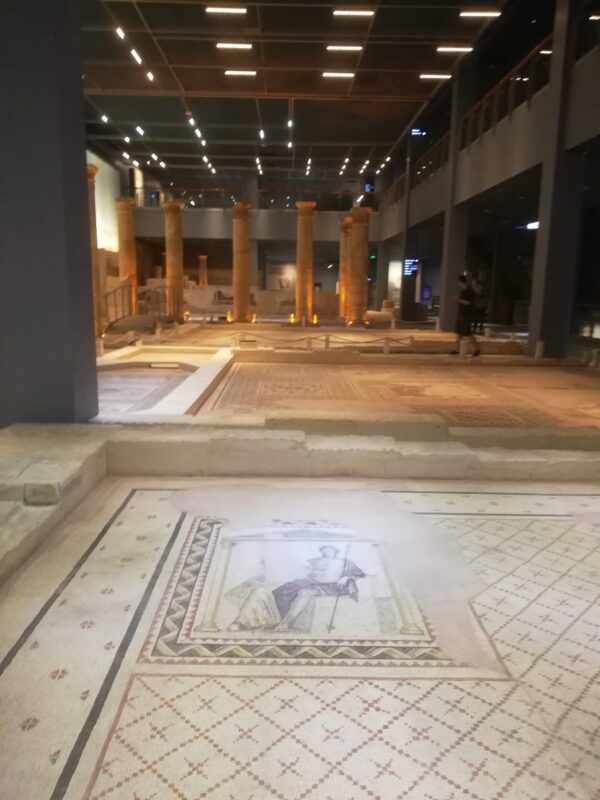

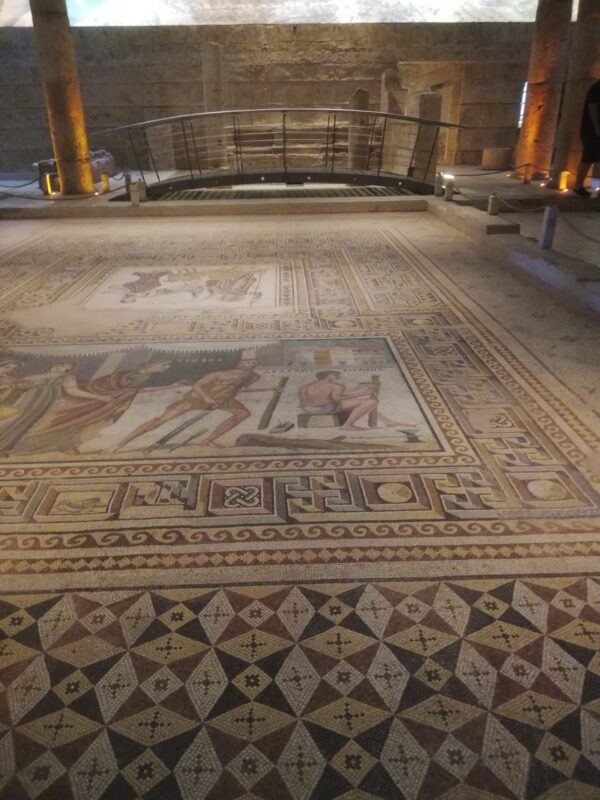
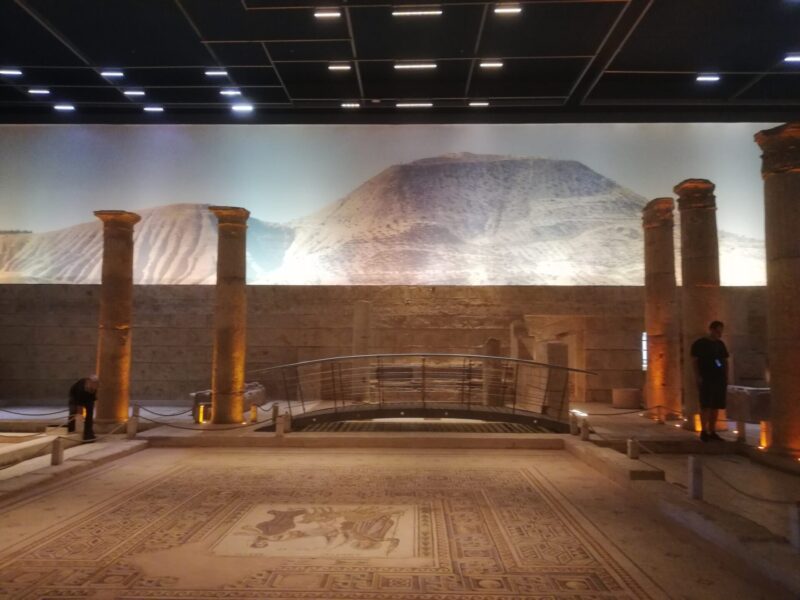
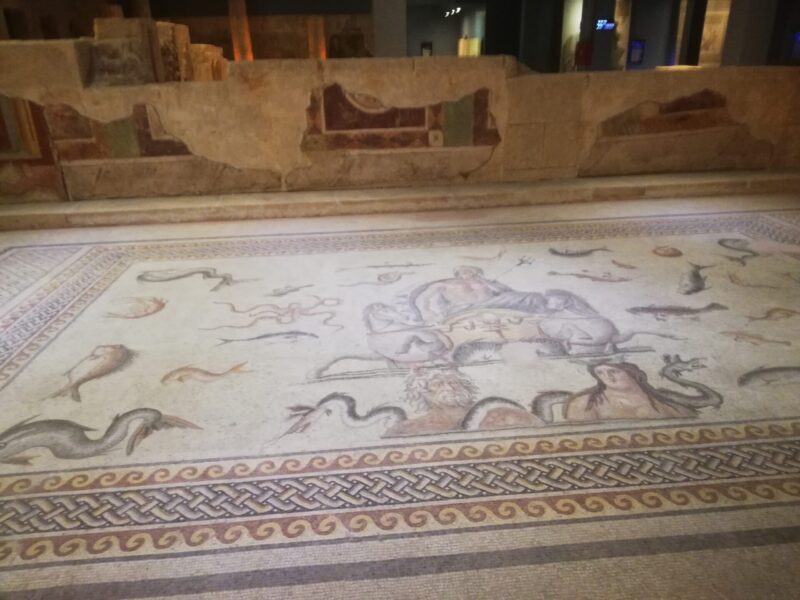
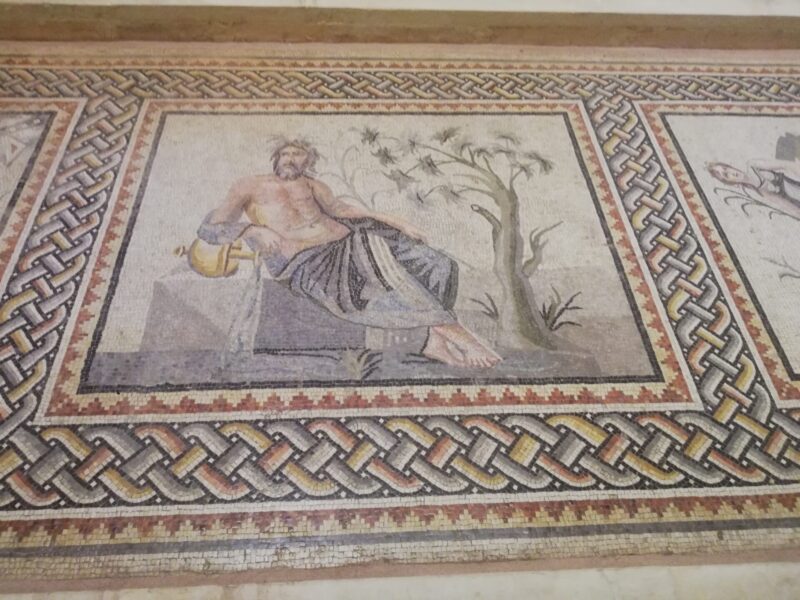
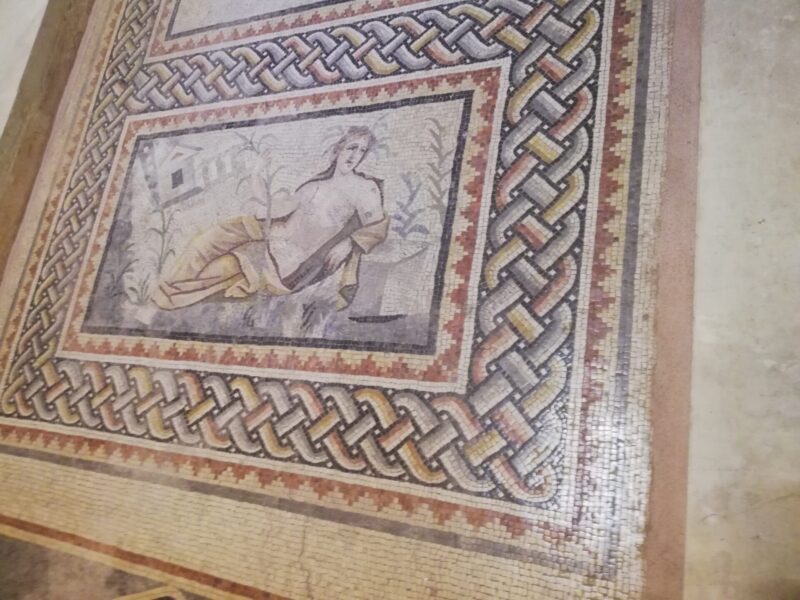

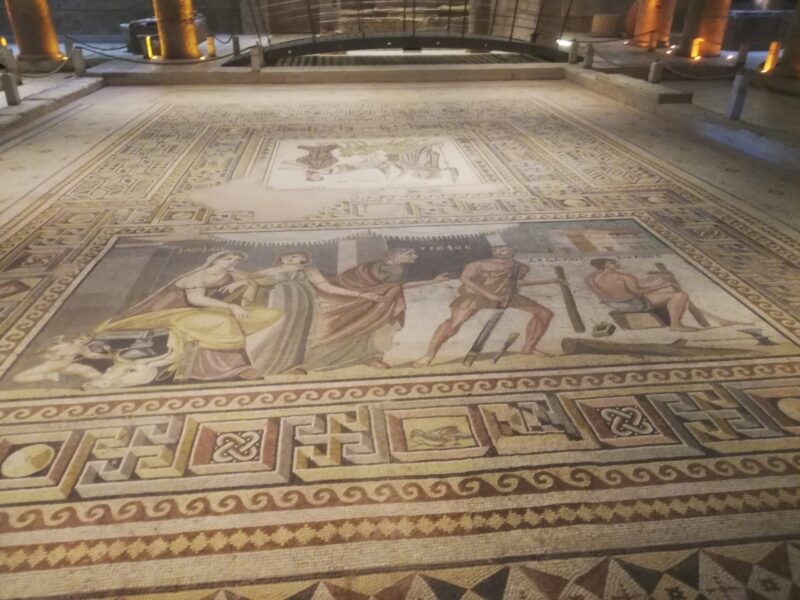
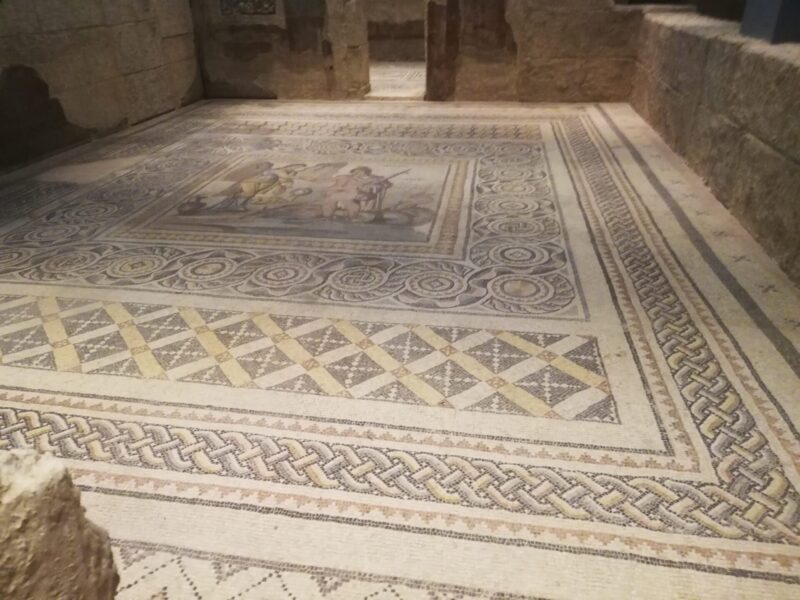
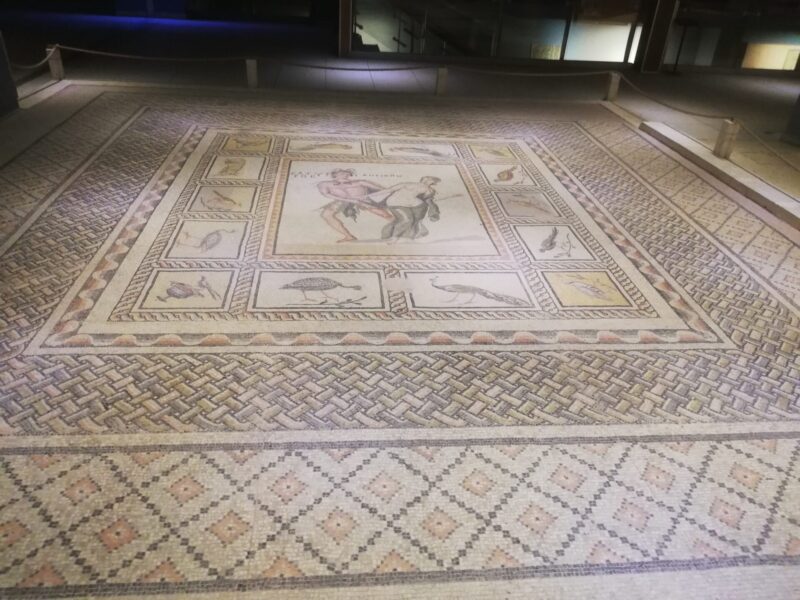

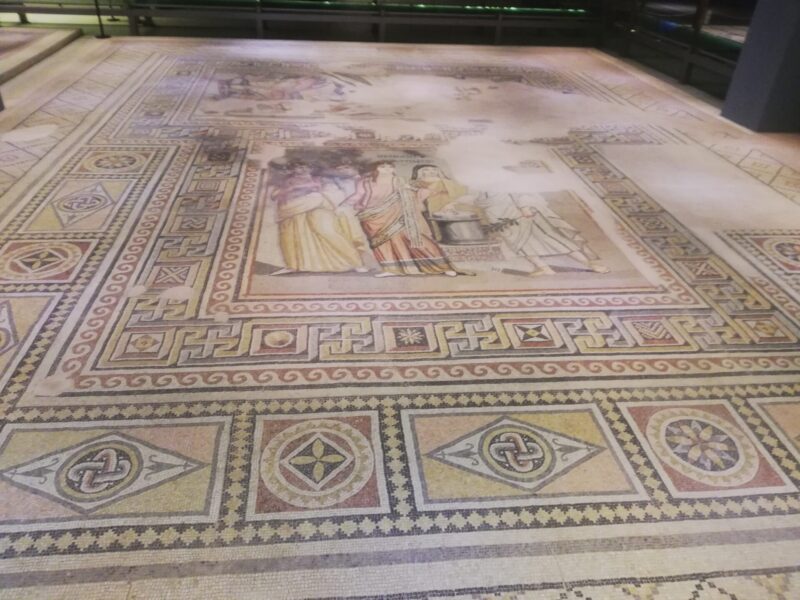
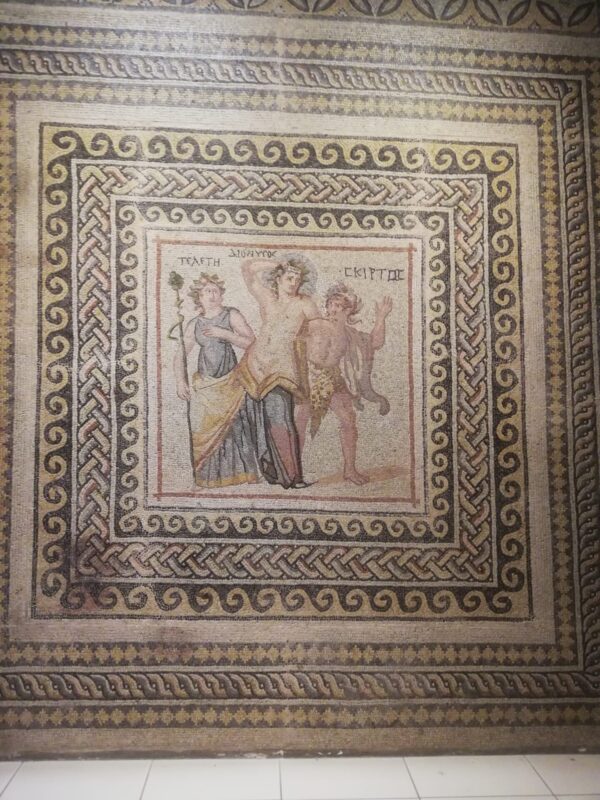
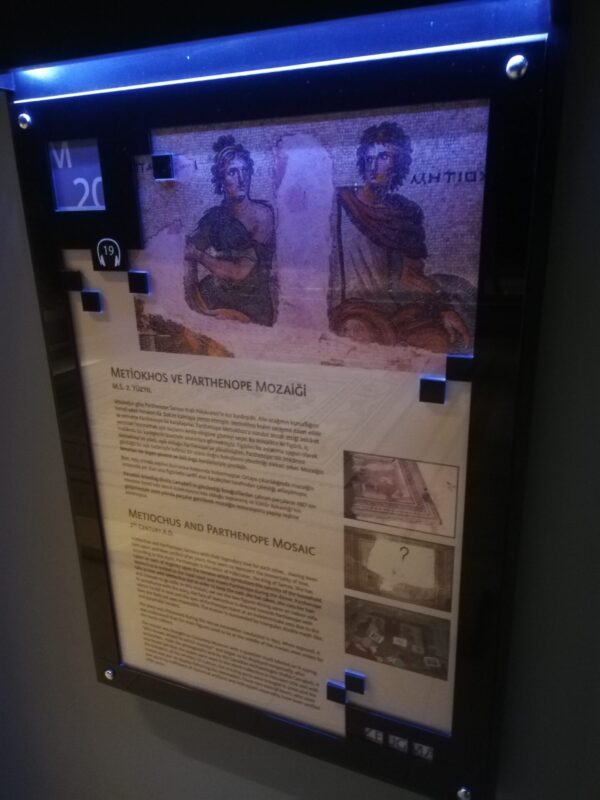
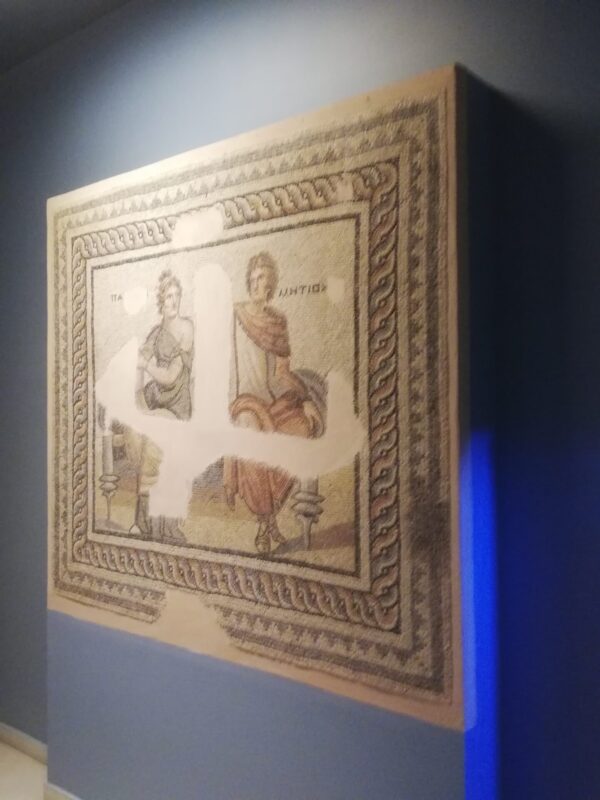
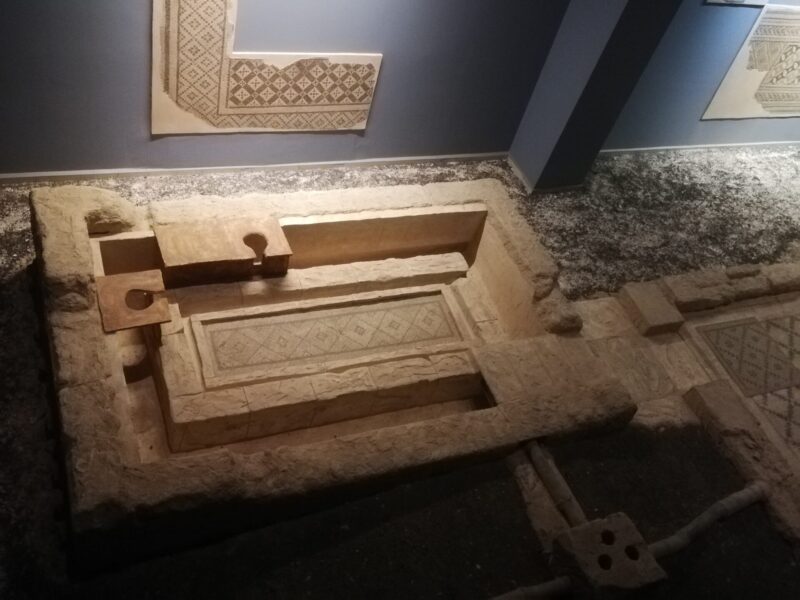
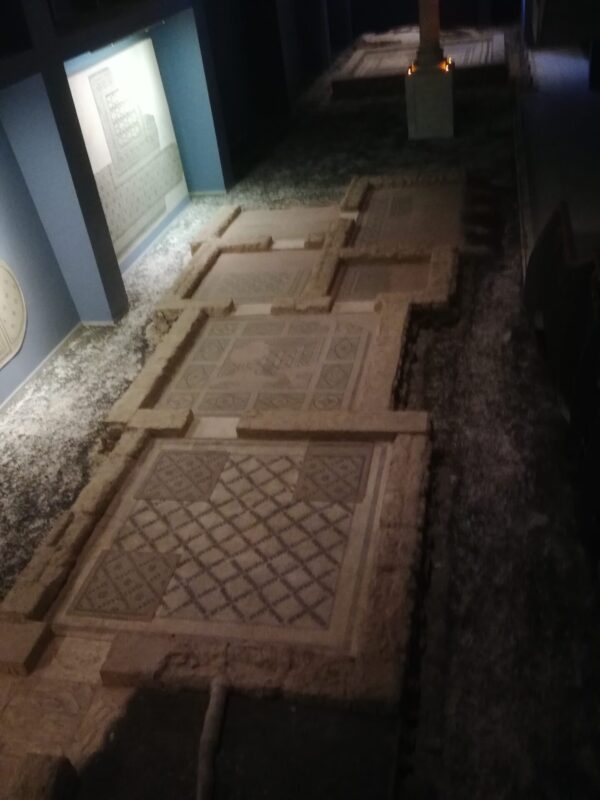


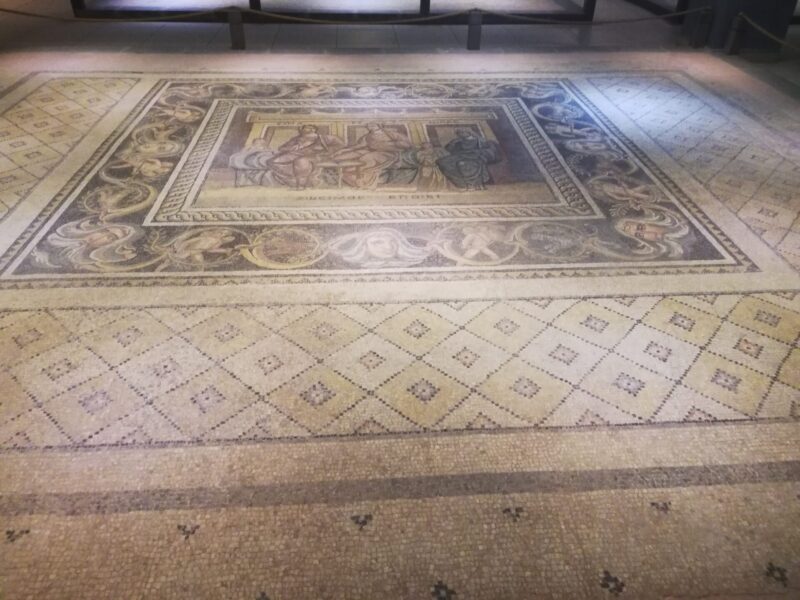
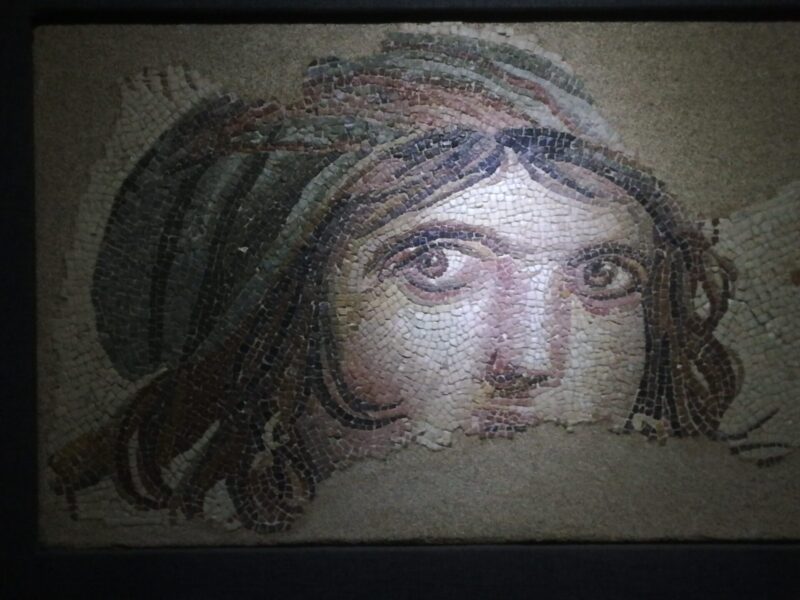

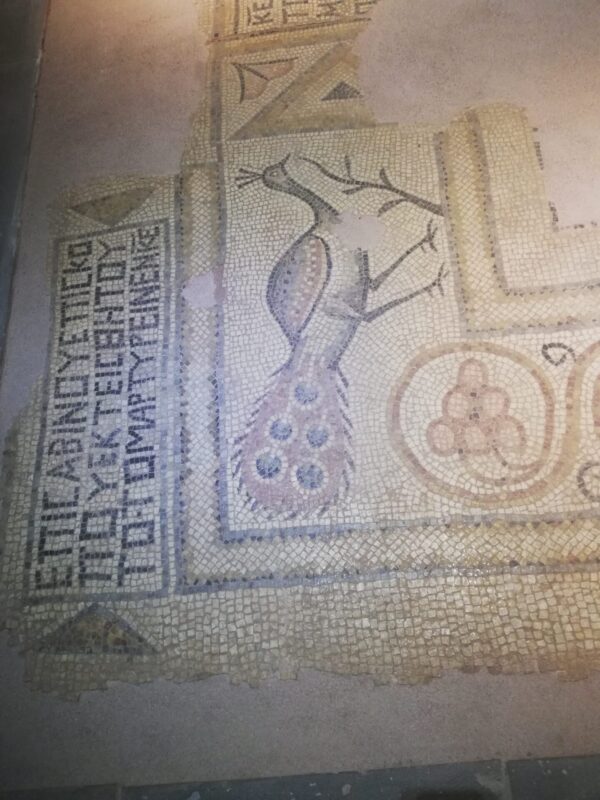

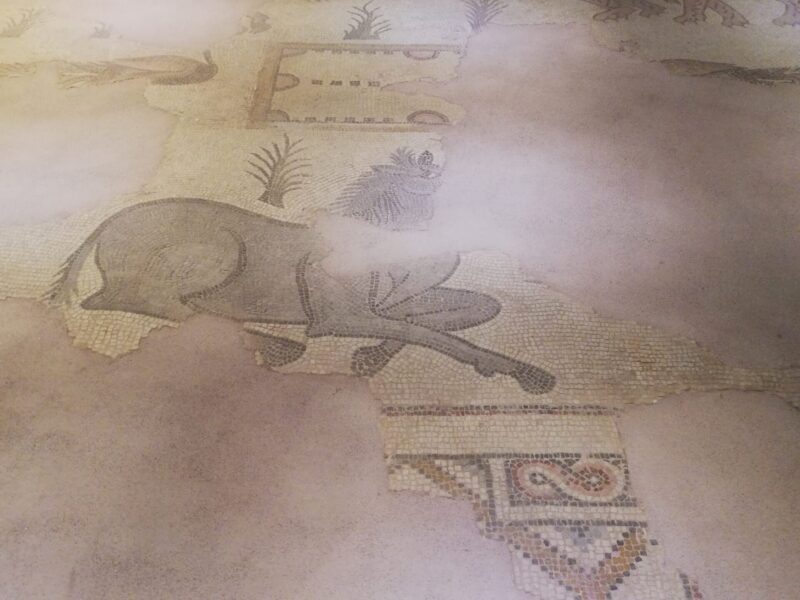
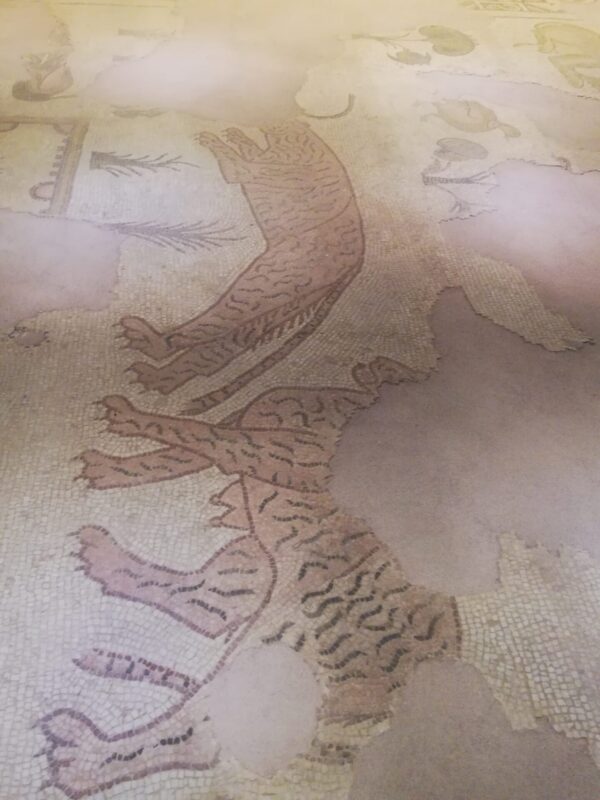
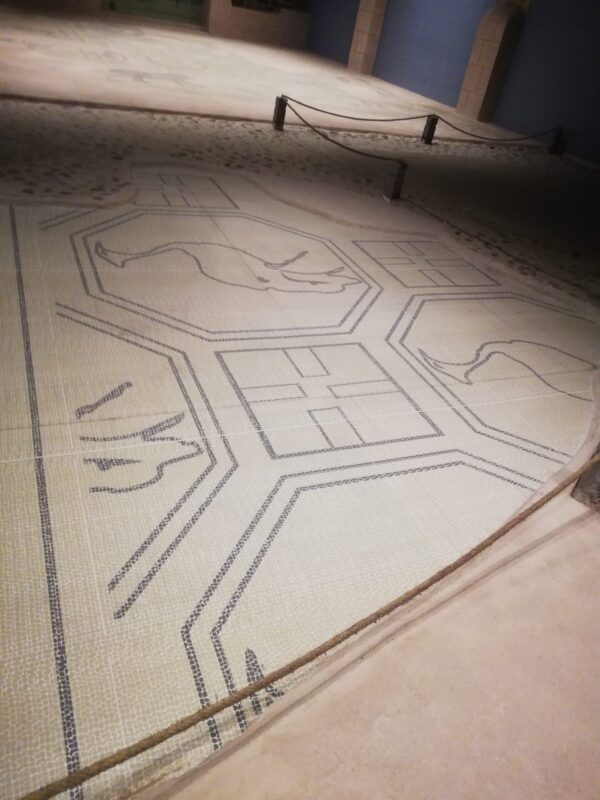
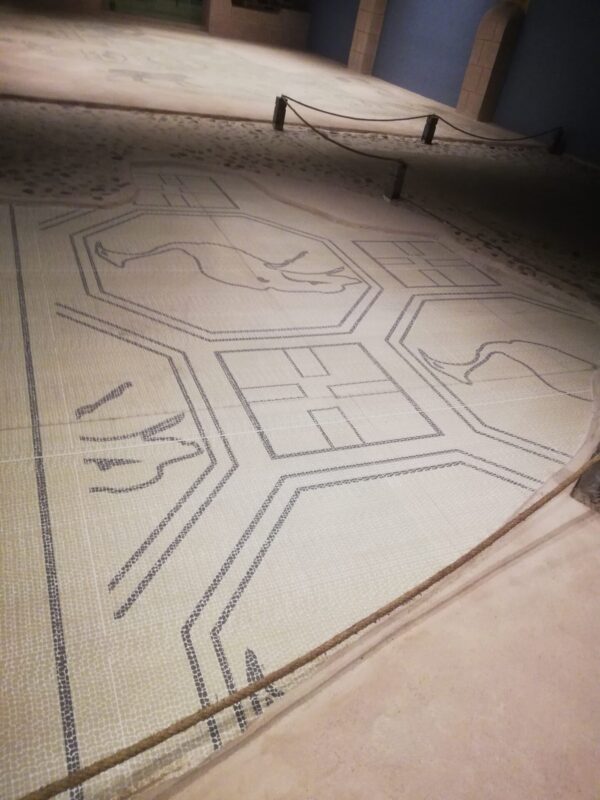
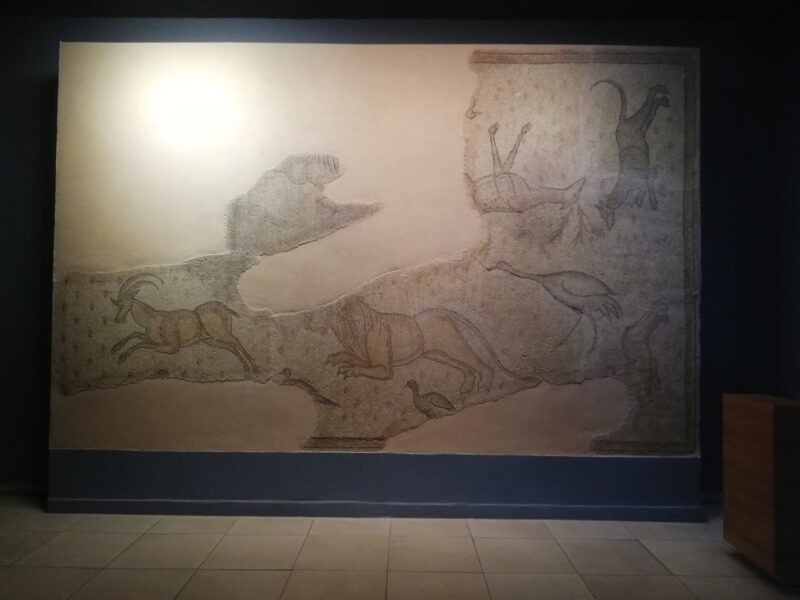
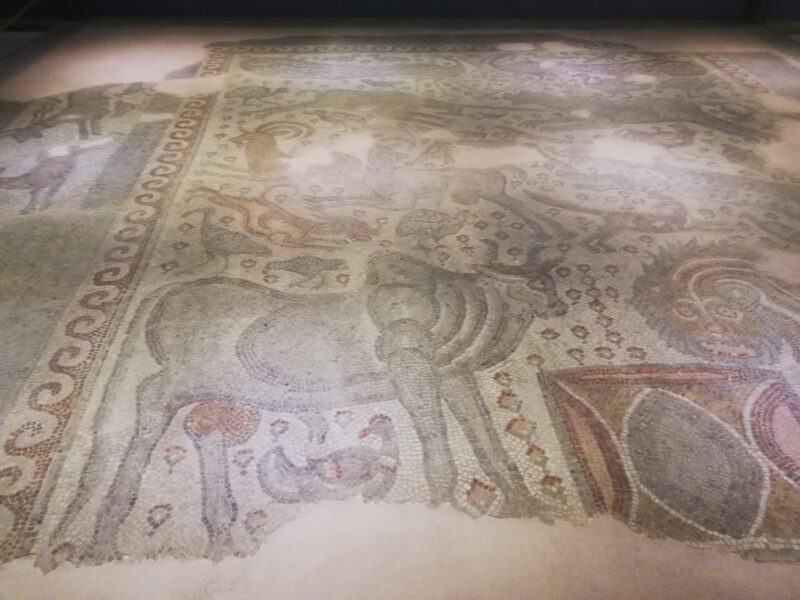
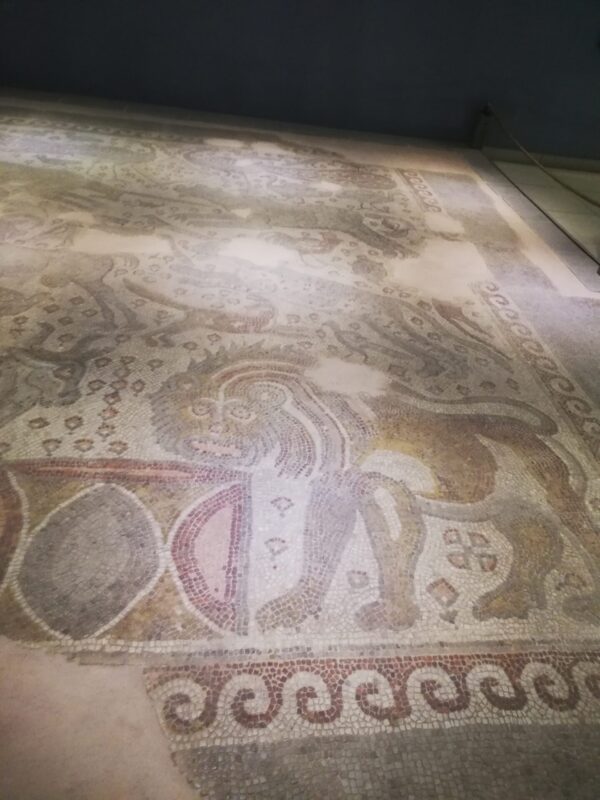
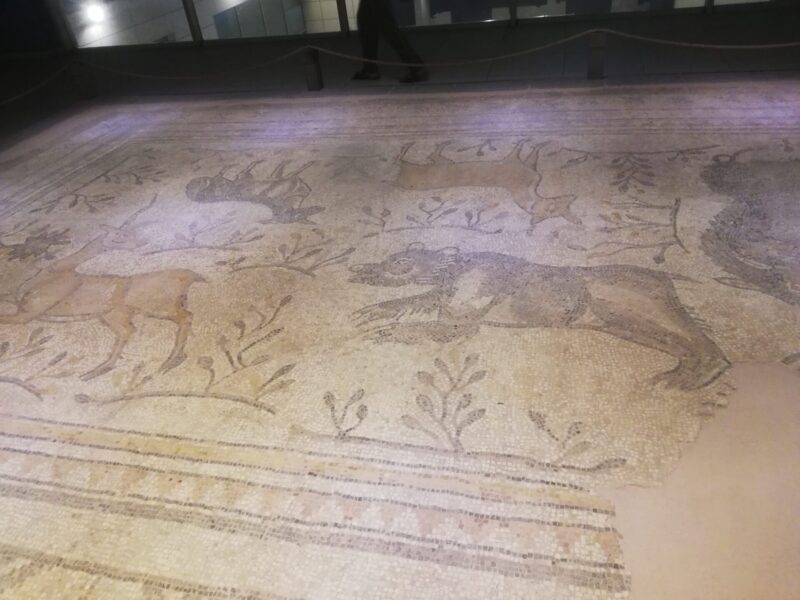
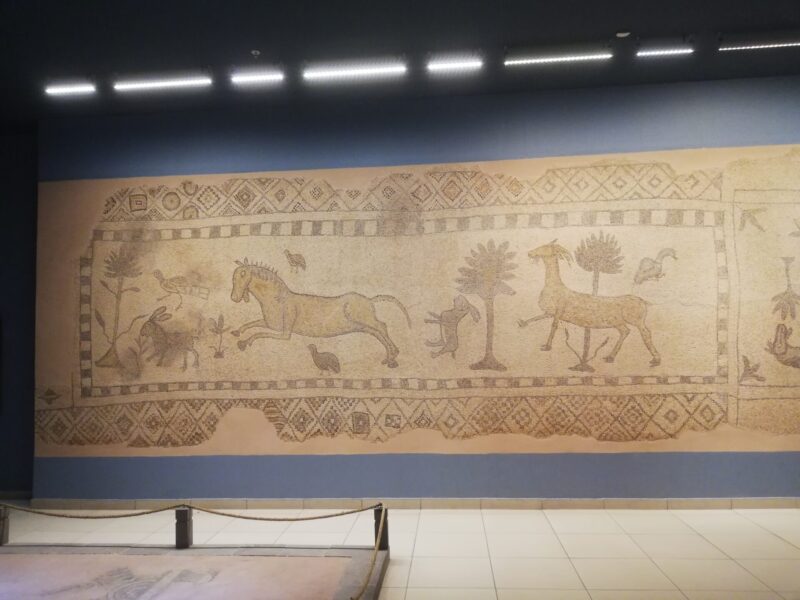
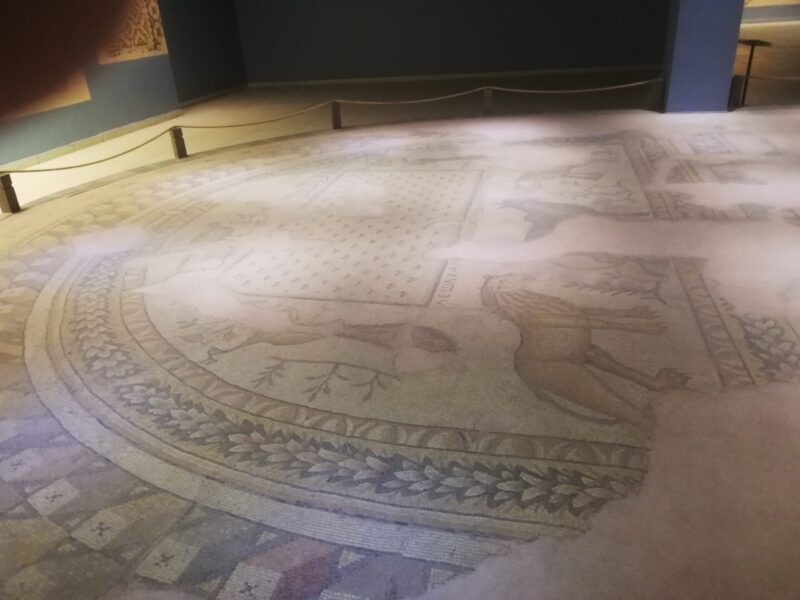
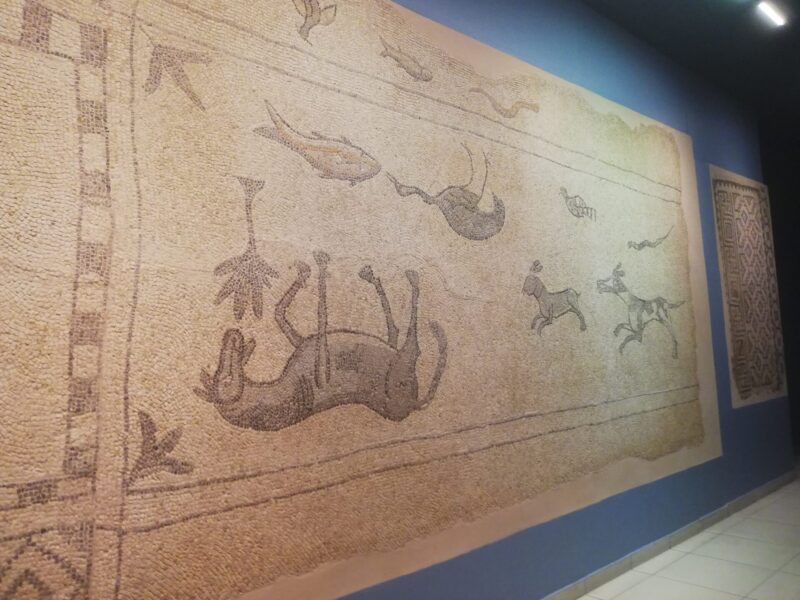
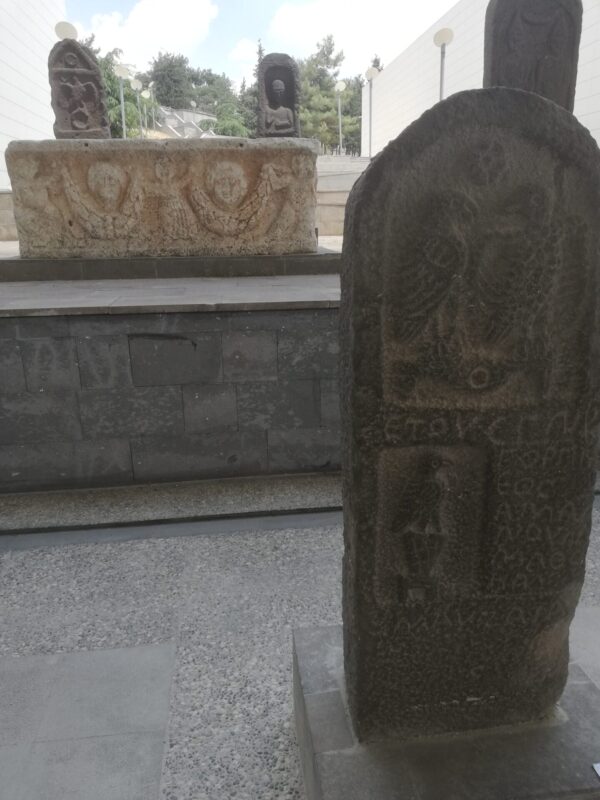
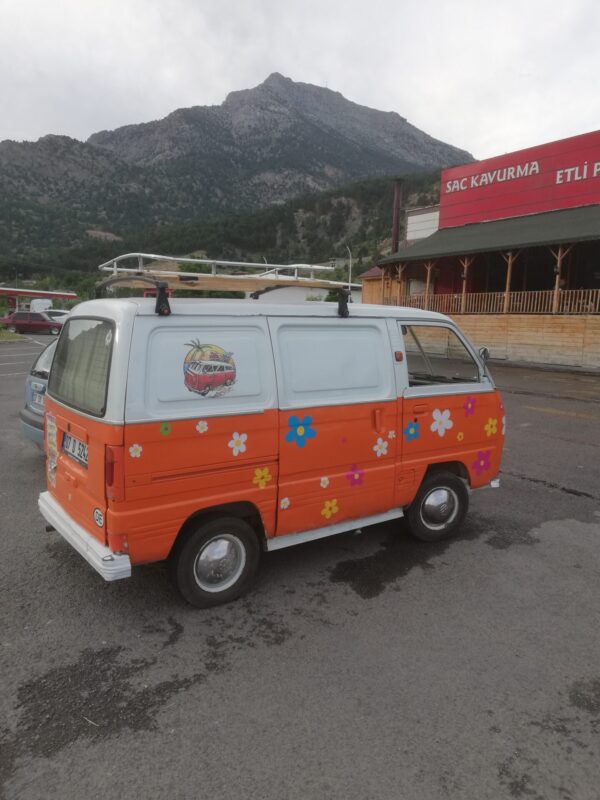
Day 98 (6th June) Eregli to Egirdir
Nothing much to report today. A ride of about 250 miles to Egirdir on the shores of an incredibly beautiful lake about 20 miles north of Isparta. We both wanted to come here again although I was afraid that it would be inundated with hordes of tourists. It wasn’t, and we had no difficulty parking in the beautiful lakeside carpark where we had stayed in March. We went to the same cafe and I made exactly the same mistake of ordering kofte (meatballs) and chips, not aware that the plate of kofte also includes chips. I managed to eat them all despite their being the worst chips I have ever eaten.
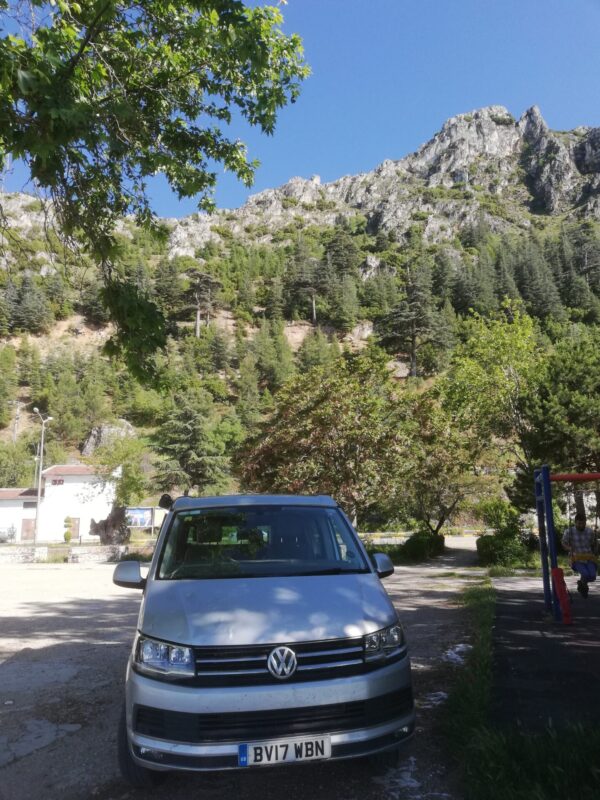
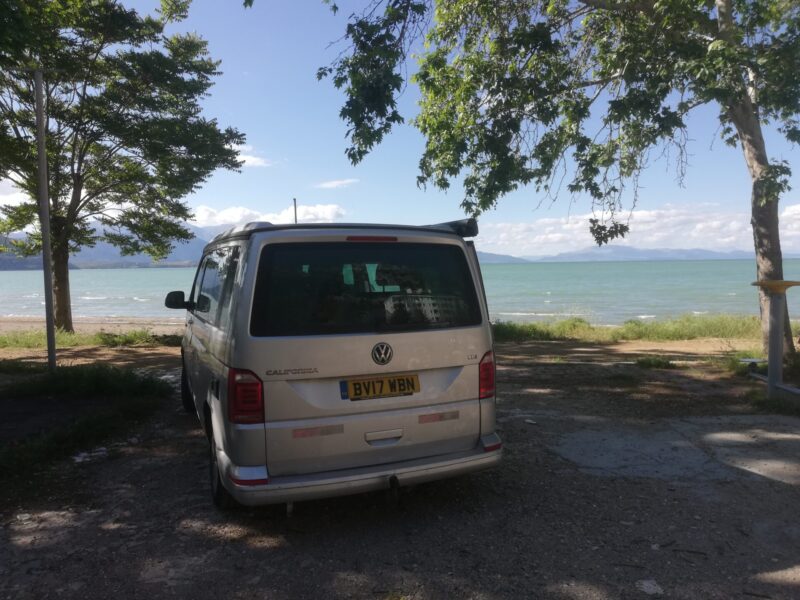
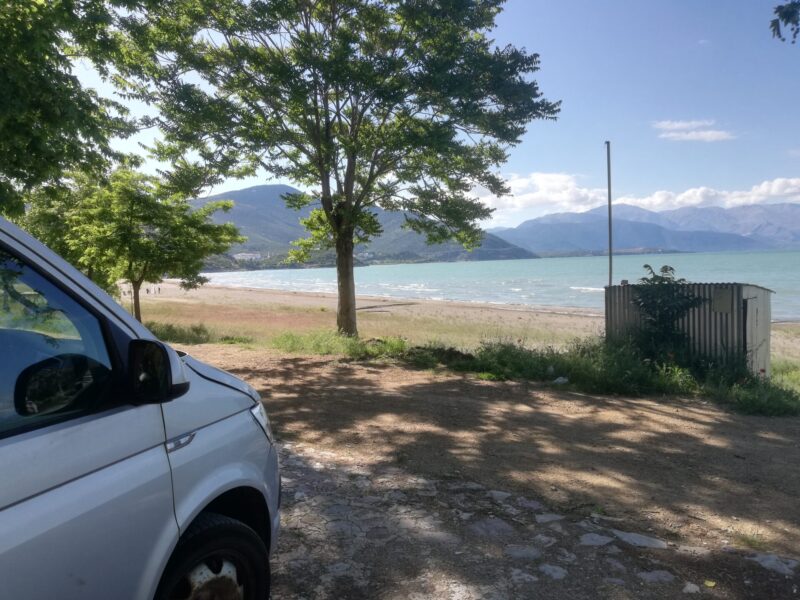
Day 99 (7th June) Egirdir to Bursa
We reached Mehmet’s cafe (although I suspect it belongs to his father) about 10.30 and we followed his fathers car round to Mehmet’s house. His beautiful wife made us a delicious breakfast and we handed over some presents we had brought from Egypt and Jordan. Mehmet’s son Khalil was there as there was no school; he is now 13 (he was 8 when we saw him in 2018) and his English is much improved. He is going for additional lessons and would like a pen-friend of about the same age to assist with his learning English. We promised to find one.
After a couple of very happy hours we set off for Istanbul through central Turkey where foreign travellers are completely unknown.
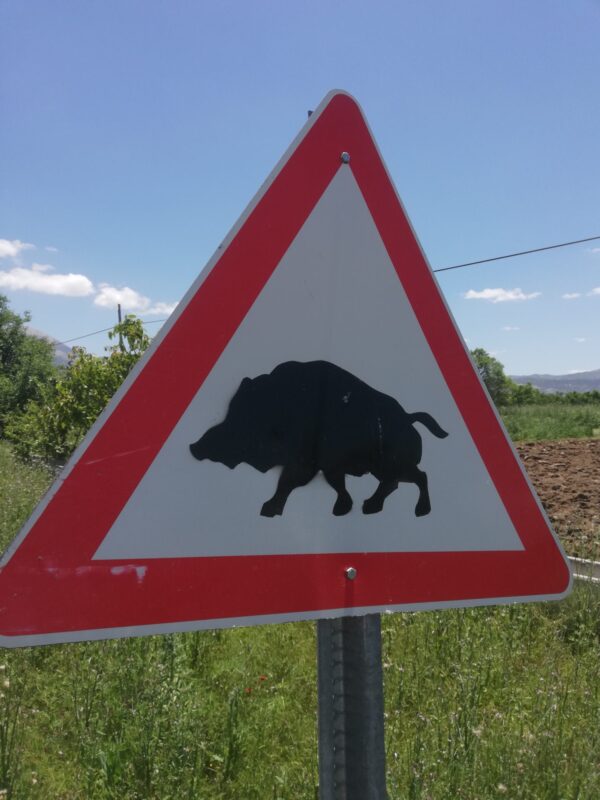
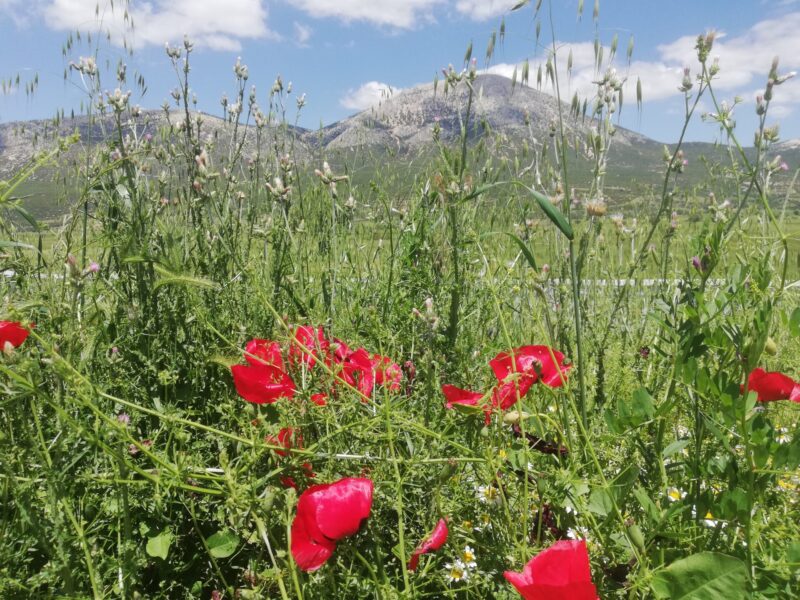
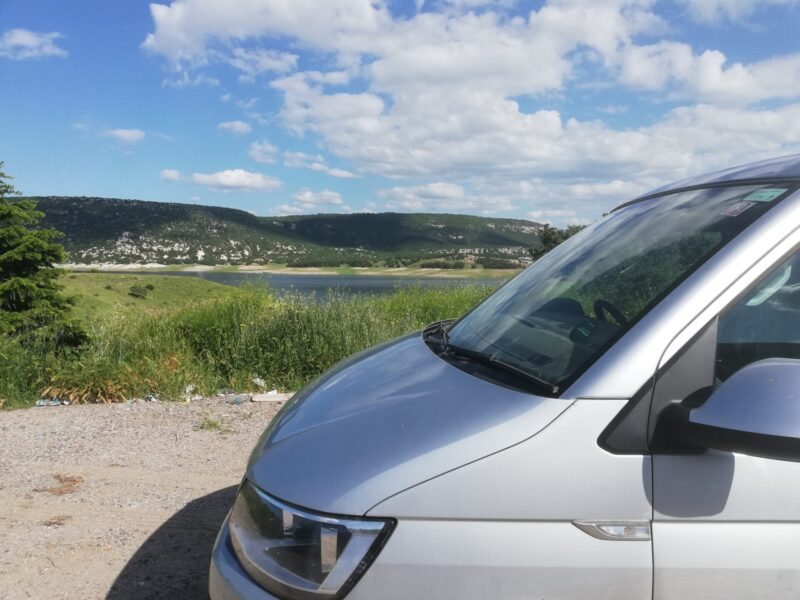
Day 100 (8th June) Bursa to Svilengrad
We wanted to spend a day in Istanbul but, after wasting a couple of hours looking for a hotel, decided that it wasn’t time effective to get a hotel on the edge of this huge (15,848,000 people) city at 3 pm and waste half a day, so we carried on towards Edirne. The idea was to find a hotel in Edirne, but we were both worrying about the Turkey/Bulgaria border; whether we would get collared by a fixer again, whether we would have to pay fines for all the tunnels we had passed through without paying, and whether some eagle-eyed official would notice that the green card was out of date. In the event we sailed through with no problem and stopped at a huge roadside parking place on the edge of Svilengrad.

Day 101 (9th June) Svilengrad to Ploiesti
First order of the day was to find a Lidl to stock up on food that we recognised and we found one in the small town of Dimitrovgrad, named after the first Communist leader of Bulgaria Georgii Dimitrov, who had been locked up by the Nazis for (allegedly) burning the Reichstag. A nice town, a mixture of Communist-era high rise flats, now looking a bit jaded, and pre-war buildings painted yellow. For once I didn’t trust the satnav when it said go right to Ruse while a big signpost said left, and soon found ourselves on a very busy road, frequently stuck behind slow-moving lorries. We kept passing signs about vignettes and eventually got flagged down by the police with a courteous, although not overly-friendly, policeman telling me that I had to pay a 35 euro penalty for having been flashed in Sofia on 9th March. He added that I should also buy a vignette for today but, if I got out of Bulgaria into Romania today before the computer caught up with me, I might avoid it. I felt a bit cross because, while the vignette for Switzerland allows you to drive on excellent roads though tunnels under the Alps, the roads in Bulgaria were rubbish and, at one point, consisted of cobblestones.
We got to the border at Ruse after crossing a huge bridge across the Danube, built in 1952 according to an inscription on two huge Stalinesque pillars at the entrance to the bridge. I bought a vignette at a garage in Romania and we then spent 2-3 hours stuck in traffic jams round Bucharest. It would probably have been cheaper (and more interesting) to go through the centre of the city. We then made for Ploiesti possibly the ugliest city in the world with oil refineries, power stations and large industrial plants. Reaching it just as the sun was going down, we debated whether to drive a further 80-90 miles towards Brasov. I checked the satnav to see whether there were any hotels on the road to Brasov, and found the Hotel Daly about 100 yards away. It was obviously a hotel for specialists coming to Ploiesti to service the industrial facilities because no tourist would ever stay there. But it was a nice hotel (although we had to make our own bed by putting the quilt inside a cover) and the breakfast was nice. Jennifer enjoyed this huge wolf-type dog called Max.
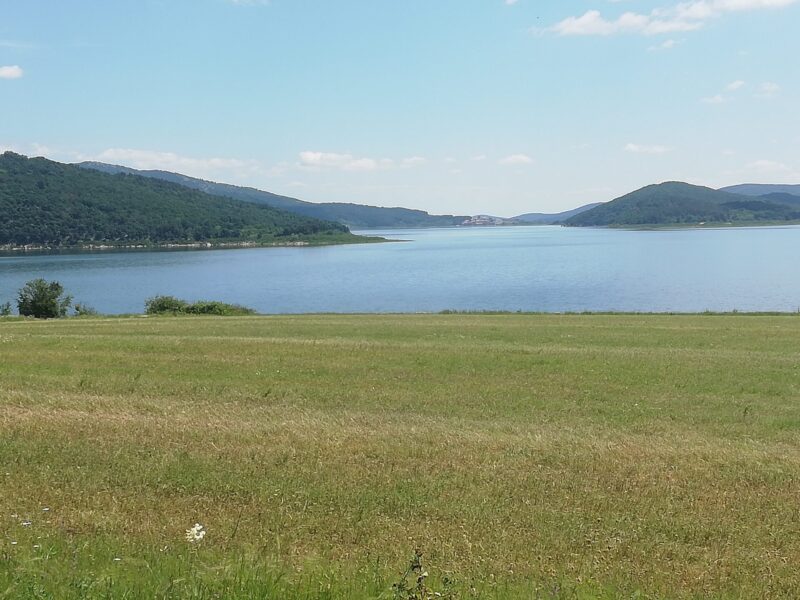
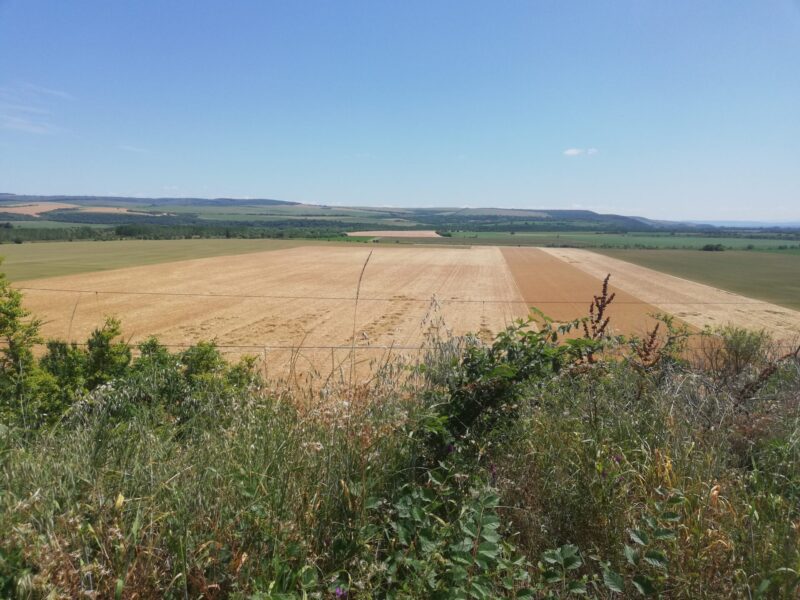
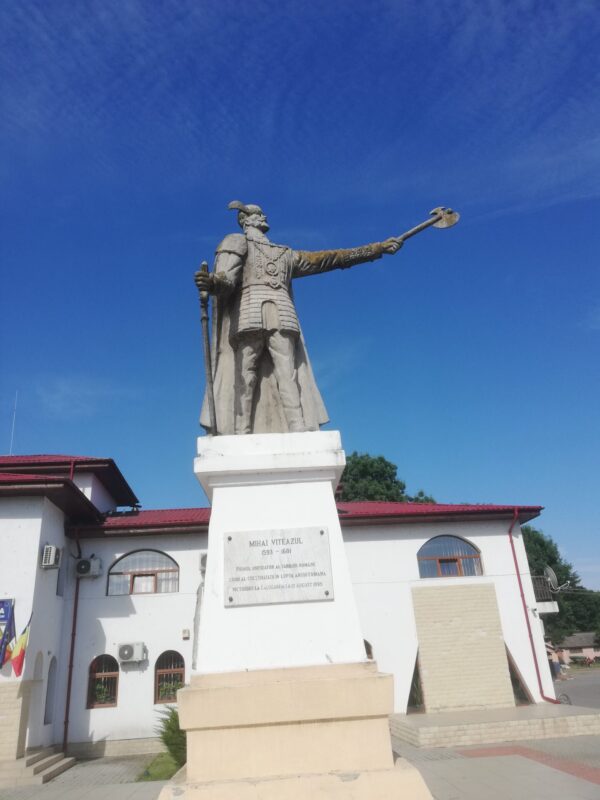
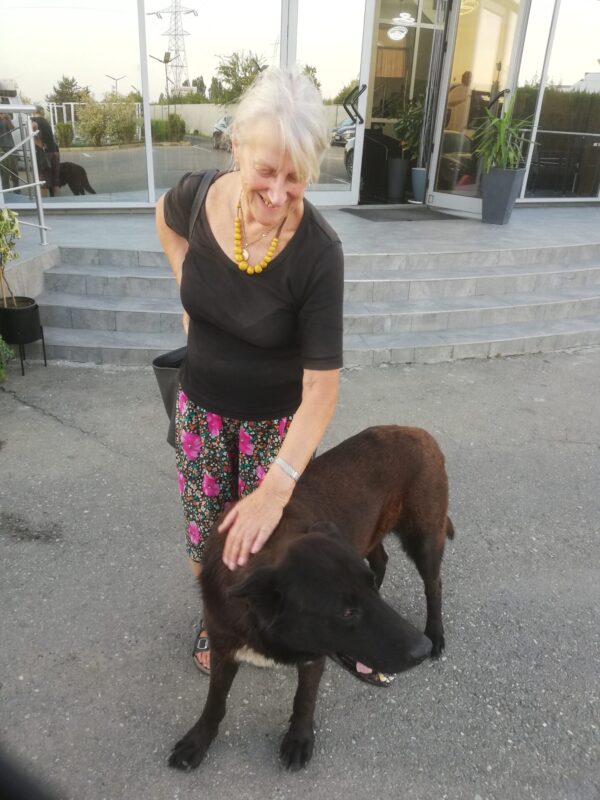
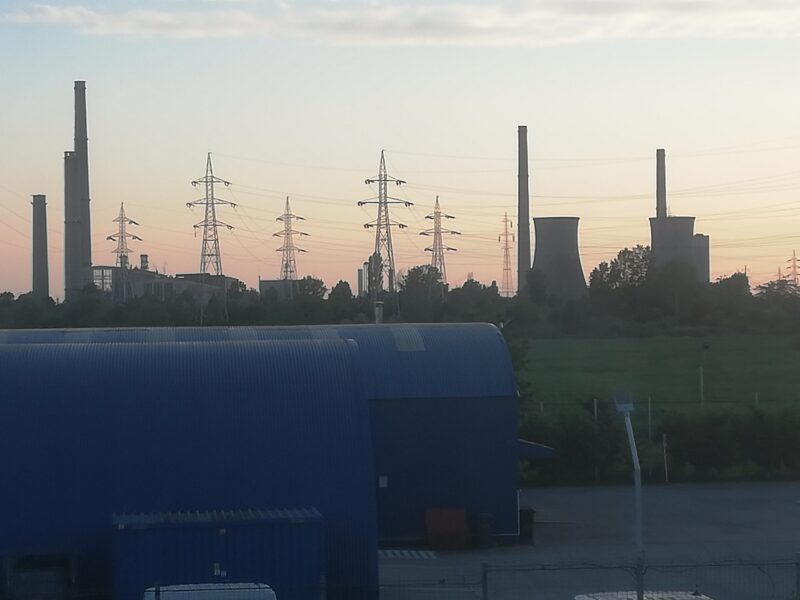
Beautiful Ploiesti. The view from our hotel.
Day 102 (10th June) Ploiesti to Brasov
We passed through some glorious scenery in western Romania, arriving at Targoviste about mid-day. This was a former capital of Wallachia and we looked at the ruins of the former Princes’ Palace and the adjacent cathedral and church. They are contained in a large park which is one of the places where, it has been suggested, the most famous Prince of Wallachia, Count Vlad Dracul, impaled 20,000 Turkish soldiers. I was especially keen to see the Peles Castle near Brasov which is reputed to have been Vlad Dracul’s castle and we drove up and down a mountain spur clothed in dense forest round a number of tight hairpin bends to the edge of Brasov before I realised we had passed it 25 miles ro the east. So we drove back, running into a thunderstorm with torrential monsoon-type rain and huge hailstones which banged alarmingly off the windscreen.
Peles Castle was probably created in the 1880’s (that being the date on a nearby house built in the same style) and, while it looked sufficiently eerie, did not quite seem the part. You can walk round inside, but it was closed and we debated whether we should spend the night in the car park and look round the next morning, but I didn’t see the point if it was simply a reconstruction for tourists. So we decided to continue our journey; another torrential downpour slowed things down and we found a filling station with a large lorry park 30 miles west of Brasov before settling down for the night.
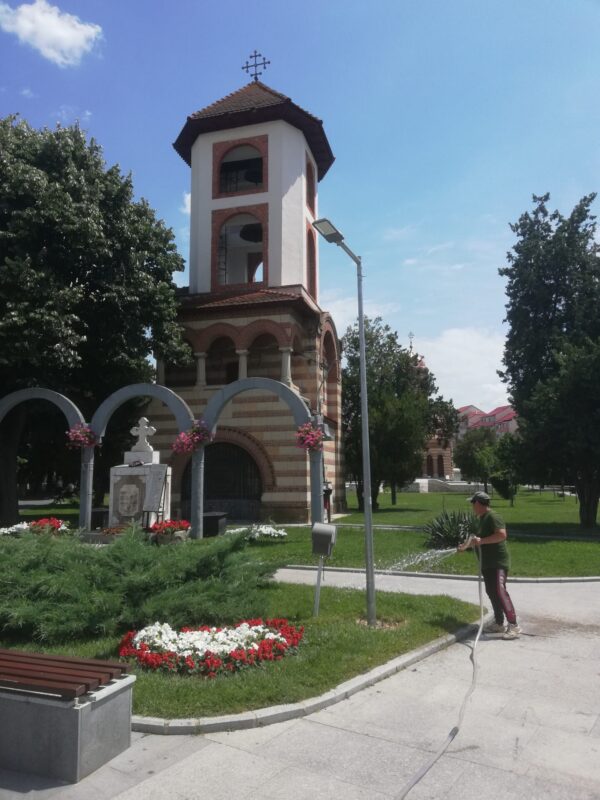
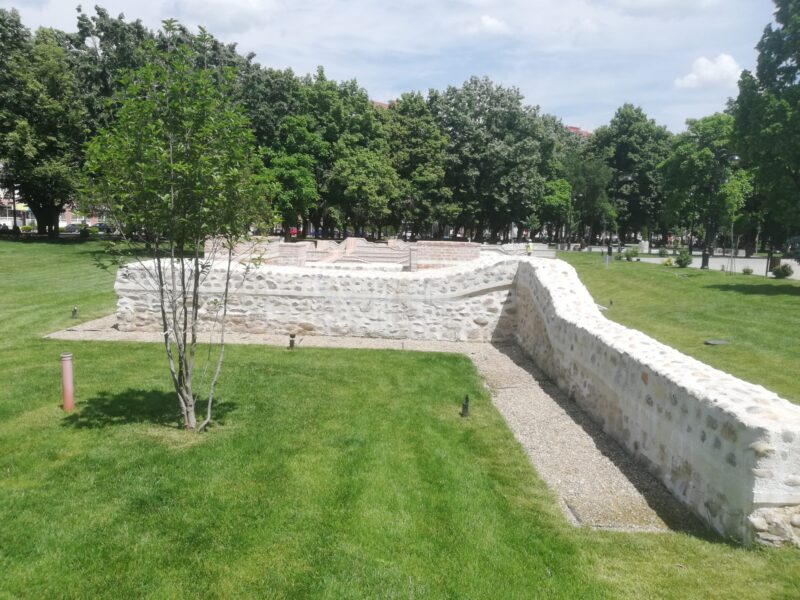
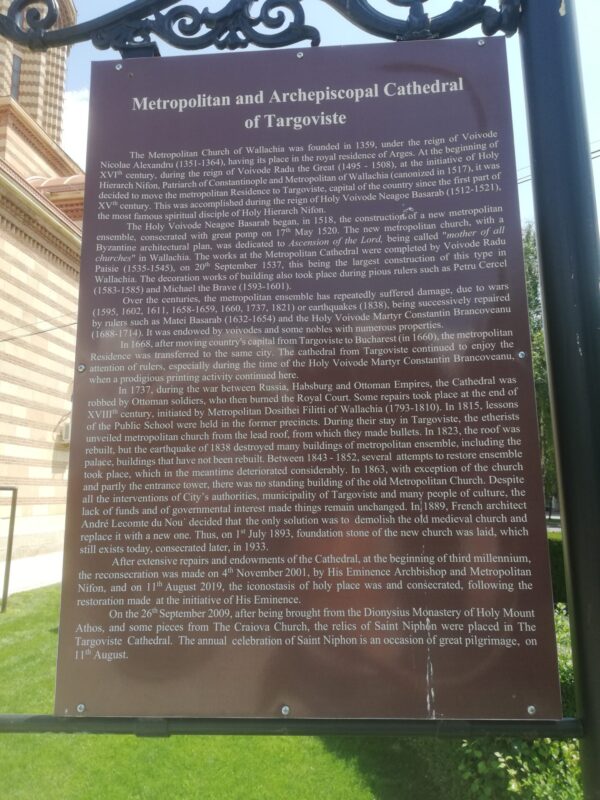
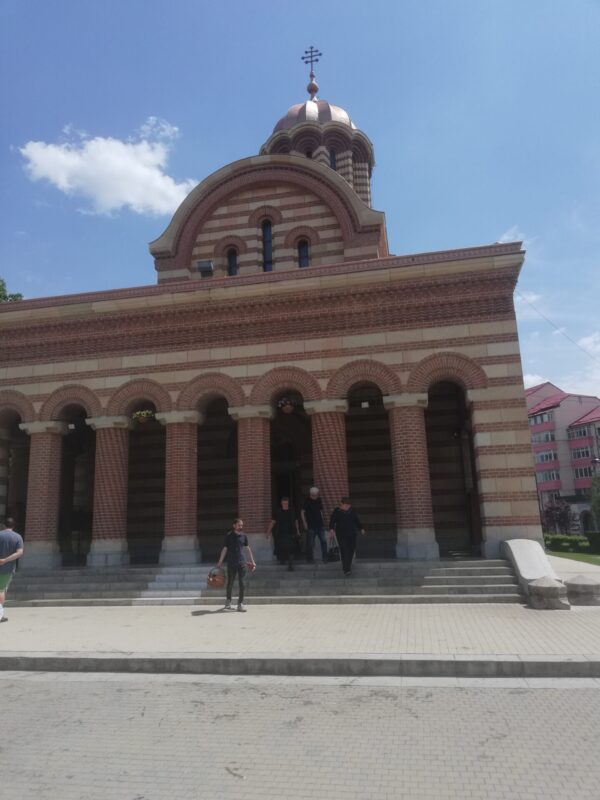
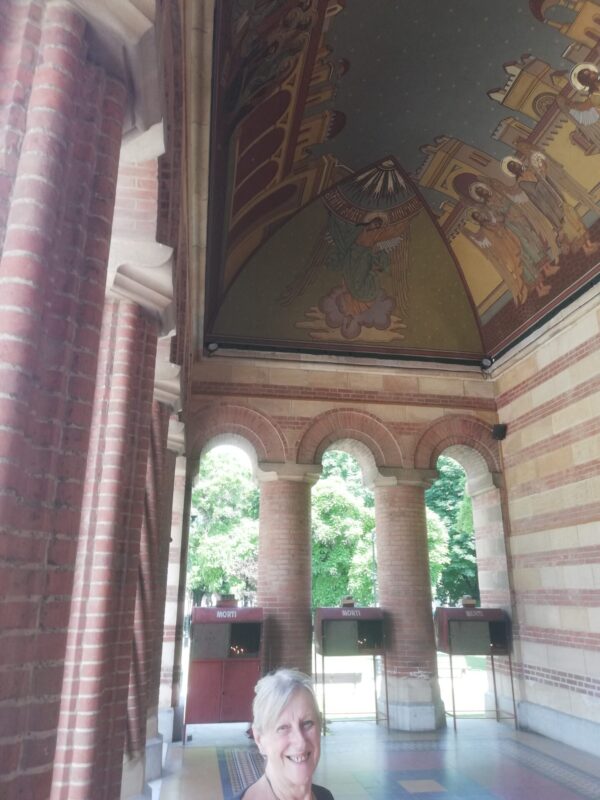
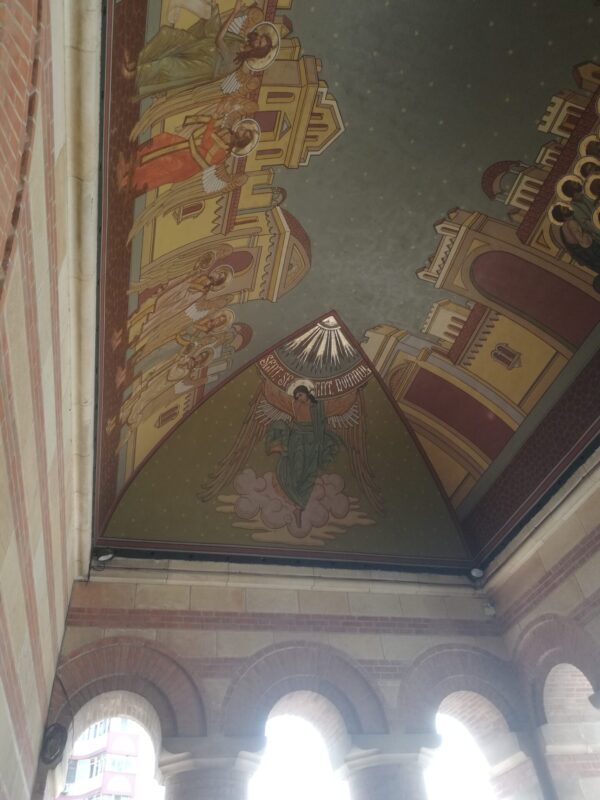
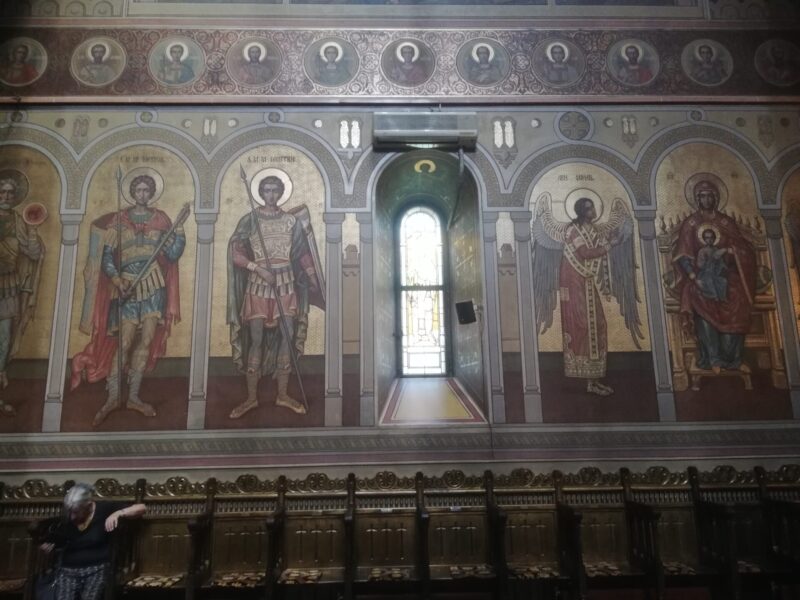
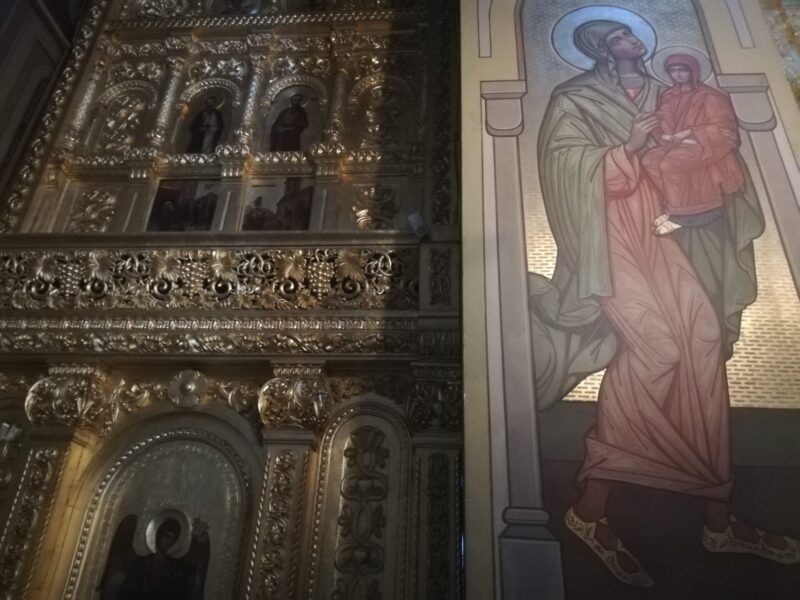

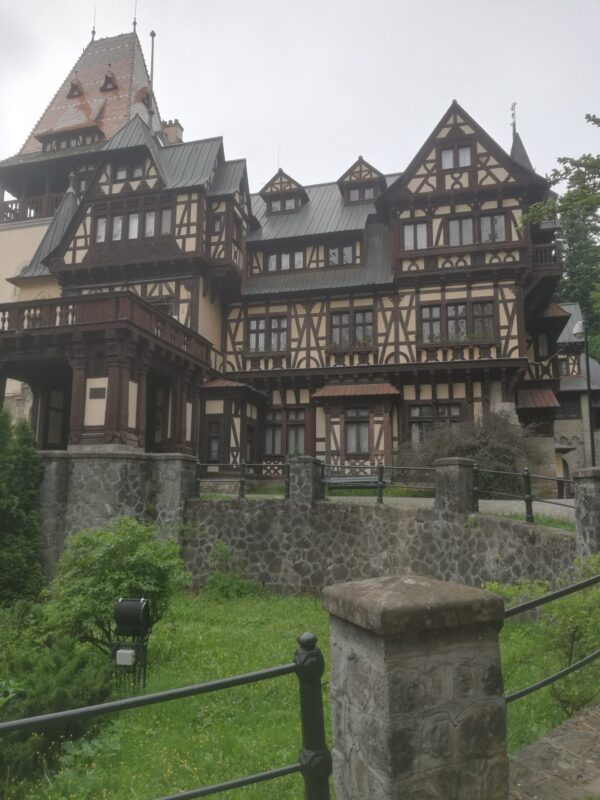
Vlad the Impaler’s palace (allegedly).
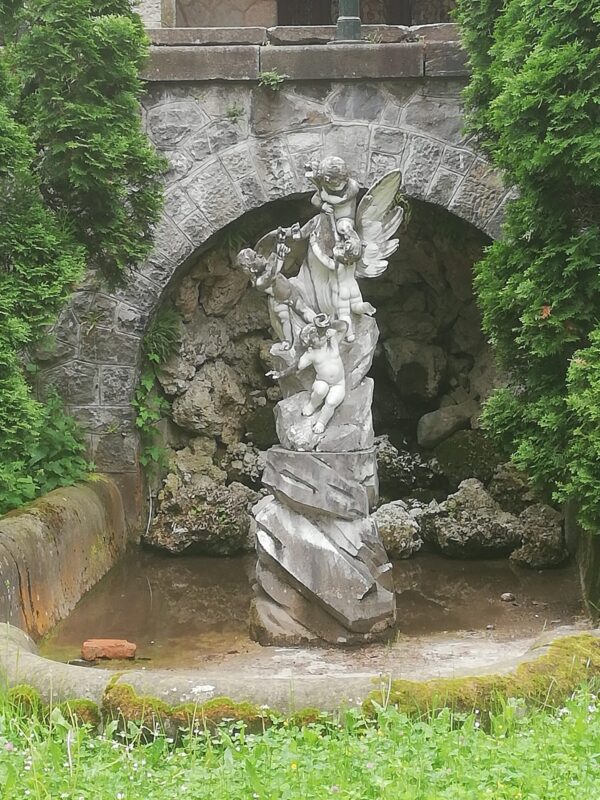
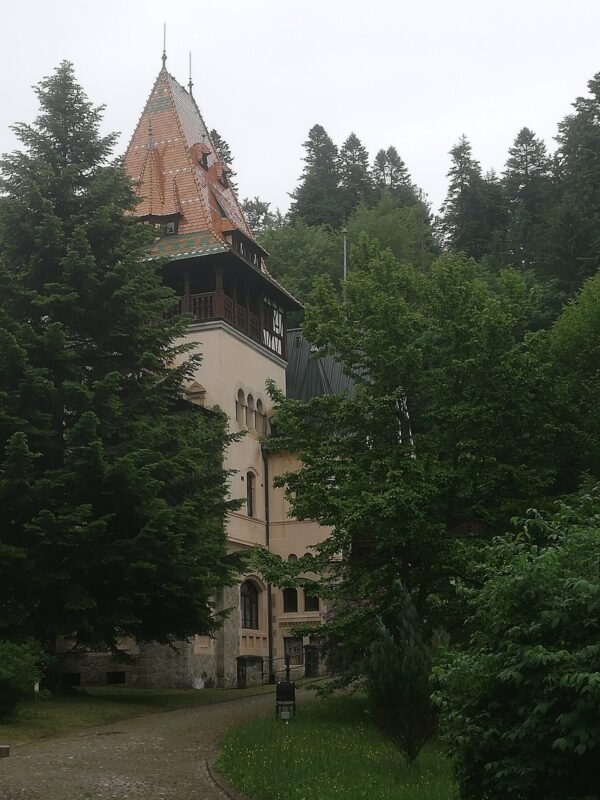
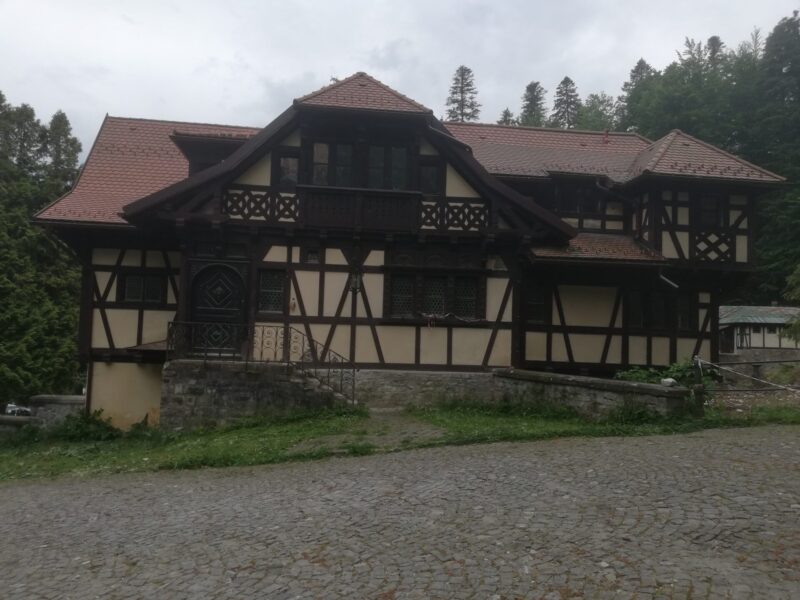
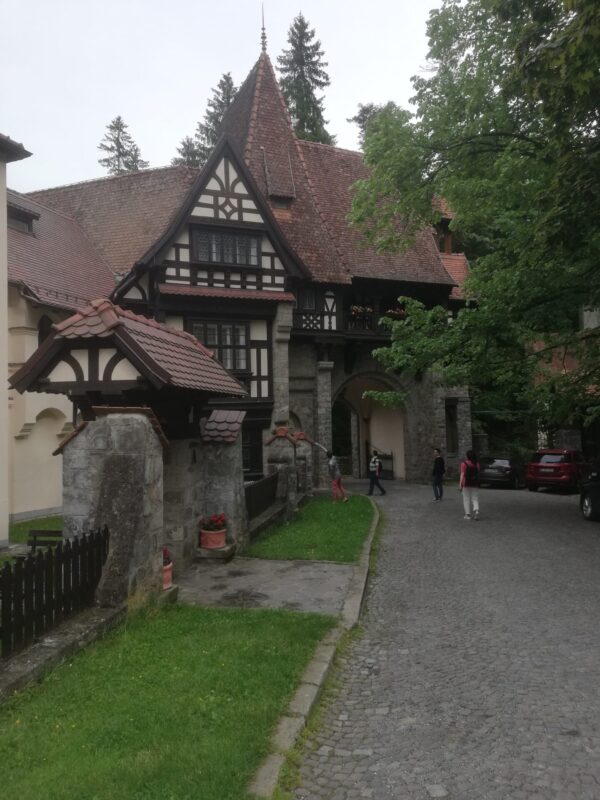
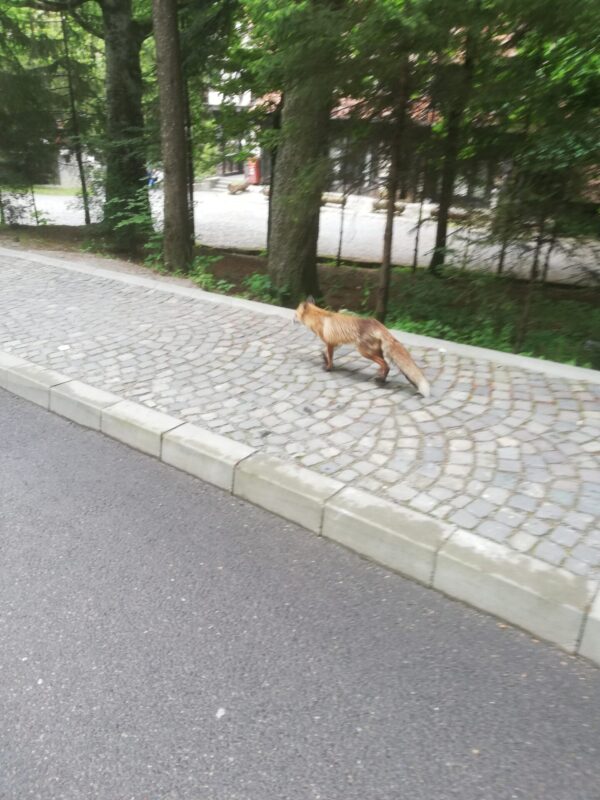
Urban fox

Day 103 (11th June) Brasov to Novi Sad
The border between Romania and Serbia was surprisingly quiet and, despite both countries being in the EU with tariff-free trade, we had to go through the customs nonsense, opening up the van for some jobsworth to poke around in our belongings. The Serbians were particularly unfriendly, interrogating us on why we wanted to go to Serbia, where we going etc, and the customs man was the first on the entire trip to order me to open the bags. By the time we had got through the border, we were hungry, but looking for a restaurant that was open on a Sunday was a complete waste of time. We decided to make for the autoput (the motorway that runs down the middle of the former Yugoslavia) where there would be filling stations and restaurants. We eventually found a place that sold sandwiches and pastries and had a half-decent meal before going to bed.
An interesting little event: Jennifer put her handbag on the driver’s seat, there was a click and the doors automatically locked so we couldn’t get out! Then the alarm went off. I cautiously suggested that she may have touched something when she put her bag down before realising that I still had the car key in my pocket and must have sat on it, triggering the automatic door lock mechanism. So it was my fault, as I keep getting repeatedly reminded,
Two cars drew up behind us with 6 drunken Serbian youths who proceeded to relieve themselves on the grass 5 metres from the van, although they may not have done it if they knew we were in the van. I say this because they seemed remarkedly public-spirited, taking every bottle after they had drunk its contents and putting it in a rubbish bin. However they were getting noisier and noisier with each bottle they drank so we drove to the other side of the car park and had a good night’s sleep.
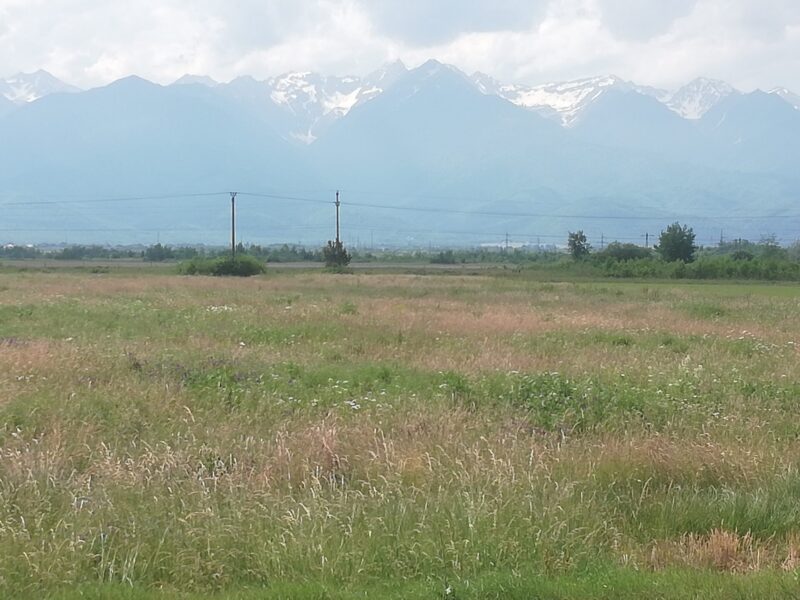
Day 104 (12th June) Novi Sad to Monfalcone
A worrying start to the day when I noted that a tyre was very flat. The filling station whose car park we slept in didn’t have an air pump so I drove very slowly up the autoput to the next station which was much bigger and had an air pump. The instructions were in Serbian and I tried every combination of the numerous knobs to get some air out of it until somebody came and did it for me. We then had a long drive though Serbia, Croatia and Slovenia (which doesn’t do vignettes any more but has a peage requiring 1.9 euros to pass through) to Italy where we stopped at a large McDonalds (the shame of it) but were able to sleep in their car park.
I have lot of time for the satnav, but it sometimes gets things wrong. In the middle of Rijeka, it sent us down an increasingly narrow lane which Jennifer reckoned was leading to someone’s back garden, “Rubbish”, said I, “the satnav distinctly shows it as a lane connected to a much bigger road. Then we finally came to a halt in someone’s back garden. While I was trying to do a 25-point turn to get out before we were noticed, a very pleasant young man came out, moved his car to give me more room, and helped Jennifer to direct me out. Most embarrassing and I was dripping with sweat when we finally got out and got back onto the E-70 autostrada which we should not have left in the first place but for the satnav.
Day 105 (13th June) Monfalcone to Venice
We reached the Fusina campsite by 10.30 and met a Welshman who told Jennifer, after hearing that she came from Holywell, that his company had converted Woolworths into a Wetherspoons. More evidence if any needed that Wales is going down the crapper. He also told us that they were leaving a week early because the mosquitos were “tearing us to shreds”. We got the midday ferry into Venice and made for the one famous building we hadn’t yet visited, the Doge’s Palace. Built round a courtyard, it consists of numerous rooms lavishly painted with biblical scenes and lots of gold gilt. Rather overdone; I preferred the dungeons, and the ones on view were large, light and clean establishments, better than some of the hotels we have stayed in. Down some dark gloomy passages, which we couldn’t go down, we noticed some bolted wooden doors leading into tiny cells, presumably the former abode of serious criminals such as heretics, witches and necromancers. These would have been pitch-black, stinking horrendously and with floors covered in six inches of shit, piss, vomit and the putrifying flesh of prisoners who had died there. The only entertainment would have been the daily scrabble for the loaf of inedible bread before someone else got it. The Bridge of Sighs was built over a canal to a new building specially constructed for the ever-growing legion of criminals. You can imagine the poor sods sighing as they looked through the barred windows to the lagoon and thinking of the accommodation awaiting them. The good old days.
We then went to eat and had a culture shock when we realised how much more expensive Venice is than the Balkans and Middle East. We soon learned to ignore the prominently located places with tablecloths that didn’t sell pizzas, these presumably eaten only by the duff end of the tourist spectrum. I like pizzas, so we looked up the side streets for a place with crappy old plastic tables, chairs with three legs, a fat smelly waiter blowing his nose on his apron and cutlery coated with three years of accumulated grease. The sort of gastronomic establishment we like to patronise. We found one and I had a delicious ham and asparagus pizza. Jennifer looked at the cutlery and had a sandwich.
We then went back to the campsite, closed the van doors and windows and I spent a happy hour squashing every mosquito bar one, which eluded me. Some of them, when squashed, left a long streak of human blood. The remaining crittur gave Jennifer 21 bites. So we decided to leave the next day after a terrible night.
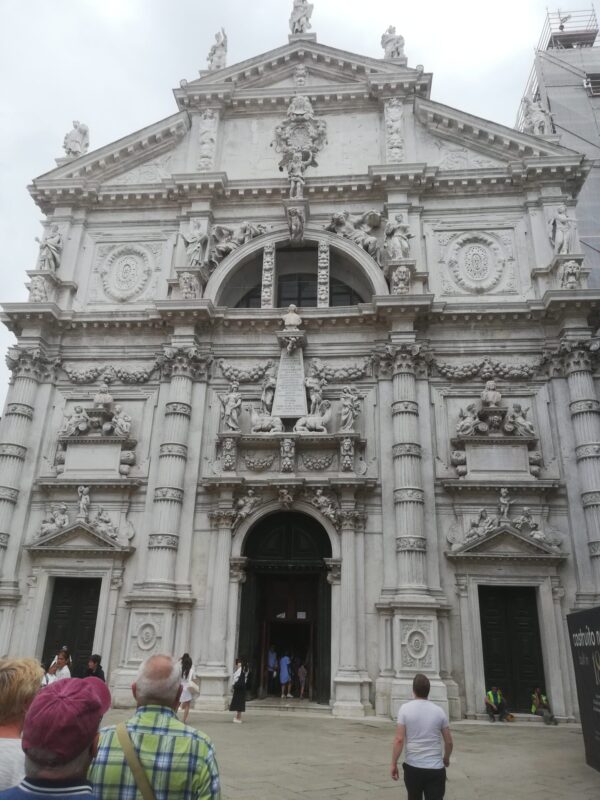
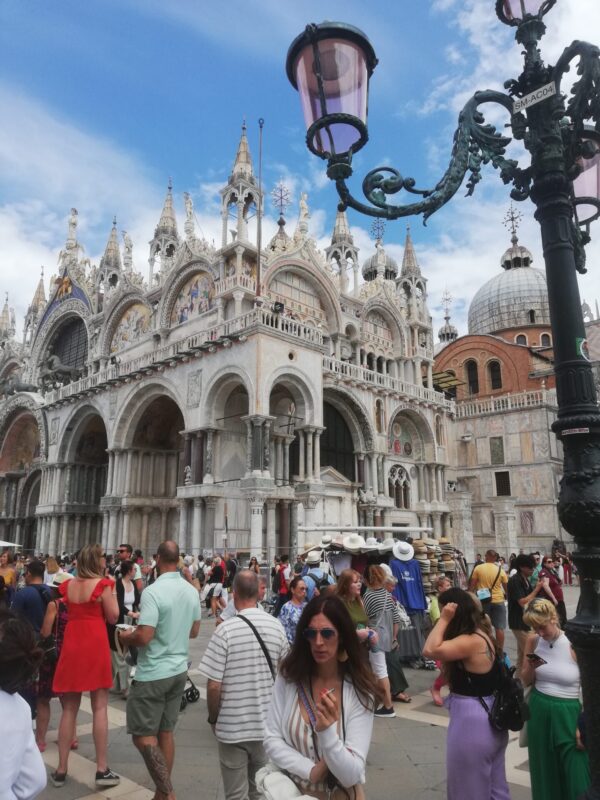
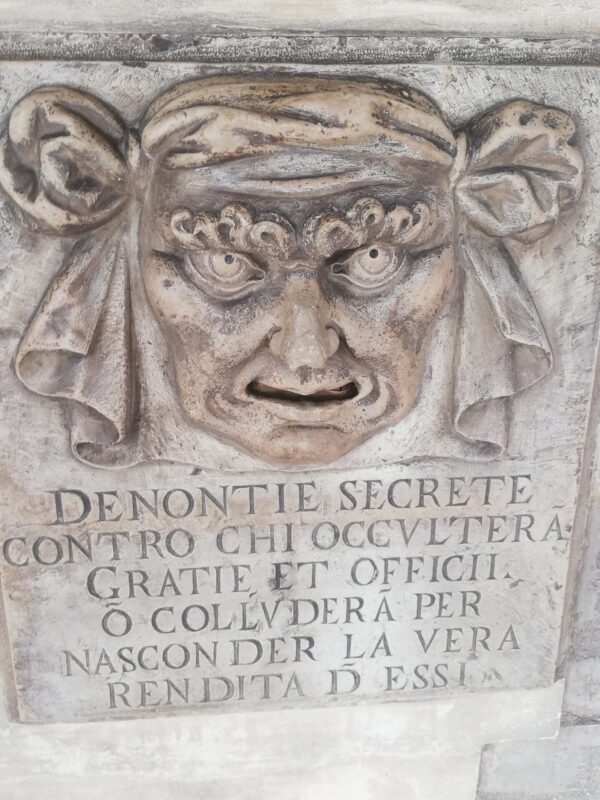
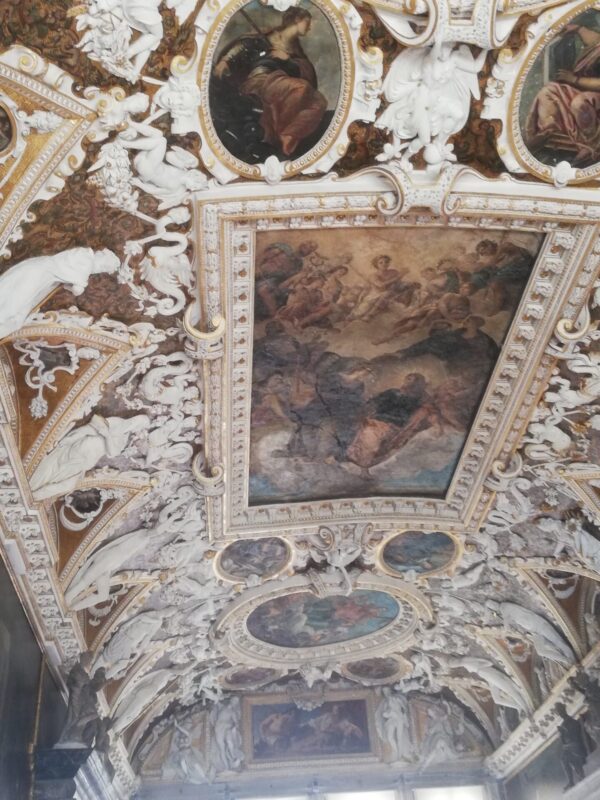
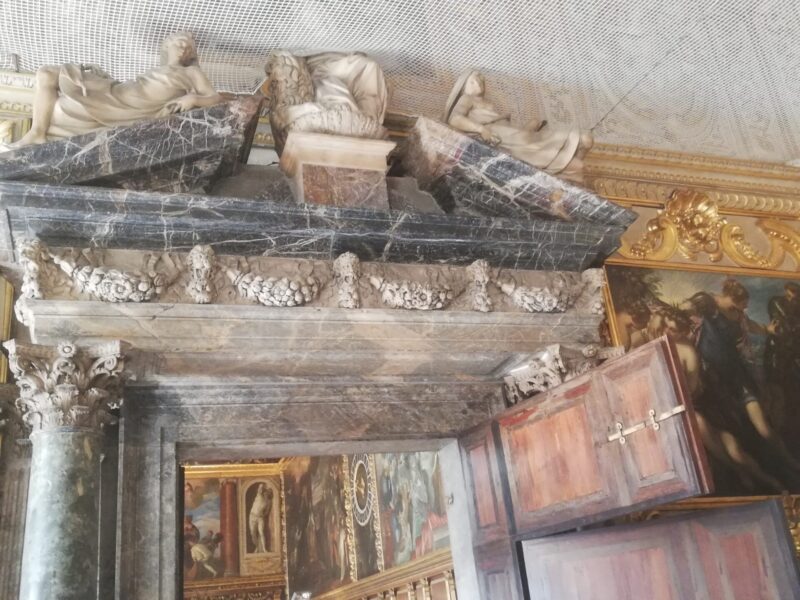
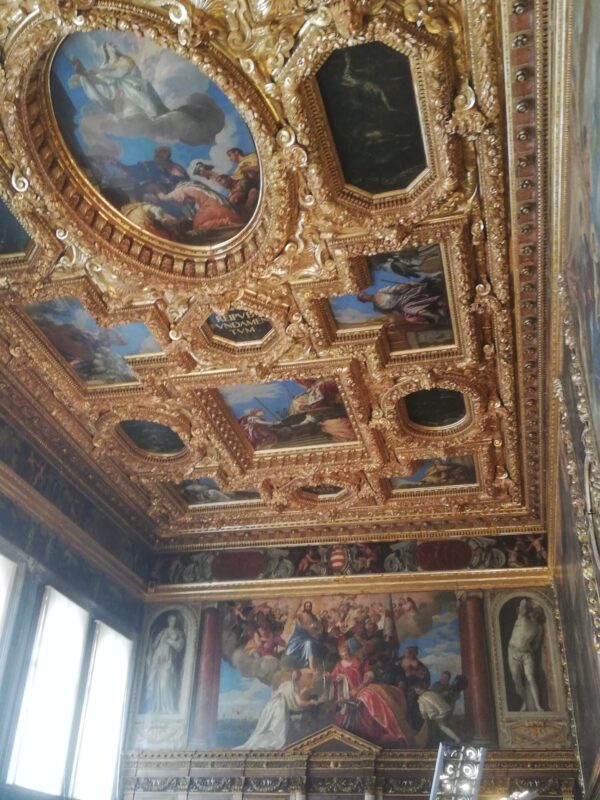
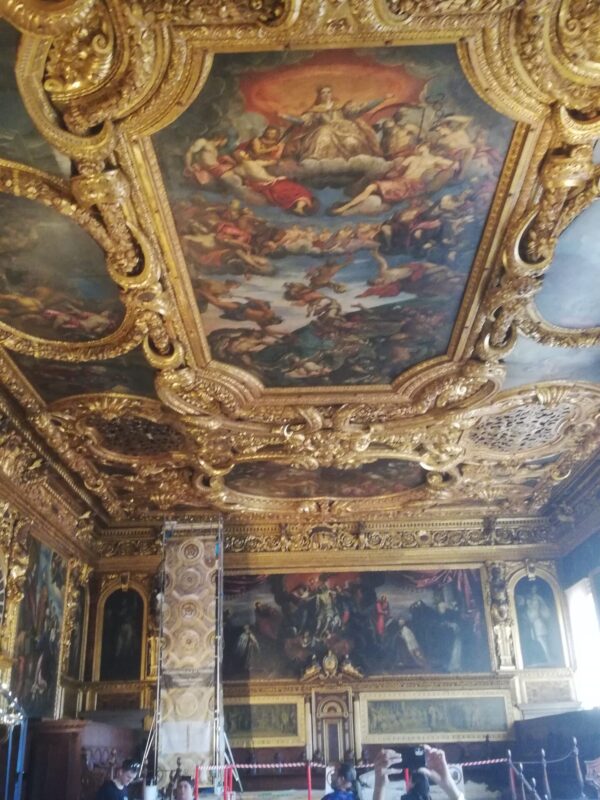
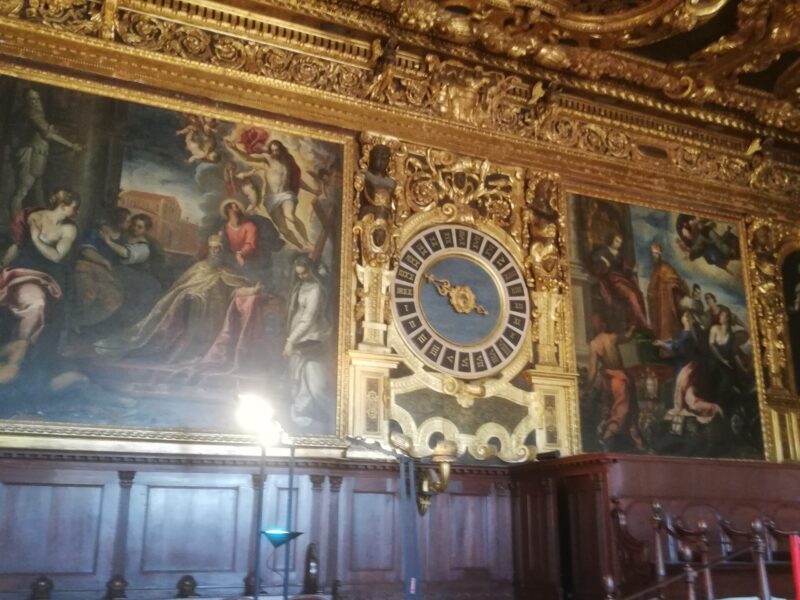
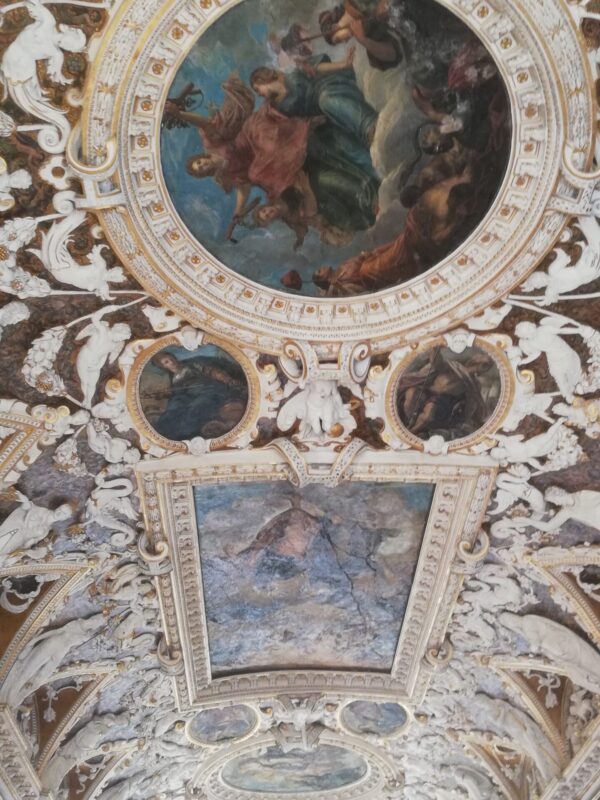
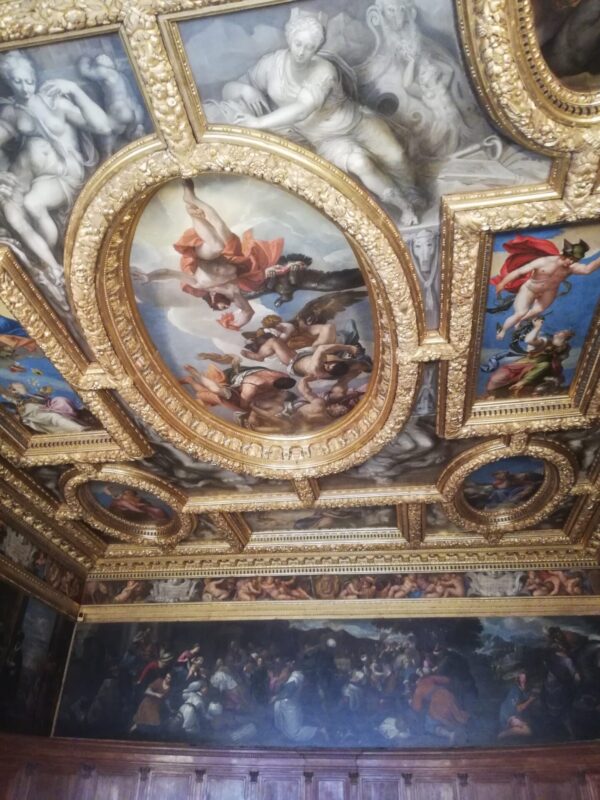

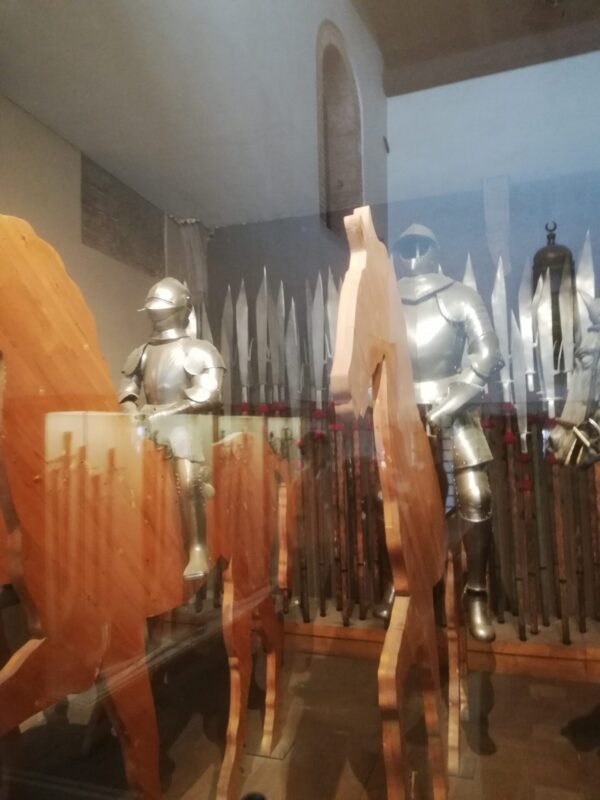
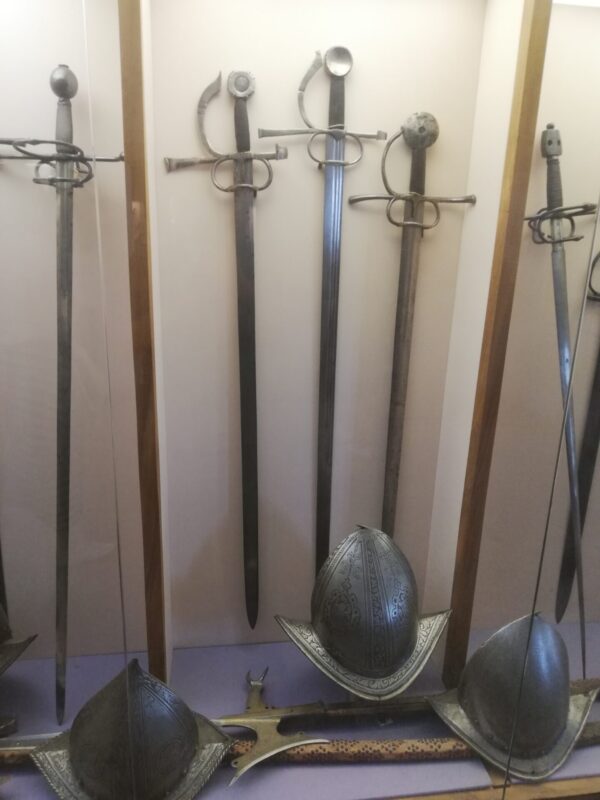
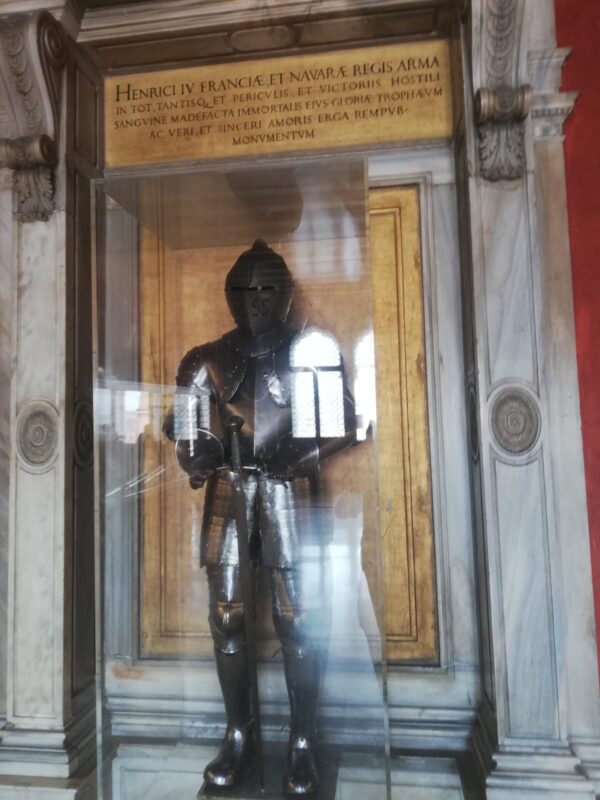
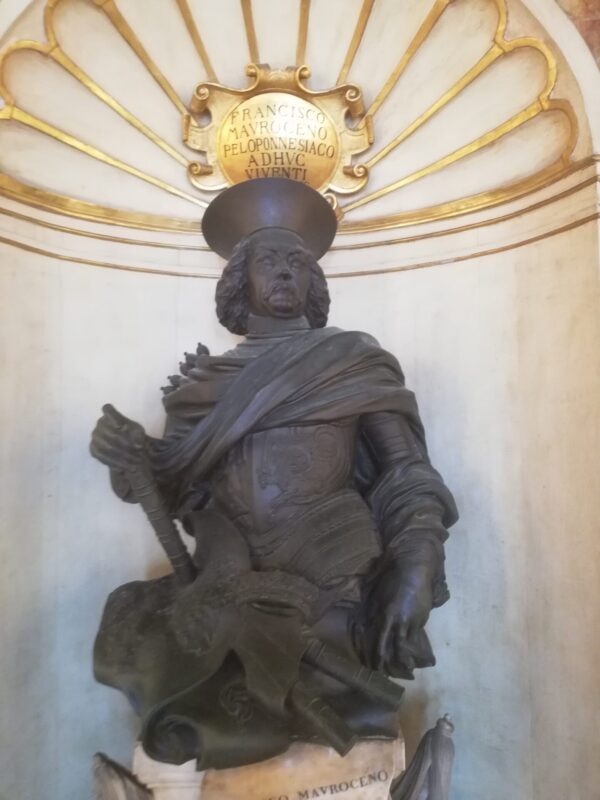

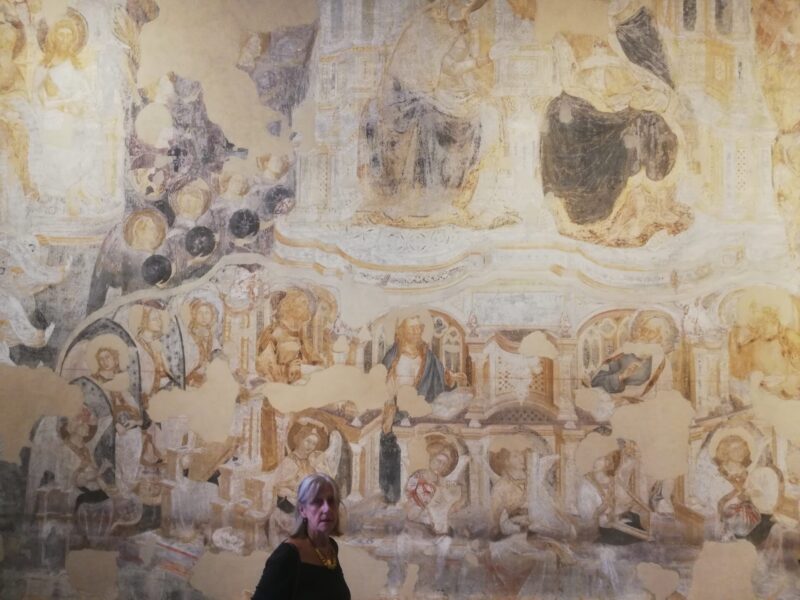


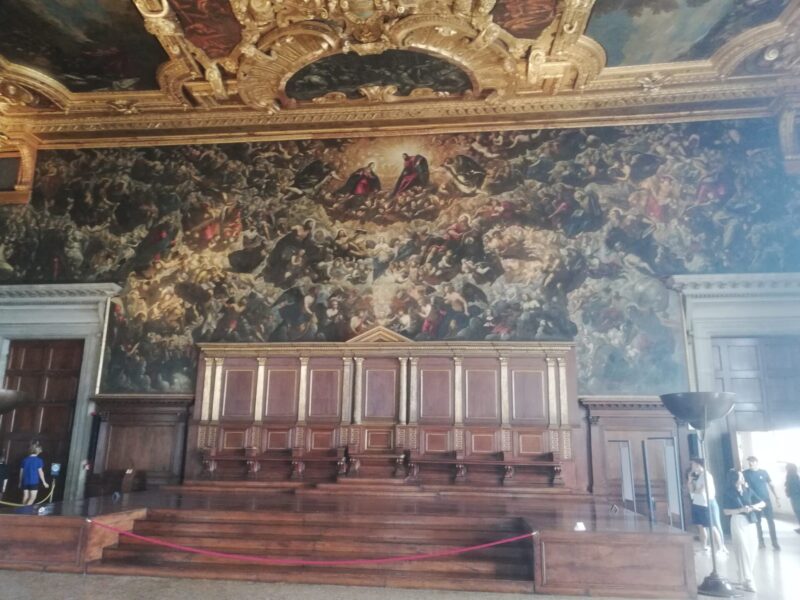
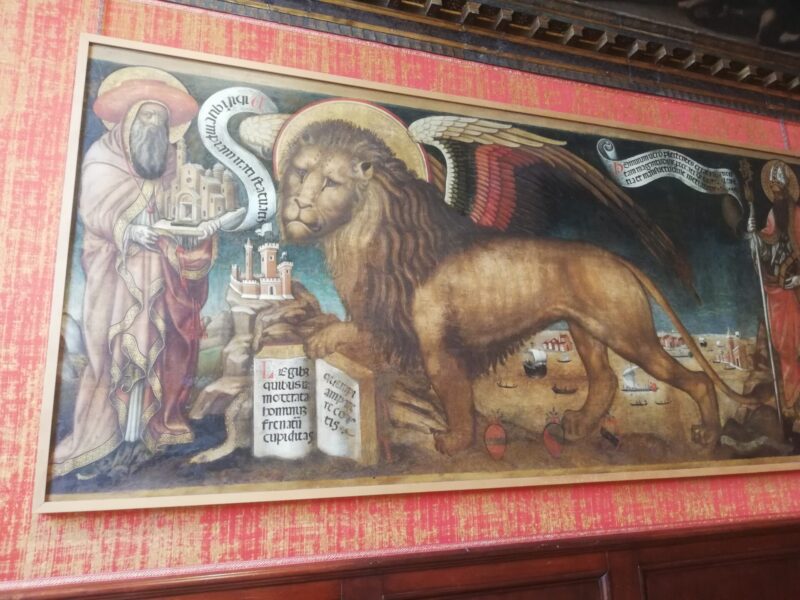
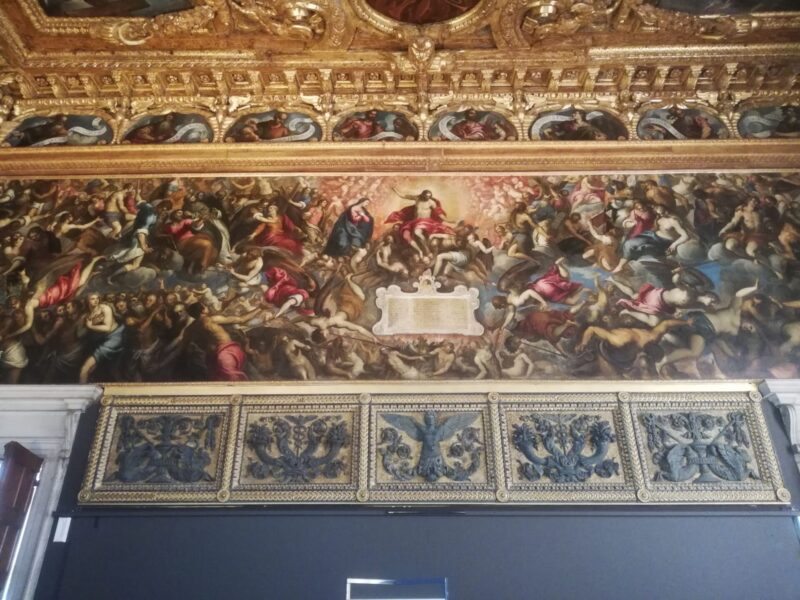
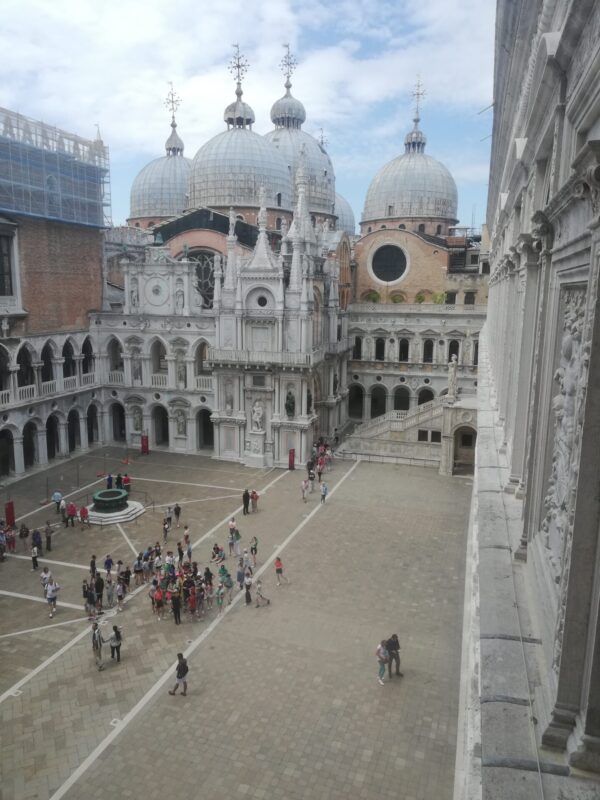
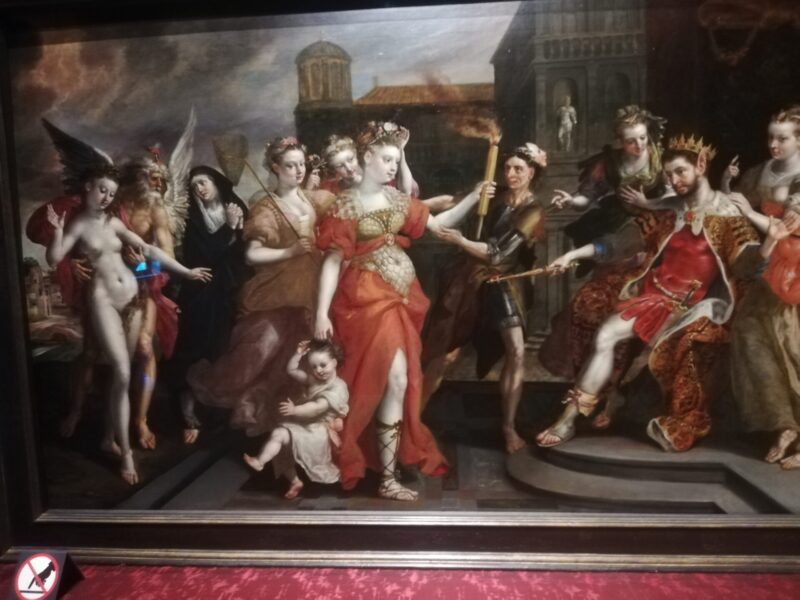

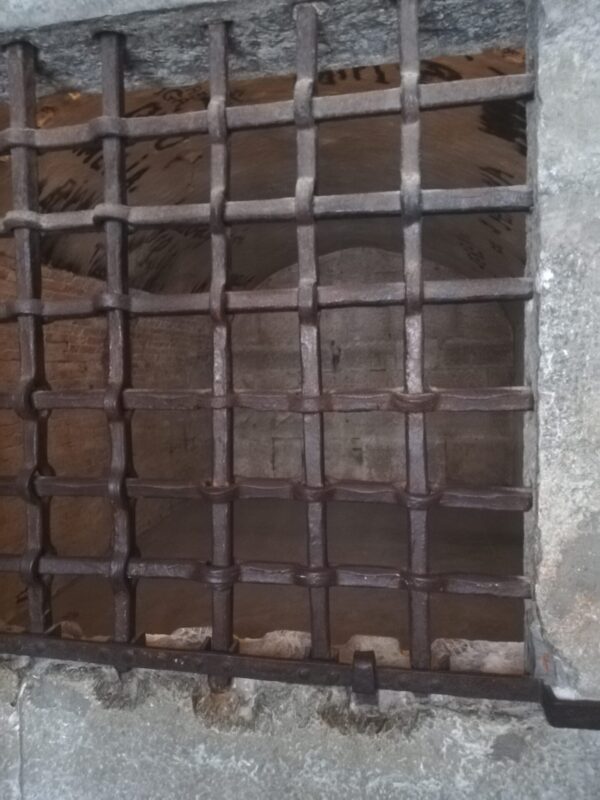
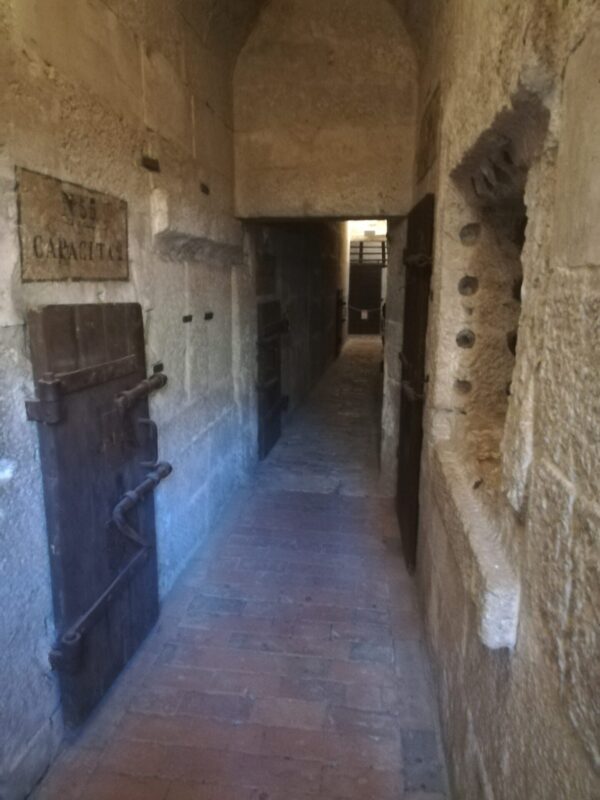
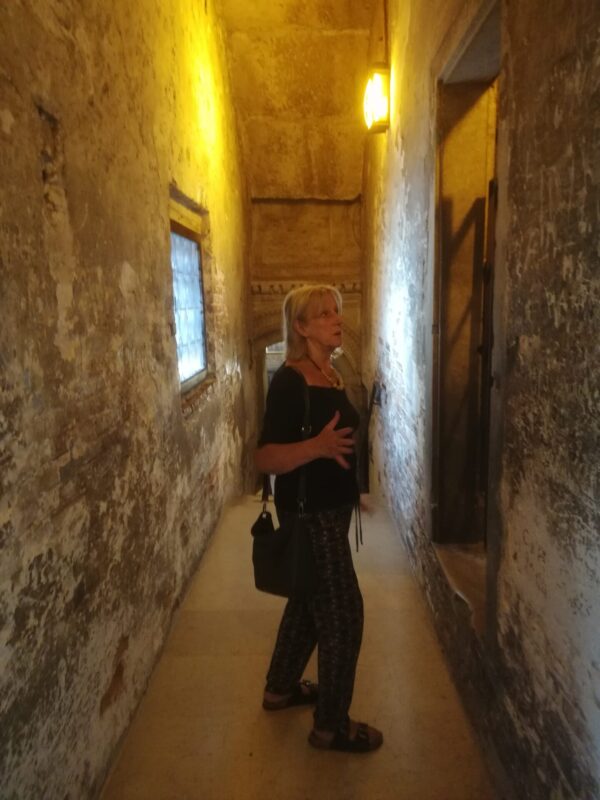
The latest prisoner being lead across the Bridge of Sighs
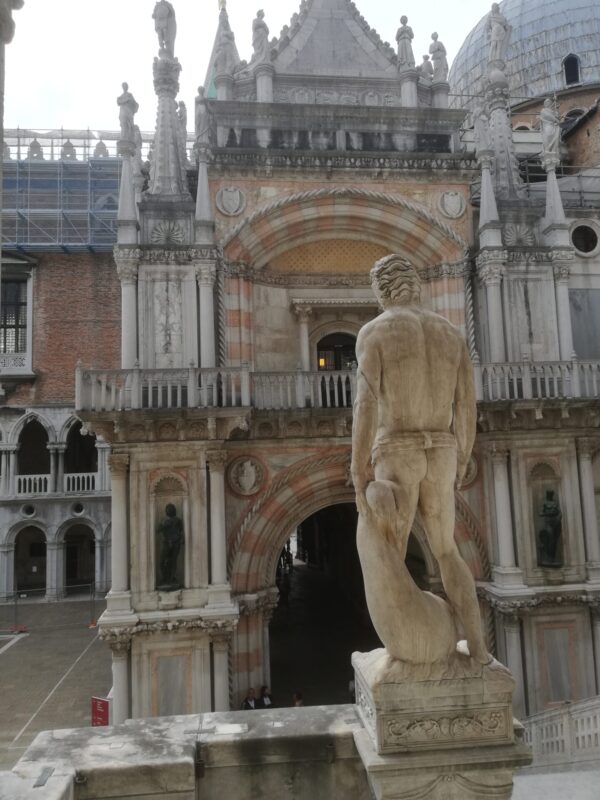
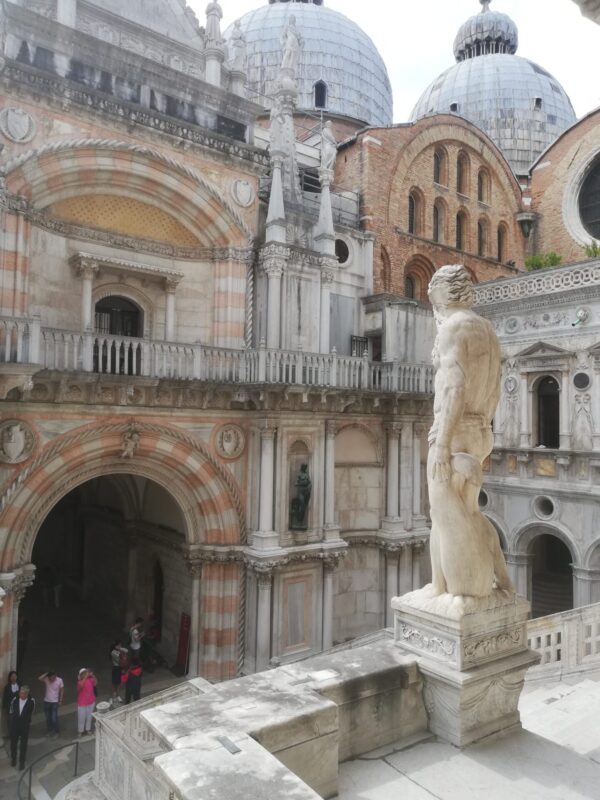
Day 106 (14th June) Venice to Klosters.
Crossing the Alps is a mostly boring place for travellers. You have to pay a lot of money to pass through long tunnels. The Stelvio Pass is one of the few passes where the road goes over the top, and a website which lists the world’s most dangerous roads puts it at No.10. And with 75 really tight hairpins with near-vertical drops of approaching a mile, it is scary. The real danger is where you have to drive onto the wrong side of the road to get round the hairpin and meet something coming down the pass. We passed a Ferrari which had bashed the barrier and done about £500,000 of damage (to the Ferrari, not the barrier) before a policemen told us that the top was closed. The pass has a height of 9,045 feet and and the road was built by the Austrians in 1820. Stirling Moss went off the road here in a vintage car event in 1990.
I was contemplating reversing all the way down when he said that it re-opens at 6 pm. So we got to the top and discovered that the annual bicycle race up the pass had just finished. Hundreds of cycling people in their salopets were munching on hot dogs and there were hundreds of motor bikes, the Stelvio being a bikers nirvana. While we were queueing, a blue sports car passed us and an old git began to dismantle the barriers before 1,000 angry Italians came and remonstrated. I’ve never seen so many arms gesticulating. The old git was British. Naturally. The winner got a bottle of champagne (which he shook vigorously like Michael Shumacher) and the cork shot out and bounced past our van at least 100 metres away. He also got a bunch of flowers and, presumably, a fat cheque. The guy who came second got champagne, flowers and a teddy bear.
We then had a good laugh watching the poor sod who came last getting a 45-minute bollocking from his coach. The road down the pass was covered in painted slogans such as “Go Allesio Go”. Perhaps the lad who came last was Allesio and his coach had spent the past three years painting “Go Allesio Go” thousands of times on the road. No wonder he was angry.
Crossing the border from Italy to Switzerland, we had to pay 15 euros to drive through the Mautstelle Munt La Schera tunnel, a narrow, very dark and very claustrophobic tunnel. We stopped for a delicious meal at Zernez and hearing customers speaking German and assuming that this couldn’t have been the German-speaking part of Switzerland, I presumed we were in Austria. Jennifer asked the waitress where we were and was told with a scathing/sorrowful look, that we were in Switzerland. This was confirmed as we passed through Davos where the Great And The Good meet once a year to discuss how to shit on the rest of us (it hit a new low this year when Tony Blair turned up). We continued to Klosters where the van started making a weird screeching sound, and I blamed the road until I got out and discovered a tyre was totally wrecked. I spent a sleepless night worrying about how to change a tyre on a steep hill.
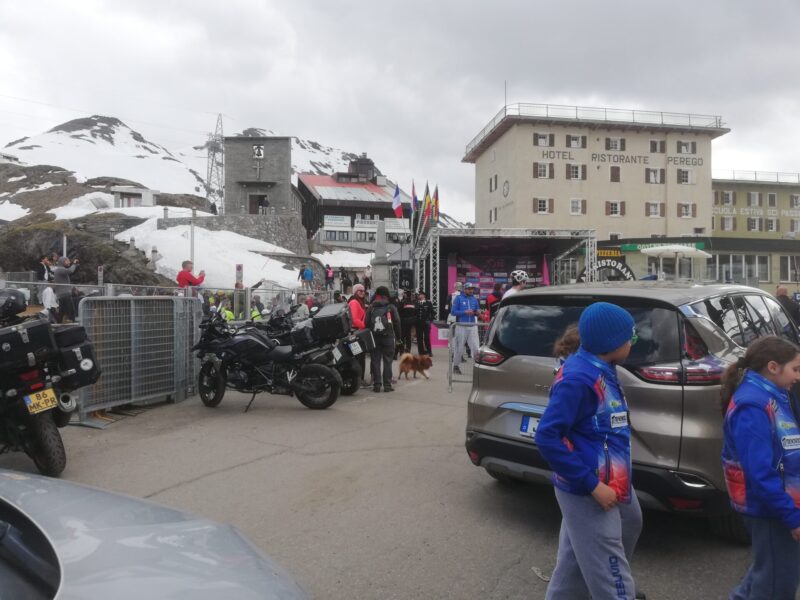
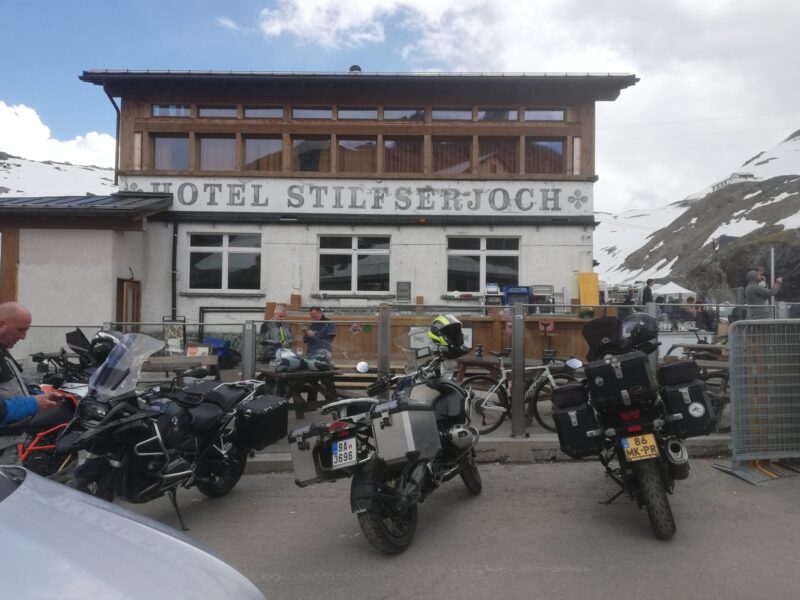
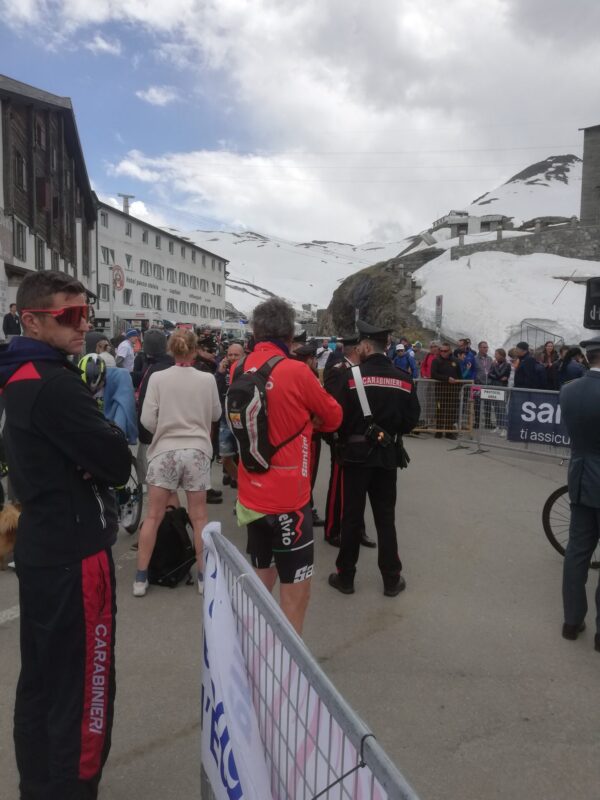


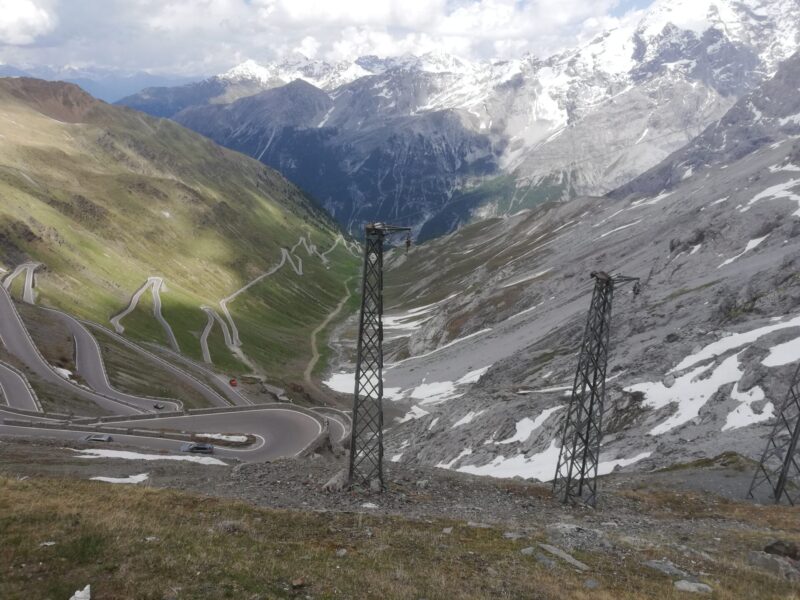
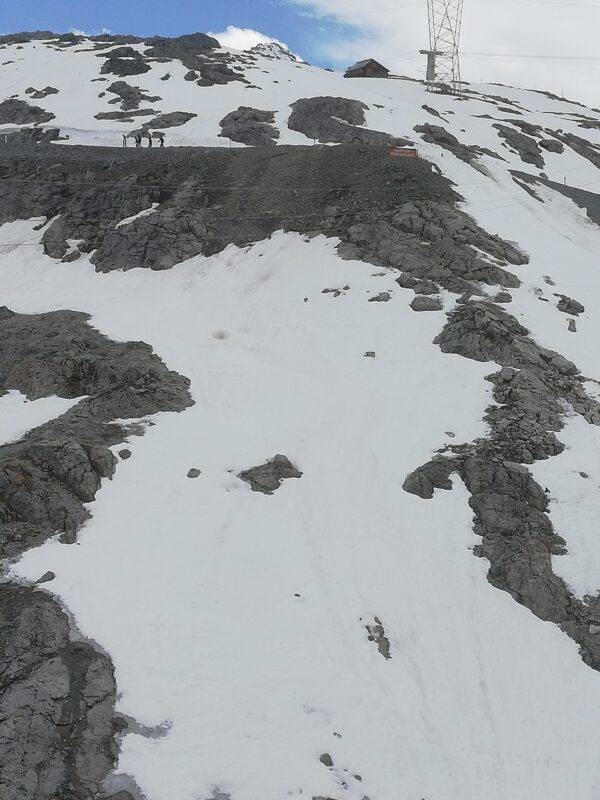
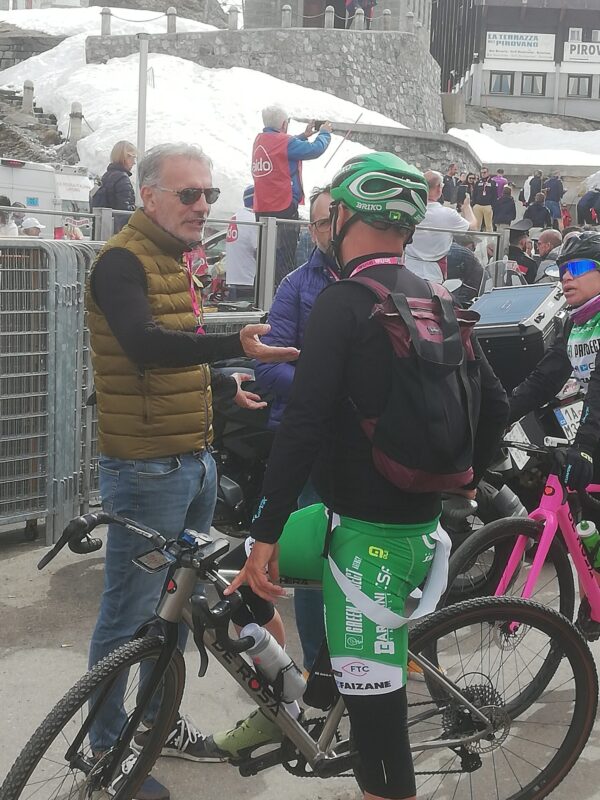
The bloke who came last
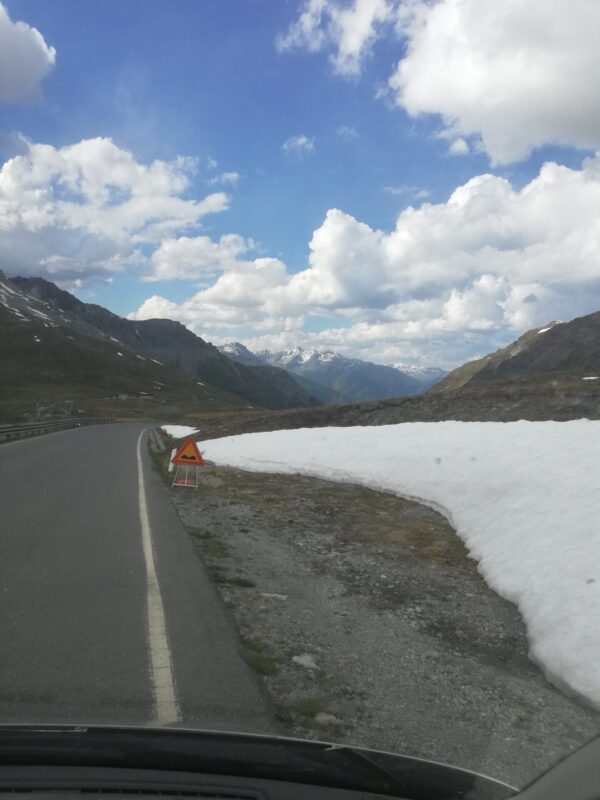
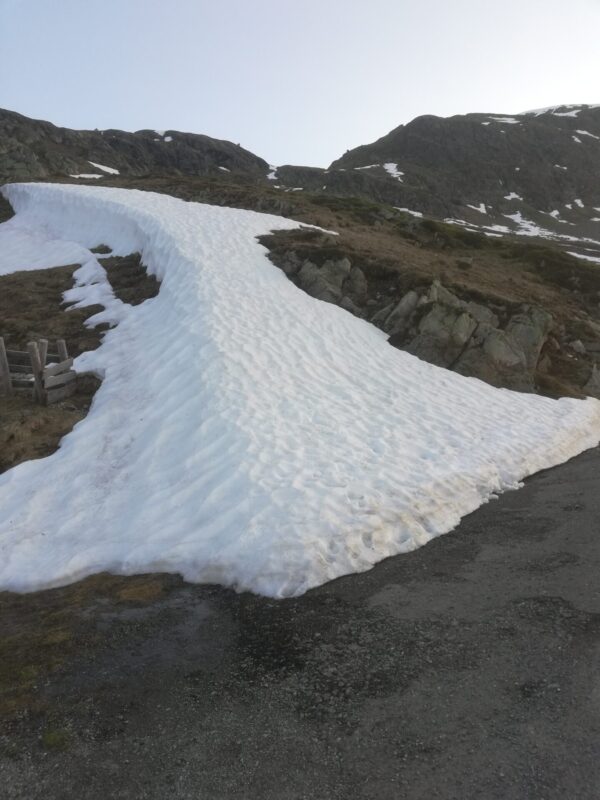
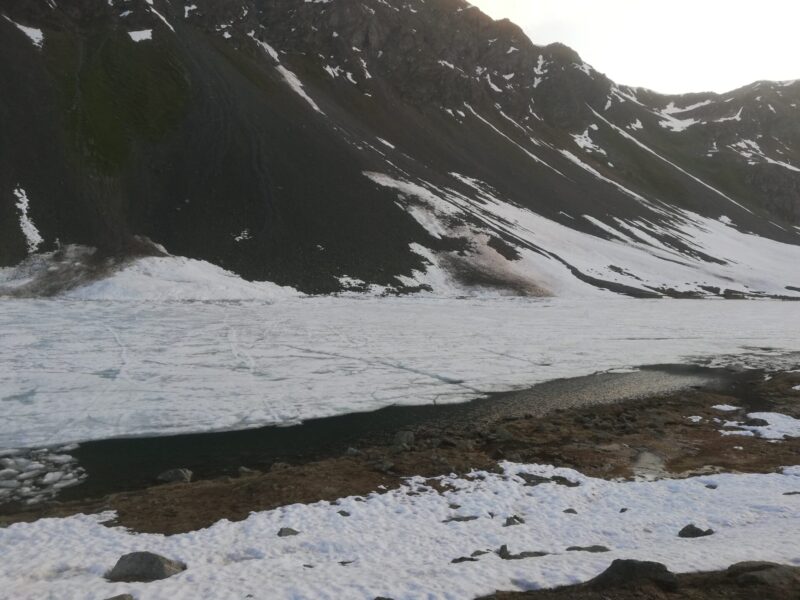
Day 107 (15th June) Klosters to Kaiserslautern
In the morning, Jennifer suggested that I walk the 2 miles down the hill to Klosters an get help from a garage. It was a nice walk into Klosters along a cool forest path through pine trees and beautiful flowers (including that named after Boris Johnson, the idleswine) with birds singing their little hearts out. The genial manager of the “Winter Sports” shop (Klosters is a ski resort and is virtually closed down in June) directed me to a garage where a young man took me in his jeep back to the van and put the spare on for £100. VW don’t make life easy; I have changed a tyre before and it is pretty difficult. We then drove without incident to Liechtenstein which was one of the few remaining countries in Europe we haven’t been to. The best, and the only, attraction was the castle so we drove up a steep winding hill (a sort of mini-Stelvio) and went to look at the castle. You can’t go inside because it is lived in by Prince Somebody of Liechtenstein, and you can’t see the outside because it is covered in scaffolding. Bit of a washout, although the surrounding scenery is delightful..

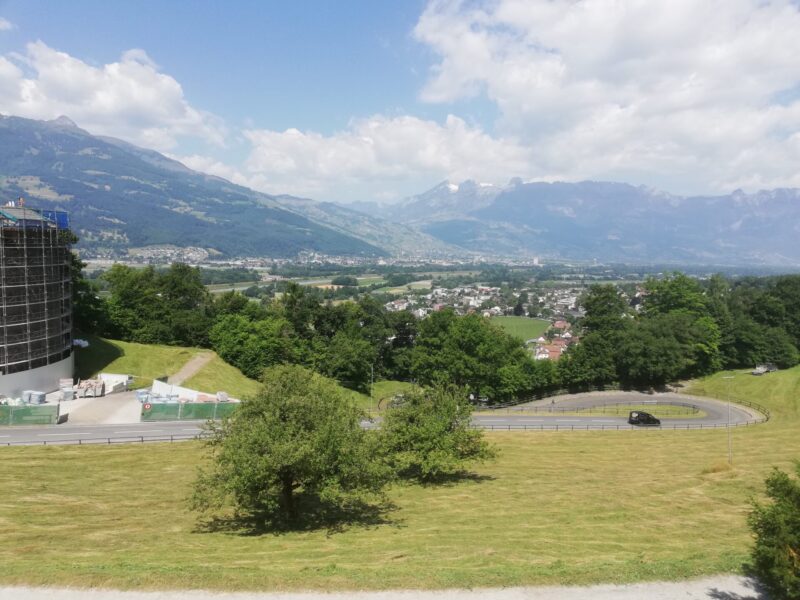
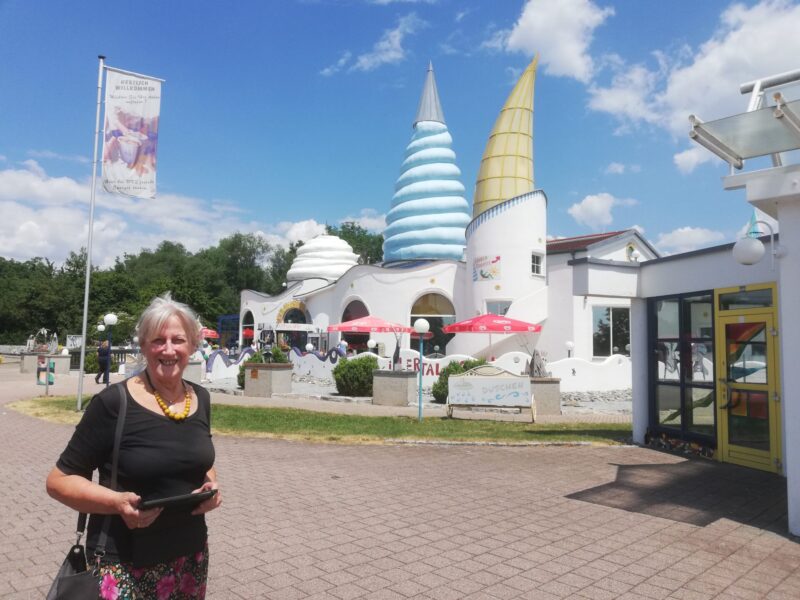
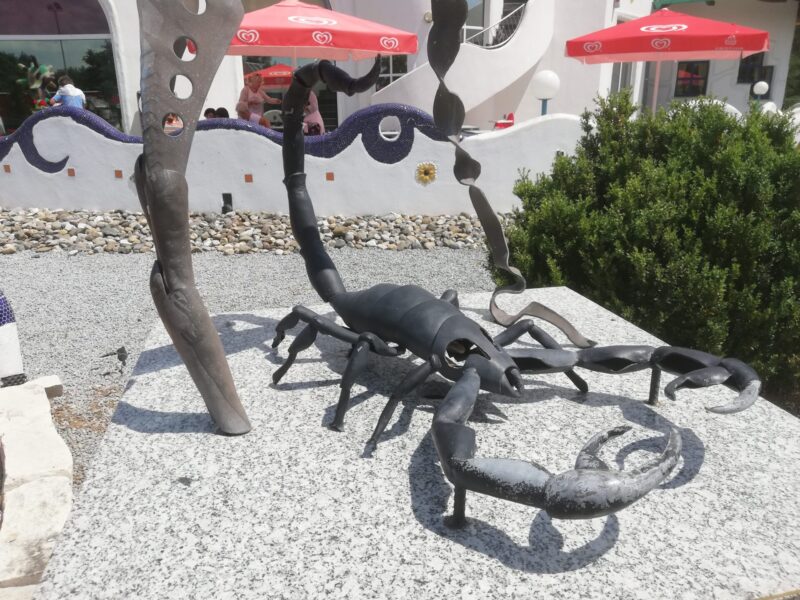
Day 108 (16th June) Kaiserslautern to Dunkirk
We slept in a passing place with lots of room, a few lorries and cars and a well-tridden path into the bushes to relieve oneself. We made excellent progress towards Dunkirk along some fast motorways until the satnav, in an act of cruel perversity, decided to send us through Brussels. It took two hours, half of which was spent stuck in some long and claustrophobic tunnels.
